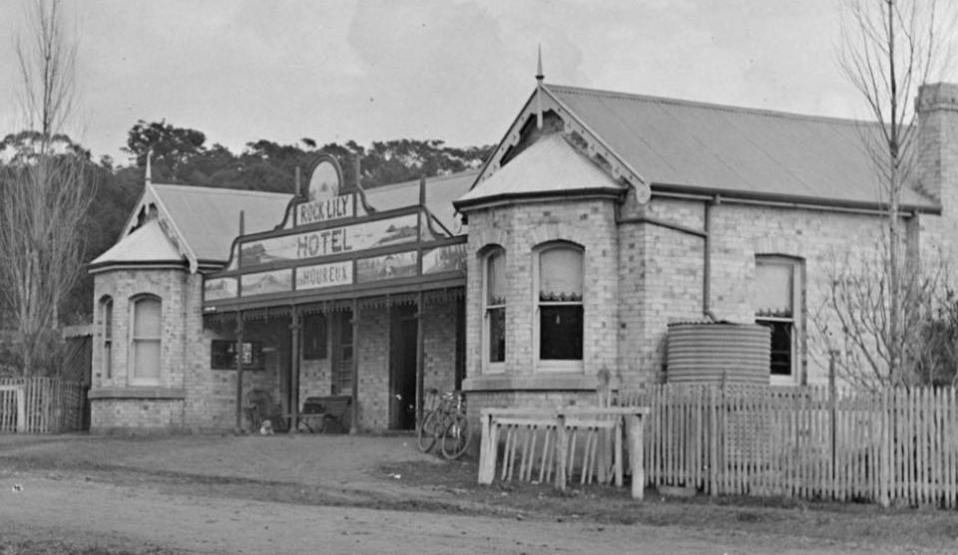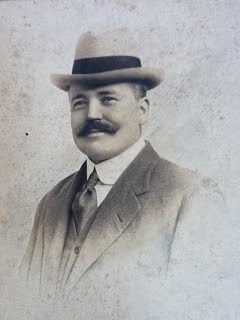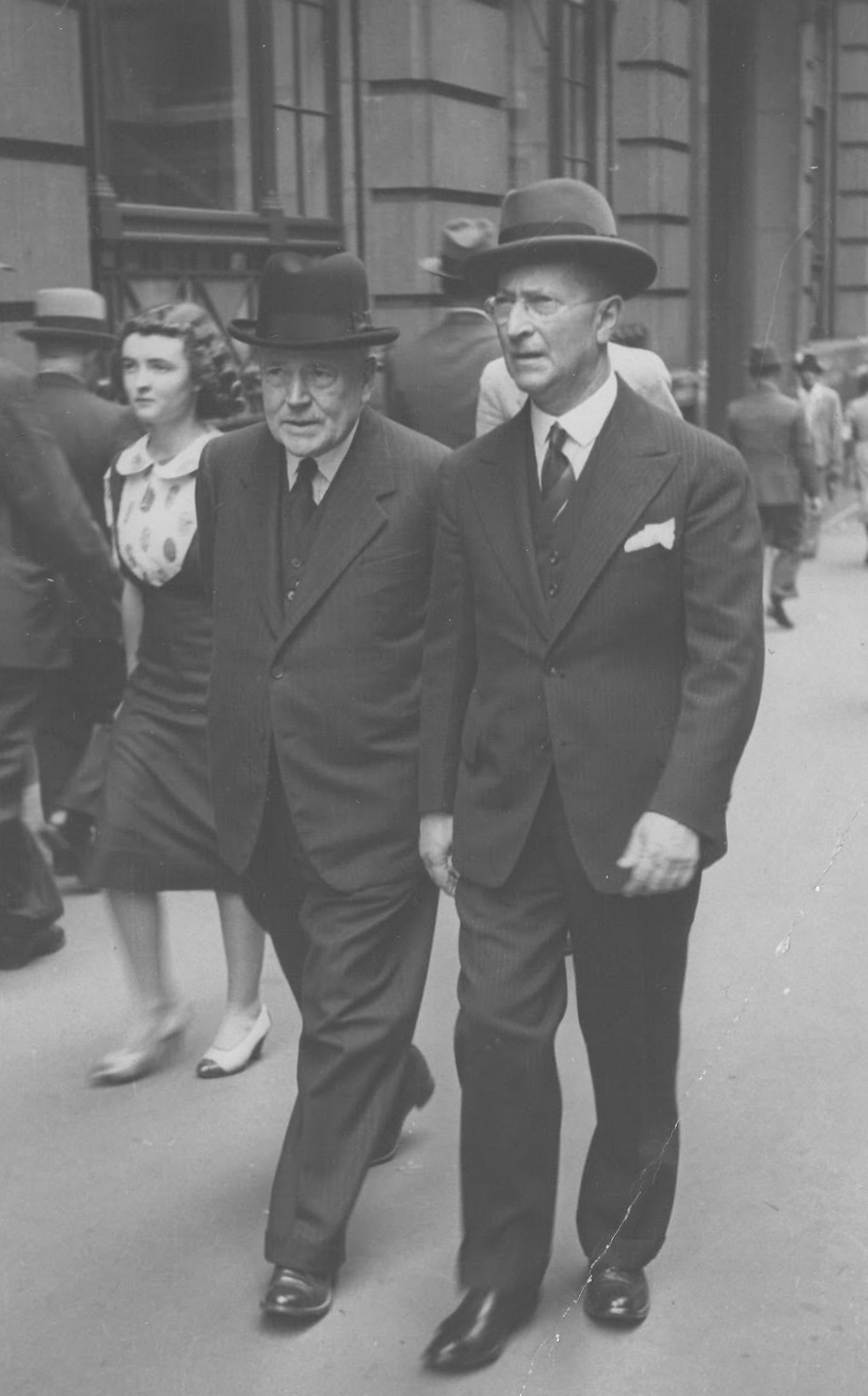July 21 - 27, 2019: Issue 413
Pittwater Roads II: Where The Streets Have Your Name - Mona Vale, Bongin Bongin, Turimetta And Rock Lily

Above and Below: Panorama of Mona Vale, New South Wales, [picture] / EB Studios National Library of Australia PIC P865/125 circa between 1917 and 1946] and sections from made larger to show detail.
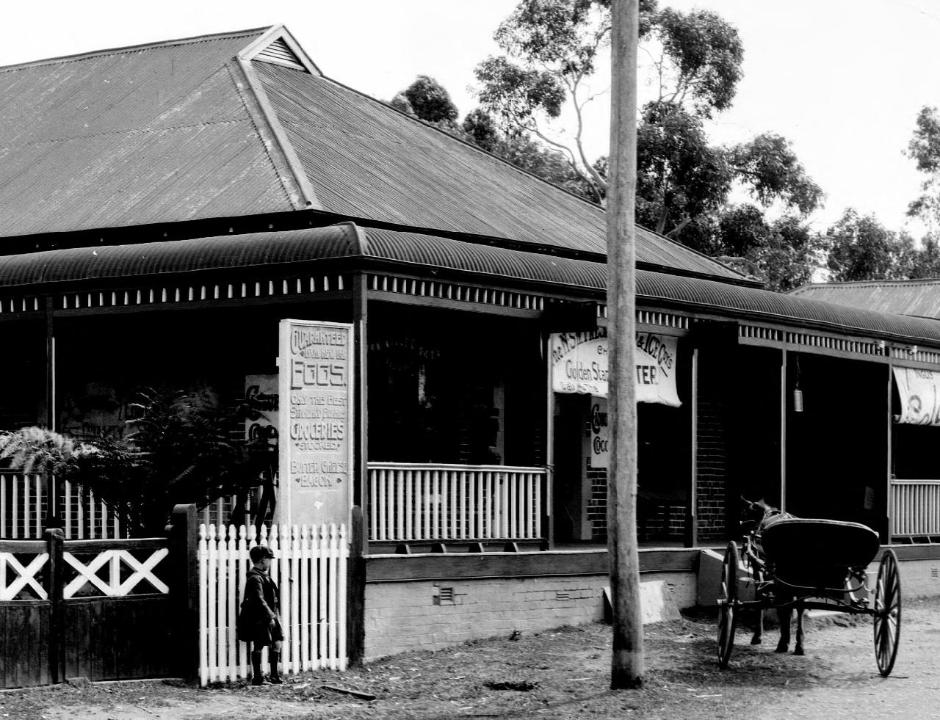
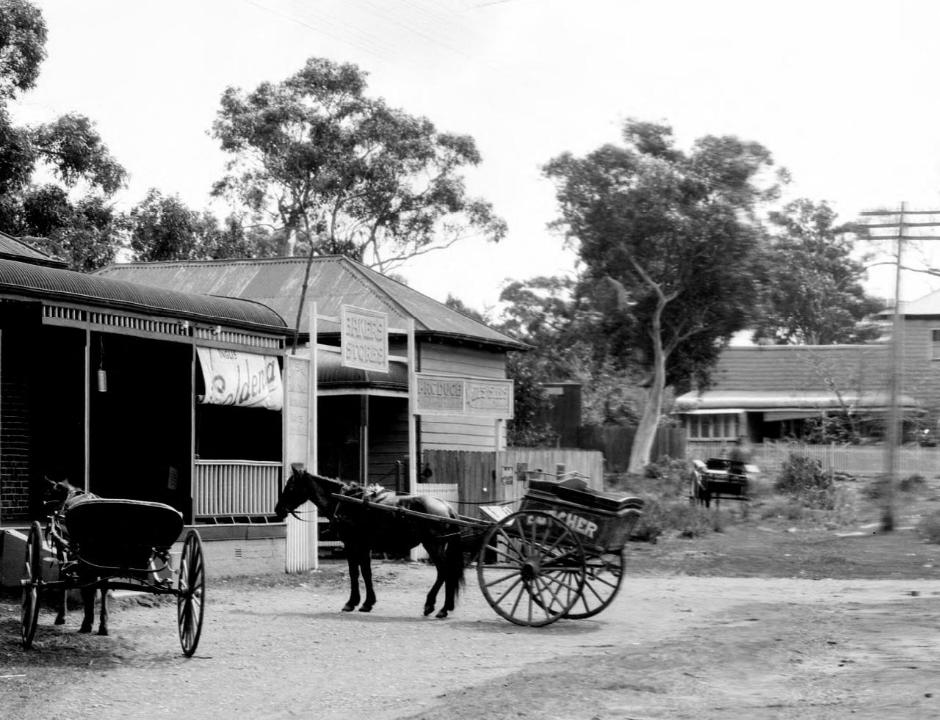
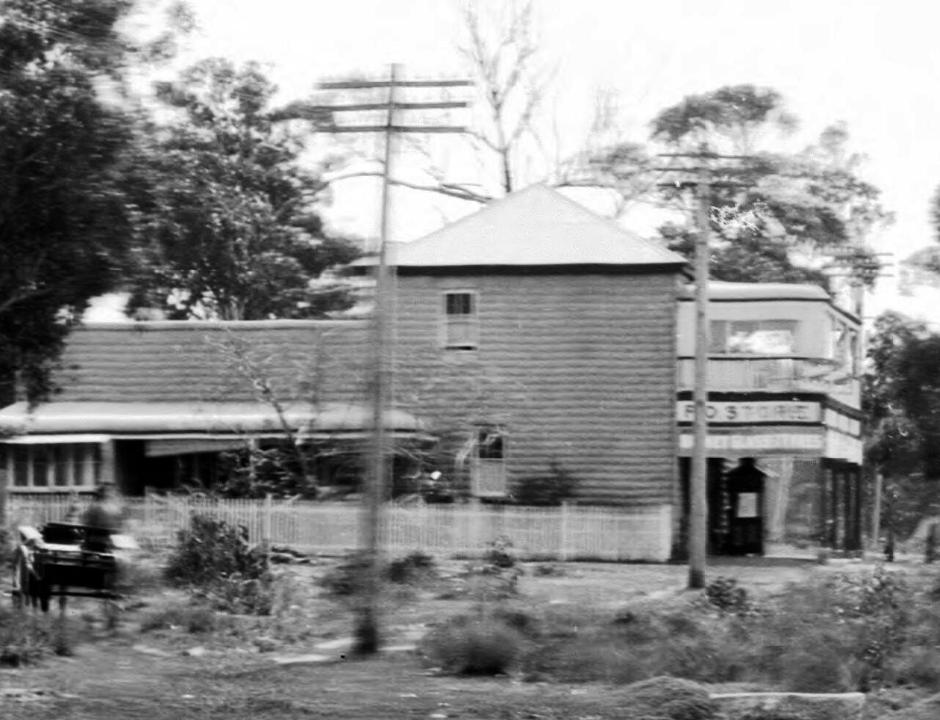
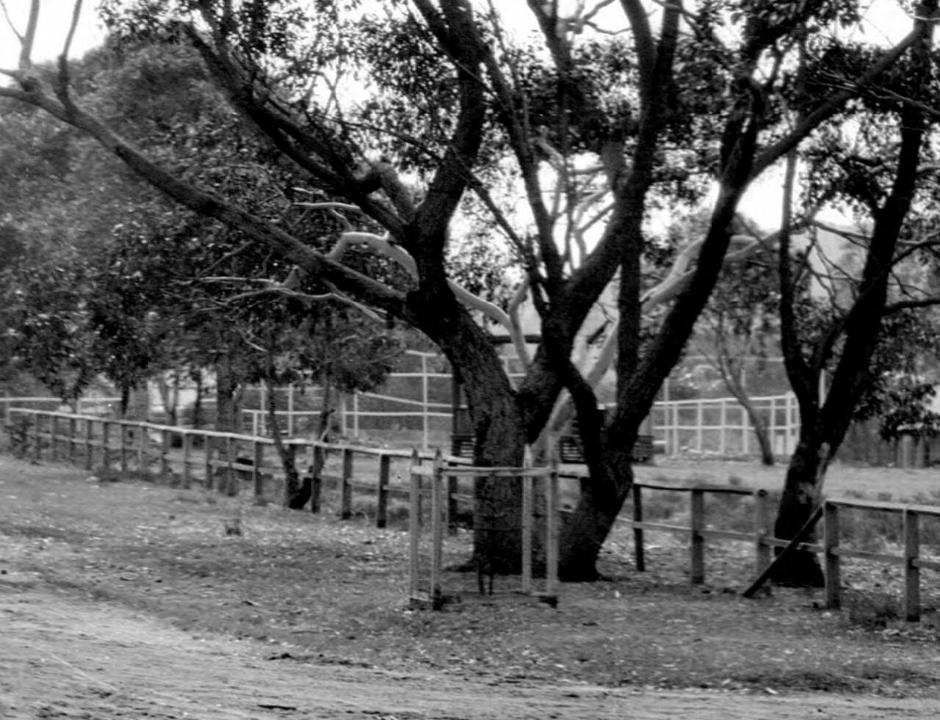
Above: Section showing Tennis courts - Below: Section showing Cricket Pitch
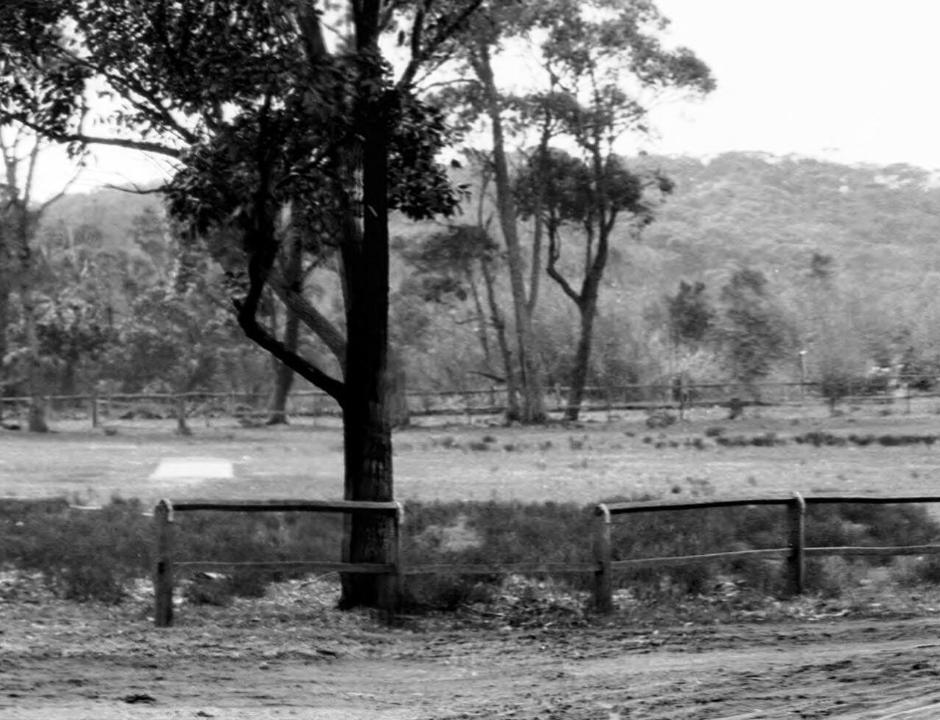
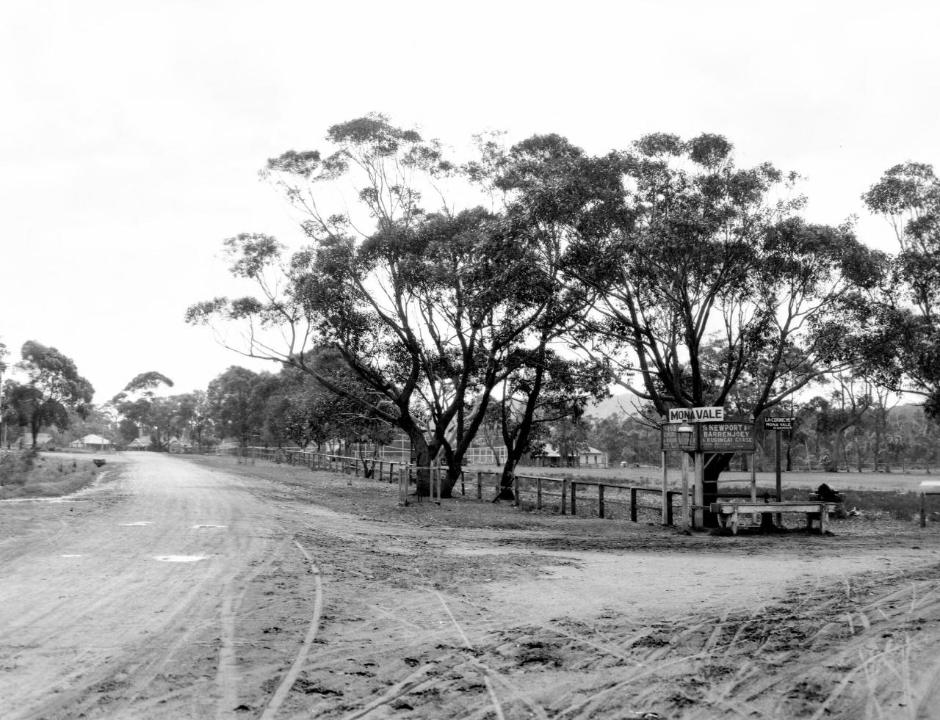
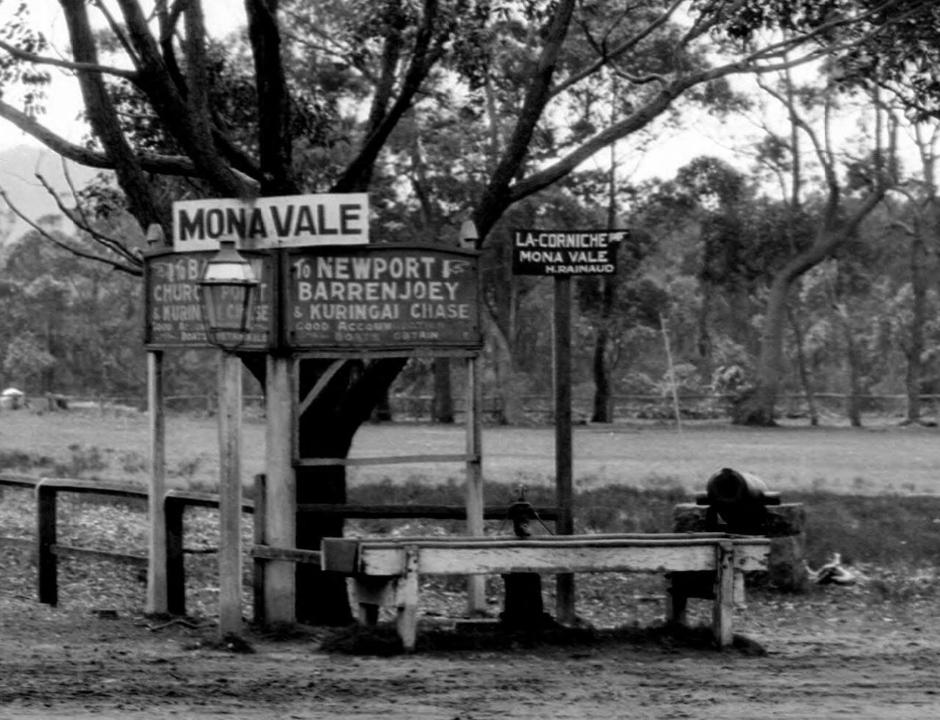
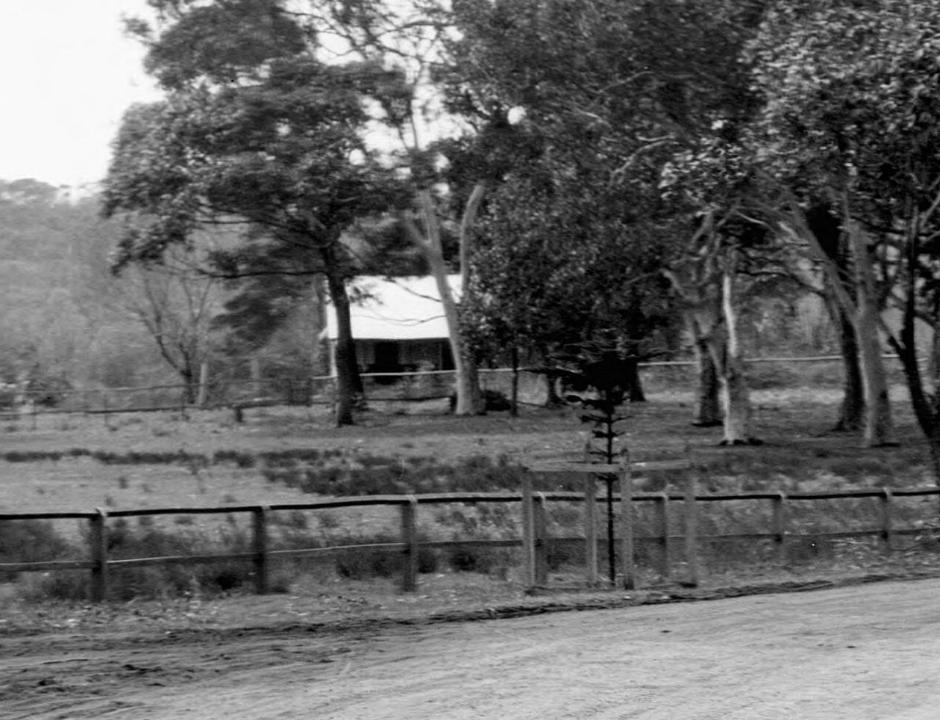
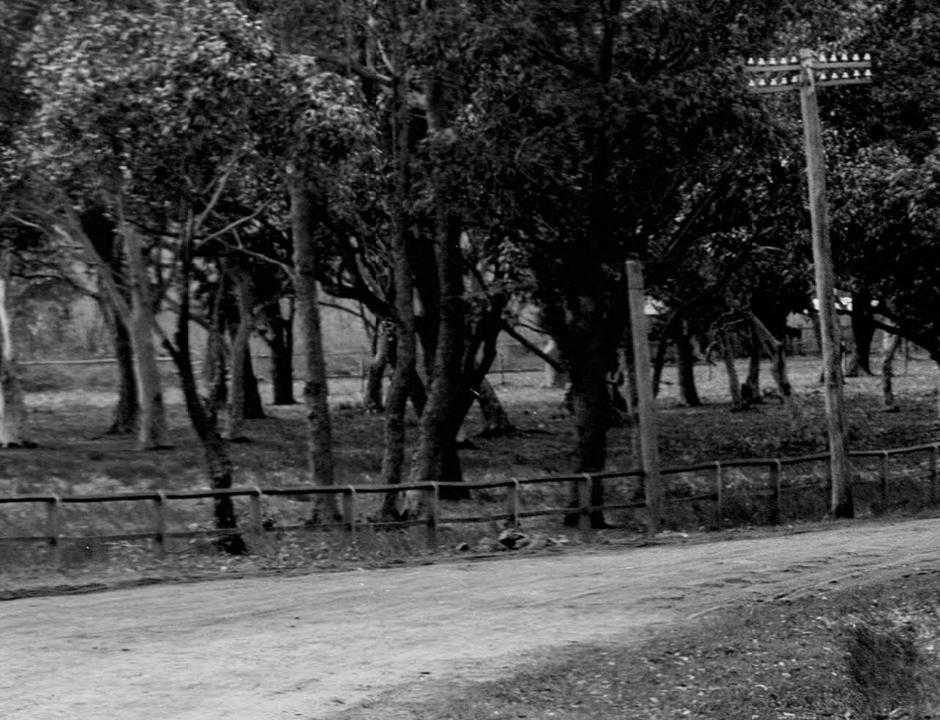
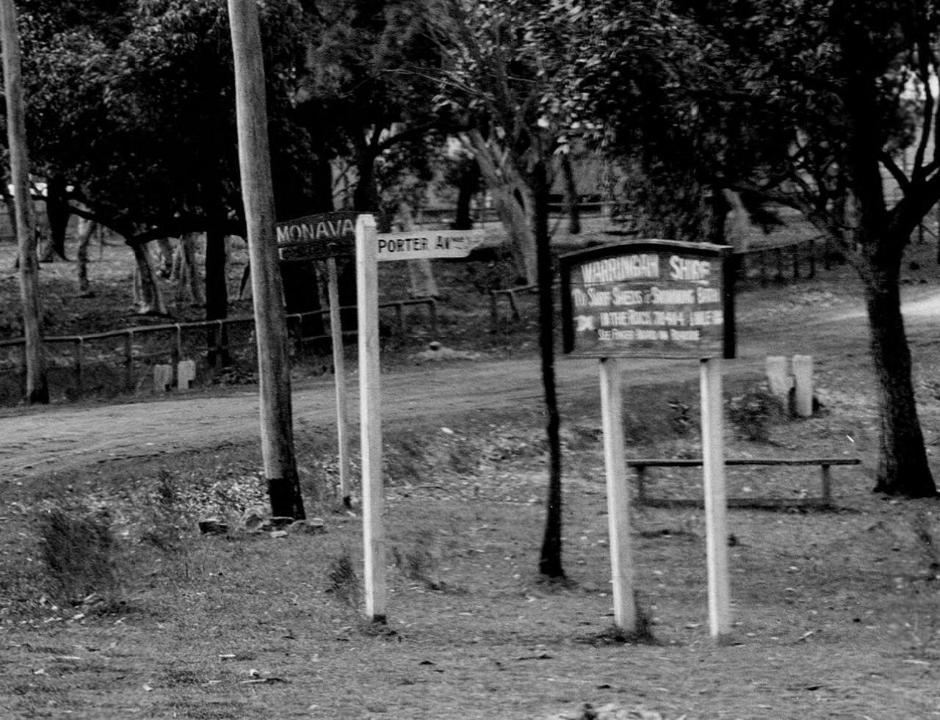
Although the Lane Cove/Mona Vale track then road access being used from earliest European settler days as a means through which to harvest the stately forests that once predominated, Mona Vale Road itself was one of the later roads To Pittwater to gain Main Road status and it is only this year, 2019, that upgrades that have been spoken about for 30 years, have commenced.
Smooth, fast and easy access to Mona Vale has been a discussion going on for a lot longer than over three decades and has, in at least one obvious case, caused what had started out as a grand and hopeful dream of an ideal village to crumble when the tram going to Narrabeen came too late and then not far enough.
At Mona Vale itself the track to Bayview branched to Cabbage Tree Road past an old farmhouse which stood for many years while the estuary hugging path of Bay View Road (now Pittwater Road) wound past Shaw's Creek, the old aboriginal name of which was Winnererremy and is now known as Winji Jimmi Reserve. Because of heavy mangrove growth nearby it was also known as 'The Maze'.
What we now call Mona Vale had a few names in the past - one being Turrimetta, sometimes spelled Taramatta. Turimetta Beach and Head is believed to be a local Aboriginal clan or family name. This name persists as the name for the 'Village of Turimetta', at the core of Mona Vale, well into the 1960's.
The area was also known to be called 'Rocklily' or Rock Lily - some residents had 'Rock Lily' as the birth place on their birth certificates, even into 1910's. The name 'Rock Lily' referred to the large amounts of the same flower that would come in season to that area and later was the name given to the Rock Lily Hotel.
The beach itself was also known as 'Bongin Bongin' - some stating this referred to shells on the sand and meant 'lots of shells', others referring to the aboriginal name as stemming from the original inhabitants experience of the gun-toting settlers, as related in this article:
THE CONTRIBUTOR
A GLORIOUS OUTLOOK NEAR SYDNEY.
BY A QUEENSLANDER.
I have visited all the environs of Sydney, stood on all the principal points of vantage, and viewed a multitude of beautiful scenes from commanding hills. Therefore, my opinion as an absolutely impartial observer on what appears to me as the grandest views from any point within ten miles of Sydney, may be of some interest.
The spot to be indicated appears to have been comparatively unknown and neglected by the tourist, the picnicker, and the citizen in search of a perfect suburban site. Allured by the tram or ferry facilities, or fascinated by wily auctioneers' advertisements, Sydney people have been artfully led away to all points of the compass, sometimes to create new suburbs where the auctioneers' 'Pactolian streams rippling over silver sands' proved to be inglorious muddy ditches meandering slowly to the swamps; and the sun-clad heights, that on every new morn 'grew radiant with the glory at the dawn,' became in reality mere masses of barren sandstone, suitable only for a Troglodyte or the crazed hunters who desired to 'catch the wild goat by the beard and hurl their lances' — or a brickbat — in the sun.
We shall go to Manly by the steamer, and land on that historic beach named by Governor Philip. About four miles beyond Manly, on the road to Newport and Pittwater, we arrive at a locality remarkable historically and geographically. A sandstone tableland, covered by heaths and honeysuckle and astonishing profusion of wild flowers, slopes gently upward to a commanding eminence 489ft above sea level. On the crest of that hill is the Manly Trignometrical Station, chosen for its altitude and the vast expanse of country which it overlooks.
From this hill, and the sloping tableland can be seen the most magnificent of all the scenes around Sydney. This is due entirely to the unique geographical position of that plateau which stands happily on the spot that commands the largest area of the splendid panorama of sea and land. The view includes far south to Bondi, Coogee, and Botany. At Bondi and Coogee the surf lies apparently motionless, like great snow wreaths, at the foot of the dark cliffs. Nearer to us, the waves break in white foam on the grim sandstone crags of the 'Gap' and South Head. There is seen the harbour in and about South Head and Watson's Bay; the noble entrance; the scrub-covered slopes on North Head, and the township of Manly, with its white and red tiled houses, nestling calmly in the bosom of a wave washed peninsula. The long white beach ends where Curl Curl headland vibrates to the thunder of the surge, and behind and under the shelter of that headland sleeps, the Curl Curl lagoon, shooting its long arm far up among heath-covered I swamps and green gardens. Then the second beautiful bay ending in the rocks of Deewhy Point which curves into that third beach, behind which slumber the blue Deewhy and Manly lagoons, the old favoured home of the swans, 'Deewhy' and 'Marroo.' Deewhy point was known to the blacks as 'Arragong,' the name of the hardwood shield.
Beautiful
Beautiful beyond description are the ever changing marine colours on Deewhy beach, seen from the crest of the hill. The long white sand bars guard the lagoons from the over ocean, as a mother's bare arm stretched forth to save her child. The white foam on the beach merges into bright green, growing darker as it fades into light blue, dissolving into dark blue, finally lost in the measureless azure of the vast ocean stretching away to the horizon. Next is the majestic far-flung headland of Long Point, the 'Carrowang,' or 'long Nulla' of the blacks, with its projecting reef of hardstone rocks swept by the dangerous 'long rollers' marked on the old charts, the reef on which the 'Collaroy' was wrecked. Beyond 'Carrowang' sweeps the magnificent Collaroy white beach to a headland known to the blacks as 'Warrigalba,' a place frequented by 'warrigals,' the name of the dingo.
Beyond that point is a small beach ending in Narrabeen Head, the 'Guarrabeen' of the blacks, the name of the honeysuckle. Beyond these are two more romantic headlands, and then the sheer precipice of Bungy Head with its grey, white, and yellow sandstone, at the foot of which lie confused enormous boulders, torn down by the wild surf that has assailed the rugged rock fortress since a dark unrecorded morning when man was not.
This wild foreland received its present name in 1815 from the blacks who called it m 'Bung-gie Bung-gie' their name for a musket and the noise of the report, because ten of their people were shot there by a party of soldiers sent out to bring in a convict man and woman, Ben Squires and Jane Dalton, who had lived at peace with the blacks for five years.
Behind 'Bung-gie Bung-gie' rises 'Bushrangers Hill,' the 'Bannaweera' of the blacks, from 'banna' rain and 'weera' bad, literally much rain, or a bad place for rain. This is the site of another trignometrical station, the height of which is 221 feet. Beyond 'Bung-gie' is Bulgolo Head, and also the bays and headlands ending in the lofty promontory of Barrenjoey, and beyond that the dark blue outline of the Three Capes. Looking still further, we see the hills of the Barrenjoey Peninsula, all the hills of Kuringai Chase, the blue and beautiful harbour of Pittwater, all the hills in which that harbour is embosomed, all the grey and green hills ribbed with grey and white standstone stretching west, the blue Narrabeen Lake and the hills by which it is encircled— all these are spread before you in the north and west head eastern view from that remarkable hill only four miles from Manly.
Look south once more, and you see the whole city of Sydney from the South Head to the heights of Balmain. And far away in the background, out on the horizon, rises that once dark, mysterious range that barred the white man's pathway to the interior, where 95 years ago the vast solitude was first trodden by Wentworth, Blaxland, and Lawson. That range seems to 'watch and wait always' and to-day It has the same colour that suggested the name by which it shall ever be known, the 'darkly, deeply, beautifully blue in which those mountains appear from the crest of the Manly hill. Now we come to the historic romance of that sandstone-covered Beacon Hill. In the year 1795 or 1796 a transport called the Britannia came out with convicts, among whom as a, young red-headed Scot named Wilson, who escaped a month after he landed, and finally trusted himself among the blacks from Manly to Pittwater. A man with red hair was safe among any tribe of Australian wild blacks. Wilson lived for years with the blacks, who called him 'Boonbooi' and 'Moojellba,' from Moojell, red. When he came in and surrendered he was naked, and tatooed with the 'wirroong' and 'cong-arri' scars (the 'Moolgarra' of Moreton Bay). The Governor made use of Wilson's aboriginal knowledge of the country and the blacks, and sent him out with exploring parties. Wilson shot the first known specimen of the lyre bird (Menura superba) somewhere in the Illawarra district. Finally after many adventures he took a woman from the Pittwater tribe without her parents' consent, or even her own, trusting that his possession of a gun would save him. Her relatives followed, caught him in the embraces of his dark Diana, and killed him. The Manly hill was Wilson's favourite lookout. From there he could see signal fires made by convict confederates north to the Hawkesbury and Barrenjoey, and south to Sydney and Botany.
On the tableland coming down from the hill, on a level spot, is the site of a once favourite corroboree ground, and the Deewhy headland, the site of an ancient bora circle. Boonbooi's lookout was used for the same purpose by the blacks. At this spot during a corroboree he would meet such a well known old-time blacks as Colbee, Mooroobra, Booroowanyee, Yemerrawanni, Beemulwy, Boonggarie, and the famous Benillong, whom the Governor took to England, and brought back in H.M.S. Reliance. Think of the wild, weird scenes on that tableland a hundred years ago. The wild men dancing in the firelight and singing, while the wild women beat time on the stretched opossum rug or on the hollow thighs. Around them the dark rocks and the silent trees, with no other sound save that of the incessant moan and wail of the sea, where the waves died on the beach or dashed themselves on the rocks and over all heaven's azure roof, studded with silver stars. Today that old wild race is gone. The white man looks from Boonbooi's hill, where the eagle eye of the savage once scanned the far horizon for the smoke of the signal fires, and sees, not the bark canoes and the dark spearmen watching the track of the fish, but mighty steamers going and coming to and from all the nations of mankind, and the white-winged ships that in the words of Kendall, 'look like sheeted spectres fading down the distant sea.' He sees the children sport upon the shore, And hears the mighty waters rolling evermore. But who shall explain how that look-out of Boonbooi, or Moojellba, has wisely been made a reserve, and so escaped the speculator, the land agent, and the auctioneer, who could have exhausted all his eloquence and pictorial art, and still been far short of the reality? And how is it that there is not a tram from Manly to Newport, and hundreds of people settled along that beautiful coast? That is to a visitor a truly astounding conundrum. That surely must soon be the popular route to and from the Hawkesbury and Pittwater, the most attractive of all your tram routes and seaside resorts, and Sydney's most beautiful marine suburb.
On my first visit to Beacon Hill I was accompanied by W. B. Dalley, B. D. Morehead, and two English visitors. Dalley objected to the climb, and expressed a wish for the wings of Pegasus, or even those of Daedalus and Icarus. Once on the summit he expressed himself in raptures, declared it was a suitable site for the temple of an Australian Diana, and that no meaner beverage than nectar or nepenthe should be quaffed there. The nepenthe on that occasion was made in Scotland. Today a majestic palm stands on the shores of a serenely beautiful little bay between Bungan and Bulgolo points to mark the spot where Sydney's eloquent and classical son sought the companionship of the ocean and rest from the turmoil of the city. THE CONTRIBUTOR (1909, December 1).The Sydney Mail and New South Wales Advertiser (NSW : 1871 - 1912), p. 5. Retrieved from http://nla.gov.au/nla.news-article165737545
Others state the Ben Squires-Jane Dalton story is just local 'folklore' and never really occurred. Either way, another alternative from where 'Bongin Bongin' stemmed from.
The name 'Mona Vale' would appear decades later and was named for the farm run by David Foley:
EARLY MANLY.
TO THE EDITOR OF THE HERALD.
David Foley, a clerk, was convicted in County Cork, Ireland, in March 1817, and sentenced to transportation for life, for the offence of “felony, wounding”. He arrived in Sydney on 1 April 1818, when he was described as 5 feet 4½ inches tall, of dark ruddy complexion, with brown hair and hazel eyes. He was 19 years old.
He married Sarah Andrews, the step daughter of Martin Burke, on 14 February 1823 at St Mary’s Church, Sydney. Sarah had been born in the Colony, and was then aged about 20.
Martin Burke had the lease of the 700 acre farm at Bungin (now Mona Vale), which he sub-leased to David Foley on 4 April 1825. A covenant reserved to Burke cattle grazing rights, the use of one room in the dwelling house and half an acre of garden ground. David received his ticket of leave in 1826. [5.]
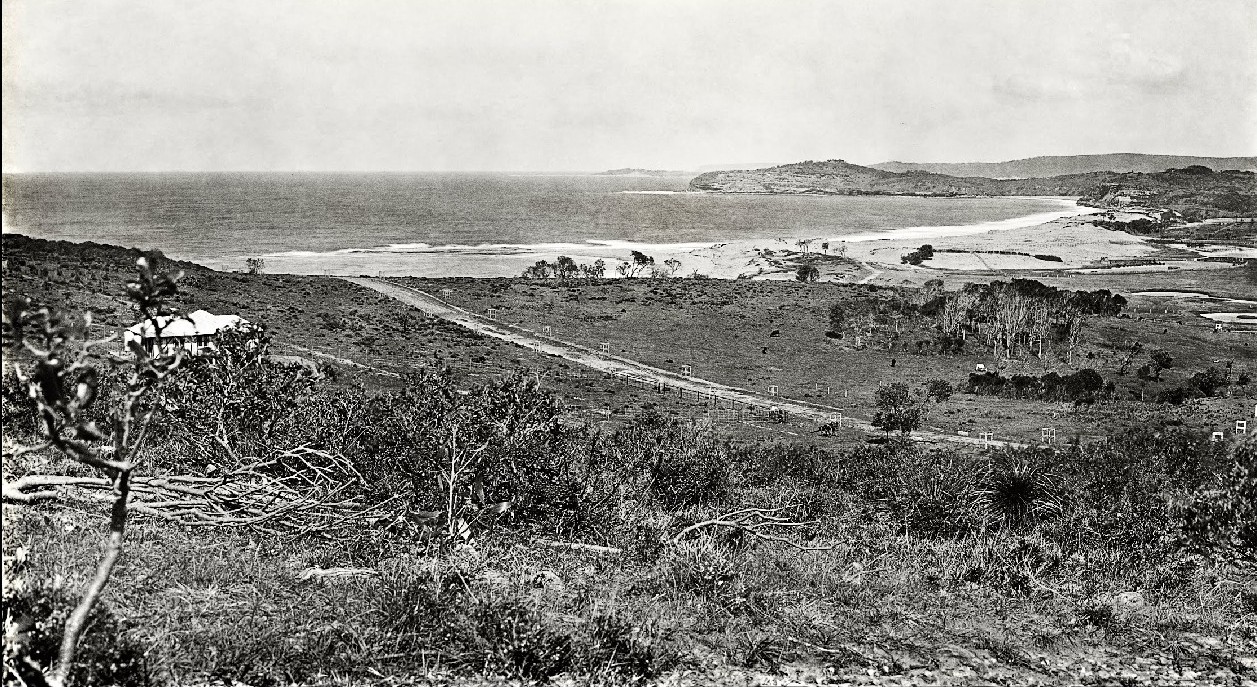
Land at Mona Vale circa 1913
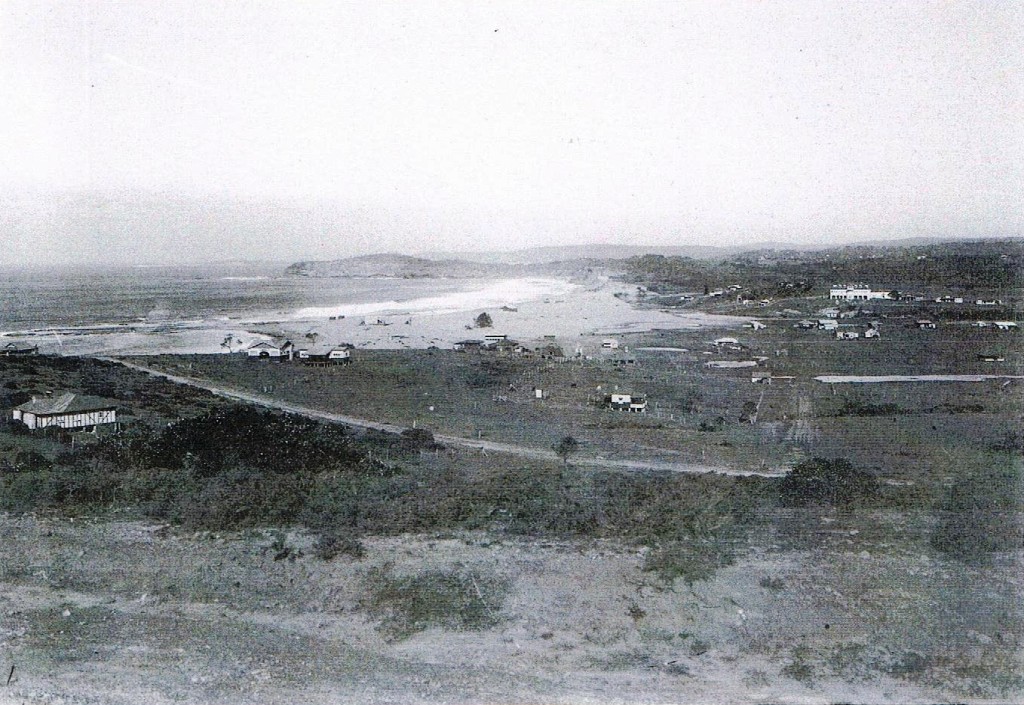
Land at Mona Vale, formerly David Foley's Bungin farm. Mona Vale views: Mona Vale, circa 1924 Call Number Government Printing Office 1 – 15675, courtesy of the State Library of NSW.
As can be seen above the shift from farmer's fields to suburbia has happened within a generation and further roads creating more and speedier access serve only to facilitate further development. The point of filling every square inch of available land has almost reached its capacity - going up or building in storeys will follow with the development of the road to Mona Vale.
Some of these shifts from dirt track and then sealed road, open paddock and smaller farms to holiday resort and then affordable suburban homes can be seen in some of the photos sourced to illustrate these shifts.
Mona Vale has been the locality of Light Horse training exercises as well as Colonial volunteer troops training exercises, followed by the same during thew WWI and WWII conflicts - and these along allow a glimpse into familiar landscapes as they once were, from the runs up the hill to Bungan to the clifftops edging Warriewood and what we today call Turimetta Beach.
Citizen Soldiers on Trek--"C" Company, 7th Infantry Regiment.
(See letterpress on page 24.)
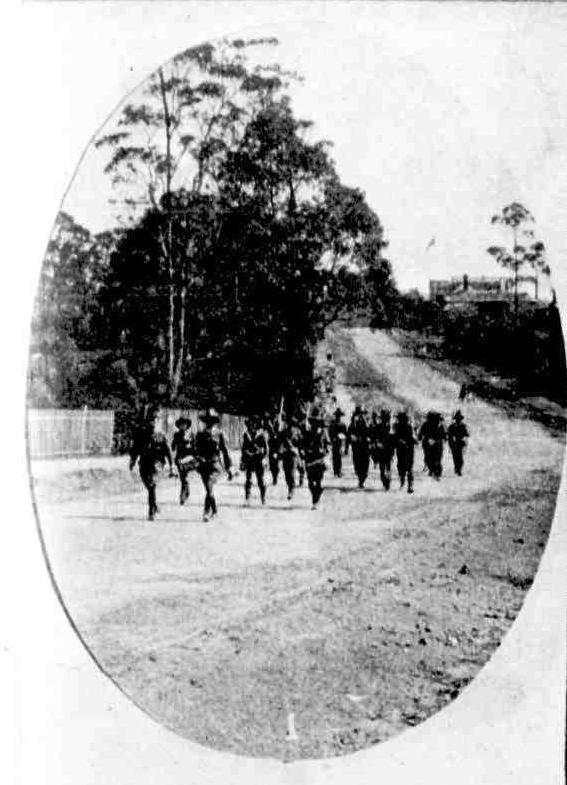
1- The Party Nearing Pymble
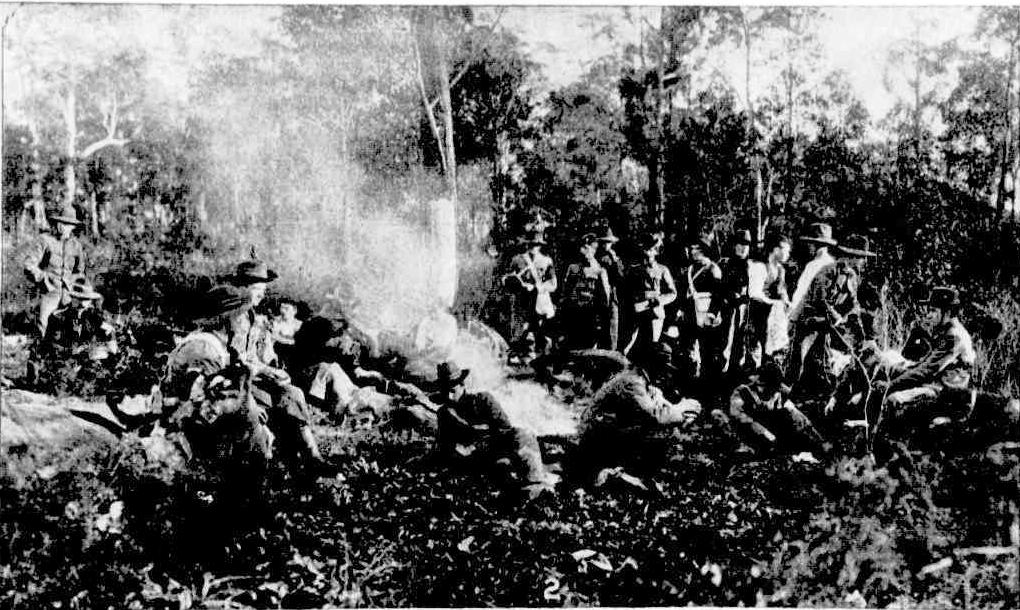
2.-The Men at Breakfast.
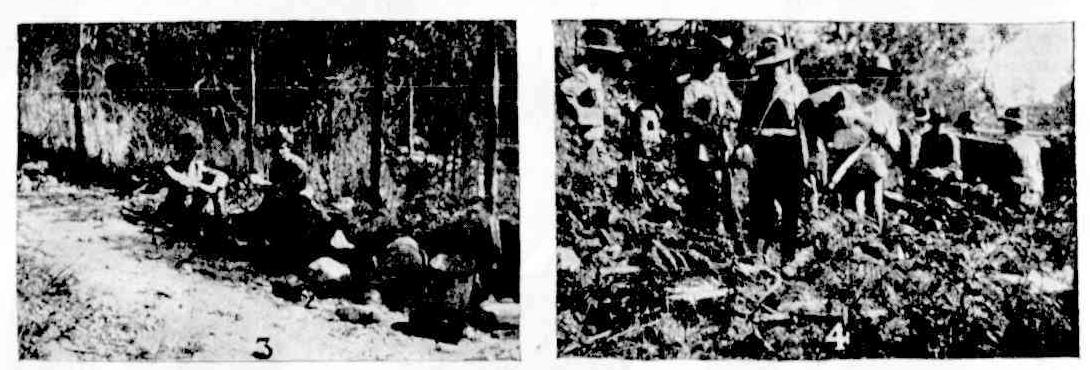
3.-Resting During a Halt on a Difficult Track. 4. Unloading the Transport Waggon.
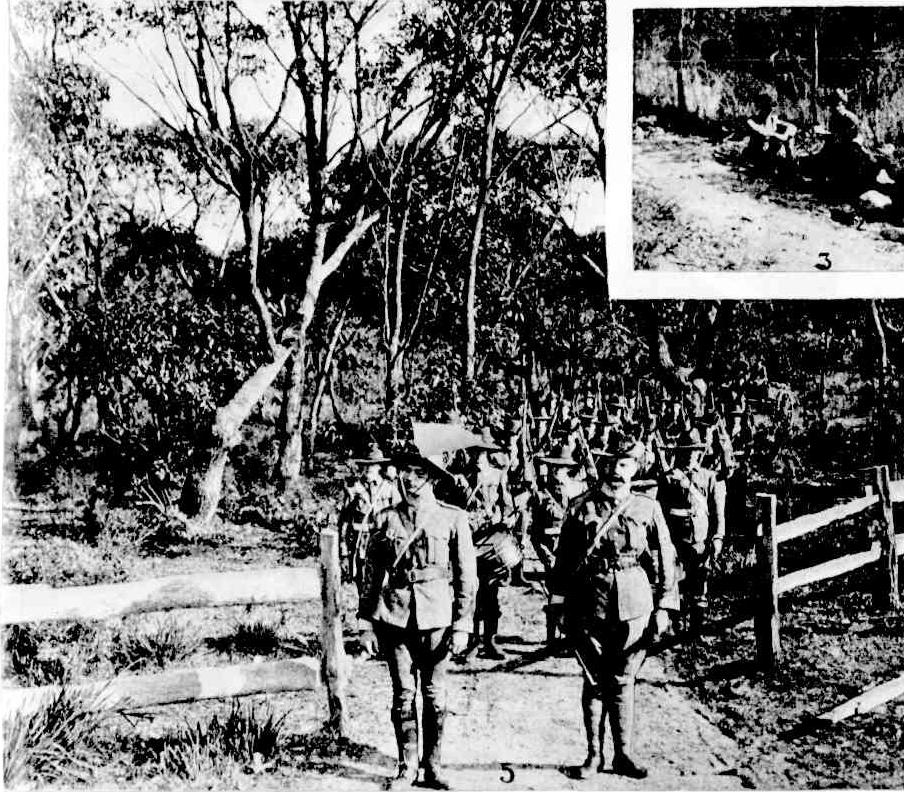
5. The Party Leaving the First Bivouac.
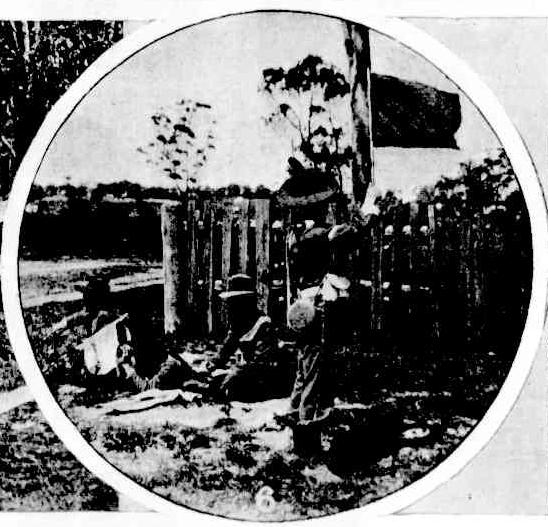
6.-A Signalling Party at Work.
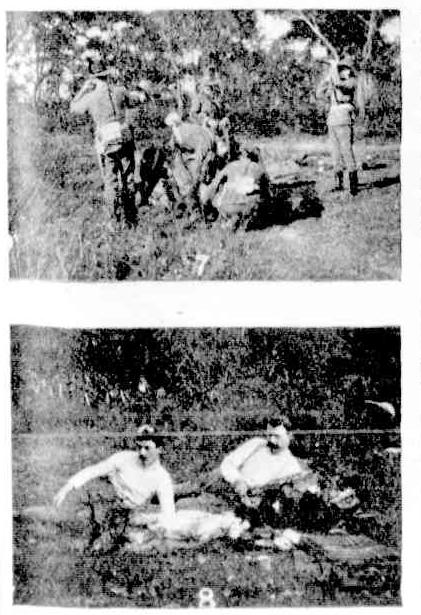
7. Filling Water-bottles. 8. "Officers' Mess”.
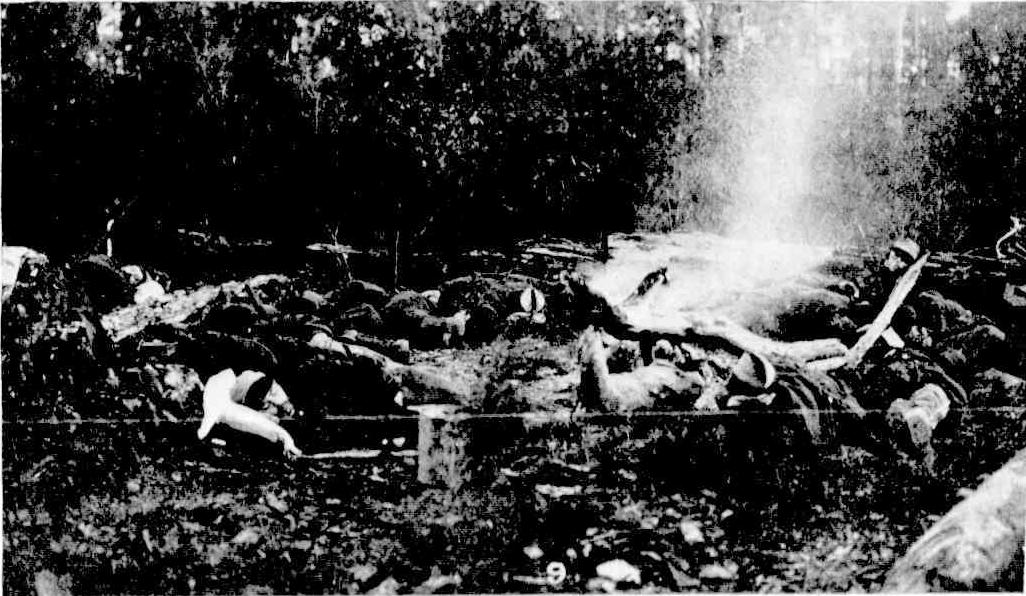
9. A Bivouac Before Reveille,
Citizen Soldiers on Trek.
_ (See illustrations on page 21.)
The question as to whether a country can depend on a citizen army for its defence has often been discussed, and, while opinions' on the subject differ, the South African campaign clearly demonstrated that volunteers, properly trained and officered, are capable of performing equally good work as regular 'troops. One of the most import ant lessons taught by the war is that all branches of the service must possess greater mobility that before, and that 'the men must be trained unto conditions as near to those met with on service's possible. It was with these Objects in view that the Trekking Party of "C" Company of the 7th Infantry Regiment (St. George's Riffles), which is illustrated in this issue, was organised. This company may fairly claim the honour off setting an example to the remainder of the local volunteer forces in this respect as it has now has two treks to its credit. The first took place at the beginning of the present year, while the one illustrated extended over Saturday afternoon, Sunday, and Monday, October 4, 5, and 6. Both treks were highly successful, for, although some arduous 'work' was performed, the practical instruction received will prove of incalculable Value to those who participated in the treks. Captain F. Walsh (the officer commanding "C"! Company) has commanded 'both trekking' parties ; the first consisting of about 20 men and the latter of about 40. Lieutenant J. M. Moore (of “B" Company) also took part in the latter trek, and both officers are shown at dinner in one of the pictures.
The experiences gained during 'the first trek were exercised to advantage during the more recent one, and resulted in a greater amount of work being accomplished. The second trek took place north of Sydney, within the country bounded on the north by the Kuring-gai Chase, and on the west by the North Shore railway line. A start was made from Sydney on Saturday afternoon, the party proceeding to the Spit, Middle Harbour, and thence via the Pittwater and Narrabeen roads to near Newport, where the party bivouaced for the night.
Some interesting night operations were carried out in the vicinity of the Narrabeen Lagoon, a small party having been detached at the junction of the Spit and Narrabeen roads, with instructions to move from its halting place at 9.30 p.m., and attack the main party, which was holding the bridge over the Narrabeen Lagoon. The operations we're not hampered by any conditions, and as the parties were several miles' apart, the commanders of the opposing forces had ample opportunities to: display their skill in handling the men. The bivouac was reached about 8 p.m. on Sunday. Reveille sounded at 6 a.m., and the party moved off a little after 7 a.m., scouting, etc., being practised throughout the day. The country over which the party travelled on Sunday was of the roughest description, and in some places even the roads were so bad as to make progress slow, and the transport cart had to be unloaded on several occasions. The party bivouaced near Pymble on Sunday night, and on Monday morning resumed the march towards Sydney, attack and defence work being carried out during the day. The party was made as mobile as possible, and, with that end in view, tents, etc., were not carried, the men relying entirely on their great coats. The party covered about 45 miles during the trek. The officers, non-commissioned officers, and men of the company who took part in the trek are to be congratulated on giving up the holidays, with a view to increasing their military knowledge, even at great personal discomfort, and it is to be hoped that the authorities will recognise the value of these trekking parties, and grant mere encouragement to our citizen soldiers than is at present the case.
"Rank and File." Citizen Soldiers on Trek. (1902, October 15). Australian Town and Country Journal (Sydney, NSW : 1870 - 1907), p. 21. Retrieved from http://nla.gov.au/nla.news-article71494259
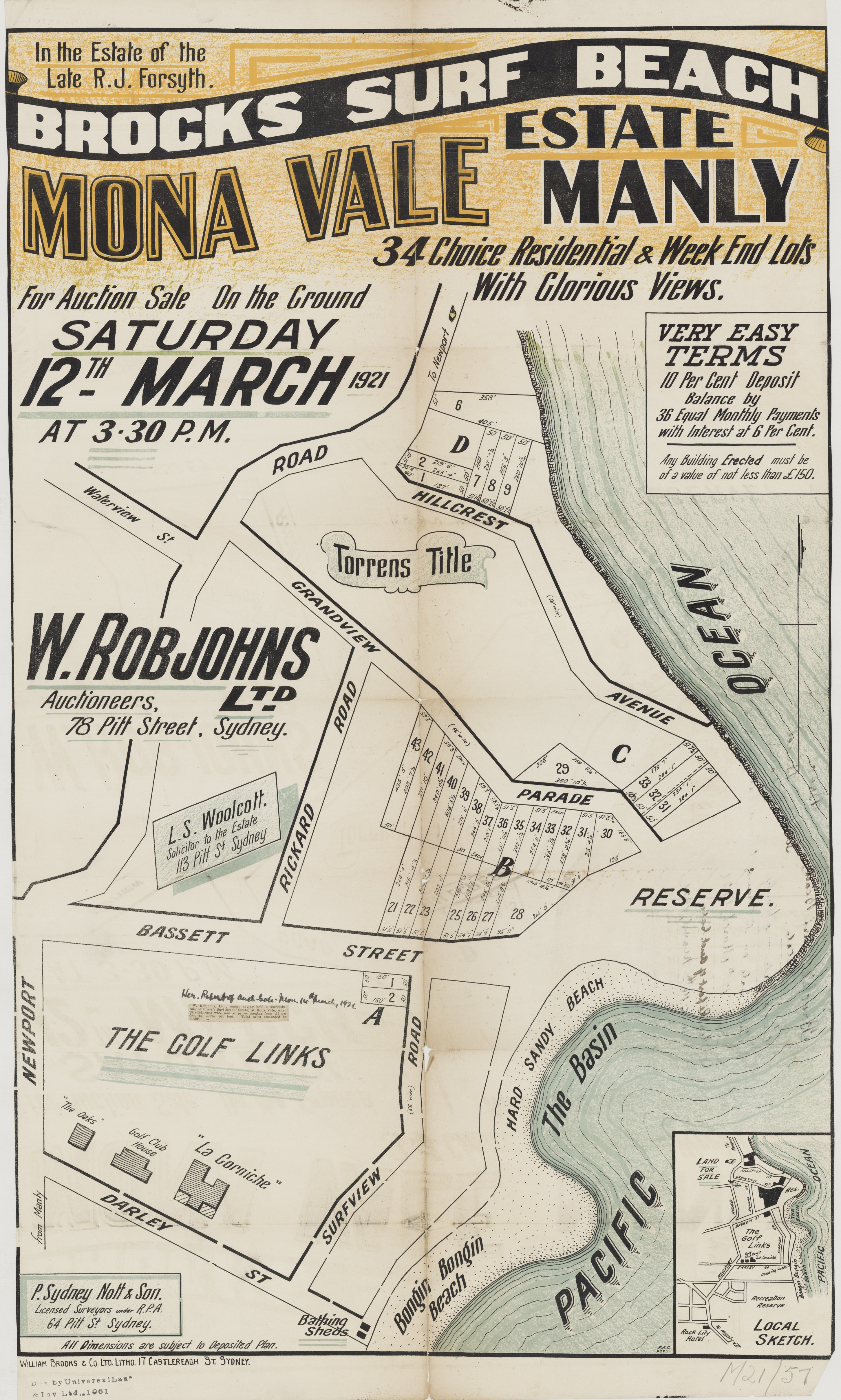
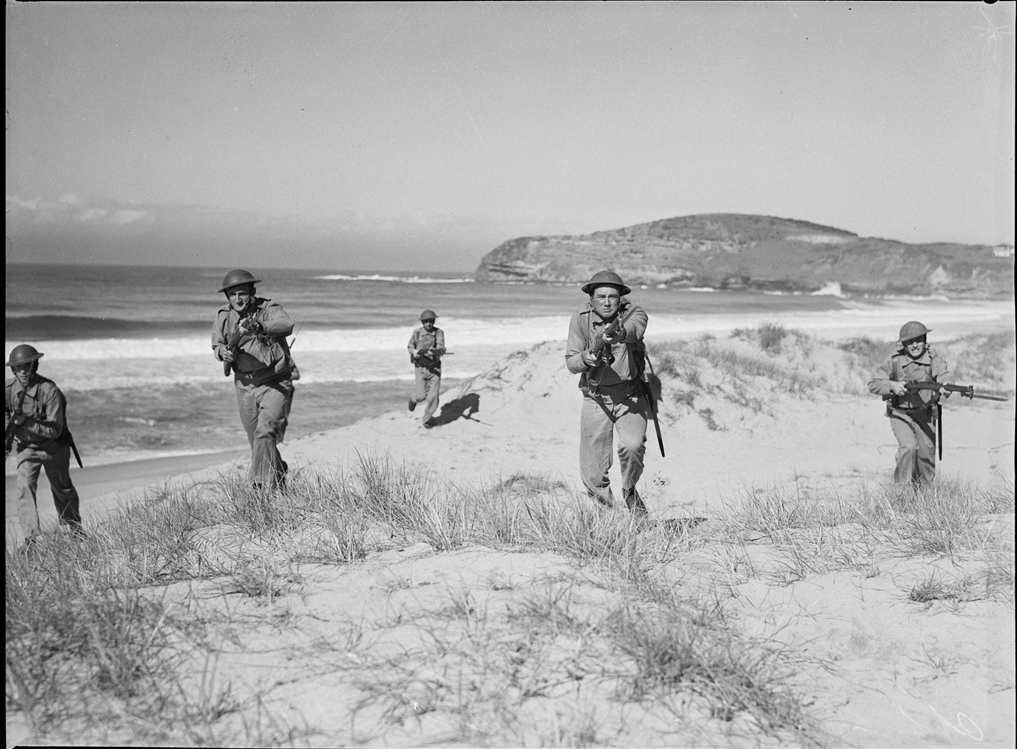
Officers training school Mona Vale, 20 June 1941 photographed by R. Donaldson. Image No.: c21276_0033_c, courtesy State Library of NSW
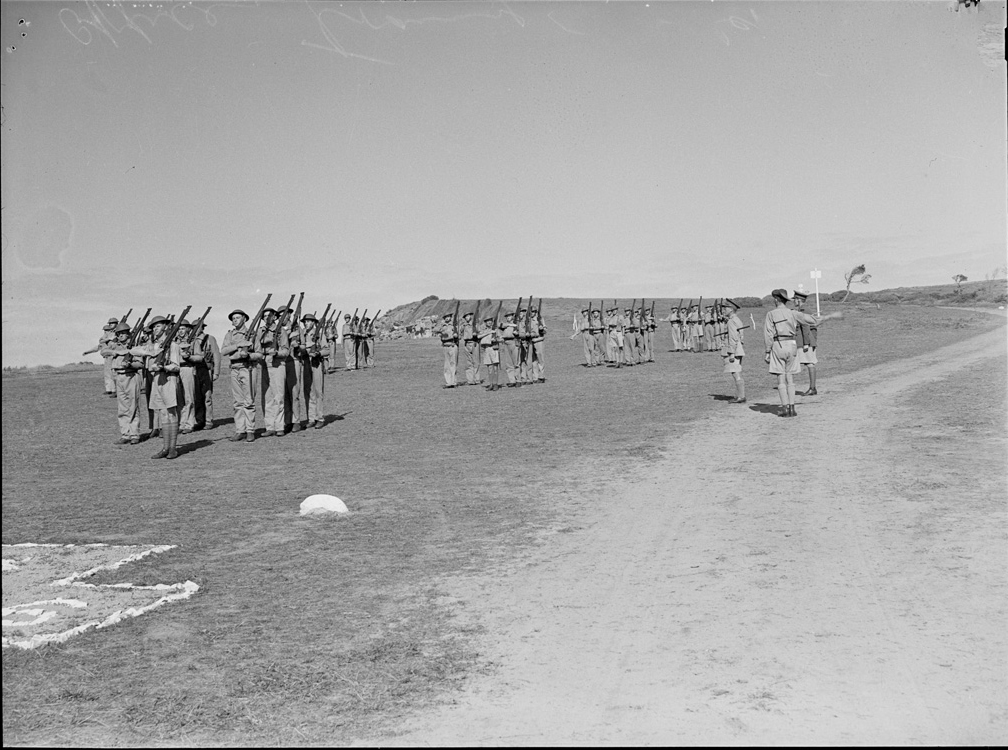
Officers training school Mona Vale, 20 June 1941 photographed by R. Donaldson. Image No.: c21276_0022_c, courtesy State Library of NSW
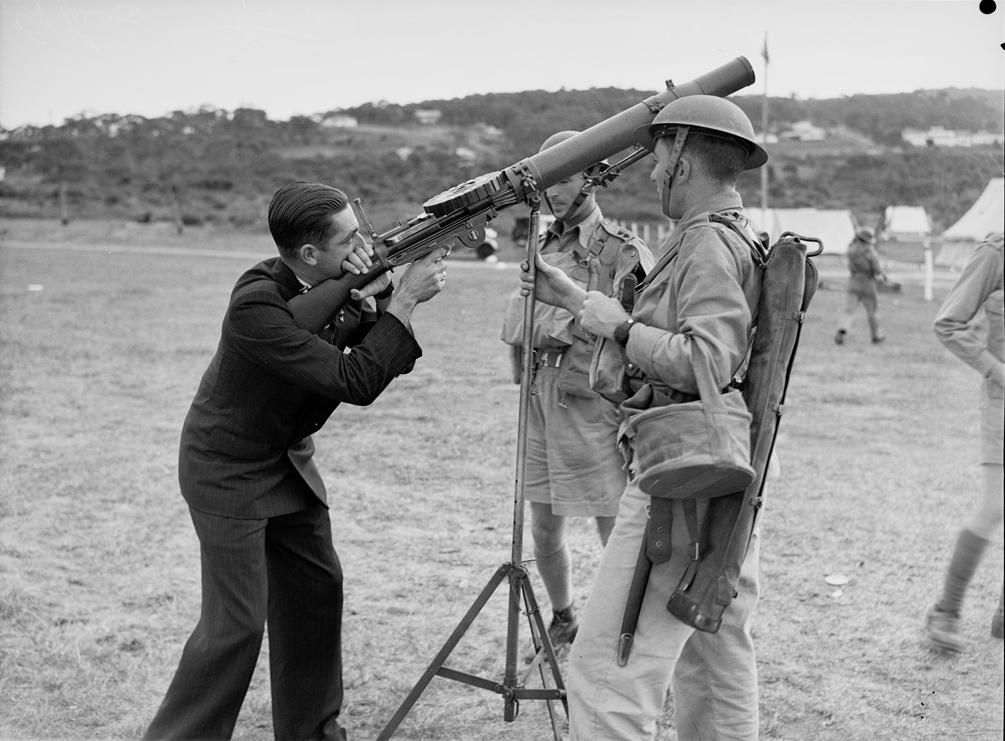
Officers training school Mona Vale, 20 June 1941 photographed by R. Donaldson, Image no.: c21276_0011_c, courtesy State Library of NSW
The interest in a growing menu that came with the wealth brought by many cultures to these shores and those who produced these primary ingredients, has also afforded glimpses into what was from early settlement times and into the 1960's a food bowl area and market garden paradise. It wasn't just fruit and vegetables, poultry and fish but also dairy products from cows and goats.
Later on a section of Mona Vale was devoted to producing food for the inmates of Taronga Zoo through the work of surf club supporter Sir Edward Hallstrom. He also tried to look after koalas, both those that lived locally and those that came to his care, at what was known for a while as the Bayview Koala Sanctuary.
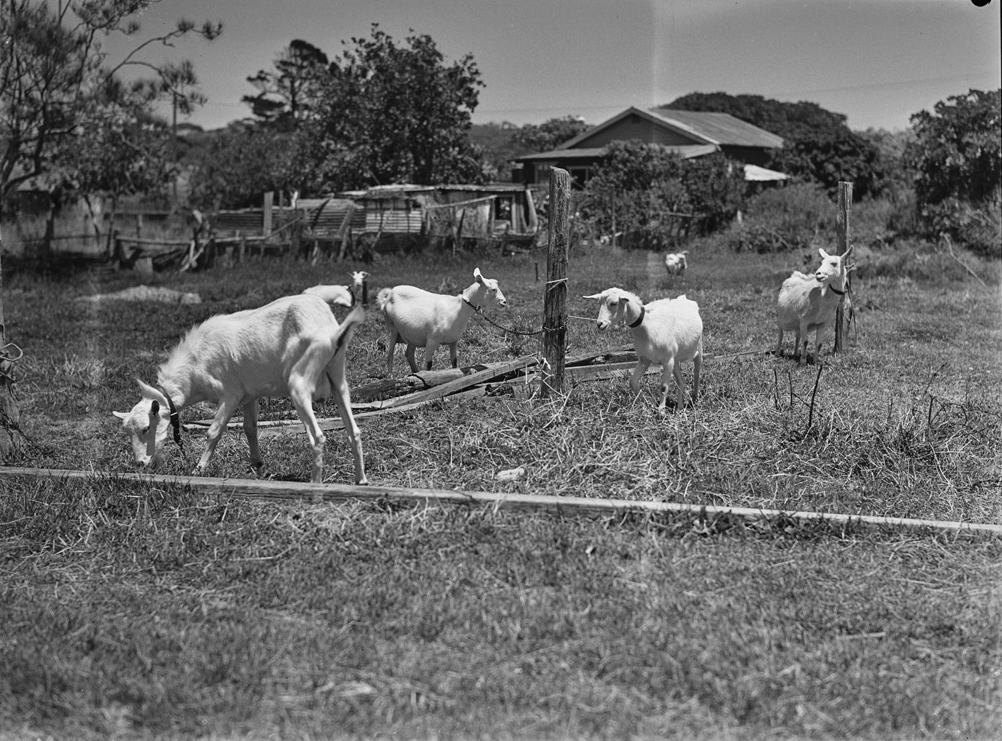
Miss Alice Blow's goat farm at Mona Vale, 23 December 1942 photographed by Alec Iverson. Image No.: c18754_0001_c, courtesy State Library of NSW
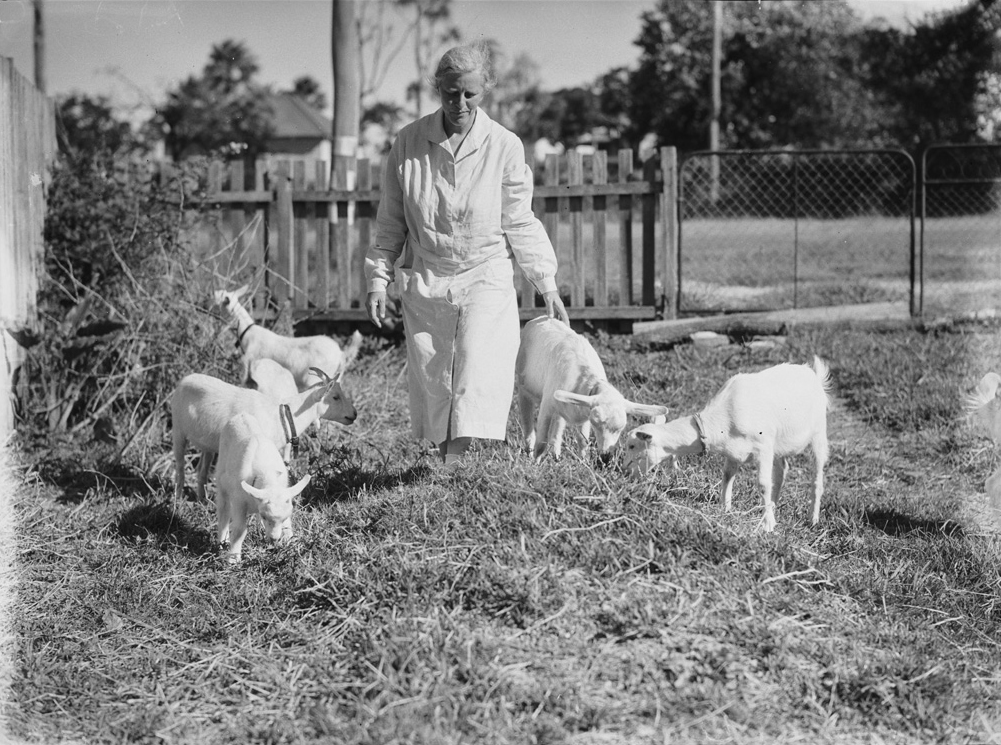
Miss Alice Blow's goat farm at Mona Vale, 23 December 1942 photographed by Alec Iverson, Image No.: c18754_0005_c, courtesy State Library of NSW
The largest land holdings given to European settlers in the Mona Vale area were the inheritance bequeathed by Elizabeth Jenkins to the Salvation Army at the southern extremity of the Black Swamp, and the D'Arcy Wentworth purchased land grant to the north, from Mona vale central and up to and including Bungan Beach and north Newport.
The D’arcy Wentworth Estate at Pittwater, stretching from Mona Vale to Bungan and Newport, was originally owned by Robert Campbell Junior (1789-1851), merchant, entrepreneur and pastoralist, who arrived in Sydney on the Albion in August 1806 to work with his uncle, Robert Campbell Senior. He was a successful and prominent member of Sydney’s commercial life by October 1813. Governor Macquarie promised him a land grant of 700 acres at Bongin Bongin. (The farm was first called “Kilmain” and was not called Mona Vale until the late 1850s.) This 700 acre land grant, ordered in 1813, was surveyed on the 4th and 5th May 1814 by James Meehan (A.O. Map 4729). It was officially confirmed by Governor Macquarie on 31 August 1819. (LTO SN 12/32) The land was already in occupation in 1814, as Meehan mentioned “Mr. Campbell’s hut” in his field book.
On 28 September 1815, while surveying D’Arcy Wentworth’s land grant at present Manly Vale, Meehan mentioned finding “line of Mr. Robert Campbell” where it crossed Manly Creek, indicating that Campbell had made a track from North Harbour to his land. Part of this track was later (1826) upgraded by James Jenkins, and became known as “Jenkins’ Road”, while further north the tack was known as “Campbell’s Road” or “Campbell’s Avenue” until at least 1880. With modifications, this original track of Campbell has been gradually upgraded to form our main roads of Condamine Street and Pittwater Road.
Having almost the whole of the Peninsula to choose from, it was likely that Campbell would choose the most fertile part. In 1880 an anonymous (real estate) author confirmed this opinion when he wrote: “The soil of this locality is very rich, and it is rather strange that it is not cultivated.” (The Pittwater and Hawkesbury Lakes Album, page 2.) Geographically, the area was potentially important as a settlement site; it was the natural junction for land routes on either side of Pittwater, it included the end of the long Pitt Water Range (Surveyor Govett’s term – now the route of Mona Vale Road), and there was access to Pittwater where port facilities might be constructed.
Denis Sheehan and William Chadwick were already living on the 20 acre “Kilmain Farm” (out of the 700 acre grant) when they agreed to rent it on 25 August 1817 for seven years.
Campbell had left the area by 1822. His reason, stated in a letter from the Land Board Office to the Colonial Secretary, dated 12th March 1827, was that “… after expending some Capital in improving the Land then granted him, he found the soil of so bad a quality, that he was induced to sell …”.
Campbell sold his Pittwater land to his friend D’Arcy Wentworth, and on February 8th, 1822 the following advertisement appeared in the Sydney Gazette: “To be LET, a FARM, containing 700 Acres, situate at Pitt Water, and late in the occupation of Mr. ROBERT CAMPBELL, near 30 Acres of which are cleared, is a good run for Stock, and has a House erected thereon, and a Stock-yard. The said Farm is well supplied with water in the driest season. For particulars apply on the Premises, to Mr. Sommers, or to Mr. Chippendall, Sydney.”
He was still advertising the same later that year as well as more Pittwater land, at Barrenjoey:
TO LET, TWO FARMS, situate at Pitt-water, the one containing 700 Acres, and the other 400 acres of Land, nearly contiguous to each other, and particularly well calculated for the purposes of Grazing and Agriculture.-Apply to D'Arcy Wentworth, the Proprietor, at Sydney. Classified Advertising. (1822, July 26). The Sydney Gazette and New South Wales Advertiser (NSW : 1803 - 1842), p. 1 Supplement: Supplement To The Sydney Gazette. Retrieved from http://nla.gov.au/nla.news-article2181185
Mr. Wentworth wasn't the only local landholder:
COLONIAL SECRETARY'S OFFICE,
30th OCTOBER, 1832.
GRANTS OF LAND.
THE following descriptions of Grants of Land, with the names of the Persons to whom they were respectively promised, are published for general information, in order that all Parties concerned may have an opportunity of correcting any errors and omissions which may have been made inadvertently.
And Notice is hereby given, that, at the end of three months from the present date, unless written caveats be previously lodged in this Office, Deeds of Grant will be prepared accordingly.
It is requested that all Christian and Surnames may be communicated to this Office at full length, together with the intended name of the Property, and the present residence of the Parties.
CUMBERLAND
109. ROBERT MACKINTOSH, senior, 200, Two hundred Acres, Parish of Narrabeen, commencing at the North-east corner of Robert Mackintosh, junior, forty acres, and bounded on the west by that farm by a line South thirty-five degrees West thirty-two chains ; on the South by a line South fifty-five degrees East fifty-two chains fifty links to Jeremiah Bryant's eighty acres ; on the East by Bryant's eighty acres and Peter Patillo's eighty-acres by a line North thirty-five degrees East thirty-nine chains to Pitt Water ; and on the North by the waters of Pitt Water to the commencing corner.
Promised by Governor Macquarie on 1st October, 1817. Quit-rent 4s. sterling per annum, commencing 1st January, 1827.
110. PETER PATILLO, 80, Eighty Acres, Parish of Narrabeen, commencing at the North-east corner of Robert Mackintosh's two hundred acres, and bounded on the West by that farm by a line South thirty-five degrees West twenty-six chains fifty links to the North corner of Jeremiah Bryant's eighty acres ; on the South by Bryant by a line South seventy-four and a-half degrees East thirty-eight chains fifty links to a swamp called " Winne Jeramy ;" and on the East and North by that Swamp and Pitt Water to the commencing corner.
Promised by Governor Macquarie on 16th January, 1816. Quit-rent 1s. sterling per annum, commencing 1st January, 1827.
111. JEREMIAH BRYANT, 80, Eighty Acres, Parish of Narrabeen, commencing at the South-east corner of Peter Patillo's eighty acres, and bounded on the North by that farm by a line North seventy-four and a-half degrees West thirty-eight chains fifty links to Robert Mackintosh's two hundred acres ; on the West by that farm by a line South thirty-five degrees West twenty-three chains ; on the West by a line South thirty-five degrees East twenty-five chains to a swamp ; and on the East by the swamp to the commencing corner.
Promised by Governor Macquarie on 12th March, 1821. Quit-rent 1s. sterling per annum, commencing 1st January, 1827.
GRANTS OF LAND. (1832, October 31). New South Wales Government Gazette (Sydney, NSW : 1832 - 1900), p. 368. Retrieved from http://nla.gov.au/nla.news-article230389243
THE Public are hereby cautioned against Purchasing, Renting, or taking in Security, in any Manner whatever, a certain FARM of Eighty Acres of Land, located to me, the undersigned, situate in the District of Pittwater; the same being my absolute and indisputable Property. JEREMIAH BRIAN. Classified Advertising. (1822, August 23). The Sydney Gazette and New South Wales Advertiser (NSW : 1803 - 1842), p. 4. Retrieved from http://nla.gov.au/nla.news-article2181254
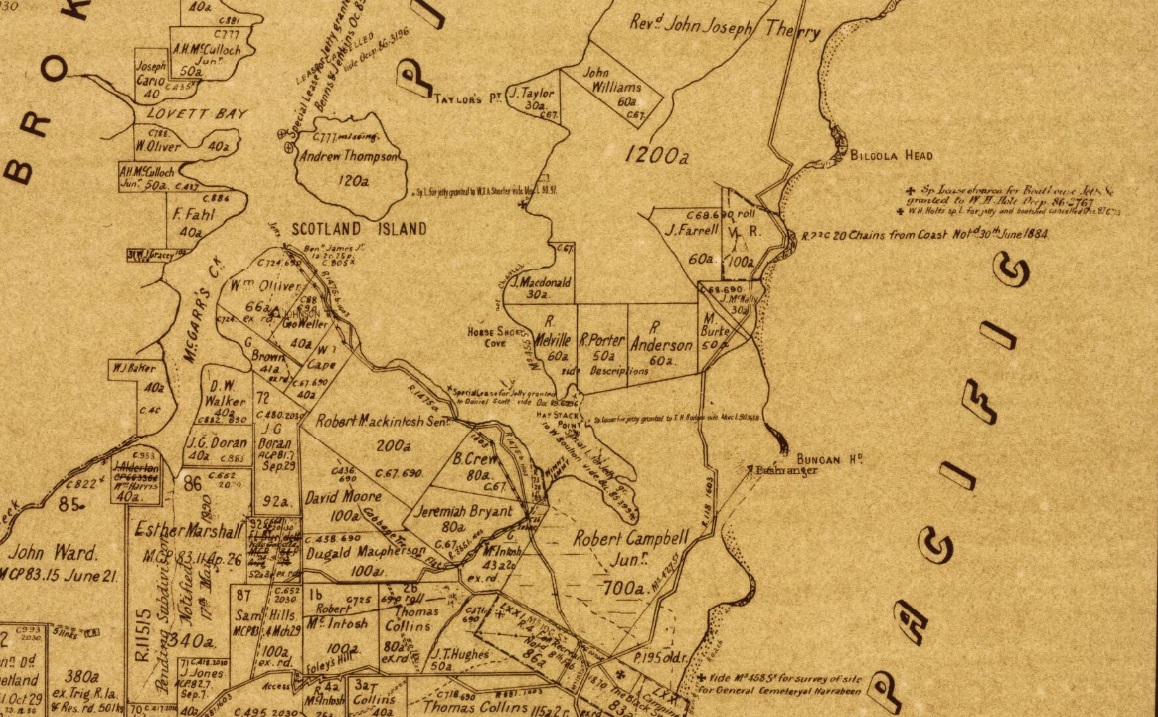
Old parish maps indicate the larger original land grants in this Mona Vale green area were to Robert Campbell and (Miss) Elizabeth Jenkins, who inherited hers from a friend of her fathers'. Campbell’s land is labelled as ‘Winererremy Swamp’ on 1905 maps and located to the north the study area and Jenkins; who willed her estate to the Salvation Army, held land to the south of the area. In between these land holdings was a strip of swampland that extended from Mona Vale Beach to the village of Turimetta, now Mona Vale, and beyond to Winererremy Bay. Later this was called the 'Black Swamp'.
This land was set aside by the Crown for the purpose of ‘public recreation’ or ‘conservation’. Kitchener Park R15057 Reserve was gazetted in 1892.
Prior to then an 1886 Land map indicates previous names for this 'Recreation Area' and that 86 acres and 83 acres were set aside on February 8th 1870 and it was envisioned people would go camping in a 'black swamp!''
Interestingly, Mona Vale Beach was called 'Bongin Beach' on this chart:
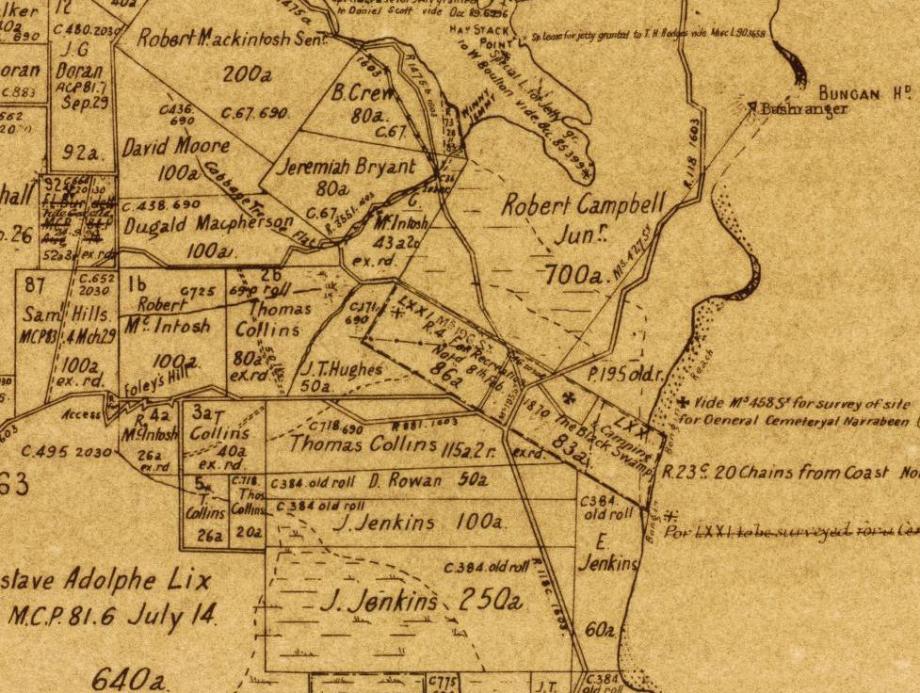
Parish of Narrabeen, County of Cumberland [cartographic material] : Metropolitan Land District, Eastern Division N.S.W. 1886. MAP G8971.G46 svar (Copy 1). Courtesy National Library of Australia - NB: 86 acres and 83 acres set aside
The Gazette Notice:
Department of Lands,
Sydney, 8th February, 1870.
HIS Excellency the Governor, with the advice of the Executive Council, directs it to be notified, that in pursuance of the provisions of the 4th section of the Crown Lands Alienation Act of 1861, the land specified in the Schedule appended hereto shall be reserved from sale for Recreation and for Camping.
WILLIAM FORSTER.
No.4 County of Cumberland, parish of Narrabeen, at Pitt Water, 180 acres: Commencing on the sea-coast at the north-eastern corner of E. Jenkins' 60 acres ; and bounded thence on the south-west by the north-eastern boundaries of that land, D. Rowan's 50 acres, Thomas Collins' 115 acres 2 roods, and J. T. Hughes' 50 acres, being in all a line bearing north 60 degrees west 93 chains; on the north-west by due south-eastern boundary-line of J. T. Hughes' 50 acres aforesaid, bearing north 30 degrees east 19 chains to the margin of Winnererremy Swamp ; thence by the margin of that swamp northerly about 4 chains; on the north-east by a line (dividing it from Robt. Campbell's 700 acres grant) bearing south 60 degrees east 85 chains 20 links to the sea-coast; and on the east by the sea-coast southerly, to the point of commencement. Government Gazette Notices (1870, February 8). New South Wales Government Gazette (Sydney, NSW : 1832 - 1900), p. 306. Retrieved from http://nla.gov.au/nla.news-article223285883
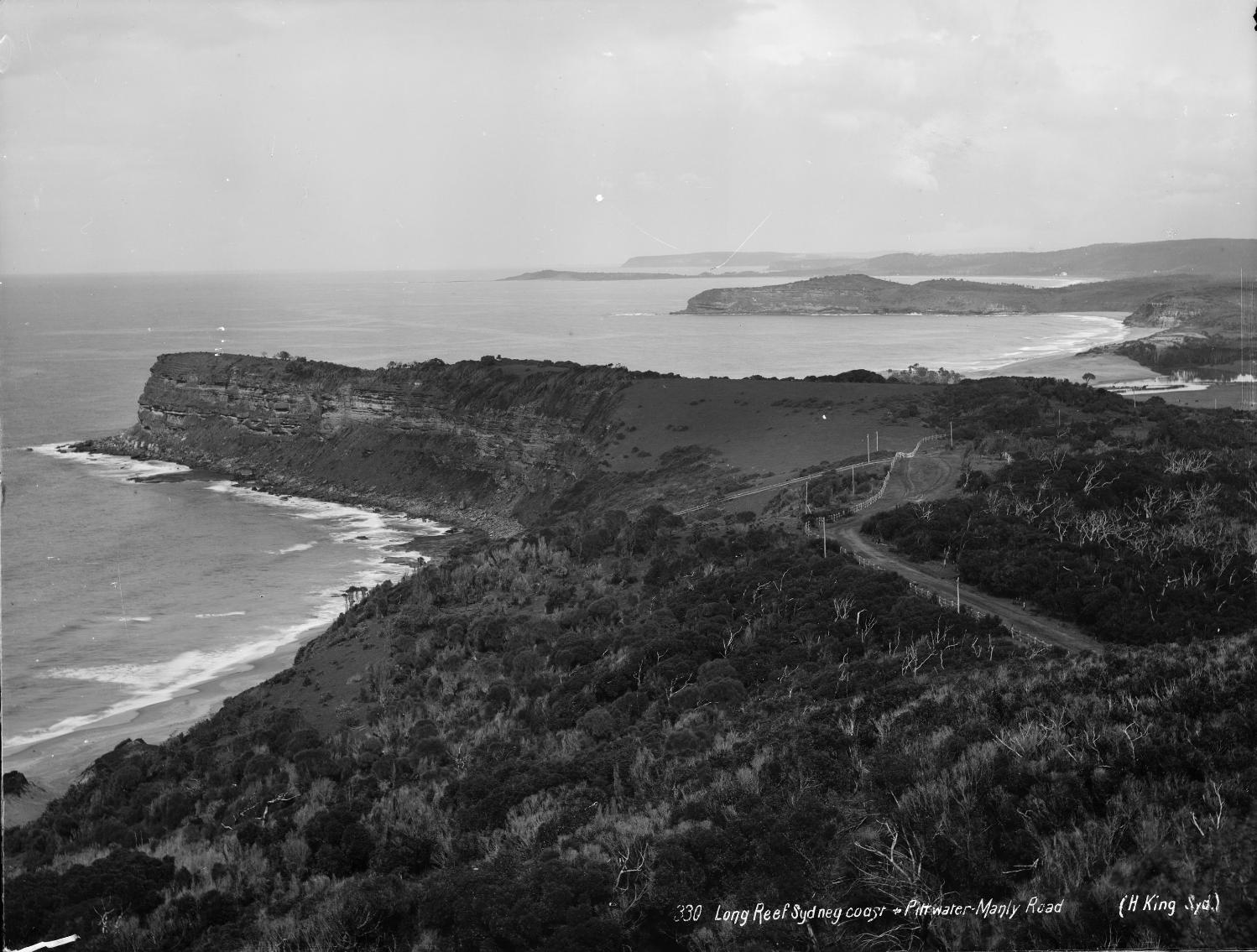
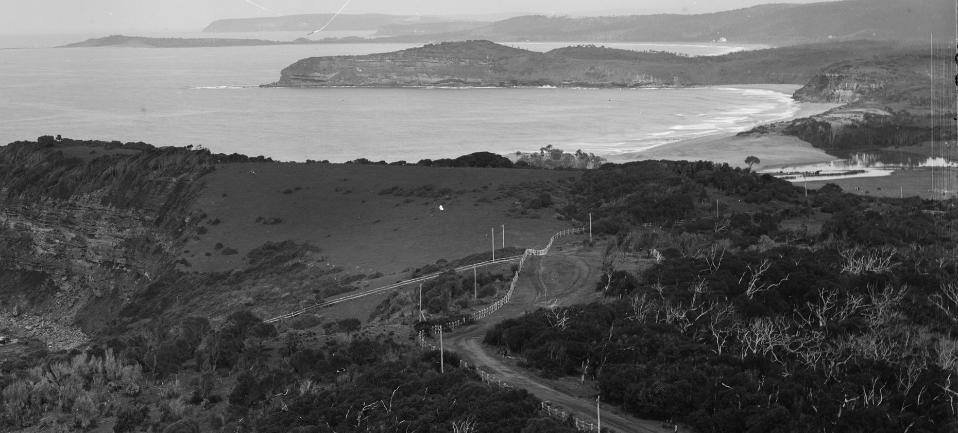
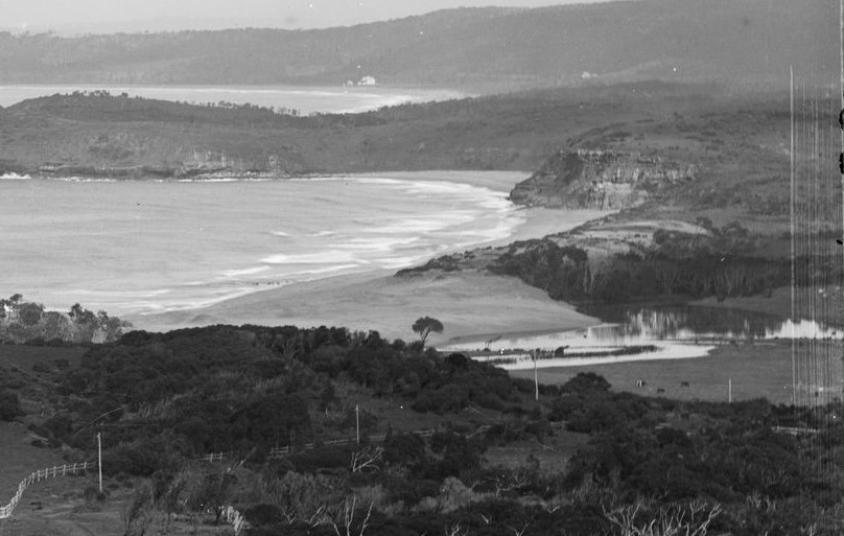
Land sales just north of the central reserved for recreation area took place in 1881 and 1887:
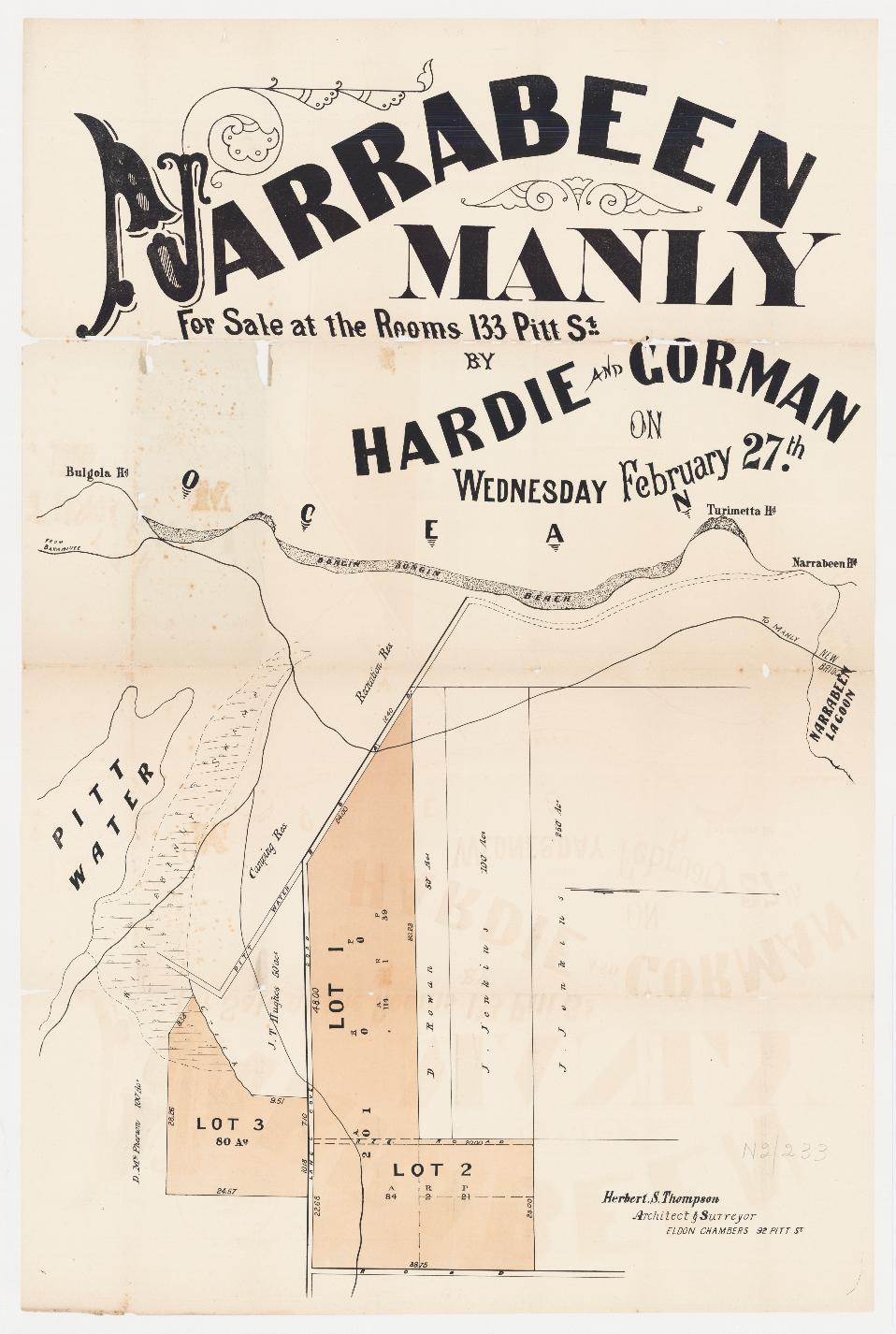
Narrabeen Manly - Pittwater Rd, Lane Cove Rd, [1881] Item No.: c050370239 , courtesy State Library of NSW, Narrabeen Subdivision Plans album - this is towards Mona Vale (then called the 'Village of Turimetta')
Land reserved at the Bayview-Mona Vale junctions:
Department of Lands,
Sydney, 28th November, 1881.
RESERVES FROM SALE FOR CAMPING AND OTHER PUBLIC PURPOSES.
HIS Excellency tlie Governor, -with the advice of the Executive Council, directs it to be notified that in pursuance of the provisions of the 4th section of the Crown Lands Alienation Act of 1861, the land specified in the Schedule appended hereto shall be reserved from sale for camping and other public purposes.
JAMES HOSKINS.
No. 73. County of Cumberland, parish of Narrabeen, area about 7 acres. The Crown Lands within the following boundaries : Commencing on the southern shore of Pitt Water, at the junction of the western margin of Wimererremy Swamp; and bounded thence on the west, by the margin of that swamp forming the eastern boundary of P. Patilla's, now B. Crew's, 80 acres, bearing southerly to the intersection of the prolongation of the north-east boundary of G. M'Intosh's 43 acres 2 roods; thence bounded on the south-west by that prolongation and that north-cast boundary bearing south-easterly to the western boundary of Robert Campbell's 700 acres ; and thence by part of that boundary and the southern shore of Pitt Water aforesaid northerly and north-westerly, to the point of commencement. RESERVES FROM SALE FOR CAMPING AND OTHER PUBLIC PURPOSES. (1881, November 28). New South Wales Government Gazette (Sydney, NSW : 1832 - 1900), p. 6134. Retrieved from http://nla.gov.au/nla.news-article221697390
The Bassett-Darley Estate land sales at Mona Vale represent the usurping of Mr. Wentworth's will which was written to keep all the land holdings he held when he passed away in the hands of family members, in perpetuity.
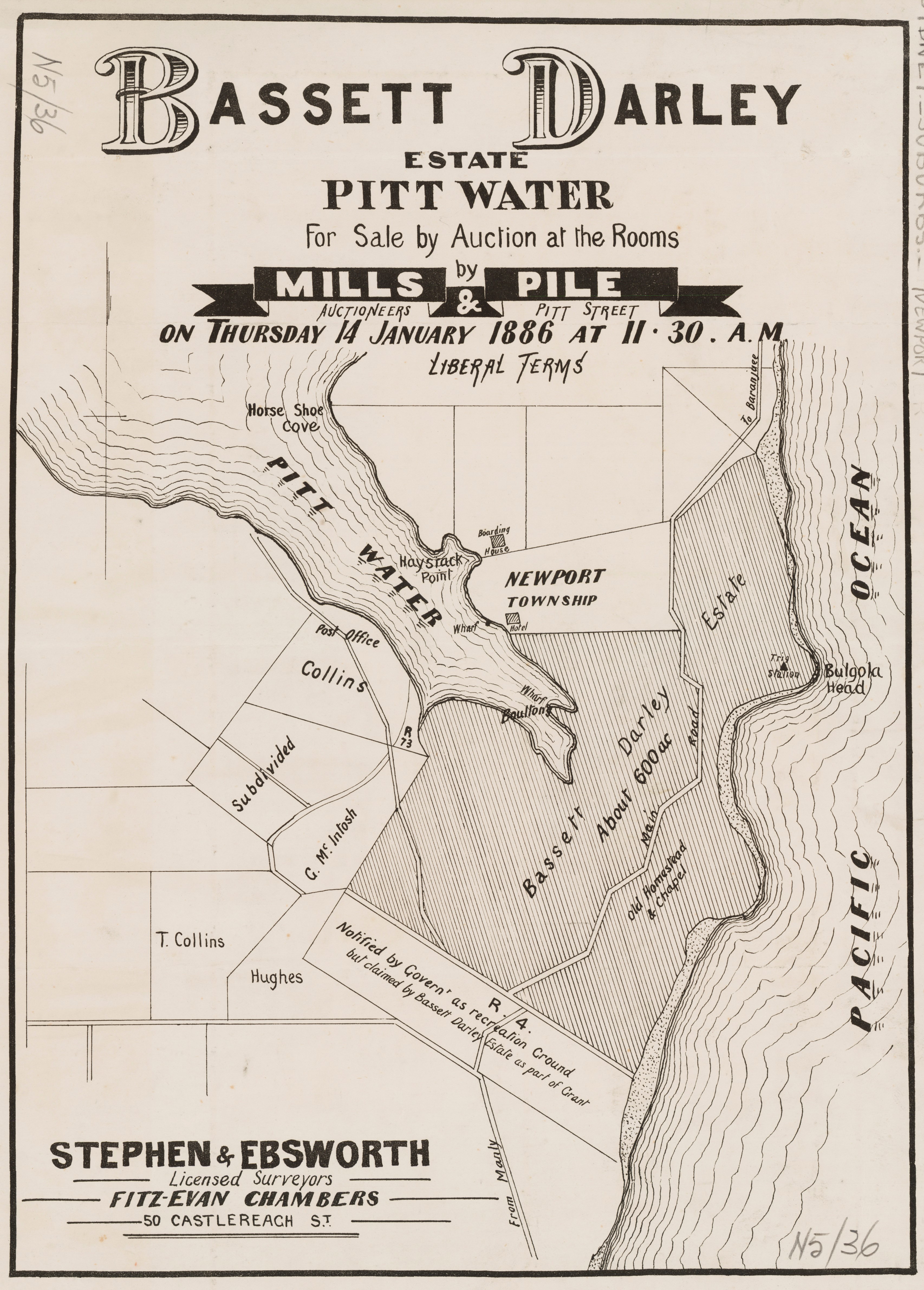
Bassett Darley Estate - Pittwater - Main Rd, Pittwater, 1886. Item No.: c050400027, from Mona Vale Subdivisions folder, courtesy State Library of NSW.
THIS DAY, SATURDAY, 28th,- MAY. THE GREAT SALE OF THE SEASON.
By MILLS and PILE.
FIRST SUBDIVISION of the WELL-KNOWN MONA VALE ESTATE, PITT WATER, COMPRISING OVER 100 BLOCKS of LAND,
8 areas, about 5 acres each, except a few township lots near the ROCK LILY HOTEL, of half an acre in extent.
The SOIL of this magnificent Estate is of the richest possible Description, the whole area being in the centre of a great out-burst of. Trap, which has covered the hills and filled up the valleys, and this accounts for the magnificent vegetation with which this country is clothed.
A LARGE PORTION of the land has frontages to that beautiful inlet from the Hawkesbury known as PIT T WATER. This has been subdivided into VILLA SITES of 5 acres each. A roadway has been provided giving access to the water from other portions of the estate, and the STEAMER HAWKESBURY now calls regularly at all Public Wharfs in Pittwater.
The SALE WILL BE HELD ON THE GROUND, at 3 p.m.. on SATURDAY, the 28th MAY, and to convey intending buyers to the Ground Waggonettes will leave the Manly Pier on the day of Sale, at a quarter past one
THE TERMS will be EXCEPTIONALLY LIBERAL.
Ten per cent, deposit, 15 per cent, in 3 months from date of sale, and the balance in 1, 2, and 3 years' credit, bearing interest at the rate of 6 per cent, per annum.
THE TITLE is the well-known Bassett-Darley Estate title.
LITHOGRAPH PLANS can be obtained at the Sydney Auction Mart, 130, Pitt-street, at MANLY, and at the ROCK LILY HOTEL, PITT WATER.
Possibly a few of the citizens of Sydney may not know where Pitt Water is.
It is about 9 miles by a splendidly macadamised road from Manly Beach. There is no tram line at present for either Sydney or Manly, but this is in the future. THE DRIVE is one of the most charming in the neighbourhood of Sydney, being within sight, for a great portion of the distance, of the Pacific Ocean.
MANY OF OUR LEADING CITIZENS have marine residences at Pitt Water. The soil and climate being unequalled for orangeries, and the locality famed for its magnificent views. MILLS and PILE, Auctioneers, 130, Pitt-street. Advertising. (1887, May 28). The Sydney Morning Herald (NSW : 1842 - 1954), p. 16. Retrieved from http://nla.gov.au/nla.news-article13658964
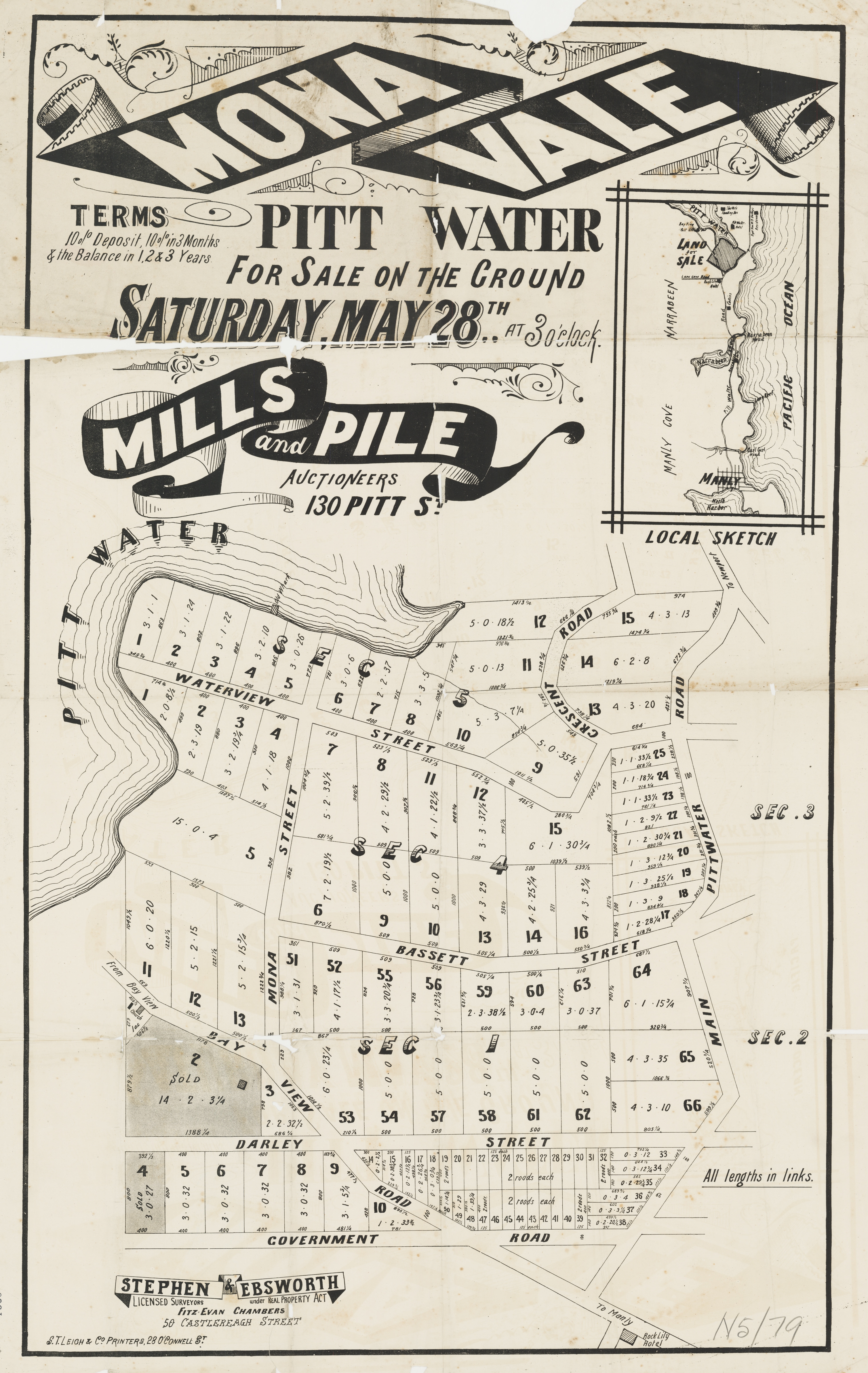
Mona Vale, Pitt Water, May 28th, 1887. Item No.: c050400055, from Mona Vale Subdivisions folder, courtesy State Library of NSW.
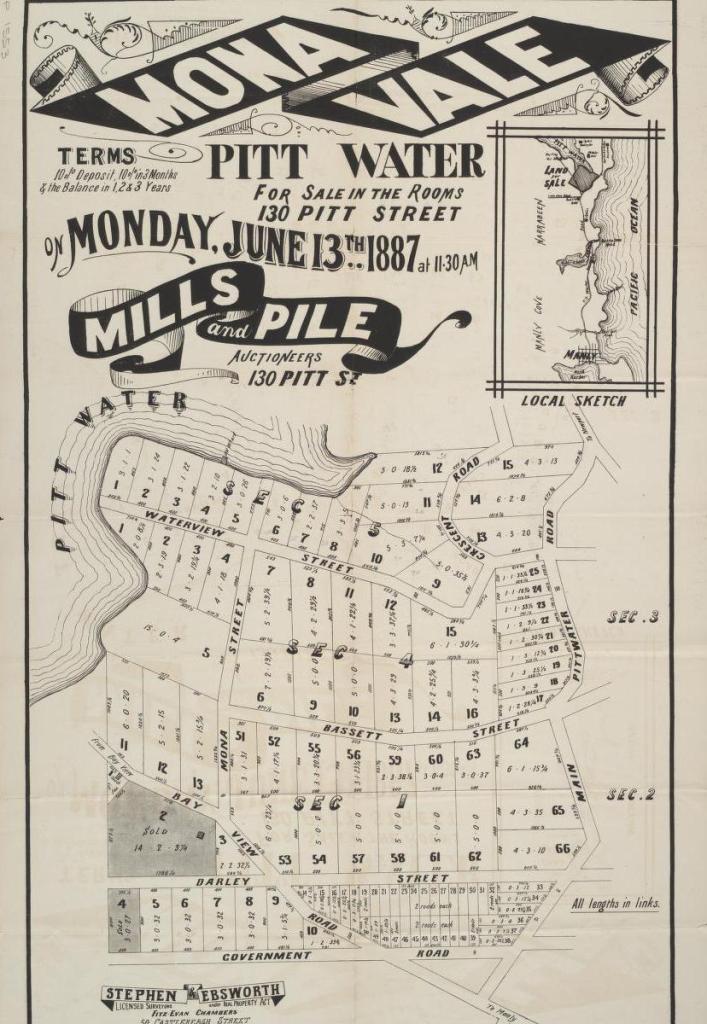
Above: Mills & Pile. Mona Vale, Pitt Water [i.e. Pittwater] [cartographic material] 1887. MAP Folder 103, LFSP 1553. "Stephen & Ebsworth, licensed surveyors under Real Property Act, Fitz-Evan Chambers, 50 Castlereagh Street". Includes local sketch. Sales plan of Mona Vale, Pittwater. Available at: http://nla.gov.au/nla.map-lfsp1553
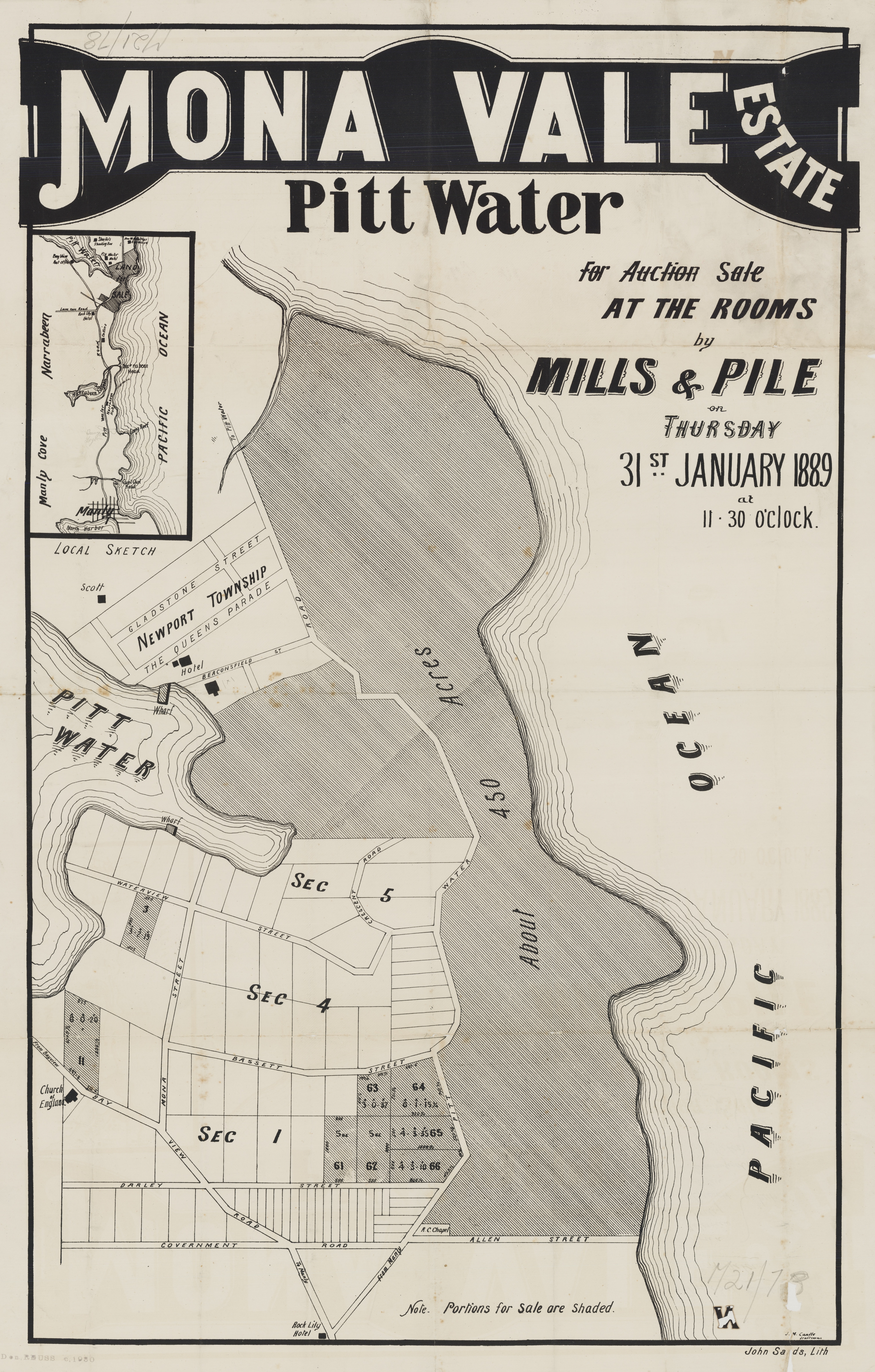
Mona Vale Estate - Pittwater - Waterview street, Mona Street, Darley street, Bassett Street, Allen Street, Gladstone St, The Queens Pde, Pitt Water Road - January 31st 1889 - portions for sale sahded Mills and Pile. Item no.: c046820074, from Mona Vale Subdivisions folder, courtesy State Library of NSW.
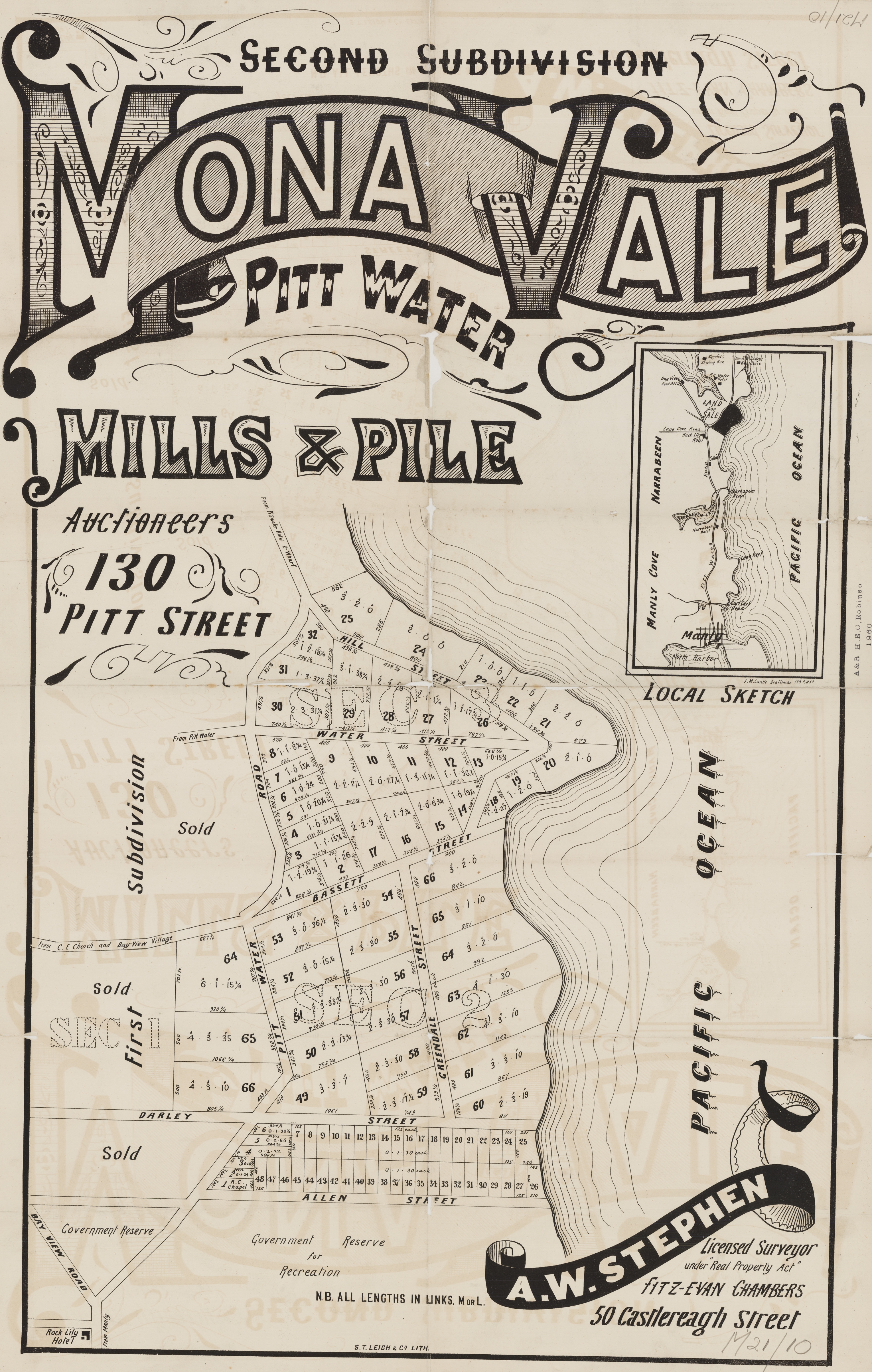
The land on which Brock's ''The Oaks'' stood is Section 2 of the Mona Vale estate, offered in the second subdivision and may have been picked up relatively cheaply:
TO SPORTING, BOATING, AND CAMPING PARTIES.
CHOICE WATER FRONTAGES.
THURSDAY, 10th DECEMBER, 1889.
CLEARANCE SALE
of the whole of the
UNSOLD PORTIONS of that BEAUTIFUL MARINE ESTATE,
MONA VALE, PITTWATER.
AT THE ROOMS, 130, PITT-STREET.
MILLS, PILE, and WILSON have been instructed by the proprietors to sell by public auction, at their Rooms. 130, Pitt-street, on THURSDAY, the 19th December, at half-past 11 o'clock,
The whole of the unsold portions of the
FARFAMED MONA VALE ESTATE,
recently subdivided into blocks of 2 to 30 acres each
THIS BEAUTIFUL ESTATE bus a large frontage to the eastern shores of Pittwater, extending to the waters of the Pacific Ocean, and is Intersected by the main road to Barrenjoey.
The SOIL is of the richest description, suitable for
ORANGERIES and ORCHARDS,
and the hills surrounding the various bays are adapted for
MARINE VILLA RESIDENCES.
The coach to Manly runs daily, and makes this property easily accessible from the city.
The terms of sale will be very liberal.
For further particulars and Lithos. apply to
MILLS, PILE and WILSON, Auctioneers, 130. Pitt-street. Advertising (1889, December 11). The Sydney Morning Herald (NSW : 1842 - 1954), p. 11. Retrieved from http://nla.gov.au/nla.news-article13752858
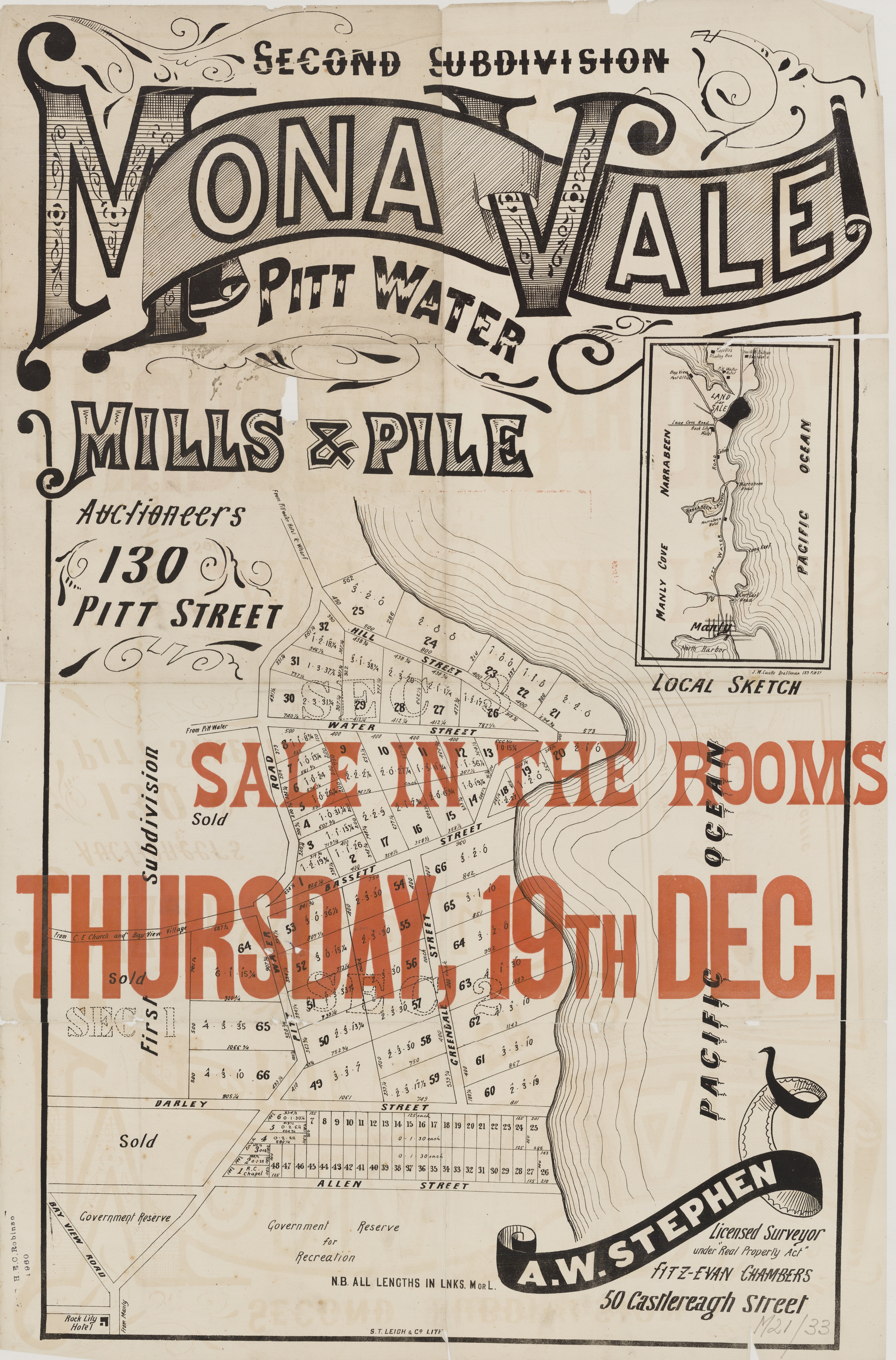
Second Subdivision - Mona Vale - Pittwater - Hill St, Waterview - Section 2 and Section 3, Thursday December 19th, 1889 Item No.: c046820031, from Mona Vale Subdivisions folder, courtesy State Library of NSW.
MONA VALE, PITTWATER SALE December 19, in the Rooms, 130 Pitt-street.
FREE COACH TICKETS from Manly, for Intending Buyers to lnspect this Property, can be obtained at the Rooms.
MILLS, PILE, and WILSON, Auctioneers. Advertising (1889, December 13). The Australian Star (Sydney, NSW : 1887 - 1909), p. 8 (FOURTH EDITION). Retrieved from http://nla.gov.au/nla.news-article227582280
The names given and retained in Mona Vale's Bassett Street and Darley Street stem from the name given to nine portions of land, five on Sydney's northern beaches and the others at Granville, Liverpool, Appin and the Illawarra. They were the lands inherited by Katherine Wentworth from her father, D'Arcy Wentworth, when he died in 1827. The name did not enter the lexicon until 1877 when the colonial parliament passed the Bassett-Darley Estates Act.
Mr. DARLEY moved the second reading of the Bassett Darley Estates Bill. The Bill was read a second time, committed, passed through committee, progress was reported, and the third reading of the Bill was appointed for Wednesday next. THURSDAY, MARCH 1. (1877, March 3). Australian Town and Country Journal (Sydney, NSW : 1870 - 1907), p. 7. Retrieved from http://nla.gov.au/nla.news-article70599359
Katherine Wentworth was born in 1825, the daughter of D'Arcy and Ann Lawes. The name 'Bassett-Darley Estate' was bestowed in acknowledgement of Katherine's two marriages – the first to Benjamin Darley in 1847 when she was 22 and the second to William Bassett in 1867.
The purpose of the Act was to remove legal impediments which, written into her father's Will, had prevented Katherine selling her estates. Its full title was An Act to authorize the trustees of the Marriage Settlement of Mrs Bassett to sell and dispose of certain lands at Manly Beach and elsewhere in the Colony of New South Wales. Visit: AusLit Full Act [21st March, 1877.]
D'Arcy Wentworth passed away on July 7th, 1827:
DEATH.
DIED at his Estate of Home-bush, Aged 65, after a severe attack of Influenza, universally regretted, D'Arcy Wentworth, Esq. the oldest Magistrate in the Colony, many years Surgeon-General, Colonial Treasurer of the Colony, and Chief Police Magistrate of Sydney ; all of which important offices he filled with singular credit to himself, and satisfaction to the public, of all classes and degrees.
We feel real grief in recording the death of such a man as Mr. Wentworth. He was a lover of freedom; a consistent steady friend of the people ; a kind and liberal master ; a just and humane Magistrate ; a steady friend ; and an honest man. Mr. Wentworth's talents were not brilliant, but they were very solid. To a great measure of prudence and caution, he joined a stern love of independence. He was a lover of liberty, on whom the people could rely. He was one of the greatest land-holders in the Colony, and perhaps the wealthiest man. But he considered his possession as calling upon him the more to support the true welfare of the people by maintaining their rights. Therefore, whenever the Colonists wanted a friend to address the King, the Parliament, or the Governor, Mr. Wentworth never shrank from the station allotted to him by Providence. He felt that by his wealth, talents, and experience, he was the natural protector of the people's rights. He was therefore a steady attend-ant on all public conventions of the Colonists, and the first to place his name at the head of a Requisition to the Sheriff, when grievances required to be redressed, or the people wished to make certain things known to the Colonial or the King's Government. At the great dinner given by the people to Sir Thomas Brisbane, after some of the very principal Colonists had sent the Governor a message to decline the honour of his company, (a kind of political crisis in New South Wales) Mr. Wentworth accepted the Chair : by which act of patriotism he upheld the spirit of the people and did a public good which has been and will be attended with benefits that will be enjoyed, when their connexion with that incident will not be perceived, or will be forgotten. In short, considering the paucity of men of wealth in this Colony sincerely attached to the people, we consider Mr. Wentworth's premature death (for his looks bade fair for ten years longer of life) a national loss. Family Notices (1827, July 10). The Monitor (Sydney, NSW : 1826 - 1828), p. 3 (MORNING). Retrieved from http://nla.gov.au/nla.news-article31758586
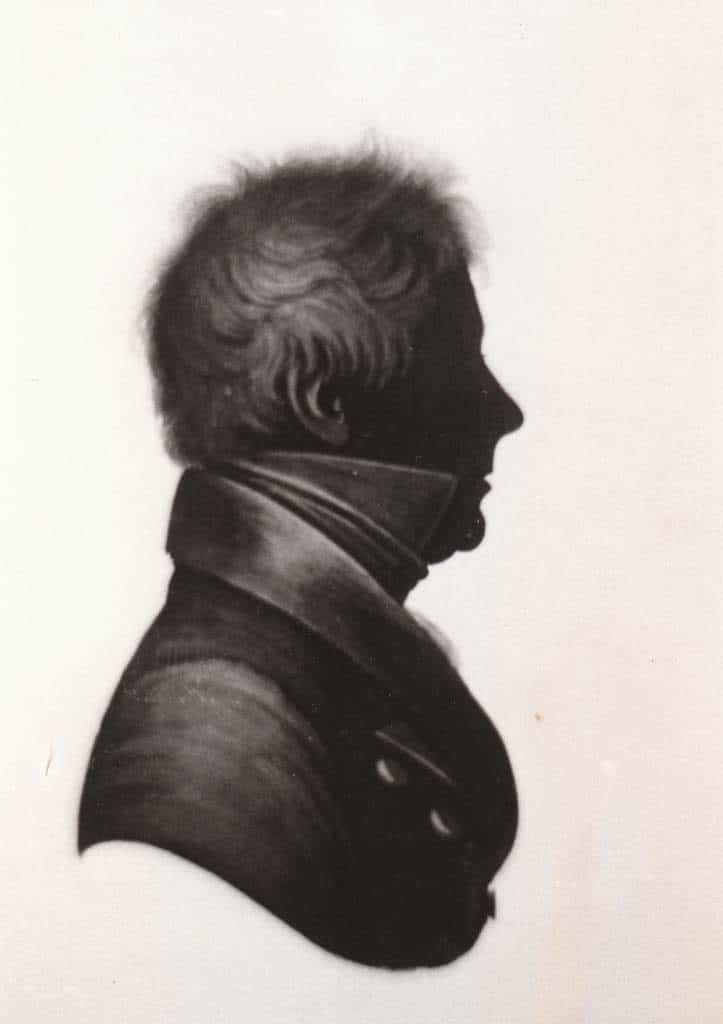
D'Arcy Wentworth - silhouette image - courtesy State Library of NSW
One of the purchasers was Leon Houreux, proprietor of the Rock Lily Hotel - more on his land holdings below:
Mona Vale Estate Pittwater, £65, 15s, 16d £65 land-Mr L Houreux, lot 60. sec 1, PROPERTY SALES. (1889, January 12). The Sydney Morning Herald (NSW : 1842 - 1954), p. 13. Retrieved from http://nla.gov.au/nla.news-article13710117
Another purchaser didn't enjoy his new farm for long
Deaths. CALDER. — September 15, at his residence, Manovale, Newport, N.S.W., William Smith Calder, a native of Calder, Scotland.Family Notices (1898, September 20). The Australian Star (Sydney, NSW : 1887 - 1909), p. 1. Retrieved from http://nla.gov.au/nla.news-article228470627
In the Intestate Estate of William Smith Calder, late of Newport (poultry farmer, &c.), deceased.
ALL persons having claims against the above estate are requested to forward the same, verified by affidavit, to the undersigned, on or before the 14th day of October, 1898.
T. W. GARRETT, Chancery-square, Sydney, Curator of the above Estate. 30th September, 1898. In the Intestate Estate of William Smith Calder, late of Newport (poultry farmer, &c.), deceased. (1898, October 4). New South Wales Government Gazette (Sydney, NSW : 1832 - 1900), p. 7934. Retrieved from http://nla.gov.au/nla.news-article220978696
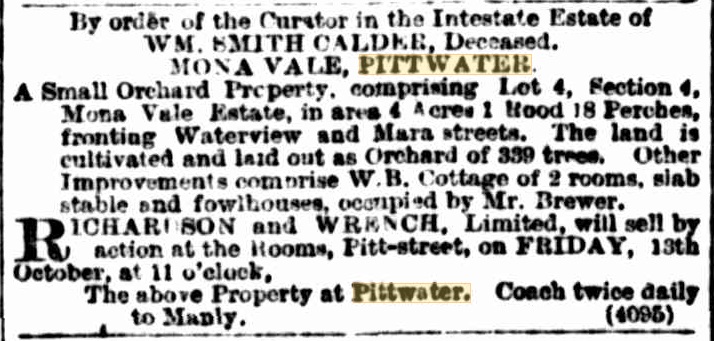
October 7th, 1899 Advertising
The Bassett-Darley Estate land sales at Mona Vale were followed by sales on the estuary and further south by:
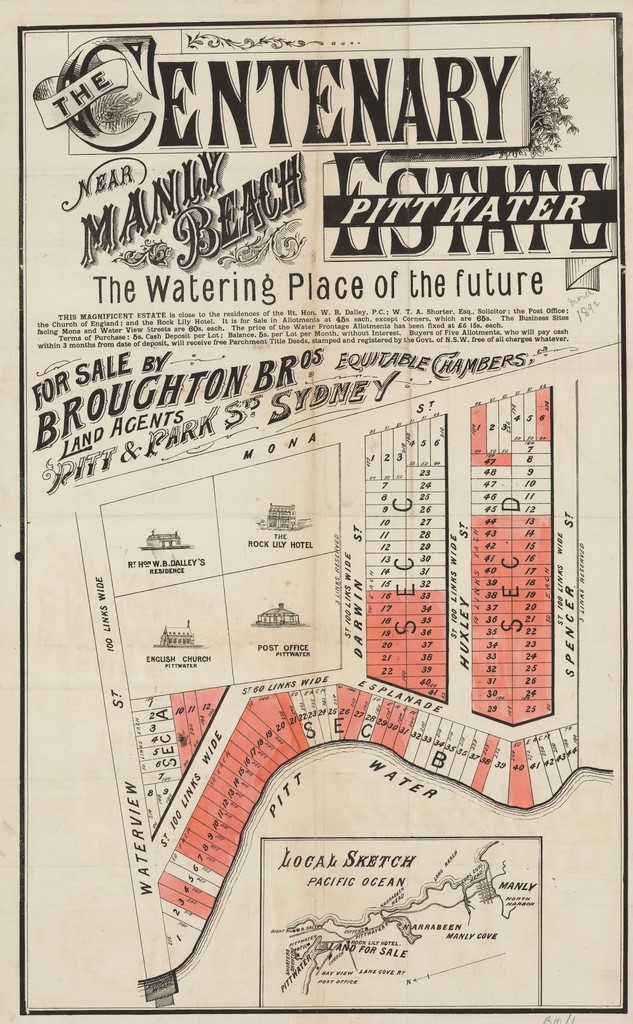
Centenary Estate - Mona Vale March 1892 land for sale - Waterview street, Darwin, Huxley and Spencer streets Item No.: c029500001h, from Mona Vale Subdivisions folder, courtesy State Library of NSW. - See Ernest C. V. Broughton below.
Crown Land sale of 1893 with lots starting at 6 pounds each meant that the western portion of 86 acres was offered for sale just over three decades after it was set aside. As seen below these were envisioned to be suburban lots in what was still paddocks or part of the watershed of the Black Swamp - and trees:
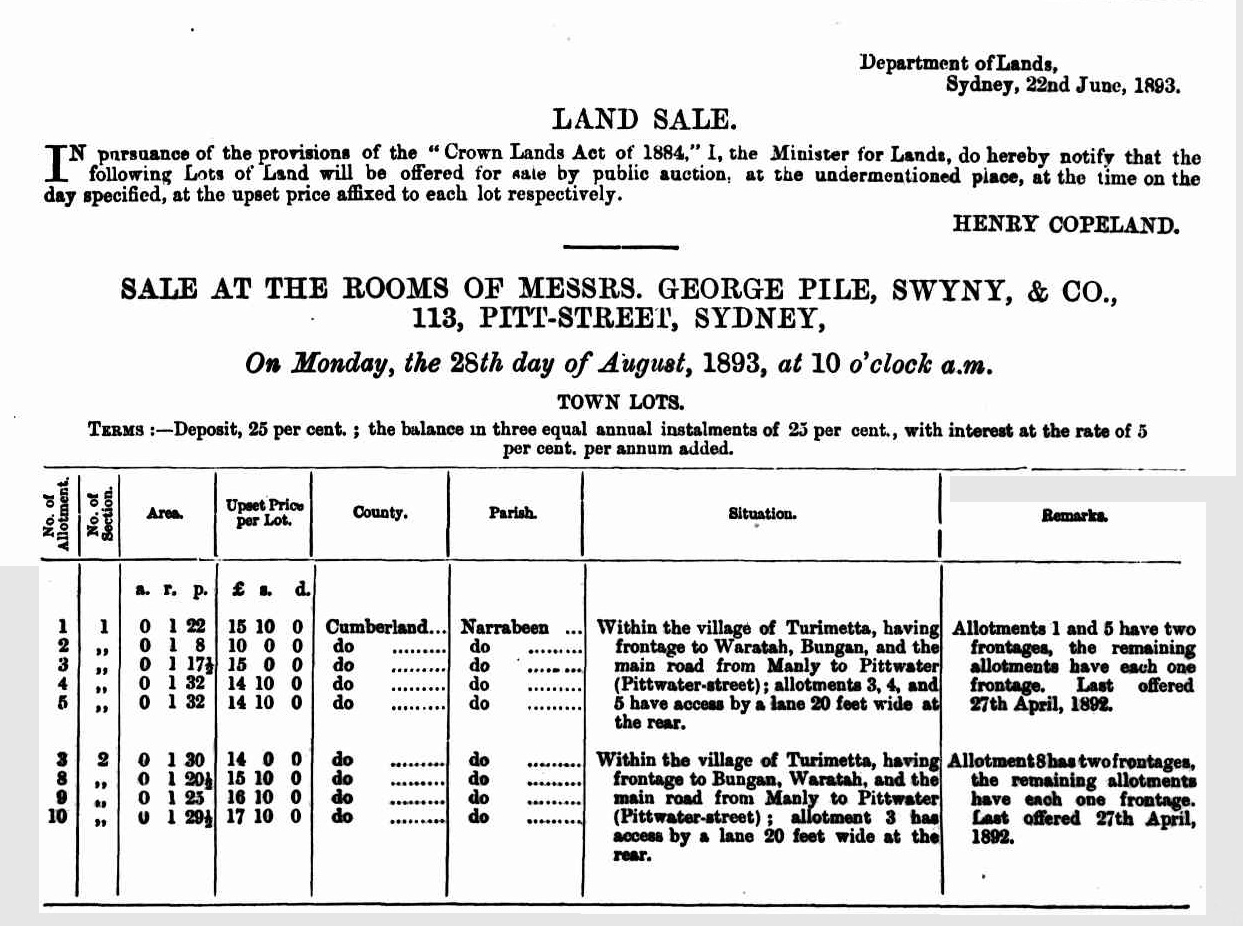
.jpg?timestamp=1563247908665)
.jpg?timestamp=1563248040485)
.jpg?timestamp=1563247972629)
LAND SALE. (1893, June 22). New South Wales Government Gazette (Sydney, NSW : 1832 - 1900), p. 4977. Retrieved from http://nla.gov.au/nla.news-article222202957
The names given to this initial layout of streets are listed as 'Vesper, Waratah, Narrabeen, Wangara, Mona, Bungan, and Dygal' streets. Apart from those that are clearly named places, or to mark where the St John church was moved, Waratah indicates where these glorious flowers and plants grew in this area, while 'Dygal' is also the name for the native plant, Melia azedarach, a species of deciduous tree in the mahogany family, Meliaceae, that is native to Indomalaya and Australasia.
Wangara is an aboriginal word, when used for the place-name of Wangaratta in Victoria it has a meaning of "nesting place of cormorants" or "meeting of the waters" - all of which would have applied to the landscape and fauna of this part of Mona Vale as it was then.
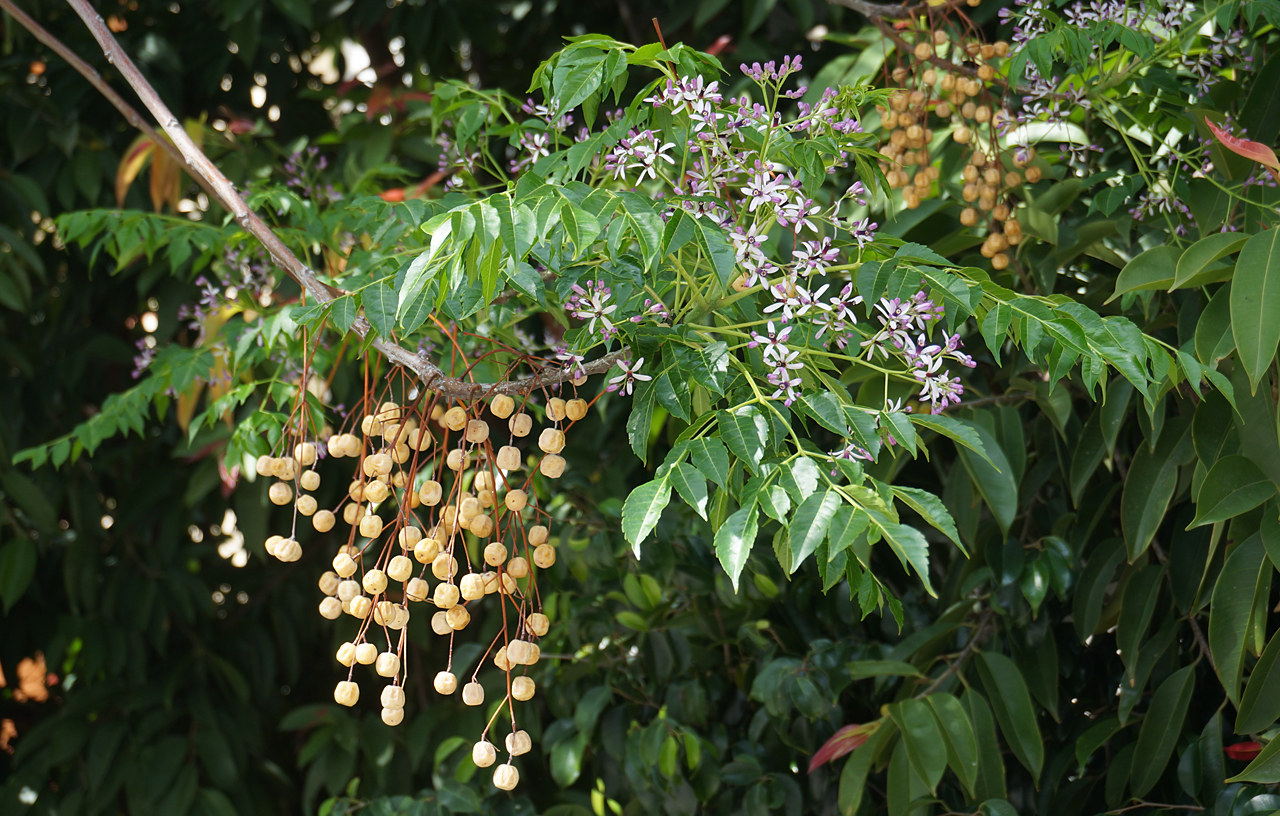
Melia azedarach; Leaves, flowers, and fruit - photo by Anna Anichkova
The land sale of 1893 was followed by:
CROWN LAND SALE, ALLOTMENTS £6 to £17 each. Village of Turimetta, close to Rock Lily Hotel Pittwater; day of sale, 25th January, 1897 at 11.30 a.m. E. C. V. Broughton. Auctioneer, 260 Pitt-st. Sydney. Advertising. (1896, December 26). Evening News (Sydney, NSW : 1869 - 1931), p. 8. Retrieved from http://nla.gov.au/nla.news-article108215572
Crown Land Sale. As announced in our advertising columns, Mr. E.C. V. Broughton, under instructions from the Minister for Lands, will conduct a Crown land sale at his rooms, 250 Pitt-street. The land to be offered comprises sixty-six blocks in the village of Turimetta, adjoining the Rock Lily Hotel, Pittwater. Areas, from ½ s to nearly 3s. Upsets, from £6 to £22 per lot.. Terms, quarter cash, balance in three equal annual payments, interest 5 per cent. From the inquiry, evinced it is anticipated that a successful sale will result. Crown Land Sale. (1897, January 27). Evening News (Sydney, NSW : 1869 - 1931), p. 3. Retrieved from http://nla.gov.au/nla.news-article108861575
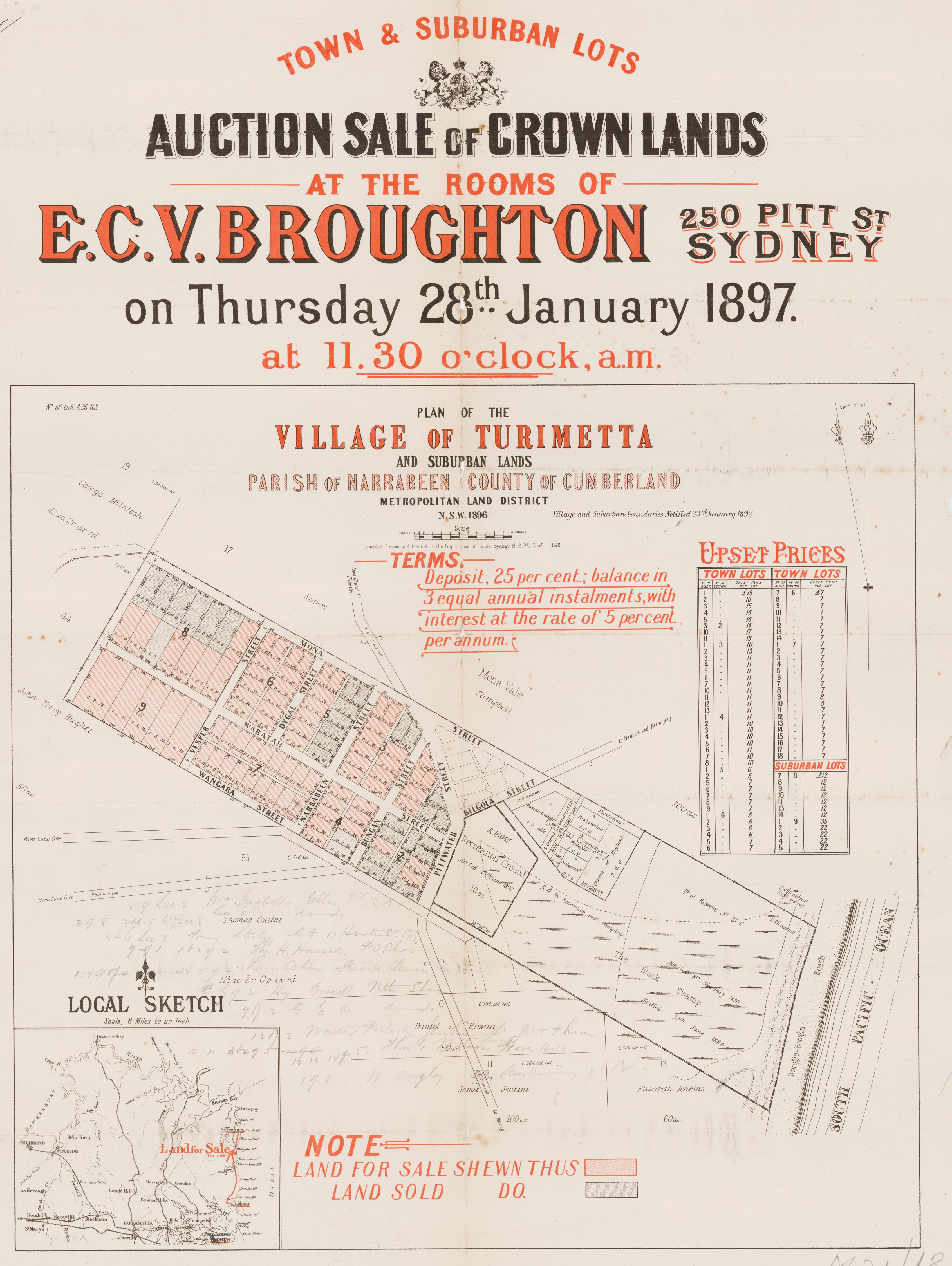
Plan of the Village of Turimetta and Suburban Lands - Parish of Narrabeen - Vesper St, Mona Street, Allen St, Pittwater St, Wangara St, 1897. Item c046820016 , from album Mona vale Subdivisions, courtesy State Library of NSW
Mr. E. C. V. Broughton sold on the ground on Saturday last the whole of Gilbert Park Estate, Canterbury, at prices ranging from 2a 7d to 17s per foot, and also, under instructions from the Minister for Lands, sold at his rooms, 250 Pitt-street, on Thursday last, the following lots in the village of Turimetta, adjoining the Rook Lily Hotel, Pittwater : — Section 1, lots.1 and 3, ... each ; section 2, lot. 10, .£18 ;lot. 11, £19; section 3, lot. 1, £10; lot. 2, £13; section 4, lot. 5, .£10 : section 7, lot. 10, £8; section 8, lot. 13, .£12. Total sales,-£120. FACTORIES AND SHOPS ACT. (1897, January 31). Sunday Times (Sydney, NSW : 1895 - 1930), p. 8. Retrieved from http://nla.gov.au/nla.news-article126248262
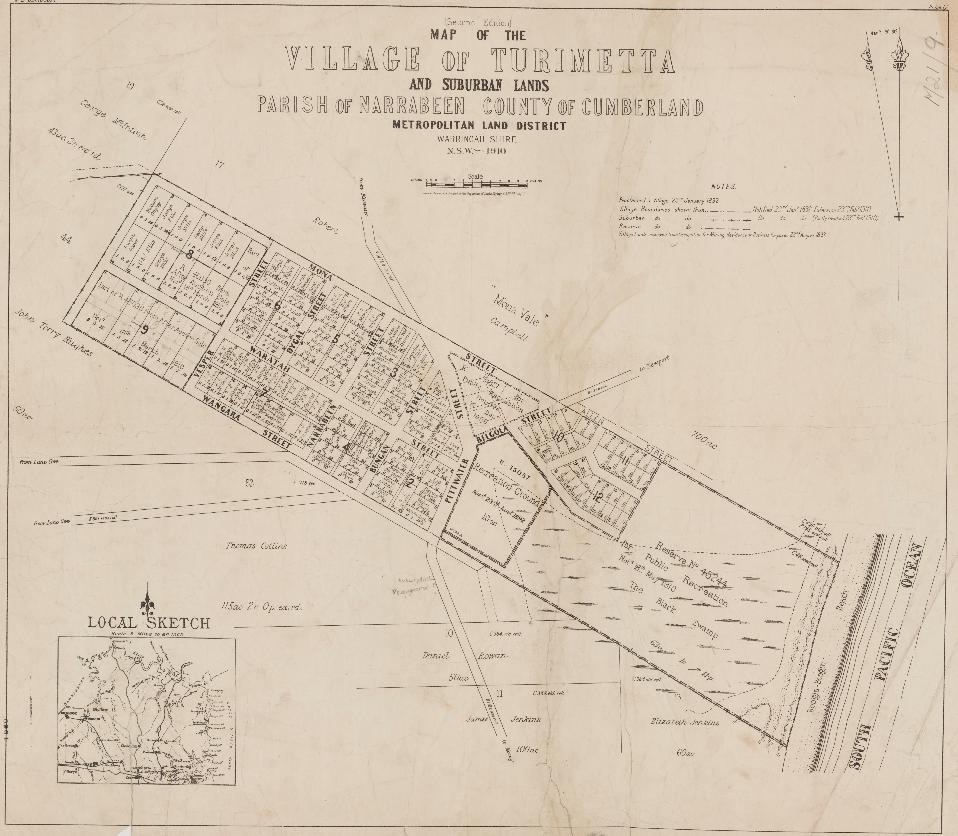
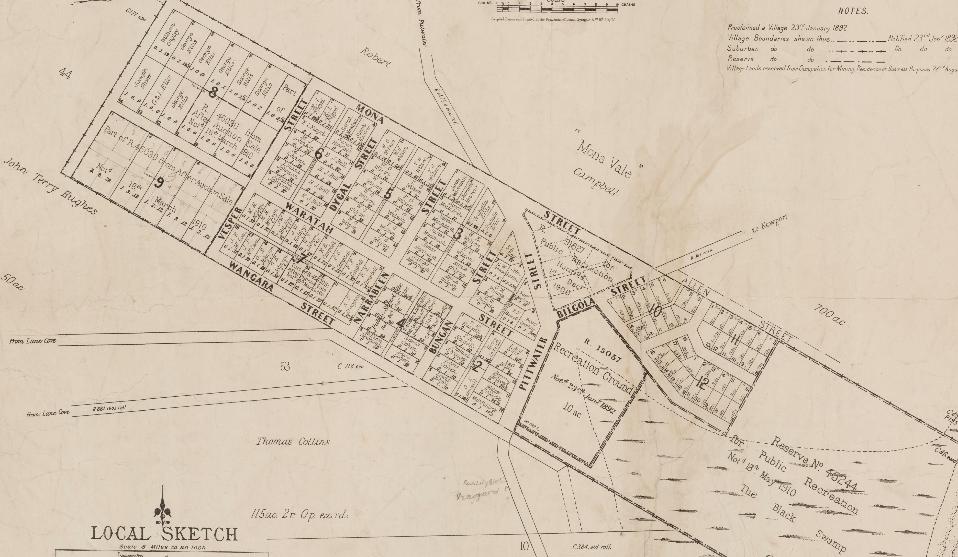
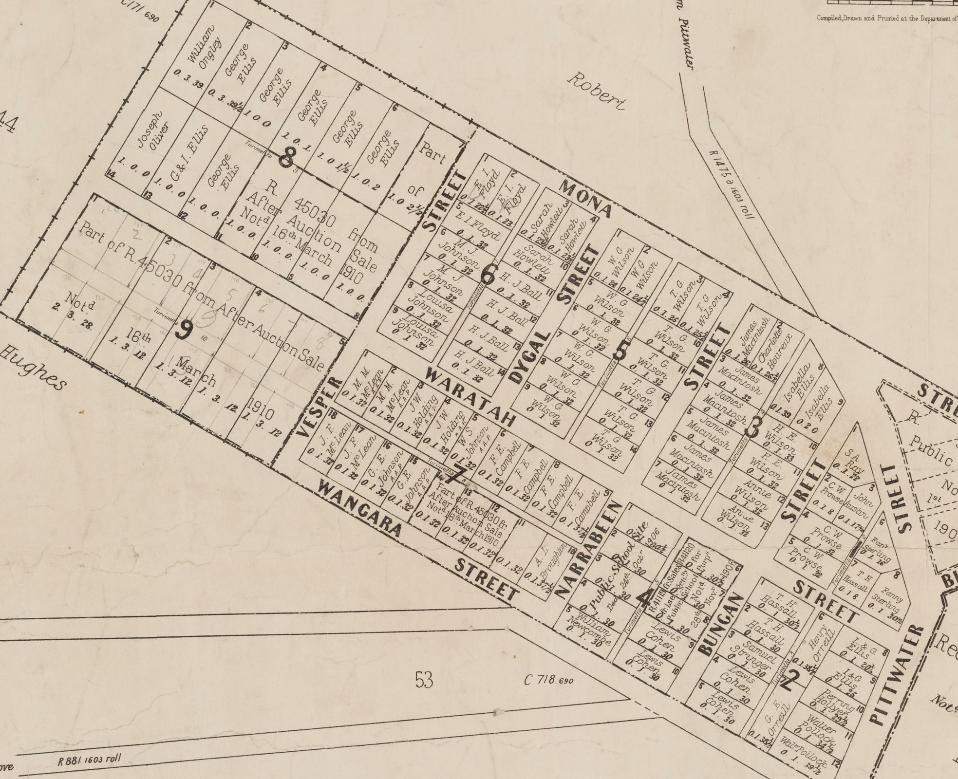
Department of Lands,
Sydney, 26th July, 1911.
NOTIFICATION OF CLOSING OF UNNECESSARY PART OF ROAD.
HIS Excellency the Lieutenant-Governor, with the advice of the Executive Council, directs it to be notified that, in pursuance of the provisions of the 20th section of the "Public Roads Act, 1902," the part of road hereunder described, which is no longer required, is hereby closed, and the land comprised therein freed and discharged from any rights of the public or any person to the same as a highway.
NIEL NIELSEN.
Description.
That part of road (lane), 31 links wide, separating allotments 1, 2, and 3 from allotments 6, 7, and 8, of section 4, village of Turimetta, parish of Narrabeen, county of Cumberland Warringah Shire No. 131. [Roads 1911-115-4] NOTIFICATION OF CLOSING OF UNNECESSARY PART OF ROAD. (1911, July 26). Government Gazette of the State of New South Wales (Sydney, NSW : 1901 - 2001), p. 4003. Retrieved from http://nla.gov.au/nla.news-article230684361
The intention by successive state governments to have a seaside place for the populace to restore and revitalise themselves at persisted 50 years later, with the sections set aside (as shown above) being devoted to weekend leases (and income for the government) until parts of the land set aside under the scheme were cancelled 25 years later.
The leases are first offered in a post World War I Sydney where so many young men were returning to the area. Many others came too to settle in an area a lot quieter or to rejoin family members, such as Captain Carl Gow of Palm Beach jetty, or his mate from the trenches and former Bay View School student, Reginald Howlett, or Church Point's Alfred Ernest Burton and Stanley Raymond Hummerston.
Arthur Rickard, who sold so many blocks of land from Narrabeen and in Mona Vale (Brock's estate) had a regular column, with poetry, to point out that:
Arthur Rickard & Co. Limited
Realty Specialists,
84b Pitt-street, SYDNEY.
(Their Column for Their Purposes.)
POLITICS AND PLEASURE
(By J.H.T.).
Our troubles are rapidly nearing an-end,
Like time on" the "Wing they are fleeting,
You gather that much if - you chance to attend
Almost any political meeting.
You gather as well that the prices are steep,
There is an exception, for talk's very cheap.
The candidates— National, Farmer, or Lab'.
Give hope to the spirit dejected,
And tell, with a wonderful gift of the gab,
The things they will do If elected.
on waves of prosperity soon we shall float —
Provided, of course, for the speakers we vote.
The bold profiteer they will speedily slay;
With poverty none shall be troubled;
No one shall work longer than four hours a day, ,
And wages all round will be doubled.
They promise all this, but a fact to deplore !
Is that we have heard It so often before.
Now what a relief for a moment to turn
From blather and blither to reason.
And think of the holiday most of us earn
At Easter, the beautiful season.
The season of pleasure which nought can excel,
When we pack the old kit and go off for a spell.
Consider what unalloyed pleasure 'twill be,
When, free from, your daily employment,
You hasten away to a. camp by the sea,
With Its healthy, alfresco enjoyment.
A neat little camp on the beautiful shore,
With boating and surfing and fishing galore.
And — this should be very extensively known —
The pleasure is very, much greater
When holidaymakers have camps of their own,
It's cheaper and much up-to-dater.
For handy camp sites, such as quoted below,
Call in and consult Arthur Rickard and Co.
Any one of the following choice weekend seaside sites may be secured on Rickard's Easy Terms — camp blocks £1 down and 10/ per month: —
In the MANLY DISTRICT, there is MONA VALE, reached by tram to Narrabeen, thence motor 'bus. Here close to the splendid Brock's Surf Beach charming sites for week-end or residential homes, 50 x 150, are priced at from 35/6 per foot.
Further on, on Flood's Peninsula, one of the most picturesque spots In Australia, we have a few choice sites for restful retreats at 25/6 per foot. In the same district, in By the Lake Estate, a few minutes' walk from Church Point, we have a few acre blocks at from £40 each. Arthur Rickard & Co. Limited (1920, March 7). The Sun (Sydney, NSW : 1910 - 1954), p. 3. Retrieved July 19, 2019, from http://nla.gov.au/nla.news-article221383818
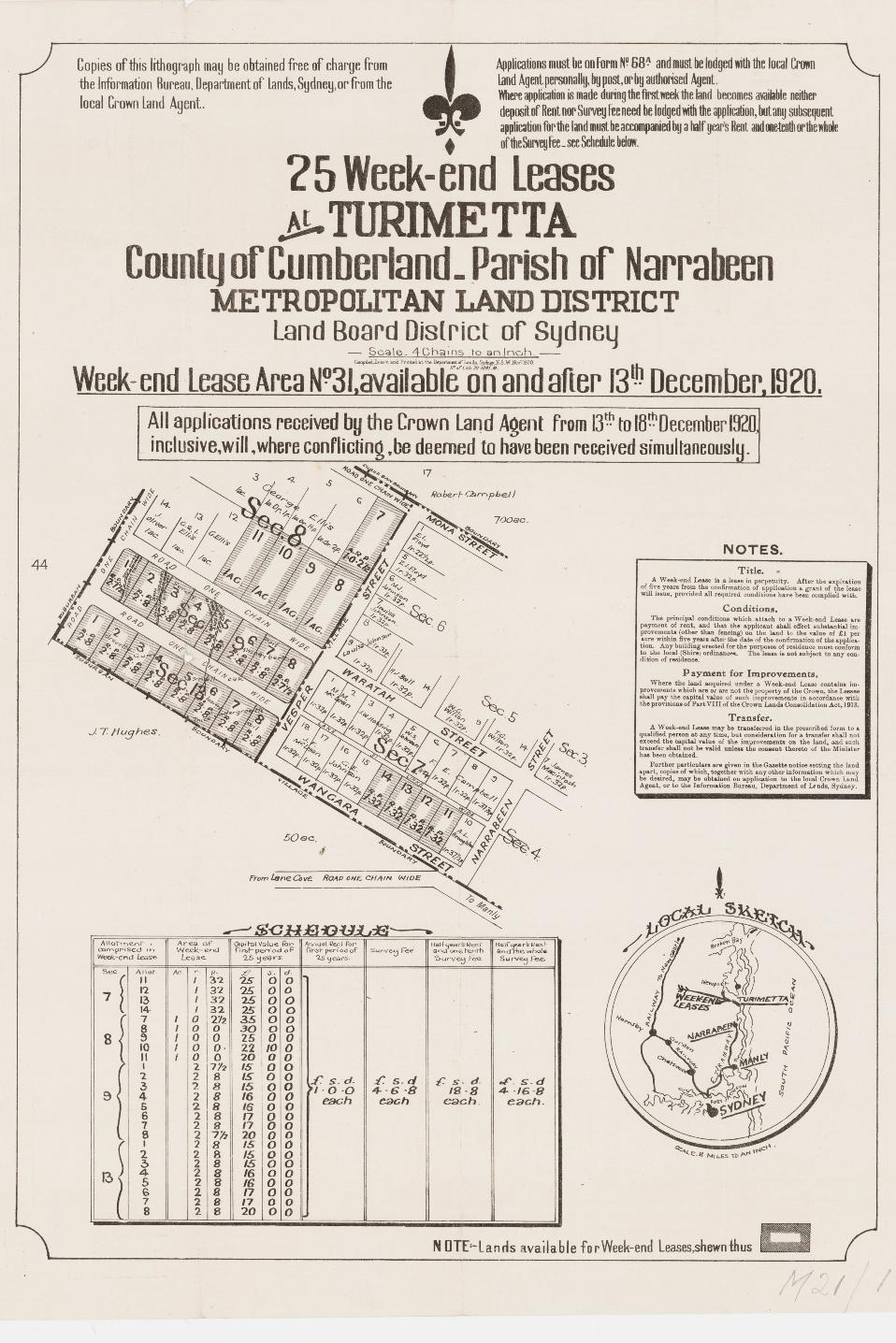
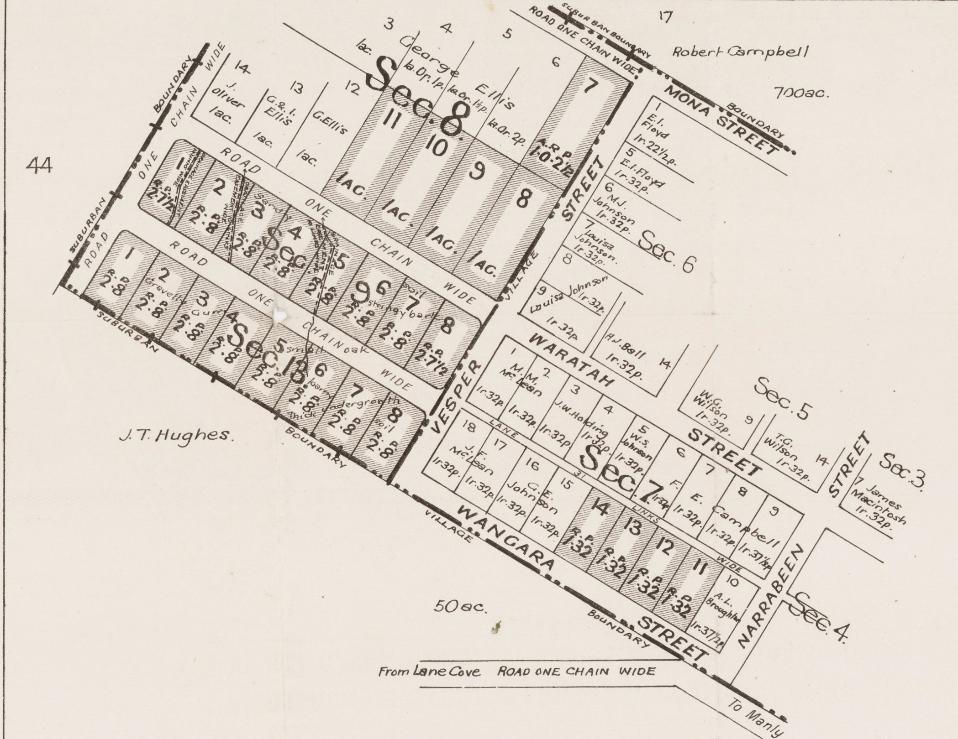
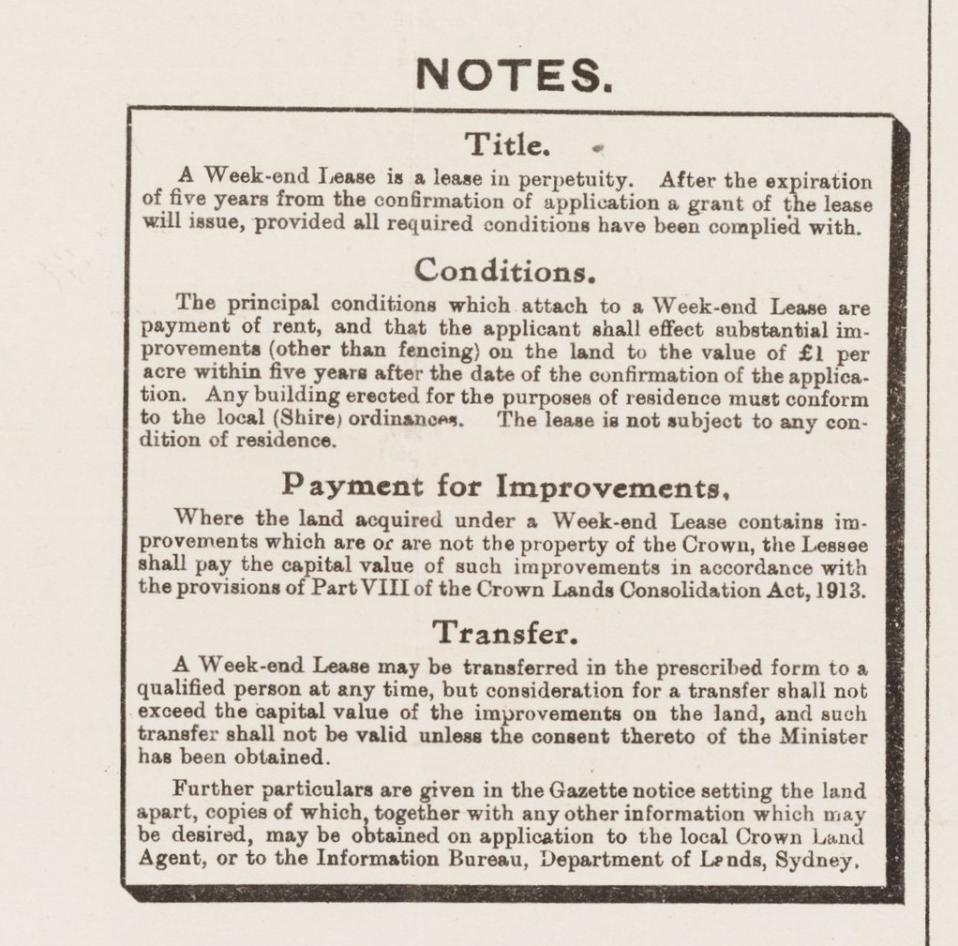
Sydney, 14th September, 1945.
REVOCATION OF AREA SET APART FOR WEEK-END LEASE AREA.
IT is hereby notified that, in pursuance of the provisions of the Crown Lands Consolidation Act, 1913, the area set apart for Weekend Lease Area, particularised hereunder, is hereby revoked. J. M. TULLY, Minister for Lands.
land District. Metropolitan Class or Holding for which the Lord was set apart.
Week-end Lease Area No. 311 Date of Notification. 22 Oct., 1920 Parish. Narrabeen ... County. Cumberland (Village | Turimetta), Shire. Warringah...
Area. a. r. p. 10 0
Part Revoked. Allot. 10, sec. 8. Turimetta. Papers 2s o. L. 45-5,252 REVOCATION OF AREA SET APART FOR WEEK-END LEASE AREA. (1945, September 14). Government Gazette of the State of New South Wales (Sydney, NSW : 1901 - 2001), p. 1639. Retrieved from http://nla.gov.au/nla.news-article222031151
The Houreux Rock Lily Lands
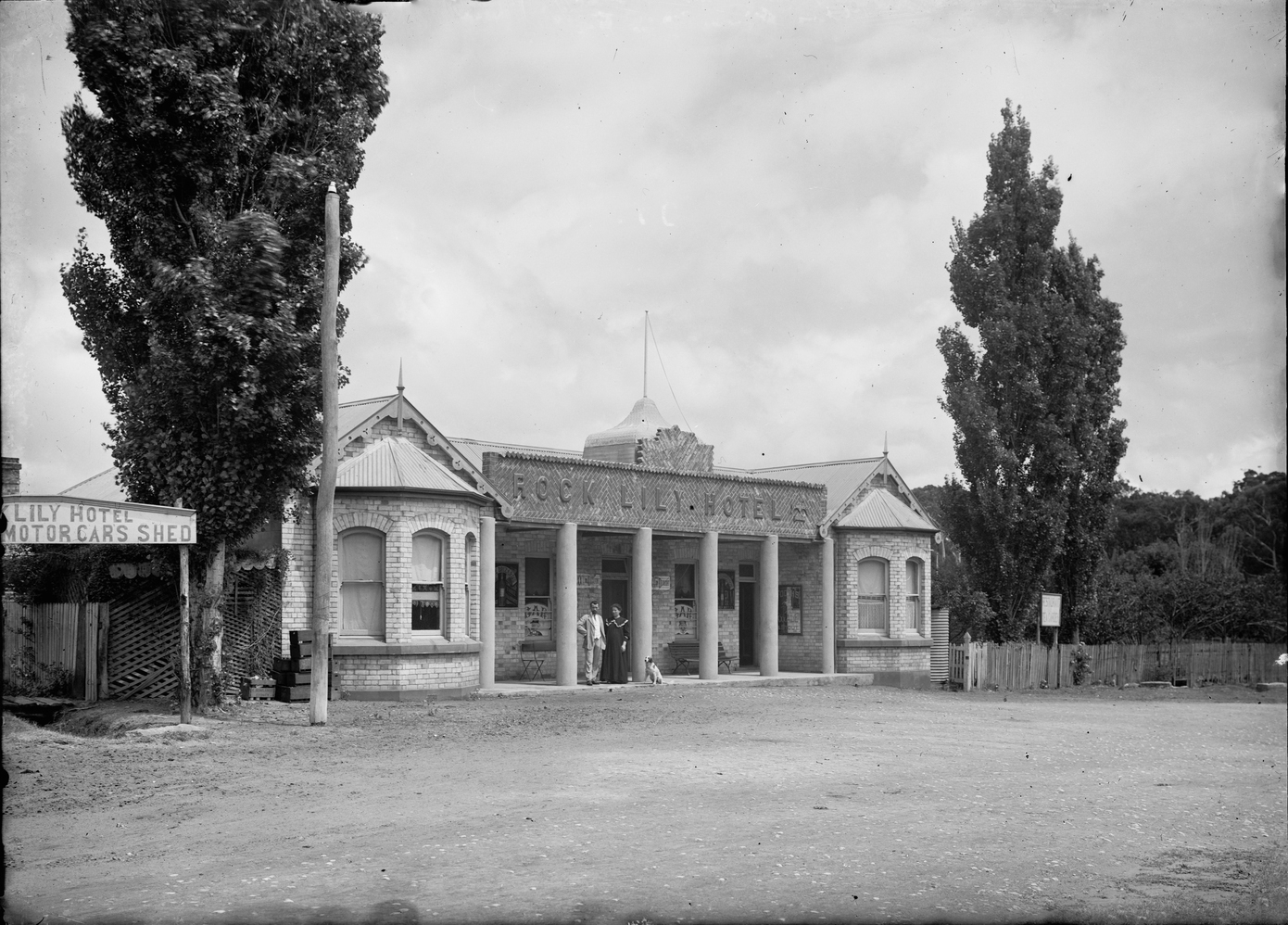
The Rock Lily, Mona vale. Circa 1900-1912, Image No.: a2005211h, courtesy State Library of NSW, from State Library of NSW Album: Portraits of Norman and Lionel Lindsay, family and friends, ca. 1900-1912 / photographed chiefly by Lionel Lindsay
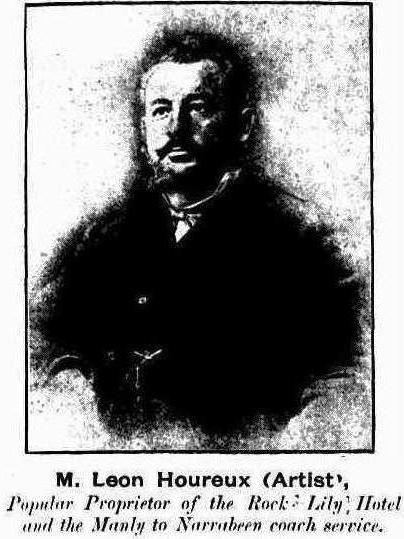
A man of energy and determination, with a penchant for fine wine and food, Leon Houreux also had a taste for creating. His murals or paintings, which covered the walls of the Rock Lily Hotel at Mona Vale, were a source of delight and bemusement to guests.
Originally describing himself as a farmer of Narrabeen, some sources state living in a hut at Warriewood and employed as a timber-cutter, Leon was also rumoured to be one of those who had an illegal still in the farming community Pittwater was during his tenure here.
Arriving, with wife Marie, from France and leaving daughter Justine Leontine at home. Leon Houreux had a look around first to decide where he would settle, travelling to South Australia in 1882.
Records of Marie disappear before he settled into his hotelier life. Leon is listed as aged 38 and Marie as aged 34 in the Public Record - Shipping Lists, Unassisted, of Victoria. Their name is spelt Hourex in this instance.
City of Adelaide, A S N Co 's s.s. , 1,000 tons, David Walker, for Sydney Passengers-saloon. Mr and Mrs Houreux, Mr and Mrs Hodgkins, Mr and Mrs G Godfrey, Mr and Mrs D Cashmore, Mesdames G Anderson .... Masters Lomax, Godfrey, and 30 In the Steerage W Siddeley and Co , agents. SHIPPING INTELLIGENCE. HOBSON'S BAY. (1882, September 28). The Argus (Melbourne, Vic. : 1848 - 1957), p. 6. Retrieved from http://nla.gov.au/nla.news-article11554410
ANGLO_ FRANCO HAIR DRESSING SALOON. Special attention to ladies and children. Hot baths, 1s. HOUREUX. 96 King-street.Advertising. (1883, May 30). The Sydney Morning Herald (NSW : 1842 - 1954), p. 1. Retrieved from http://nla.gov.au/nla.news-article28373582
There are advertisements that show he was associated with Gustave Adolphe Lix, who came out to Australia from France for the International Exhibitions in Sydney and Melbourne, then stayed on, and is shown in possession of 640 acres in Warriewood by 1886.
Mr. Lix may have hired Leon or been associated with the building of or cutting down trees for The Ingleside Powder Mill.
A cancelled Land Map of 1905 shows the 640 acres of Warriewood Gustave Lix land is then owned by J K Heydon.
Born in or close to 1836, Monsieur Lix would have been around 50 years of age when his name was affixed to land in Warriewood in 1886, the same year Leon Houreaux, another French gentleman 'farmer' and timber cutter in Warriewood prior to then, applied for a publicans licence - this follows on from the crown land sales and portions of acreage set aside to establish a place for recreation and is the first of two such places in the Mona Vale district that would offer accommodation and food for visitors. Booth's Hall in the Mona Vale village streets would also offer a place for visitors to have a dance.
NOTICE OF APPLICATION FOR A PUBLICAN'S CONDITIONAL LICENSE. I, LEON HOUREUX, of Narrabeen, Farmer, do hereby give notice that I desire to obtain, and will at the next Licensing Court to be held at Sydney on the 10th day of July next, apply for a certificate authorising the issue of a publican's conditional licence for a house to be erected at Narrabeen, and to contain eight rooms, exclusive of those required for the use of the family, set in conformity with the provisions of section SO of the Licensing Act of 1882. Dated the 18th day of June, 1885, Signature of applicant-LEON HOUREUX. Address-Farmer, Narrabeen. Advertising. (1885, June 22). The Sydney Morning Herald (NSW : 1842 - 1954), p. 2. Retrieved from http://nla.gov.au/nla.news-article28362579
Mr Houreaux succeeded in building this premises and in obtaining a licence as a publican. The Rock Lily Hotel was open prior to February 1886 and perhaps soon after July 1885, as it was being used as a landmark in this advertisement and the gentleman won his licence:
Leon Heureux, a farmer, applied for a licence for a house to be erected at Narrabeen. The police objected, on the grounds that it is not required, the Newport Hotel being only three miles distant, and that there was no population to support a second house. The application was granted. Licensing Court. (1885, July 17). Evening News (Sydney, NSW : 1869 - 1931), p. 6. Retrieved from http://nla.gov.au/nla.news-article111020028
NARRABEEN, BEYOND MANLY.TO SHALL CAPITALISTS, SPECULATORS and others. COLLINGWOOD ESTATE, in Blocks ranging from 3 ACRES to 6 ACRES, fronting Lane Cove-road, at the junction of the Pittwater road, at the Rock Lily Hotel, between Narrabeen Lagoon and Pitt-water, reached by a good road from Manly. AUCTION SALE,FRIDAY, February 12, at the Rooms, at 11 o clock. The TERMS will be very liberal, small deposit, balance by instalments. Lithos. now ready. These blocks have good soil, and are in every way adapted for cultivating Tines and fruit trees. A capital chance to secure a large area in a suburb, fast coming to the front, and only a few hours' run from the city. - RICHARDSON and WRENCH. Advertising. (1886, February 6th and February 10). Evening News (Sydney, NSW : 1869 - 1931), p. 3. Retrieved from http://nla.gov.au/nla.news-article111190579
Leon was one of the purchasers of the above lands, then owned by Frederick Caesar Hedemann.
In 1887 Leon applied for a Naturalisation certificate, required by non-British subjects who wished to own land, and purchased property at what became known, for a while, as the area of ‘Rock Lily’. Here he built an outstanding premises consisting of:
‘THE HOTEL contains 10 Bedrooms, Large Bar, 3 Dining rooms, 4 Sitting-rooms, kitchen, 2 storerooms, large verandah, capable of sitting 120 guests, commodious stabling accommodation, also Cottage of 4 rooms, etc. THE GROUNDS surrounding the Hotel comprise an area of 4ac. 1rd. 20per:. and are laid out in orchard and vegetable garden, flower garden, vine- yard etc. The whole most artistically arranged, including several aviaries. Immediately opposite the Hotel are RECREATION GROUNDS of 1 ACRE in a tent, fitted up for Pleasure and Pastime.'
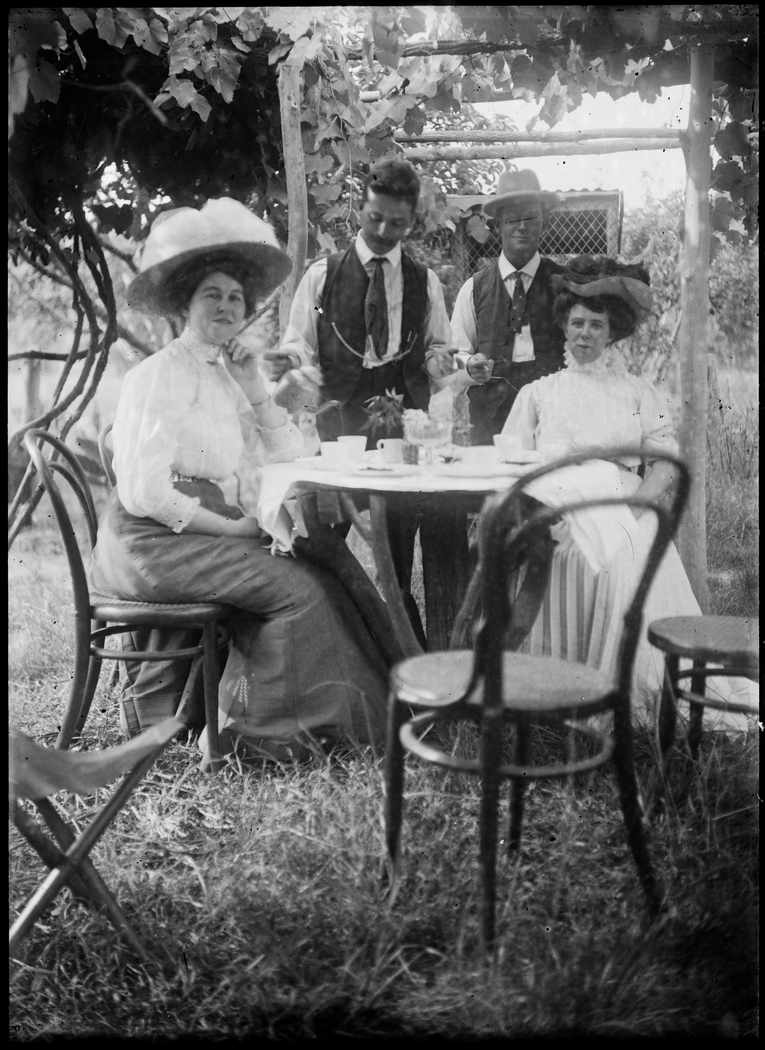
'In the garden at Rock Lily', from State Library of NSW Album: Portraits of Norman and Lionel Lindsay, family and friends, ca. 1900-1912 / photographed chiefly by Lionel Lindsay, Image No.: a2005208h. courtesy State Library of NSW
Vineyard-street in Mona Vale is likely to have acquired its name from grape vines planted by Mr. Houreux and shows as such on the land sale by Frederick Caesar Hedemann in 1885, as do the names of Mr. Hedemann's family members:
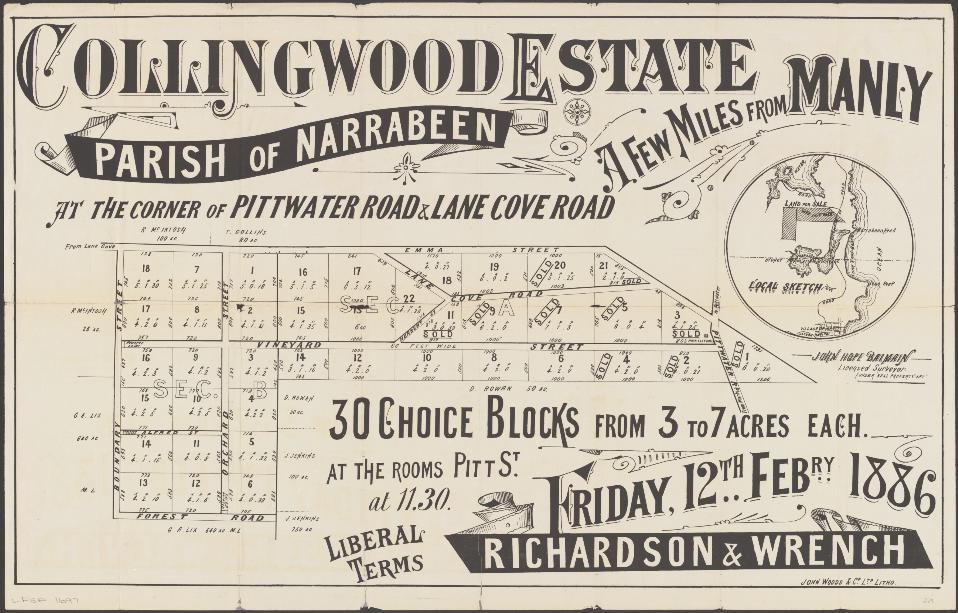
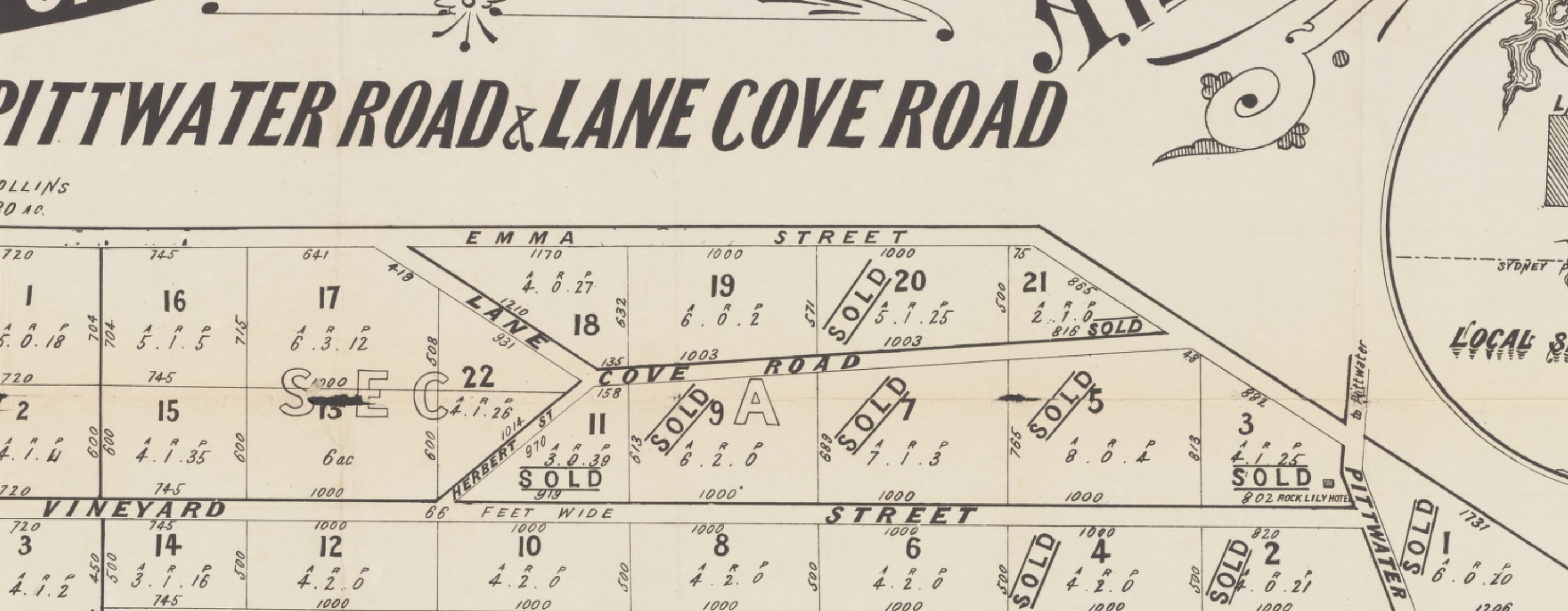
Richardson & Wrench & Balmain, John Hope & John Woods & Co. (February 12th 1886). Collingwood Estate, Parish of Narrabeen, a few miles from Manly, at the corner of Pittwater Road & Lane Cove Road 30 choice blocks from 3 to 7 acres each : at the rooms Pitt St., Friday, 12th Febry. 1886, at 11.30 Retrieved from http://nla.gov.au/nla.obj-230339763 - and section from showing Herbert Street and Emma Street.
Mr. Houreux of Rock Lily is looking well. His garden literally teems with beautiful grapes-of which, by the way, the monkey is very fond. Mr.Greig of Newport has not been so robust as usual the last few days, but is augmenting in vigour. Mr. Bulfin, that genial and gentlemany P.O. old-timer, is hale and vigorous. There is a fine pianiste at the Newport Hotel.
The road between Rock Lily and Newport reveals many signs of progress—the markings of new roads, etc. Mr. Brock's castles of enchantment still become more wonderful. They stand upon the sea-fronting hills like mediaeval palaces, august, grand, ambitious. The whole estate is now a beautiful, a stupendous, and a daring picture. Who but he would show such boldness of conception, such magnificent bravery of investment. It is hoped he will be repaid for his courage and his thought. Meantime, the estate is an evidence, of painstaking effort. Newport is improved by the wharf and boat shed. Personal. (1906, February 24). The Mosman Mail (NSW : 1898 - 1906), p. 2. Retrieved from http://nla.gov.au/nla.news-article247013435
Leon Houreux, owner of the Rock Lily Hotel, whose great gusto and apparent passion for life seems to have been tempered by illness, perhaps due to an enormous appetite, and battles in court to protect his investments as illustrated below in a dispute with the Mona Vale Land Company. In 1902:
IN CHAMBERS. (Before Mr. Justice Pring.) A REAL PROPERTY MATTER. RE Mona Vale Land Company, Limited
(L. Houreux, caveutor). 5. Mr Sheppard, instructed by Messrs Lumsdaine and Loibius, appeared for the Mona Vale Land Company, Limited, and moved for an order directing the caveat of Leon Houroux to be removed from the file, Mr Shand, instructed by Mr L P Roydon, appeared for the caveator to oppose the application. It appeared that the Mona Vale Land Company, Limited, had applied to bring certain lands at Pittwater, parish of Narrabeen, under the Provisions of the Real Property Act, and Houreux had lodged a caveat to restrain the Registrar General from proceeding with the application, on the ground that he was the owner of the land adjoining or near to the land the subject of the application, and that the application was granted it would result in the closing of roads now existing and seriously reduce the value of the lands purchased by him from the Mona Vale Land Company. It was now sought to have the caveat removed on the ground that the caveator had no interest in the land which was the subject of the application. His Honor said that the matter was not one of law, but of fact as to whether the roads referred to by caveator were reasonably near his property, and if closed would reduce the value of his land. Application dismissed with costs IN CHAMBERS. (1902, August 21). The Sydney Morning Herald(NSW : 1842 - 1954), p. 4. Retrieved from http://nla.gov.au/nla.news-article14509272
The land referred to above runs on the Pittwater estuary side of the Mona Vale-Bungan Beach-Newport escarpment or bridge. Guy Jennings in his book ‘A History of Newport’ reports this two storey stone house to the left in picture was never finished and became a playground for children. Fence opposite is that of Newport Public School. The unfinished house described above, soon after Mr Houreax's passing and offered for sale, and that in this photograph, seem very alike. Scrutiny of early Land Maps also points to this structure. The building also shows up in photographs taken for the Mona Vale Land Company's sales in the area.
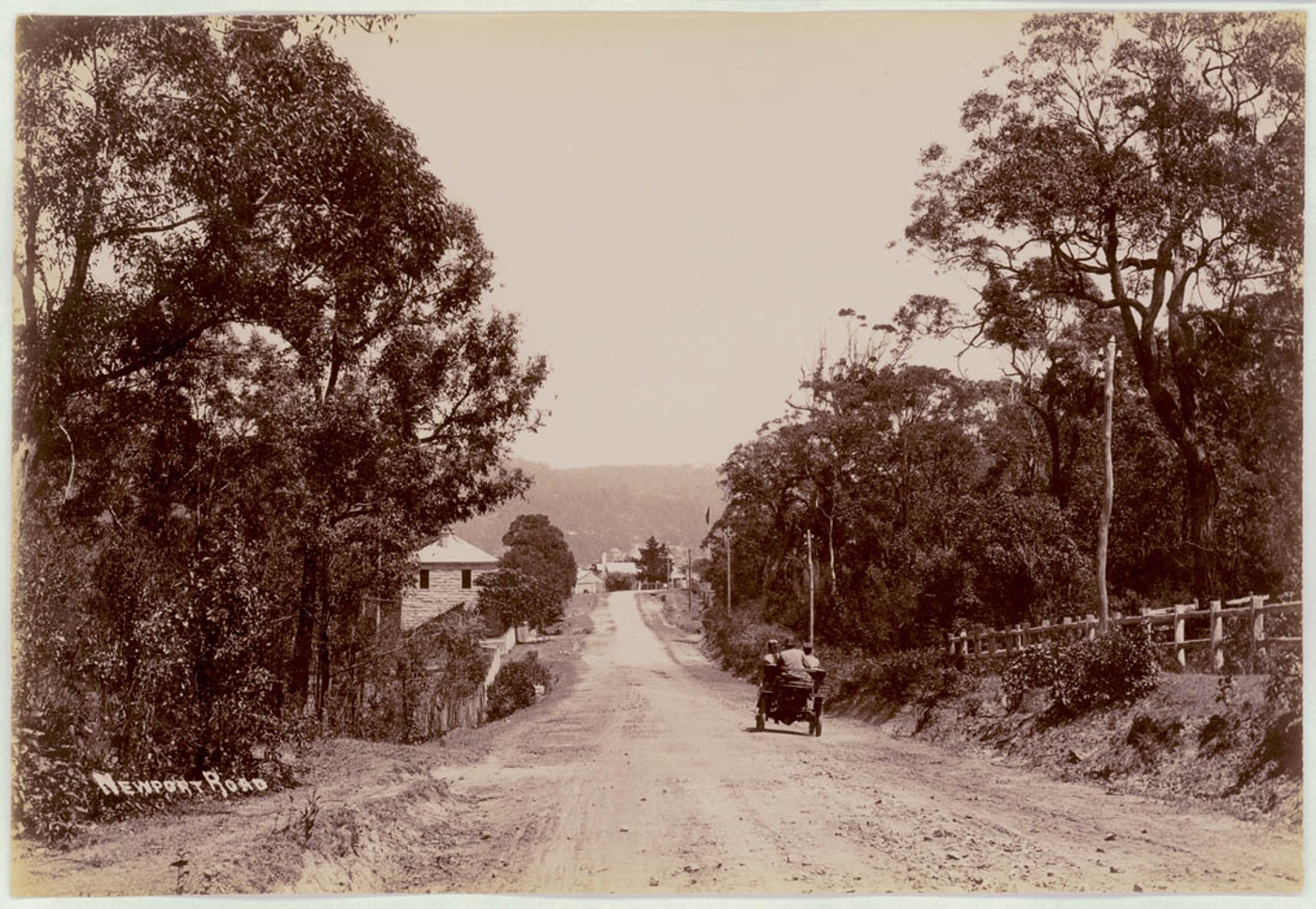
'Newport Road' - ca. 1900-1910, Image No.: a116490h, courtesy State Library of NSW.
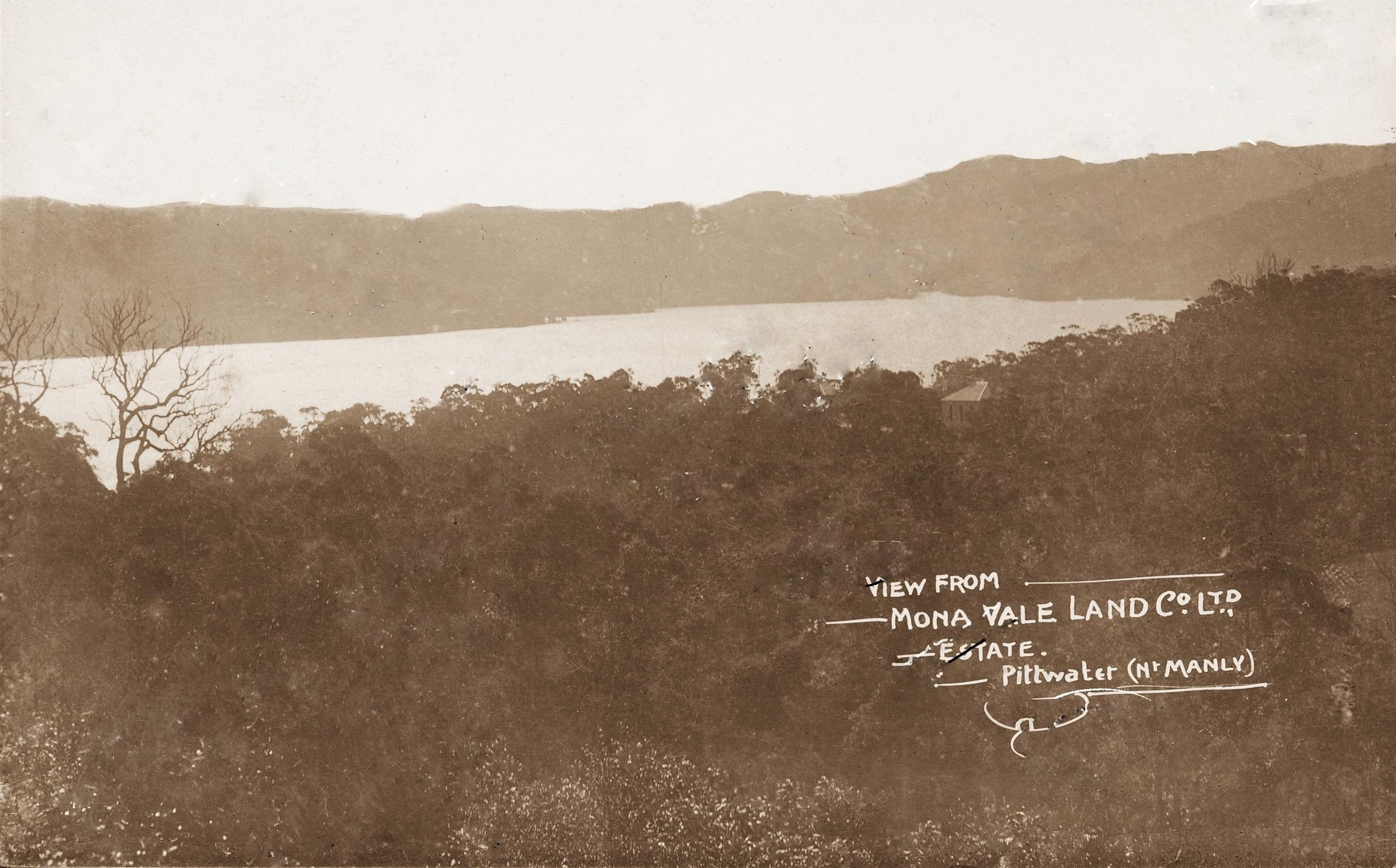
An earlier skirmish with one of the Newport Hotel licencees also points to Mr. Houreux owning land here:
William Boulton to William Bulfin, Newport Hotel, Newport. LICENSING COURT. (1887, April 1). The Sydney Morning Herald (NSW : 1842 - 1954), p. 4. Retrieved from http://nla.gov.au/nla.news-article28349476
William Bulfin and his wife Alice were not the licencees for very long, although longer than others. The Houreux incident:
William Bulfin, licensee of the Newport Hotel, Newport, was summoned by Leon Houreux, licensee of the Rocklily Hotel, Pittwater, for stealing eight fencing rails, the property of the complainant. A number of witnesses were heard for tho prosecution. The evidence for the defence was in effect that the rails were floating about in the water, and were gathered by a man named Brooks; Bulfin swore he was not guilty of the offence. Mr. Le said he was not satisfied as to the innocence of Bulfin. It was evident that a number of untruths had been told by some of the witnesses. The defendant was ordered to pay the value of the rails, 4s.,and fined 40s., or in default two months to gaol. POLICE. (1889, June 5). The Sydney Morning Herald (NSW : 1842 - 1954), p. 11. Retrieved from http://nla.gov.au/nla.news-article13733869
By 1904 he was advertising the whole business, complete with furnishings - ostensibly to retire, but perhaps to return home to France. An advertisement announcing Leon's plan also gives an insight into the extent the business had been built up by this stage:
THE ROCK LILY HOTEL, NARRABEEN VIA MANLY - BY ORDER OF THE OWNER AND PROPRIETOR - MONS LEON HOUREUX, WHO IS RETIRING FROM BUSINESS. THIS POPULAR AND WELL - KNOWN HOTEL, together with the furniture and Effects for sale in one line as a going concern. A FREE HOUSE NO LEASE NO BONUS.
THE ROCK LILY HOTEL FRONTS THE PITTWATER ROAD and is situate in a most delightful position within pleasant driving distance of Manly. Mons Houreux has made the place popular and exceedingly attractive especially during the summer season and it is now a well known and much frequented resort doing a profitable and increasing business.
THE HOTEL contains 10 Bedrooms, Large Bar, 3 Dining rooms, 4 sitting- rooms kitchen 2 storerooms, large verandah capable of sitting 120 guests, commodious stabling accommodation also a Cottage of 4 rooms etc.
THE GROUNDS surrounding the Hotel comprise an area of 4ac l rd. 25 per and are laid out in orchard and vegetable garden flower garden vine-yard etc The whole most artistically arranged including several aviaries. Immediately opposite the Hotel are RECREATION GROUNDS of 1 ACRE In extent fitted up for pleasure and Pastime
HARDIE and GORMAN have received instructions to sell by public auction at their Rooms 133 Pitt street at 11.30 a m on WEDNESDAY JANUARY 20th 1904, The above well known Hotel Property. INVENTORY of Furniture etc on view at the Rooms of the Auctioneers from whom cards to inspect the hotel can be obtained. NARRABEEN is a POPULAR WATERSIDE RESORT only a short d stance from Manly by vehicle and partly by tram The VIEWS of the OCEAN and country. Round are splendid and the facilities for BOATING, FISHING and SEA BATHING are very delightful. Advertising. (1904, January 2). The Sydney Morning Herald(NSW : 1842 - 1954), p. 15. Retrieved from http://nla.gov.au/nla.news-article14590362
Many ambiguous references are made about his relationship with Charlotte Boutin throughout the years of the Rock Lily's heydays. By 1901 Charlotte had purchased the license for the Narrabeen Hotel although she continued to be on hand at Mona Vale until at least February 1907.
Leon's daughter, Justine Leontine, sometimes named as Leontine Justine, was born in Paris. Her gravestone in Mona Vale Cemetry lists her date of birth as April 19th, 1873 meaning she was either 9 when her father came to Australia and 27 when she arrived in August of 1900. Victoria's Public Records Office - Shipping Lists, records among unassisted (paid for themselves) passengers:
HOUREUX L MISS 21 (age) AUG 1900 VILLE DE LA CIOTAT
Born in 1860, Auguste Briquet, described as an 'electrician of Mona Vale' , won the lady's heart and they were married, around the time Leon appears to be getting quite ill -
MARRIAGES BRIQUET-HOUREUX-May 28, 1906, at Sydney, by the Rev E Tremayne Dunstan, Auguste Briquet, to Leontine Houreux, daughter of Leon Houreux, of Rock Lily Hotel Pittwater. Family Notices. (1906, May 30). The Sydney Morning Herald (NSW : 1842 - 1954), p. 8. Retrieved from http://nla.gov.au/nla.news-article14775685
The Rock Lily did not sell. Leon passed away, apparently in debt as Leontine had to apply to have his debts wiped after his passing. He was buried in the Roman Catholic section of Manly cemetery. NSW Births, Deaths and Marriages Records note his parents as:
5520/1907 HOUREUX LEON Father: THEODORE Mother: ARMLEEMAI MANLY
DEATH OF M. LEON HOUREUX. The death is announced of M. Leon Houreux, at the Rock Lily Hotel, a few miles from Manly, at the age of 63. He had been ill for some time. M. Houreux was an identity of the district, he perhaps was best known in connection with the coaches that ran from Manly to Newport and district and carried the mail. M. Houreux was always conspicuous by His dress when on the box seat of a coach, and in charge of his well Known team of horses. Sydneyites who have visited the Rock Lily Hotel and have seen the paintings on the walls and passageways of the hostelry will agree that he had claims to an originality in his picture's of city men and scenes. DEATH OF M.LEON HOUREUX. (1907, April 27). Evening News(Sydney, NSW : 1869 - 1931), p. 6. Retrieved from http://nla.gov.au/nla.news-article115228077
The late M. Leon Heureux, of the Rock Lily Hotel, near Manly, prided himself upon his pictures, with which he adorned the walls of his hotel. He scorned frames, and worked his ideas on the walls. The designs were grotesque, and reminded the visitor of a schoolboy's efforts to draw a square cow or the primitive attempts of Japanese art. Yet poor Heureux was quite proud of them. The pronunciation of his name was often a difficulty to the visitor, but M. Heureux impressed it on the memory by crying out 'Hip, hip, hurro.' The hurro he reckoned would about do. PERSONAL. (1907, May 2). Freeman's Journal (Sydney, NSW : 1850 - 1932), p. 22. Retrieved from http://nla.gov.au/nla.news-article111278123
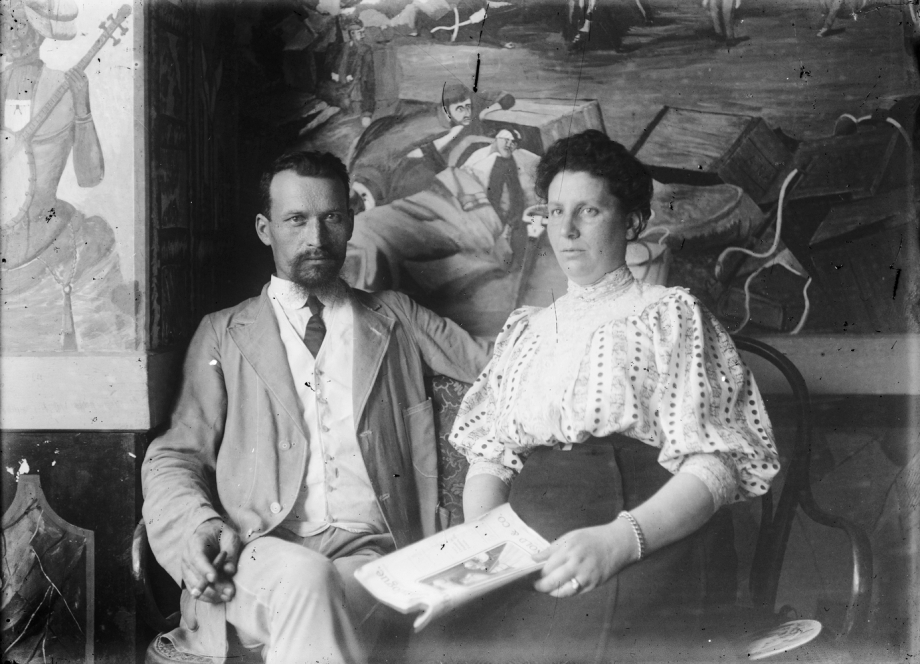
From State Library of NSW Album: Portraits of Norman and Lionel Lindsay, family and friends, ca. 1900-1912 / photographed chiefly by Lionel Lindsay. Image No.: a2005209h and below: a2005210h
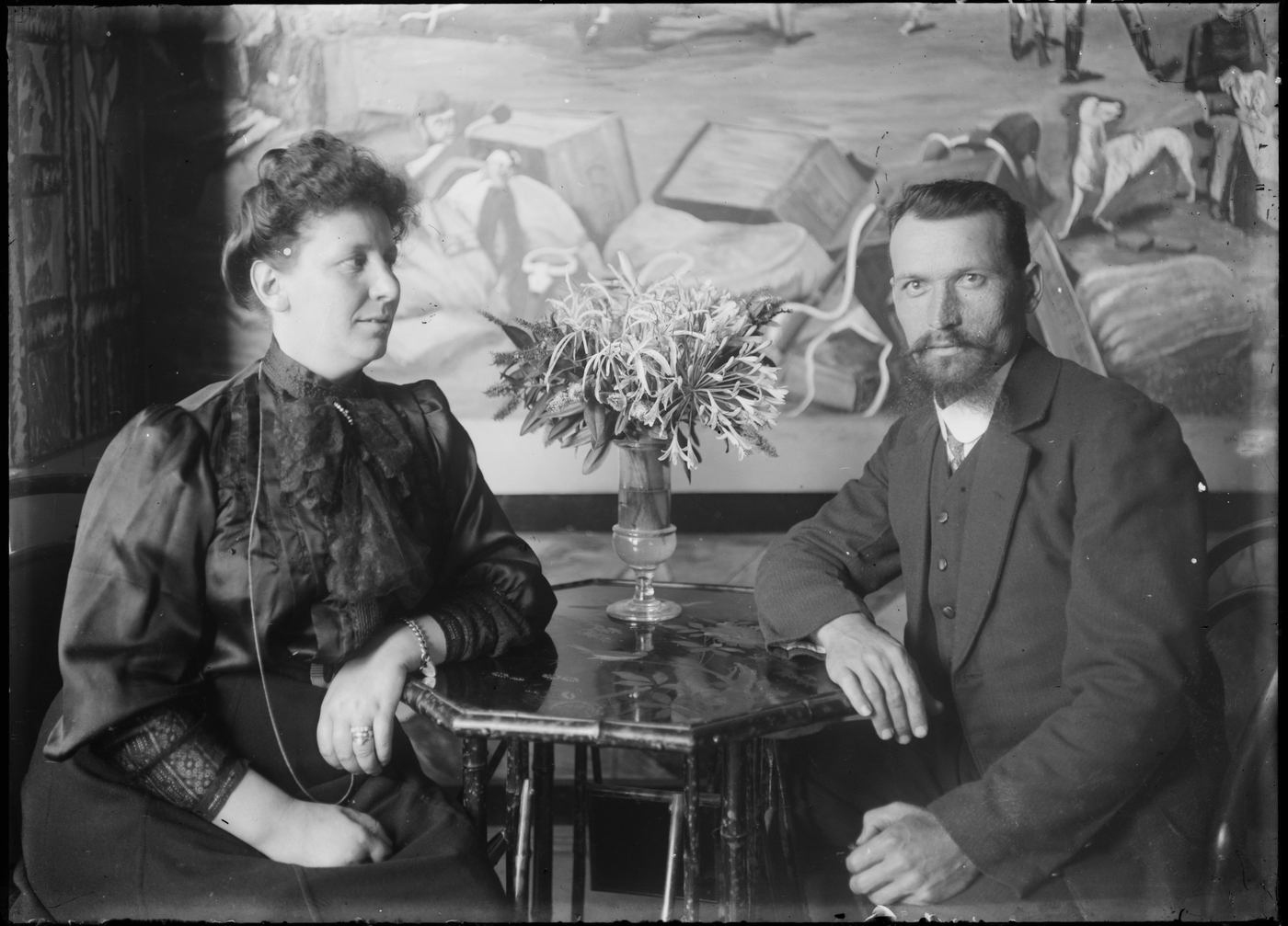
Leontine Justine, in photographs showing her, looks to have a retiring demeanour. Her husband, an electrician by trade,and whom the licence was transferred to, may not have had the same verbosity and zest for life that burned so brightly in Leon Houreaux. Or perhaps the Briquets simply wanted to return to France, or retire to the other family property at Newport, once it was finished.
Either way, after just a few years of running the Rock Lily, and seemingly saddled with mounting debts, the Briquets began attempting to sell off assets in land and structure forms and others were allowed to run what was once the most popular roadhouse in Pittwater. The advertisements for these assets indicate the extent of all Leon had accumulated.
The licence was transferred from his daughter, who inherited his wealth, and debts, to her husband:
Rocklily Hotel, Rock Lily, Manly, from Leontine J. Briquet -adminstratix of Houreux Leon, to Auguste Briquet;HOTELS CHANGE HANDS. (1907, September 28). Evening News (Sydney, NSW : 1869 - 1931), p. 5. Retrieved from http://nla.gov.au/nla.news-article112641966
PITTWATER, NEAR MANLY., RAPIDLY COMING TO THE FRONT AS A FAVOURITE HOLIDAY RESORT. 1. THE ROCKLILY HOTEL, A WELL-KNWON HOLIDAY HOUSE, standing In its own grounds, having frontage of 170 feet to the PITTWATER-ROAD, and 205 feet to VINEYARD STREET, also the Recreation Reserve opposite, having 112 feet frontage to the PITTWATER-ROAD, with an average depth of 276 feet, situated close to the junction of BAY VIEW and NEWPORT ROADS. The House Is built of brick, on brick foundation, with verandah In front, and wide verandah and grape trellis at side, and containing hall, bar, 2 dining rooms, 4 private dining rooms, sitting room, parlour, servants' dining room, 5 bedrooms, servants' bedrooms, store room, 2 lavatories, kitchen, wash- house, cellar in basement, detached bathroom.
IMMEDIATE POSSESSION. The LICENSE and GOODWILL go with the Property. THE TRAFFIC to and from Pittwater at WEEK ENDS and during the HOLIDAY SEASON is very CONSIDERABLE, and as the drive from Manly is comfortably- undertaken by MOTOR OMNIBUS or by UP TO DATE COACHES, MANY VISITORS are ATTRACTED to the DISTRICT. As a SEASIDE RESORT in the hands of an ENERGETIC MAN the ROCKLILY HOTEL might be made one of the FIRST SEASIDE HOUSES north of Sydney.
2. EXTENSIVE COACHING STABLES, occupied by Messrs. Cooper and Co., Coach Proprietors. They comprise stable (24 stalls), coach Houses, workshops, blacksmith' forge, shelter sheds, feed rooms, etc. . THE LAND about on to the hotel site, and has 324 feet frontage to VINEYARD-STREET, with a depth of 160 feet
3 NEWPORT. A WATERSIDE PROPERTY, comprising Lots 4 to 7, Section E, Newport Township, having 264 feet frontage to BEACONSFIELD-STREET, with a depth of over 200 feet, extending to the WATERS of PITTWATER, together with the weatherboard COTTAGE and UNFINISHED STONE RESIDENCE thereon. By Order of the Executrix of the late LEON HOUREAUX.
RICHARDSON and WRENCH, Ltd., will sell by auction at the Rooms, Pitt-street, on FRIDAY, 27th SEPTEMBER, at II o'clock, The above attractive properties at PITTWATER. E. TREVOR JONES, 5 Bond-street, is Solicitor to the Estate. Full particulars In future issue. (3289 - BY ORDER OF THE EXECUTORS ESTATE LATE Advertising. (1907, September 7). The Sydney Morning Herald (NSW : 1842 - 1954), p. 25. Retrieved from http://nla.gov.au/nla.news-article14879141
There are also records delved by other historians that show 'St Helena', a house that overlooked the Mona Vale sand dunes, had been built by Leon. His daughter and her husband leased this to visitors to the area.
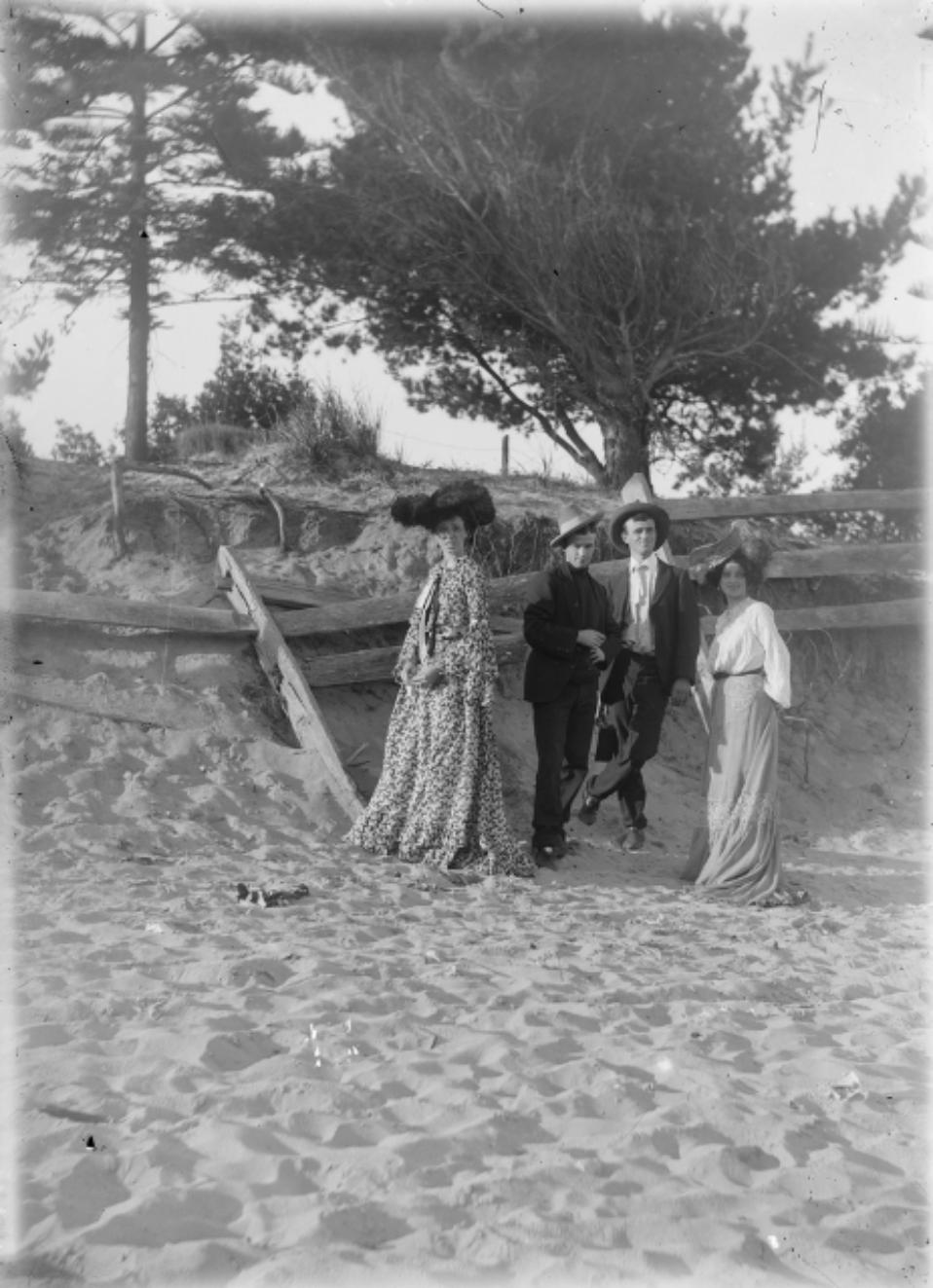
Rock Lily Toughs and their Tarts’ Pic No: a2005209, all from Album Portraits of Norman and Lionel Lindsay, family and friends, ca. 1900-1912 / photographed chiefly by Lionel Lindsay, courtesy of the State Library of NSW.
When Justine Briquet began bringing her inherited holdings under the Real Property Act the extent of the land her father held becomes apparent:
No. 16,855. APPLICANT :—Justine Leontine Briquet, Rocklily. LAND:—County Cumberland, parish Narrabeen, shire Warringah, 2 acres, 2 roods, 2 acres 3 roods 1/4 perch, 9 acres 3 roods, on Bay View Road, in Darley and Allen streets, and on South Pacific Ocean, near Pittwater,—lots 3 and 14 to 17, section 1, lots 16 to 36, section 2, Mona Vale Estate, and part 700 acres (portion 17 of parish) granted to Robert Campbell; adjoining properties of F. Ball, Trustees Church of England, and J. T. Hewitt. NOTICE UNDER REAL PROPERTY ACT. (1910, December 21). Government Gazette of the State of New South Wales (Sydney, NSW : 1901 - 2001), p. 6886. Retrieved from http://nla.gov.au/nla.news-article229311881
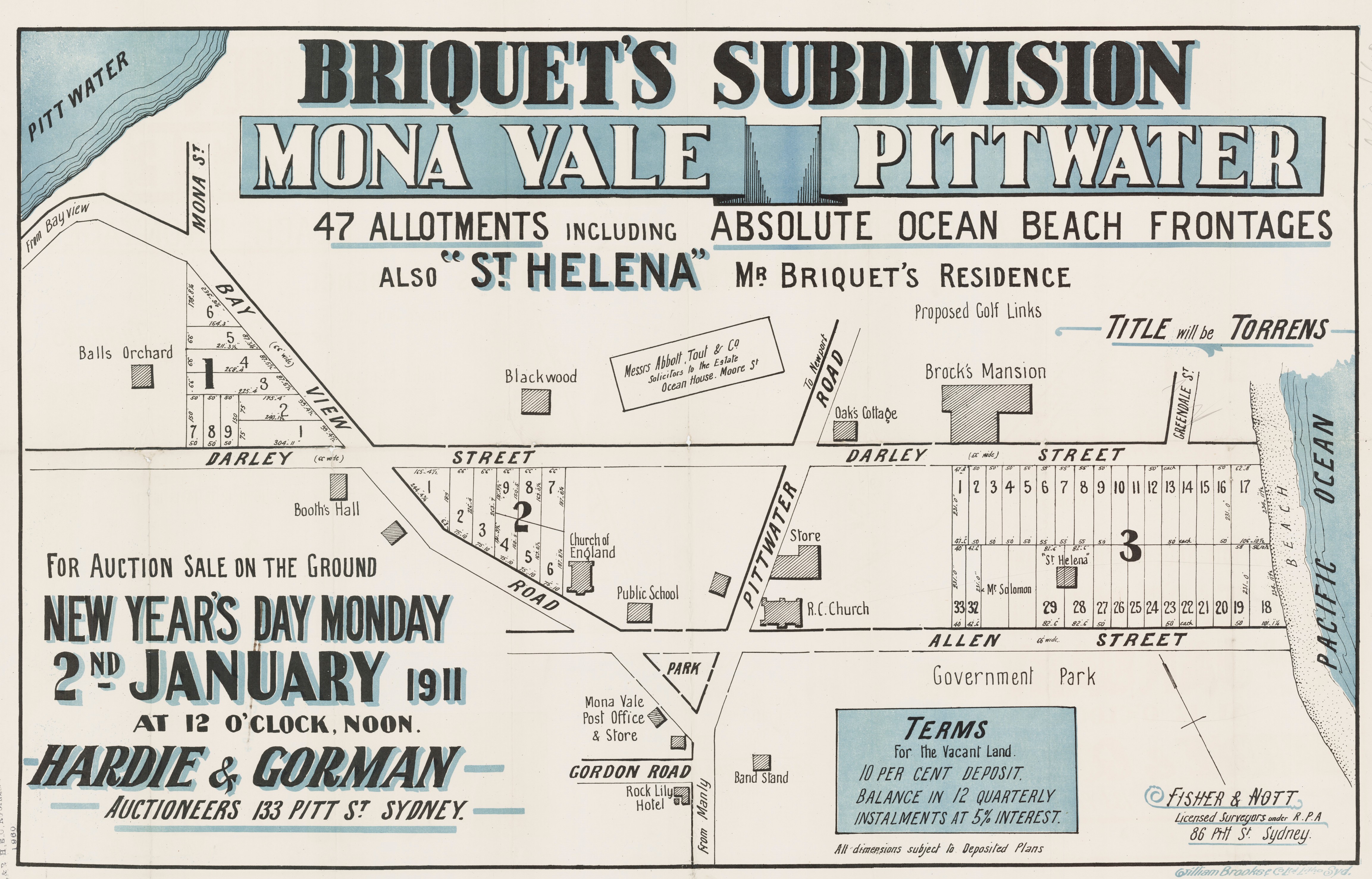
Briquet's Subdivision - Mona Vale - Pittwater - Mona St, Bay View Rd, Pittwater Rd, Allen St, Darley St, 1911. Item No.: c046820059
NOTICE UNDER REAL PROPERTY ACT.
APPLICATIONS having been made to bring the lands hereunder described under the provisions of the Real Property Act, Certificates of Indefeasible Title will issue, unless Caveats be lodged in accordance with tho Third Schedule to the said Act, on or before the 20th January, 1915 :—
No. 19,040. APPLICANT:—Justine Leontine Briquet, Mona Vale. LAND :—County Cumberland, parish Narrabeen, shire Warringah, 4 acres 1 rood 21 1/2 perches, Pittwater and Gordon roads and Vineyard-street, near Pittwater,—lot 3, section A, Collingwood Estate, and part 115 acres 2 roods (portion 53, parish), granted to Thomas Collins; adjoining properties of E. L. and N. J. Wall. Diagrams delineating these lands may be inspected at the Land Titles Office, Sydney. W. G. H-WILLIAMS, Registrar-General. 16th December, 1914. NOTICE UNDER REAL PROPERTY ACT. (1914, December 16). Government Gazette of the State of New South Wales (Sydney, NSW : 1901 - 2001), p. 7405. Retrieved from http://nla.gov.au/nla.news-article227425349
John Thomas Hewitt also bringing his land holdings under the Real Property Act:
No. 19,316. APPLICANT:—John Thomas Hewitt, Mona Vale. LAND -County Cumberland, parish Narrabeen, shire Warringah, 2 acres 27 1/2 perches, 9 acres 8 perches, on Newport-road and in Mona, Allen, and Darley streets,—lots 36, 37, and 38, section 1; and lot 3, lots 8 to 15 inclusive, lots 37 to 48 inclusive, and part lot 2, section 2, Mona Vale Estate, and parts 700 acres (portion 17, parish), granted to Robert Campbell; adjoining properties of — Ackland, A. Kinghorn. — Bridge, G. Oliver, S. Howlett, Roman Catholic Church, J. L. Briquet, and S. E. Austin. NOTICE UNDER REAL PROPERTY ACT. (1915, April 28). Government Gazette of the State of New South Wales (Sydney, NSW : 1901 - 2001), p. 2385. Retrieved from http://nla.gov.au/nla.news-article226911713
NOTICE UNDER REAL PROPERTY ACT.
APPLICATIONS having been made to bring the lands hereunder described under the provisions of the Real Property Act,. Certificates of Indefeasible Title will issue, unless Caveats be lodged in accordance with the Third, Schedule to the said Act ON OR BEFORE THE 30TH MARCH, 1917:—
No. 19,041. APPLICANT:— Justine Leontine Briquet, Mona Vale. LAND: — County Cumberland, parish Nurrabeen, shire Warringah, 6a. 27p. and 21 p., on Pittwater-road, — part lot 1, section A, Collingwood Estate, and part 115n. 2r, (portion 53, parish),granted to Thomas Collins; adjoining properties of Salvation Army, Cau and Schwartzcopf, and Crown Land. Advertising (1917, March 10). The Sun (Sydney, NSW : 1910 - 1954), p. 8. Retrieved from http://nla.gov.au/nla.news-article221960721
Warriewood, Rocklily and Mona Vale land sales the necessity for a Public school at Mona Vale:
ON THE LAND.
There are very few who realise what a marvellous amount can be done, and what a good income can be obtained, from a small block of really good land. There are also very few who know of what is practically the only really first-class land about Sydney, situated near Narrabeen, only a few miles from Manly and only 15 or 16 miles by road from Sydney. The soil is of the very finest for market garden purposes, and most suitable for poultry farms, or both can be combined. It is in a most beautiful and sheltered situation, its proximity to the ocean (with some lovely beaches), making the temperature so mild and even that frosts are unknown, and produce can be marketed from two to three weeks earlier than from other districts with consequent high prices.
The only estate where blocks in this district are at present available is the Rocklily Estate, and the well-known liberal agents, Messrs. Henry F. Halloran and Co., of 82 Pitt Street, Sydney, claim that the terms of £1 per acre, and balance by monthly payments of 3/- per acre, with suspension of payment for 1, 2, or 3 years if improvements are made, are the easiest ever offered. They will be glad to post a plan and full information to any enquirer on receipt of a postcard. ON THE LAND. (1906, February 7). The Farmer and Settler (Sydney, NSW : 1906 - 1955), p. 4. Retrieved from http://nla.gov.au/nla.news-article109676475
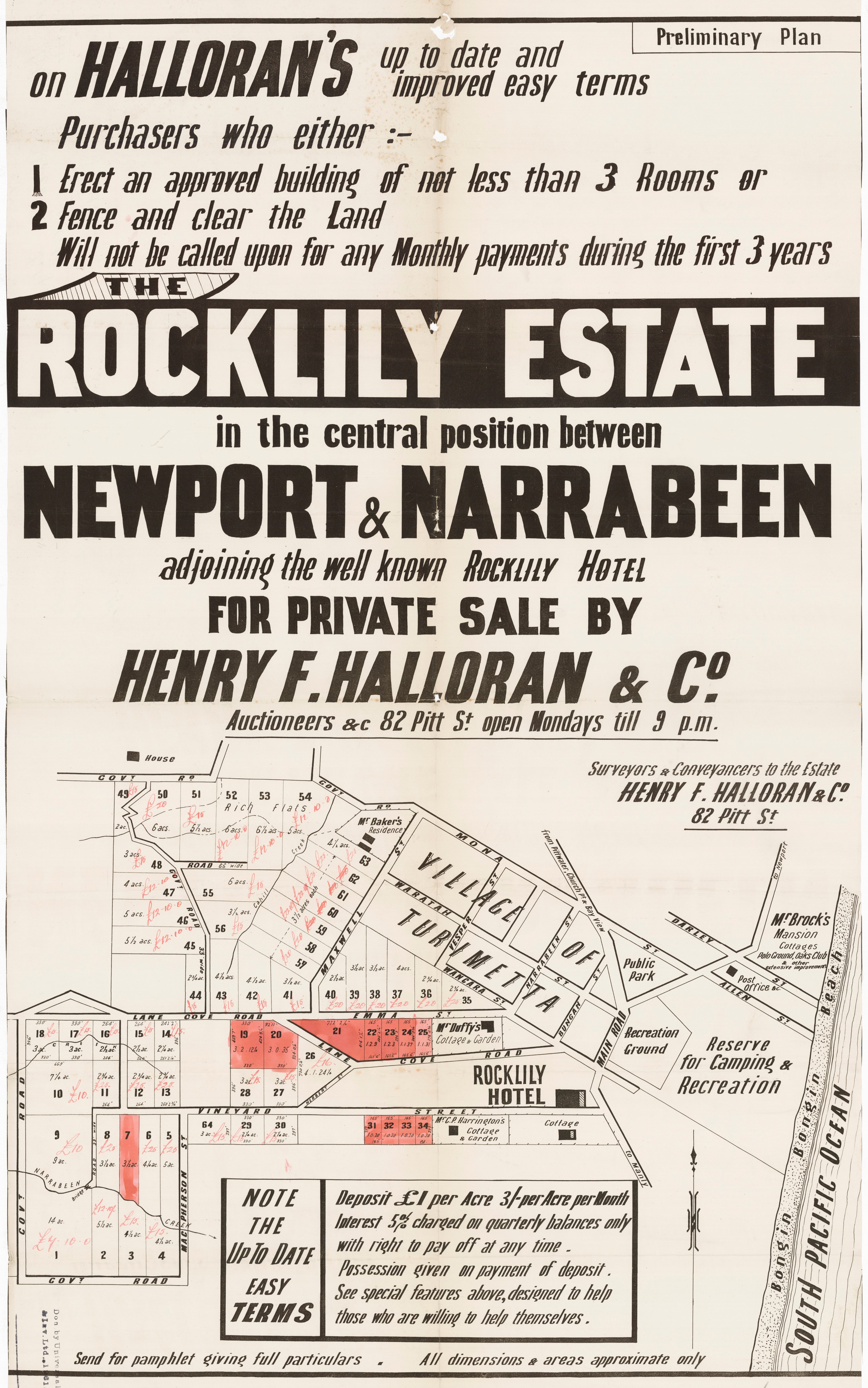
Rock Lily Estate. Item No.: c053460031
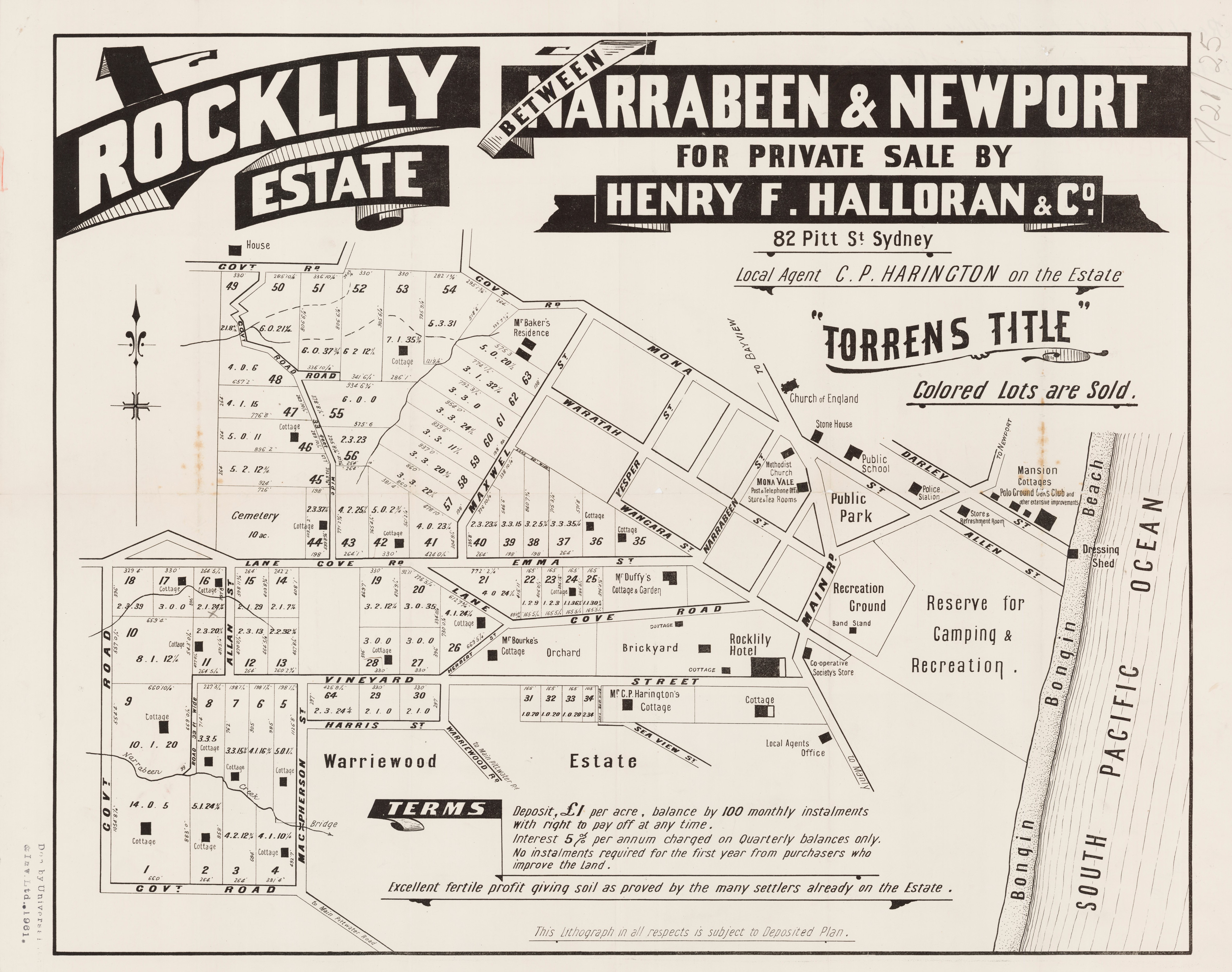
Rocklily Estate between Narrabeen & Newport - Macpherson St, Item No.: c046820022
The Rocklily Estate, adjoining Warriewood, which was recently subdivided, giving the first opportunity for land to be secured in this district, was'- nearly all snapped up within an incredibly short space of time. Some parts of it adjoining Warriewood are good lots, but a large portion is inferior to Warriewood, which is all good. A large number of families are already settled on the Rocklily Estate, but now that Warriewood, with 70 Farms, in addition to the Township and the Hill Lots, is available, rapid progress is assured.
Even the development of the smaller Rocklily Estate caused the Public School to be removed from Bayview to hard by the Estate, and resulted in the Post-office being placed in a higher class. The powers that be have realised the possibilities of this hitherto locked-up but magnificent district, and nothing can now bar it from making rapid strides along the path of progress. The Estate was tested for water during the driest known season by a well sunk at random on one of the easy slopes well away from creeks, &c, and a plentiful supply of good fresh water obtained. It has been said with much truth that 5 acres here is better, easier, more satisfactory, and more profitable than 500 in the back country, and it affords as well all the advantages and occasional pleasures of the healthy suburban life so desirable for the proper rearing of a family. There are also some fine main road Town Lots for sale, and beautiful elevated Hill Sites most suitable for week-end and holiday residences, close to fine ocean beaches, Narrabeen Lake, Pittwater, Harbor, &c, &c. A postcard will bring a free plan,, .illustrated Art Booklet, and price list by 'return post. A Representative of the Auctioneers, Messrs. Henry F. Halloran and Co., 82 Pitt-street. Sydney, Is on the Estate every day and all day, to show purchasers around. Run down by Motor Bus at the weekend. ON THE LAND. (1906, October 7). Sunday Times (Sydney, NSW : 1895 - 1930), , p. 2. Retrieved from http://nla.gov.au/nla.news-article126562172
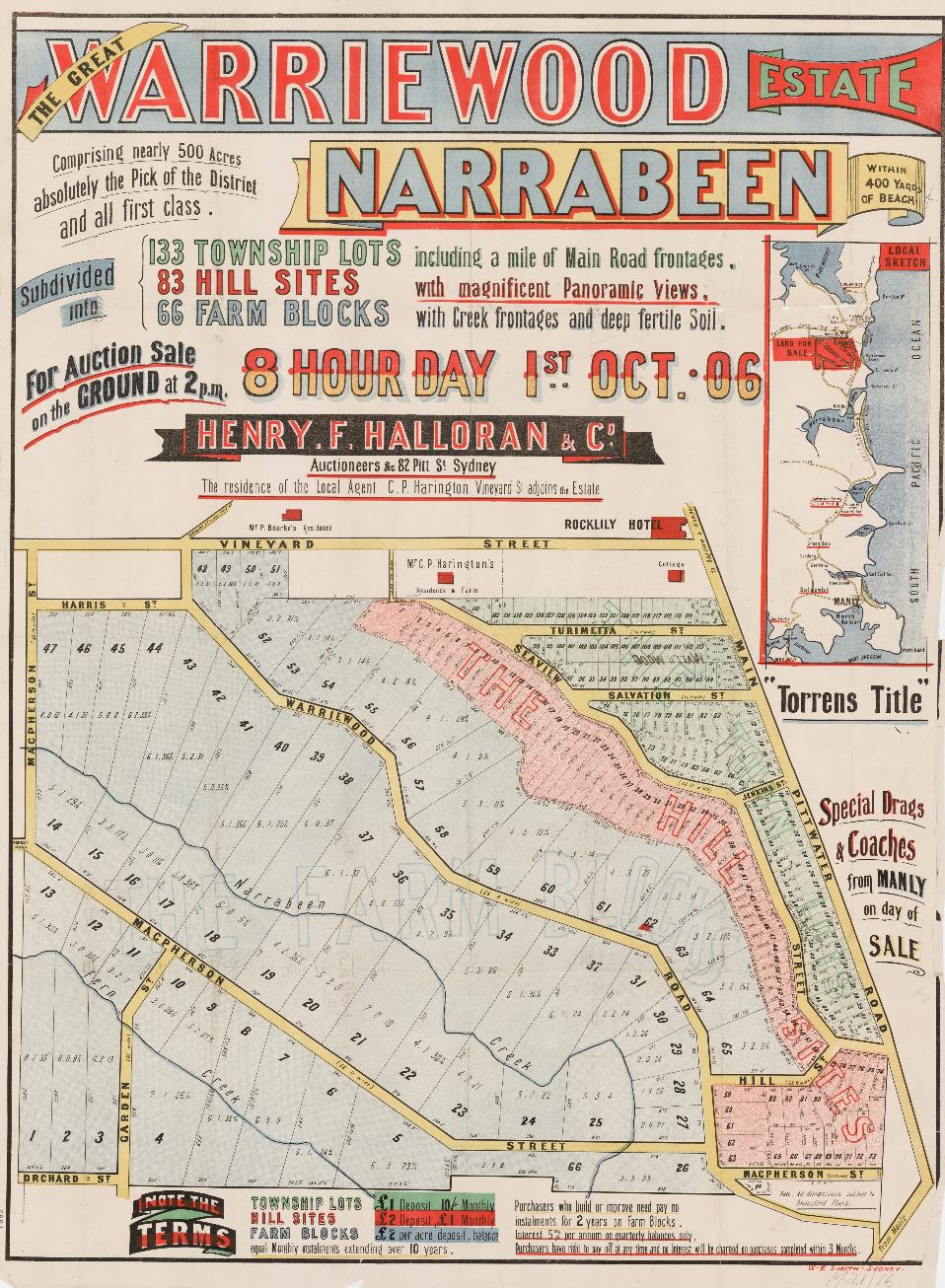
The Great Warriewood Estate - Narrabeen - Macpherson St, Vineyard. Item No.: c046820014, courtesy State Library of NSW.
PROPERTY MARKET.
Messrs. Henry F. Halloran and Co. report a successful sale of the Warriewood Estate on the ground at Narrabeen and Rocklily, on Monday, when there was an excellent attendance and fair competition. 25 township lots were sold at from 11s to 25s per foot, 13 hill sites at from £66 to £72 10s each, and 13 farm blocks at from £20 10s to £35 per acre. Total sales. £3571. PROPERTY MARKET. (1906, October 3). The Sydney Morning Herald (NSW : 1842 - 1954), p. 11. Retrieved from http://nla.gov.au/nla.news-article14803817
MONA VALE.
Mona Vale public school, in the Pittwater district, has an enrolment of only about 80, yet raised over £100 towards the Children's Ten Thousand on Empire Day. ...MONA VALE. (1915, May 28). The Daily Telegraph (Sydney, NSW : 1883 - 1930), p. 3. Retrieved from http://nla.gov.au/nla.news-article239033404
The Mona Vale Land Company
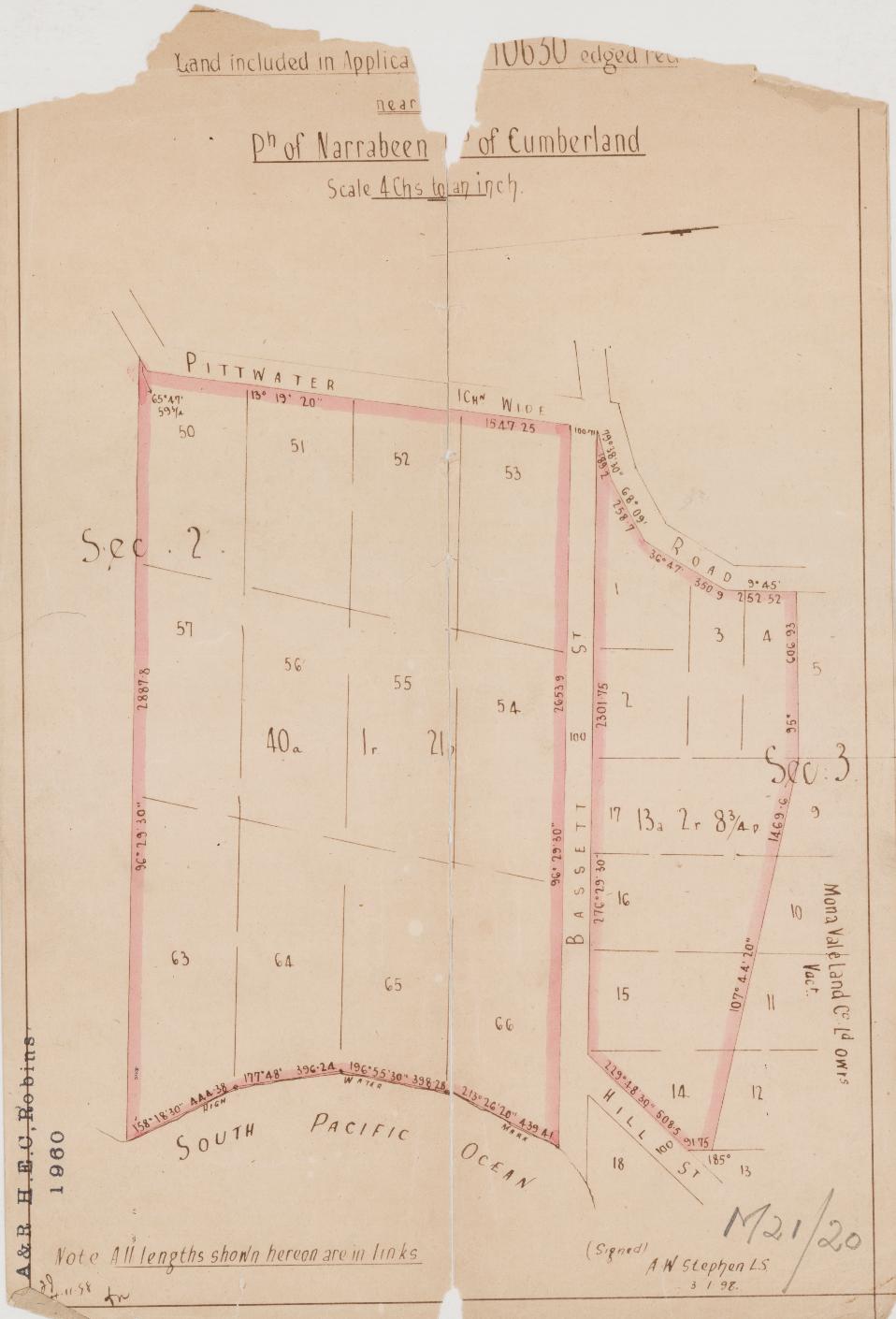
Plan of Land included in Application 10630 - Parish of Narrabeen - Pittwater St, Bassett St, Hill St, 1898 - Mona Vale Land company. Item No.: c046820018 - from Narrabeen Subdivisions, courtesy state Library of NSW
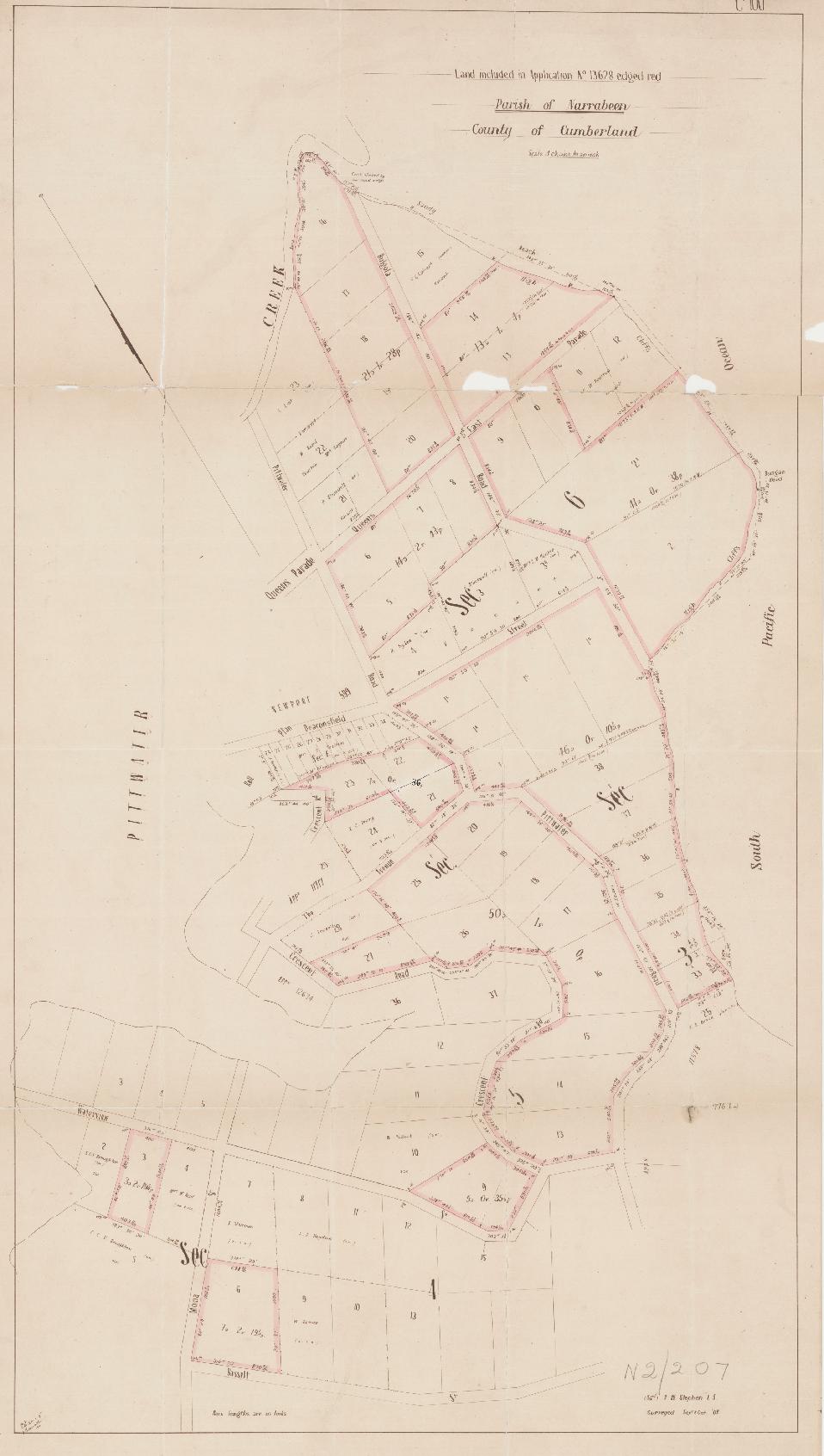
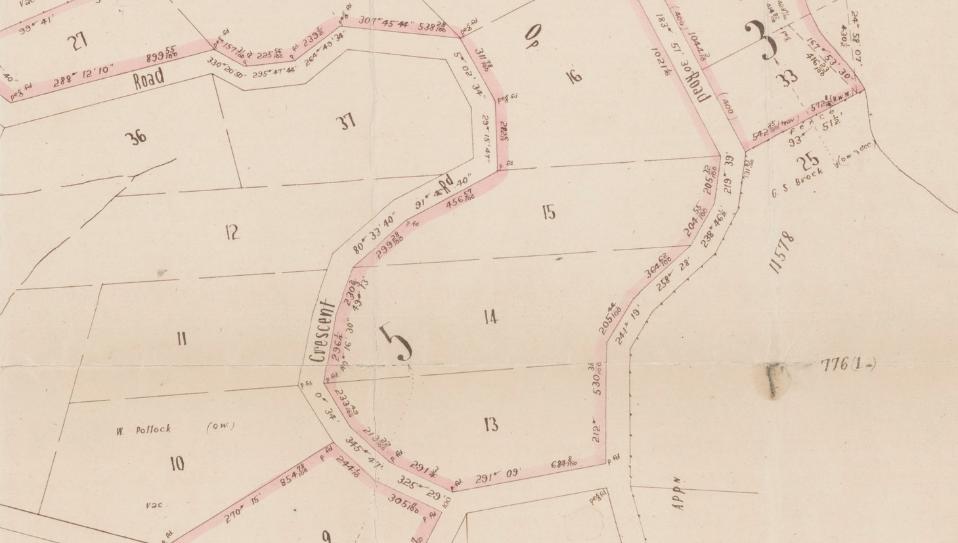
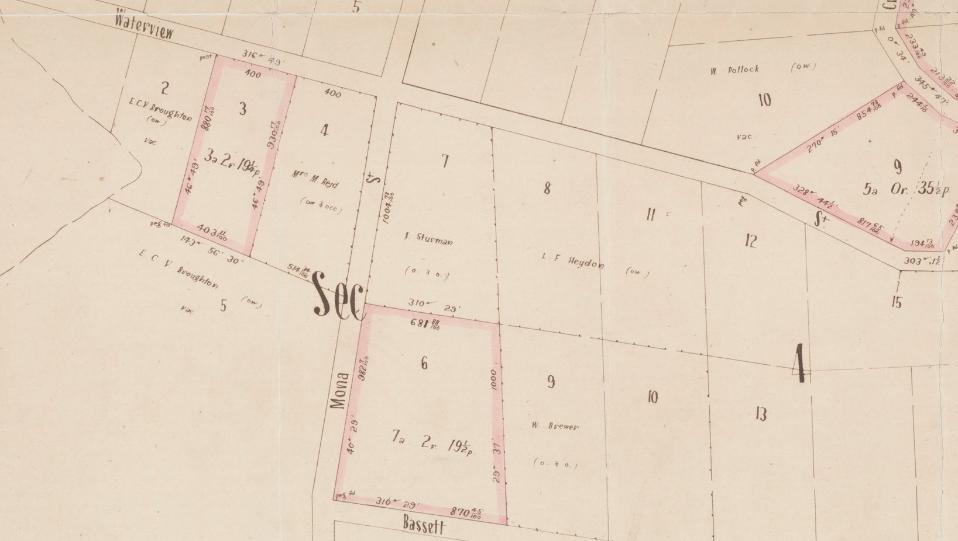
A little about Mr. Ernest C. V. Broughton, who obviously bought land here as well as selling it in the Centenary Estate - Mona Vale of March 1892 - Waterview street, Darwin, Huxley and Spencer streets Item No.: c029500001h, and the Plan of the Village of Turimetta and Suburban Lands - Vesper St, Mona Street, Allen St, Pittwater St, Wangara St, sale of 1897.
DEATH OF MR. E. C. V. BROUGHTON.
The-death occurred In a private hospital yesterday of Mr. Ernest C. V. Broughton, ex-member for King Division in the Legislative Assembly, ex-Mayor of Ashfield, and a well-known estate and financial agent in Sydney. He had been in ill-health for the last twelve months.
The deceased, who has left a widow (the only daughter of the late Mr. William Newcombe, formerly receiver of the N.S.W. Treasury), was 52 years of age. He was the second son of the late Alfred Delves Broughton, formerly police magistrate at Drayton (Q.). His uncle was Sir. Henry Delves Broughton, Bart. of Voddington Hall, Staffordshire (Eng).
Besides taking a keen interest in political and municipal affairs, the late Mr. Broughton was a vice-president of the Pioneers' Club, one of the founders of the British Empire League in Sydney, a director representing the Government on the Sydney Hospital Board, treasurer for several years of the Surgical Aid Society, a member of the Sydney Golf Club, and a member of the executive of the Fresh Air League. Mr. Broughton, who resided In Ashfield, had been identified with the progress of that municipality since 1885. From boyhood, political questions engaged much of his attention, and he became hon. secretary to the School of Arts Debating Club.
At the time of the inauguration of the Commonwealth, Mr. Broughton was a member of the Commonwealth and Citizens' Royal Reception Committees, and he took an important part in arranging the details in connection with the work of those bodies. His father, the late Mr. Alfred Delves Broughton, was returned to the first Queensland Parliament which met under responsible government. DEATH OF MR. E. C. V. BROUGHTON. (1917, August 16). The Sydney Morning Herald (NSW : 1842 - 1954), p. 8. Retrieved from http://nla.gov.au/nla.news-article15753325
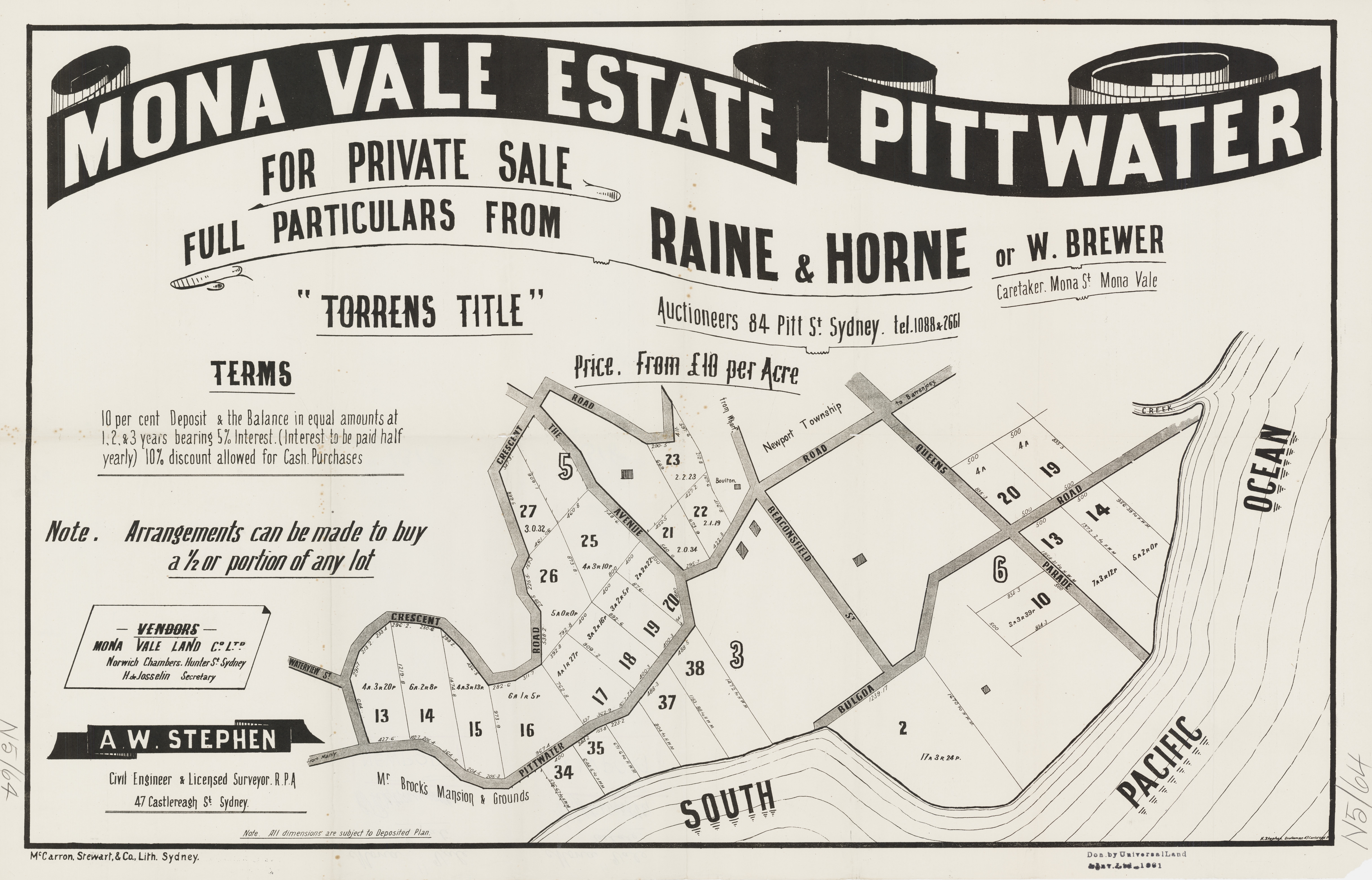
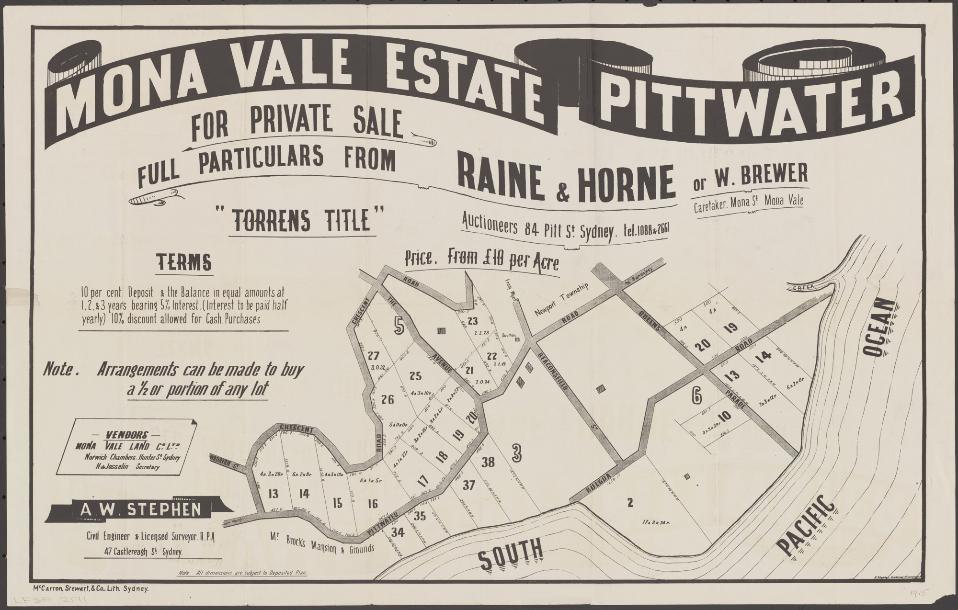
Raine & Horne & Brewer, W & Stephen, N & Stephen, A. W & McCarron, Stewart & Co & Mona Vale Land Co. (1915). Mona Vale Estate, Pittwater for private sale Retrieved from http://nla.gov.au/nla.obj-230421427
Mona Vale Beach - George Brock's The Oaks
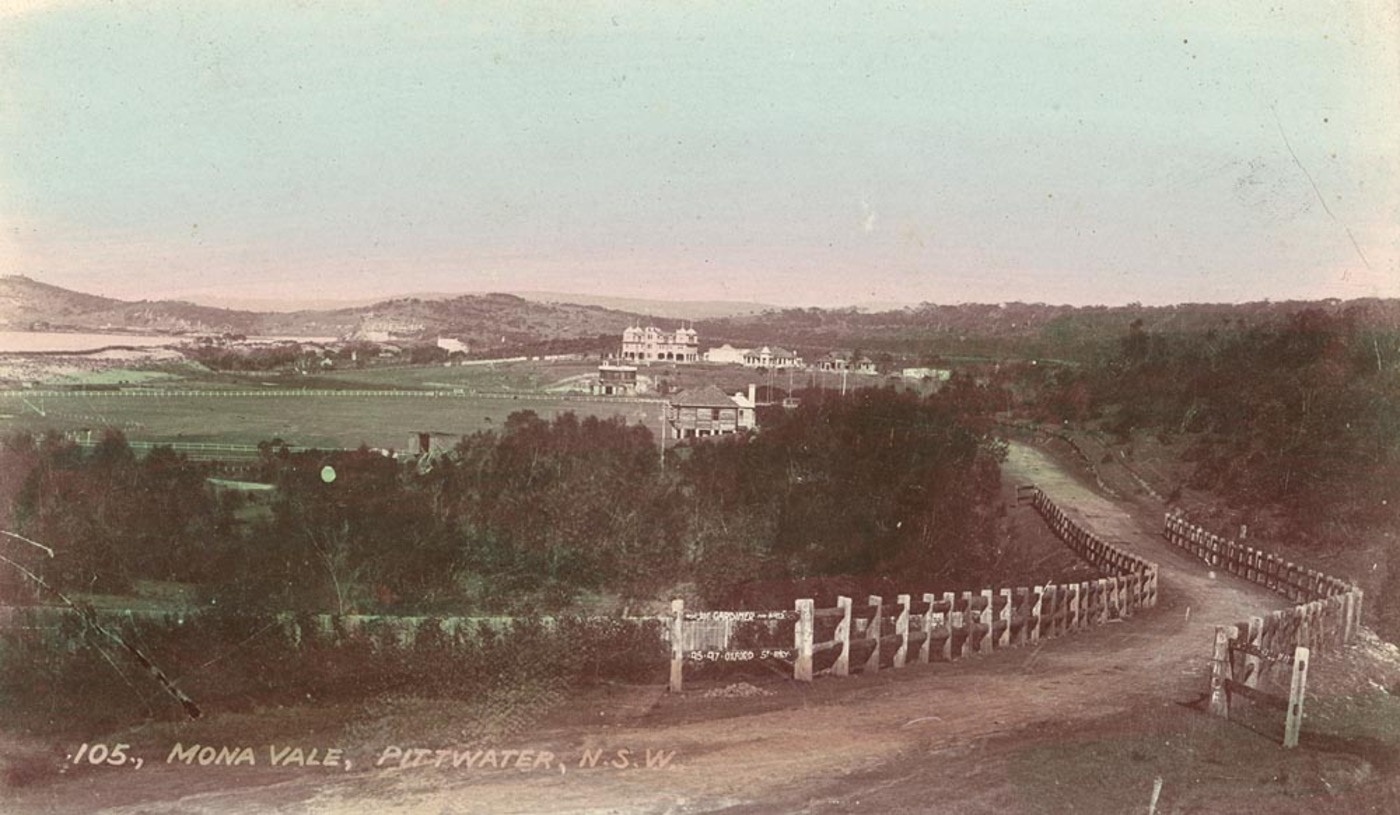
Mona Vale, Pittwater, circa 1906-1912. Item No.: a106170h, courtesy State Library of NSW - NB the white building to the left of The Oaks main building and a little south on Mona Vale sand dunes where MVGC is now - that could be the Houreux's 'St Helena' which was rented out to visitors, and faced the sea from those dunes.
The mansion built at Mona Vale by George Brock, which sent this poor man broke and allowed usurpers to step in and take it for a song, became known as 'Brock's Folly'. This gentleman called it 'The Oaks'. It overlooked what was called then Bongin Bongin ('lots of shells') beach, now known as Mona Vale beach.
This was the second establishment built to cater to an anticipated influx of visitors as holiday makers. The original Brock Gentleman living here was George's father Robert and his mother Ann (nee Kettle).
The land on which The Oaks stood is Section 2 of the Mona Vale estate, offered in the second subdivision and may have been picked up relatively cheaply:
TO SPORTING, BOATING, AND CAMPING PARTIES.
CHOICE WATER FRONTAGES.
THURSDAY, 10th DECEMBER, 1889.
CLEARANCE SALE
of the whole of the
UNSOLD PORTIONS of that BEAUTIFUL MARINE ESTATE,
MONA VALE, PITTWATER.
AT THE ROOMS, 130, PITT-STREET.
MILLS, PILE, and WILSON have been instructed by the proprietors to sell by public auction, at their Rooms. 130, Pitt-street, on THURSDAY, the 19th December, at half-past 11 o'clock,
The whole of the unsold portions of the
FARFAMED MONA VALE ESTATE,
recently subdivided into blocks of 2 to 30 acres each
THIS BEAUTIFUL ESTATE bus a large frontage to the eastern shores of Pittwater, extending to the waters of the Pacific Ocean, and is Intersected by the main road to Barrenjoey.
The SOIL is of the richest description, suitable for
ORANGERIES and ORCHARDS,
and the hills surrounding the various bays are adapted for
MARINE VILLA RESIDENCES.
The coach to Manly runs daily, and makes this property easily accessible from the city.
The terms of sale will be very liberal.
For further particulars and Lithos. apply to
MILLS, PILE and WILSON, Auctioneers, 130. Pitt-street. Advertising (1889, December 11). The Sydney Morning Herald (NSW : 1842 - 1954), p. 11. Retrieved from http://nla.gov.au/nla.news-article13752858

Second Subdivision - Mona Vale - Pittwater - Hill St, Waterview - Section 2 and Section 3, Thursday December 19th, 1889 Item No.: c046820031, from Mona Vale Subdivisions folder, courtesy State Library of NSW.
MONA VALE, PITTWATER SALE December 19, in the Rooms, 130 Pitt-street.
FREE COACH TICKETS from Manly, for Intending Buyers to inspect this Property, can be obtained at the Rooms.
MILLS, PILE, and WILSON, Auctioneers. Advertising (1889, December 13). The Australian Star (Sydney, NSW : 1887 - 1909), p. 8 (FOURTH EDITION). Retrieved from http://nla.gov.au/nla.news-article227582280
The land is re-advertised again in January 1890 - and on the same page can be read:
THE BEAUTIFUL MONA VALE ESTATE, PITTWATER.
CHOICE BLOCKS of LAND, from 1 to 30 ACRES, eminently suitable for
ORCHARDS, MARKET GARDENS, POULTRY FARMS,
as well as
MARINE VILLA SITES.' Remarkably easy terms.
Plans, etc, at MILLS. PILE, and WILSON. 130, Pitt-st.
____
IMPORTANT SALE of TROTTING STOCK.
GEORGE KISS has received Instructions from
the owner to sell by auction, at tho Bazaar, Pitt and
Caatltresgh stroots, on FRIDAY AFTERNOON, the 24th
instant, at 2.80 o'clock,
On account of Mr. G. Brock. VELOS, b o. foaled Nov. 26, 1880. by Honesty (Imp.), dam Maggie, by Maribyrnong, g. dara veronica, by Yellowstone (Imp.) Advertising (1890, January 22). The Sydney Morning Herald (NSW : 1842 - 1954), p. 13. Retrieved from http://nla.gov.au/nla.news-article28276840
The price went from £50 an acre to less than half that later the same year:
PITTWATER.— MONA -VALE ESTATE is now for PRIVATE SALE, in from 1/2 acre to acre blocks, having frontages to the main road, Pittwater Lakes, and the Pacific Ocean. Price, from £20 an acre. Terms very easy. MILLS, PILE, and WILSON, 130, Pitt-street, Sydney. Advertising (1890, October 24). Evening News (Sydney, NSW : 1869 - 1931), p. 3. Retrieved from http://nla.gov.au/nla.news-article113743824
In 1891 some blocks within the second subdivisions finally were sold - these 4 being placed on today's Mona Vale-Bungan headland:
blocks 18, 19, 20 and 21, section 3, Mona Vale Estate. Pittwater, £160. PROPERTY SALES. (1891, April 11). The Daily Telegraph (Sydney, NSW : 1883 - 1930), p. 6. Retrieved from http://nla.gov.au/nla.news-article235889100
No. 12,849. County of Cumberland, parish of Narrabeen, 1 acre 2 roods, 10 perches in Bassett-street, adjoining the properties of G. S. Brock, and the Hon. the Minister for Public Works,— comprises part of the site of Hill-street, in the Mona Vale Estate, and is part of 700 acres (portion No. 17 of parish), granted to Robert Campbell. Applicant – George Sidney Brock – Pittwater NOTICE UNDER REAL PROPERTY ACT. (1903, July 17). Government Gazette of the State of New South Wales (Sydney, NSW : 1901 - 2001), p. 5333. Retrieved from http://nla.gov.au/nla.news-article221035680
Frequented by many who travelled specifically here (The Allen Family, who were also keen polo players and father of PG Taylor, another polo player) the expense incurred at building such a lavish structure did not attract the clientele he needed to ensure success.
PARADISE WITHIN EASY HAIL.
They say that 'the cobbler's always the worst shod.' Certainly the residents of the crowded city greatly neglect the marvellous opportunities at their very door to spend a pleasant holiday at the minimum of expense. Why go to the far-off mountains, with its scorching days, hot winds, and high fares, solely on account of the cool nights, or take the long journey down the coast to meet with all sorts of inconvenience, when by taking the 9.15 a.m. Manly boat, you have waiting for you well-appointed four-horse coaches to carry
you on to the lake country par excellence of Australia. The placid reaches of Pitt Water are at the present time alive with all the delicate fish that swim in the southern waters, with fine, large, luscious prawns at the entrances of the lagoons.
For an excursion, take a boat in the early morning from Mermaid Basin, on the ocean side, now teeming with schnapper and other large fish travelling up the coast ; or scamper over the long stretching beaches from Narrabeen to Barrenjoey on the panics, so easily obtained locally. Or, for quiet picnicking, go up . the shallow, .clear sandy creeks on the Kuringai Chase, with its magnificent waterfalls, ferns, palms, and luxuriant foliage, not to be equalled by the far-off, highly-praised New Zealand Sounds ; or, further afield, travelling by sail or launch to the entrance of Brisbane Water, .with its silver shoals and splendid fishing grounds, passing the famous Basin and Scotland and Lion Islands. These trips through Wild , country, farms and orchards, ferny dells, and mountain heights, on the Kuringai Chase side, and hundreds of miles of the Hawkesbury beyond, are all obtainable at a fare of 3d by steamer to Manly, and Is coach to Rock Lily, the centre of the whole district. From Mermaid's Basin you are in touch with the ocean, ?with Bay View, Newport, Winjijinni Point. Well-found fishing and rowing boats, launches, men, and nets can be obtained from Is per hour ; with man and net, 2s 6d per hour; prawning parties in the lagoon, man, boat, and net, 2s 6d per hour. Old English quarters Can be had at two or three comfortable establishments in the neighborhood, as well as hampers for picnic parties, boats (either for the ocean or the calm water inside), and ponies for riding parties. For day visitors or parties, meals and accommodation range from 2s ; hampers and tea -room meals are sold at Sidney prices; and the full run of the orchards is allowed for a shilling. Although not one in a thousand know of this cheap and beautiful holiday district, nevertheless it exists, and before the puffing trams arrive to spoil it, advantage should be taken to visit a spot which certainly would be the selected sight for the Federal City only for the 100-mile bar limit. — 'MONA VALE.' PARADISE WITHIN EASY HAIL (1902, January 19). Sunday Times(Sydney, NSW : 1895 - 1930), , p. 10. Retrieved from http://nla.gov.au/nla.news-article126428645
George Brock was bent on making the place a success - see Mona Vale Training Grounds - From Lancers on Horses to Lasses on Transport Courses.
This would not be the first time the grounds would be used as such - prior to and during WWI they were used as training grounds, they formed part of coastal reinforcements during WWII and housed recruits being trained.
MILITARY INTELLIGENCE. MANOUVERS BY THE LANCERS IN THE VICINITY OF NEWPORT.
The Sydney and Parramatta squadrons of the New South Wales Lancers were engaged on Saturday and part of yesterday in some interesting fluid operations in the neighbourhood of Rock Lily and Newport. The parade was also the last of the year.
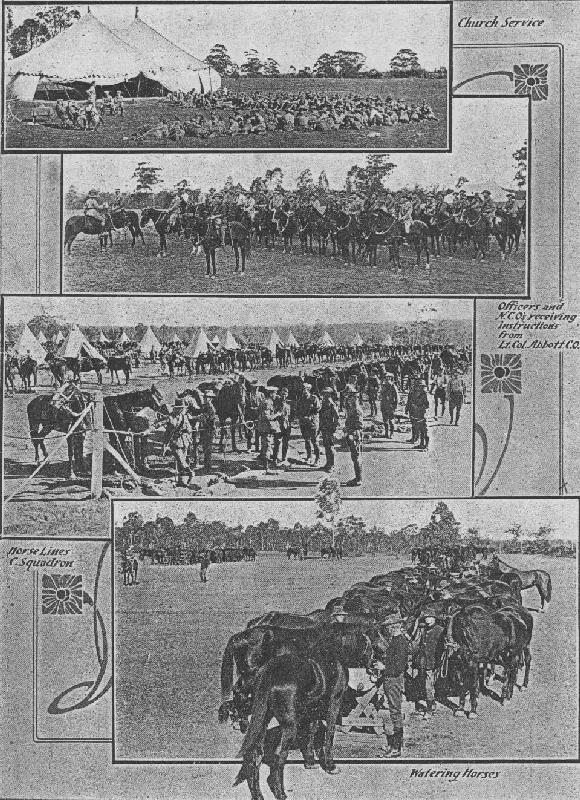 The Sydney squadron, numbering 69, under Captain King, was as supposed to represent the advance party of au enemy which had landed at Bongan Bongan Beach, near the entrance to Broken Bay. The squadron left the city at 8.30 a.m., and bivouacked at 1 p.m. at Narrabeen. The lauding party, by arrangement, commenced to make its dispositions at 2 p.m. from the Rock Lily Hotel, and the idea, was that the telegraph lines should be tapped in order to prevent reinforcements of the defending force coming from Hornsby.
The Sydney squadron, numbering 69, under Captain King, was as supposed to represent the advance party of au enemy which had landed at Bongan Bongan Beach, near the entrance to Broken Bay. The squadron left the city at 8.30 a.m., and bivouacked at 1 p.m. at Narrabeen. The lauding party, by arrangement, commenced to make its dispositions at 2 p.m. from the Rock Lily Hotel, and the idea, was that the telegraph lines should be tapped in order to prevent reinforcements of the defending force coming from Hornsby.
The Parramatta, squadron of Lancers was ordered to find out the strength of the enemy that had landed at Bongan Bongan Beach. According to the plan of operations the road via the Spit was held to be untenable, so that the detachment had to proceed via Pymble. The Parramatta men mustered 72, and were under the command of Captain Mackenzie. They left Parramatta at 8a.m. and reached Tumble-down Dick, near Pymble, in time for lunch. Lieutenant-Colonel James Burns, officer-commanding, accompanied them, and at Pymble Brigadier-General Finn, Major A. P. Luscombe, D.A. Q.M.G., and Lieutenant Macartney, A.D.C., joined the party with a view to witnessing the manouvres.
A start was made at 2 p.m. from Tumbledown Dick to ascertain the whereabouts of the enemy, and very rough country was encountered, but trooper's and horses got over the ground capitally. The enemy's landing party not having time apparently to achieve its object, its officer-commanding threw out a line of outposts extending from the Rock Lily Hotel to a little point near Newport. Shortly alter 3 p.m. the Parramatta squadron got into touch with the outposts about two miles from the hotel, and after some good work on both sides the evening's advance guard, according to the prearranged plan, was driven back to the reserve near the beach.
Owing to this reverse and the weather becoming thick and stormy the landing party was supposed to be unable to re-ombark by boats on board of the cruisers, consequently a position was taken up on Bongan Head. In this phase of the operations, however, the Sydney squadron no longer represented the enemy, but joined the Parramatta men. The enemy's position on Bongan Head was represented by eight canvas targets, which had been erected under the supervision of Major M. Hilliard, D.S.O., and Captain P. C. Timothy. Four of these were located about 500 yards from the main road and the other f our about 900 yards distant, but the ranges were unknown to those who subsequently took part in the firing. It was decided that the attack on this position should be made shortly after daybreak on the following day by the entire body of Lancers representing the home force.
The two squadrons a little after 5 p.m. reached Mr. George Brock's Mona Vale estate, where Captain Timothy had arranged with the owner for the whole force to bivouac for the night. The troops were here joined by Colonel H. D. Mackenzie, A.A.G., Captain J. Purves, and Captain J. S. Brunton, the two latter travelling by motor car. The Lancers band also came down by a coach provided by the officers, who also contributed the commissariat supplies.
The State Commandant addressed the officers and N.C.O's. during the evening, and said that he was well pleased generally with the tactics, intelligence, and conduct of the troops. The men had shown their efficiency as skilled horsemen in very rough country, and he complimented them on their mobility. The outpost work was creditably performed, but at times rather humid. After tea a camp-fire concert was held, in which the band figured conspicuously, and Mr. Brock' rendered valuable assistance. A boxing bout between two amateur champions, Troopers Parbury and R. Baker, proved exciting, as were also some smart singlestick tourneys.
At daybreak yesterday the reveille sounded, and the Lancers at 5.45 a.m. were on the way to attack the enemy's position, indicated by the canvas targets on Bongan Head, forty rounds of ball cartridge were fired per man in the attack, which was at unknown distances. The shooting was good. One target had about 200 hits on it. The weakness of the attack, according to Brigadier-General Finn, lay in the fact that the men were too prone to expose themselves and rush forward in large numbers instead of in twos and threes. These were defects apparent in all sham fights, however, and only corrected by a taste of the " Real thing."
The troops returned to camp at 8.16. After morning "stables " a bathing parade was held, in which nearly every Lancer participated on his horse. Mr. Brock was thanked for his kindness in quartering the forces, and route march was then taken via the Spit for the Sydney Squadron and via Pymble for the- Parramatta men. - The Sydney detachment reached the city in the afternoon. MILITARY INTELLIGENCE. (1902, December 15). The Sydney Morning Herald (NSW : 1842 - 1954), p. 9. Retrieved from http://nla.gov.au/nla.news-article14521240
George Brock was relying on the ill-fated tram line being built to Mona Vale, even Newport as it was first touted. This did not occur in time for him. The tram eventually terminated at Narrabeen. A description of the place during the its construction:
' THE OAKS," MONA VALE.
One of the most interesting places on the coach road between Mosman and Newport is "The Oaks," the home of Mr. G. S. Brock. Just after passing the Mona Vale Stores, you see on your right a picturesque group of buildings. The style is very attractive and uncommon in this country. A large gateway lets you into the grounds, where tame kangaroos and other animals, are playing about on the grass. Some fine dogs greet your approach to the main buildings where, if you are fortunate, you will find Mr. Brock at leisure - for he is a very busy man.
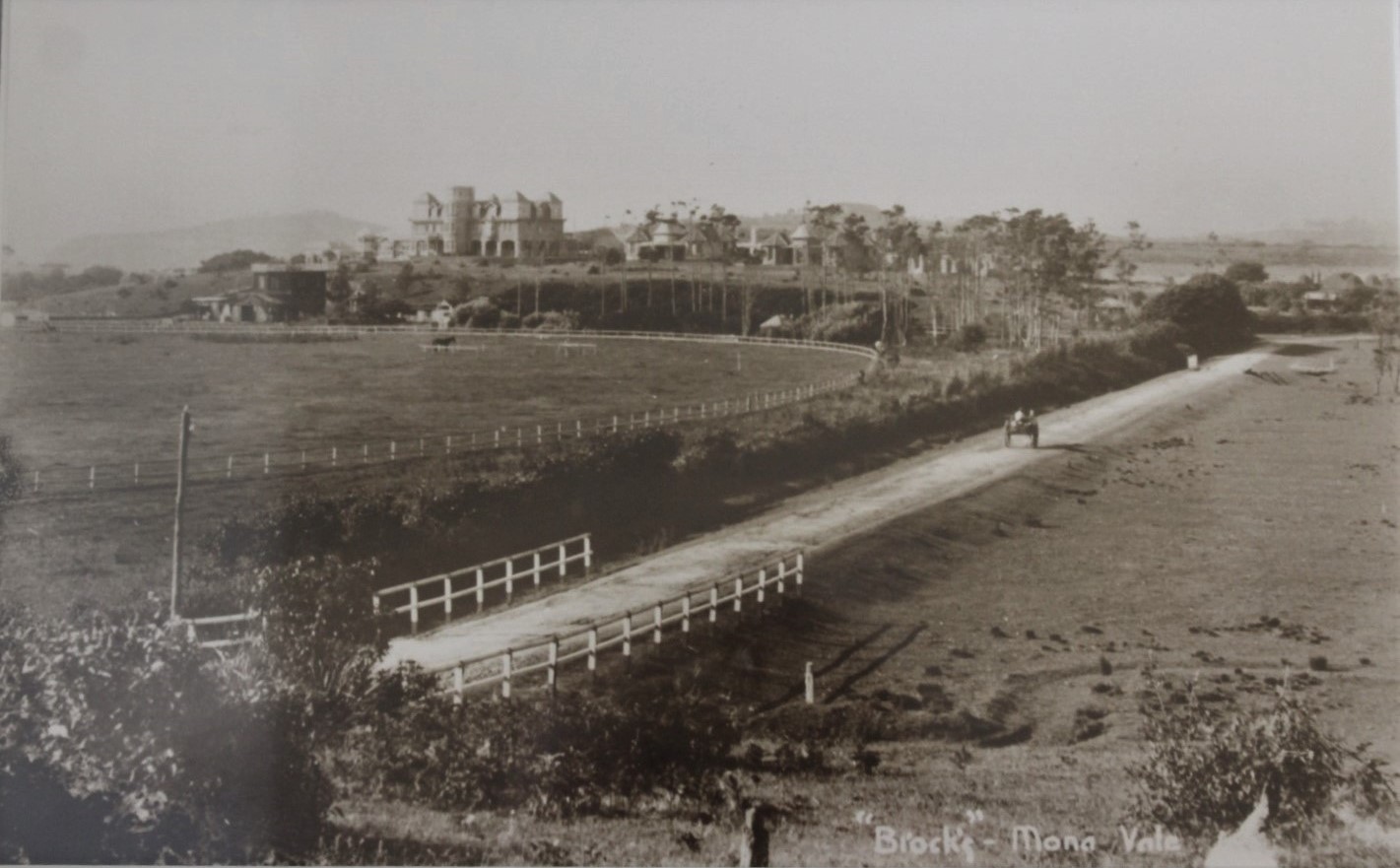
Mr. Brock has made a great impression upon the district.
He is of average height, compactly built, with strong features. His face reminds one of the old Romans as they have been pictured for us. He is clean shaven, quick in speech, and direct-in his utterance, very prompt and somewhat masterful in manner. A man, that can be plainly seen,— a man of strong individuality. He stands alone, and requires no support but his own keen brain and active body. He is a man to take the lead and keep it, a man who by his greater pushfulness makes enemies as well as friends.
One of the most noticeable buildings about the place is Circular in Shape. The ground floor is used as stables, and here Mr. Brock has some fine horses, including the stallion " Souvenir,", a beautiful and spirited Arab that seems to understand every word his master says to him. On the next floor is a music room, with piano, organ and other instruments. Being circular, it is splendidly adapted for dancing. Among the articles hung upon the walls are fencing foils and boxing gloves,—and a glance at the face of the proprietor will convey to you the hint that if you are not anxious for violent exercise you had better at all hazards retain his hearty good will. There are other buildings on the heights above this one, in course of erection. They are intended for a grand series of residences, and there will be a Great Central Hall, with contiguous apartments for the use of all the residents. This hill overlooks the ocean, and gives a splendid view of the bright Pacific. The beach is but a few yards off; to the left, on land, is a fine racecourse; in front a lake, on which swim black swans, some of them paying devoted attention to their floating nests. There are other birds and animals in the lake. Gambolling after one of the young ladies is an alema, a curious animal,' something between a monkey and kangaroo, very pretty and perfectly harmless. Mr. Brock purposes starting A Dairy on the other side of the racecourse from the houses, for the use of the residents. He has had many handsome offers for the estate, but refused them all. Several of the would-be purchasers wished' to turn it into a pleasure resort, but as the probability was they would get a licence and sell drink Mr. Brock promptly refused to consider their proposals. As soon as the Government begin in earnest to build the Spit to Newport Tramway, Mr. Brock promises to put on 200 men to complete all the work which for years he has planned for this beautiful country home. If they do not start it in a reasonable time he may himself install a 80 passenger Motor-Coach, but only to "The Oaks" and only for the service of the people living there. Families will be able to come to the Oaks and stay any length of time at moderate expense enjoying all the delights of country and … farm life—without all the work. '
There is an Art Gallery Also in the buildings, where Mr. Brock, junior, plies his capable brush. The walls are covered with his pictures, all showing marked talent. On the way from America, the land of novelty, is A Sculpturing Machine, which a skilled operator can make facsimiles of a human face simultaneously. From the photographs of the it is a wonderful affair, costing a pounds. The marble busts can turned out very fast and cheap,—say 5 or 6 hours for about a pound a piece' quite knocks out hand work—but it requires a hand to guide the rapidly cutting chisels, and the hand of an artist in order for good results. A sculptor, however, can with one of these machines of much better work than with the hand only. The instruments that do the out- resemble somewhat the little cutters dentists use to bore out teeth for stopping. They have only to be moved over the marble slowly and the lifelike image is graven. When the tram was started from Manly Mr. Brock put on about 200 Men to get the place ready, but when that fine project fell in pieces he took most of the men off again. He keeps a brick kiln going constantly, and there are always men employed building.
Some day " The Oaks " will be the name of one of the finest health resorts in the world,meantime it is a most comfortable and beautiful home. “THE OAKS,” (1904, September 3). The Mosman Mail (NSW : 1898 - 1906), p. 4. Retrieved from http://nla.gov.au/nla.news-article247008613
Another description, highly fanciful, from the always colourful 'Smiths', long after mortgagees had taken the place and sold it:
BROCK OF BROCK'S BEACH
The following, from "Smith's Weekly," will be read with interest by Lithgowites: , "The author of the well-known structure on the Newport Road, north of Sydney, built a decade and a half -ahead of his time.
The motor makes the place an ideal "country club" site, but Brock built before the motor, had been heard of. He has always had notions of his own on the subject of architecture. His original house was built on the lines of a ship. He put in portholes instead of windows and armchairs which played 'God Save the King' when you sat down, on them. He also put in Larry Foley majolica mantelpiece. Nobody ever knew why Larry Foley got the mantelpiece. Nobody ever know why Brock took it away from him. Brock is a great sportsman, and is the essence of hospitality. He has always had a passion for the sea, and this passion was once nearly the end of him. He put off from the beach in a dingy, and was caught in a gale. He was blown many Ieagues to the north, and was ready to go out to it, when by chance he was picked up. He was a great polo player, and is still a stylish quail shot. BROCK OF BROCK'S BEACH (1921, January 31). Lithgow Mercury (NSW : 1898 - 1954), p. 2. Retrieved from http://nla.gov.au/nla.news-article219261547
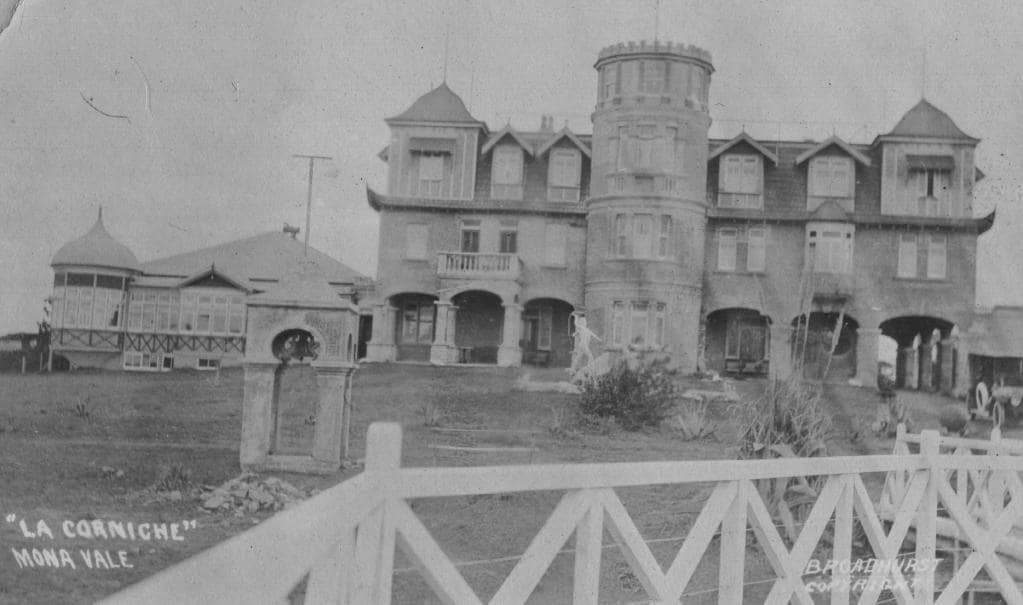
Brocks 'The Oaks' - 1st version Broadhurst postcard, circa 1902 - 1912
The following letter will interest visitors to Newport and Bay view: — 'Dear 'Glaucus,'
— For the last few weeks I have been trying the points between Manly and Barrenjoey for rock fishing, but without success, and we found fresh water as scarce as the fish. There seems to be none procurable at all as far as we could see. Any suggestion you can make will be acceptable, as to likely points. I might say that we ride bicycles, and so distance Is not of much account.
We tried Narrabeen Lagoon without success. This place Is a disgrace to all concerned In looking after its welfare. Could you not do something with the A.F.A. to prevent the netting going on, and to have the opening made as you suggested, so as to let the lake fill again P.S:We used to have first-rate camps up Deep Creek a few years back, and the fishing was fair at times, too. —Yours, &c, C.H.S.'
C.H.S. might try the Mermaid's Basin and rocks thereabout. It is on the coast at 'The Oaks,' Mr. Brock's beautiful home near Newport. BILLIARDS (1905, February 1). Referee (Sydney, NSW : 1886 - 1939), , p. 9. Retrieved from http://nla.gov.au/nla.news-article120499644
And to get people there:
MOTOR OMNIBUSES. THE MANLY-PITTWATER, SERVICE. INAUGURAL RUN.
The two motor buses recently imported from England for the service between Manly, Rocklily, Bayview, Newport, and Pittwater, made their initial trial on Thursday afternoon last. The run was to the residence of Mr. Brock, of Newport, and return to Manly, a distance of 23 miles. The 'buses, which were imported to the order of Messrs. Reid Bros., of Manly, are likely to be handled by a company, known as the Manly-Pittwater Motor Omnibus Company, Limited, with a capital of £8500. It Is the intention of the company to shortly Import a number of similar vehicles, as well as some steam 'buses, to tap the various populated districts at present badly supplied with tram or horse 'bus service. Manly was en fête for the occasion on Thursday, and a big crowd assembled at the Pier Hold to witness the start, which took place at 2.20 p.m.
Amongst those who took part in the trial were Mr. Dugald Thomson, M.P., Dr. Arthur, M.L.A., Mr. F. F. H. McKenzie, M.L.A., Alderman Quirk (Mayor of Manly), Alderman Walker, Alderman T. J. West, Alderman Lear Bioiinth, Alderman Ogilby, Messrs, S. L. Ridge, Charles H. Kerry (director of the Motor Company), E. E. Kennedy (secretary to the company). E. A. Laurence (of Laurence and Laurence, solicitors to the company), John Bennett, Wm. M'Leod, Daniel Farrell, H. T. Roby George Rodda (of Adams and Co.), Alexander Edward (secretary to the. Traffic Commissioners), D. S. K. Millar (Bank of New South Wales), W. J. Bradley, and Mr. Houreaux.
As the buses left Manly for Newport with 16 passengers on board each vehicle there was much enthusiasm, and it was evident that the introduction of the latest form of propelled vehicle was highly appreciated by the residents. Flags were flying from various buildings and arches had been erected at various part's of the road. As the 'buses made their run towards Newport several other petrol vehicles escorted the now service. All were gaily decorated out of compliment to the new Motors. There is little doubt that with a good and quick service many people will soon make the trip. Considering that the buses were shod with solid tyres the run was very smooth throughout.
The first 'bus, with the "Herald" representative on board, reached Mr. Brock's residence at 3.9 p.m., having covered the 11 ¼ miles in 49 minutes. There had been no rushing in the journey, as it was the intention of the owners to allow the party to view the magnificent scenery en route. With the exception of a slight delay at Sheepstation Hill, owing to the fan belt slipping off the pulley, the run made by the first bus was a delightful one, and must be deemed very successful. Unfortunately, the second 'bus had not quite so good a journey, as the carburetor stopped up when near Sheepstation Hill, and a halt had to be made. It took the chauffeur a considerable time before the obstruction in the petrol feed tube was removed. The delay was most vexatious to Messrs. Reid, who had already accomplished several journeys without a stop. It was especially unfortunate that the stoppage should have occurred in the inaugural run, as such things often tend to dishearten enthusiasts. Considering that the buses are as yet practically new, and that they will not be In thorough working order until they have covered at least a couple of hundred miles, the speed and hill-climbing capabilities displayed during Thursday's run must be deemed excellent.
DESCRIPTION OF THE BUSES.
Each bus is fitted with a 22-h.p. Aster engine, 4-cylinder rod, and with the cylinders cast separately. The full power of the motor is got at 1000 revolutions, but the speed may, be brought down very low by the manipulation of the throttle. The engine Is supported In the chassis by two strong channelled steel stays running from one side to the other, thus keeping the motor firm and secure. Elseman high tension magneto with synchronised Ignition is fitted, the accumulator and coil supplied extra being carried as a standby. Each of the four cylinders Is run from one coil by means of a distributor, and the switch fitted on the dashboard enables the chauffeur to turn on or off either Ignition at will. The manipulator of the spark and throttle Is of the latest type, being attached to the steering wheel, so as to allow the driver easy control. The change speed gears being at the driver's right hand allow easy management. As regards the chassis, It Is made of pressed steel, of U section, and narrowed In front, so as to allow a bigger wheel look. The length of the frame is 15ft 7in, and the width 4ft 9in, while the wheel base Is approximately 11ft the latter width being practically that of an Australian waggon track. The weight of the respective models turns out to be a little more than expected for a single-decker, totalling altogether 2 tons 5cwt for chassis and body. There is little doubt that the wood work In the motors is substantial, but had a little less solidity been supplied they might have been bettor. The artillery wheels fitted to the 'buses are strong, and, having solid forged axles, there is little likelihood of any injury to them. The drive is by chain, a stout 3in block chain being fitted on each side. The chain may be tightened when required by means of a substantial radiating rod. The springs of the vehicle,, though apparently strong, proved on the running to be just a trifle weak for the Manly-Newport road, and one could often experience at certain places slight Jars. It would certainly be advisable to have an extra leaf or two of spring put on.
Each 'bus is fitted with three speeds and reverse. Between the differential and the gear box is a strong coupling shaft with two flexible joints. The Panhard system of gearing with direct drive on the top is employed, and the estimated greatest speed is about '20-25 miles an hour. ' As regards the water circulation, this is supplied by means of a powerful pump. Tubular radiators and a large fan driven by bolt off the shaft help to keep cool the engine. The brake work on each chassis is of the external band type. Although for heavy vehicles the Internal expanding system of braking Is to be preferred, those on the new 'buses seemed very effective, and were able to pull up the latter quickly when descending some stiff gradients. The tyres, which are solid, were turned out by the Dunlop Company. It is a pity the company who purpose running the buses did not see their way to fit twin tyres on the rear wheels, as the wearing qualities of the latter are superior, and there is loss likelihood on the part of the vehicles to skid.
As regards the body part of the respective Cars, the design and finish seem simple, yet neat. In each 'bus there are four cross seats, each vehicle being capable of accommodating about 16 to 18 passengers. A very desirable feature about the seats Is that each of the four rows Is placed on a different level, the back one being the highest. This arrangement enables each back row of passengers to have an equally good view with those In front. There is a canopy, with convex roof, fitted to each car, and supported by tubular Pillars. To protect the driver or passengers in dusty or rainy weather, two folding glass panels can be lowered, as can the folding side blind. The finish of the vehicles is In excellent taste, the cars being upholstered In dark green leather. The woodwork Is painted dark chocolate with yellow lines on one model and dark green with light lines on the other. A luggage carrier is fitted on the top of the canopy.
SUCCESS OF THE SERVICE ASSURED.
When the buses reached Mr. Brock's residence refreshments were served, after which some photographs of the new vehicles with the passengers aboard were taken. Mr. Quirk, Mayor of Manly, occupied the chair, in the course of his remarks ho said that every credit was due to Messrs. Reid for having had the courage to Import motor 'buses.
Mr. Dugald Thomson, M.P., proposed success to the new venture, and eulogised the Importers as men of enterprise, who had surmounted great difficulties. He hoped soon to see a regular service of 'buses running between Manly and Pittwater, and trusted the venture would meet with the success It deserved.
Dr. Arthur, M.L.A., in supporting the toast, said he was a humble admirer of anything In the shape of enterprise. Ho thought the Manly-Pittwater buses would be a decided acquisition to the neighbourhood. He characterised Pittwater and the surrounding neighbourhood as one of the loveliest districts in this State, and hoped the present buses would be compared favourably with those at present in Sydney, would always be kept busy.
Mr. M'Kenzie, M.L.A., also spoke, and pointed out the necessity that existed for proper communication, between Manly, Newport, and district. He had no doubt that in a short time many more similar buses would be in use.
Mr. Cried responded and spoke of the initial difficulties in inaugurating the service. He was perfectly satisfied that once the novelty had worn off the present buses they would successfully cater for the demands of the Manly and Pittwater residents.
MOTOR OMNIBUSES. (1906, February 10). The Sydney Morning Herald (NSW : 1842 - 1954), p. 17. Retrieved from http://nla.gov.au/nla.news-article14732737
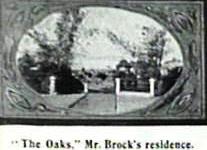
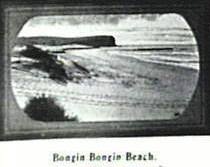
Brochure advertising sale of land in the Warriewood Estate by Henry F. Halloran & Co showing the entrance to Brock's Folly and Bongin Bongin Beach 1906.
Ethel Turner (Curlewis) conducted the Dame Durden Children's page in the Australian Town and Country Journal until it ceased publication. Viva Brock, daughter of George Brock of 'The Oaks', late La Corniche at Mona Vale Beach, was a frequent correspondent and describes her seaside home and a trudge up a hill, possibly towards Bungan Beach or towards Foley's Hill at the base of the hill that climbs up Mona Vale road, in her letters.
BY THE SEASIDE IN N.S.W.
"The Oaks," Mona Vale, via Manly.
Dear Dame Durden,-It seems quite a time since I wrote you. I was so pleased to see I was mentioned in the first and second honours of the last competition. The other day I sent in a story for Princess Spinaway's Competition. It is the first I have ever completed. Often I have written them, but never finished them. Nearly every morning a friend, my sister, and myself go for a swim before breakfast in the surf. It is glorious swimming in with the big strong waves, one after the other. When the swim is finished, we He down on the sand and have a sun bath, which nearly burns us black. There are so many different and beautiful things on the beach. Some of the shells are a work of art, the colours on them are so prettily tinted, some shading from dark to light. My sister has a lovely collection of shells, mostly gathered off the beach near us. I think the sea egg is the quaintest of them all. To get a largo one of these, you must hunt for it amongst the rocks where it lives in a round hole, as the shell Itself is round. It ls covered with pointed spikes which enables the fish (who lives Inside the shell) to travel about. The largest sea egg I have seen just fitted Into my hand(which is not very small) and the smallest I have seen was about the size of the tip of my finger. The shell ls very delicate, and is either grey or pink. There are so many different things to tell about shells and their wonders that I am afraid, dear Dame, it would take all the page to describe them; but as the sea-egg ls a favourite of mine, I thought I would tell you all about it. I suppose you have seen an octopus. It is a very funny fish. However, I will tell you the kind we have here. The body Is flat and long, with great long legs and arms projecting from its body, and each leg and arm has suckers underneath them, which is like a tiny white shell, very soft and jellylike. The fish is harmless In the way of biting, but ls dangerous when it ls a very large one, as it dings to you and squeezes with great strength. When it ls angry with you it throws black liquid all over you. I love to spend a whole day on the beach and interest myself in its wonders. I hope you will understand my descriptions of the sea-egg and the octopus, they are poor but I hope to improve each time I write to you. I will finish my letter now, and hope you and the rest of the Court are well.-I am your loving correspondent.
Viva Brock.
(The Jester:-
A Sea-egg and an Octopus were walking hand In hand;
They wept like anything to see a girl upon the sand.
"If she were only swept away," they said, "it would be grand."
"If seven whales and seven sharks hung round for half a day,
Do you suppose," the Sea-egg said, "that still she'd want to stay?"
"I fear so," said the Octopus and brushed a tear away.
"If I were only old enough," it added, with a sigh,
I'd squeeze her up to jolly In the winking of an eye."
"Still, why not throw your ink at her?" the Sea-egg did reply.
"Oh, come now," said the Octopus, "I'll own it is a bore
To find a tiresome girl like this thus littering up our shore,
But a revenge so horrible was never planned before."
''For don't you see," he added, "she's already fond of ink.
And like a thirsty blotting pad would simply lie and drink,
With a consequence so awful that I shudder as I think."
"I understand," the Sea-egg said, "I quite comprenez-vous,
There'd be sonnets on the ocean, and on each wave a few,
While odes unto the billows continually she'd do.
"And goodness gracious, gracious me, too horrible 'twould be,
If she should make a poem upon you, dear friend, or me,
An 'Ode Unto an Octopus,' or 'Lines to Egg-of-Sea.' "
"Oh, Viva," wept the Octopus "you've had a pleasant swim,
Won't you be trotting home again; it's high time you went in?
I dare not angry grow with you, I find 'twould be a sin.")
Peeps in Four States. (1906, March 21). Australian Town and Country Journal (Sydney, NSW : 1870 - 1907), p. 38. Retrieved from http://nla.gov.au/nla.news-article71528448
The flowers described have been photographed at Ingleside and on Foley's Hill-Tumbledown Dick hill prior to the recent Mona Vale Road upgrade. The Bush Rose and Waratah has also been found and photographed in this area prior to the upgrade works:
Dame Durden's Post Office.
"The Oaks," Mona Vale, via Manly.
Dear Dame Durden,-Thank you so much for printing my last letter. "Cosmos' " recipe for a sponge cake is just splendid; I tried it yesterday. It turned out a great success, and ls now rapidly decreasing. I am so glad summer is here, so as to begin one of my favorite sports, which is swimming, and am quite sure many of the Cornerites who are fond of the same sport will be glad to welcome it also.
Now, Dame, I am going to tell you of a trip my sister and myself had last week. It was a glorious afternoon-nice and warm, and with a gentle breeze blowing when we both started. We walked along the main road for about ten minutes, and then turned to the right, and proceeded on to a. small rough track leading through a thick bush. The foliage on the trees looked beautiful, all of so many different colored shades, mingling with the pale blue sky dotted with large mountains of snow-white clouds. The birds chirped, and flew merrily about now and again, taking a rest on various swinging boughs belonging to the many trees around. We walked on in silence for some time, when my sister broke it by suggesting a search for waratahs. I readily agreed to this plan, as I felt very fresh, and ready for some fun. We quickened our pace, as we had to climb up a large hill, and reach the top, where we hoped to find the waratahs, This track we had never walked before, but ridden on horseback, the latter taking half as much time.
When quarter of the way up the hill, we were rejoiced to see that pretty flower, namely, the wild fuchsia. I will try and describe it, as it ls one of my favorite native flowers. Tho stem is long and thin, with small stiff, dark green leaves, which grow to a sharp point, and if one is not careful when handling it, it will prick similar to a pin. The flower is like a long slim bell, the color white, with a border of deep red. About sixteen of these bells hang from a tiny projecting stalk, forming a double row opposite one another; eight hang one side, and eight the other. Soon we saw many others, and picked them as we walked on.
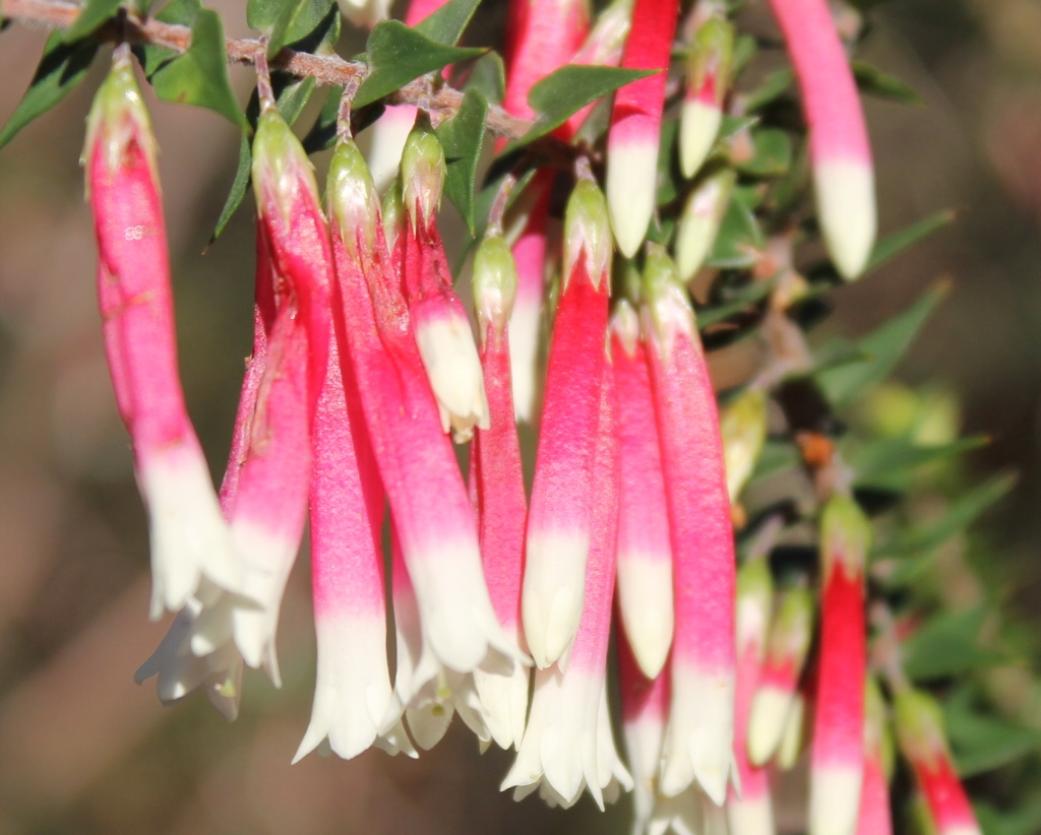
Epacris longiflora - Bush Fuschia
The hill began to get steeper, and we were rather tired, so we rested occasionally on small pieces of rocks on the track. At last, after an hour had passed, we found ourselves on top of the hill, surrounded by numbers of various colored flowers, peeping out from their, green homes, and waving gently in the wind, which looked like a token of welcome.
On our left, away in the distance, we could see the large body of dark-blue ocean stretched for miles around, with great headlands projecting out. To our right was a large flat of trees and flowers, with more hills in the distance. Very soon both had a huge bunch of native roses, mixed with many other different flowers; their names I am ignorant of.. The only name I could find for all was "Beautiful." The native rose is a well-known bush flower; its stem is slim, and has a short almost round leaf, which covers the stem the whole length; also 'the projecting stalks where the flowers bloom. The flower has four soft bright pink petals, with a tiny white centre, and has a lovely strong perfume. Great was our disappointment when we saw no waratahs growing near, and as time began to wear on we knew we must soon be returning. Last year a great deal of the bush had been burnt by numerous fires. Whether that affected the growth of the waratahs remains to me the saying of "I don't know." It was too early for flannel flowers and Christmas bells, so we were minus of those also. I have been thinking perhaps we were too early for the waratahs, too. But then, Dame, we did not mind, because already we were enraptured with those we had, and their lovely fresh bushy perfume was delightful; also their delicate colors were a credit to Nature's work of art.
With our large treasure bunches, we turned and proceeded homeward, and found it less work, as it was nearly all down hill. I must end this letter, and hope you have understood the descriptions of both native flowers, and would have tried to describe the other three, the names of which I have already mentioned, but it would have taken up too much of the Corner. With best wishes to all the Court and yourself,-I am still your loving correspondent,
Viva Brock.
(The Jester: I like your description of the Savage Fuchsia. Though, for a really "tasty" description of this favorite flower, what do you think of this that a dress-loving damsel of my acquaintances perpetrated:-"The leaves of this stylish flower are of stiffly-lined Vienna green material, slightly vandyked at the hem, and herring-boned with a delicious shade of French bronze. The flower Itself is of warm scarlet velvet deepening to the new shade of claret. It opens over a corselet bodice of Ivory brocade studded here and there with buttons of exquisite green workmanship. There is no doubt whatever that this flower will catch on In the best society.")
Dame Durden's Post Office. (1907, January 2). Australian Town and Country Journal (Sydney, NSW : 1870 - 1907), p. 33. Retrieved from http://nla.gov.au/nla.news-article71588117
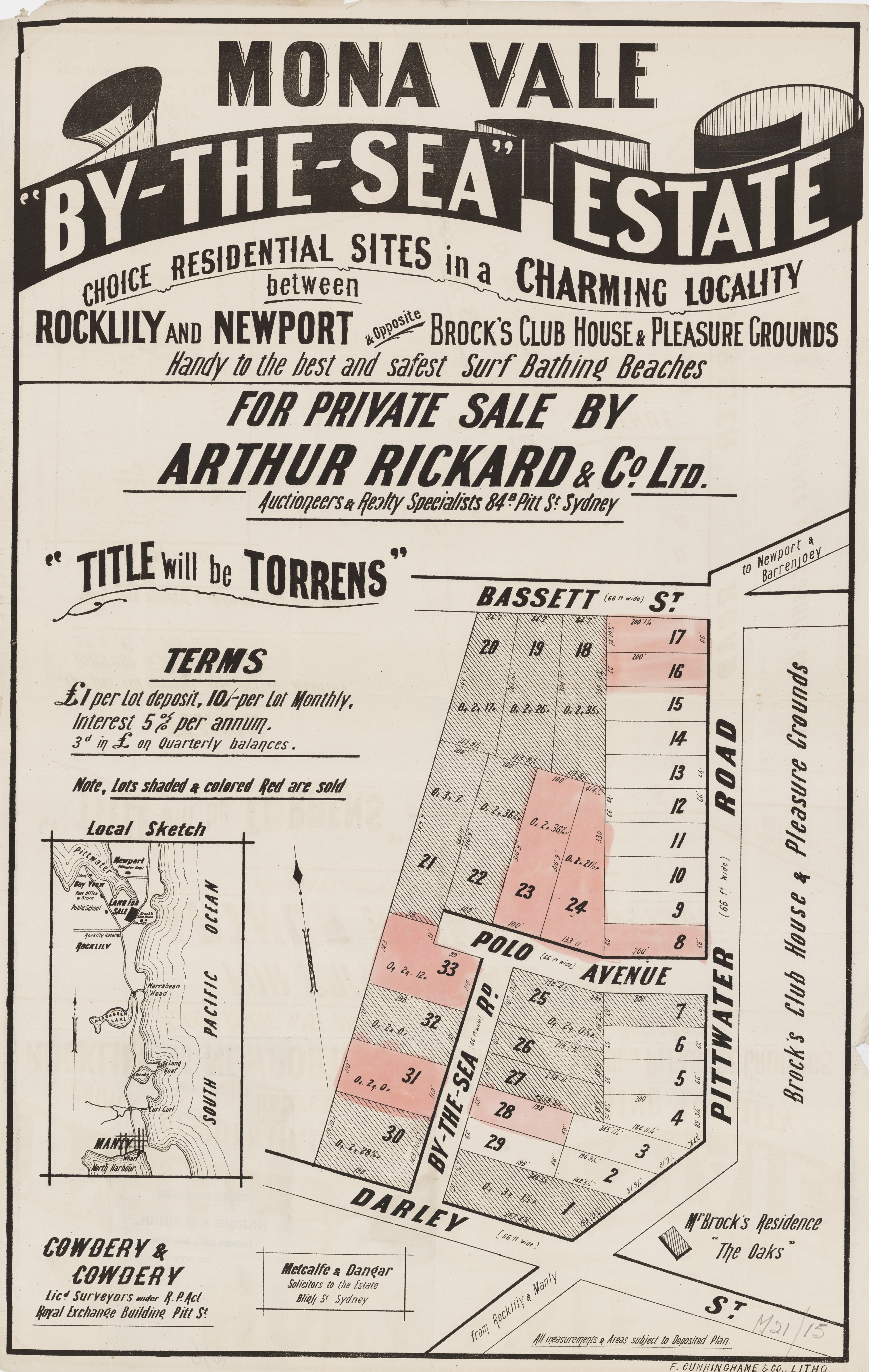
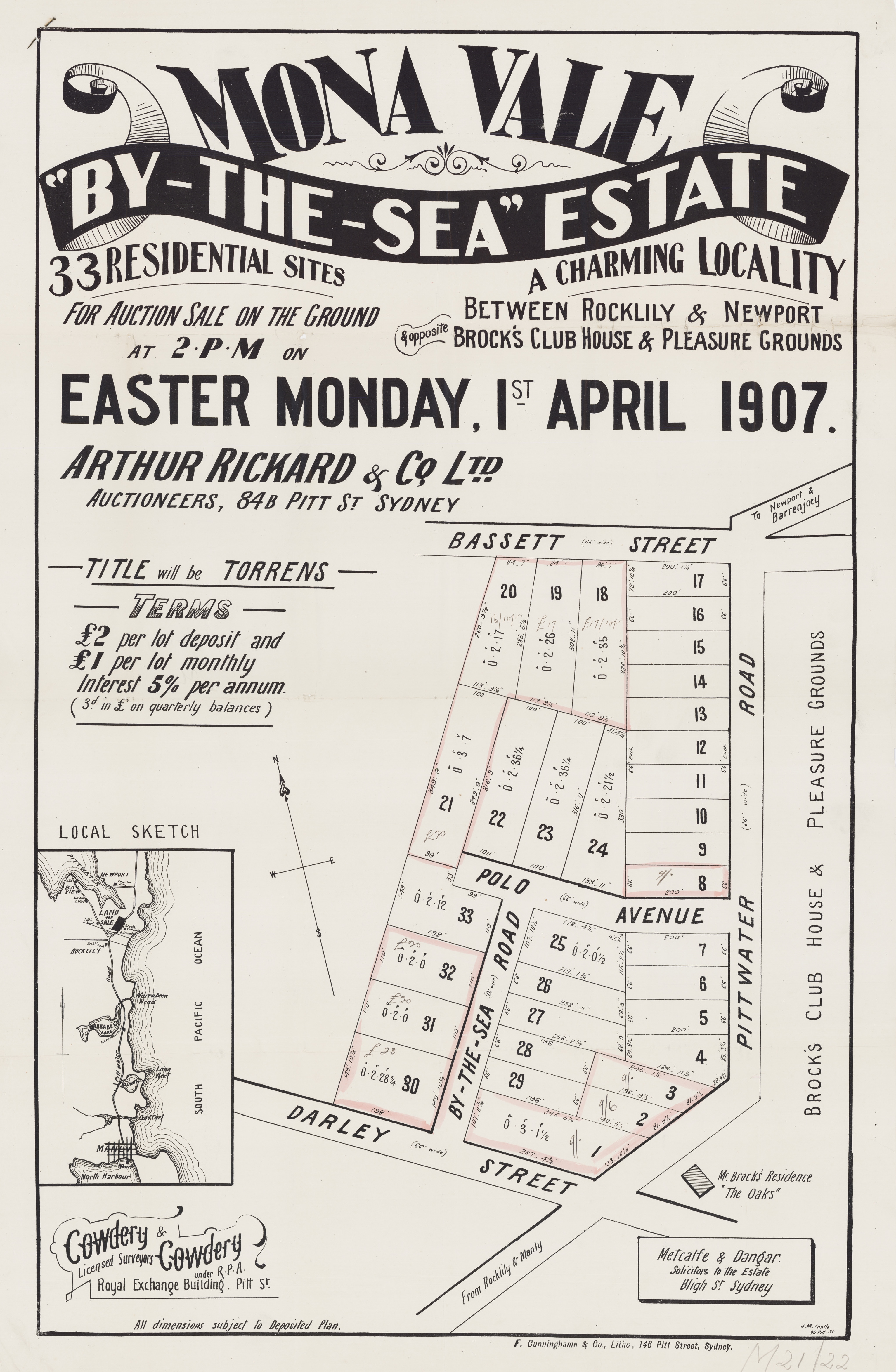
And later that same month:
TO HOTELKEEPERS, AMUSEMENT CATERERS, SPORTING CLUB PROPRIETORS. BY ORDER OF THE MORTGAGEES. THE OAKS. MONA VALE. PITTWATER.
This MAGNIFICENT and UNIQUE PROPERTY comprising about 114 acres, under TORRENS TITLE is situated 10 miles from MANLY, about 500 yards from the Rock Lily Hotel, on the main road to Pittwater and Newport, rendering it accessible from the city by either MOTOR CARS or COACH, has large FRONTAGES to DARLEY STREET, 'the PITT WATER-ROAD, BASSET STREET, and the PACIFIC OCEAN'!
THE BUILDINGS specially designed for a RESIDENCE of a PERFECT SANATORIUM, with Cottages for families attached, of brick on concrete foundation with Mansard roof with promenade, contain imposing MAIN ENTRANCE and HALL, billiard-room, lounge, smoking-room, 25 bedrooms, extra large dining hall, 6 bathrooms, and most up-to-date domestic arrangements, and servants' quarters.
ADJOINING THE CLUB-HOUSE is a STUDIO MUSIC-ROOM, with artistic lead-light windows and ceilings.
LARGE FERNERY. A Short Distance from the main building is an octagonal house of brick and wood, containing in the upper portion BALL-ROOM (12ft x 42ft), -with up-to-date arrangements in basement.
IN the GROUNDS are the THREE BRICK COTTAGES above referred to, also TWO OTHERS in course of construction, and on the far side of the grounds is a six-roomed W.B. Cottage, with tiled roof.
THE GROUNDS are tastefully laid out with ornamental shrubs, lawns, and statues in front of the CLUB-HOUSE, while an area of about 40 acres opposite has been made ready for SPORTING purposes. GOLF, POLO, CRICKET, FOOTBALL, LAWN TENNIS, etc, and a 6-furlong Racecourse.'
THE PROPERTY. DELIGHTFULLY SITUATED on the shores of the PACIFIC OCEAN, embraces large beach Frontage where SURF Bathing can be indulged in without risk. Added to other attractions there is a NATURAL FRESH WATER LAKE in the grounds, enhancing their beauty, and at the same time affording a PERMANENT WATER SUPPLY. '
CONSIDERING the rapid strides in Motoring- as a means of transit, and the unrivalled position of the health and holiday resort, there should be a great future FOR THE OAKS.
BATT, RODD, AND PURVES, LTD, have been instructed to sell the above by PUBLIC AUCTION, at their Rooms, 88 Pitt-street. Next TUESDAY, the 7th of MAY, at 11.30 a.m. MESSRs. Minter, Simpson and Co., solicitors for the Mortgagee. Advertising. (1907, April 27). The Sydney Morning Herald (NSW : 1842 - 1954), p. 22. Retrieved from http://nla.gov.au/nla.news-article28153265
And later in the year, an Auction showing subdivisions is accompanied with a brochure:
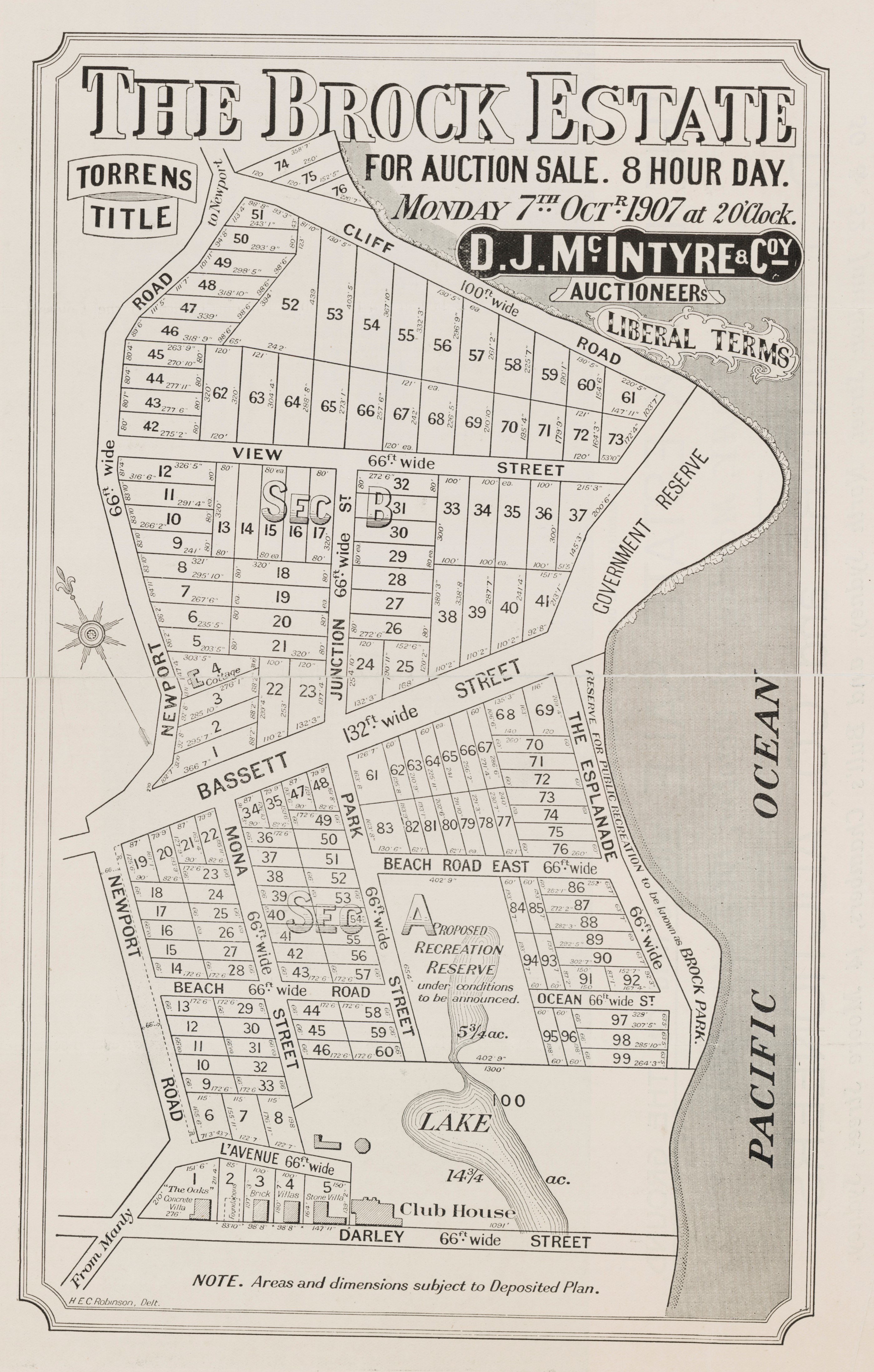
The Brock Estate - Cliff Rd, The Esplanade, Darley St, October 7th Newport 1907. Item No.: c046820076 from Mona Vale Subdivisions, courtesy State Library of New South Wales
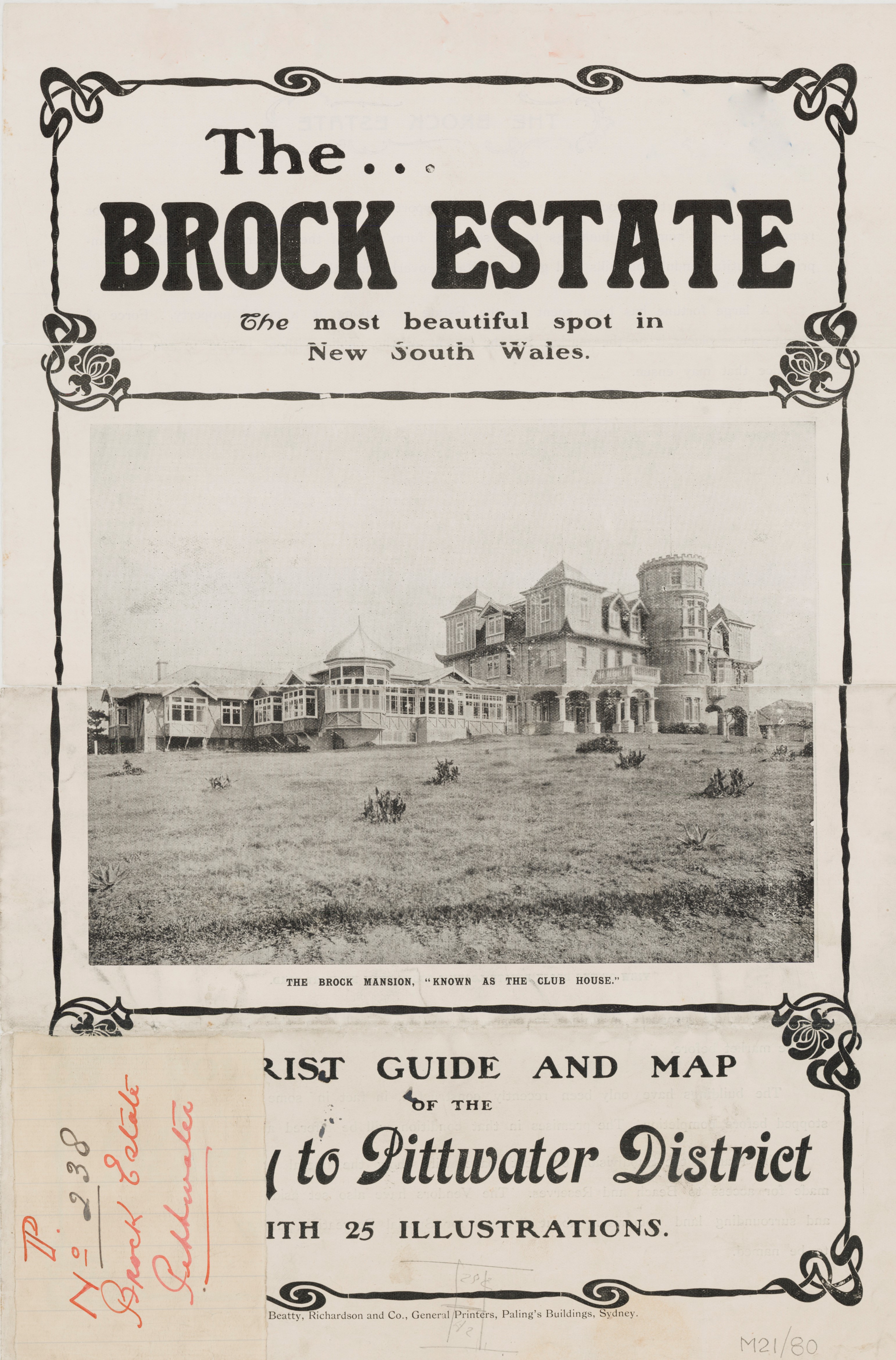
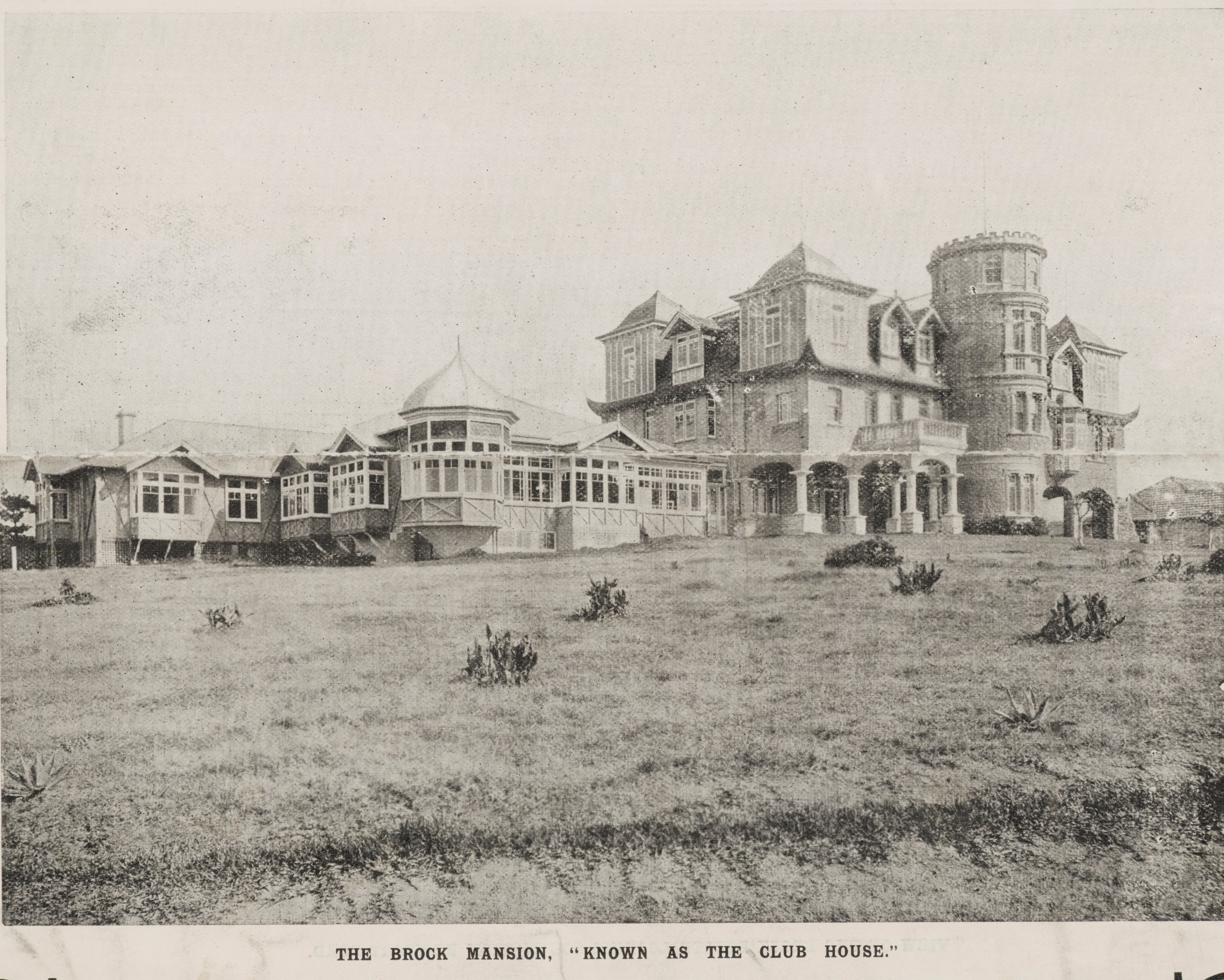
The Brock Estate - brochure Front page, 1907 Item No.: c046820078, Mona Vale Subdivisions, Courtesy State Library of NSW
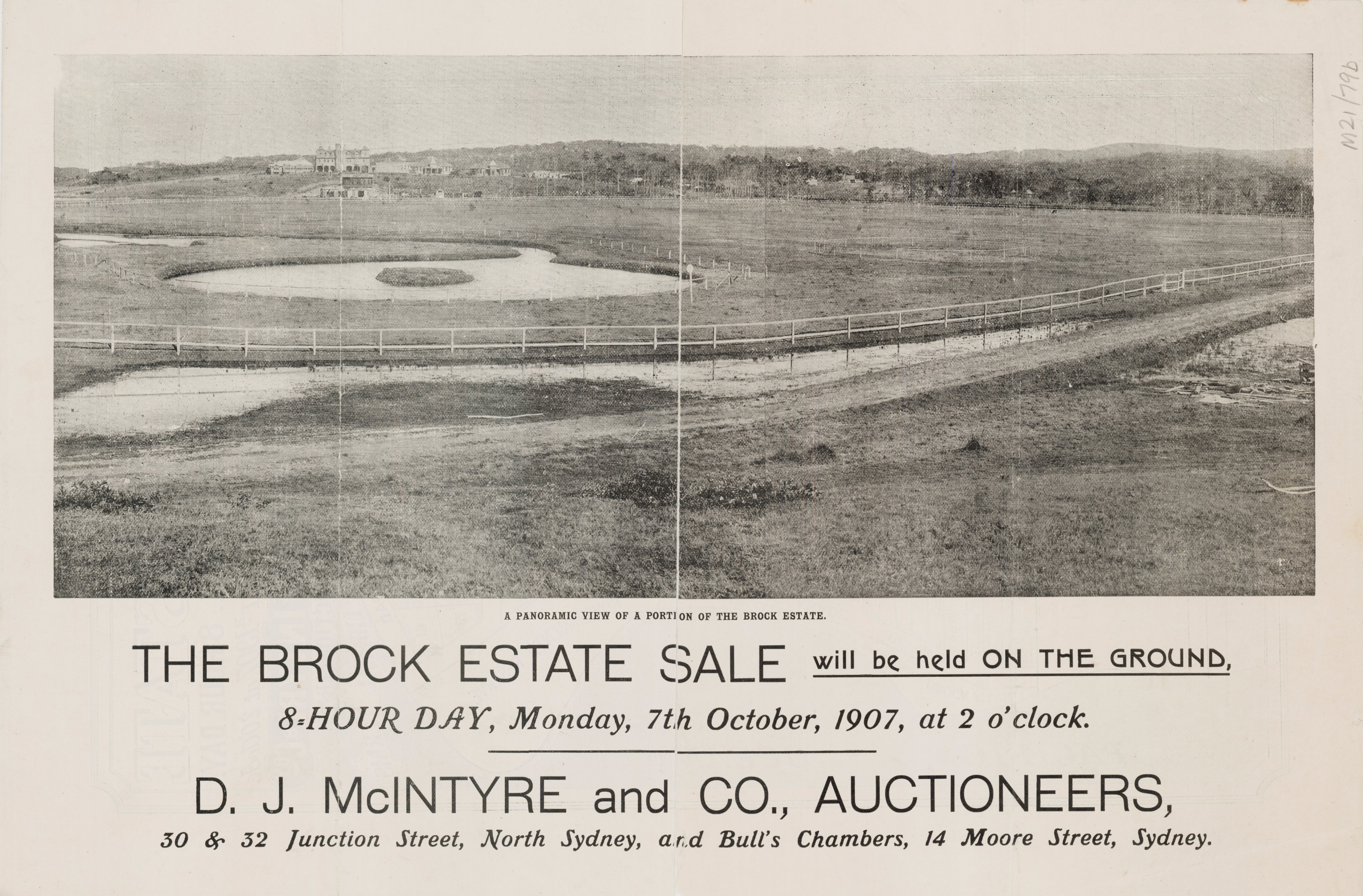
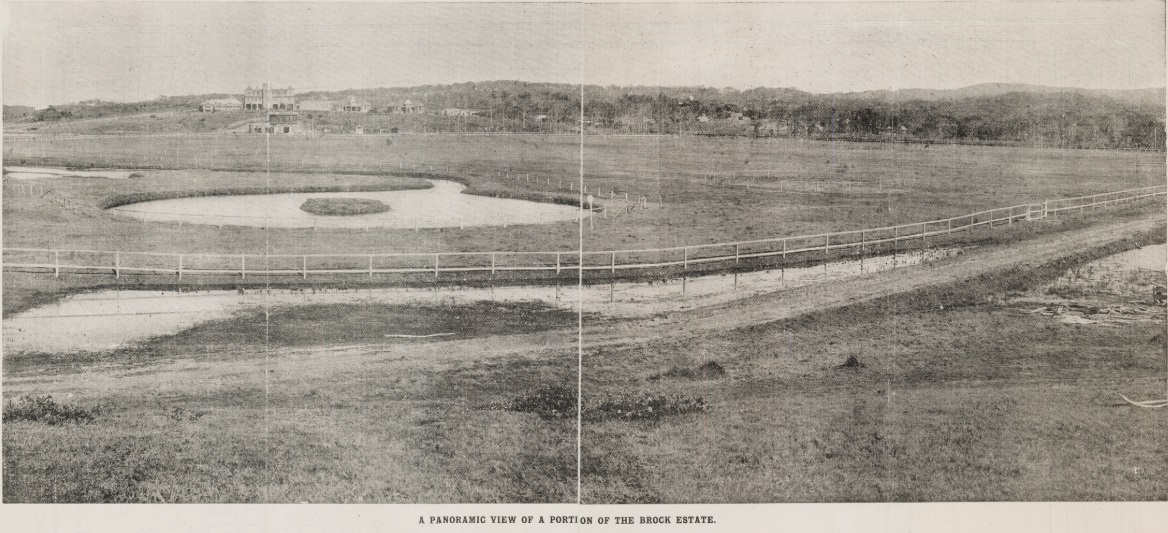
The Brock Estate - 1907, inner page brochure, Item No.: c046820077, Mona Vale Subdivisions, Courtesy State Library of NSW
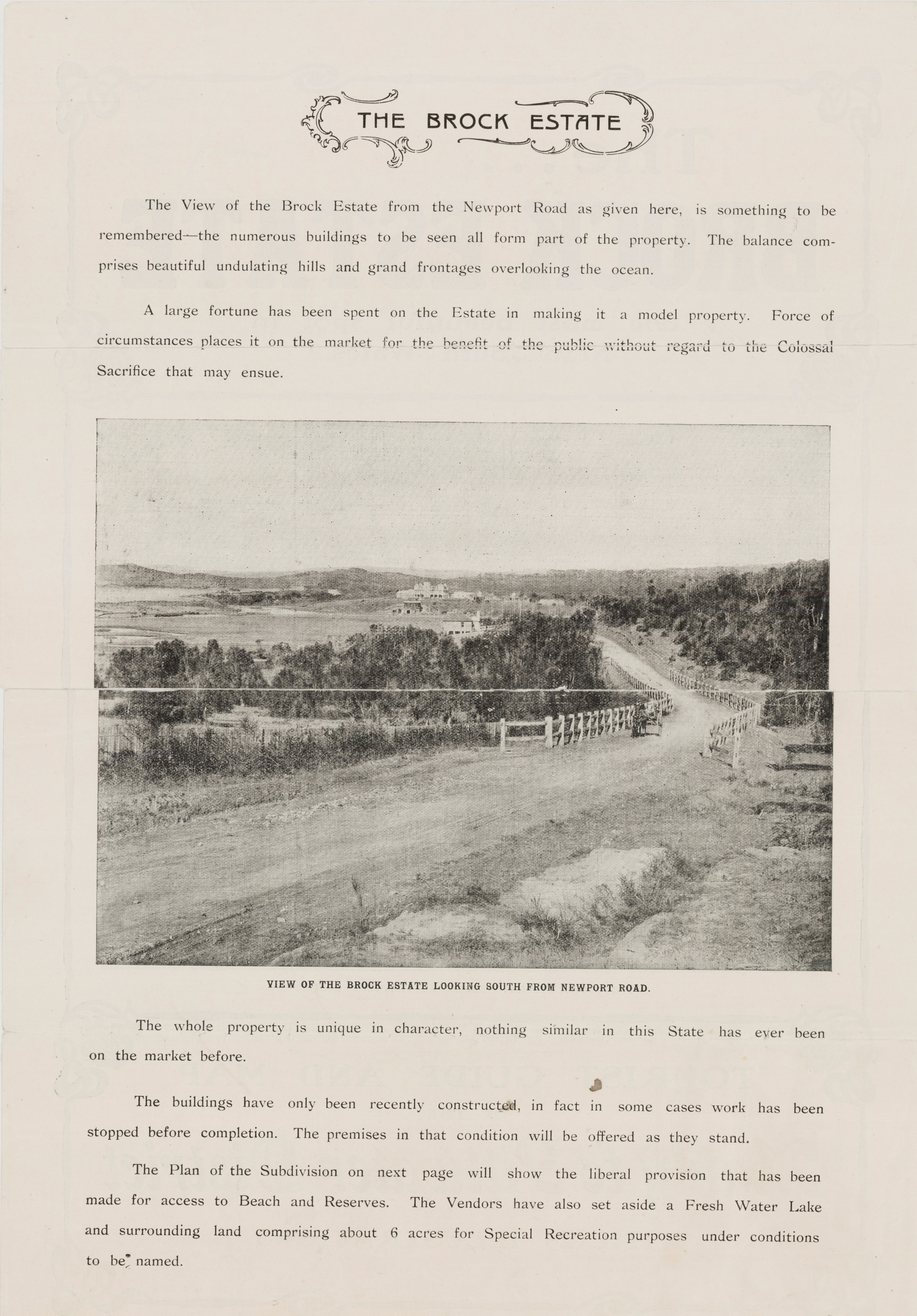
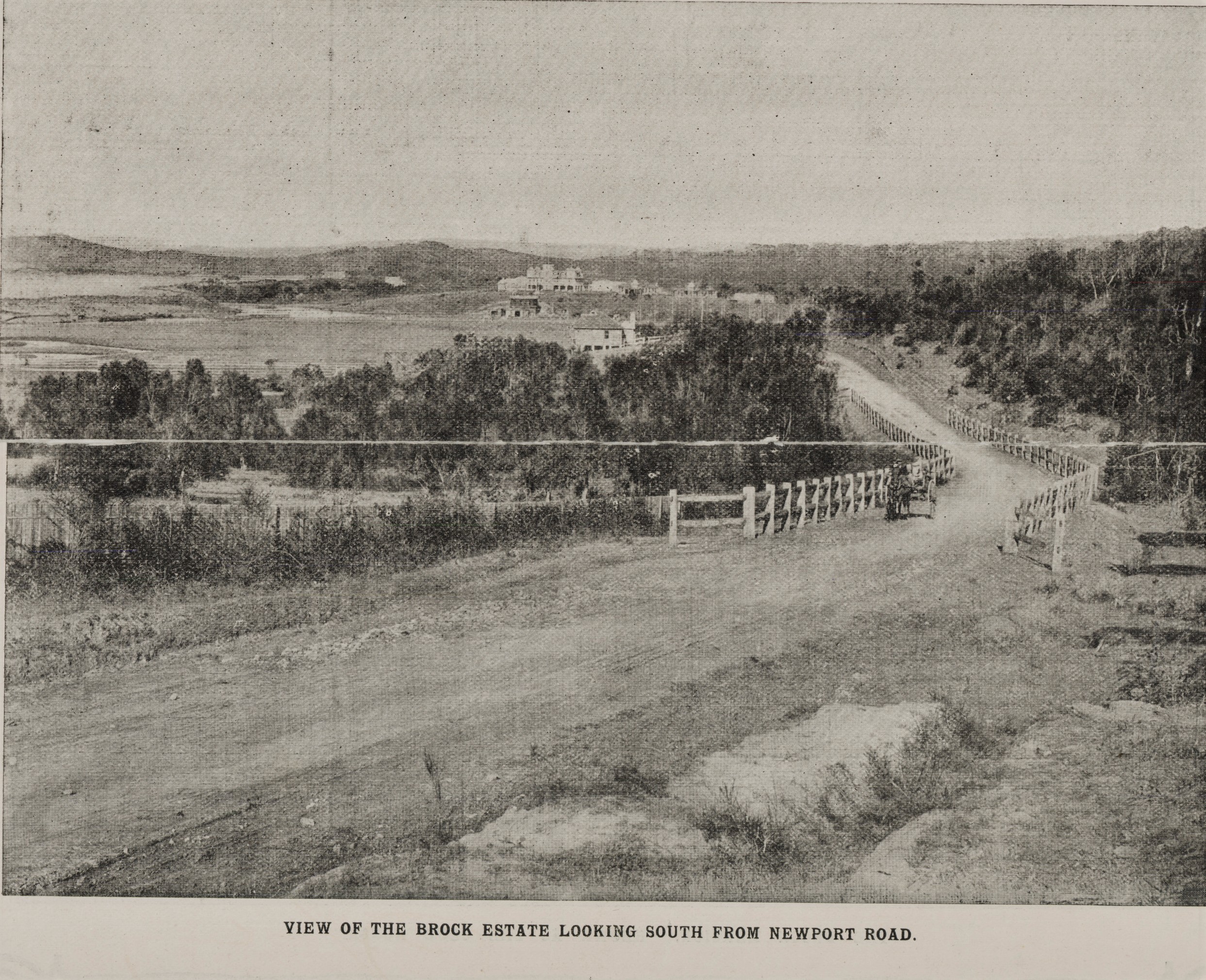
The Brock Estate - 1907, inner page brochure, Item No.: c046820079, Mona Vale Subdivisions, Courtesy State Library of NSW
QUITE A MODEST FIRE.
This little experience happened in one of my old neighborhoods during a stay with some friends. One night, in the middle of winter, it was bitterly cold, and we had just returned home after visiting a country concert some miles away. Our host suggested a fire, and we all agreed it was a welcome plan. Soon a big bundle of firewood was carried in, accompanied by two huge logs, familiar to the country fireplaces. With eager hands the master of the house lighted the wood, and then followed a grand sound of cracking and a big blaze. He continued to pile the wood on with great enthusiasm. The flames grew to an enormous height, and our hostess, whose name was Mrs. R-, cried in very alarmed tones "The chimney is sure to catch on fire!" But he assured her it was quite safe, and surveyed the successful fire proudly. Mrs. R- became very nervous, and disappeared through the front door only to come back with a rush and uplifted arms calling loudly
'I knew it, the chimney is on fire!"
Then there was a stir, and we hastened outside to find it was true, for there a great blaze and flying sparks wore shooting upward from the top of the chimney. Someone suggested wet bags to be thrown over it; others buckets of water, and so on. I was summoned to "awaken the maids. I banged and called loudly at their door, which was soon opened, and two frightened, ghastly figures appeared.
"Hurry!" I said; "the chimney is on fire; Wrap yourselves in cloaks, and come and help!"
Then the groom was called.
Everyone was hurrying hither and thither with buckets of water when I returned. The groom and two others were on top of the roof in no time throwing water as fast as they could over the blaze.
One girl, who was also a visitor, declared it could not be put out, and the house would be burnt to the ground. She rushed inside to her room, and was soon back with her silver purse and brush clasped preciously within her hands.
She has always been teased ever since, as you may guess.
At last the blaze grew smaller, and after a real good half an hour's work we were relieved to see the fire was out. We were tired of handing buckets of water up to the three men on the roof, and were fairly splashed during the hurry.
When we returned to the drawing-room the fireplace and hearth were covered with water and lumps of soot floating on top of it.
Then we all set to and helped straighten things up, which took some time. It was very late, and we talked and laughed a great deal over the exciting little adventure. We then went to bed somewhat dazed and it was not till the beginning of the new day that we drifted away into the land of nod.
I hope,' dear Dame, you have enjoyed this description. You will see by the address I. am now living in Sydney at Rushcutter's Bay, and like it immensely, but miss the freedom and beautiful air of the country.
By Viva Brock, 'Aloha', 'Rushcutters Bay' (aged 16 years).
QUITE A MODEST FIRE. (1907, November 13). Australian Town and Country Journal (NSW : 1870 - 1907), p. 31. Retrieved from http://nla.gov.au/nla.news-article71598500
Hearing of his problems the then state government, stepped in and purchased the property from the mortgage company, leaving Mr. Brock still in debt (see advertorial below - 'The Story of Brock's Folly'). Their initial plans were to establish a healing place to be overseen by the then named 'Lunacy Department', which was wholeheartedly embraced by residents:
Mona Vale Estate.-Mr. George Crowley, managing director of the City Mutual Life, writes as follows:-In your Issue of yesterday's date Mr. Brock says, "to carry on I had to seek financial assistance. Promises made to me were not fulfilled, and now I find myself left with the debt of the building material to the tune of £1600." As It is pretty generally known that the society was the vendor of the property to the Government, this might give rise to misapprehension. Any promises that were made by this society to Mr. Brock were amply fulfilled. INSTITUTE OF ARCHITECTS. (1909, March 25). The Sydney Morning Herald (NSW : 1842 - 1954), p. 6. Retrieved from http://nla.gov.au/nla.news-article15045735
There is more on Mr. Crowley in: Pittwater Roads II: Where the Streets Have Your name - Avalon Beach
MONA VALE PURCHASE
At a public meeting convened by Councillor Quirk In Booth's Hall, the recent purchase of Brock's Hall and estate by the Government to establish a convalescent home at Mona Vale was discussed. There was a very large attendance.
Councillor Quirk having explained the position, Mr C P Harrington was voted to the chair.
A motion from Mr Devlin, asking the Government to give a guarantee that the proposed Institution be used for no other purpose than a convalescent branch of the Lunacy Department was moved, but the following amendment was carried by an overwhelming majority -"That this meeting is meeting is In accord with the proposition of the Government to occupy Brock's Mansions as a convalescent home, and most unreservedly gives it all support, and without question ". MONA VALE PURCHASE. (1909, March 26).The Sydney Morning Herald (NSW : 1842 - 1954), p. 10. Retrieved from http://nla.gov.au/nla.news-article15045857
Brocks Mansions.
(To the Editor.)
I read with deep regret the pathetic story of how the loss of £25,000 brought the writer, G. T. Brock, into financial difficulties, if not financial disaster, and as you ask for comments on this great loss, I would like to point out what I consider were the big mistakes made in the construction of these mansions. The first part of the work was good, filling in the swamp, erecting fences, the racecourse, polo grounds, stables and dwelling-house deserve every praise, as it turned an almost useless piece of land into what it is now, one of the most charming little spots on the N.S.W. coast. What Mr. Brock’s intentions were for constructing such a large place, I do not know, or anything about tram promises made to him by Mr. Sullivan. I am dealing with the buildings, simply from a mechanics standpoint, and I can only concur with you as you say in “Building” that the want of an architect was severely felt, and it does seem almost incredible that a man with Mr. Brock’s great intellectual attainments, and practical knowledge on so many diverse subjects, ever attempted to carry on such a big work without professional assistance.
These buildings are not a common or ordinary structure by any means; their construction required the skill of nearly every class of artisan, and nearly every known design of work, from Ionic masonry to lath and plaster, and naturally called for a man that was well up to all the little niceties of modern architecture. The tradesmen employed were good enough, their work speaks for itself; and the marvel is that they did so well, handicapped, as they were, for want of details. Being a stonemason myself, there are two blunders in the work that show out very conspicuously, and points badly to the want of someone who could use intersecting lines, or had knowledge of geometry. First, is the scroll work at the entrance gates. It is all out of rhythm, and seems to have been scratched on in a “here’s luck” sort of way, without any attempt at practical drawing at all. The second is the joints of the elipses arches, which are all wrong; instead of being struck from a centre of three segments, they are struck from the centre of an ordinary half-circle, so you can see in these two things alone, for want of a dr
Everyone here is really sorry for Mr. Brock. He spent a lot of money, gave Mona Vale a real good start, and now both him and his fortnightly pay is sadly missed.
JAMES BOOTH, Stonemason. Mona Vale. - Published in Building : the magazine for the architect, builder, property owner and merchant. Call Number N 690.6 BUI Created/Published [Sydney : Building Publishing Co.] 1907-1942. Issue Vol. 3, No. 23 (12 July, 1909)
It wasn't just the fortnightly pay that would be missed. Robert Daniel Porter, one of the Porter sons of Newport, enlisted on July 2nd, 1915, at Liverpool for service during WWII, - listing his age as 28 years and 8 months and stating he had done a 5 year apprenticeship with G S Brock, listing his trade as ‘Carpenter’.
The Oaks was now to be called Mona Vale Hydro:
MONA VALE HYDRO.
The ceremony of opening the Mona Vale Hydro formerly known as Brocks Mansion Pittwater took place yesterday afternoon. The estate which has a frontage to the beach was recently acquired by Mr Arthur Rickard of this city and he has leased the house to Mr Fox as a hydro and the polo grounds as golf links.
Upwards of 80 people accepted invitations and in the unavoidable absence of the Minister for Works the ceremony of opening the hydro was performed by Mrs Griffith.
A dinner presided over by Mr Arthur Rickard followed, among those present being Mrs Griffith, Mi G B Edwards MP and Mrs Edwards, Dr Arthur M L A mil Mrs Arthur, Mr E W Quirk (president of the Warringnh Shire Council) Mr D Hogan (town clerk Manly) Mr P J Carew (Warringah Shire clerk) Mr J J Mulligan, Mr Jas. Rickard, Mr G Crowley, Mr J W Duesbury, Mr Robey, Mr G Morgan, Mr Scott Fell and Mr Robey.
Mr Quirk proposed the toast of the Federal and State Parliaments coupled with the names of Mr G P Edwards M P and Dr Aithur MLA both of whom responded.
Dr Arthur M L A submitted Success to the Hydro which was acknowledged by Mr Arthur Rickard (who said that the surfing beach on the estate was one of the safest in the State) and by Mr Fox the lessee. MONA VALE HYDRO. (1910, December 23). The Sydney Morning Herald (NSW : 1842 - 1954), p. 8. Retrieved from http://nla.gov.au/nla.news-article15190827
GOLF - OPENING AT MONA VALE.
The new course at Mona Vale will be opened on Saturday next, with open amateur and professional events. For amateurs there will be an open 18 holes stroke handicap for three trophies; while the professionals will compete in a scratch medal handicap, for substantial cash prizes. Entries, accompanied with club handicaps, close with O. H. O'Brien, 83. Pitt-street, not later than Wednesday next. OPENING AT MONA VALE. (1911, February 18 - Saturday). The Daily Telegraph (Sydney, NSW : 1883 - 1930), p. 20. Retrieved from http://nla.gov.au/nla.news-article238724181
The three storey house had 37 rooms consisting of 25 bedrooms, 6 bathrooms, kitchens, a ladies lounge, ballroom, billiards room and servants quarters. The grounds had ornate fountains, stables, statues and a polo field now converted to a golf course. Smaller villas were built beside the main house and the grounds around them stretched from Bassett to Darley Street. One of these villas was owned by Scott Fell, MP.
An in depth advertorial tells more of how Mr. Brock lost his enterprise and who took it over after him and what his idea originally was:
WHERE TO SPEND THE WEEK END. MONA VALE
(BY MARCUS SUBURBUS.)
THE STORY OF BROCK'S FOLLY.
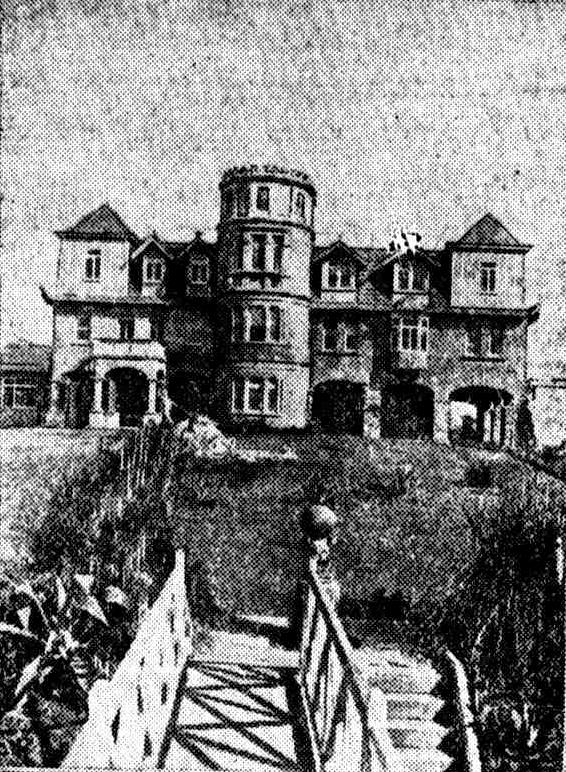
THE MONA VALE HYDRO.
Sydney Is indebted to the misdirected and inspired energy and enterprise of a man of whom, perhaps not one In five hundred knows anything at all for one of the most magnificent examples of palatial architecture that grace the outer circle of its environs. This beautiful and stately pile of buildings represents a great— a masterly— idea, which cost its unfortunate originator £25,000, and left him practically beggared. Sixteen or so years ago this man with an idea noted the great unclaimed swamp at 'Mona Vale— a stagnant lagoon, the only point in its favor being its proximity to a fine ocean beach, one of the many that enrich that much-favored stretch of coast from Manly up to Pittwater, and beyond. It occurred to him that if this useless blot upon the landscape could be drained an excellent seaside estate should result. And then the idea germinated. The unpromising-looking land was purchased for £600, and then the New South Wales Government was approached with the proposition that the buyer was prepared to spend £25,000 upon this site, providing a start was made upon the Pittwater tramway that had so long hovered mirage-like before the inhabitants of the district. .The Man with the Idea even offered to build the line' himself, should the Government withhold its hand, and called on the Minister for Works with a cash deposit of £10,000 to prove his sincerity. But the Government, apparently satisfied by these representations that the need of the district was pressing and genuine, promised to undertake the construction of the line a once. And the buyer, secure in the Government's promise, allowed his great idea to blossom instantly into the concrete expression of bricks and tiles and timber.
THE GREAT IDEA. And the idea was this: To build a huge village upon the drained lands of the estate, dominated by a magnificent clubhouse, and to sink £25,000 in the realisation of this immense scheme. To prove a financial success, access by tram to the estate was the one thing absolutely necessary. And this the Government had promised. The Man with the Idea set about the carrying out of his .purpose on a splendid scale. On the site he erected his own brickworks for the manufacture of the bricks and tiles: he bought a timber area at Erina Creek, on the Hawkesbury River, installed a timber mill and a planing machine as well, and so cut, freighted, and treated his own timber on the spot. He worked his own quarry, drawing from it all the needful stone, drained the swamp, obtained a regular water supply by the construction of a great brick and cement tank,' 20Ct. wide and 14ft. deep, and Installed a complete sewerage system. And all the while the promised tram was creeping out from Manly, slowly but surely. By the time it had reached Curl Curl, 12 months after its start, the walls of a mansion, or rather of a group of mansions, at Mona Vale were roof high, and the great idea was flowering in wood and stone and brick towards completion and perfection. The sum of £10,000 had already been sunk in initial expenses, and a further £15,000 borrowed to complete the work, and that work promised to be indeed a "thing of 'beauty and a joy forever." Forever, for the floors of the main building were built on a layer of concrete covered with a layer of bitumen and sawdust, upon which were laid 5000 hardwood sleepers, , and upon them another layer of sawdust and bitumen, and then the parquet flooring— a foundation impervious to white ants, and for all practical purposes everlasting. A hundred carpenters were at work, as well as a great host of other mechanics, and the loud ringing music of labor, which is the voice of progress, echoed and re-echoed' throughout Mona Vale. And the setting of the picture was as beautiful as the immense building rising under trowel and mallet and hammer. In the foreground two crescent-curves of hard, fine, sand, fronting the sea; beautiful green seaward sloping lands, and green embracing' bills. Meanwhile the grounds about the mansion were being decorated with statues and playing fountains, and among other costly and artistic fittings a great majolica mantel, that had originally cost £720, was In stalled in the entrance ball of the palatial place.. It was plain that the Man with the Idea had invested more than his mere capital In this sumptuous scheme. Something must have stirred in him that was akin to the emotions of all great builders, from Solomon of old and Darius the Persian, down to Christopher Wren and the designer of the flatiron building in New York. And Mona Vale on the New South Wales coast was in touch with the same spirit that reared the pyramids and built the Hanging Gardens of Babylon.
THE FATE OF THE SCHEME.
And it Is just here In the story that the fateful tram stopped. It had reached Curl Curl, one mile out from Manly, and there "it stayed, just 10 miles short of Mona Vale, and its waiting palace. Perhaps the authorities judged that a pleasant ten-mile tramp, bag in band, would be just the thing for intending guests, considering the invigorating air of the locality. Perhaps not. Anyhow, the mortgagors who had loaned their £15,000 in expectation of a tramline that would go a good deal further than Curl Curl Lagoon began to look dubious. Then, "at this psycho logical moment," as the novelists say, the Government that had guaranteed the tram bore tragic testimony to the instability of all human institutions, by going the way of all flesh. In short, it went out of office, and its tramline promise passed into the limbo of forgotten things, together with a variety of other departmental lumber. Matters began to look exceedingly serious. The £25,003 was gone, and although £5300 had been paid off the borrowed £15,000, a balance of £1000, which Included Interest, remained, and there was no Immediate prospect of the property returning it. But the Man with the Idea was not wholly beaten yet: Surmising that perhaps if a ready-made population were provided first, the tardy tram might reasonably be expected to follow them, he determined to sacrifice practically the whole of the area, including the recreation reserve, and the grounds surrounding the house, to pay the balance of the mortgage. The site had been actually surveyed for subdivision, when the wheel of his enterprise was effectually spiked again. The shire refused to approve of the plan until £1500 was deposited for the construction of the streets, and so, operations were again brought to a stand still. At this point the unfortunate successor of Darius, Barneses', and Christopher Wren was informed that the Government wished to purchase the entire property as it stood, and desired to know his price. ' He named the comparatively utterly insignificant sum of £7500, explaining that he needed £6500 to pay off the mortgagors, and £1000 to wipe off money owing for material supplied. He did not ask for one Sixpence for himself; only for sufficient to clear him of his obligations. He had failed, losing everything; but he wished to face the world with a clean sheet. However, the Government's emissary, after hearing the story, went to the mortgagors to negotiate. Naturally all they asked for was their £6500, and the Government, falling in with this request, took over the entire concern for that sum. So the Man with the Idea was turned adrift with £1000 worth of debts upon his shoulders, and not a penny saved from the wreck: while his £25,000 palace had been sold for £6500 Such is the story of Brock’s Mansion at Mona Vale, and surely the misfortune of the unlucky builder from whom it takes its name is almost unique.
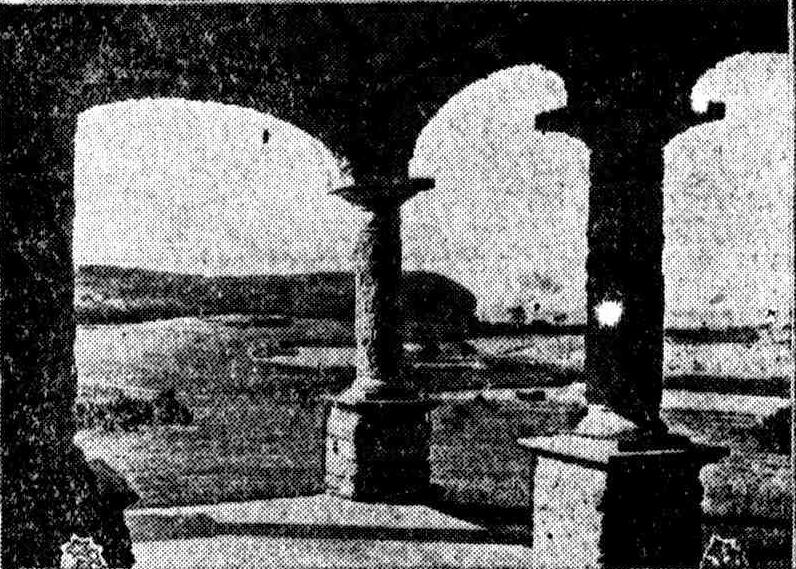
BROCK'S ESTATE FROM THE HYDRO.
BROCK'S ESTATE TO BE SOLD.
The sequel to the story of what has come to be known as "Brock's' Folly" promises to be good reading. It will doubtless prove a tale of pioneering such as all Australians delight in. There is every' Indication that In a few years the magnificent estate which was intended for the mansion grounds will become the scene of one of the most beautiful seaside settlements in the State. Mona Vale might have been designed by Nature as a resort of rest and delicious peace. Brock's Estate fronts two horseshoe-shaped beaches of hard yellow sand, on which the surf breaks soothingly, for the formation of the beaches provides splendid shelter against the occasional fierceness of the ocean's ebb and flow. 'Surf-bathing may therefore be indulged in with the greatest possible safety. All the pleasures of surfing arc to be gained there without any of Its discomforts. The coastline thus shaped is extremely pretty. Far away to Barranjoey is a succession of delightful little bays, forming; a- seascape' of quiet beauty.
SEASHORE JEWELS. ; The magnificent coastline that encompasses the Hole in the Wall, The Cave and Little Head is only just beginning to be known and appreciated. Between the Brock Estate and Manly the coast is better known, and is as picturesque as anywhere around -the continent. About three miles to the south are the Narrabeen Lakes fronted by that long stretch of beach that has made Narrabeen such a famous resort. Farther south still are Long Reef, Deewhy, Fresh water, and Curl Curl. The entire coastline, therefore, for miles in each direction forms a rich necklace of seashore jewels that grow in value as years go on. It will be very surprising if the whole of the 18 miles of coast between Manly and Barrenjoey does not attract a large population and become a famous pleasure zone.
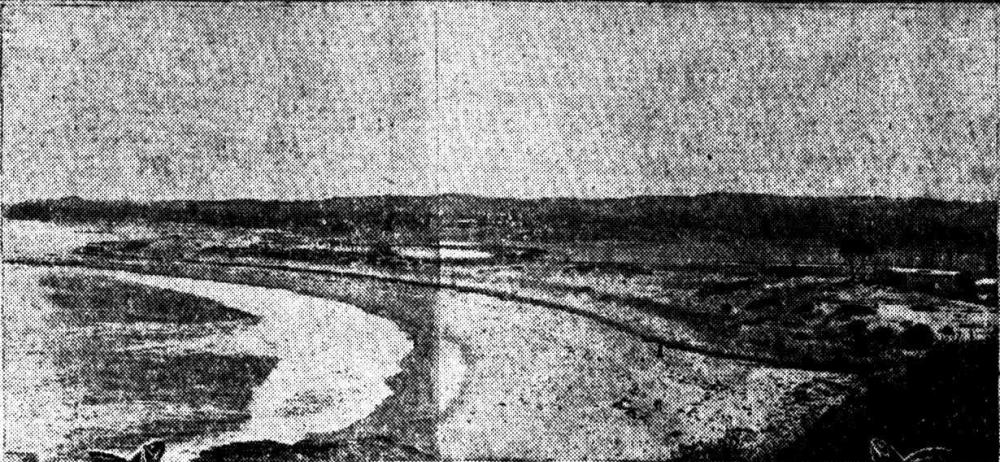
THE BEACH FRONTING BROCK'S ESTATE.
MAGNIFICENT LANDSCAPES. Some of the landscapes surrounding this Brock Estate would be worthy 'subjects for the brush of a Turner or a Corot. As one approaches it from the Newport-road, for in stance, an entrancing view is met with, the road winding prettily through undulating country, magnificently timbered and clad- with wild flowers. The property itself lies in a hollow of a cup like appearance, and on every side save the east it is protected by glorious hills. One can therefore enjoy all the benefits of the sea, air without the discomforts of the gales. The large fortune spent originally on this estate has made it a model site for fine homes. What Mr. Brock left undone Mr. Arthur Rickard has accomplished, and I see that next Anniversary Day that enterprising gentleman will offer those fine allotments to the public. Truly, they are very tempting morsels of the earth's surface, and especially so because the estate is splendidly subdivided and good wide streets, made throughout. The allotments are exceptionally large, and as the soil is excellent, the week-ender who purchases one of them may have a perfect orgie of flower and fruit-growing. If example goes for anything this estate should be the scene of some beautiful homos in the near future, for not only the mansion but several adjacent buildings have set a high architectural standard. 'Since Pott Pointing, has given way to week-ending It is quite likely that palatial residences will adorn this spot, especially as there Is no other land with ocean frontages for sale near there.
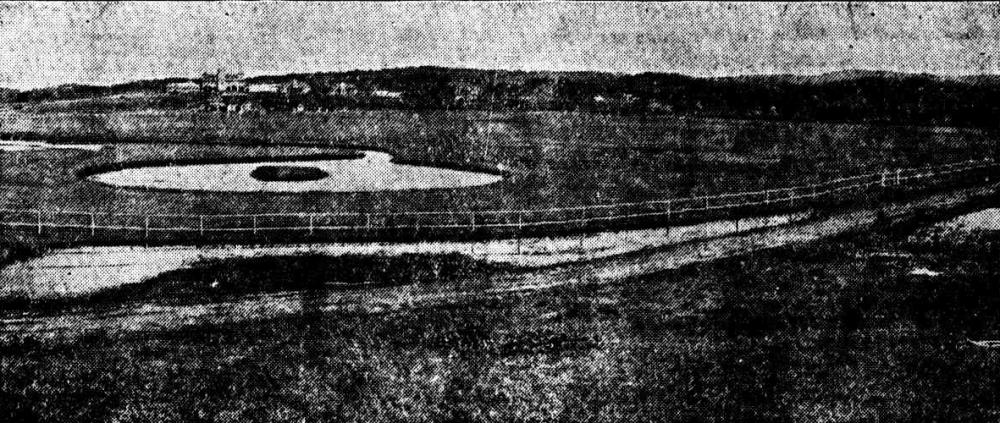
A SECTION OF BROCK'S ESTATE.
A GOOD INVESTMENT. The only need for the development of this fine area of country Is the tram, but the Newport extension may be regarded as a certainty and only a matter of time. The surveyed route, I am Informed, is along the road which fronts Brock's Estate. Although no definite promise has been given, it is generally understood that the tramline will shortly be proceeded with. When this is accomplished the estate will be within a comparatively short tram ride of Manly, and therefore within easy reach of the city. In these days of rapid transit and, a growing inclination, to plant homes in broad spaces, Mona Vale need not be considered too distant. The trip all the way from the city is such a glorious one that the travel-loving Sydney man will doubtless regard the distance as more of an advantage than otherwise. As an Investment, of course, property In this locality is a particularly good thing at present, for when the work on the tramline does start values are bound to take a leap 'upwards, and - there is no likelihood of them ever coming down again. Week-end holiday makers would do well to wait for Anniversary Day, as there might be a chance of getting in on this excellent proposition at bargain prices.
THE MANSION AS A HYDRO. On Thursday, last Brock's Mansion came Into its own when It was opened by Mrs.- Arthur Griffith, wife of the Minister for Public Works, as a hydro. At the invitation of Mr. Arthur Rickard (lessor) and Mr.' F. W. Fox (lessee) a large number of people attended, and the ceremony, which has already been reported in "The Sun", was a complete success. No better idea could have been conceived than to convert this magnificent building into a hydro. Mr. F. W. Fox, who is a well-known gentleman, and has been long and honorably identified with city business life, and his good lady, Mrs. Foy (who has large and fashionable guest establishments at Neutral Bay), are to be complimented upon their enterprise in undertaking this venture, and deserve every possible success. For several years past, and particularly since surf-bathing became popular, the need has been felt of a really first-class accommodation house near the seashore. The hotels and boarding-houses at the beaches have proved, inadequate to accommodate, in the best style the great and growing number of families who desire to spend their summer vacation at the seaside. Taking a furnished cottage is the only other, alternative, and this has decided disadvantages. In the first place, the majority of people cannot afford a sufficiently long vacation to make it worth while. Again, the responsibility of house keeping greatly detracts from the pleasure of a holiday. Is it any wonder then that the question is asked again and again: "Where is there a really first-class place to stay, at the sea side, where one may enjoy every comfort and have absolute peace and quiet— a place equal to the resorts of Europe and America?" We now have the answer: in the Mona Vale Hydro. The building alone is a source of never-ending delight. It is as the pictures denote, a palatial structure, and an architectural triumph. The decorations, both externally and Internally, are extremely artistic, and a constant pleasure to the eye. This octagonal building is constructed of brick and wood. The upper portion contains a ballroom 42 x 42, with a specially-constructed floor. The main entrance hall is lavish, and the mansion contains, all beautifully designed, a -billiard-room, ladies' lounge, promenade roof, smoke-room, ballroom, and theatre. The dining hall, which, is about 36'x 72 feet, is very large, and Imposing. The sights of the building alone should prove a continual joy to those who are fortunate enough to secure apartments there. It is quite a pleasure to roam around the mansion with its great staircases, its stained glass windows, its huge columns, Its beautiful mantels, and the general ornateness of its spacious rooms. There are 25 bedrooms and six bathrooms in the main building, though there are adjacent cottages where there is more accommodation. One of these, for example, is extremely handsome with its tiled roof and its large crescent-shaped tiled verandah with bay windows on each side. The front door of this villa gives entrance to a very large reception room, and attached to the premises there is a studio and music saloon, built of brick, with large lead-light, windows and wood-panelled ceilings. Both from, the Mansion and the adjoining buildings glorious views are to be obtained. For miles the coast, broken into enchanting bays and coves, yields a panorama of great beauty, and the charming undulating character of the back country reveals some exquisite landscapes. Here, then, is delicious peacefulness and rest with nature smiling all around one. Everything has been done by Mr. Fox to ensure the comfort of his guests. He has arranged a cuisine of the highest standard; hot and cold baths are to be obtained in plenty; every room is handsomely furnished; there is a large motor garage and accessories.
The hydro is particularly well suited to business men who desire to get away from the city for a few weeks and recuperate their physical and mental faculties, or for country people who need a change at the seaside. No better place than this could be found for the enjoyment of all healthy natural pleasures. What was intended as a racecourse and polo ground now makes ideal golf links, and devotees of this sport could not be better provided for.
As already pointed out, surf-bathing may be enjoyed with every degree of comfort and safety. There are also facilities for tennis and cricket, and plenty of good fishing may be obtained. The hydro is, therefore, not only a magnificent structure sumptuously furnished— it is the home site of all those pleasures that do most to make life worth living. A convenient motor service to and from Manly has been established, and the business man who must attend the city daily is thoroughly provided for in the time-table. For the benefit of the touring -motorist; equestrians, and others, Mr. Fox has arranged to cater for lunches, dinners, and afternoon teas, and can provide for parties or picnics of any description by previous notice.
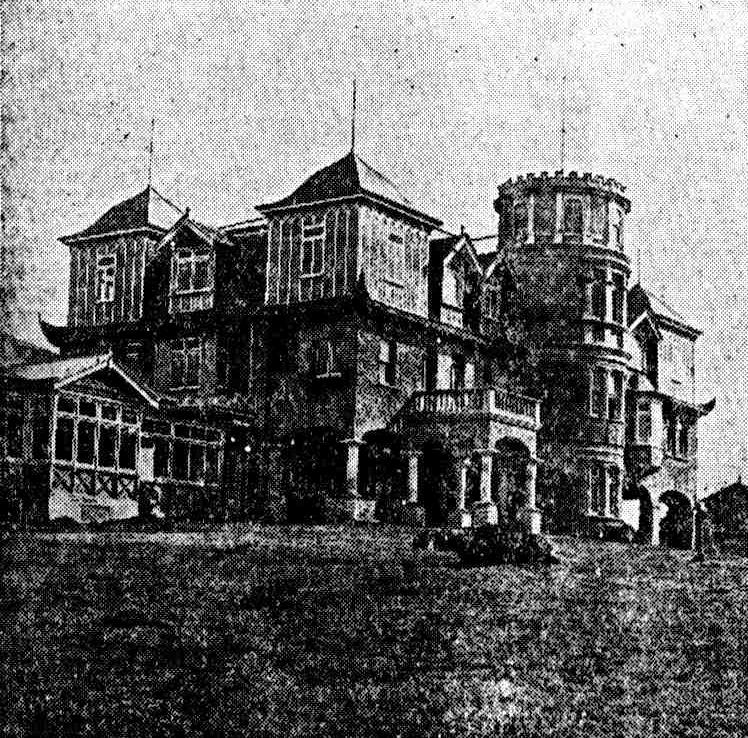
ANOTHER VIEW OF THE HYDRO.
WHERE TO SPEND THE WEEK END. (1910, December 25). The Sun : Sunday Edition (Sydney, NSW : 1910), p. 11. Retrieved from http://nla.gov.au/nla.news-article231015197
The Fox-Foy 'Hydro' didn't last long. Sources state the building was renamed 'La Corniche' by Rainaud, a French Restauranter who originally ran a successful tea room, restaurant and boarding house at Church Point-Bayview until a tragedy. He brought the name with him when taking over these premises. Visit: La Corniche, Bayview
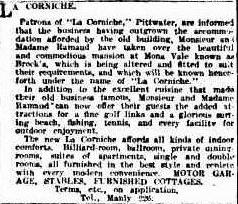 Advertising. (1911, September 9). The Sydney Morning Herald (NSW : 1842 - 1954), p. 18. Retrieved from http://nla.gov.au/nla.news-article15272695
Advertising. (1911, September 9). The Sydney Morning Herald (NSW : 1842 - 1954), p. 18. Retrieved from http://nla.gov.au/nla.news-article15272695
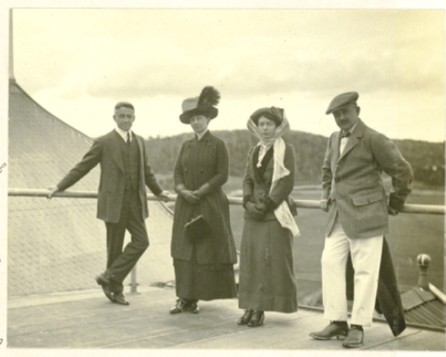
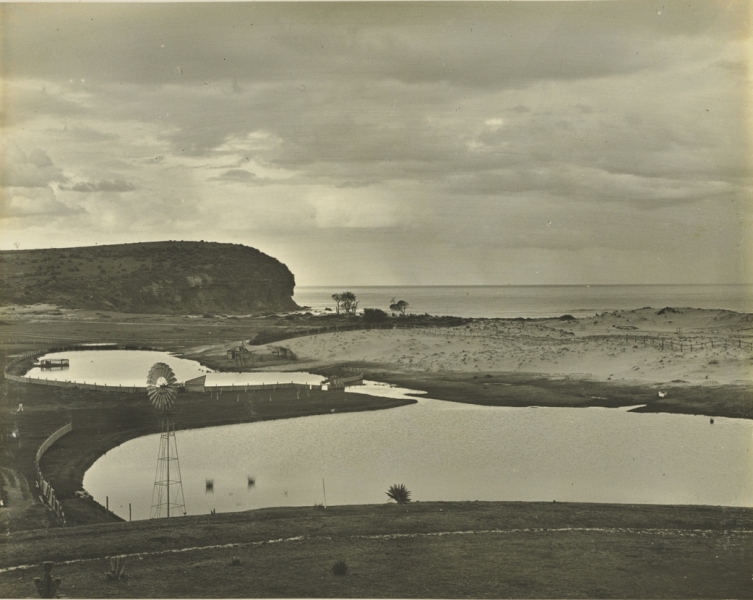
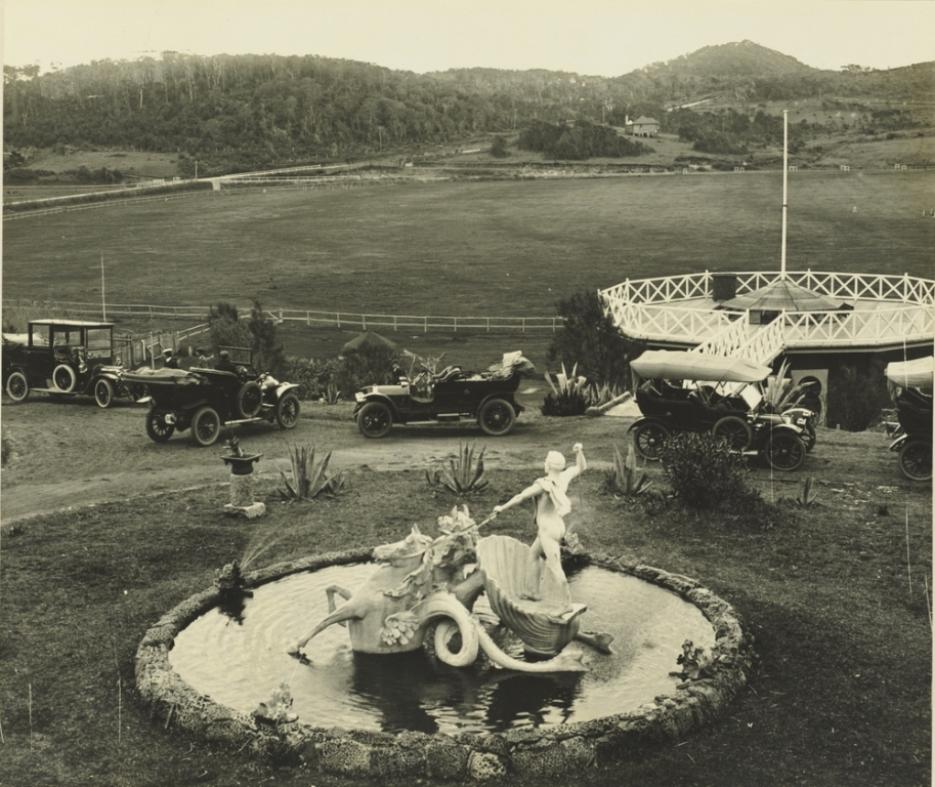
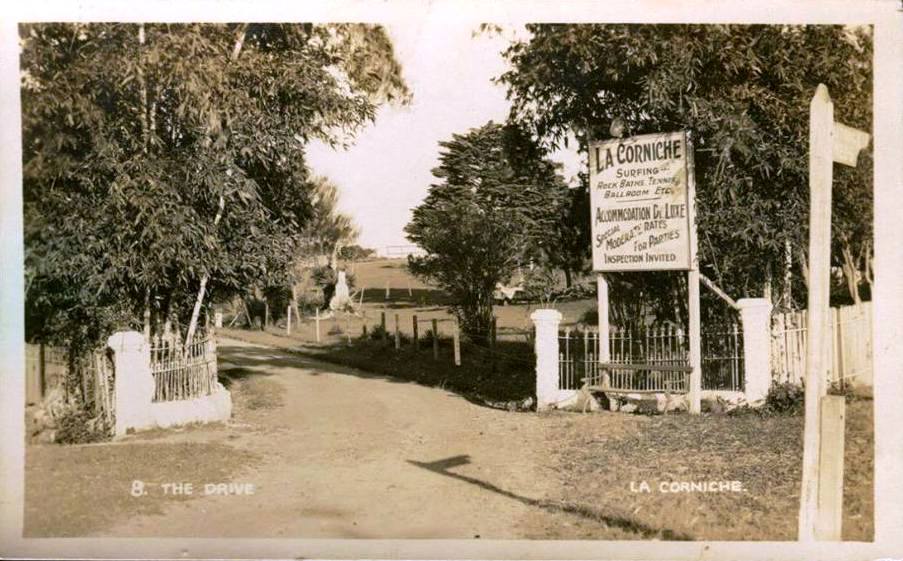
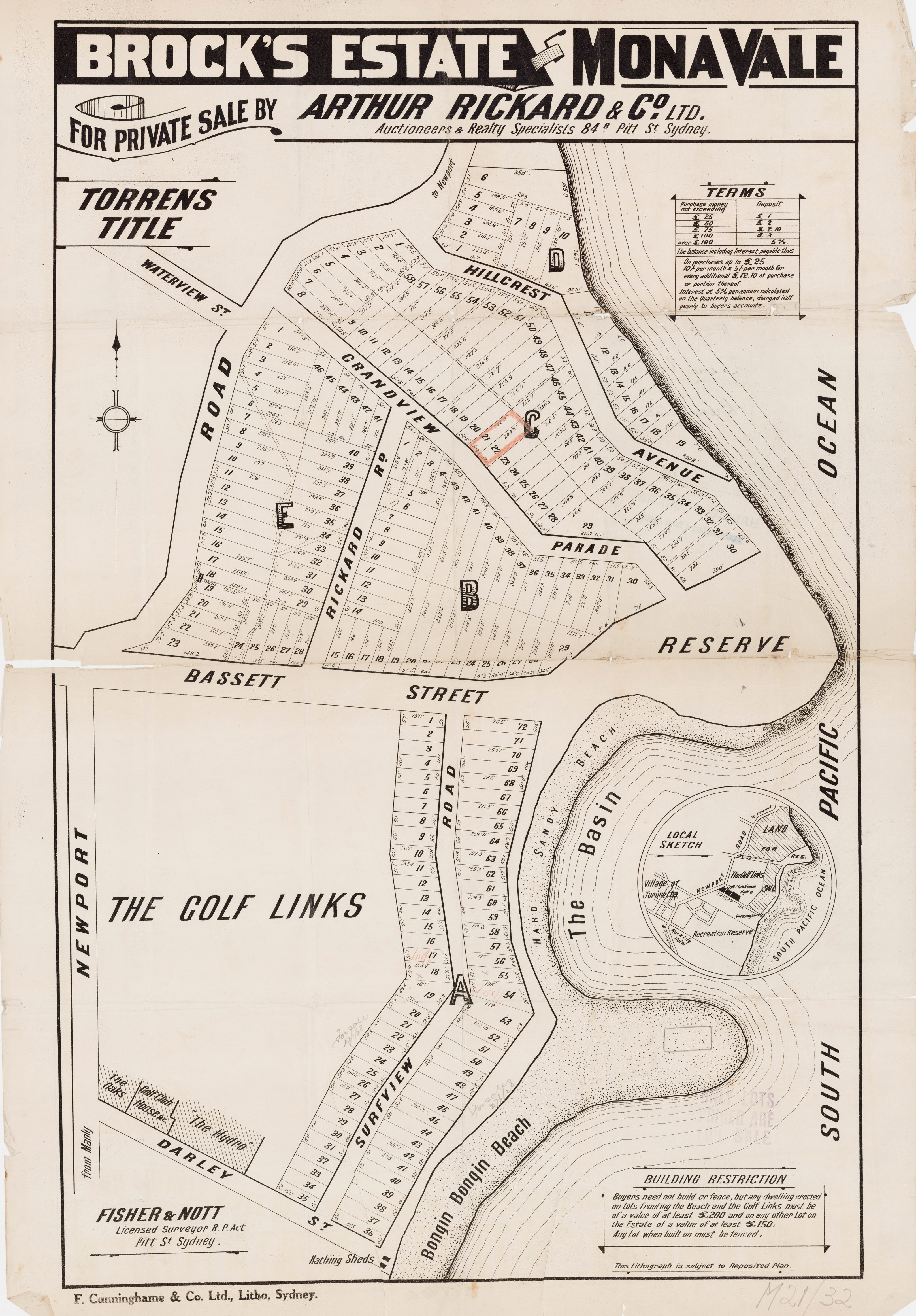
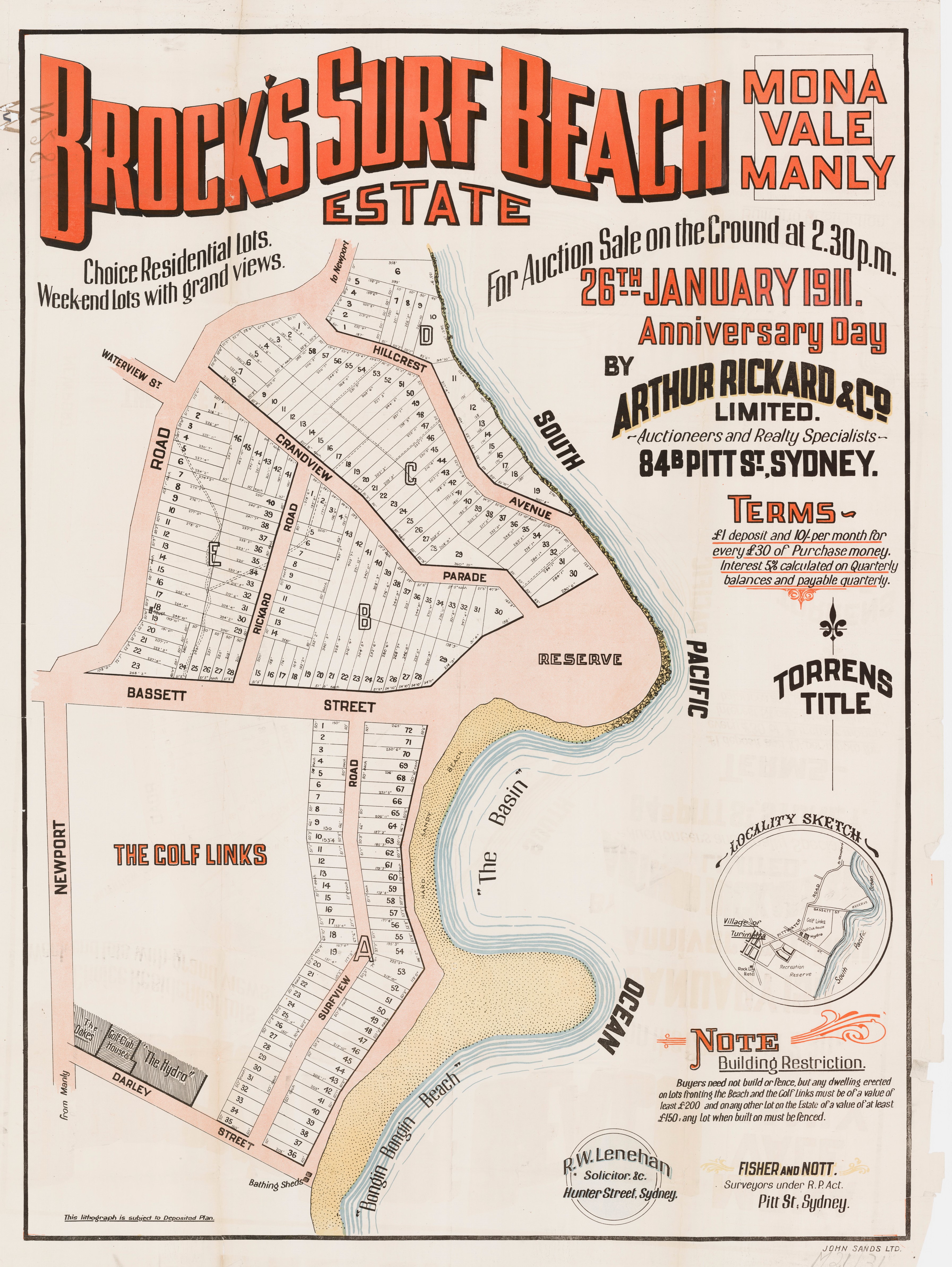
BROCK'S MANSION BURNED.
BIG BLAZE AT MONA VALE. beautiful landmark destroyed.
Damage estimated at £12,000.
No fire- fighting appliances available.
"La Corniche," a mansion at Mona Vale, which occupied a commanding position on the road between Manly and Newport, was destroyed by fire early this morning. Flames were discovered at 10 minutes to 1. At half-past 2 only portions of the walls, and they rickety, were standing.
The building was palatial In Its dimensions and appointments, and contained in all 38 rooms, 28 of which were bedrooms. It was originally designed for The Oaks Polo Club, and was built by Mr. G. S. Brock at a cost which has been set down at £32,000. Before the building was completed, however, it was acquired by Mr. Arthur Rickard, who brought It up to date and then let It to M. and Mme. Rainaud, at one time chef to Sir Harry Rawson. Instead of being used as a polo club it became a fashionable boardinghouse, and on account of its situation and its surroundings, including surfing and golf, it became exceedingly popular. There were 30 boarders in the place at the time of the fire.
The fire started in the large dining hall, and was discovered before it had a very strong hold of the room, but not in time to be beaten out. There was a hue and cry raised throughout the building, and boarders were running to and fro to ascertain the extent of, their danger and the possibilities of saving their effects. The flames spread with great rapidity, but happily not In the direction of the staircase, and many of the people were, therefore, able to dash about and get their property outside.
Those on the second and third floors, however, did not take the risk which running up and down the stairs involved, and threw most of their belongings out of the windows. In ten minutes the flames -had begun to light up the hills on either side, and to throw long reflections out to sea. The boarders were all out of the building by ' this .time, and the menfolk were assisting the staff (numbering 20) to remove the furniture. They continued in this until the flames drove them back, and were successful in getting out a piano and other big stuff. But What was saved was a mere fraction of what was lost.
All that the people could do was to stand by and watch. There was water— the sea could be heard roaring in to shore all the time — but there was no means of pumping it into the building. No fire-fighting appliances which would avail anything were kept on the premises, there is no depot in the vicinity, and though a boarder motored to Manly post haste and reported the blaze the firemen did not go out, because they could have done nothing if they had.
There were very few incidents in connection with the fire. Everybody was got out expeditiously, and though there were several cases where ladles fainted they were never in danger. Even the pets of the house were saved, though one had a narrow escape. It was a little white pussy, and it mewed and mewed pitifully on the window sill of a room from which smoke was already issuing. One of the girls attached to the staff saw its plight and darted into the building and out again with her charge in a few seconds.
Mr. Scott Fell, who has a house in the grounds of La Corniche, provided accommodation for the boarders for the rest of the night. As bad as the consequences were they might have been worse. If the blaze, for instance, had started nearer to tho stairway than it did, it is quite possible that the escape of the boarders would have been cut off, and the only exit would have been through the windows, a course . of action which would practically have endangered limbs if not life. Then, again, the wind was blowing out to sea. Had it blown from the sea, it Is not unlikely that two cottages and the Casino, nearer the roadway, would have gone, while the motor garage, where four motor-cars were kept, would almost certainly have been gutted.
The most remarkable circumstance in connection with the fire was associated with the telephone. When the blaze was found to be so serious Mr. A. Davis tore the 'phone from the wall and carried it outside. Later in the morning an electrician fitted it up on to the fence— the only piece of the fence which escaped tho flames— and a trial showed that though the wires had been through the heat of the flames, the 'phone was still in order, and the Manly exchange could be distinctly heard. The boarders relished the good fortune, because it enabled them to send reassuring messages to their friends.
Mr. Rickard stated this morning that the building and furniture was insured in the New Zealand Insurance Co. for £6000, and that he was therefore a fairly heavy loser, seeing that his estimate of the value of the building was £10,000. The furniture was valued at £2000. Mrs. Mueller (wife of Dr. Mueller, of Macquarie-street), Messrs. Harvey, A-. Davis Earle Hermann, Toohey, L. A. and R. V. Minnett, Lotrois, and others of the boarders, were also sufferers by the fire. Mr. Rainaud lost silver, linen, &c., to the value of £250, which was uninsured.
The origin of the fire cannot he determined, but It is believed that It was caused by a lighted match or cigar butt carelessly thrown on to the carpet in the dining-room. Mrs. Rainaud heard a noise in the dining-room, which she attributed to burglars, and on getting out of bed found the place ablaze.
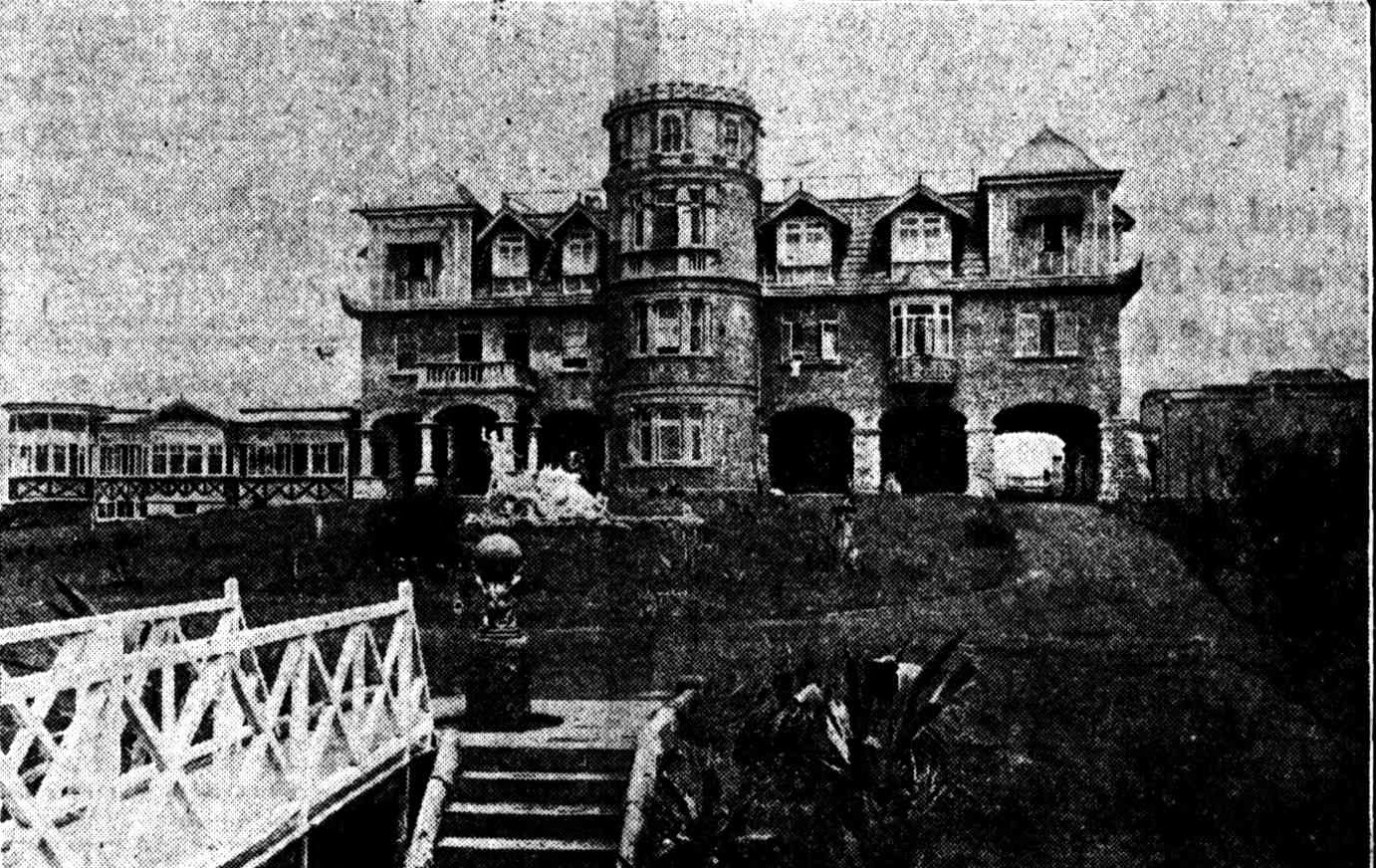
Mona Vale Hydro, the scene of a disastrous fire which occurred in the early hours of this morning. BROCK'S MANSION BURNED. (1912, January 8). The Sun (Sydney, NSW : 1910 - 1954), p. 1. Retrieved from http://nla.gov.au/nla.news-article222004219
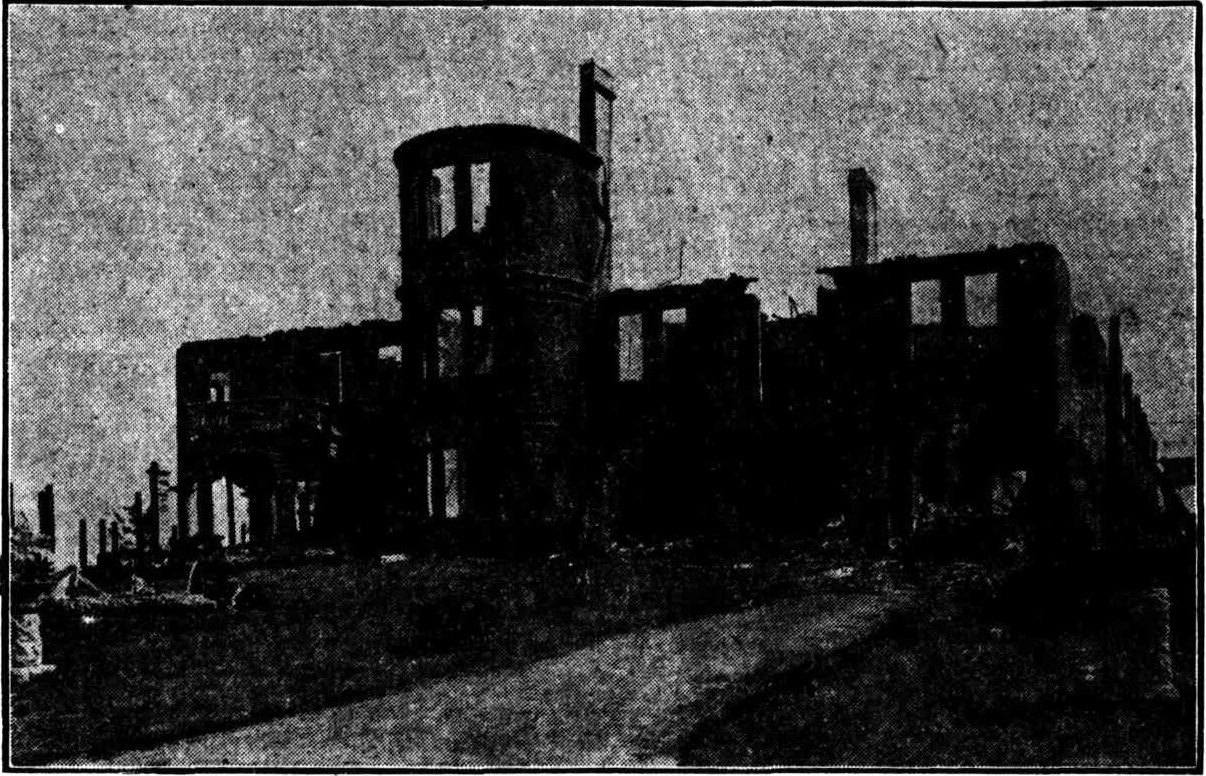
Ruins of "Brock's Mansions," at Mona Vale, destroyed by fire on Monday morning. The fate of the handsome pile of buildings is a grim finale to the financial tragedy that overtook the plucky builder, Mr. G. S . Brock, in its erection. No title (1912, January 10 - Wednesday). The Sun (Sydney, NSW : 1910 - 1954), p. 1 (FINAL EXTRA). Retrieved from http://nla.gov.au/nla.news-article222002216
A disastrous fire, which happily did not result, as might easily have been the case, in loss of life, took place at an early hour yesterday morning. It occurred in a large boarding establishment at Mona Vale, Newport, known formerly as "Brock's Mansion," and latterly as "La Corniche," which was completely destroyed. The property is that of Mr. Arthur Rickard.
The cause of the fire is as yet unknown, but at about 5 minutes to 1 a.m. some of the occupants of the house were aroused to a sense of danger by a strong smell of smoke. On Investigation the fire was located In the dining-room, and it was at once seen that any efforts to check the flames would be hopeless, and the Inmates were simply got out of the house as quickly as possible. Fortunately there were no signs of panic, and In a few minutes everybody was safely outside-watching the flames eating up the large building with a blaze that Illuminated the landscape for a considerable distance.
Owing to the inaccessibility of the locality no fire-engines, or, indeed, means of any water for fighting the fire, were available, and soon the whole building was reduced to ruins. The place, which Is said to have cost Its builder £30,000, was Insured for £6000 In the New Zealand Insurance Company; but the loss to the present owner Is estimated at about £10,000. Something like £250 worth of books, silver, and linen was not insured at all, and was totally destroyed. The building, which was a large one, contained 37 rooms. There were about 30 boarders in the house when the outbreak occurred.
A rather pathetic history attaches to the now smouldering building. Some years ago Mr. Brock, of Enmore, a gentleman with an enterprising idea, was so struck by the beauty and natural advantages of Mona Vale district that he originated a plan to establish and conduct an elaborate tourist home and sanatorium there, similar to Medlow Bath. Mr.Brock approached the Government of the day and laid his scheme before the Minister having charge of the railway and tramway construction branch, with a view to securing tramway communication to the spot. The scheme appeared so genuine and sound that Mr. Brock was given the assurance that, if the work was commenced, the tramway would be considered. He then set to work and laid out the grounds, and brought along his building material, establishing brickworks and a saw mill.
The tramway proposal from Manly was also favourably considered, and surveyors were sent to Manly. £30,000 was spent on the building by Mr. Brock. It assumed gigantic proportions, and when nearing completion formed one of the principal landmarks along the coast. The grounds were laid out to perfection, and included a racecourse, golf-links, and polo grounds. A fine surf-bathing beach also formed part of the establishment.
The tram meanwhile was constructed only as far as North Manly, a distance of one mile. The Minister for Works, Mr. E. W. O'Sullivan, who had worked hard for the extension, left office. The non-completion of the tramway was disastrous to Mr. Brock, as the financial success of the enterprise depended largely on tramway facilities being given to the sanatorium. The premises soon changed hands, Mr. Brock being a heavy loser.
Recently the greater part of the property was put up for auction sale by Mr. Arthur Rickard and sold at a good figure. The name of the building was changed to "La Corniche," and was utilised as a boarding establishment by the proprietor, who has now sustained a great loss by the fire.
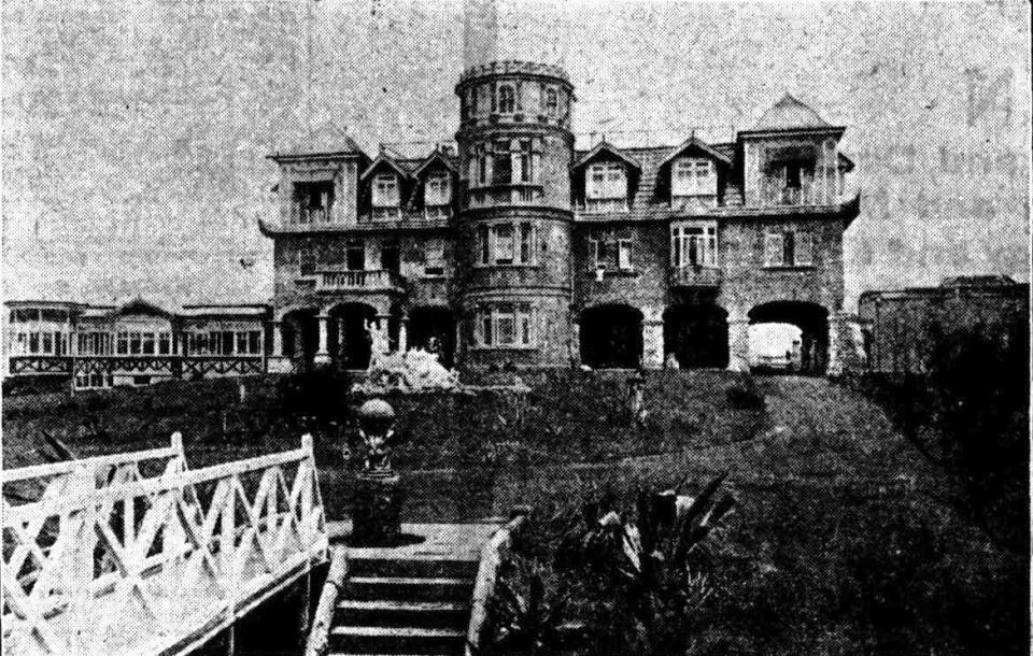
After the fire at La Corniche Mona Vale, in January 1912, the Rainauds started a new venture in town:
About 10 years ago there arrived In Sydney Monsieur Rainaud, a French genius in the art of cooking, with a knowledge of the needs of the inner man and woman that was (second to none as far as Continental training) and experience were concerned. He conceived the idea of opening a Rotisserie Parisienne in the centre of the city to supply meals to people living at any reasonable distance from his establishment. But the tremendous possibilities of the thing did not appear to "grip" at the moment. The people were only just awakening to the problems of home life. Now they are fully awake. To get a decent meal in Sydney at a reasonable price, hot and hasty and tasty from the fire, is sometimes difficult. In August it will be easy. Sydney is to have its Rotisserie Parisienne. M. Rainaud has gradually been evolving his plan.
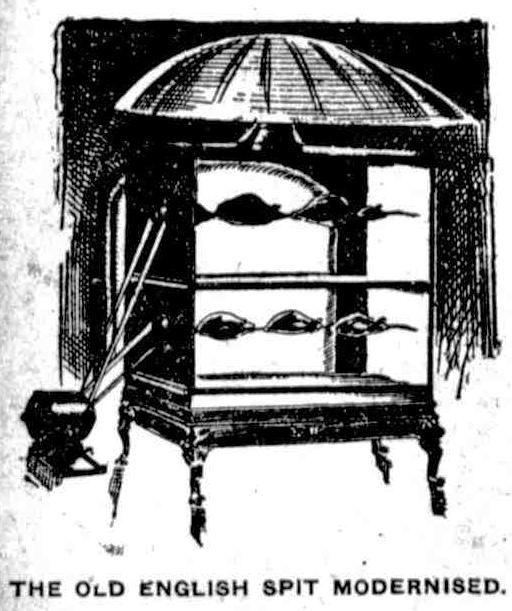
During his period of service as head chef to Governor Sir Harry Rawson, and later when he was presiding over the culinary delights of La Corniche at Bayview, this French artist in food was thinking out the details of his scheme, and now it is almost an accomplished fact. An elegant shop in Culwulla-chambers, at the corner of King and Castlereagh streets, will be the distributing centre. This shop will be fitted up as a palatial, comfortably-furnished lounge. No meals will be served on the premises but ladies will be able to go there, see the menus, and order what they will need in their households day by day. There will be a wide range from which to make choice. All that, is best and, most inexpensive will be there. All that is reasonable in price will be there. Dainties from all parts of the world will be available as the liners bring them into Port Jackson, and all Australia's delightful products In meats, and game, and vegetables, and fruit, as well as the confections in pastry and ices that the best French chefs and experts can devise, will be procurable in a bewildering variety. A feature of the new Rotisserie Parisienne will be the old English spit, where the game and joints will be roasted in full view of the public. M. and Mme. Rainaud guarantee that the appetising odors that this branch of the business will give off will be the finest advertisement possible. Special boxes have been constructed to contain the, hot viands and to retain all their spiciness and tastiness. FEED THE BRUTE (1913, July 13). The Sun (Sydney, NSW : 1910 - 1954), p. 20. Retrieved from http://nla.gov.au/nla.news-article229686457
This Auction and land sale just a little over a year after the fire shows what buildings weren't destroyed and the location of Mr. William Scott-Fell's property. There is more information about Scott-Fell in Roads To Pittwater: The Sandspit Punt and Spit Bridge
The sales adjoining the beach continued:
by Messrs. Richardson and Wrench ... next Thursday the firm will offer 18 ocean beach frontages at Mona Vale, Rock Lily, adjoining the well-known Brock's Mansions. REAL ESTATE. (1912, November 2). The Sydney Morning Herald (NSW : 1842 - 1954), p. 8. Retrieved from http://nla.gov.au/nla.news-article15372420
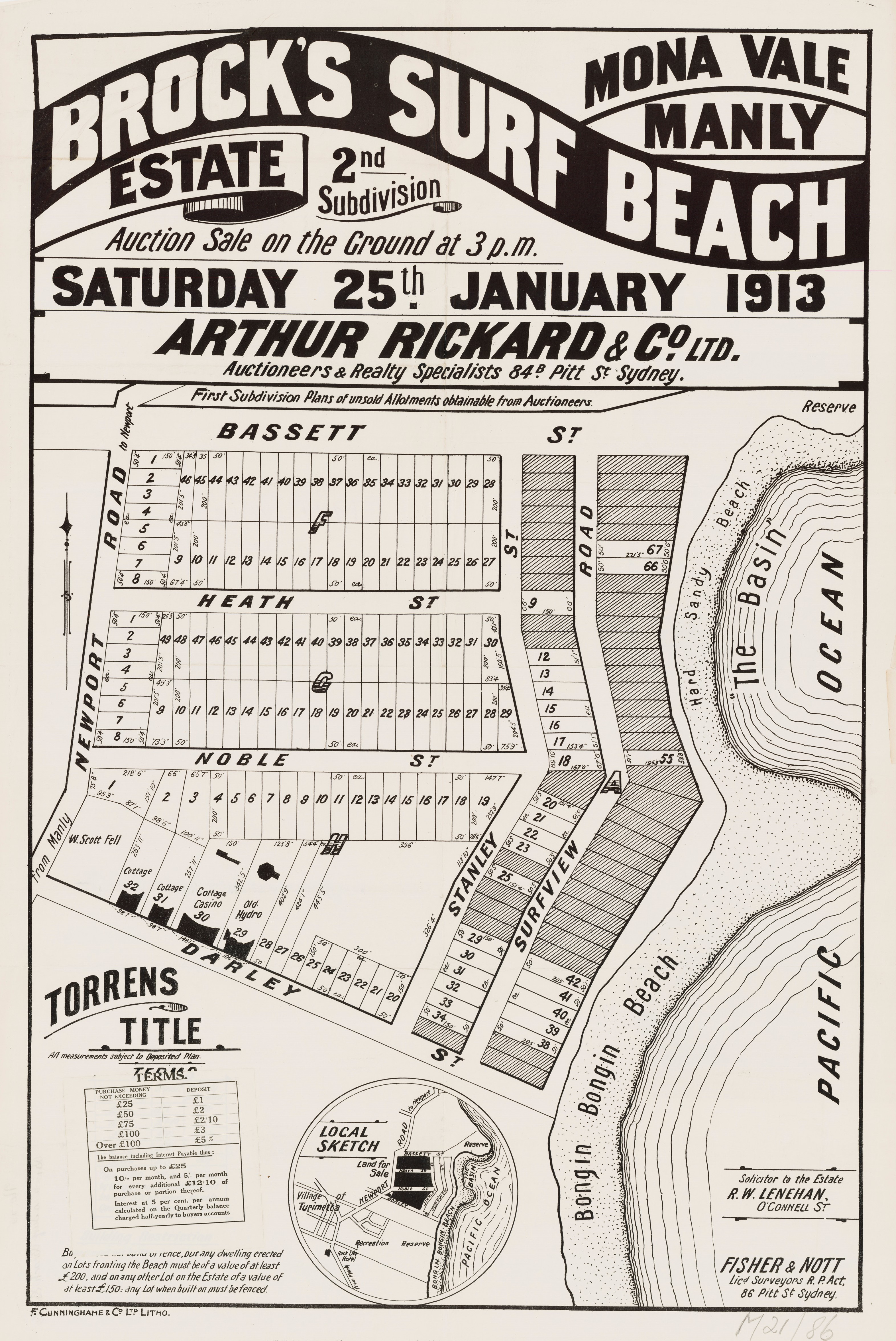
Brock's Surf Beach Estate - Mona Vale - Manly - 2nd Subdivison; shows location of Scott-Fell land and beach still called 'Bongin Bongin' - Stanley street, Heath Street, Noble street. 1913. Item No.: c046820086, from Mona Vale Subdivisions, courtesy State Library of New South Wales
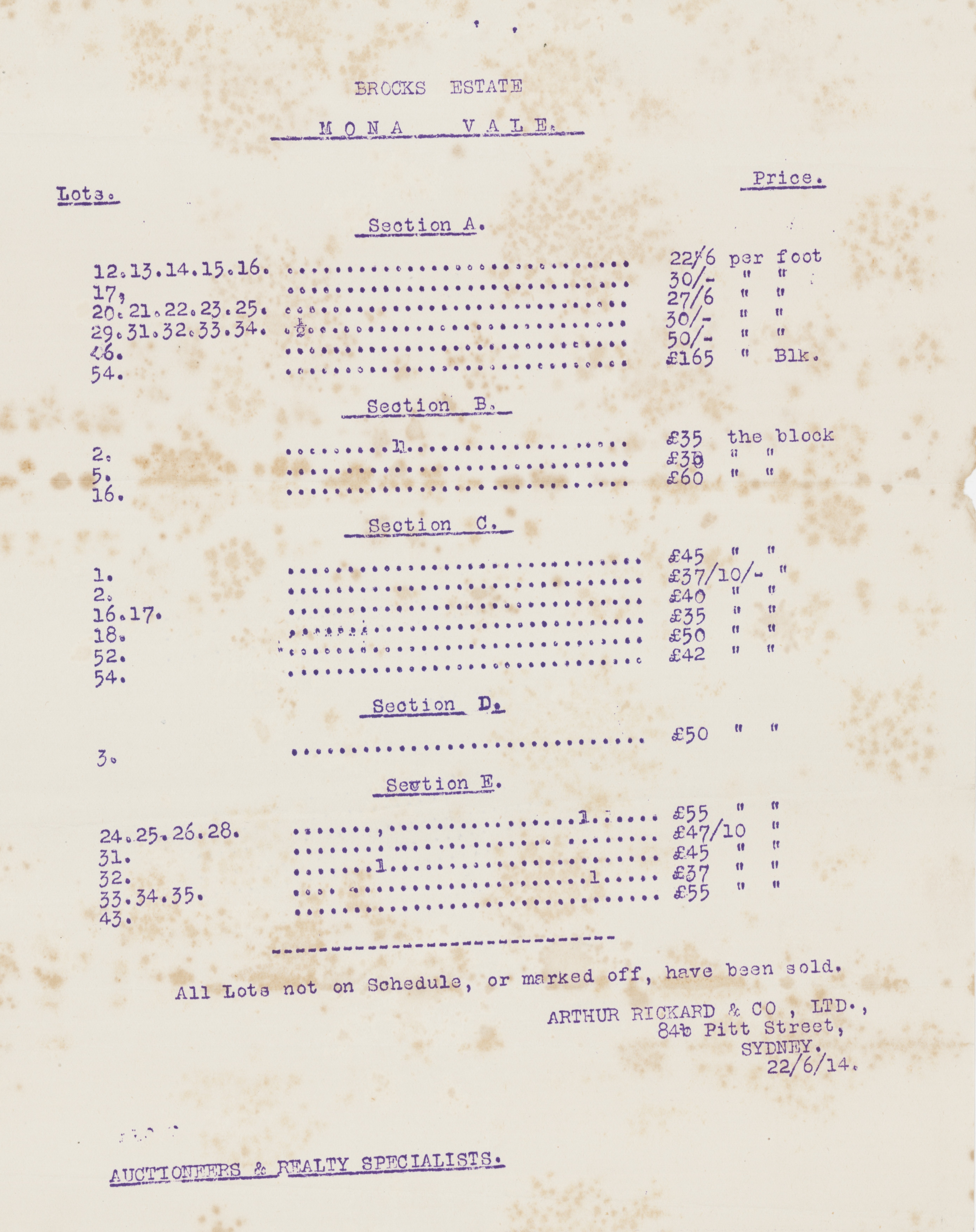
Brock's Estate - Mona Vale - Lot Prices, 1914. Item c046820050, from Mona Vale Subdivisions, courtesy State Library of New South Wales
Arthur Rickard (Later Sir) real estate developer, was born on November 17th 1868 at Currawang near Lake George, New South Wales, son of Cornish parents William Heath Rickard, miner, and his wife Mary, née Bennett (marriage was in 1856). NSW BDM's lists the following births for the couple:
RICKARD RICHARD H 4954/1858 WILLIAM MARY BATHURST
RICKARD WILLIAM H 4865/1860 WILLIAM H MARY BATHURST
RICKARD JAMES B 14915/1863 WILLIAM MARY WOLLONGONG
RICKARD MARY J 16851/1865 WILLIAM MARY WOLLONGONG
RICKARD JOSEPH 17908/1867 WILLIAM MARY WOLLONGONG
RICKARD ARTHUR 10506/1869 WILLIAM H MARY GOULBURN
RICKARD ALFRED 10038/1870 WILLIAM MARY GOULBURN
RICKARD HANNAH MARIA 17770/1872 WILLIAM HEATH MARY TAMBAROORA
RICKARD ELIZA 6944/1874 WILLIAM HEATH MARY BATHURST
RICKARD AMELIA 8459/1878 WILLIAM HEATH MARY BATHURST
His father was active in improving the lot of miners:
Eight-hour demonstration . AT LITHGOW.
The sixth annual eight-hour demonstration of the Western miners came off at Lithgow Saturday. A procession marched through the main street and on to the racecourse. The weather was fine and warm, and the attendance of miners and spectators was considerable. On arrival at the course a public meeting was formed.
Mr. William Rickard, the acting president of the association, was chairman. The Chairman spoke briefly, and then called on the general secretary, Mr. John Owen, to read his report. This document disclosed a favorable state of the association's finances, while referring regretfully to the present dulness in trade. The present credit balance in the bank was £474 10s od, and income during the year over £700.
Mr J. Coates proposed tho following resolution:-' That having regard to the importance of the matter as it affects the lives and health of the miners of this colony this meeting is of opinion that the Government should at once take steps to introduce a Coalmines Ammendment Bill on the lines of the bill recently introduced by Mr. Sydney Smith.' EIGHT-HOUR DEMONSTRATION AT LITHGOW. (1892, February 23). Illawarra Mercury (Wollongong, NSW : 1856 - 1950), p. 3. Retrieved from http://nla.gov.au/nla.news-article132289388
William Heath Rickard's Obituary allows a few more insights:
DEATH OF MR. W. H. RICKARD.
Mr. William Heath Rickard, who died at Bowral on Thursday, aged 87 years, was for a number of years interested in mining in New South Wales. He came to Australia in the early 'Fifties, with his father, the late Captain Richard Rickard, as a member of a mining party, which went to Louisa Creek, now known as Hargreaves, between Mudgee and Hill End.
Mr. W.H. Rickard was later associated with the successful cooperative copper mine at Kurrawang, near Lake George, and subsequently he went into business at Bathurst. About six years ago he removed to Bowral, where the funeral took place yesterday.
Mr Arthur Rickard of 84 Pitt-street, city, the Rev. R.H. Rickard of Granville, Mr. W.H. Rickard of Newcastle, Mr. J.B. Rickard , late headmaster of Petersham Public School, and Mr Joseph Rickard, of Western Australia, are sons of the deceased, who is also survived by his wife, and one daughter, Mrs. Craig, of Bowral. DEATH OF MR. W. H. RICKARD. (1919, January 4). The Sydney Morning Herald(NSW : 1842 - 1954), p. 14. Retrieved from http://nla.gov.au/nla.news-article15818674
Aged 13 Arthur Rickard left Bathurst Public School and found employment with E. Webb & Co., hardware merchants. Moving to Sydney aged 17, he worked for Tillock & Co., wholesale grocers, as a commercial traveller.
On February 28th 1889 at Waverley he married Annie Eliza Addy.
RICKARD--ADDY.-February 28, at the Wesleyan Church, Waverley, by the Rev. J. Woolnough, Arthur, youngest son of Mr. W. H. Rickard, of Bathurst, to Annie E., youngest daughter of the late Edmund Addy, of Sheffield, and niece of Mr. B. Martin, of Waverley. Family Notices (1889, March 12). The Sydney Morning Herald (NSW : 1842 - 1954), p. 1. Retrieved from http://nla.gov.au/nla.news-article13717160
Another Burglary in Sydney.
What appears to have been a thoroughly-planned burglary (says Monday's Echo) took place last evening at Cowper-street, Waverley, the residence of Mr. Arthur Rickard, " Addyville," being stripped of a good deal of portable property during the temporary absence of the occupants. At about one o'clock midday, as on many previous occasions, Mr. and Mrs. Rickard locked up the house and went to dine with a relative. On this occasion, however, they returned rather earlier than usual, namely, about 6.45 p.m. To their surprise they saw a light burning in the front upstairs room. Mr. Rickard, not realising the situation on the moment, entered the dining room forthwith, and, on doing so, observed that the clock and a quantity of plate and cutlery were missing. Seeing the significance of things in general, he hastened off to a neighbour, who returned with him, armed with a formidable revolver. Beth went up stairs together, and a scene of wild confusion met their gaze. A chest of drawers and some travelling trunks were all open, and the contents-or rather what had been left of them-strewn about the floor. An investigation being made, it was discovered that a number of wedding presents, several dresses, a dress suit, and many other articles of clothing, besides a purse containing money, had been stolen. As showing that the thieves had been disturbed in their depredations, a candle which was taken out of the kitchen was discovered by the side of a trunk containing linen, which had been opened but otherwise not touched. There was, unfortunately, then no sign of the robbers themselves, who had gained entrance by smashing a window in the rear of the premises, throwing back the catch, and subsequently break-ing open an inner door with an axe found in the hall. On the matter becoming known, a good deal of sympathy was expressed for the sufferers by the unlooked-for event, and, as soon as possible, Mr Rickard put the matter in the hands of the police. Another Burglary in Sydney. (1889, July 18). The Maitland Mercury and Hunter River General Advertiser (NSW : 1843 - 1893), p. 2. Retrieved from http://nla.gov.au/nla.news-article18973352
They had three children:
RICKARD ARTHUR L 37980/1895 ARTHUR ANNIE E WAVERLEY
RICKARD IVY V M 7797/1889 ARTHUR ANNIE E WAVERLEY
RICKARD EDNA E J 37454/1891 ARTHUR ANNIE E WAVERLEY
They lost Edna in 1892:
RICKARD.— January 18, at her parents' residence, Conisbro, Grosvenor-st, Waverley, Edna Elise Jennie, the infant daughter of Arthur and Annie E. Rickard, 10 months of age. Family Notices (1892, January 20). Evening News (Sydney, NSW : 1869 - 1931), p. 4. Retrieved from http://nla.gov.au/nla.news-article113753753
Rickard divorced Annie in December 1901 and gained custody of their two children.
DIVORCE COURT.
(Before Mr. Justice Simpson.)
HEARING OF CAUSES.
Rickard v. Rickard and Jones.
Arthur Rickard sued for a divorce from his wife, Annie Eliza Rickard, formerly Addy, on the ground of adultery committed with Frank Jones, in 1896, and with others subsequently. The parties, according to the petitioner, were married at Waverley in 1889.
His Honor, after hearing, granted a decree nisi returnable in six months. DIVORCE COURT. (1901, June 15). The Sydney Morning Herald (NSW : 1842 - 1954), p. 11. Retrieved from http://nla.gov.au/nla.news-article14391297
On 19 March 1902 he married Nellie Crudge, daughter of architect Thomas Rowe and his second wife Sarah Selina Cornish, at St Mark's, Darling Point. Nellie's parents had married at Manly!:
ROWE—CORNISH.—November 10, at St. Mathias's Church, Manly, by the Rev. R. S. Willis, Thomas Rowe, to Sarah Selina Maude Cornish, Norwood, South Australia. Family Notices (1877, November 24). Australian Town and Country Journal (Sydney, NSW : 1870 - 1907), p. 41. Retrieved from http://nla.gov.au/nla.news-article70610666
ROWE ETHELBERT VIVIAN 7148/1878 THOMAS SARAH SELMA MANLY
ROWE NELLIE CRUDGE 93/1881 THOMAS SARAH SELINA SYDNEY
ROWE CHRISTOPHER W 3448/1882 THOMAS SARAH S SYDNEY
ROWE HARRY RUSKIN 495/1884 THOMAS SARAH SELINA SYDNEY
ROWE LEONARDO G 6417/1885 THOMAS SARAH S PETERSHAM
ROWE SYLVIA U G 10810/1887 THOMAS SARAH S WOOLLAHRA
ROWE GLADYS G 11168/1888 THOMAS SARAH S WOOLLAHRA
ROWE FRANCIS G 38197/1890 THOMAS SARAH S WOOLLAHRA
ROWE TRESCO G 38909/1891 THOMASSARAH S WOOLLAHRA
ROWE SEPTIMUS G 28587/1895 THOMAS SARAH S WOOLLAHRA
During 1890 Thomas Rowe was reputedly worth £70,000 with an income of £14,000. He lost nearly all in the 1893 depression with the collapse of a syndicate, formed to build Sydney's first natatorium in Pitt Street. Almost penniless, Rowe died of cancer on January 14th 1899 at the lavishly furnished Mona, Darling Point, the family home. He was buried in the Anglican section of Waverley cemetery, and survived by two daughters of his first wife Charlotte Jane (d. March 1877), daughter of Captain Piper, whom he had married on May 21st, 1857, and by his second wife Sarah, and their seven sons and three daughters. To pay his debts and bring up her children his widow took in boarders and ran art unions with Rowe's valuable pictures as prizes, including a Constable landscape.
The Rickard- Rowe (Nellie's) Marriage Notice:
MARRIAGES.
RICKARD-ROWE.-March 19, 1902, at St. Mark's Church, Darling Point, by the Rev. J. W. Gillett. B.A.,' Arthur Rickard, of Sydney, to Nellie Crudge, daughter of the late Colonel Rowe, and of Mrs. S. M. Rowe, of Mona, Darling Point. Family Notices (1902, April 19). Australian Town and Country Journal (Sydney, NSW : 1870 - 1907), p. 20. Retrieved from http://nla.gov.au/nla.news-article71523050
They had four children:
RICKARD GORDON C 36349/1904 ARTHUR NELLIE C ROCKDALE
RICKARD MONA N 6846/1903 ARTHUR NELLIE C ST LEONARDS
RICKARD GWENDOLINE N 5537/1906 ARTHUR NELLIE C MOSMAN
RICKARD DOUGLAS R 35751/1915 ARTHUR NELLIE C CHATSWOOD
By 1893 Mr. Rickard had set up as a mercantile broker and agent for Chaleyer Fisher & Co. Ltd, East India merchants of Melbourne. He himself began importing and about 1899 entered the wholesale grocery business with S. A. Joseph. They secured some government contracts but had trouble with imported foodstuffs infested with weevils. In 1904 Governor Sir Harry Rawson objected to Rickard's proposed appointment as Portuguese consul because Joseph & Rickard had been found supplying goods 'unfit for human consumption' to asylums. Late in the year, in financial difficulties, they broke up the partnership.
A natural salesman, Rickard sought a business requiring less capital than the grocery trade. In January 1904 he registered Arthur Rickard & Co. Ltd, a real estate firm, and developed inventive advertising strategies in contrast to most current property advertising. His strikingly illustrated advertisements urged families to buy rather than rent, availing themselves of 'Rickard's Easy Terms' - an example of this, and the use of prose, runs above.
In 1905 he subdivided 152 acres (62 ha) at Woy Woy into waterfront residential sites, poultry farms and orchard blocks. A great self-publicist, in 1909 he launched Rickard's Realty Review, a quarterly (sometimes monthly) magazine which appeared until 1927.
He actively supported the war bond campaigns and was honoured with a knighthood, announced October 1920:
BRITISH EMPIRE ORDER
FURTHER DECORATIONS FOR AUSTRALIANS.
SEVERAL TASMANIANS INCLUDED.
His Excellency the Governor-General has been advised by cablegram that His Majesty the King has been graciously pleased to approve of the following ap-pointments to the British Empire Order:
SECOND CLASS (K.B.E.).
Honourable -Henry Yule Braddon, M.L.C.
George Brookman.
Professor Tannatt William Edgeworth David. C.M.G.
Robert Gibson.
Thomas Henley, M.L.A.
William George McBeath, C.B.E.
Honourable Alfred William Meeks, M.L.C.
Arthur Rickard.
James Joynton Smith. BRITISH EMPIRE ORDER (1920, October 16). The Mercury (Hobart, Tas. : 1860 - 1954), p. 7. Retrieved from http://nla.gov.au/nla.news-article11496662
Peter Spearritt, in his 'Rickard, Sir Arthur (1868–1948)' entry in the Australian Dictionary of Biography, National Centre of Biography, Australian National University, (http://adb.anu.edu.au/biography/rickard-sir-arthur-8206/text14357) states:
In the 1920s Rickard's business interests included many directorships and part-ownership of the Hotel Sydney, Usher's Metropolitan Hotel and The Windsor, Melbourne. He was a director of Sydney Hospital (1917-27), a council-member of the Sydney Regional Plan Convention (1923-24), a fellow of the Royal Colonial Institute (1912), and of the Royal Geographical Society of London (1924), vice-president of the Defence of Australia League and president of the Japan-Australia Society—although he considered the Japanese unsuitable immigrants, he admired their ambition and social welfare system. A member of the Sane Democracy League, he worked for several taxpayers' associations advocating public economy and in 1935 attacked taxes on mortgages. Rather square-faced, with a dark, clipped moustache, he enjoyed golf and motoring and belonged to the Imperial Service Club. In 1928 he donated an elaborate floral clock to Taronga Zoological Park.
Arthur Rickard in the 1920's
One of Rickard's advertisements in 1922 had proclaimed 'we are in business for all time'. He did not foresee the Depression nor how difficult it would be to sell his landholdings on the urban fringe. Many of the blocks sold on 'Rickard's Easy Terms' were returned to the company which had to pay rates on land which had no immediate sales potential. Arthur Rickard & Co. Ltd went into voluntary liquidation in 1930 with Rickard as liquidator. The family's heavily mortgaged mansion—Berith Park at Wahroonga—was sold and they moved to a more modest home at Killara.
Sir Arthur Rickard (left) with Eric Campbell, photographed in Martin Place during the 1930's. Campbell was a notorious figure in right-wing NSW politics at the time.
In a city preoccupied with real estate Rickard was the outstanding land developer of his era, his extroverted personality showed through most of his advertisements. He died in the Scottish Hospital, Paddington, on 13 April 1948 and was cremated. His wife, their two sons and two daughters, and the children of his first marriage survived him. His eldest son Lieutenant-Colonel A. L. Rickard, M.C., D.S.O., served in both world wars and his youngest son Douglas was chairman of the Australian Postal Commission in the 1970s. Sir Arthur left a modest estate valued for probate at £12,623. His portrait by John Longstaff is held by the successor to the Millions Club, the Sydney Club.
RE will and (two codicils) thereto of ARTHUR RICKARD, Knight of the Order of the British Empire, late of Sydney, in the State of New South Wales, company director, deceased. Probate granted by Supreme Court of New South Wales on 19th October, 1949.—Pursuant to the Wills, Probate and Administration Act, 1898-1947 (Testator's Family Maintenance and Guardianship of Infants Act, 1916-1938, and Trustee Act, 1925-1940), Gordon Cecil Rickard, Douglas Randolph Rickard and Septimus Godolpliin Rowe, the executors of the will of the said Arthur Rickard, who died on 13th April, 1948, hereby give notice that creditors and others having any claim against or to the estate of the said deceased are required to send particulars of their claims to the said executors in care of Norton Smith & Co., Solicitors, 39 Hunter-street, Sydney, on or before the 31st December, 1949, at the expiration of which time the said executors will distribute the assets of the said deceased to the persons entitled, having regard only to the claims of which they then have notice.—Dated 28th October, 1949. NORTON SMITH & CO., Proctors, 39 Hunter-street, Sydney. 3109—£1 RE will and (two codicils) thereto of ARTHUR RICKARD, Knight of the Order of the British Empire, late of Sydney, (1949, October 28). Government Gazette of the State of New South Wales (Sydney, NSW : 1901 - 2001), p. 3251. Retrieved from http://nla.gov.au/nla.news-article225592879
Lieut.-Col. Arthur Lancelot Rickard, who was said to be the youngest major in World War I, died at the Concord Repatriation Hospital, Sydney, yesterday, aged 53 years. He was awarded the D.S.O. and M.C. and was twice recommended for the V.C. He served in the Middle East in World War I. He was a son of Sir Arthur Rickard, founder of Sydney's Millions Club. PERSONAL (1949, March 10). The West Australian (Perth, WA : 1879 - 1954), p. 2. Retrieved from http://nla.gov.au/nla.news-article47650557
Nellie passed away in 1952:
RICKARD, Nellie Crudge.—June 24, 1952, at Hornsby and District Hospital, of 10 Cynthia Street, Pymble, beloved widow of the late Arthur Rickard, and loved mother of Mona, Gordon, Gwen and Douglas, aged 71 years.
RICKARD, Nellie Crudge.—June 24, 1952, beloved daughter of the late Col. Thomas Rowe and Mrs. Rowe. Family Notices (1952, June 26). The Sydney Morning Herald (NSW : 1842 - 1954), p. 18. Retrieved from http://nla.gov.au/nla.news-article18270418
MONA VALE.— Fine surf beach, beyond Narrabeen. The tram will soon be there. A few attractive blocks available to-day, 50 x. 150. £51 each. .40/ dep., 20/ p.m. ARTHUR RICKARD & CO. LTD, REALTY SPECIALISTS. 84b Pitt Street. (1919, July 27). Sunday Times (Sydney, NSW : 1895 - 1930), p. 3. Retrieved from http://nla.gov.au/nla.news-article123226104
The Oaks - La Corniche structure was rebuilt, in part along its original lines.
%20of%20Copy%20of%20la%20corniche%20phoenix%202.jpg?timestamp=1525924994823)
%20of%20la%20corniche%20phoenix%202.jpg?timestamp=1525925051551)
%20of%20la%20corniche%20phoenix%202.jpg?timestamp=1525925081669)
%20of%20la%20corniche%20phoenix%202.jpg?timestamp=1525925104843)
%20of%20la%20corniche%20phoenix%202.jpg?timestamp=1525925128958)
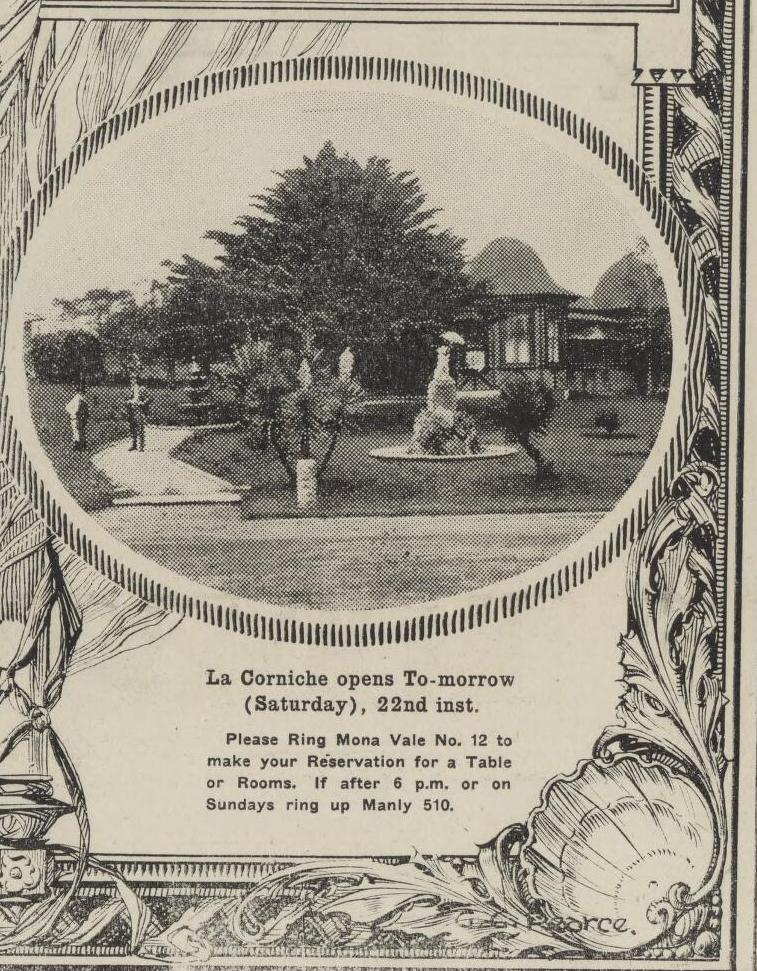
Pearce, G. C. (1920). Like a phoenix from its ashes, the resurrection of "La Corniche" at Mona Vale - and sections from to show details. Retrieved from http://nla.gov.au/nla.obj-67694921
The sales continued:
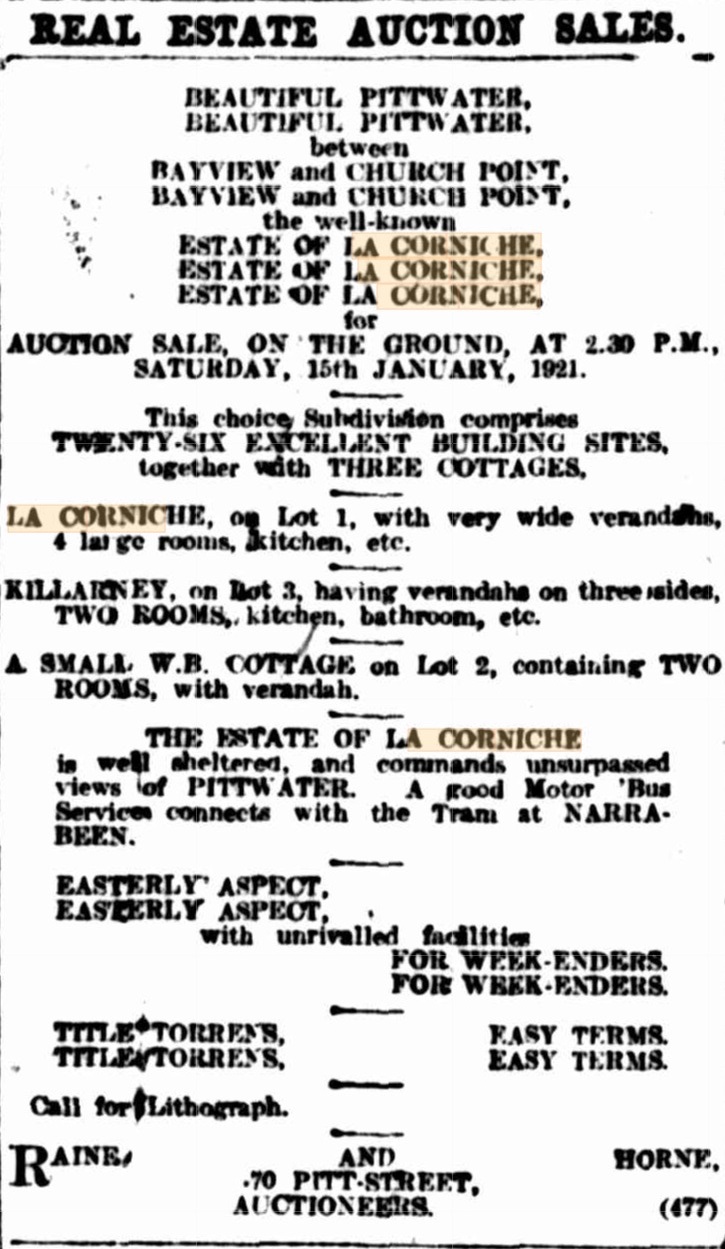
Advertising (1920, December 25). The Sydney Morning Herald (NSW : 1842 - 1954), p. 11. Retrieved from http://nla.gov.au/nla.news-article16881633 - sale of buildings - La Corniche mansion and 2 x cottages
.jpg?timestamp=1563838434187)
Advertising (1921, January 21). The Sun (Sydney, NSW : 1910 - 1954), p. 9 (FINAL EXTRA). Retrieved from http://nla.gov.au/nla.news-article221436292 - same advertisement as NLA mterial above

R J Forsyth
Robert James Forsyth was born in 1861 to Archibald Forsyth and Annie (nee Corbett). He was a member of the prominent rope making company, named Archibald Forsyth & Co. after his father Archibald. Annie Forsyth Wyatt, after whom we have a Palm Beach Reserve named and who was a visitor to our area during tree planting days through local schools, was a niece. George Alfred Forsyth of Bayview, Gentleman, who once owned Waiwera, the cottage (before it became Hopton Lodge), was also a relative of (uncle) of Annie Forsyth Wyatt
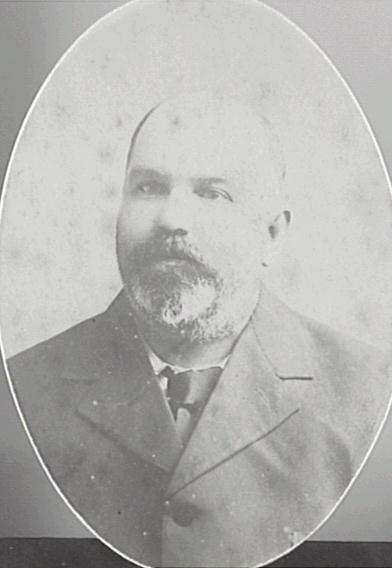
Ald. Robert J Forsyth City of Canterbury, 1901
Children:
Robert Archibald Forsyth, b. About 1892-1893, to Robert James and Agnes Christina d. 6 May 1918, Rouen, France.
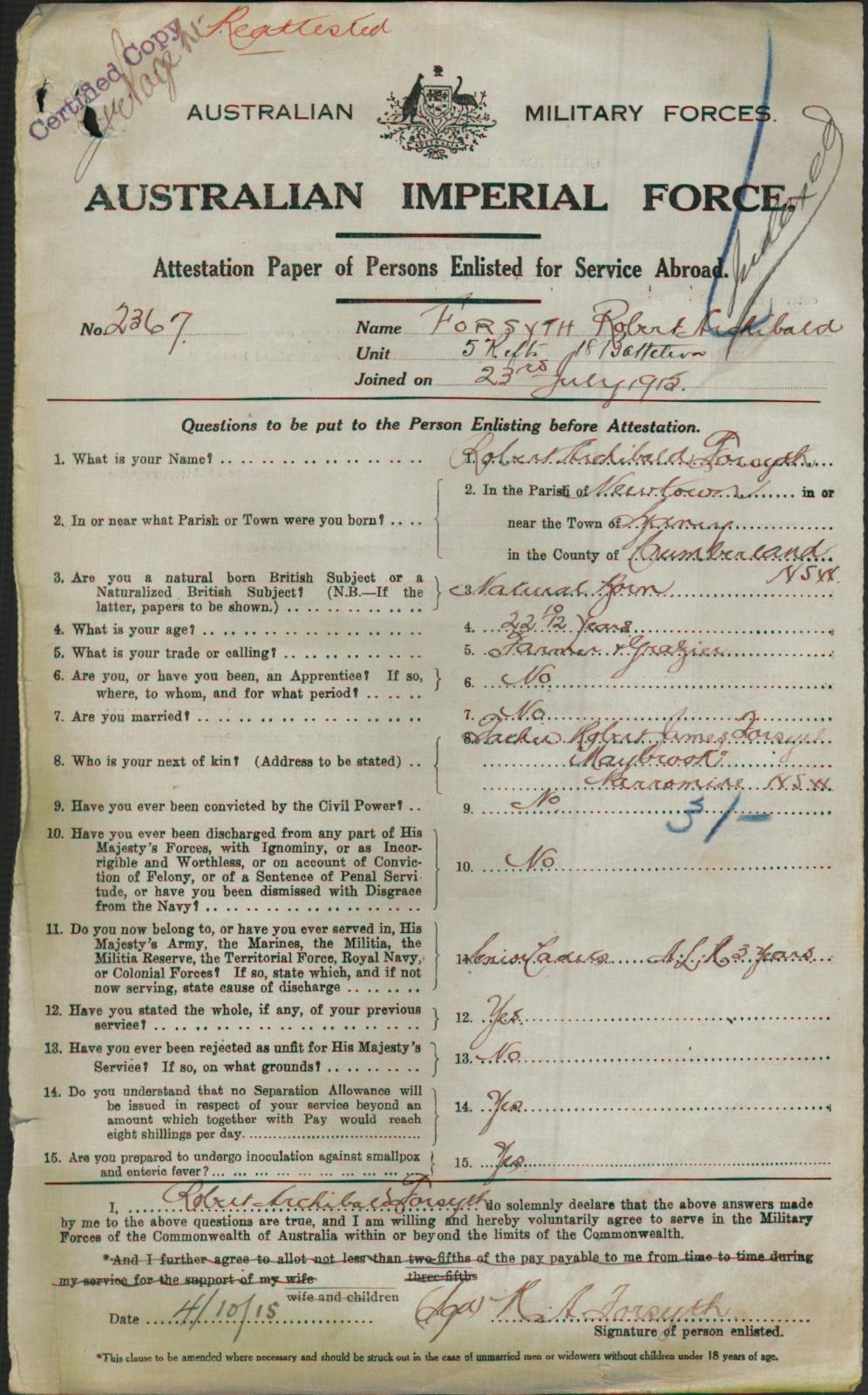
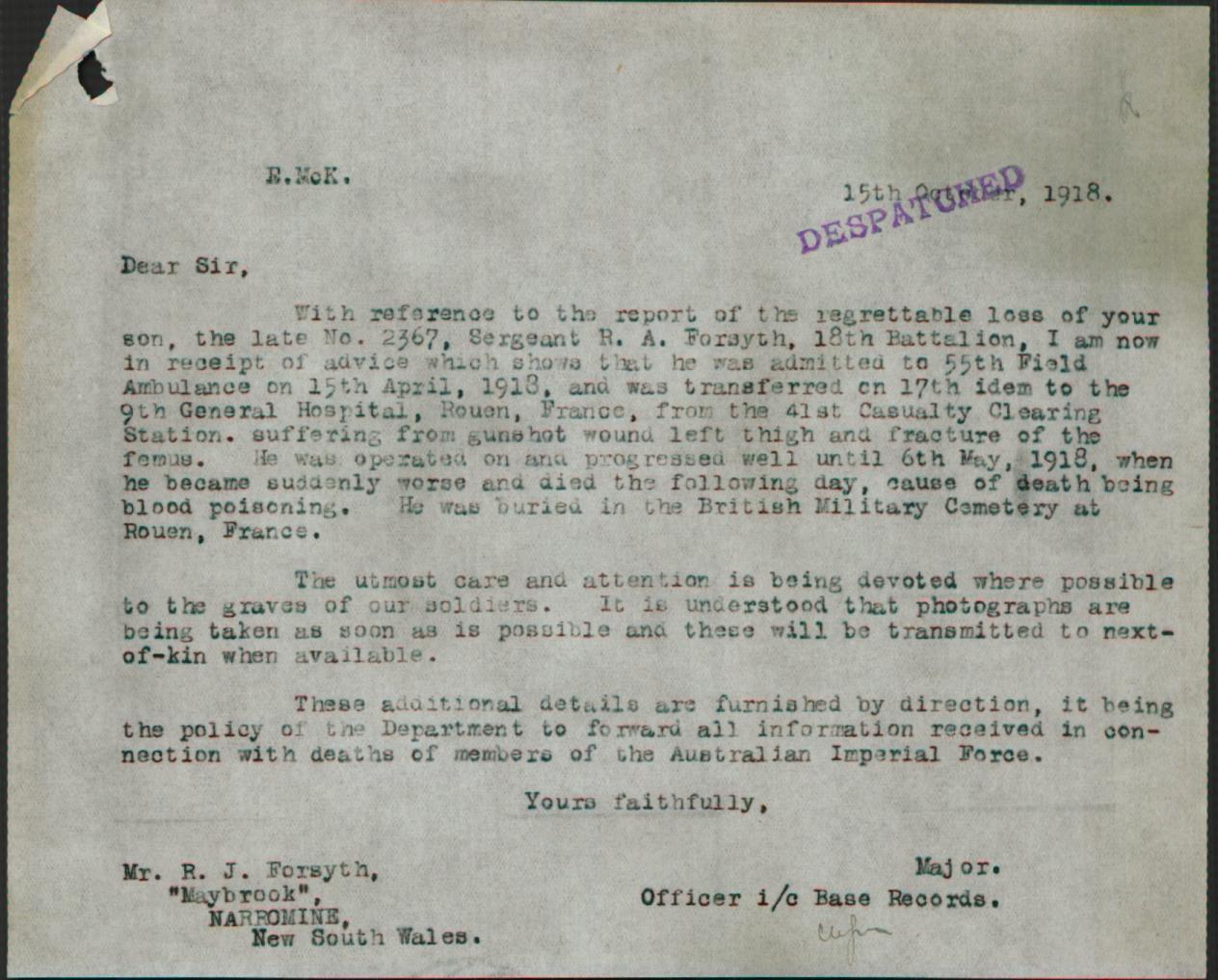
Essie A Forsyth, b. 1895, NSW, to Robert James and Agnes Christina d. 20 Apr 1981, Surfers Paradise, NSW, Australia. Formerly of Cammeray
The family lived in The Towers until Robert James' death in 1920, when most of the thirteen hectares of land adjoining The Towers was purchased by the War Service Homes Commission. When the War Service Homes Commission subdivided the area, four streets (Robert, Archibald, Roy, Forsyth) were named after Robert James' son, Robert Archibald (known as Roy) Forsyth.
The Commission built houses on this land for soldiers returning from World War I and their families. Councillor Kayee Griffin unveiled a series of nameplates commemorating these street names on 11th November, 2000. Robert James Forsyth was an Alderman on Canterbury City Council from 1899-1902.
FORSYTH ROBERT J 818/1920 Parents ARCHIBALD SARAH Registered at: CANTERBURY - NSW BDM's
FORSYTH - The Funeral of the late Mr ROBERT JAMES FORSYTH will leave his late residence, The Towers, Belmore, THIS THURSDAY, at 1.30 p m , by motor service, for Randwick General Cemetery, Long Bay road. Coogee Interment 3 o'clock. WOOD COFFILL and COMPANY, LTD. Family Notices (1920, April 1). The Sydney Morning Herald (NSW : 1842 - 1954), p. 7. Retrieved from http://nla.gov.au/nla.news-article15875009
Mr. R. J. Forsythe, of 'Maybrook,' Narromine, died last week in Sydney. It is understood that Mr. Forsythe underwent an operation for a growth in the neck and subsequently collapsed. He was well known and respected through out the district. His only son, Roy, was killed at the war, and the late Mr. Forsythe was arranging the disposal of his Narromine property which he had purchased for him.District News (1920, April 8). Mudgee Guardian and North-Western Representative (NSW : 1890 - 1954), p. 29. Retrieved from http://nla.gov.au/nla.news-article157043384
RETURN THANKS.
Mrs R. J. and Miss FORSYTH, of "The Towers." Belmore and Narromine, return sincere THANKS to relatives and friends for telegrams, letters, floral tributes, and messages of sympathy received in their late sad bereavement.
Mrs EVANS and FAMILY, of Manly, return sincere THANKS to relatives and friends for kind expressions of sympathy received on the death of her brother, the late Robert J. Forsyth.
Mr and Mrs. T. B. WYATT. and FAMILY, of Manly, return sincere THANKS to relatives and friends for the kind expressions of sympathy received on the death of their uncle, the late Robert J. Forsyth. Family Notices (1920, April 7). The Daily Telegraph (Sydney, NSW : 1883 - 1930), p. 8. Retrieved from http://nla.gov.au/nla.news-article239632538
Agnes passed away in 1957 at Double Bay, her parents are listed in NSW BDM's as JOHAN LUDIWIC and BELINDA.
Reginald James Thomas Forsyth, born at 39 Hayberry Street, Crow’s Nest, Sydney, in early 1893 to parents John Lile Lewis Forsyth and Elizabeth Christina Forsyth (nee Crowley - daughter of Michael Crowley, died 1884 in Gundagai and Sarah, nee Breadmore). A letter penned by Michael Crowley, under Extras, pertains to Land Grants. John Lile Lewis Forsyth was a son of James Forsyth (1818-1907) and Margaret Todd, of the Forsyth family that did so much for Willoughby. He too was lost in this conflict.
ROLL OF HONOR.
FORSYTH.— In loving, remembrance of Lieut . R. J. T. Forsyth (Reg.), 68th A.F.C., late 1st A.L.H., died of Injuries received In aeroplane accident, February 16th, 1918; dearly loved eldest son and brother of Mr. and Mrs. J. Forsyth, 39 Hayberry Street, Crows Nest.
FORSYTH.— In loving memory of our dearly loved nephew, Second-Lieut. Reg. Forsyth,; who died February 16th, 1918, result of aeroplane accident. Regretted by his loving aunt and uncle, O. and Amy Knight- (One of the best). Family Notices (1920, February 16). The Daily Telegraph (Sydney, NSW : 1883 - 1930), p. 4. Retrieved from http://nla.gov.au/nla.news-article239664906
FORSYTH.-In loving remembrance of Lieut R. J. T. Forsyth (Reg), 68th A.F.C. late 1st A.L.H.. died of injuries received in aeroplane accident, February 16 1918, dearly loved eldest son and brother of Mr. and Mrs. J. Forsyth, Mm. J. Forsyth and family. 30 Hayberry-street, Crow's Nest. A young life nobly ended. Family Notices (1920, February 16). The Sydney Morning Herald (NSW : 1842 - 1954), p. 6. Retrieved from http://nla.gov.au/nla.news-article15879688
FORSYTH.— March 30th, 1920, at his residence, 'The Towers," Belmore, Robert James Forsyth (also of Narromine), eldest son of the late Archibald Forsyth, in his 60th year. Family Notices (1920, April 1). The Daily Telegraph (Sydney, NSW : 1883 - 1930), p. 4. Retrieved from http://nla.gov.au/nla.news-article239625466
Although not directly related to Robert James Forsyth, son of Archibald, R J T's uncle, Robert Todd Forsyth (1877-1939), Mayor of Willoughby on four occasions, and seventh child of Thomas Todd Forsyth (1840-1921 - father of John L L as well) is worth noting here due to his own interest in developing paddocks into home lots. They are all descendants of the Scottish Forsyth clan. Just as the Crowley clan, of Ireland, (see Avalon Roads), are all from Cork.
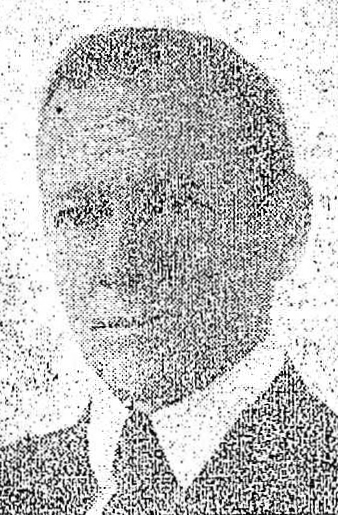 Mr. R. T. Forsyth, who is figuring prominently in subdivisional work this season, is a born suburb builder, and to his enterprise has been largely due the rapid growth of the Willoughby and Chatswood districts. Starting as a real estate agent at Willoughby in 1898 before he was 21 years of age, Mr. Forsyth for some time devoted his energies chiefly to the Willoughby district, but of recent years he has directed his activities to a number of other places, particularly Northbridge, which he was responsible for opening up in 1913. He has also played an important part in the progress of Longueville, where he developed about 20 subdivisions. Several of the leading, banks have at different times entrusted properties to his hands, representing in value many hundreds of thousands of pounds.
Mr. R. T. Forsyth, who is figuring prominently in subdivisional work this season, is a born suburb builder, and to his enterprise has been largely due the rapid growth of the Willoughby and Chatswood districts. Starting as a real estate agent at Willoughby in 1898 before he was 21 years of age, Mr. Forsyth for some time devoted his energies chiefly to the Willoughby district, but of recent years he has directed his activities to a number of other places, particularly Northbridge, which he was responsible for opening up in 1913. He has also played an important part in the progress of Longueville, where he developed about 20 subdivisions. Several of the leading, banks have at different times entrusted properties to his hands, representing in value many hundreds of thousands of pounds.
Mr. Forsyth, who began his connection with the Willoughby Municipal Council as auditor at the age of 21, has since been mayor of that suburb on nine different occasions. He is a well-known valuator, and has acted in .that capacity for the Lane Cove Council. While he was Mayor of Willoughby, that district gained the reputation for its responsiveness to patriotic appeals, and on one occasion when the quota of the district was £60,000, Willoughby returned the handsome total of £117,000. Mr. Forsyth is now interesting himself in the community principle as applied to suburban development, and the Castlecrag Estate, which was recently opened up by him, now has his special attention in the direction indicated.
Mr. W. Robjohns will offer the Rothwell Estate, at Longueville, for auction on Saturday next. There are 49 building sites on the estate, which is in a picturesque locality, and is only a few minutes from the shopping centre and tram terminus.
Cronulla was, Palm Beach is, and Avalon Beach will be. This is the catch slogan which has been adopted by the vendor of the Palmgrove Estate at Avalon, which is to be sold by Messrs. H. W. Horning and Co., on Boxing Day. Judging by the beautiful panoramic views which appear in an attractive booklet, and which also occupy a conspicuous position in Messrs. Horning and Co.'s windows, Martin-place, the scenery surrounding the estate must be exceptionally beautiful. Avalon is the new seaside resort between Newport and Palm Beach.
The Palmgrove Estate is on the main Barrenjoey-road, and is right at the beach. The owner has evidently had the public good in mind, as the estate has been well planted with Ornamental shade trees, while a section of it known as the Palm Grove, has been presented as a park. This is a remarkable beauty spot, with a wealth of graceful palms, maidenhair, burrawang, and other flora.
The estate is in every respect a most attractive proposition to those looking for week-end and holiday sites. REAL ESTATE NEWS (1921, December 11). Sunday Times (Sydney, NSW : 1895 - 1930), p. 10. Retrieved from http://nla.gov.au/nla.news-article123241058
An earlier form of Mona Vale SLSC, when it was Mona Vale Alumni during 1930-31, used this premises as their weekend base. As can be seen below, the place was still used as a resort for visitors:
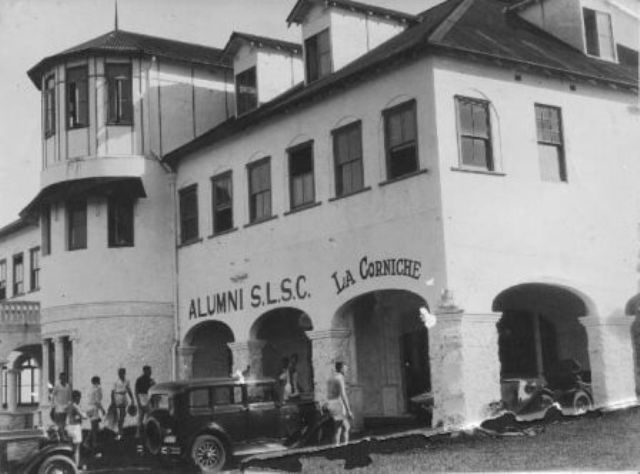
AT LA CORNICHE under entirely new management-Tariff from £2/2/ per week 10/6 per day Phone Mona Vale 50. Advertising (1932, February 27). The Sydney Morning Herald (NSW : 1842 - 1954), p. 5. Retrieved from http://nla.gov.au/nla.news-article16843745
BY ORDER OF THE MORTGAGEES. MONA VALE.ONLY A FEW MINUTES FROM THE BEACH AND GOLF LINKS. That well-known SEASIDE ESTABLISHMENT Known as LA CORNICHE,now conducted as a Tourist Boarding-house, and which is also eminently suitable for a REST HOME, SCHOLASTIC, or ECCLESIASTICAL INSTITUTION.
The building is constructed of brick, cemented,with Iron roof, and comprises ground and two upper floors. On the ground floor are wide verandahs, hall, office, double lounge-rooms, large dining-room, smokeroom, kitchens, scullery, pantries, store and engine room. On the two upper floors: 20 bedrooms and 2 bathrooms. Detached is ballroom (18 x 60), with special floor. In addition to the above are FOUR COMMODIOUS COTTAGES, built of stone and of brick, with tiled and iron roofs, each having verandahs,and about 7 large rooms, kitchen, and offices. Two motor garages. Tennis court. The buildings are connected by electric light (own plant) and septic sewerage.
THE SITE is a most PROMINENT ONE having a frontage of approximately 335ft to the MAIN NEWPORT-ROAD, together with frontages of about 795ft to Darley-street, 350ft to Noble-street, and 440ft to Stanley-street lan unformed street), and is suitable for subdivision. (Plan on view at the Auctioneers). TORRENS TITLE. EASY TERMS CAN BE ARRANGED. RICHARDSON and WRENCH, LTD., will submit above to PUBLIC AUCTION, in the Rooms,92 PITT-STREET, on FRIDAY, 19th FEBRUARY,at ll a.m. Advertising. (1932, February 6). The Sydney Morning Herald (NSW : 1842 - 1954), p. 20. Retrieved from http://nla.gov.au/nla.news-article28035038
AT La Corniche-Beautiful furnished Cottages on La Corniche grounds to Let from £3/3/ per week! Phone Mona Vale 50.Advertising (1932, February 10). The Sydney Morning Herald (NSW : 1842 - 1954), p. 4. Retrieved from http://nla.gov.au/nla.news-article16839472
During World War II La Corniche was used as a Red Cross centre for wounded soldiers. In World War II "La Corniche" was commandeered by the Air Force during and used as training ground for recruits. Some sources state it was also used by the Army as an Infantry Training School for NCO's. La Corniche - [Occupation by Australian Military Forces of premises known as 'La Corniche' in Mona Vale, the property of Mr G J McPhee. Includes claim for compensation] Australian Archives Military Records. Property files for sites in NSW hired or acquired for the Department of Defence during World War II
Of then:
I was ordained in 1941, the beginning of `41, and appointed as a curate in the parish of St Faith's, Narrabeen. I was then just two days beyond my twenty-third birthday. The war had commenced, and, during my first appointment at Narrabeen, army camps were being formed in the area, because the threat of invasion was feared. I can recall fences being erected along the sides of the road, so that places like Palm Beach or Bayview could be shut off if need be, and then, when the threat of the Japanese came, the more intense development of army troops in that area. And Canon Tugwell then asked me to become a part-time chaplain to those troops in that area.
The parish of Narrabeen in those days went from Collaroy down to Palm Beach. There were main residential settlements at Collaroy, Narrabeen, but when you went out beyond that to Mona Vale you had mainly twenty-five acre small farms, many glasshouse tomato producers. Beyond Mona Vale, Newport was ... just one hotel in Newport, and mainly accommodation for people coming down to holiday use. Beyond Newport, at Bilgola and at Avalon, and then at Palm Beach, there were just mainly holiday homes, very few permanent residents.
My appointment was to help commence a ministry in that northern part. So I boarded with an old Boer war veteran and his wife, a Mr and Mrs Wilson, who lived in Fermoy Avenue, Bayview. And from there would conduct services in the store at Avalon, where there was little tea-rooms behind the store, and in an estate agent's office at Palm Beach. Subsequently a family by the name of Byle lent us their home for the service at Palm Beach. And my other ministry there was to the troops, which were then being trained by the army, and they had an officers' training unit in a big home at Mona Vale, and my responsibility was to conduct services, and then to have discussions or what they called padre's hours with the intake of recruits.
Canon Charles Henry Sherlock, Chaplain RAAF, interviewed by Gail Winkworth for the Keith Murdoch Sound Archives of Australia in the War of 1939-45
From: http://www.awm.gov.au/transcripts/kmsa/s00572_tran.htm
Another use was made of these huge structure and its many rooms:
Director of Physical Education, 7/1/43, advising that the National Fitness Council is now using "La Corniche", Mona Vale, as a training centre for boys and girls, of whom some hundreds will be accommodated from time to time throughout the year, and Mona Vale extensive use will be made by these children of the swimming Rockbaths pool at the beach, requesting Council to provide a rope across the pool which would be of great use to children who are non- swimmers, and serve as a safeguard in the event of waves sweeping into the pool. The Shire Engineer reported that a wire had been substituted, and that this should be sufficient. Resolved, - That a reply in the terms of the Engineer's report be sent. - 19/01/1943 Warringah Council Minutes
There were a number of submarine sightings during World War II in Pittwater and barbed wire along every beach except Newport. The Green Hornets of the 7th Battalion Volunteer Defence Corps camped in Warriewood Valley during this period and Mona Vale, south of La Corniche, was a camp for trainee machine gunners. Ruskin Rowe at Avalon hosted the Sundown RAAF Camp, who were trained by Nancy Bird Walton.
Bert King OAM, of Narrabeen and Newport, late Bayview, as Bert King Constructions, built the first ever units in Mona Vale in Darley Street East on the crest of the hill where the old La Corniche used to be, explaining during his Profile interview; "(I) pulled it down and everyone complained about it being pulled down but the building was a heap of rubbish (by then)".
Bert built these flats in the late 1950's, after he'd been part of the team that built Mona Vale Hospital.
On The Verge Of The Pittwater Estuary - Winnemerrey Bay And Winji-Jimmi
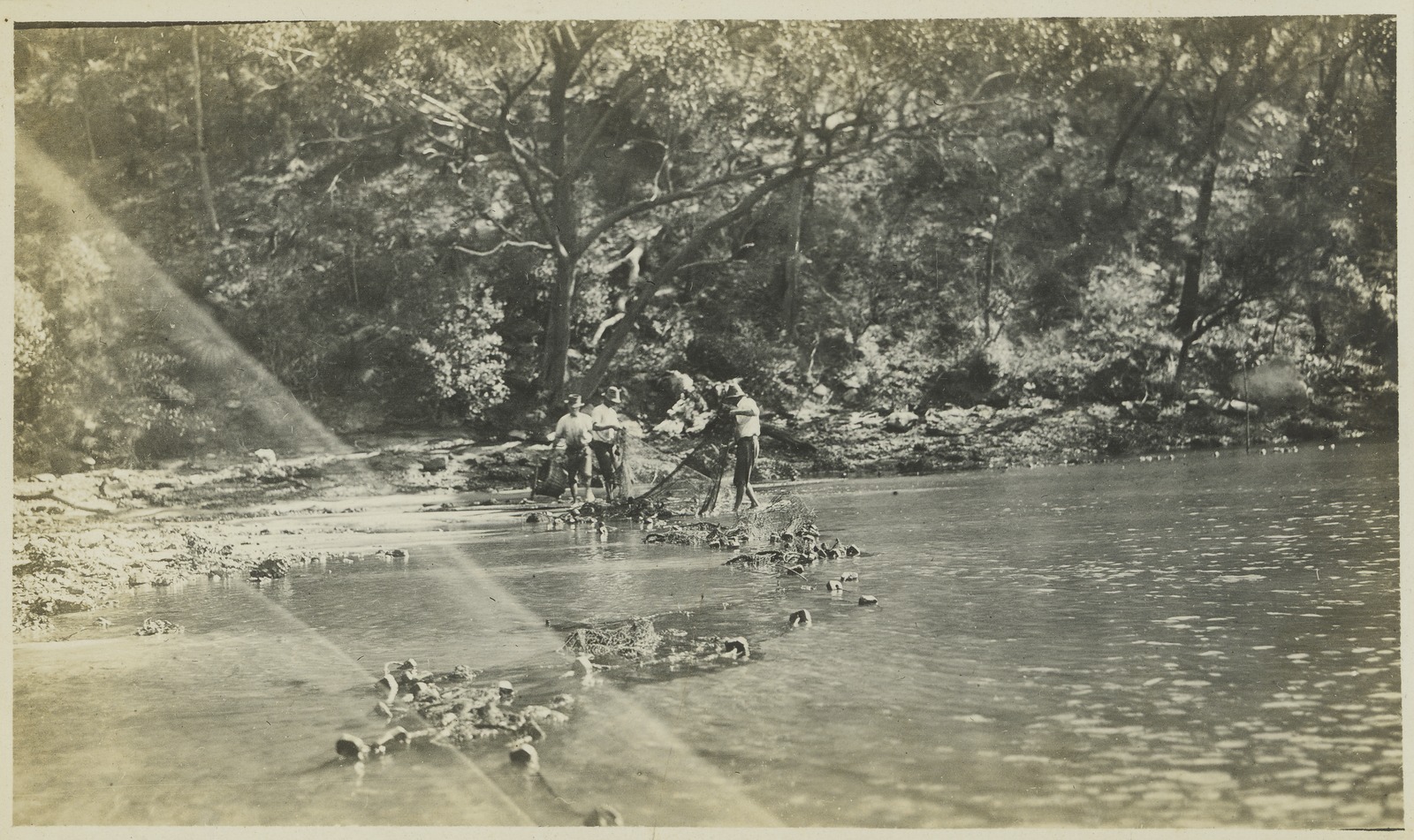
The swamp first known as and called " Winne Jeramy ;" and also called 'Wennejereme' and 'Winji Jimmi' was first walked through by the European settlers soon after landing in Sydney Cove.
On August 24, 1788, Governor Phillip, Lieutenants Johnston and Cresswell, Surgeon-General White and six soldiers were returning from an examination of the south entrance to the bay. We are indebted to Surgeon John White for his record of these early excursions. In his Journal of a Voyage to New South Wales, published in London in 1790, will be found many plates of plants, animals and birds, and valuable details of the discovery of lagoons and creeks along the coast from Port Jackson to Pittwater. Surgeon White writes with reference to the return of this party from what is now known as Barrenjoey:
We returned by the same passage along the coast, without seeing any objects worth notice, until we came to a convenient spot to encamp for the night, where there was great plenty of cabbage trees and tolerable water. While soup was making of some birds we had lately killed (which proved very good) and everything was getting ready for the night, the governor and myself and two other gentlemen took our guns and ascended a hill just above us. From this eminence we saw the southern branch of Broken Bay, which runs far into the country. During our return we picked up, in the distance of about half a mile twenty-five flowers of plants and shrubs of different genera and species, specimens of which I have transmitted to Mr. Wilson, particularly the Red Gum Tree. On the spot where we encamped, the grass was long, dry and sour; and in such abundance, that we set it on fire all around, for fear the natives should surprise us in the night by doing the same; a custom in which they seem always happy to indulge themselves.
We set off early* in the morning to look at the branch of Broken Bay (Pittwater), which we had seen the evening before; and were led to it by a path not very much frequented. At the head of this branch we found a freshwater river, which took its rise a little above out of a swamp. On this river we saw many duck and teal. Mr. Cresswell shot one of the latter, and I shot one of the former. At the head of this branch we found the country rough and impassable. Having followed the course of the river to its origin, we that day returned to Manly.
After traversing the terrain outlined in the preceding paragraphs, I gathered that Governor Phillip and his party camped on the evening of August 24, 1788, half a mile to the south of the lofty eminence which towers above Bungan Beach. There is a long vale in this locality situated just to the north-west of Bongin-Bongin, or, as it is now generally called, Mona Vale Beach, and many Cabbage tree palms are still to be seen there. Phillip and three members of his party walked to the top of the eminence (now called “Bushranger” trigonometrical survey station, 321 feet) just before dusk, and saw the southern part of Pittwater extending from Winnijimmi (Newport) to Church Point. The freshwater river that they explored the next day would be Shaw’s Creek, Bayview, and the swamp in which it took its rise was known one hundred years ago as Winnereremy. A map in the Department of Lands shows the entrance to that creek as Winni Jenny, and this name and Winnijimmi are probable corruptions of Winnereremy. The Early Days of Bayview, Newport, Church Point and McCarr’s Creek, Pittwater By J. S. N. WHEELER. Journal and proceedings / Royal Australian Historical Society, Vol. 26 Part. 4 (1940) Pages 88, 7905 words. Call Number N 994.006 ROY Created/ Published Sydney : The Society, 1918-1964. Appears In Journal and proceedings, v.26, p.318 (ISSN: 1325-9261) Published 1940-08-01. Available Online: HERE
There is another trek made by this first year here Europeans who were given the name 'Winni Jenny' by original custodians encountered at this spot; as well as their account to meet up with those who had sailed around while they walked. The first land sale was made under the auspices of a very hard working man with high ideals - as the street names he chose denote;

Centenary Estate - Mona Vale March 1892 land for sale - Waterview street, Darwin, Huxley and Spencer streets Item No.: c029500001h, from Mona Vale Subdivisions folder, courtesy State Library of NSW.


Mr. Ernest C. V. Broughton, obviously bought land here as well as selling it in the Centenary Estate - Mona Vale of March 1892 - Waterview street, Darwin, Huxley and Spencer streets Item No.: c029500001h, and the Plan of the Village of Turimetta and Suburban Lands - Vesper St, Mona Street, Allen St, Pittwater St, Wangara St, sale of 1897.
Ernest Clement Vernon Broughton was born at Kangaroo Point in Queensland on January 29th, 1865. He came to NSW in 1882 and began as an estate agent in 1884 with his brother but by 1887 was running the business on his own. He married Amelia Lockyer Newcombe in 1890. In 1891 he became the Manager of the Universal Advance and Investment Association, the first of many boards and committees that he would be a member of.
In 1898 he began campaigning for the seat of Sydney-King in the NSW Legislative Assembly, representing the Progressive Party. He finally won the seat in 1901, the same year that he also became the Mayor for Ashfield.
Mr. Broughton was also a keen supporter of the football players and clubs. The same year he won seats in local and state politics he also became an office-bearer for the Western Suburbs District Football Club (March) - this was the early days of the Metropolitan Rugby Union. Two weeks later he was at a meeting of the Political Reform Association, which fought to reduce the number of members in the State Parliament.
By early 1902 he was on the board for the Ambulance Association, presiding over one meeting, where he stated, to great cheer, “I would be a helper of those who practised the religion of good deeds.”
A mere four days after that meeting he was attended a meeting for the trustees of Hyde Park, where he put forward the motion of having a designated section of the park exclusively for children.
In 1904 the electoral boundaries were all changed, which saw an end to Sydney-King and the creation of King. Broughton won this election, thus making him the last sitting member of Sydney-King and the first member of King. In 1905 he was elected as a member on the board of the British Empire League.
He had spent many years as a property and infrastructure developer. In 1907 this saw him on hand at the turning of the first sod which marked the beginning of the extension of the train line past Belmore.
In March 1908 he was made president of the East Sydney Aussie Rules club and later that year he put forward a proposal for a gun licence bill, which aimed to have all gun owners licenced.
On March 3 he was appointed as patron of the Eastern Suburbs Rugby League club and two days later, he attends the NSWRL Annual General Meeting, where he was put forward to take over the governance of the game from founding father and fellow politician, Henry Hoyle. Hoyle won the vote by 1.However, on March 8 the news that two of the voting delegates were acting on behalf of the Newcastle club, but had not been officially appointed, broke. Mr. Hoyle was unable to produce a signed letter, which he claimed he had from the Newcastle club, where the two delegates had been named. The Newcastle club then revealed that they hadn’t appointed any delegates and so all elections at the meeting were deemed null.
The meeting has held again on March 15th, where Hoyle was again unable to produce a balance sheet, and was also accused of having a secret account. Another election for office bearers was demanded. Hoyle, amidst the angst and emotion, resigned on the spot. Broughton was elected President.
Unfortunately on April 6th, a mere 22 days after taking on the role of President of the NSWRL, Ernest Broughton resigned, citing ill-health, a heavy work schedule and an upcoming holiday, all of which meant he would not be able to devote himself to the role as much as was required. He was replaced by Edward O’Sullivan.
His health never seemed to recover from that stage although he pursued his multiple roles and tasks - literally running himself into an early grave. His obituary states:
DEATH OF MR. E. C. V. BROUGHTON.
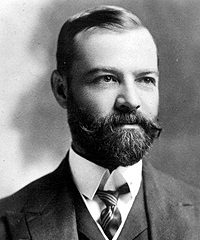 The-death occurred In a private hospital yesterday of Mr. Ernest C. V. Broughton, ex-member for King Division in the Legislative Assembly, ex-Mayor of Ashfield, and a well-known estate and financial agent in Sydney. He had been in ill-health for the last twelve months.
The-death occurred In a private hospital yesterday of Mr. Ernest C. V. Broughton, ex-member for King Division in the Legislative Assembly, ex-Mayor of Ashfield, and a well-known estate and financial agent in Sydney. He had been in ill-health for the last twelve months.
The deceased, who has left a widow (the only daughter of the late Mr. William Newcombe, formerly receiver of the N.S.W. Treasury), was 52 years of age. He was the second son of the late Alfred Delves Broughton, formerly police magistrate at Drayton (Q.). His uncle was Sir. Henry Delves Broughton, Bart. of Doddington Hall, Staffordshire (Eng).
Besides taking a keen interest in political and municipal affairs, the late Mr. Broughton was a vice-president of the Pioneers' Club, one of the founders of the British Empire League in Sydney, a director representing the Government on the Sydney Hospital Board, treasurer for several years of the Surgical Aid Society, a member of the Sydney Golf Club, and a member of the executive of the Fresh Air League. Mr. Broughton, who resided In Ashfield, had been identified with the progress of that municipality since 1885. From boyhood, political questions engaged much of his attention, and he became hon. secretary to the School of Arts Debating Club.
At the time of the inauguration of the Commonwealth, Mr. Broughton was a member of the Commonwealth and Citizens' Royal Reception Committees, and he took an important part in arranging the details in connection with the work of those bodies. His father, the late Mr. Alfred Delves Broughton, was returned to the first Queensland Parliament which met under responsible government. DEATH OF MR. E. C. V. BROUGHTON. (1917, August 16). The Sydney Morning Herald (NSW : 1842 - 1954), p. 8. Retrieved from http://nla.gov.au/nla.news-article15753325
Alfred Delves Broughton (20 November 1826 – 10 March 1895) was the 15th of 18 children of Sir Henry Broughton and his wife Mary (née Pigott). On 16 March 1858 Broughton married Clemence La Monnerie dit Fattorini at St James' Church, Sydney, New South Wales. The couple had 2 sons and 2 daughters:
Vernon Lamonnerie Delves (1859—1935)
Dora Ethelind Lamonnerie (1861—1864)
Mary Clemence (1862— )
Ernest Clement Vernon (1865—1917)
Alfred Delves Broughton died on March 10th, 1895 in Surrey, England.
Sir Henry Delves Broughton, 8th Baronet (10 January 1777 – 3 November 1851) was a younger son of Sir Thomas Broughton, 6th Baronet, by his first wife Mary (née Wicker), and was educated at Rugby, Eton, Oriel College, Oxford, and Jesus College, Cambridge. From 1807 to 1829 he was Rector of Cheadle, Staffordshire. In 1847, at the age of 70, he succeeded his elder brother in the baronetcy. Sir Henry married Mary, daughter of John Pigott, in 1807. They had nine sons and nine daughters. He died in November 1851, aged 74, and was succeeded in the baronetcy by his eldest son, Henry. Lady Delves Broughton died in December 1863.
Sir Henry Delves Broughton, 9th Baronet (1808–1899).
Sir Delves Louis Broughton, 10th Baronet (1857–1914)
Sir Henry John Delves Broughton, 11th Baronet (1883–1942) - came into the baronetcy upon the death of his father in April 1914. This is the gentleman upon whom the film 'White Mischief' was based; he is known for standing trial for the murder of Josslyn Hay, 22nd Earl of Erroll.
RECOVERY OF A LOST WILL.
Estate of £700,000.
The will of the late Mr Henry Thomas Coghlan, of Hyde-park Gardens, London, for which a reward of 10,000 guineas was offered last month, has been found at Cheltenham (says 'Lloyd's Weekly.') By this the property is left to the late Sir Henry Delves-Broughton, nephew of Mrs Coghlan, who died four years ago. Mr Coghlan, whose estate was proved at about £700,000, died in 1892. Search was made in the house in which for fifty' years he had lived the life of a recluse, but no will was ever discovered, and the matter came into me courts for settlement. Sir Anthony Weldon, an Irish baronet, claimed to be the next-of-kin. He failed to prove that he was, however, and Sir Henry Delves-Broughton, a cousin-german, was granted letters of administration. The court found that Mr Coghlan had died intestate, and a widower, 'with-out child or parent, or brother or sister, or uncle or aunt, or nephew or neice '
Then Sir Henry and the law guarantee and Trust Society entered into a bond in the sum of £1,357,679 for the administration of the estate, which was divided between Sir Henry Delves-Broughton, Mr Alfred Delves-Broughton, his brother, who died in 1895, Mrs Laura Maul, his sister, widow of the late Mr J. Compton Maul, barrister, and Mrs Fanny Hardress Lawson, his cousin. There have been several claimants to the estate beside Sir Anthony Weldon.
In 1899 Mrs Teresa Mahon, the wife of a Dublin commercial traveller, applied to the English Probate Court to set aside the letters of administration granted to Sir Henry Delves-Broughton in order that she might recover the estate, claiming to be a cousin of the intestate. Mr Justice Barnes, however, held that she had acquiesced in the Chancery proceedings in 1894, and dismissed her suit. Subsequently it appeared in the course of some Dublin litigation in 1905 that a Lady Stewart had taken much interest in the 'missing heirs,' and had found the supposed heir, who was in humble circumstances in England'. An inquiry agent visited Ireland, and found a piano-tuner, whom he believed to be the person really entitled to the 'Coghlan millions,' and introduced him to Lady Stewart, who made an arrangement with him. RECOVERY OF A LOST WILL. (1912, August 21). Huon Times (Franklin, Tas. : 1910 - 1933), p. 4. Retrieved from http://nla.gov.au/nla.news-article135820487
It is Mr. Broughton's passions for the School of Arts Debating Club and that club's passion for thinking and sharing ideas to which we may owe these names for those roads in that part of Mona Vale-Bayview in 1892 - for they were debating/arguing for:
... in connection with the affairs of a society of the nature of a private club like the School of Arts, to stab them in the dark, was a coward and a blackguard; (Applause and dissent.) There was no doubt that those members of the institution who wished to attend the reading room on Sunday should have the right to do so, so long as they violated none of the rules of the society. (.Cheers and dissent.) Similar institutions elsewhere opened their doors on Sunday without any of the evils resulting which so many people here appeared to expect. His own experience was that wherever such a change had been made additional benefits had accrued to the members. (Dissent.) Those who did not want to use the room if it were opened should not stand in the way of those who did, and who, in trying to open it, were simply following in the wake of some of the leading men in the mother country — men who wore trying to free the Sabbath from the Puritanism which had belonged to it in the past. The Sunday Freedom Society in London numbered Dean Stanley (Dean of Westminster) as one of its vice-presidents, while Dr. Carpenter, Huxley, and others of note belonged to a society organised to deliver Sunday lectures all over England. (Applause) Surely the members of the School of Arts ought not to be ashamed to tread in their footsteps. (Applause.) The House of lands, the most Conservative body in England, bail negatived the proposed opening of the museums, petitioned for by 200 clergymen and others, by only eight votes. 'The Times, in counting upon this division, said some time must elapse before the petition could succeed, and the growth of public opinion in its favour might be waited for with confidence and without impatience. 'The legislature of the colony had led the way in this direction by opening the Public Library and Museum on Sunday, and it was only a question of time to open the reading-room of the School of Arts, whatever the result of the voting that evening might be. (Cries of "Time.") In consequence of the exertions of the Sunday Freedom Society the Manchester Royal Institution was opened on Sunday, and during the first Sundays over 15, 000 people visited it. Means of intellectual recreation and innocent attractions like the reading-room of the School of Arts would do much towards lessening many of the evils of society, towards stamping out drunkenness and quelling larrickanism. He would therefore move — "That it is the opinion of this meeting that, for the future, the reading-room attached to the Sydney Mechanics School of Arts Vie open on Sundays for the use of members, at such hours as may be found to be convenient — say, between the hours of 2 o'clock p.m. and 5 o'clock p.m., from the 1st April to tile .'list August inclusive, and between the hours of 2 o'clock p.m. and ii p.m. from the 1st September to the first March inclusive in each year." (Prolonged applause.) OPENING the SCHOOL of ARTS on SUNDAYS. (1880, August 11). The Sydney Daily Telegraph(NSW : 1879 -1883), p. 3. Retrieved from http://nla.gov.au/nla.news-article238291766
Ahh yes; to be able to access fine books filled with great ideas and even sacredness and spirituality on your only day off and few hours of leisure... ! How outrageous!
So who are the 'Huxley, Darwin and Spencer' given tributes in that early subdivision?:
Thomas Henry Huxley PC FRS HonFRSE FLS (4 May 1825 – 29 June 1895) was an English biologist and anthropologist specialising in comparative anatomy. He is known as "Darwin's Bulldog" for his advocacy of Charles Darwin's theory of evolution.
In November 1864, Huxley succeeded in launching a dining club, the X Club, composed of like-minded people working to advance the cause of science; not surprisingly, the club consisted of most of his closest friends. There were nine members, who decided at their first meeting that there should be no more. The members were: Huxley, John Tyndall, J. D. Hooker, John Lubbock (banker, biologist and neighbour of Darwin), Herbert Spencer (social philosopher and sub-editor of the Economist), William Spottiswoode (mathematician and the Queen's Printer), Thomas Hirst (Professor of Physics at University College London), Edward Frankland (the new Professor of Chemistry at the Royal Institution) and George Busk, zoologist and palaeontologist (formerly surgeon for HMS Dreadnought). All except Spencer were Fellows of the Royal Society. Tyndall was a particularly close friend; for many years they met regularly and discussed issues of the day. On more than one occasion Huxley joined Tyndall in the latter's trips into the Alps and helped with his investigations in glaciology.
Voyage of the Rattlesnake
When aged 20, Huxley was too young to apply to the Royal College of Surgeons for a licence to practise, yet he was 'deep in debt'. So, at a friend's suggestion, he applied for an appointment in the Royal Navy. He had references on character and certificates showing the time spent on his apprenticeship and on requirements such as dissection and pharmacy. Sir William Burnett, the Physician General of the Navy, interviewed him and arranged for the College of Surgeons to test his competence (by means of a viva voce).
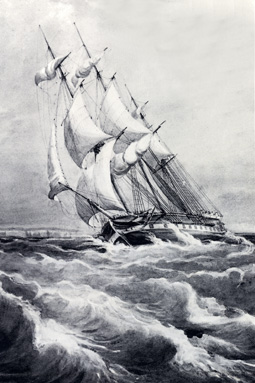
Left: HMS Rattlesnake by the ship's artist Oswald Brierly (prob. a b&w photo of the painting HMS Rattlesnake off Sydney Heads)
Finally Huxley was made Assistant Surgeon ('surgeon's mate', but in practice marine naturalist) to HMS Rattlesnake, about to set sail on a voyage of discovery and surveying to New Guinea and Australia. The Rattlesnake left England on 3 December 1846 and, once they had arrived in the southern hemisphere, Huxley devoted his time to the study of marine invertebrates. He began to send details of his discoveries back to England, where publication was arranged by Edward Forbes FRS (who had also been a pupil of Knox). Both before and after the voyage Forbes was something of a mentor to Huxley.
Huxley's paper "On the anatomy and the affinities of the family of Medusae" was published in 1849 by the Royal Society in its Philosophical Transactions. Huxley united the Hydroid and Sertularian polyps with the Medusae to form a class to which he subsequently gave the name of Hydrozoa. The connection he made was that all the members of the class consisted of two cell layers, enclosing a central cavity or stomach. This is characteristic of the phylum now called the Cnidaria. He compared this feature to the serous and mucous structures of embryos of higher animals. When at last he got a grant from the Royal Society for the printing of plates, Huxley was able to summarise this work in The Oceanic Hydrozoa, published by the Ray Society in 1859.
The value of Huxley's work was recognised and, on returning to England in 1850, he was elected a Fellow of the Royal Society. In the following year, at the age of twenty-six, he not only received the Royal Society Medal but was also elected to the Council. He met Joseph Dalton Hooker and John Tyndall, who remained his lifelong friends. The Admiralty retained him as a nominal assistant-surgeon, so he might work on the specimens he collected and the observations he made during the voyage of the Rattlesnake. He solved the problem of Appendicularia, whose place in the animal kingdom Johannes Peter Müller had found himself wholly unable to assign. It and the Ascidians are both, as Huxley showed, tunicates, today regarded as a sister group to the vertebrates in the phylum Chordata. Other papers on the morphology of the cephalopods and on brachiopods and rotifers are also noteworthy. The Rattlesnake's official naturalist, John MacGillivray, did some work on botany, and proved surprisingly good at notating Australian aboriginal languages. He wrote up the voyage in the standard Victorian two volume format.
Huxley effectively resigned from the navy (by refusing to return to active service) and, in July 1854, he became Professor of Natural History at the Royal School of Mines and naturalist to the British Geological Survey in the following year. In addition, he was Fullerian Professor at the Royal Institution 1855–58 and 1865–67; Hunterian Professor at the Royal College of Surgeons 1863–69; President of the British Association for the Advancement of Science 1869–1870; President of the Quekett Microscopical Club 1878; President of the Royal Society 1883–85; Inspector of Fisheries 1881–85; and President of the Marine Biological Association 1884–1890. - Wikipedia
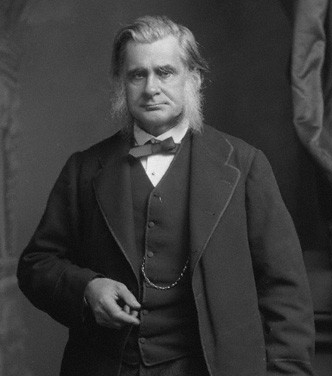
Huxley by Bassano c. 1883
In 1873 the King of Sweden made Huxley, Hooker and Tyndall Knights of the Order of the Polar Star: they could wear the insignia but not use the title in Britain. Huxley collected many honorary memberships of foreign societies, academic awards and honorary doctorates from Britain and Germany. He also became foreign member of the Royal Netherlands Academy of Arts and Sciences in 1892. As recognition of his many public services he was given a pension by the state, and was appointed Privy Councillor in 1892.
Herbert Spencer (27 April 1820 – 8 December 1903) was an English philosopher, biologist, anthropologist, sociologist, and prominent classical liberal political theorist of the Victorian era. Spencer developed an all-embracing conception of evolution as the progressive development of the physical world, biological organisms, the human mind, and human culture and societies. As a polymath, he contributed to a wide range of subjects, including ethics, religion, anthropology, economics, political theory, philosophy, literature, astronomy, biology, sociology, and psychology. During his lifetime he achieved tremendous authority, mainly in English-speaking academia. "The only other English philosopher to have achieved anything like such widespread popularity was Bertrand Russell, and that was in the 20th century."[1] Spencer was "the single most famous European intellectual in the closing decades of the nineteenth century" but his influence declined sharply after 1900: "Who now reads Spencer?" asked Talcott Parsons in 1937.
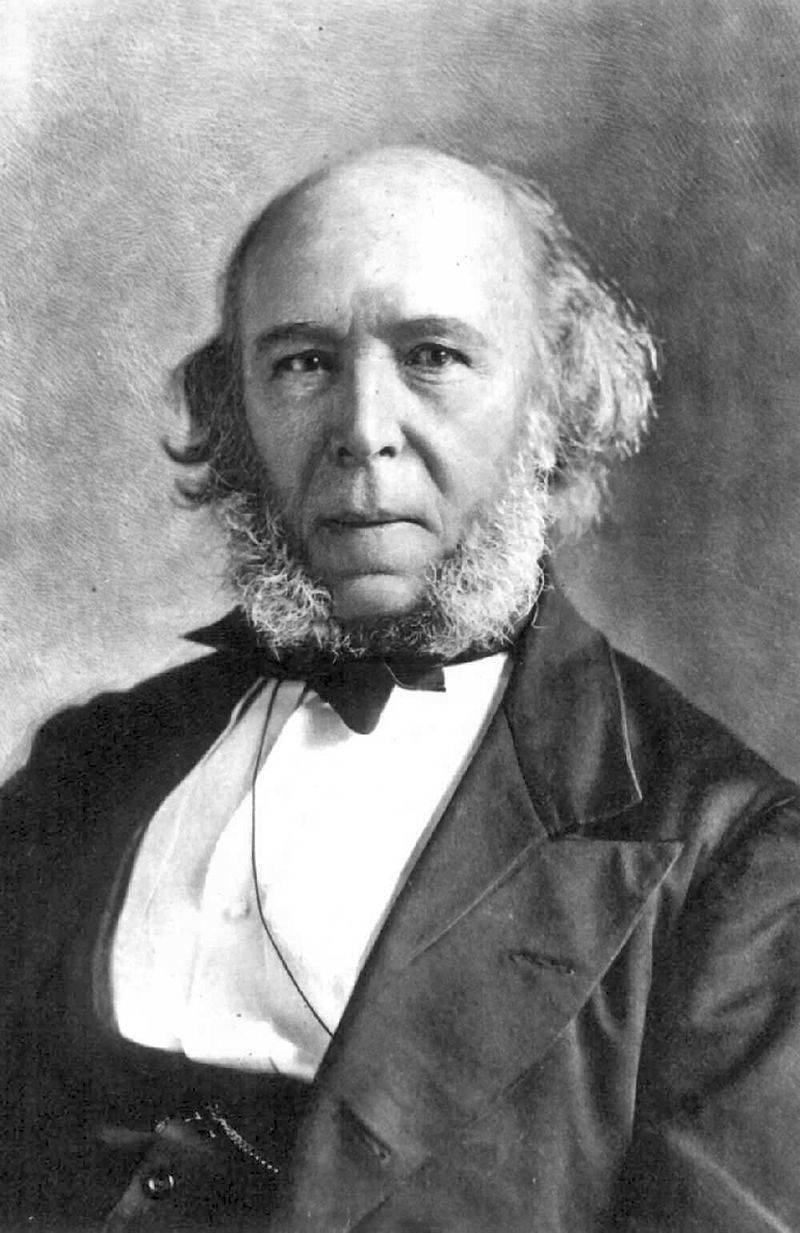
Herbert Spencer
Spencer is best known for the expression "survival of the fittest", which he coined in Principles of Biology (1864), after reading Charles Darwin's On the Origin of Species. This term strongly suggests natural selection, yet as Spencer extended evolution into realms of sociology and ethics, he also made use of Lamarckism.
Charles Robert Darwin, FRS FRGS FLS FZS ( 12 February 1809 – 19 April 1882) was an English naturalist, geologist and biologist, best known for his contributions to the science of evolution. His proposition that all species of life have descended over time from common ancestors is now widely accepted, and considered a foundational concept in science. In a joint publication with Alfred Russel Wallace, he introduced his scientific theory that this branching pattern of evolution resulted from a process that he called natural selection, in which the struggle for existence has a similar effect to the artificial selection involved in selective breeding.
Darwin published his theory of evolution with compelling evidence in his 1859 book On the Origin of Species. By the 1870s, the scientific community and a majority of the educated public had accepted evolution as a fact. However, many favoured competing explanations, and it was not until the emergence of the modern evolutionary synthesis from the 1930s to the 1950s that a broad consensus developed in which natural selection was the basic mechanism of evolution. Darwin's scientific discovery is the unifying theory of the life sciences, explaining the diversity of life.
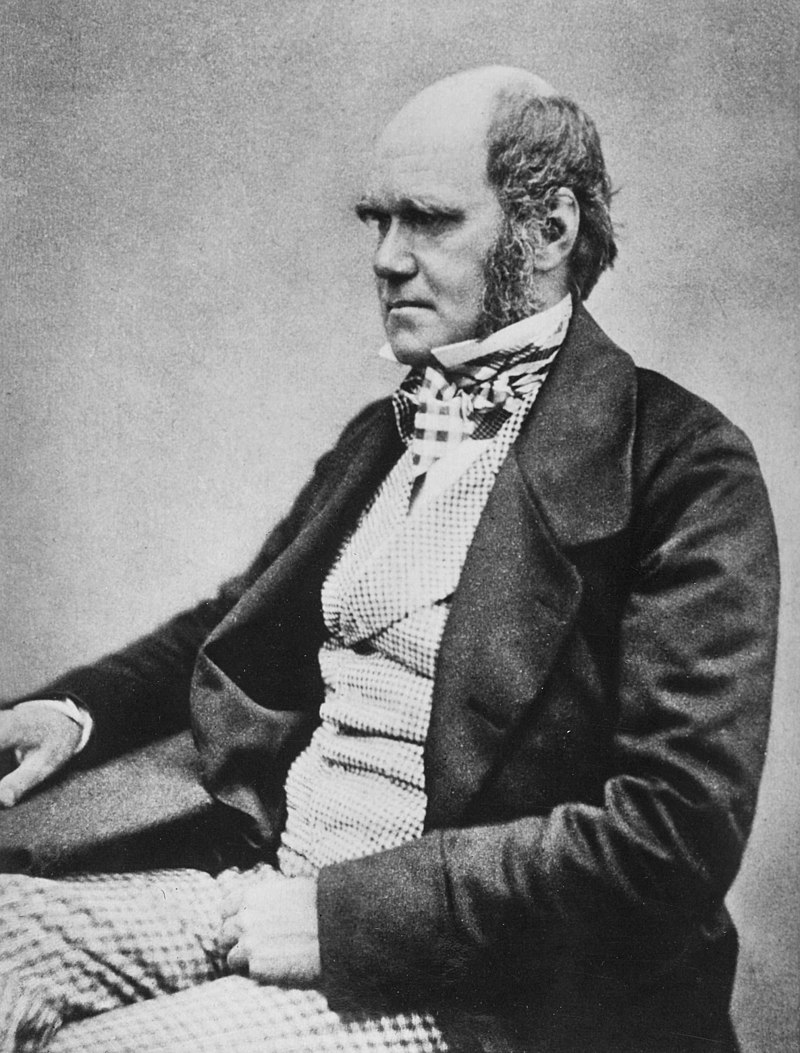
Darwin, c. 1854, when he was preparing On the Origin of Species for publication
Darwin's early interest in nature led him to neglect his medical education at the University of Edinburgh; instead, he helped to investigate marine invertebrates. Studies at the University of Cambridge (Christ's College) encouraged his passion for natural science. His five-year voyage on HMS Beagle established him as an eminent geologist whose observations and theories supported Charles Lyell's conception of gradual geological change, and publication of his journal of the voyage made him famous as a popular author.
Puzzled by the geographical distribution of wildlife and fossils he collected on the voyage, Darwin began detailed investigations, and in 1838 conceived his theory of natural selection. Although he discussed his ideas with several naturalists, he needed time for extensive research and his geological work had priority. He was writing up his theory in 1858 when Alfred Russel Wallace sent him an essay that described the same idea, prompting immediate joint publication of both of their theories. Darwin's work established evolutionary descent with modification as the dominant scientific explanation of diversification in nature. In 1871 he examined human evolution and sexual selection in The Descent of Man, and Selection in Relation to Sex, followed by The Expression of the Emotions in Man and Animals (1872). His research on plants was published in a series of books, and in his final book, The Formation of Vegetable Mould, through the Actions of Worms (1881), he examined earthworms and their effect on soil. - Wikipedia
Department of Public Health, Sydney.
PUBLIC HEALTH ACT, ]902-3944—SECTION 55.
Arfa No. 542.
Unhealthy building land at Mona Vale, Shire of Warringah.
THE Board of Health have reported that after due inquiry they are of the opinion that it would be prejudicial to health if certain land situated in the Shire of Warringah, and described in Schedules hereunder, were built upon in its present condition. The Board of Health have further reported that in order to render such land fit to be built upon it is necessary that:—
(a) The land be adequately drained by properly constructed stormwater channels and by subsoil drains;
(b) The surface of the land comprised in Schedule 1 be raised with clean soil at the shore of Pittwater to a height of four feet about the datum shown on plan of this area at the Department of Public Health, and at Mona street and Bay view-road to the height of the adjacent crown of that street or road, rising from the shore, and from the street or road on an even grade of one in 300; (c) The surface of the land comprised in Schedule 2 be raised with clean soil at Mona-strcet to the height of the crown of Mona-street, and at the stormwater channels specified in clause (a), to a height twelve inches above the level of the natural surface of the land, rising from Monastreet and from the aforesaid channels on a grade of one in 200;
(d) Floors of buildings erected thereon be laid on joists, the undersides of which shall be not loss than. 18 inches above the surface of the land when raised;
(e) All work be done to the satisfaction of the Board of Health.
Now, therefore, in pursuance of the power and authority vested in me by section 55 (1) of the Public Health Act, 3902-1944, I hereby declare that such land shall not be built upon until the measures above referred to, which are also specified in a document deposited in the office of the local authority (the Council of the Shire of Warringah) and open to the inspection of any person, have been complied with or until this notice has been revoked by me.
C. A. KELLY, Minister for Health.
Schedule 1.
Commencing at a point being the intersection of the eastern side of Bayview-road with the northern boundary of the northern part of portion 19; and bounded thence on the north by the aforesaid northern boundary south-easterly to the north-eastern corner of portion 19; thence by the highwater mark on the shore of Pittwater generally north and north-east to the south-western side of Waterview-street, being the northernmost corner of lot 1, section B, shown on plan 4,390 (L); thence by Waterview-street and the Esplanade south-westerly and southerly to the easternmost corner of lot 20, section B; thence by a line south-east to a point of the north-western side of Mona-street, being 150 feet distant and north-east from Darwin-street; thence by Mona-street south-westerly to Bayview-road; thence by Bayview-road northerly to the point of commencement.
Schedule 2.
Commencing at a point on the south-eastern side of Mona-street, being 513 feet distant and south-westerly front the southernmost intersection of Mona-street with Waterview-street ; and bounded thence on the east by a line southerly to the southernmost corner of lot d{ thence by a line south-westerly to the northernmost corner of lot 56, section 1, plan 680 (L); 1 hence by Bassett-street south-easterly to Newport-road; thence by Newport-road southerly to Polo-avenue; thence by a line westerly to the north-eastern corner of lot 25, d.p. 5,497; thence by the eastern boundaries of lots 25, 26 and 27 southerly to the most southerly corner of lot 27; thence by a line southerly lo a point on the south-western boundary of lot 3, d.p. 5,497, being 80 feet north-westerly from the south-eastern corner of lot 3; thence by a line parallel to Newport-road south-westerly to the north-eastern boundary of lot 6, d.p. 16,794; thence by the north-easern boundary of lot 6 south-easterly to Newport-road; thence by Newport-road south-westerly to Darley-street; thence by Darley-street north-westerly to By-the-Sea-road; thence by a line northerly to the easternmost corner of lot 31, d.p. 5,497; thence by the north-eastern boundary of lot 31 north-westerly to the northernmost corner of lot 31; thence by a line north-westerly to a point on the north-western boundary of lot 61, section 1, plan 680 (L), being 350 feet distant and north-easterly from Darley-street; thence by a line bearing 275 degrees 170 feet; thence by a line bearing 210 degrees to its intersection with the north-eastern side of Darley-street; thence by a line south-easterly to the northernmost corner of lot 27, section ]. plan 680 (L); thence by the northwestern boundary of lot 27 south-westerly 60 feet; thence by a line parallel to Darley-street south-easterly to the south-eastern boundary of lot 27; thence by that boundary north-easterly to Darley-street; thence by Darley-street south-easterly 330 feet; thence by the following lines in succession, i.e., a line bearing 260 degrees 330 feet; a line bearing 284 degrees 300 feet; a line bearing 318 degrees 180 feet; thence by a line northerly to the northernmost corner of lot 21, section 1, plan 680 (L) ; thence by a line north-westerly to the southernmost corner of lot C, being a subdivision of lot 57, section 1, plan 680 (L) ; thence by a line bearing 328 degrees 520 feet; thence by a line northerly to the southernmost corner of lot 51, section" 1, plan 680 (L); thence by the south-eastern boundary of lot 51 northwesterly to Mona-street; thence by Mona-street north-easterly !o the point of commencement. (7100) PUBLIC HEALTH ACT,]902-1944—SECTION 55. (1946, March 22). Government Gazette of the State of New South Wales (Sydney, NSW : 1901 - 2001), p. 657. Retrieved from http://nla.gov.au/nla.news-article224762229
Atop the above, and following quickly on from, and also before many servicemen and women could be transported back home from overseas WWII engagements, the Warringah Shire Council of then was selling their little dream to return home to out from under them:
OVERDUE RATES.—Shire op Warringah.—Land to be Sold or Transferred for Default.—The following persons are required to take notice that the Council of the Shire of Warringah has applied to the Public Trustee to sell or transfer to it under section 603a of the Local Government Act the land specified below against their names, of which they appear to be the owners or in which they appear to be interested, for overdue rates amounting to the sums mentioned m each case; and that in default of payment forthwith to the Public Trustee of the said rates and all interest charges and expenses in connection with the same applications and proceedings by the Public Trustee, the said land will be peered for sale by the Public Trustee at public auction or transferred to the Council under the aforesaid section 603a :—
William Bell, of Sydney, Frederick Harrington Baker, of Sydney and Neutral Bay, and Selina Emily Stokes Baker, of Neutral Bay, and estate of Isaiah Beginald Cohen; overdue lates, £22 15s. 2d.; land, lot 28, section B, The Esplanade, Mona Yale.
James Bissaker, of Croydon, auci estate of James ©issaker; overdue rates, £27 12s. 4d.; land, lots 36/38, section C, Huxley-street, Mona Vale.
James Bissaker, of Croydon, and William A. L. Grabbert, of Newtown; overdue rates, £18 3s. 8d.; laud, lot 38, section B, The Esplanade, Mona Vale.
John Forman, of London, England; overdue rates, £10 16s. 2d.; land, lot 32, section B, Esplanade, Mona Vale,
William Mark Henry Lewis Grabbert, of Macdonaldtown and Newtown; overdue rates, £16 12g. 8d-i land, lot lp, section D, Spencer-street, Mona Vale.
William Hark Henry Lewis Grahbert, of Macdonaldtown an<J Newtown; overdue rates, £17 lis. Id.; land, lot 37, section D, Huckley street, Mona Vale.
William Mark Henry Lewis Grabbert, of MacdQlinldlouu and Newtown; overdue rates, £16 13s. 6<1.; 'l?m&, lot 38, section D, Huckley-street, Mona Vale.
John Hackett, of Cobar overdue rates, £17 9s. 7d.; land, lot 22, section C, Darwin-street, Mona Vale.
John Hackett, of Cobar; overdue rates, £23 16s. 3d.; land, lots 39/4Q, section C, Huxley-street, Mona Vale.
John Hackett, of Cobar; overdue rates, £12 13s. od.; land, lot 43, section C, Huckley-street, Mona Vale.
John Hackett, of Cobar, and Robert PrestQii Thorpe, of Sydney; overdue rates, £27 6s. 4d.; land, lots 30/40, section B, The Esplanade, Mona Yale.
John Hackett, of Cobar, Jessie Loften, of Sydney, and Alfred Lee, of Newtown; overdue rates, £132 8d.; land, lots 22/35, section D, Spencer and Huxley streets, Mona Vale.
6usan Oldfield, of Hornsby; overdue rates, $37 18s. 4d.; land, lots 7/9, section C, Darwin-Street, Mona Vale.
Susan Oldfield, of Hornsby, and William Cooper, of Inverell; overdue rates, £100 13s. Id.; land; lots 10/18, section C, Darwin-street, Mona Vale,
Susan Oldfield. of Hornsby, and William Cooper, of Inverell; overdue rates £142 146.; land, lots 23/35, (Section C, Huxley-street, Mona Vale.
Samuel Pearce, of Sydney and Belmore, and Robert Preston Thorpe, of Sydney; overdue rales, £75 3s. 10d.; land, lots 18/25, Section B, The Esplanade, Mona Vale.
Florence Roberts, of Mona Vale and Sydney; overdue rates, £27 11s. 4d.; land, lots 13/16, section B, The Esplanade, Mona Vale.
Mary Sherer, of Macdonaldtown, and Mary Shiner, of Auburn; overdue rates, £20 13s. 4d.; land, lots 20/21, section D, Spencer-street, Mona Vale.
Mary Sherer, of Macdonaldtown, and Mary Shirer; overdue rates, £20 2s. 5d.; land, lot 36, section D, Huxley-street, Mona Vale.
M. C. NOTT, Public Trustee, 19 O'Connell-street, Sydney. 2853—£3. OVERDUE RATES.—SHIRE OF WARRINGAH.—Land to be (1946, June 7). Government Gazette of the State of New South Wales (Sydney, NSW : 1901 - 2001), p. 1326. Retrieved from http://nla.gov.au/nla.news-article224764297
An August 1946 sales notice for overdue rates seems to have a much more widespread 'we're selling it!' notice to landholders - some in as far away as the other Darwin - Darwin N.T., Australia, and lists lands and properties from north to south.
Residents living in Huxley street during 1947 were constantly begging council to do something about the state of the road. Council refused over and over, stating they had no funds to do so.
The land that council then owned was offered to others in the district - from Warringah Shire council minutes of Meetings;
Ordinary Meeting, 12/9/55. Newport Jupior Ruby League Football Club: Enquiring if 26. Council could, in any way, make available to the club an area on which to erect a clubhouse in the Mona Vale-Newport District, and not remote from public transport; pointing out that they are a progressive society with an active membership of over 100 and are capable of attending to the winter sporting activities of at least six football teams half of which would be players under school leaving age. (referrod from last meeting). Moved by Cr. Simmonds, seconded by Cr. McKay that the Club be informed that Council has no land available which is suitable for the Club. An amendment was moved by Cr. Fisher, seconded by Cr. Quinlan, that the Club be offered the land in Huxley Street previously offered to the Returned Soldiers Club and if the land is unsuitable that the Shire Clerk report as to whether there is any other suitable land owned by Council other than parks and reserves. The amendment was CARRIED and on becoming the motion was again carried
Ordinary Meeting 9/12/57: (a) Proposed R.S.L. Club Rooms, Mona Vale - Requesting clarification as to the Council's intentions respecting the requirement of an agreement covering the use of Lots 25/26 Huxley Street by the Club. Resolved, - That consideration of this matter be deferred, and the Solicitor advise the Council as to its powers to plade clauses in the Agreement whereby in the event of the Club becoming defunct the property would revert to the Council. (Crs. Fisher, Cooper)
Pittwater Sub-Branch RSL, 15/4/58, thanking Council for its efforts in connection with granting of land in Huxley Street, Mona Vale, that the hail has been transported from Concord to Mona Vale, and progress is being made in putting it in order; that in order to carry out the programme of work It is felt the surrounding area could be greatly improved by having the scrubby growth and rubbish cleared from the Mona and Huxley Street sides of the land, and an area of say 200 ft. on the western-side cleared: and requesting Council to have such clearing done, the Branch to then keep the area clear. "Received"
Pittwater RSL Sub-branch 1/5/58 requesting that in view of the stipulation by Department of Public Health that land granted by Council at Lots 25 and.26 Huxley Street, Mona Vale must be filled with sand or loam to depth of from 5" to 6" Council'may possibly grant the Club this filling from beach end of Golf Avenue, Mona Vale, or somewhere nearby. If Council ahts this request the Clubcould have the filling delivered at a very nominal charge. 27,. Resolved, - That permission be granted to the Club'to • take sand flung from a spot approvodby the Engineer.
7/7/1958: Deed of Conveyance to the Returned Sailors, Soldiers and Airmen's Imperial League of Australia with respect to the sale of Lots 25/26 Section C, Centenary Estate, Huxley Street, Mona Vale
10) D.McLean; 29/7/59, inquiring whether it would be possible for her to buy from the Council the house in Huxley Street, Mona Vale, occupied by her. Resolved - that this matter be referred to the Shire Clerk for report.
APPLICATION BY MRS. D. McLEAN OF 12 GORDON STREET, INVERELL, TO PURCHASE FOR REMOVAL DWELLING ON LOTS 6.5/6. SECTION D, HUXLEY STREET, MONA VALE. (Referred by Ordinary Meeting 4/8/59 for report): The report traversed previous occurrences in regard to this dwelling and recommended that Council take no 'action to dispose of the building for removal particularly if. the applicant's intention is to remove it to another port of the Shire;. The Shire Clerk added that he considered Council should. wait until the property is empty and then require its demolition by the Engineer. 22.-- Resolved, - That, the report be "received" and adopted. (Crs. McClelland/Wilson)
11/4/1960. (V) (b) F.M. Edgington & Coy., Solicitors, Mona Vale, 7/4/1960, on behalf of the Pittwater Sub-Branch of the R.S.S. & A.I.L.A. and referring to the Club's application of 31/12/59 for permission to extend and alter its clubhouse - pointing out that the Huxley Street land was conveyed by Council on 14/7/58 and recited in the Conveyance is the following: "And the League hereby acknowledges and declares that it will hold and stand seised of the said land UPON TRUST for the erection thereon of clubrooms for members of the Pittwater Sub-branch of the League and 'Sub-branch Club for social recreational and other purposes incidental thereto including the holding of a certificate of registration under Part X of the Liquor Act, 1912 as amended". The writers therefore contend that there is no valid reason why the Sub-Branch's plans should not be approved and stated that they will advise the Sub-Branch to lodge an appeal unless approval is granted within fourteen (14) days. 59. Noted.
Ordinary Meeting. 2/5/1960. (J), Pittwater Sub-Branch, R.S.S. & A.I.L.A., 27/4/60, addressed to the President, re proposed removal of the Sub- Branch's Clubhouse - advising that they have been offered 1 acre within the Mona Vale area, zoned as Rural, for £2,500. They consider Council would prefer using "rural" land, the land is quite suitable to their purpoSes, will give them opportunity to expand in the future and to put down a recreational area. Further stating that as the purchase price of the land, or even the cost of moving the hall itself, is beyond them, the Council in conjunction with Pacific Paradise Pty.-Ltd. may help. Adding that as it is not their desire to vacate their present site they should not be expected to meet any expense in respect of the purchase of the land or the moving of the hall. • 44. Resolved, - That the matter be referred to the:next Meeting of the Finance and General Purposes Committee,and,prier to that Meeting the,Shire Clerk circulate to Councillors the following information:.• (1) --The approximate costs of resumptions in parlay and Huxley Streets. (2) The full amounts accruing to Council as a result of agreements entered into with.Pacific Paradise Pty. Ltd. (3) Thd sale value of the land requested by the R.S.L. Club, together with any other recommendations by the Town Planner. :(Crs. Fisher/Wade).
2/4/1966: By Cr. F. Beckman "could Council ask the Lands Department to expedite its decision regarding the land requested by the Mona Vale Boy Scouts in Kitchener Park, and the Pacific Paradise Company be requested to delay as long as possible its use of the hall in Huxley Street Manly Vale?" "Yes,
There were more schemes put forward to council for use of these areas, some good, some possibly not so great for the environment:
18/9/47 Inquiring whether there is any objection to the granting of a Permissive Occupancy to R.Blackvrefl for baths, Permiss- boat-shed and slips fronting Lot 5 Riverview Road Resolved, - lye That no objection be raised subject to the submission of plans of Occupany thsed buildings and that the usual access conditions apply. M rMbar Forster) Same, lâ/9/ti-7, inquiring whether there is any objection to the granting of a Permissive Occupancy to Miss B. Gittoes for boat- shed, slipway and jetty fronting Lot 58, Scotland Island. Resolved, - That no objection be raised subject to the usual conditions regarding access, and that plans of the proposed Do. buildings are submitted. (Crs.Bztcher Dunbar) (1,) Same, 17/9/47, inquiring whether there is any objection to the granting of a Special Lease to J. Macrand for obtaining sand from the eastern portion of Beeby Park adjacent to Mona Vale Beach. (5) Same, 19/9/17, inquiring whether there is any objection to the granting of a Special Lease to J. Lanerand for obtaining sand from an area of about 13* acres of the eastern part of Avalon Beach Reserve. (6) Same, 16/9/17, inquiring whether there is any objection to the granting of a Special Lease to J. Lamerand for obtaining sand from Deewhy Lagoon. (7) Same, 19/9/47, inquiring whether there is any objection to the granting of a Special Lease to J. Lamerand for obtaining sand from Narrabeen Lagoon. (8) J. Lamerand, 15/9/47, further agarding proposed brick-making operations, (a) requesting a 28 years lease, with the option of renewal, over land In the Centenary Estate and also over portion of the unmade esplanade whichjoins Waterview Street and Darwin Street, Mona Vale, pointing out that Special it would not be satisfactory to put heavy machinery on recently Leases reclaimed land; and (b) drawing attention to his application to the Lands Department for about 10 acres of land at Bayview. Resolved, .- That these letters be taken In Committee later.
Ordinary Meetings 17/10/50 Resolved, - That steps be taken to close the section of Stanley Street from Heath Street to Bassett Street, and that the writer be informed that if Council acquires the land it will be sold by public auction.
(16) Blake & Ring, 9/10/50, on behalf of Mrs. E. E. Ring, regarding access to her property in Darwin Street, Mona Vale, stating their client has made repeated requests for the provision of suitable access and received promises of attention, but to date nothing has been done; and requesting that the matter be given early consideration: Resolved, - that they be
Letter from W.A. Sims, 18/6/56, applying for permission to establish a Camp Site for children's and youth training camps on Lot B. re: subdivision Lot l on the north-eastern corner of Darwin Street, Mona Vale, and on Lot 10 adjoining, at the 25, corner of Darwin and Mona Streets. Resolvd, - That the proposal be approved.
Bowman & Mackenzie, 7/3/58, on behalf of a syndicate of clients, applying for a'lease of an area bounded by Mona Street, Spencer Streets, Pittwater Road, The Esplanade and Darwin Street, with a view to the improvement and beautification of such area in the construction of a high class hotel, swimming pool, tennis courts, bowling greens, boat shed and other amenities, and asking for an opportunity to discuss the scheme if no satisfactory tender has been received by Council. 50. Resolved, - That this matter be deferred until proposals and Council's policy in connection with this locality are considered.
Those who go looking for Huxley, Darwin and Spencer street in Mona Vale today won't find them. As recorded in Roads In Pittwater: the Bay View road, these lands were resumed in 1960 by Warringah Shire council for the creation of a green belt under the County of Cumberland Planning Scheme:
Also, all that piece or parcel of land situate as aforesaid, being the sites of Darwin-street, Huxley-street, Spencer-street and the Esplanade, as shown on plan catalogued 4,390 (L) and that part of the site of the street 60 links wide shown on that plan lying to the south-west of the south-easterly prolongation of the north-eastern boundaries of lots 4 to 20 inclusive, section B, of the Centenary Estate, shown on the said plan catalogued 4,390 (L) 3—and having an area of about 4 acres 1 rood 9 perches.
All such pieces or parcels of land are shown on plan with the Department of Local Government, Sydney. (9827) LOCAL GOVERNMENT ACT, 1919 (1960, August 5). Government Gazette of the State of New South Wales (Sydney, NSW : 1901 - 2001), p. 2409. Retrieved from http://nla.gov.au/nla.news-article220314811
Today we have the wonderful community commons, or greens, as instanced by Winnererremy Bay. There are some great Members Statements by Mr. John Brogden in NSW Parliaments Hansard well worth perusing regarding Winni Jimmi or the creation of that park now at Winnererremy Bay as this was a relatively new dream realised by the community for Pittwater - or corner Patricia Giles OAM, former Mayor of Pittwater, who toiled long and hard with other community members to bring this about.
The Wintergreen estate - opposite Vogans Point
Vogan's point was named after Arthur Vogan, an early land holder towards the Newport end of Mona Vale. Mr. Vogan's photographs of an earlier Pittwater have appeared in various History pages here. As well as owning land at Newport he was an early owner of a 'motor-yacht'.
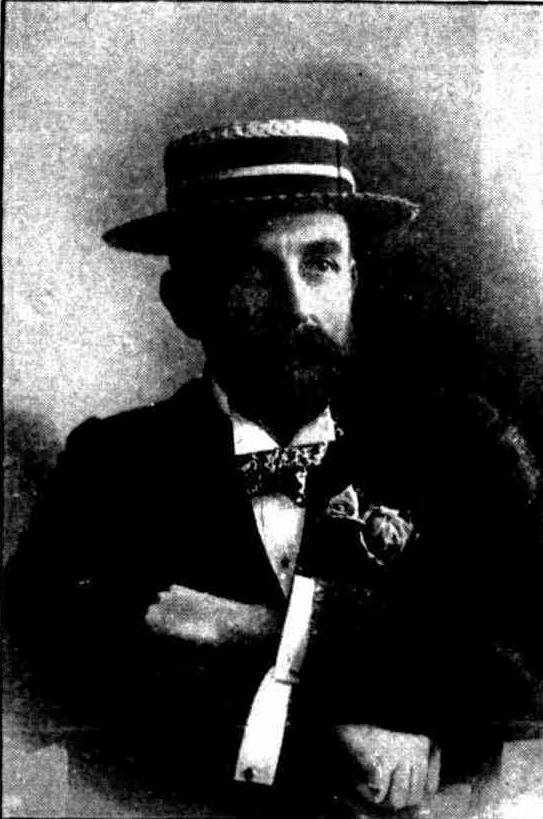
NEWPORT,
Opposite the Newport Hotel and Vogan's Point,
Almost adjoining Allen's Wharf, 5 minutes Irons
Bayview-road, along Mona-strect.
WINTERGREEN ESTATE.
30 BEAUTIFUL SITES, NICELY SLOPING TO THE WATER. PRETTILY TIMBERED.
AUCTION SALE ON THE GROUND,
SATURDAY, 23TH OCTOBER, 1913-
Illustrated Plans on Application.
TERMS: 10 per cent. Deposit, Dalanco in 12 Quarterly
Payments at 5 per cent. int.
HARDIE AND GORMAN PROPRIETARY, LTD.,
Auctioneers, 183 Pitt-street.
W. E. DREW, Esq.,
14 Moore-street, Solicitor to the Estate. Advertising (1913, September 27). The Daily Telegraph (Sydney, NSW : 1883 - 1930), p. 21. Retrieved from http://nla.gov.au/nla.news-article238908480
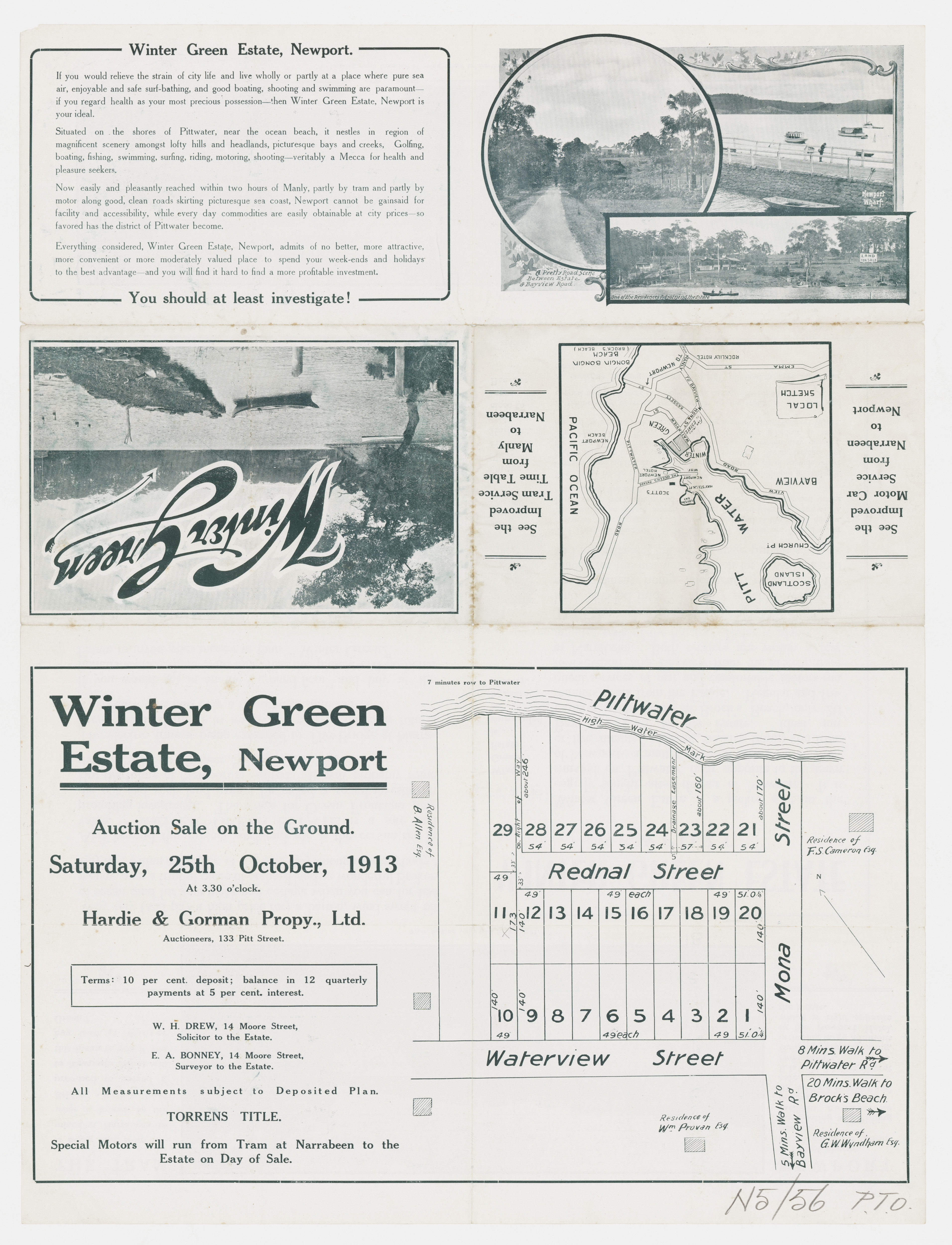
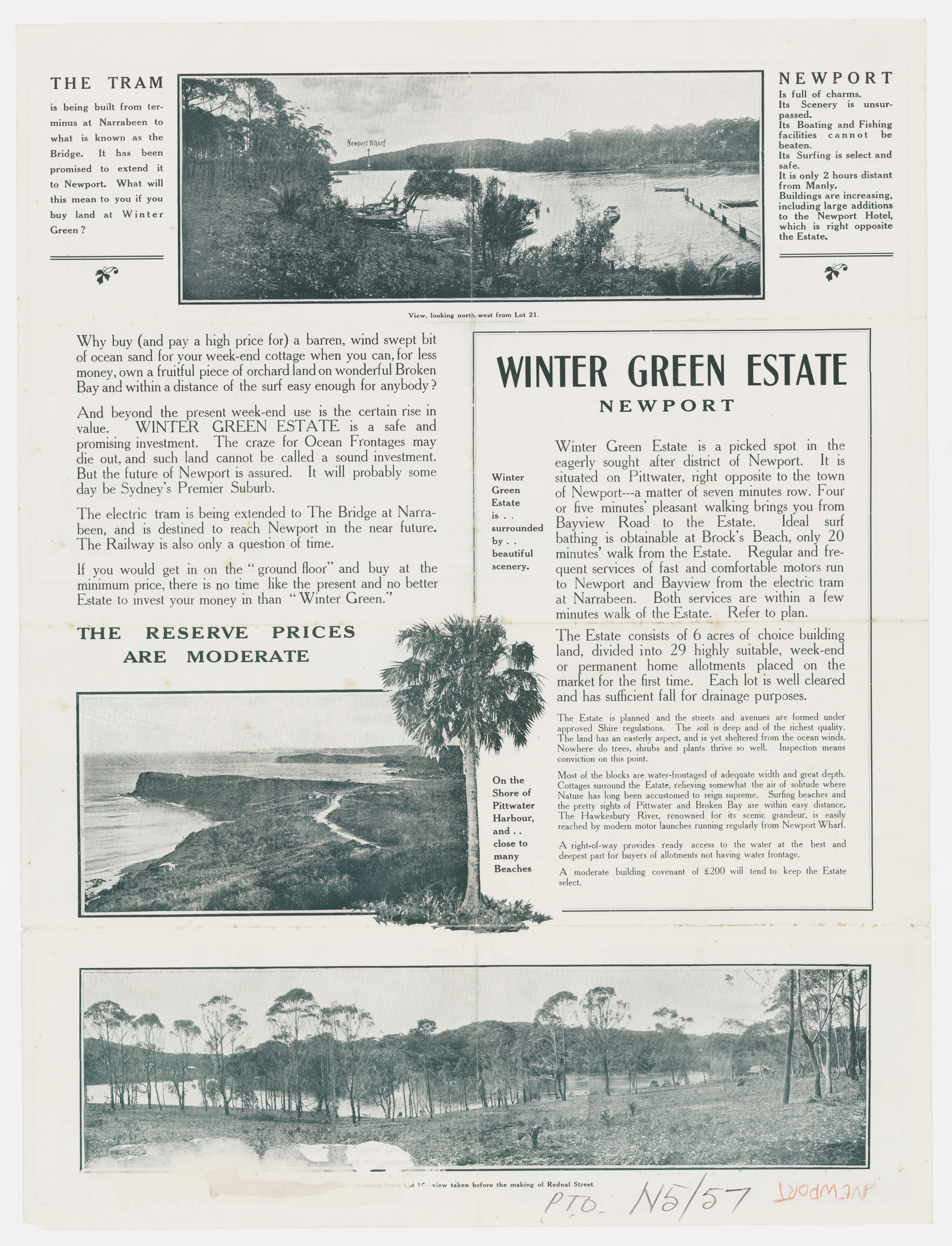
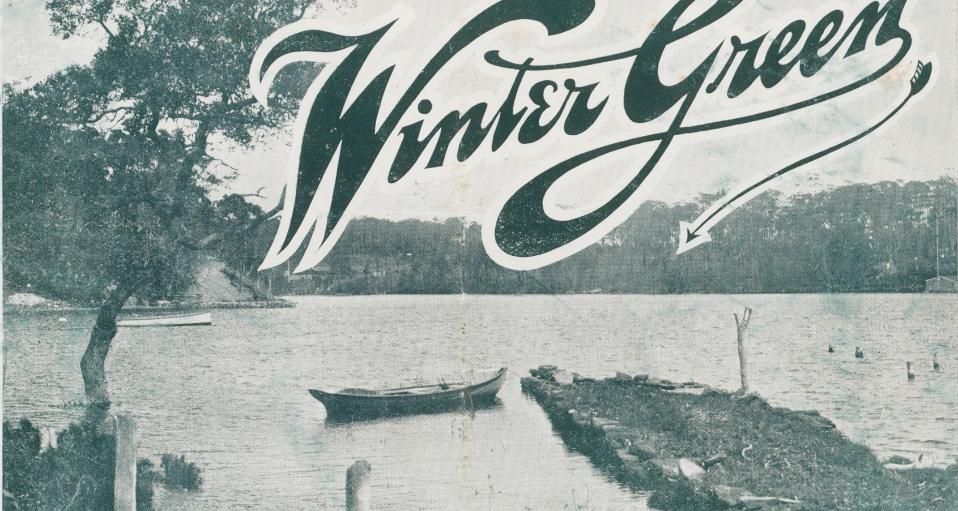
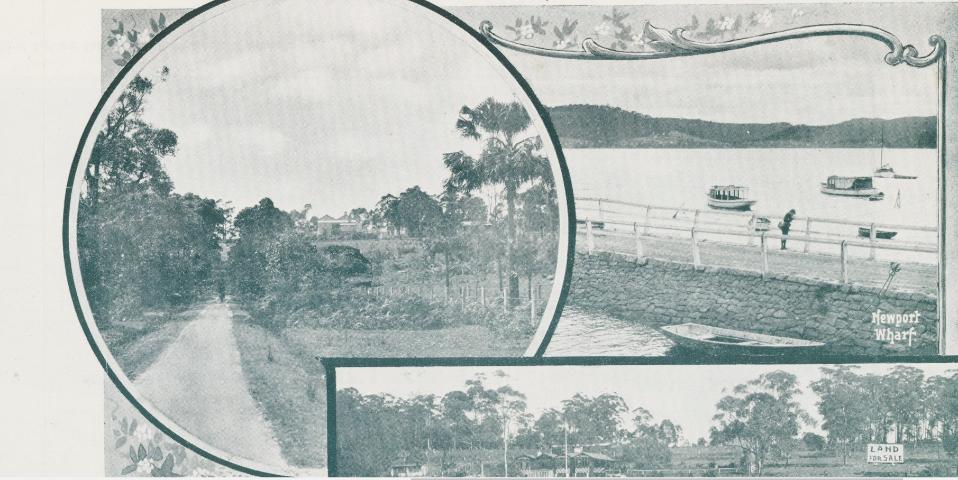

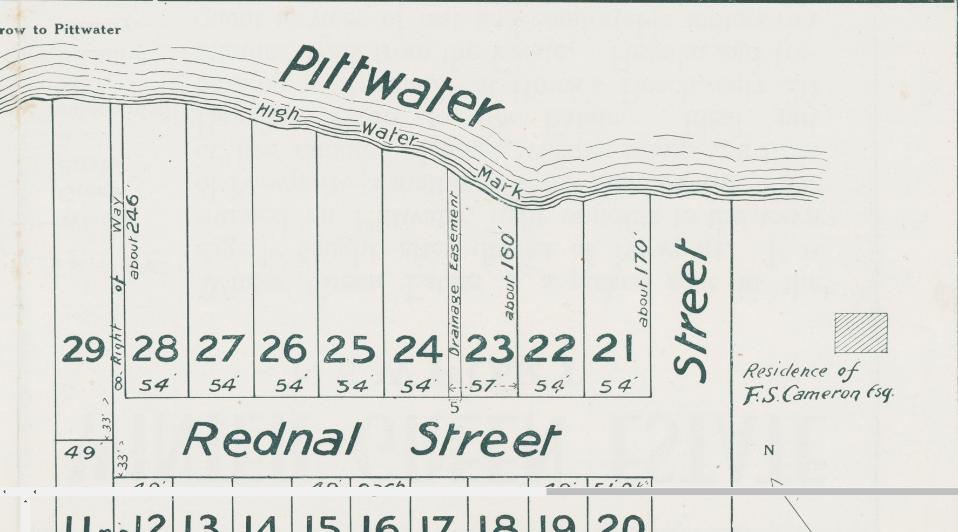
Winter Green Estate Mona Vale Newport 1913, Item No.: c050400040, from Newport Subdivisions folder, courtesy State Library of NSW. - And enlarged sections from to show details - residences of F S Cameron and G W Wyndham
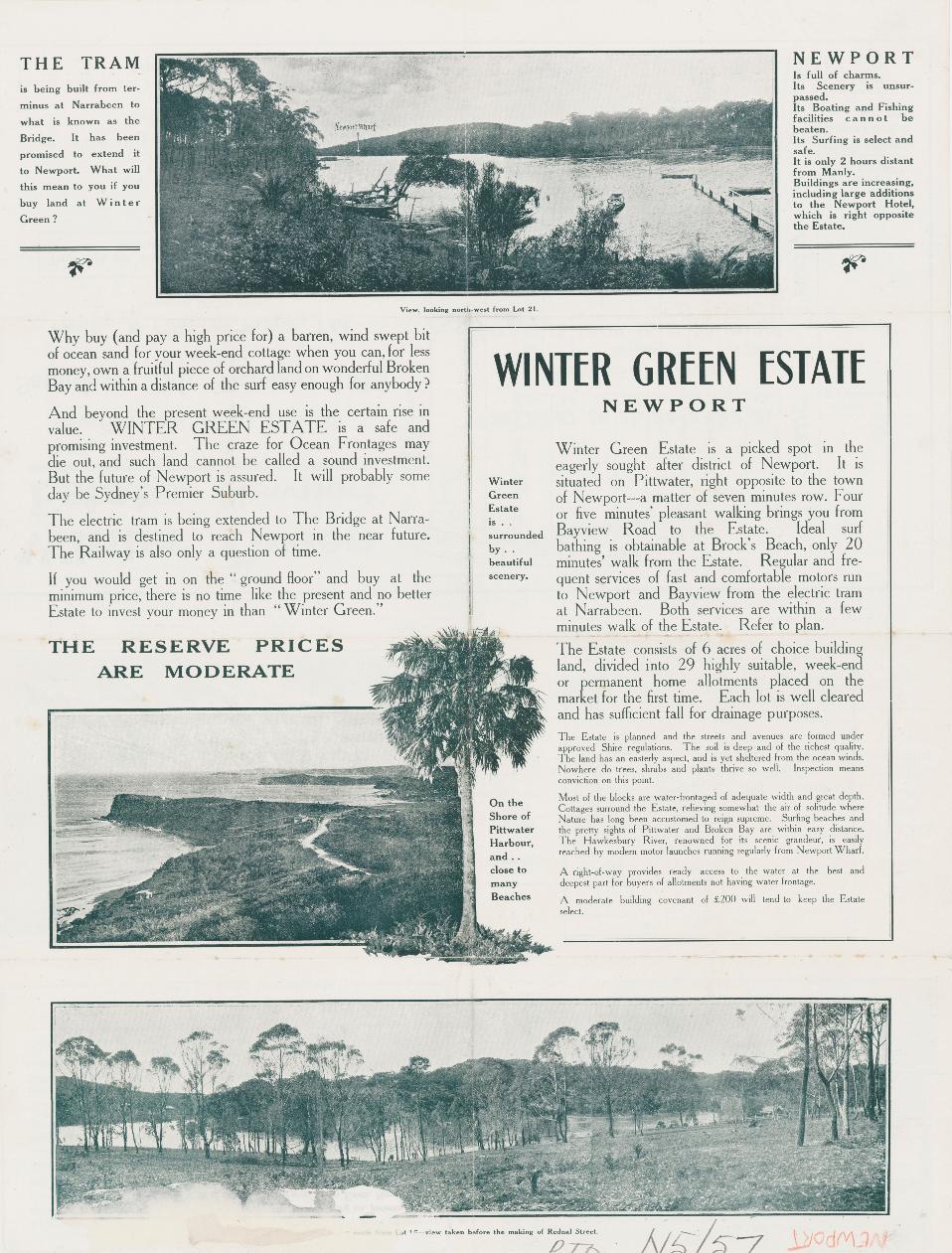
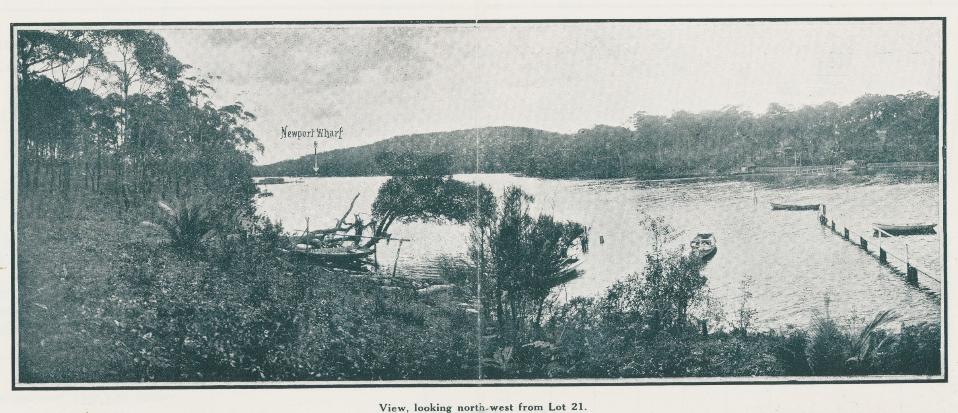
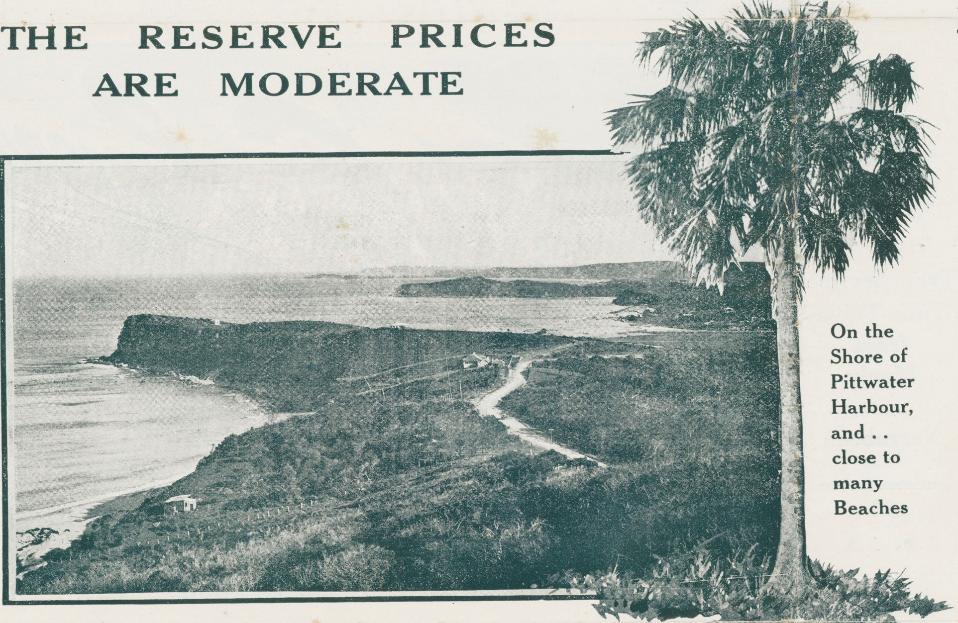

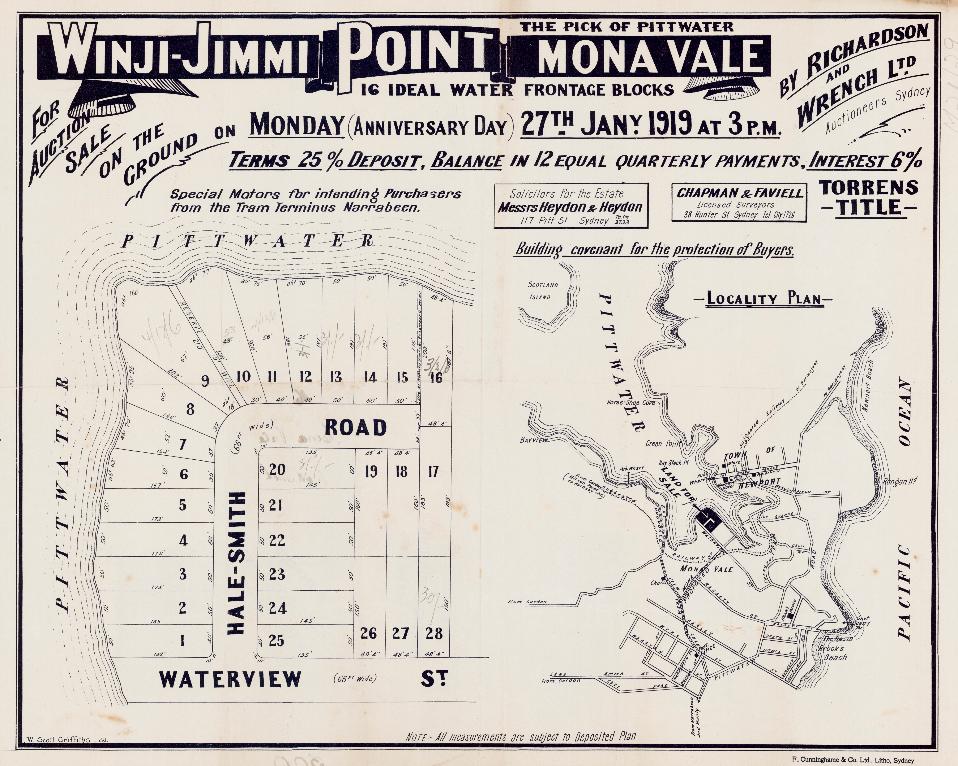
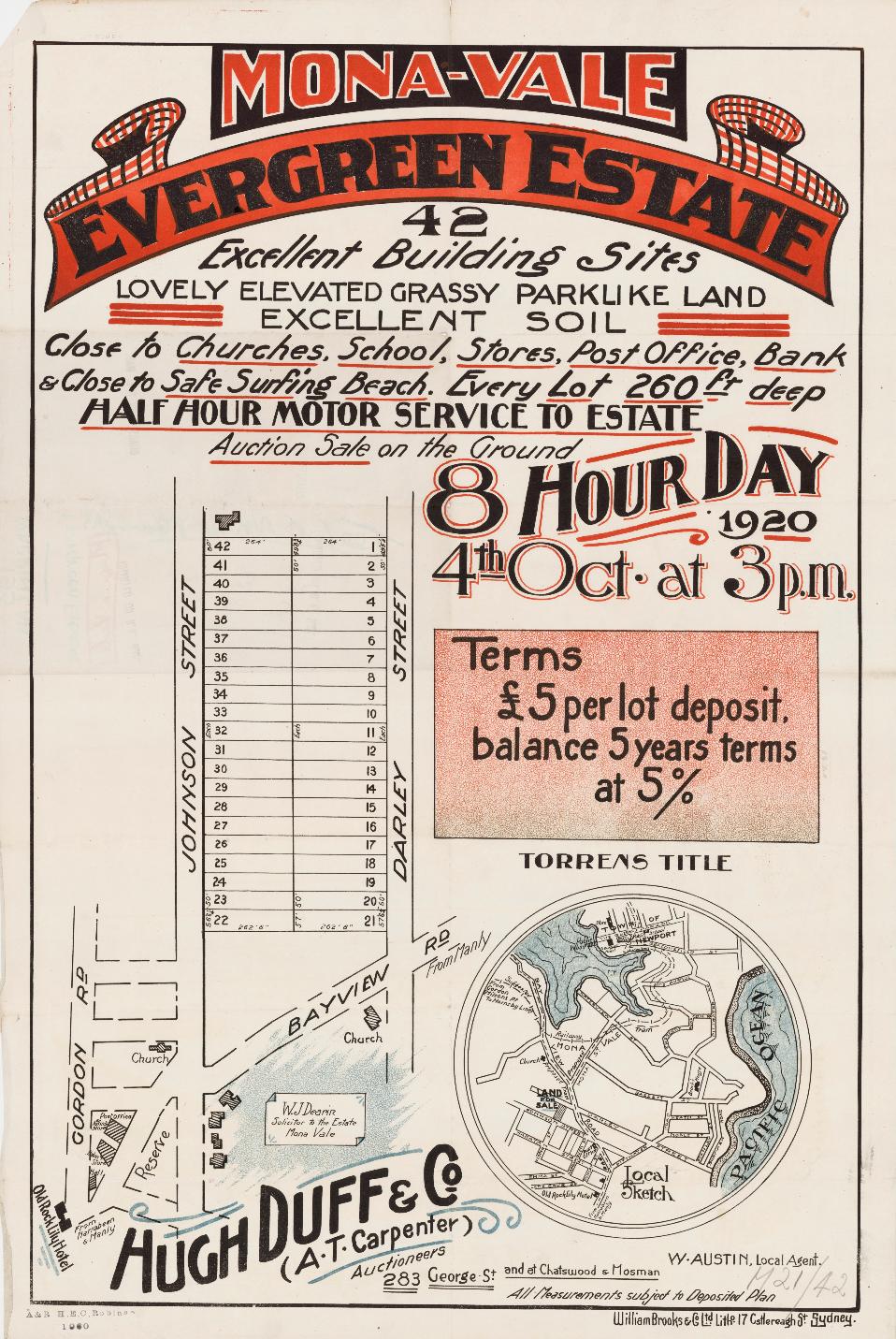
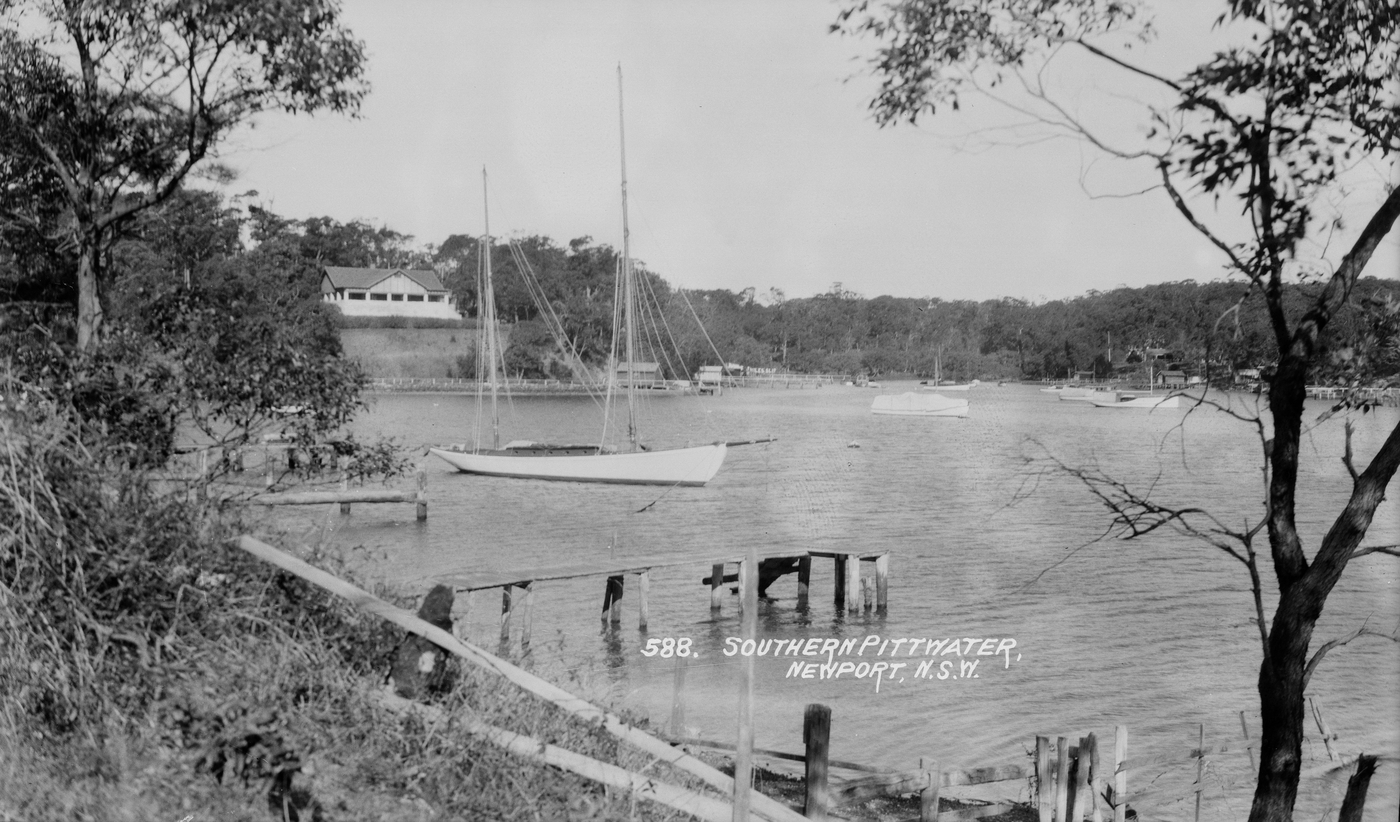
Southern Pittwater (view into Winni Jimmi-Newport verge) circa 1900 - 1914 courtesy State Library of NSW, Image No.: a1470007h - from Album 'Samuel Wood - postcard photonegatives of Avalon, Bilgola and Newport, ca. 1928'
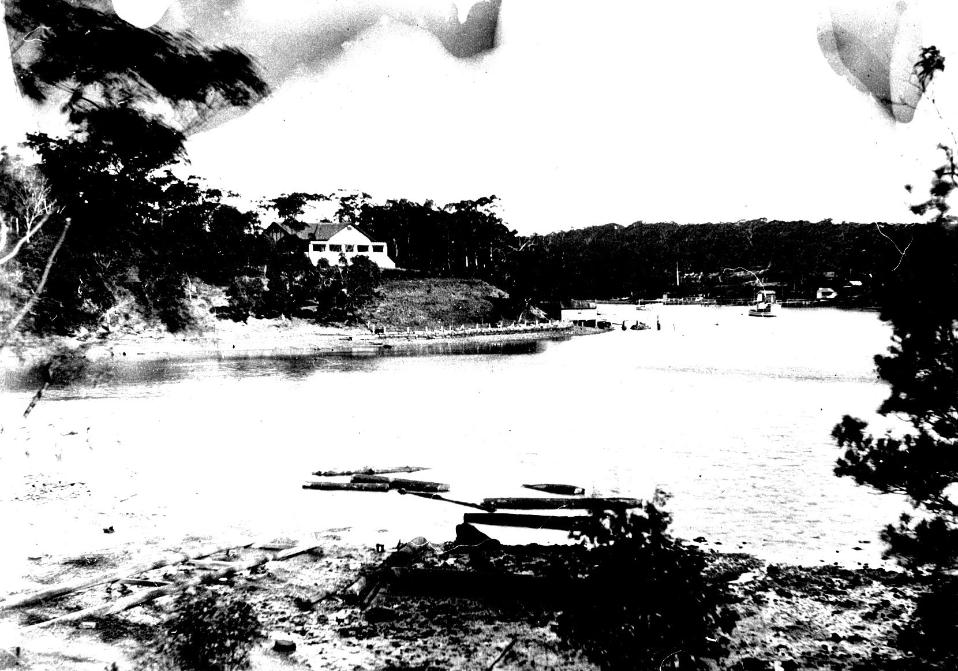
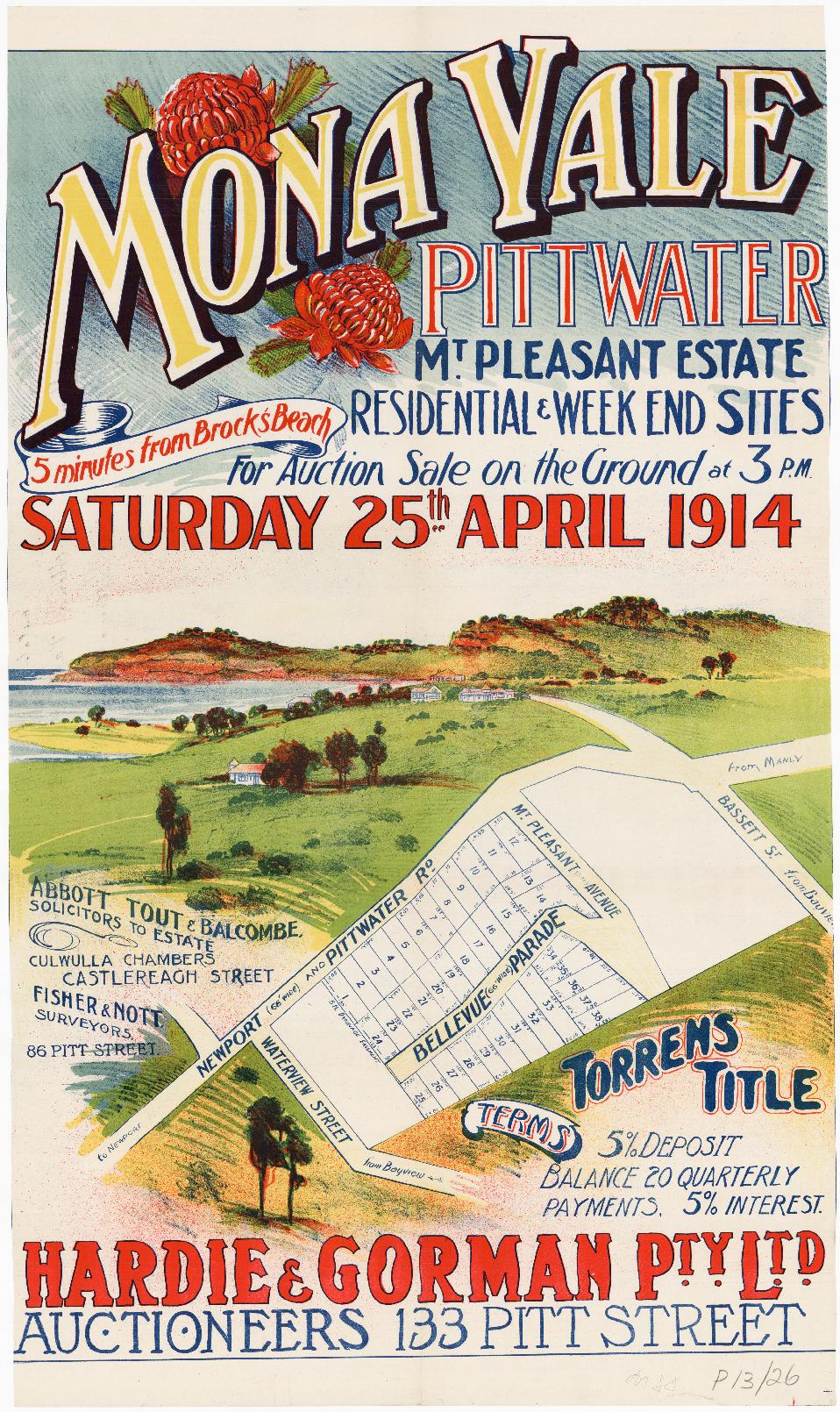
Mona Vale Mount Pleasant Estate, April 25th, 1914 - Five Minutes from Brock's Beach - Item No.: c053460027, from Mona Vale Subdivisions folder, courtesy State Library of NSW. - NB: Waratahs used in subdivision flyer
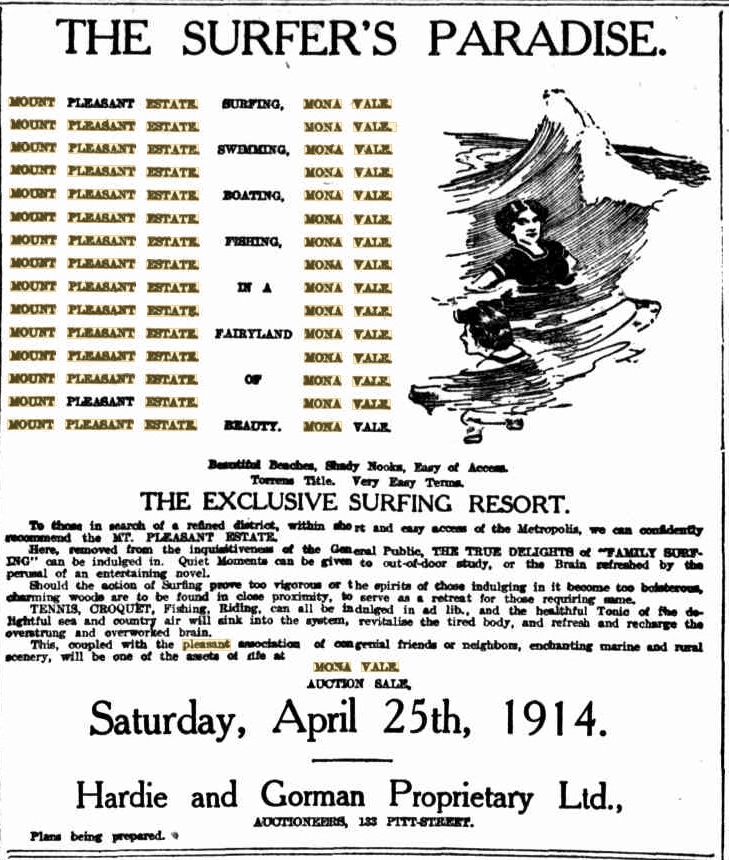
Mona Vale - Acreage Brought Under Real Property Act, Road Name Changes And Green Spaces
No. 11,717. County of Cumberland, parish of Narrabeen, 3 acres 3 roods 22 perches, situated in Crescent Road and The Avenue, Pittwater, adjoining the property of Mr. Perry,—is lot No. 29 of section 5 of Mona Vale Estate, and is part of 700 acres, portion 17 of parish, granted to Robert Campbell. Applicant – Henry Ferdinand Halloran NOTICE UNDER REAL PROPERTY ACT. (1901, April 4). Government Gazette of the State of New South Wales (Sydney, NSW : 1901 - 2001), p. 2897. Retrieved from http://nla.gov.au/nla.news-article226384145
No. 12,674. County of Cumberland, parish of Narrabeen, 3 acres, 1 rood, in the Avenue and Crescent Road, Pittwater, adjoining the property of W. Farmer,—comprises lots Nos 34, 34a, 35,1 35a, 35b, 35c, and 35d of section No. 5 of the Mona Vale Estate,and is part of 700 acres (portion No. 17 of parish) granted to Robert Campbell. Applicant John Baird Nicoll NOTICE UNDER REAL PROPERTY ACT. (1903, May 1). Government Gazette of the State of New South Wales (Sydney, NSW : 1901 - 2001), p. 3250. Retrieved from http://nla.gov.au/nla.news-article226364633
No. 12,849. County of Cumberland, parish of Narrabeen, 1 acre 2 roods, 10 perches in Bassett-street, adjoining the properties of GK S. Brock, and the Hon. the Minister for Public Works,— comprises part of the site of Hill-street, in the Mona Vale Estate, and is part of 700 acres (portion No. 17 of parish), granted to Robert Campbell. Applicant – George Sidney Brock – PittwaterNOTICE UNDER REAL PROPERTY ACT. (1903, July 17). Government Gazette of the State of New South Wales (Sydney, NSW : 1901 - 2001), p. 5333. Retrieved from http://nla.gov.au/nla.news-article221035680
No. 14,573. APPLICANTS:—Sarah Martha Duffy and John Frederick Duffy, Mona Vale, Pittwater. LAND:—Shire Warringah, parish Narrabeen, county Cumberland, 5 acres 1 rood 24 perches in Emma-street and Lane Cove Read, near Turimetta, being lot 20, section A, Collingwood Estate, and part 115 acres 2 roods (portion 53) granted to Thomas Collins; adjoining the properties of J. F. Duffy and J. Mcintosh. NOTICE UNDER REAL PROPERTY ACT. (1907, February 20). Government Gazette of the State of New South Wales (Sydney, NSW : 1901 - 2001), p. 987. Retrieved from http://nla.gov.au/nla.news-article226577683
No. APPLICANT: —Frederick Stewart Cameron, Newport. LAND:—County Cumberland, parish Narrabeen, shire Warringah, 6 acres, at intersection Mona and Waterview streets, and fronting Pittwater,—lots (5 and 7 (as occupied), section 5, Mona Vale Estate, and part 700 acres (portion 17, parish), granted to Robert Campbell; adjoining property of Mrs. J. E. Pollock. NOTICE UNDER REAL PROPERTY ACT. (1913, April 30). Government Gazette of the State of New South Wales (Sydney, NSW : 1901 - 2001), p. 2530. Retrieved from http://nla.gov.au/nla.news-article226761834
No. 18,863. APPLICANT:—Edward Marsh Brodie, Sydney. LAND:—County Cumberland, parish Narrabeen, shire Warringah, 6 acres 19 1/2 perches, in Bay View road, Mona and Darley streets,—lot 53, section 1, Mona Vale Estate, and part 700 acres (portion 17, parish), granted to Robert Campbell; adjoining properties of T. Oliver and B. McCarthy. NOTICE UNDER REAL PROPERTY ACT. (1914, April 15). Government Gazette of the State of New South Wales (Sydney, NSW : 1901 - 2001), p. 2278. Retrieved from http://nla.gov.au/nla.news-article227334466
No. 21,079. APPLICANT:—William Brewer, of Mona Vale. LAND:—County Cumberland, parish Narrabeen, shire Warringah, 9 acres 2 roods 19 3/4 perches, in Bassett-street, Pittwater,—lots 13 and 14, section 4, Mona Vale Estate, and part 700 acres (portion 17, parish), granted to Robert Campbell; adjoining properties of K. M. Brewer, J. K. Heydon, A. S. Erickson, C. O'Hara, and H. de Possel.
No. 21.080. APPLICANT:—Edith Mary Brewer, of Mona Vale. LAND:—County Cumberland, parish Narrabeen, shire Warringah, 10 acres 3 1/2 perches, in Bassett-street, Pittwater,—lots 9 and 10, section 4, Mona Vale Estate, and part 700 acres (portion 17, parish), granted to Robert Campbell : adjoining properties of W. Brewer and J. K. Heydon. NOTICE UNDER REAL, PROPERTY ACT. (1917, December 21). Government Gazette of the State of New South Wales (Sydney, NSW : 1901 - 2001), p. 6865. Retrieved from http://nla.gov.au/nla.news-article227330297
REAL PROPERTY ACT NOTICE.
Applications have been made to bring the undermentioned lands under the Real Property Act. Plans may be inspected and caveats lodged at the Land Titles Office Sydney until 25th, March 1955:—~
No. 38026 Edward John Lees Hallstrom 3 r. 37 1/2 p. pt. lot 52 sec. 1 Mona Vale Est. Bassett St. Mona Vale. REAL PROPERTY ACT NOTICE. (1955, February 18). Government Gazette of the State of New South Wales (Sydney, NSW : 1901 - 2001), p. 445. Retrieved from http://nla.gov.au/nla.news-article220312378
No. 39128 Edward John Lees Hallstrom 3 r. 39 1/2 p. pt. lots 51 and 52 sec. 1 Mona Vale Est. Mona St. Mona Vale.
No. 39129 Edward John Lees Hallstrom 3 acres 2| p. lot B in M.P.S. (O.S.) 5270 Bassett St. Mona Vale. REAL PROPERTY ACT NOTICE. (1956, June 15). Government Gazette of the State of New South Wales (Sydney, NSW : 1901 - 2001), p. 1646. Retrieved from http://nla.gov.au/nla.news-article220304536
No. 39728 Leonard Theodore Ruckley 6 a. 39 1/2 p. pt. lot 15 sec. 4 Mona Vale Est. Waterview St. Mona Vale. REAL PROPERTY ACT NOTICE. (1957, March 15). Government Gazette of the State of New South Wales (Sydney, NSW : 1901 - 2001), p. 814. Retrieved from http://nla.gov.au/nla.news-article220351529
No. 46818 Vincenzo Tomaino, Teresa Tomaino, Salvatore Bombardier and Rosina Bombardier 2 rds lot 1 in D.P. 535153 being lot 19 sec. 1 of the Mona Vale Estate including 103 Darley St Mona Vale. REAL PROPERTY ACT NOTICE (1969, October 10). Government Gazette of the State of New South Wales (Sydney, NSW : 1901 - 2001), p. 4095. Retrieved from http://nla.gov.au/nla.news-article220033201
MONA VALE GETS A MOVE ON
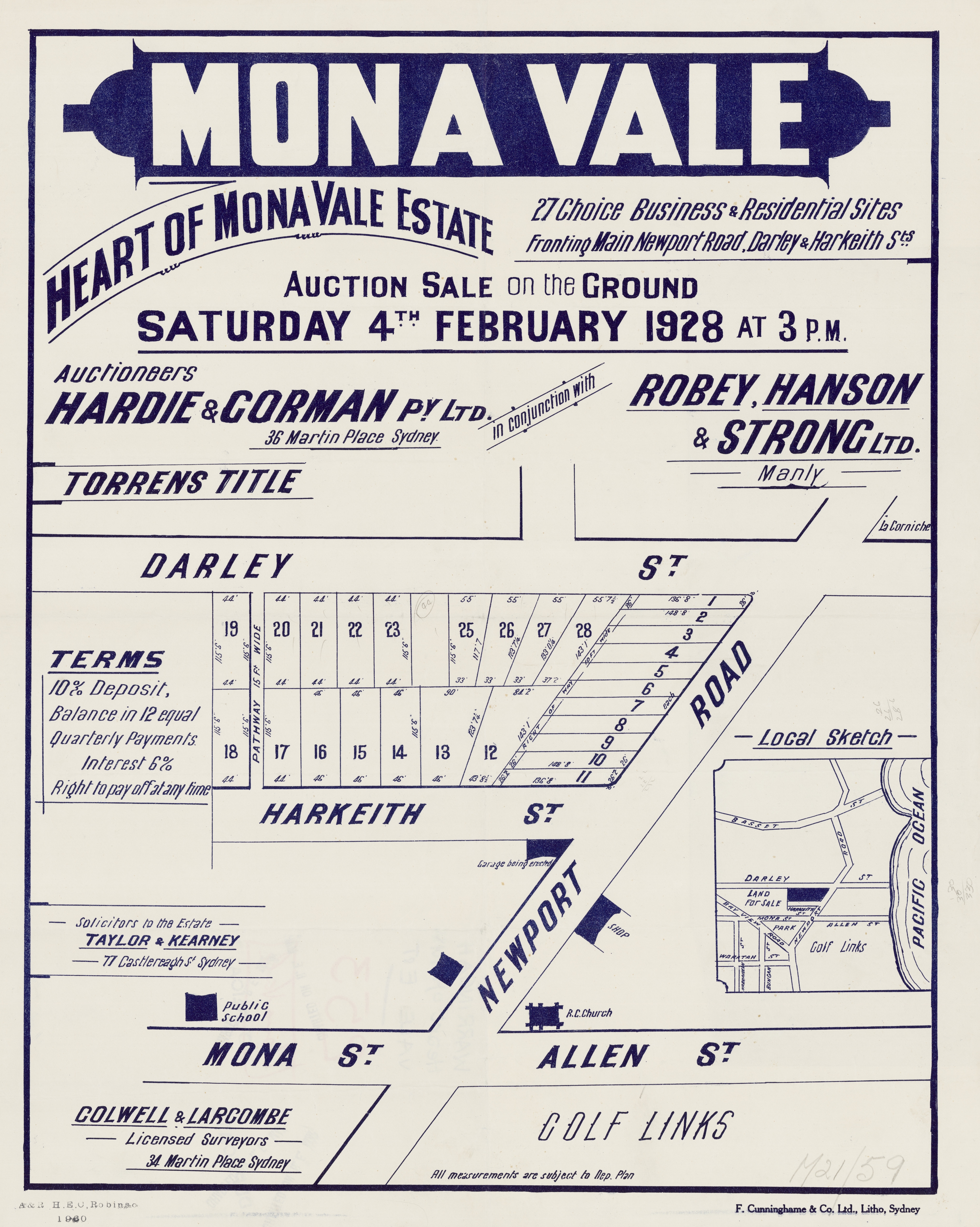
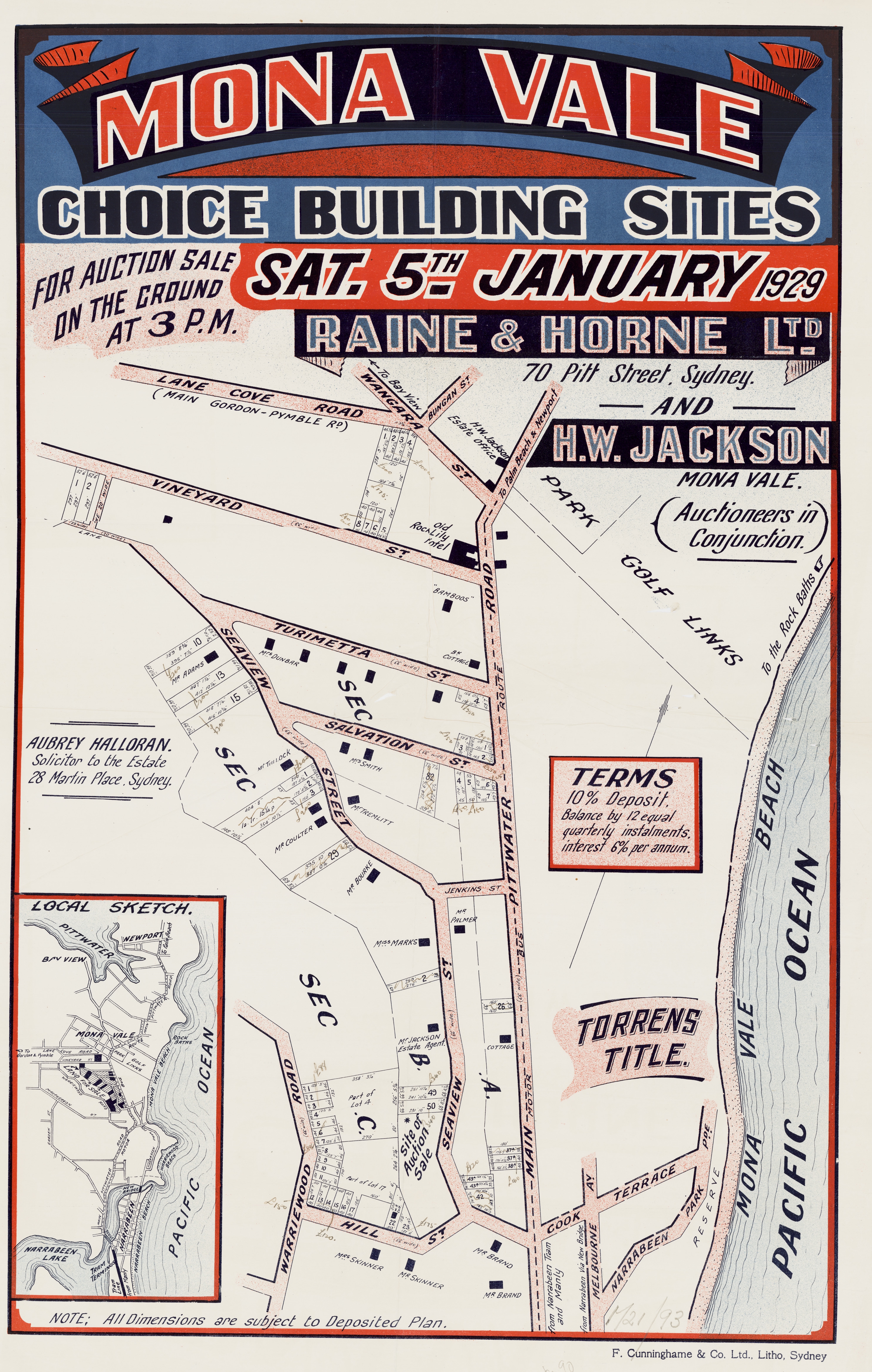
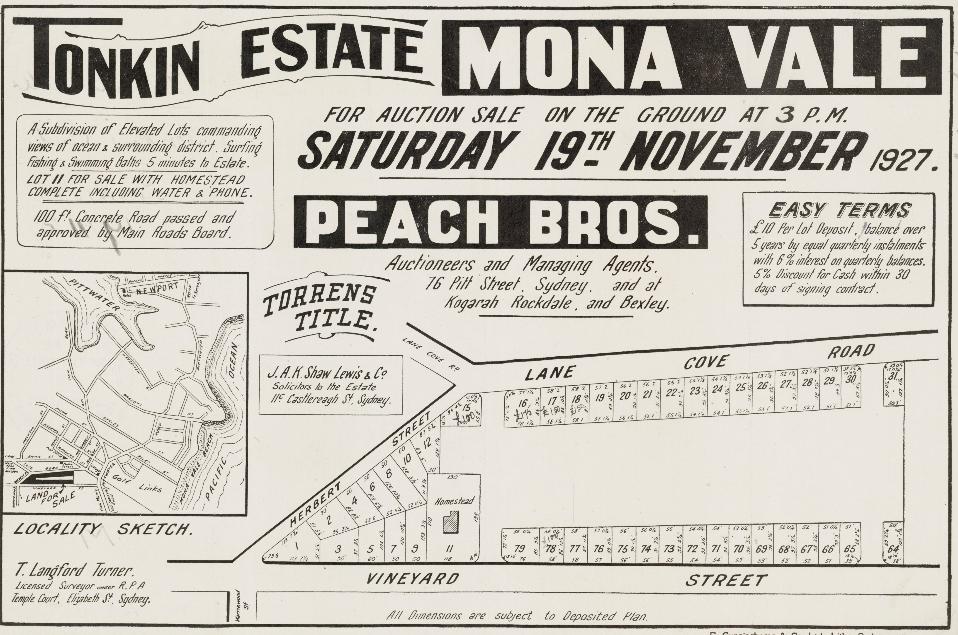
The Black Swamp Becomes A Golf Course
The land towards the sea and alongside Houreux's Rock Lily entertainment and play grounds was the area known as the black swamp.
MONA VALE LINKS EXTENDED
Mona Vale Golf Club's links have been extended across the old Black Swamp area, which has been drained and now presents a fine playing surface. The new course is among the longest nine-hole courses in Australia and play will be commenced on part of the Black Swamp area to-morrow afternoon. Mr E. A. Buttenshaw, leader of the Country Party, will drive off the first ball. MONA VALE LINKS EXTENDED (1931, September 5). The Daily Telegraph (Sydney, NSW : 1931 - 1954), p. 3. Retrieved from http://nla.gov.au/nla.news-article246716616
Another green and tee added and officially opened in 1937:
MONA VALE GOLF COURSE.
The official opening of the new course at Mona Vale will take place on September 5. The remaining two holes will then be in play extending the course to 6182 yards. The new No 7 green and No 8 tee are practically on the water's edge.
To mark the opening professionals who will be in Sydney for the open championship have been Invited to take part In an 10 holes stroke, with several of the leading Sydney professionals. Among those who have accepted Invitations to play are -Rufus Stewart, W Harvey and W Robertson of South Australia; E Naismith,A. Spence and E Wood of Victoria, M L Kell, H G von Nida, W Bolger,r F Richnrdson, F Eyre, W Thomson, Alex Thomson (the Mona Vale club professiona) and W Holder of Sydney. Pl.ay will begin at 1 30 p in following a dinner at which the visitors will be the guests of the president (Mr. W W Hill) No charge will be made to witness the play. MONA VALE GOLF COURSE. (1937, August 28). The Sydney Morning Herald (NSW : 1842 - 1954), p. 23. Retrieved from http://nla.gov.au/nla.news-article17375544
During WWII the grounds and surrounds were used as a training grounds and the locality of a camp. To stall a feared invasion by Japanese forces, a tank trap was built across the course from Turrimetta to Mona Vale heads and barbed wire entanglements erected next to the beach. The influx of defence forces to the area briefly lifted the Club’s bar sales until the clubhouse was commandeered for use as administration offices and officers’ mess for the nearby army camp.
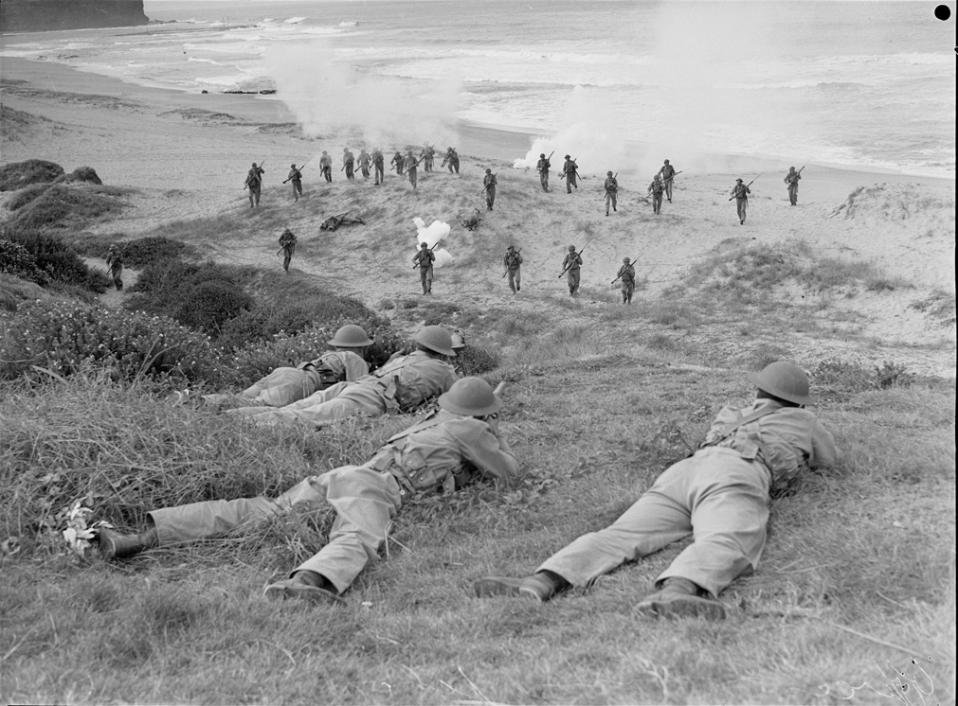
Officers training school Mona Vale, 20 June 1941 photographed by R. Donaldson, Image No.: c21276_0019_c
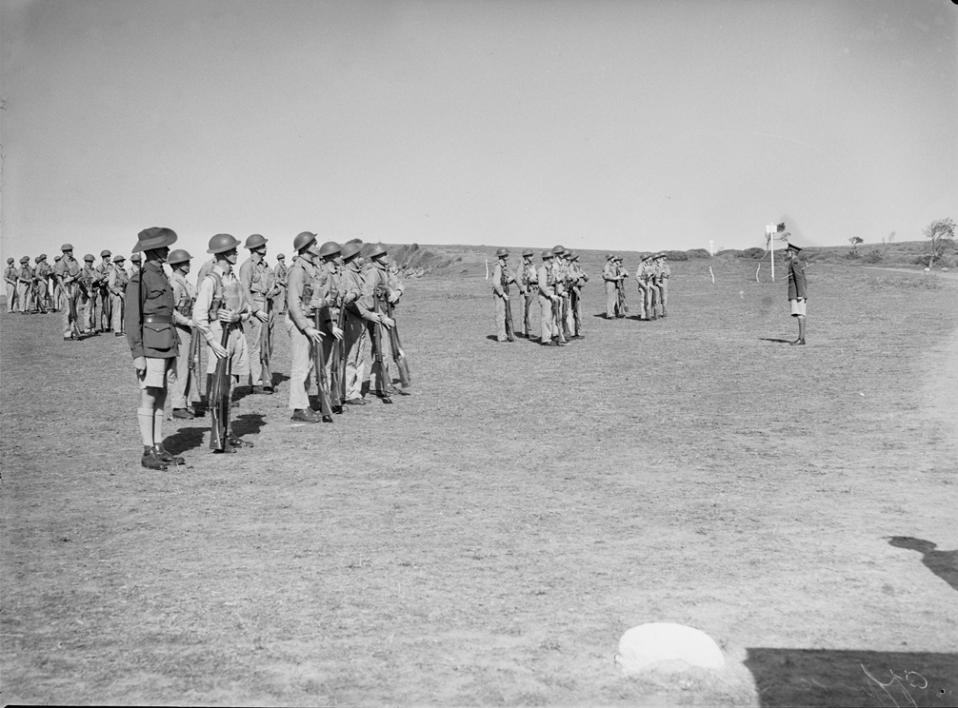
Officers training school Mona Vale, 20 June 1941 photographed by R. Donaldson, Image No.: c21276_0014_c
Mona Vale Will Reopen Course
Mona Vale golf course, which was occupied by the Army during the war, will be reopened for play on January 3.
Reconstruction of the course has cost more than £7000. It involved the removal of many tank traps and other military works. A nine-holes layout, 3109 yards in length, skirting the beach, has been constructed. Mona Vale Will Reopen Course (1948, December 17). The Daily Telegraph (Sydney, NSW : 1931 - 1954), p. 17. Retrieved from http://nla.gov.au/nla.news-article248356734
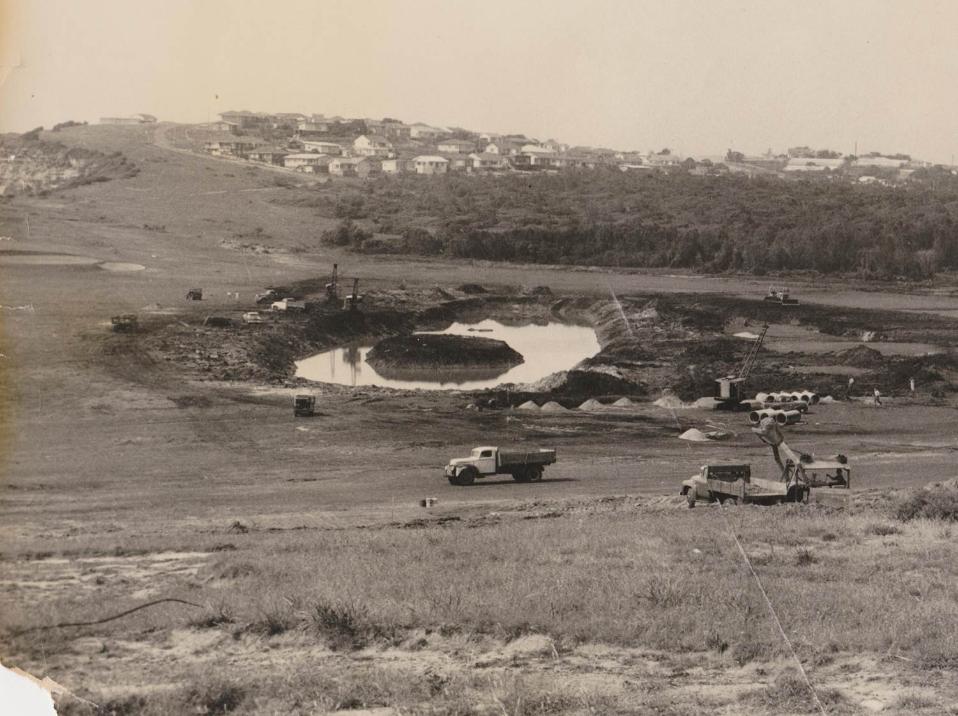
Mona Vale golf course circa 1949
A new 18-hole golf course was officially opened in August 1960. With most of the work involved having been done by club members. But the euphoria of the new 18-hole layout was soured when the clubhouse was destroyed by fire in September 1961.
Along with the clubhouse, almost all the club’s records were also destroyed. An igloo-type corrugated iron shed was obtained and used as a temporary clubhouse and, after two years of hard effort a new clubhouse was built and officially opened in November 1963. The igloo hut was removed and used as an equipment shed. Information retrieved from Mona Vale Golf Club website
The course and clubhouse are set on present day Golf Avenue, Mona Vale
Mona Vale Road And Street Name Changes And Resumptions For Roads:
SHIRE OF WARRINGAH.
Names of Roads.
IN accordance with Ordinance No. 30 (Clause 54), Local Government Act, 1919, it is hereby notified, for public information, that the Minister for Local Government has approved of the following new names for roads within the Shire, and such new names shall apply from the date of the publication of this notice:—
(a) Naming of existing un-named Roads.
Location of previously un-named roa'd and new name.
On west side of and adjoining portion 4f, PH. Narrabeen and Carefree Estate (d.p. 1,157)—Mirrool street.
Bulgola-road, Newport, running from Newport Lagoon at Ross-st., d.p. 7,424, southerly to Pacific Ocean on south side of Bungan Head (and shown on d.p's. 6,638, 7,424, *9,877, 8,764, &c.)—Myola-street. .
Bellevue-parade, Mona Vale (d.p. 8,212) —Bellevarde parade.
Beach-street, Collinwood (d.p. 6,544, in portion 47, ph. Narrabeen)—Namona-street.
R. G. JAMIESON, Shire Clerk.
Shire Hall, Brookvale,
12th October, 1927
SHIRE OF WARRINGAH. (1927, October 14). Government Gazette of the State of New South Wales (Sydney, NSW : 1901 - 2001), p. 4940. Retrieved from http://nla.gov.au/nla.news-article219955023
SHIRE OF WARRINGAH,
Names of Roads.
NOTICE is hereby given that the Council has, in accordance with the provisions of section 249 (a), Local Government Act, 1919, and of Ordinance No. 30 thereunder, and with the approval of the Minister for Works and Local Government, given the undermentioned names to the roads described hereunder:—
Situation, Old Name and New Name.
At Careel Bay, Pittwater, parish of Narrabeen—Bayview-road—Cabarita-road.
In Ocean Beach Estate, Avalon (deposited plan No. 9,151), parish of Narrabeen — Seaview-avenue— Elouera-road.
Connecting Ralston-road and Pacific-road, Palm Beach, as shown on deposited plan No. 13,780—Unnamed— Ebor-road.
In Brocks' Estate, Mona Vale, deposited plan 6,195— Rickard-road—Orana-road.
In Warriewood Estate, Warriewood (deposited plan 5,464), parish of Narrabeen—Seaview-street—Elimatta-road.
At Mona Vale, running easterly from Barrenjoey-road (Newport-road) to the Pacific Ocean—Allen-street— —Golf-avenue.
At Deewhy West, running north-easterly and northerly from the junction of Fisher-road and Lynwood-avenue along the western boundaries of portions 647, 646, 1,290, 643, 642 and 641, parish Manly Cove —Unnamed—Campbell-avenue.
At Manly Vale, parish Manly Cove, running easterly from Condamine-street to Stuart-road—Dalley-street —Koorala-street.
At South Curl Curl, parish Manly Cove, in Foamcrest Estate (deposited plan 6,260)—The Sands—Stewart avenue.
At South Curl Curl, parish Manly Cove, in Foamcrest Estate (deposited plan 6,260)—-The Waves—Travers-road.
At Manly Vale, parish Manly Cove—Osborne-road—Campbell-parade.
At Belrose, running westerly from Secondary Road No. (2,023, westerly along the southern boundaries of : portions 1,667, 1,670, parish Manly Cove—Unnamed—Everton-road.
R. G. JAMIESON, Shire Clerk.
Shire Hall, Brookvale, 26th June, 1939. SHIRE OF WARRINGAH. (1939, June 30). Government Gazette of the State of New South Wales (Sydney, NSW : 1901 - 2001), p. 3373. Retrieved from http://nla.gov.au/nla.news-article225078398
WARRINGAH SHIRE COUNCIL.—Naming and Re-naming of Streets.—Present Name and Situation and New Name:—
Stuart-road, Manly Vale—Quirk-road; Hayes-street, Deewhy —Lewis-street; Little Reef parade, Newport—Bungan Head road; Old Pittwater road, deviation of Condamine-street— Condamine-street; Condamine-street, from Campbell-parade to the intersection with the deviation just south of Kentwellroad—Sloane-crescent; Condamine-street, through District Park from opposite Kentwell-road to Pittwater-road, North Manly —Kentwell-road; unnamed road running west from Pymbleroad between portions 1.655-58 and portions 1,660-64, Belrose, parish of Manly Cove—Hews-parade; unnamed road off Pymble-road between portions 1,625-30, 1,634 and 1,639, and portions 1,651-2 and 1,640-44, Belrose, parish of Manly Cove —Ralston-avenue; unnamed road between proposed Ralston-avenue and proposed Hews-parade, Belrose—Pringle-avenue; unnamed road leading south, from Warringah-road between portion 1,245 and 262, French's Forest—Melwood-avenue; Old Powderworks road, from Garden-street to Pittwater-road, North Narrabeen—Garden-street; Kobado-road and unnamed sections of road between junction of Old Powderworks road and Kobado-road and Gordon-road, North Narrabeen—Powderworks-road; Powderworks-road, from Kobado-road to Gardenstreet, North Narrabeen—Bolwarra-road; unnamed road between portions 1,804 and 1,862 and portions 1,869, 1,805 and 1,960—Davidson-avenue; Unnamed road leading north from proposed Ralston-avenue, Belrose—Tarakan-road; unnamed road leading east and north off Allambie-road, between portions 1,725-9 and portions 1,705, 1,713-1,721, North Manly —Lilli-street; unnamed road between portions 1,249, 1,253, 118 and portions 1,259,1,262, 1,266, French's Forest—Cannon's-parade; Bungalow-road, Morella-road (north of its junction with Bungalow-road) and Scott-road, Whale Beach—Whale Beach road; Farnell-street between Gardere-avenue and Carrington-parade, South Curl Curl—Gardere-avenue; unnamed road off Samuel-street, Mona Vale, at northern boundary of lot 55, Rocklily Estate—Whitney-street. W. U. GORS, Shire Clerk, Brookvale, 17th February, 1947, 565—£1 18s. WARRINGAH SHIRE COUNCIL.—NAMING AND RE-NAMING OF STREETS.—Present Name and Situation and New Name:— (1947, February 21). Government Gazette of the State of New South Wales (Sydney, NSW : 1901 - 2001), p. 461. Retrieved from http://nla.gov.au/nla.news-article224766434
SHIRE OF WARRINGAH.—Renaming of Roads.—Ordinance 30, Clause o6} .Local Government Act.—.Notice is hereby given that the undermentioned roads have been renamed in accordance with section 249 (a) of the Local Government Act:—
Past name and new name.
Arthur-street, Brook vale—Miles-street.
Arthur-street, Frenchs Forest—Knibbs-street.
Boronia-street, Seaforth—Rignold-street.
Currie-road, Frenchs Forest—Kurrali-street.
Elvina-crescent, Scotland Island—Thompson-street.
Herbert-street, Mona Vale—Foley-street.
Oak-road, Ingleside—McLean-street.
Park-lane, Harbord—Lodge-lane.
Eyrie-street, Balgowlah—Sayers-street.
Short-road, North Curl Curl—Molong-street.
Brown-street and Gordon-street west of Brown-street, Manly Vale—Quinlan-parade.
Dunlop-avenue, Dee Why West—Prescott-avenue.
Section of road formerly known as Pymble-road and unnamed road extending south from it commencing from road known as Pymble-road opposite its junction with Prince Charles road and running southward therefrom—Prince Charles road.
J. MORGAN, Shire Clerk, Council Chambers, Brookvale.
SHIRE OF WARRINGAH.—RENAMING OF ROADS.—Ordinance (1953, August 14). Government Gazette of the State of New South Wales (Sydney, NSW : 1901 - 2001), p. 2653. Retrieved from http://nla.gov.au/nla.news-article220067748
Herbert street was named by and for Herbert Fitzpatrick, Scotland Island land owner and subdivider. H J Fitzpatrick also had land holdings at Newport and Avalon Beach
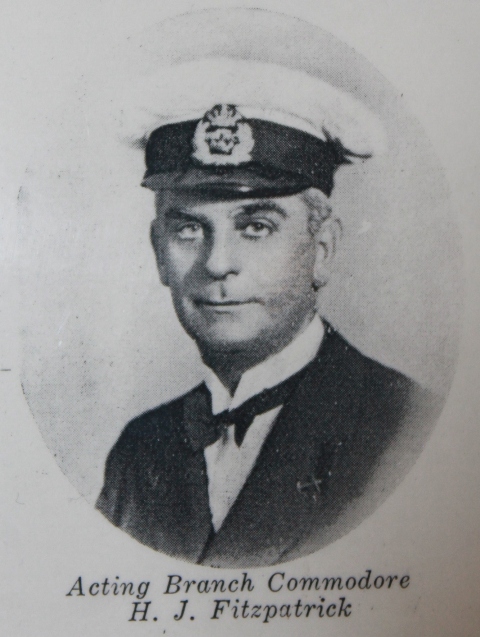
RMYC Broken Bay (at Newport) has records on this gentleman too - he was one of their early supporters, along with RPAYC
Visit: Pittwater Roads II: Where the Streets Have Your name - Scotland Island and The First Scotland Island Cup, Trophy and Race and the Gentleman who loved Elvina Bay and Pittwater Summer Houses: Rocky Point and Elvina Bay - A Place Of Holiday Songs and Operas In Ventnor, Fairhaven, Trincomalee and Maritana
Foley street, as with Foley Hill, Mona Vale, honours early settler and the man who named of 'Mona Vale Farm' David Foley, visit: The Murder of David Foley by Shelagh Champion OAM Mona Vale Outrages by George Champion OAM
The whole of Herbert (formerly Foley-street) exclusive of that part to preserve continuity of the proposed new road to Vineyard-street
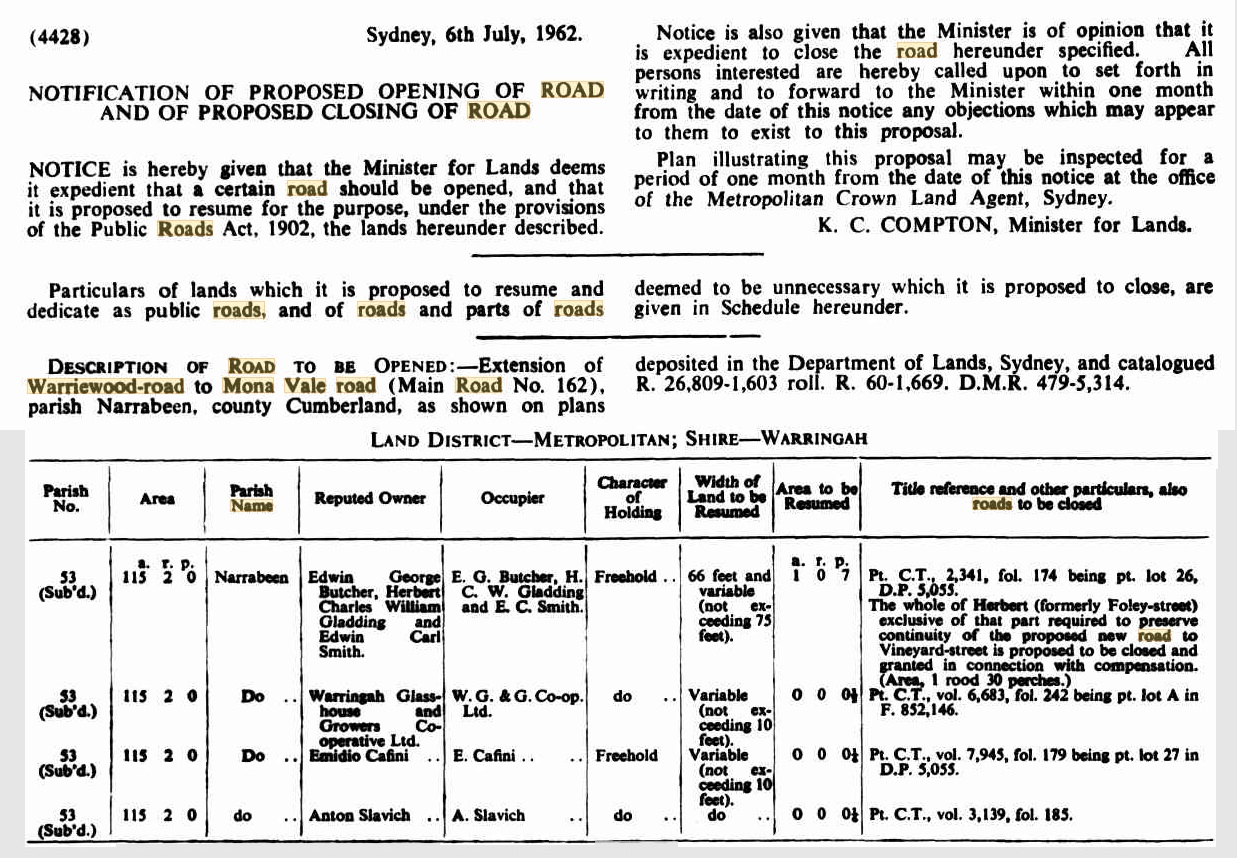
NOTIFICATION OF PROPOSED OPENING OF ROAD AND OF PROPOSED CLOSING OF ROAD (1962, July 6). Government Gazette of the State of New South Wales (Sydney, NSW : 1901 - 2001), p. 1982. Retrieved from http://nla.gov.au/nla.news-article220322622
SHIRE OF WARRING AH.—Naming of Road.—Ordinance 30, clause 53.—Local Government Act.—Notice is hereby given that the undermentioned road has been renamed in accordance with section 0/19 (a) of the Local Government Act: Past name or location: Salvation-street, Mona Vale; new name: Rowan-street, Mona Vale. J. MORGAN, Shire Clerk, Shire Hall, Brookvale, 19th March, 1963. 1928—16s. SHIRE OF WARRINGAH.—NAMING OF ROAD.—Ordinance (1963, March 29). Government Gazette of the State of New South Wales (Sydney, NSW : 1901 - 2001), p. 881. Retrieved from http://nla.gov.au/nla.news-article220330010
WARRINGAH SHIRE COUNCIL.-Renaming of Roads
Notice is hereby given that the undermentioned roads have been renamed in accordance with section 249 (a) of the Local Government Act, 1919. as amended:—Old names:
Yarrara Road (between Mona Vale Road and Larool Road); Larool Road (between Yarrara Road and Myoora Road). New name: Myoora Road, Terrey Hills. J. MORGAN,
Shire Clerk, Shire Hall, Brookvale. 832—18s. WARRINGAH SHIRE COUNCIL.—RENAMING OF ROADS.— (1965, March 12). Government Gazette of the State of New South Wales (Sydney, NSW : 1901 - 2001), p. 843. Retrieved from http://nla.gov.au/nla.news-article220357239
WARRINGAH SHIRE COUNCIL.—Re-naming of Portion of Halesmith Road. Mona Vale.—Notice is hereby given that the Council has decided to re-name Halesmith Road, between Winji Jimmi Park and Rednal Street, as "Rednal Street", in accordance with the provisions of clause 53 of Ordinance 30—Local Government Act, 1919, as amended. J. MORGAN, Shire Clerk, Shire Hall, Brookvale. WARRINGAH SHIRE COUNCIL.—RE-NAMING OF PORTION OF HALESMITH ROAD. MONA VALE.—Notice is hereby given (1965, December 10). Government Gazette of the State of New South Wales (Sydney, NSW : 1901 - 2001), p. 4154. Retrieved from http://nla.gov.au/nla.news-article220001479
WARRINGAH SHIRE COUNCIL.—Naming of Lane between Park and Waratah Streets, Mona Vale as "Akuna Lane".—Notice is hereby given that the Council, in accordance with the provisions of section 249 (a) of the Local Government Act, 1919, as amended, has named the lane between Park and Waratah Streets, Mona Vale, as "Akuna Lane". R. M. STUCKEY, Deputy Shire Clerk, Shire Hall, Brook vale. 7282—$2.40 WARRINGAH SHIRE COUNCIL.—NAMING OF LANE BETWEEN PARK AND WARATAH STREETS, MONA VALE AS "AKUNA (1970, March 26). Government Gazette of the State of New South Wales (Sydney, NSW : 1901 - 2001), p. 1075. Retrieved from http://nla.gov.au/nla.news-article220056486
WARRINGAH SHIRE COUNCIL.— Naming of Portion of Whitney Street, Mona Vale, as Siobhan Place.— Notice is Hereby given that the Council, in accordance with the provisions of section 249 of the Local Government Act, 1919, as amended, has named that section of Whitney Street, Mona Vale, within D.P. 237394 and adjoining Peita Crescent, as Siobhan Place. R. M. STUCKEY, Shire Clerk, Shire Hall, Brookvale. 8916—$2.40 WARRINGAH SHIRE COUNCIL.— NAMING OF PORTION OF WHITNEY STREET, MONA VALE, AS SIOBHAN PLACE.— (1972, April 14). Government Gazette of the State of New South Wales (Sydney, NSW : 1901 - 2001), p. 1347. Retrieved from http://nla.gov.au/nla.news-article220140278
WARRINGAH SHIRE COUNCIL.—Local Government Act, 1919 (Section 249 (a)).—Ordinance No. 30, Clause 52.—
Proposed Change of street name—Mona Vale.—Notice is hereby given that Council proposes to re-name the roadway shown hereunder:
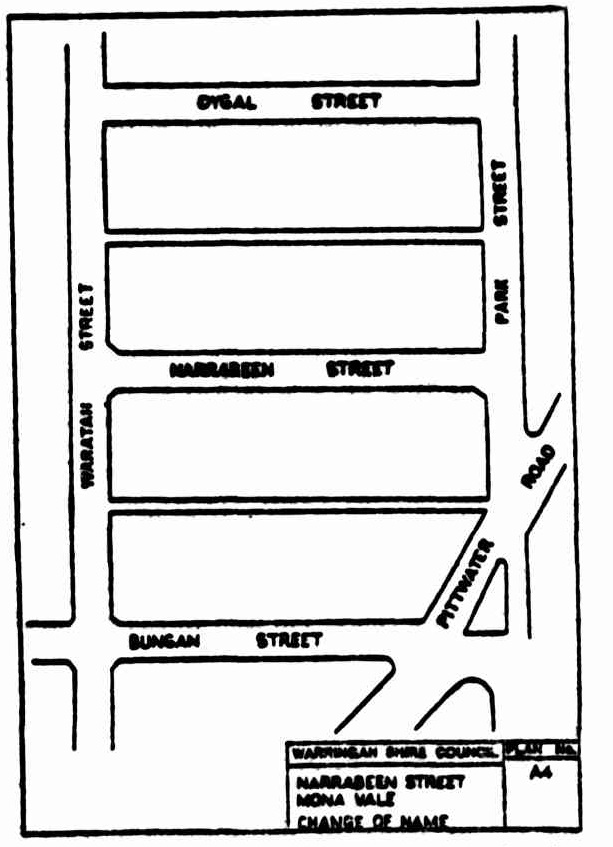
Present Name and Proposed Name Narrabeen Street, Mona Vale—Keenan Street.
Any person may Iodge with Council an objection in writing to the proposal. The time for objection will expire on 9th September, 1983. Inquiries: Please 'phone Mr J. Houston, Administration Officer (ext. 386). L. G. RIORDAN, Shire Clerk. WARRINGAH SHIRE COUNCIL.—Local Government Act, 1919 (Section 249 (a)).—Ordinance No. 30, Clause 52.— (1983, August 19). Government Gazette of the State of New South Wales (Sydney, NSW : 1901 - 2001), p. 3889. Retrieved from http://nla.gov.au/nla.news-article231378755
WARRINGAH SHIRE COUNCIL.—Naming of Road.— Notice is hereby given that the undermentioned road has been renamed m accordance with Ordinance 30, Clause 53, of the Local Government Act, 1919 (section 249 (a)).
Past Name and New Name
Narrabeen Street, Mona Vale—Keenan Street.
Authorized by resolution of Council, 28th February, 1984. L. G. RIORDAN, Shire Clerk, Civic Centre, Dee Why.
WARRINGAH SHIRE COUNCIL.—NAMING OF ROAD.—Notice is hereby given that the undermentioned road has been (1984, March 30). Government Gazette of the State of New South Wales (Sydney, NSW : 1901 - 2001), p. 1851. Retrieved from http://nla.gov.au/nla.news-article231242561
Keenan Street
Keenan Street in Mona Vale was named to honour Father John Keenan, appointed as the first Parish Priest of Sacred Heart Mona Vale on March 1st, 1960.
The first church for Catholics in Mona Vale owed its existence to the Frenchman of the Rock Lily area. A simple wooden structure, in what is now Golf Avenue, the church that Leon seemed to have funded in part or whole, indicates despite all the tales of Rock Lily being a sometimes bawdy place, where burlesque queens were quite at home, he followed what many do when they have success and money - build a small church.
A larger structure, opened in 1933, has since been demolished. As has the Anglican church (St John's the Baptist) that was built on Mona Vale headland, which was opened in 1871 and moved in 1888 to its present home on the road out to Bayview.
Of the church that Mr Houreux initiated:
NEW CHURCH AT PITTWATER. A new brick church just completed at Pitt water will be a great advantage to the district, which promises to extend very rapidly, as the land is being taken up and new buildings are in course of erection. The church will be formally opened in the course of next month and dedicated to the Sacred Heart by the Very Rev. Monsignor Verdon, of St. Patrick's Seminary, Manly. It is chiefly to exertions of Monsieur Leon Houreux, of the Rock Lily Hotel, that the Catholics of the district are indebted for the privilege of having a church where they can assist at Mass and fulfil their religious duties. As there is still a heavy debt on the building it is hoped that further contributions will be forthcoming to help the promoters of this good work. The day fixed for the opening will be duly announced. NEW CHURCH AT PITTWATER. (1889, May 4). Freeman's Journal (Sydney, NSW : 1850 - 1932), p. 16. Retrieved from http://nla.gov.au/nla.news-article115378440
It was chiefly due to Mr. Houreux as it's his land the church was built on. Another Catholic of many genrations, whoswe youngest daughter became a nun, was former Avalon- Careel Bay and by then Bayview lady Mrs. Collins, mother of Katherine Roche:
NEW CHURCH AT PITT WATER
The new Church at Pitt Water was solemnly blessed and dedicated to the Sacred Heart on Sunday last by Monsignor Verdon. This is the twelfth church within the past twelve months which has been opened in the archdiocene of Sydney. The ceremony was most imprecate, Monsignor Verdon delivering an eloquent sermon. The little church was very beautifully decorated with flags, ferns, and palms. The Misses Carton had charge of the music, and great praise is due to these ladies whose indefatigable zeal adds do much to the solemnity of the ceremonies in the Manly Church. Mass has been celebrated at Bay View in Mrs. Collins' house up to the present, and the new church will be of great advantage to the Catholic residents, who are settling in this new township. Mrs. Collins' name was prominent amongst those who contributed most generously towards the new building. To Mr. Houreux of the Rock Lily Hotel is due every praise for his great energy in promoting the undertaking under many difficulties. NEW CHURCH AT PITT WATER,. (1889, May 25). Freeman's Journal (Sydney, NSW : 1850 - 1932), p. 9. Retrieved from http://nla.gov.au/nla.news-article115382855
In the eighties, Pittwater was a place viewed at by the city folks at a long way past Manly somewhere in the bush. It is refreshing therefore to know that a new church was opened there in May by Monsignor Verdon, the first President of St. Patrick's College, Manly. The church was dedicated to the Sacred Heart. This was the twelfth church which was opened In the Archdiocese of Sydney during the twelve months.Previously Mass had been celebrated in Mrs. Collins' house at Bayview. The older generation will remember the name of Mr. Houroux, who was in charge of the Rock Lily Hotel at Bayview. The Journal mentions: 'To Mr. Horoux, of the Rock Lily Hotel, is due praise for his great energy in promoting the undertaking under many difficulties.' LOOKING BACKWARDS. (1933, September 14). Catholic Freeman's Journal (Sydney, NSW : 1932 - 1942), p. 9. Retrieved from http://nla.gov.au/nla.news-article146109579
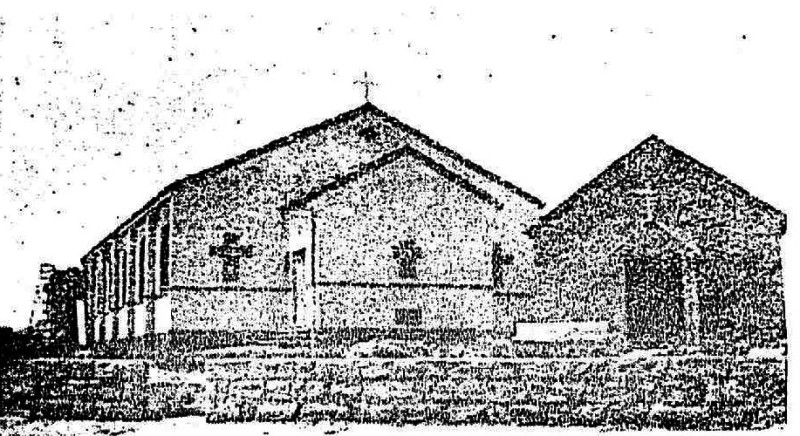
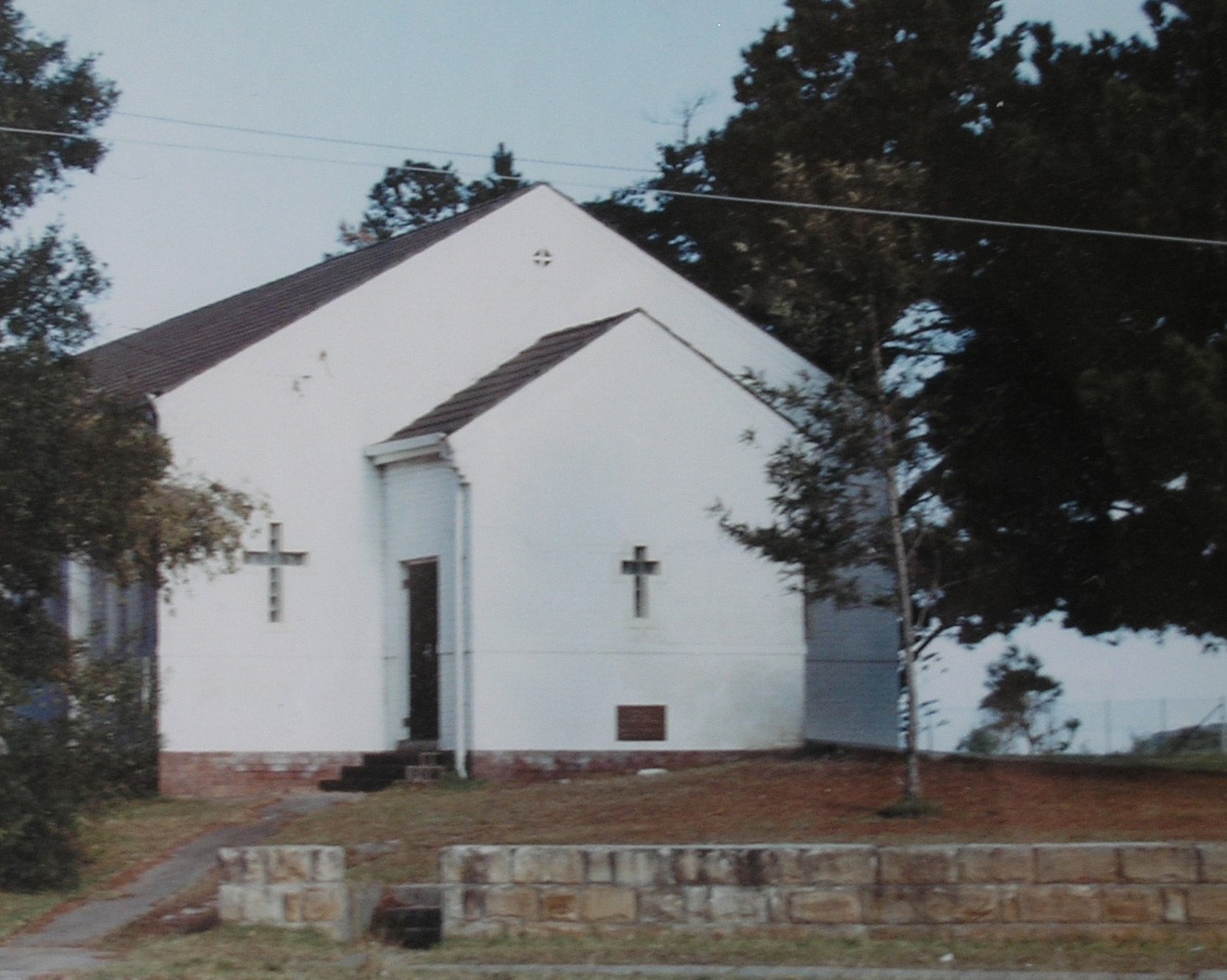
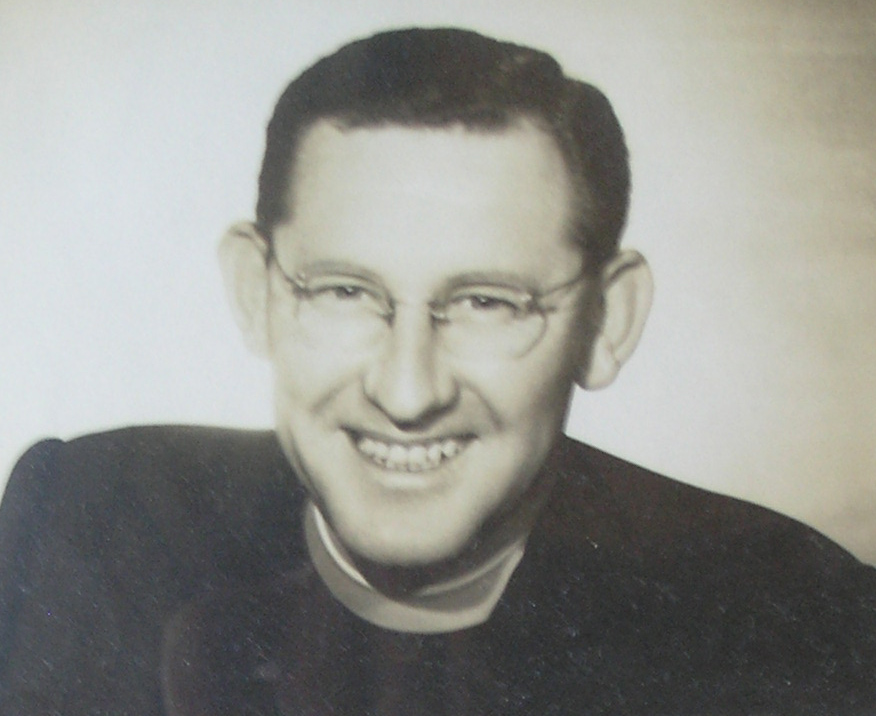
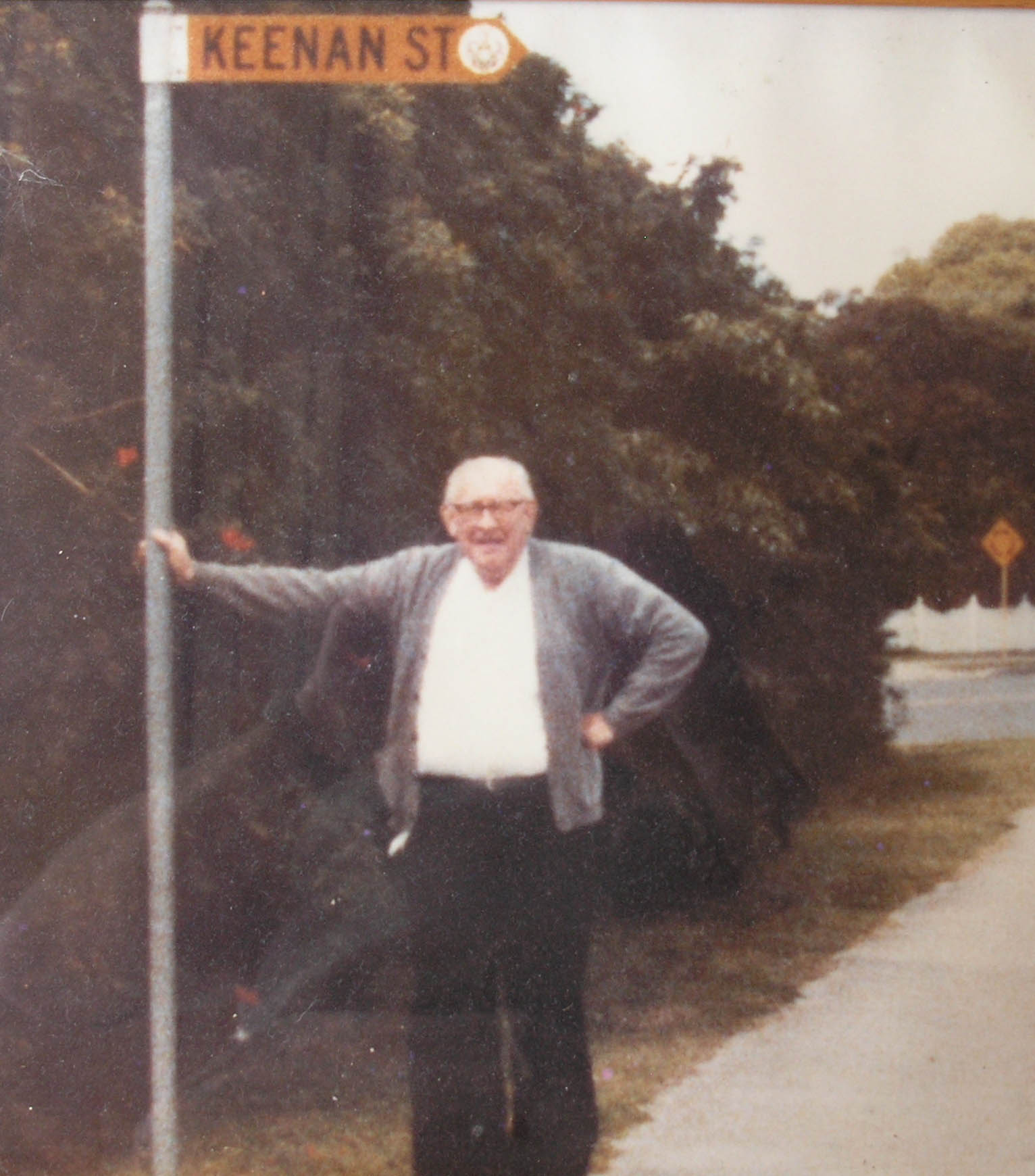
WARRINGAH SHIRE COUNCIL
Local Government Act 1919—Section 249 (a)
Naming of Road
NOTICE is hereby given that Council, in accordance with Section 249 (a) of the Local Government Act 1919 (Ordinance 30, Clause 53) has named that section of Laurel Road to the east of Mona Vale Road: Laurel Road East, Ingleside. Authorised by resolution of Council, 18th June, 1991. F. L THOMSON, General Manager, Civic Centre, Dee Why, N.S.W. 2099. WARRINGAH SHIRE COUNCIL (1991, August 9). Government Gazette of the State of New South Wales (Sydney, NSW : 1901 - 2001), p. 6695. Retrieved from http://nla.gov.au/nla.news-article231908782
WARRINGAH COUNCIL
Roads Act 1993, Section 162
Naming of Roads
NOTICE is hereby given that Council, in accordance with Section 162 of die Roads Act 1993 has named the new link road at Terrey Hills, connecting Mona Vale Road to the Booralie Road and McCarrs Creek Road roundabout: McCarrs Creek Road; and that part of the Old Mona Vale Road, west of the said roundabout has been named; Booralie Road. Authorised by resolution of Council, 8th March 1994. F. L. THOMSON, General Manager, Civic Centre, Dee Why, N.S.W. 2099. WARRINGAH COUNCIL (1994, June 3). Government Gazette of the State of New South Wales (Sydney, NSW : 1901 - 2001), p. 2686. Retrieved from http://nla.gov.au/nla.news-article231949832
Resumptions of land for Mona Vale Public School
NOTIFICATION OF RESUMPTION OF LAND UNDER
THE PUBLIC WORKS ACT, 1912.
IT is hereby notified and declared by His Excellency the Governor, acting with the advice of the Executive Council, that be much of the land hereunder described as is Crown land has been appropriated, and so much thereof as is private property has been resumed, under the Public Works Act, 1912, for the following public purpose, namely, a Public School at MONA VALE, and is vested in the Minister of Public Instruction on behalf of His Majesty the King for the purposes of the Public Instruction Act of 1880.
Dated the thirtieth day of April, one thousand nine hundred and forty-seven.
J. NORTHCOTT, Governor. By His Excellency's Command,
R. J. HEFFRON, Minister of Public Instruction.
Description of Land referred to.
All that piece or parcel of land situate in the Shire of Warringah, parish of Narrabeen, county of Cumberland and State of New South Wales, being allotment 10 of section 7 in the village of Turimetta,—having an area of 1 rood and 37h perches or thereabouts, and said to be in the possession of Thomas Dudley Leafe (administrator of the estate of Thomas Leafe, deceased).
Also, all that piece or parcel of land situate as above, being allotment 11 of section 7 in the village of Turimetta,—having an area of 1 rood and 32 perches or thereabouts, and said to be in the possession of Hugh Rusden Oilman.
Also, all that piece or parcel of land situate as above, being allotment 12 of section 7 in the village of Turimetta, and also being the land comprised in Conditional Purchase No. 44-53 (Metropolitan Land District),—having an area of 1 rood and 32 perches or thereabouts, and said to be in the possession of Rudolph Frederick William Edward Wilkinson. NOTIFICATION OF RESUMPTION OF LAND UNDER THE PUBLIC WORKS ACT, 1912. (1947, May 16). Government Gazette of the State of New South Wales (Sydney, NSW : 1901 - 2001), p. 1148. Retrieved from http://nla.gov.au/nla.news-article224768714
Land District—Metropolitan; Shire—Warringah
At Mona Vale, Village Turimetta, Parish Narrabeen, County Cumberland, closed road separating allotments 4 and 5 from allotments 9 and 10, section 4. 14 1/2 perches (added to area of 1 acre 3 roods 0| perches dedicated for Public School Site on 24th October, 1906). Plan Turimetta 5. R. 64-184. ADDITIONS TO DEDICATIONS (1967, September 15). Government Gazette of the State of New South Wales (Sydney, NSW : 1901 - 2001), p. 3397. Retrieved from http://nla.gov.au/nla.news-article220028716
Road - Land Resumptions examples
Advertising (1895, November 16). The Sydney Morning Herald (NSW : 1842 - 1954), , p. 14. Retrieved from http://nla.gov.au/nla.news-article14025169
LOCAL GOVERNMENT ACT, 1919
Warringah Shire Council: Proposed Resumption of Land at Mona Vale
HIS Excellency the Governor, with the advice of the Executive Council and in pursuance of the Local Government Act, 1919, has approved of the Warringah Shire Council's causing a notice of resumption of the land described in the Schedule hereto, together with a description of such land, to be published in the Government Gazette and in a newspaper circulating in the area in which the land is located, such land being required by the Warringah Shire Council for the purpose of widening a public road. (S. 58-2,803)
J. B. RENSHAW, Minister for Local Government. Department of Local Government, Sydney, 5th December, 1958.
Schedule
All that piece or parcel of land situate in the Shire of Warringah, parish of Narrabeen and county of Cumberland, being that part of lot 24, section B, Deposited Plan 6,195, shown in plan annexed to dealing D931,105,—having an area of perches or thereabouts, said to be in the possession of Anthony Irwin Ormsby, and shown on plan with the Department of Local Government, Sydney. LOCAL GOVERNMENT ACT, 1919 (1958, December 5). Government Gazette of the State of New South Wales (Sydney, NSW : 1901 - 2001), p. 3726. Retrieved from http://nla.gov.au/nla.news-article220266509
LOCAL GOVERNMENT ACT, 1919
Warringah Shire Council: Proposed Resumption of Land at Mona Vale
HIS Excellency the Governor, with the advice of the Executive Council and in pursuance of the Local Government Act, 1919, has approved of the Warringah Shire Council's causing a notice of resumption of the land described in the Schedule hereto, together with a description of such land, to be published in the Government Gazette and in a newspaper circulating in the area in which the land is located, such land being required by the Warringah Shire Council for the purpose of widening a public road. (S. 59-900)
J. B. RENSHAW, Minister for Local Government. Department of Local Government, Sydney, 28th October, 1959.
Schedule
All that piece or parcel of land situate in the Shire of Warringah, parish of Narrabeen and county of Cumberland, being part of lot 22, section B, deposited plan 6,195: Commencing on the north-eastern side of Bassett-street at the southwestern corner of the said lot 22; and bounded thence on the north-west by part of the north-western, boundary of that lot bearing 19 degrees 56 minutes 15 feet f- inch; on the northeast by a line bearing 96 degrees 54 minutes 51 feet 4 inches to the south-eastern boundary of the said lot 22; on the southeast by part of that boundary bearing 199 degrees 56 minutes 14 feet 8 ½ inches to the said north-eastern side, of Bassett street; and on the south-west by that side of that street bearing 276 degrees 29 minutes 30 seconds 51 feet 5 inches to the point of commencement,—having an area of 2 perches or thereabouts said to be in the possession of The Public Trustee, and shown on plan with the Department of Local Government, Sydney. LOCAL GOVERNMENT ACT, 1919 (1959, October 30). Government Gazette of the State of New South Wales (Sydney, NSW : 1901 - 2001), p. 3280. Retrieved from http://nla.gov.au/nla.news-article220308934
MAIN ROADS ACT, 1924.—PROCLAMATION
Acquisition of Land at Mona Vale in the Shire of Warringah
(l.s.) A. R. CUTLER, Governor.
I, Sir Arthur Roden Cutler, Governor of the State of New South Wales and its Dependencies, with the advice of the Executive Council and on the application of The Commissioner for Main Roads, made by virtue of the powers conferred in him by the Transport (Division of Functions) Act, 1932, do, in pursuance of the provisions of the Main Roads Act, 1924, by this my Proclamation, declare that so much of the land hereunder described as is Crown land is hereby appropriated and so much thereof as is private property is hereby resumed under the provisions of the Public Works Act, 1912, for the purposes of the Main Roads Act, 1924, and that the land hereunder described is hereby vested in The Commissioner for Main Roads; and I hereby further declare the land hereunder described to be a public road and, in accordance with a recommendation of The Commissioner for Main Roads made as aforesaid, the said land is hereby placed under the control of the Council of the Shire of Warringah.
Signed and sealed at Sydney, this 19th day of October, 1977.
By His Excellency's Command,
PETER COX, Minister for Transport and Highways.
GOD SAVE THE QUEEN!
Description of the Land Referred to Schedule
All those pieces or parcels of land situate in the Shire of Warringah, Parish of Narrabeen and County of Cumberland, being lots 1 and 2, Deposited Plan 585817, which is also numbered 0164.479.SS.0576 at the Department of Main Roads. The land is said to be in the possession of the Council of the Shire of Warringah and the Crown. (D.M.R. Papers 479.11508) MAIN ROADS ACT, 1924.—PROCLAMATION (1977, October 28).Government Gazette of the State of New South Wales (Sydney, NSW : 1901 - 2001), p. 4689. Retrieved from http://nla.gov.au/nla.news-article220125344
MAIN ROADS ACT, 1924.—PROCLAMATION
Acquisition of Land at Mona Vale in the Shire of Warringah
(l.s.) A. R. CUTLER, Governor.
I, Sir Arthur Roden Cutler, Governor of the State of New South Wales and its Dependencies, with the advice of the Executive Council and on the application of The Commissioner for Main Roads, made by virtue of the powers conferred in him by the Transport (Division of Functions) Act, 1932, do, in pursuance of the provisions of the Main Roads Act, 1924, by this my Proclamation, declare that so much of the land hereunder described in Schedules 1 and 2 as is Crown land is hereby appropriated and so much thereof as is private property is hereby resumed under the provisions of the Public Works Act, 1912, for the purposes of the Main Roads Act, 1924, and that the land described in Schedules 1 and 2 hereunder is hereby vested in The Commissioner for Main Roads; and I hereby further declare the land described in Schedule 1 hereunder to be a public road and, in accordance with a recommendation of The Commissioner for Main Roads made as aforesaid, the said land described in the said Schedule 1 is hereby placed under the control of the Council of the Shire of Warringah.
Signed and sealed at Sydney, this 2nd day of August, 1978.
By His Excellency's Command, PETER COX, Minister for Transport and Highways.
GOD SAVE THE QUEEN!
Description of the Land Referred to
Schedule 1
All those pieces or parcels of land situate in the Shire of Warringah, Parish of Narrabeen and County of Cumberland, being Lots 13 to 17 inclusive. Deposited Plan 255709, which is also numbered O164.479.SS.0577 at the Department of Main Roads. The land is said to be in the possession of the Commissioner for Main Roads, the Council of the Shire of Warringah and the Crown.
Schedule 2
All those pieces or parcels of land situate in the Shire of Warringah, Parish of Narrabeen and County of Cumberland, being Lot 10. Deposited Plan 255709 which is also numbered O164.479.SS.0577 at the Department of Main Roads. The land is said to be in the possession of the Commissioner for Main Roads, the Council of the Shire of Warringah and the Crown. MAIN ROADS ACT, 1924.—PROCLAMATION (1978, August 11).Government Gazette of the State of New South Wales (Sydney, NSW : 1901 - 2001), p. 3324. Retrieved from http://nla.gov.au/nla.news-article219957200
MAIN ROADS ACT, 1924.—PROCLAMATION
Acquisition of Land at Mona Vale in the Shire of Warringah
(L.S.) J. A. ROWLAND, Governor.
I, Air Marshal Sir James Anthony Rowland, Governor of the State of New South Wales, with the advice of the Executive Council and on the application of The Commissioner for Main Roads, made by virtue of the powers conferred in him by the Transport (Division of Functions) Act, 1932, do, in pursuance of the provisions of the Main Roads Act, 1924, by this my Proclamation, declare that so much of the land hereunder described as is Crown land is hereby appropriated and so much thereof as is private property is hereby resumed under the provisions of the Public Works Act, 1912, for the purposes of the Main Roads Act, 1924, and that the land described hereunder is hereby vested in The Commissioner for Main Roads and I hereby further declare the land hereunder described to be a public road and, in accordance with a recommendation of The Commissioner for Main Roads made as aforesaid, the said land is hereby placed under the control of the Council of the Shire of Warringah.
Signed and sealed at Sydney, this 20th day of March, 1985.
By His Excellency's Command,
L. BRERETON, Minister for Roads. GOD SAVE THE QUEEN!
Description of the Land Referred to Schedule
All that piece or parcel of land situate in the Shire of Warringah, Parish of Narrabeen and County of Cumberland, being parts of the land comprised within Certificates of Title, Register volume 12217, folio 34, volume 6139, folio 111, and volume 6139, folio 110, and shown as lot 32, Deposited Plan 708072, which is also numbered 0164.479.SS.0609 at the Department of Main Roads. The land is in the possession of The Commissioner for Main Roads. (D.M.R. Papers 479.1593) MAIN ROADS ACT, 1924.—PROCLAMATION (1985, March 29).Government Gazette of the State of New South Wales (Sydney, NSW : 1901 - 2001), p. 1426. Retrieved from http://nla.gov.au/nla.news-article231880575
Mona Vale Street Names(Some Verge Or Are In Bayview-Newport-Warriewood)
Akuna Lane
Alameda Way
Allunga Close
Arrabri Place
Awaba Place
Bangalow Avenue
Barbara Court
Baree Place
Barossa Place
Barrenjoey Road
Bassett Street
Bayview Place
Beaconia Close
Bellevarde Parade
Bergonia Street
Bertana Crescent
Boundary Street
Brinawa Street
Briony Place
Bruce Street
Buena Vista Avenue
Bundara Close
Bungan Lane
Bungan Street
By The Sea Road
Cabbage Tree Road
Carpenter Crescent
Cook Terrace
Coronation Street
Coryule Place
Crescent Road
Darley Street
Darley East Street
Darley West Street
Daydream Street
Delwood Close
Dygal Street
Edwin Ward Place
Elimatta Road
Elwyn Close
Emma Street
Eric Green Drive
Fabian Place
Fazzolari Avenue
Foley Street
Frankson Place
Garigal Place
Golf Avenue
Government Road
Grandview Parade
Gulia Street
Halesmith Road
Hallstrom Place
Harkeith Street
Harrier Place
Heath Street
Heron Place
Hill Street
Hillcrest Avenue
Horst Place
Hunter Street
Hunter North Street
Hunter South Street
Illaroo Place
Iramir Place
Isobel Close
Jabiru Close
Jeanette Avenue
Jedda Place
Jenkins Street
Jubilee Avenue
Kariboo Close
Katrina Avenue
Kay Close
Keenan Street
Kristine Place
Kunari Place
Lexia Close
Lucinda Place
Marie Crescent
Maxwell Street
Maybanke Court
Melbourne Avenue
Minmai Road
Mona Street
Mona Vale Road
Mount Pleasant Avenue
Nailon Place
Narrabeen Park Parade
Northwood Close
Old Samuel Street
Oliver Way
Orana Road
Park Street
Parkland Road
Paul Close
Peita Crescent
Perak Street
Philip Road
Pittwater Road
Polo Avenue
Ponderosa Parade
Rednal Street
Reserve Lane
Rowan Street
Sames Close
Samuel Street
Sawmill Lane
Scribbly Gum Lane
Seabeach Avenue
Sherry Street
Siobhan Place
Southbourne Way
Stanley Street
Surfview Road
Suzanne Road
Tallarook Close
Taronga Place
Tengah Crescent
Terrol Crescent
The Esplanade
The Grange
Triglone Lane
Turimetta Street
Ventura Place
Vesper Street
Vineyard Street
Walana Crescent
Wallaby Circuit
Wangara Street
Waratah Street
Warriewood Road
Waterview Street
Whipbird Circuit
Whitney Street
Wilmette Place
Yachtsmans Paradise
Yarran Close
Some More Of The People Behind The Street Names And Mona Vale Changes From Fields To Streets
Katherine Wentworth-Darley-Bassett
Katherine Wentworth was the youngest daughter by D'Arcy Wentworth's second defacto wife, Ann Lawes (some state this lady's full name was Mary Ann Lawes).
D'Arcy Wentworth, fourth son of D'Arcy, an Innkeeper, and Martha Dixon, was born on February 14th 1762[1], possibly at Seagoe, near Portadown, co. Armagh. D'Arcy enlisted in the 1st Ulster Provincial Regiment in 1782 and served until the Regiment was reduced at the end of the war "all of this time he conducted himself as became a good soldier". D'Arcy was described as "a handsome, tall man with blue eyes who was invariably popular with all classes and both sexes".
D'Arcy then studied medicine under Dr Alex Patton at Tanderagee and later went to London to pursue his medical studies. During his time in England D'Arcy made himself known to his distant "uncle", Earl Fitzwilliam. It has been said that in England he mixed with high society and lived beyond his means and became a highwayman. He was subsequently charged with a number of highway robberies but was acquitted on each occasion. The London Chronicle reported that at a committal hearing at the Bow Street Public Office on 12 November 1789 "Among the many people of fashion who attended this examination were, his Royal Highness the Duke of Cumberland, the Duke of Hamilton, Colonels Gwyn and Bishop, &c."
At his trial at the Old Bailey Sessions on 9 December 1789 D'Arcy was discharged and he immediately went to Portsmouth to join the "Neptune", a ship of the Second Fleet, which was about to sail for Sydney. The "Neptune", a vessel of 809 tons, under Master Donald Trail, sailed in company with the "Surprise" and "Scarborough" on 19 January 1790 and arrived in Sydney on 28 June 1790. There was horrendous loss of life during the voyage and Donald Trail escaped prosecution for his treatment of the convicts on the vessel by absconding. Also on the "Neptune" was Catherine Crowley, a convict, who, on 30 July 1788 at the Stafford Assizes, had been sentenced to seven years transportation for stealing a large quantity of clothing from a house in Newcastle-under-Lyme. It has been stated that Catherine had previously worked on the Fitzwilliam estate in Staffordshire and that D'Arcy had met her there earlier but this has not been confirmed.
Shortly after his arrival in Sydney D'Arcy Wentworth sailed on the "Surprise" for Norfolk Island, arriving there on 7 August 1790. Catherine Crowley arrived there on the same vessel. In the past there have been varying dates given for the birth on Norfolk Island of their first son, William Charles Wentworth, who later became a noted Australian Explorer and Statesman. A popular date shown in some publications for his birth was October 1793 but this could not have been correct as his brother D'Arcy was born on Norfolk Island on 23 June 1793. The Norfolk Island Victualling Records [p.75a] (AONSW) show that CROWLEY, William (convict child) arrived at Norfolk Island Au. 1790, departed Feb. 19, 1796. If these records are correct William Charles was born before Catherine had set foot on Norfolk Island. However, Professor John Ritchie in his Book "The Wentworths Father and Son"[2] states that in a letter to Earl Fitzwilliam dated 13 November 1811 D'Arcy gives the date of William's birth as 13 August 1790. John Ritchie also states that because of a squall the vessel was forced to shelter in Cascade Bay and while anchored there William was born. The Victualling Records show the names of the three children as CROWLEY (William, Dorset, and Matthew. Also on the Island was a convict named Sarah Dorset so it is likely that this is where the Dorset name came from). D'Arcy, Catherine, and the three children, departed Norfolk Island on 19 February 1796 for Sydney on board the "Reliance". After arrival in Sydney these children were known as William Charles, D'Arcy, and John Wentworth. In the past there was some suggestion that D'Arcy and Catherine had married on Norfolk Island and that the records had gone astray. The Crowley names of the children whilst on the Island tend to refute this and it is now generally accepted that they did not marry.
On 1 December 1796 D'Arcy took up an appointment as Assistant Surgeon at Parramatta where Catherine died on 6 January 1800.
Catherine was buried in St John's Cemetery, Parramatta, and, after D'Arcy's death on 7 July 1827, her remains were moved from a contiguous grave to D'Arcy's Vault in St John's. Also buried in the Vault is D'Arcy's son, Major D'Arcy, the first Australian born person to be commissioned in the British Army, and D'Arcy and Ann Lawes' eldest daughter, Martha (widow of John Reddall; It is not known why Martha was buried in D’Arcy’s Vault rather than with her husband in the Reddall Vault in St. Peter’s Church of England Cemetery at Campbelltown where John’s father, the Reverend Thomas Reddall was the Rector for about forty years). Unfortunately, when D’Arcy’s Vault was restored some years back the restorer confused some of the Inscription and it now shows Major D'Arcy being of the 65th Regiment instead of the 63rd Regiment, and Martha Reddall is shown as “his daughter by another mother in the 54 year of her age" when it should be 34. An earlier publication by V Goodin on St John's Cemetery shows the correct Inscription. It might also be said that there appear to be a number of errors, falsifications and omissions in the Pedigree for “Wentworths of Vaucluse” in Burke’s “Colonial Gentry” to cover up some facts that apparently it was not wished to disclose. This is so even though the Pedigree was approved by the Ulster King of Arms.
Parramatta cemeteries: St John's. Parramatta: Parramatta and District Historical Society:
Here lie the mortal Remains of
DARCY WENTWORTH ESQUIRE
Late of Home-Bush in this
Country who departed this
Life the 7th Day of July A.D.1827
in the 64 Year of his Age
Also of CATHERINE his wife
removed at the time of
his interment to this vault
from a contiguous grave
who departed this life
A.D. 1800 in the 28 year of her age
Also MARTHA REDDALL
his daughter by another mother
She departed this life the 1st of January 1847 in
the 34 year of her age
Also his second son MAJOR D'ARCY WENTWORTH
late of Her Majesty's 65th Regiment
who departed this life the 27th day
of July 1861 aged 65 years
In my Father's house are many mansions
- John 14.2
Burial register Martha Reddall Homebush 3-1-1847 34 years Darcy Wentworth. Major, Tasmania. 21-7-1861. 6.8.1861.
Sources
- wikidata
- Ritchie, John (1997). The Wentworths: Father and Son. The Miegunyah Press at Melbourne University Press. ISBN 0 522 84751 X.
- Australian Royalty
- J. J. Auchmuty, 'Wentworth, D'Arcy (1762–1827)', Australian Dictionary of Biography, National Centre of Biography, Australian National University, ,
He was the father of William Charles Wentworth, Martha Wentworth, D'Arcy Wentworth, John Wentworth, George Wentworth, Martha Wentworth, Sophia (Wentworth) Towns, Robert Charles Wentworth, Charles John Wentworth, Mary Ann Wentworth, Katherine Wentworth and Charles D'Arcy Wentworth.
Although he had these children by his 'wives' there is no record of him marrying any of them.
In the Supreme Court of New South Wales.
In the will of Ann Lawes, late of Homebush, widow, deceased.
NOTICE is hereby given, that George Wentworth, the executor appointed in and by the last will and testament of the abovenamed Ann Lawes, intends to apply to the Supreme Court, after the expiration of fourteen days, from the publication of this notice, that probate of the will of the said Ann Lawes, deceased, be granted to him,—Dated the eleventh day of December, One thousand eight hundred and forty-nine.
PARRY LONG,
Proctor for the said George Wentworth.
In the will of Ann Lawes, late of Homebush, widow, deceased. (1849, December 14). New South Wales Government Gazette (Sydney, NSW : 1832 - 1900), p. 1863. Retrieved from http://nla.gov.au/nla.news-article230393961
Benjamin Darley was a ship's Captain, later a Merchant and Magistrate who also helped found the Sydney Exchange. He was born in Dublin, Ireland in 1811 and died on June 22nd, 1864.
He married Katherine Wentworth in 1847 and the following May a daughter was born. More children would follow. Only two daughters and the son would survive to adulthood.
MARRIED—On the 8th instant, at Melbourne, by the Rev. J. Grylls, at Trinity Church, Benjamin Darley, Esq., to Katherine, youngest daughter of the late D'Arcy Wentworth, Esq. Family Notices (1847, February 24). Launceston Examiner (Tas. : 1842 - 1899), p. 4 (MORNING). Retrieved from http://nla.gov.au/nla.news-article36251392
Birth. On the 29th ultimo, at Garra, near Molong, Mrs. Benjamin Darley, of a daughter. Family Notices (1848, June 17). Bathurst Advocate (NSW : 1848 - 1849), p. 3. Retrieved from http://nla.gov.au/nla.news-article62045741
Births - NSW Births Deaths and Marriage Records (those shown) - also note death of daughter days after father's passing:
DARLEY ARTHUR S 8264/1858 V18588264 BENJAMIN KATHERINE - Arthur died in 1861
DARLEY EDITH M 4984/1856 V18564984 BENJAMIN KATHERINE
DARLEY BENJAMIN WENTWORTH 2034/1854 V18542034 40 BENJAMIN KATHERINE
The announcement (says the Empire) of the death of Captain Darley, an old and much respected colonist, yesterday forenoon, caused considerable surprise amongst the mercantile community in Sydney, as the deceased gentleman had been actively engaged as late as Saturday last with Captain Smith surveying the ship Prince Consort, when he appeared in his usual health. In the evening of that day it appears he retired early to bed, complaining of having caught a light cold. Subsequently he sent for Dr. Bennett (who had been in attendance on Mrs. Darley and one of his children for scarlet fever). The medical man saw at once that Captain Darley had caught the contagious disease. The symtoms, however, did not assume any serious aspect, and it was not until almost at the period of death that fear was entertained as to the result. About half-past eight o'clock yesterday morning, on Miss Darley going into her father's bedroom, she observed the change in his appearance, and Dr. Bennett was instantly sent for. On his arrival he observed that Captain Darley was in a fit, and Doctors Milford, Boyd, and Nathan were called in. Before these gentlemen arrived, however, Captain Darley had expired. Serous apoplexy has been pronounced as the immediate cause of death.
Captain Darley first arrived in this colony about the year 1840 in command of the Euretta (having succeeded Captain Gilmore in that appointment), and after making three or four trips in that vessel, he, in 1847, married the sister of William Charles Went worth, Esq., after which he went again to England and, returning to the colony as a passenger, settled here. On his arrival here he joined Captain Towns (who had also married a sister of Mr. Wentworth) in a station in the Wellington district and became a squatter. Subsequently he, with his brother-in-law, purchased the patent slip in Sussex-street from Messrs. Fotheringham and Palmer, and carried on business successfully for several years. Latterly Captain Darley has been generally engaged in mercantile business in the city. He was a member of the Steam Navigation Board, which he resigned, with his colleagues, at the time when a difference arose between the board and the government respecting the Sea Witch. When overtaken by death he was making arrangements to return to Dublin, his native place. He has left a widow and four children. SYDNEY SUMMARY. (1864, June 25). The Goulburn Herald and Chronicle (NSW : 1864 - 1881), p. 3. Retrieved from http://nla.gov.au/nla.news-article104608241
OBITUARY.
Death or Captain Darley. — It is with much regret that we announce the death of Mr. Benjamin Darley, which took place on Wednesday morning, at his residence, at Darlinghurst. On Saturday last, Captain Darley appeared in his usual health, and, in company with Captain Smith, valued the ship Prince Consort. During the following night, he was taken seriously ill, having, it was believed, caught scarlet fever from one of his children. The attack was not considered dangerous, and on Monday and Tuesday it was reported that he was progressing favourably, but on Wednesday morning a change tor the worse took place, and brought on a fit of serous apoplexy under which he sank, between nine and ten o'clock.
Captain Darley for several years commanded the ship Eweretta on her voyages between London and this port, and arrived in the colony to settle about seventeen years ago. After residing for truce or four years on a squatting station in the Wellington district, he purchased, in conjunction with Curtain Towne, the Patent slip in Sussex-street, an interest in which he retained until his death. Captain Darley was connected with the management of several of the large public companies in Sydney, and his death will be very widely lamented. It was his intention shortly to start with his family for England for the benefit of his health, having a few months since suffered from a severe attack of diphtheria, from the effects of which he had not entirely recovered. The deceased gentleman was related by marriage to Mr. W. C. Wentworth and to Captain Towns. OBITUARY. (1864, June 25). Sydney Mail (NSW : 1860 - 1871), p. 2. Retrieved from http://nla.gov.au/nla.news-article166654513
On the 30th June, at Clapton House, Darlinghurst, Ada Grace, aged 22 months, youngest daughter of the late Benjamin Darley, Esq. Family Notices (1864, July 1). The Sydney Morning Herald (NSW : 1842 - 1954), p. 1. Retrieved from http://nla.gov.au/nla.news-article13106232
In the Supreme Court of New South Wales.
ECCLESIASTICAL JURISDICTION.
In the will of Benjamin Darley, late of Sydney, in the Colony of New South Wales, Esquire, deceased.
NOTICE is hereby given, that at the expiration of fourteen days from the publication hereof, application will be made to the Supreme Court of New South Wales, in its Ecclesiastical Jurisdiction, that probate of. the last will and testament of the abovenamed Benjamin Darley, deceased, may be granted to Katherine Darley, Robert Towns, and Alexander Stuart, the Executrix and Executors therein named.— Dated this 18th day of July, a.d. 1864.
SPAIN & ROXBURGH,
Proctors for the said Executrix and Executors.
Exchange, Sydney. ECCLESIASTICAL JURISDICTION. (1864, July 19). New South Wales Government Gazette (Sydney, NSW : 1832 - 1900), p. 1640. Retrieved from http://nla.gov.au/nla.news-article225357215
Background to the Bassett-Darley case
Katherine's problem arose half a century earlier when D'Arcy Wentworth decided that all the real estate he bequeathed to his nine children was to be entailed. His will specified that his children were to have only a life interest in their estates, and that after their death the estates were to pass, in turn, to their children 'in order of primogeniture, males to be preferred over females'. It was D'Arcy's way of trying to ensure that all the land he had acquired remained in the family.
Since Katherine was only two when her father died, the restrictions were of no immediate concern to her, and her estates were managed on her behalf by her half-brother, William Charles Wentworth. But when, in 1847, she married Benjamin Darley, her new husband quickly took a proprietorial interest in the land. Even so, he could do nothing about the entailment, and while it was by then relatively simple to 'defeat' or 'bar' the tail in New South Wales, this could not occur until Katherine's as-yet unborn children reached the age of 21. Hence, for Darley, there would be no opportunity to free the lands for sale until at least 1868.
Benjamin died in 1864 before any of this became possible but three years later, when Katherine agreed to marry William Bassett, the time was approaching when the restrictions on the estates might be lifted. The eldest of Katherine's four children from her earlier marriage, Kate, was 19, although the youngest, Edith Mary, was still only 11. Her son, Benjamin Wentworth Darley, who was first in line to inherit his mother's estates, was 13, just eight years away from reaching his majority.
So, before her wedding and in order to make sure that her interests were protected, Katherine entered into a marriage settlement with William whereby the estates were placed in the hands of two trustees, to be administered for Katherine's 'sole and separate use' and 'free from the debts and control of her intended husband'. The trustees were George Osborne, the husband of one of Katherine's nieces, and Edwin Daintrey, a Sydney solicitor, who in 1869 was replaced by Alexander Stuart, later to become premier of New South Wales.
When the time came, each of Katherine's children took appropriate steps to bar the estate tail, thereby giving up any future rights to the estates. That left Katherine, through her trustees, in sole control and, as she received only a small income from leases, it was obvious that she would be much better off if the land were sold. But there was a problem. In drafting the marriage settlement, the lawyers had neglected to give the trustees the power of sale, and the only way to remove this impediment was through a Private Act of Parliament – hence, the need for the Bassett-Darley Estates Act of 1877.
Within weeks of the act being passed, the most valuable of the Bassett-Darley estates, that at Manly Beach, extending from The Corso to the land owned by the Catholic Church, was subdivided and offered for auction. Most of the lots were quickly snapped up and, by the end of the year, Katherine, who was then living permanently in London while her husband remained in New South Wales, had netted in excess of £35,000.
Over the next few years Katherine's other estates on the northern beaches – at Manly Vale, Freshwater, Mona Vale and Palm Beach– were sold, raising a further £20,500... Dawson, Tony, Bassett-Darley Estate, Dictionary of Sydney, 2008, http://dictionaryofsydney.org/entry/bassett_darley_estate
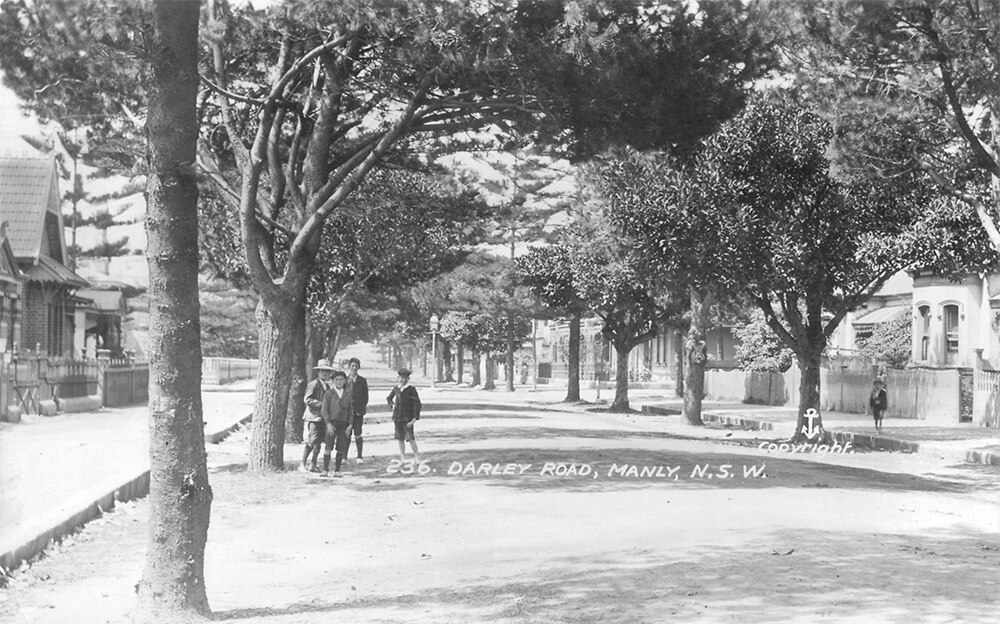
Darley Road in circa 1910s
NOTICE is hereby given, that application will be made to the Parliament of New South Wales, during the ensuing Session thereof, on behalf of Katherine Basset and .Benjamin Wentworth Darley, for leave to introduce a private Bill to vest in fee simple in George Osborne and Alexander Stuart, Esquires (the trustees of Mrs. Bassett's marriage settlement), certain lands situated at Broken Bay, North Harbour, or Manly Beach, and Duck River, in the Colony of New South Wales, devised by the will of D'Arcy Wentworth, deceased, upon trust for the said Katherine Bassett (then Katherine Wentworth, spinster), for life, with remainder to the said Benjamin Wentworth Darley in tail, to confer upon the said trustees power to sell and convey the said lands—to give receipts for purchase money—to grant building leases—to make roads and other improvements thereon—to dedicate any parts thereof for religious, educational, and charitable purposes—to declare the trusts of the proceeds of such sales or leases—also to confer upon the Baid trustees power to sell the share, life, or other interest of the said Katherine Bassett in certain lands situated in the district of Illawarra, and at Appin and Liverpool, in the said .-Colony, devised by the said testator D'Arcy Wentworth, deceased, with power to execute conveyances, give receipts, and to declare the trusts of the proceeds of such sales, and for other the purposes in the said Bill mentioned.—Dated this twenty-ninth day of September, in the year of our Lord one thousand eight hundred and seventy-six.
SLADE & SMITH,
Solicitors for the Bill,
Bridge-street Chambers, Sydney. NOTICE is hereby given, that application will be made to the Parliament of New South Wales, during the ensuing Session (1876, September 29). New South Wales Government Gazette (Sydney, NSW : 1832 - 1900), p. 3903. Retrieved from http://nla.gov.au/nla.news-article224732185
The Royal assent was announced to the last Supply Bill, passed before the adjournment, and to the Bassett-Darley Estates Bill. The Sydney Morning Herald. (1877, April 26). The Sydney Morning Herald (NSW : 1842 - 1954), p. 4. Retrieved from http://nla.gov.au/nla.news-article13393157
Department of Lands,
Sydney, 15th. November, 1878.
ERECTION OF A JETTY.
NOTICE is hereby given, that application has been made by Alexander Stuart, as trustee of the Bassett-Darley Estate, to erect a jetty on piles in front of their property at Manly Cove, as particularized in the annexed description; and all persons interested are invited to slate, within one month from this date, their objections, if any, why Mr. Stuart should not be permitted to erect such Jetty in front of the land referred to. [Ms. 78-1,917] JAMES S. FARNELL.
The Description referred to.
County of Cumberland, parish of Manly Cove, at Manly Cove : Commencing on the high-water mark of Manly Cove, fronting the Bassett-Darley Estate, at a point bearing southerly and distant 132 feet from a point where the southern side of Stuart-street meets thai high-water mark ; and bounded thence on part of the east by that high-water mark- northerly 6 feet; on the north by a line westerly about 145 feet; ogsin on the cast by a line northerly 42 feet; again on the north by a line westerly 24 feet; on the west by a line southerly 96 feet; on the south by a line easterly 24 feet; again on the east by a line northerly 42 feet; again on the south by a lino parallel with and distant 12 feet from the north boundaryline first mentioned easterly to the aforesaid high-water mark ; and again on the east by that high-water mark northerly about 6 foet, to the point of commencement.
ERECTION OF A JETTY. (1878, November 19). New South Wales Government Gazette (Sydney, NSW : 1832 - 1900), p. 4630. Retrieved from http://nla.gov.au/nla.news-article223756229
William Thomas Bassett was a farmer, stock and station agent. In November 1867 he married Katherine Darley.
February 9. -Parramatta, ship, 1521, Williams, for London Passengers-Mrs Darley, Misses Darley (3), Miss Reddard, Mrs. Francis, Miss Francis, Miss Billyard, Mr. and Mrs. Freeman, Miss Freeman, Mr. and Mrs. John Hill 3 children and servant, Mr. and Mrs Lennon, Misses Lennon (2), Masters Lennon (2), Mr and Mrs B. Blaxland, Mr. and Mrs. M'Intyre, Misses M'Intyre (3), Mrs, Rolleston and child, Rev. Mr. Young, Miss Lloyd, Dr. Newton, Mrs. Newton and 3 children, Miss Cowlishaw, Rev. John Egglestone, Mr. and Mrs. B. Palmer, Misses Palmer (4), Masters Palmer (2), Mrs. Kidd, Mr. Hook, Mr. Barker, Mr Henry Gilbert Smith, 2 children and servant, Mr. Bassett,Mr. T Cowlishaw, junior. Second cabin. Mr. and Mrs. Ball, Mr. and Mrs Baker, Masters Baker, (2), Mr. and Mrs Fuller, Misses Fuller (2), Mr and Mrs Barnett, Mr. and Mrs. Eastway, Masters Eastway (2), Miss Eastway, Messrs Miller, Yorke, and 110 in the steerage. Cargo. 3194 bales wool, 251 pigs 1367 ingots 1274 pieces 14 tons 10 cwt. copper, 29 casks tallow, 3972 bags copper ore, 10 packages sundries. DEPARTURES FOR ENGLAND. (1867, March 1). The Sydney Morning Herald (NSW : 1842 - 1954), p. 3. Retrieved from http://nla.gov.au/nla.news-article13143651
Katherine died in London on November 14th,1898; her probate was valued at £73,000, mostly derived from her father's estate.
PURSUANT to on Order of the Chancery Division of the High Court of Justice in England made in the matter of the Estate of KATHERINE BASSETT deceased and in an Action Basett v. Moore and others 1902 B. 4350 the Creditors of Katherine Bassett (wife of William Thomas Bassett) late of 38 Holland Villas-road Kensington in the County of London who died on or about the 14th day of November 1898 are on or before the 30th day of March 1905 to send by post prepaid to Messrs. Wilde Moore and Wigston of 21 College-hill London E.G. the Solicitors of the Defendants Walter Edward Moore and Arthur Fitz Henry Darley the Executors of the' deceased their Christian and surnames addressed and descriptions the full particulars of their claims a statement of their accounts and the nature of the securities (if any) held by them or in default thereof they will be peremptorily excluded from the benefit of the raid Order. Every Creditor holding any security is to produce the same before Mr. Justice Kekewich at his Chambers the Royal Courts of Justice London England on FRIDAY the 7th day of April 1905 at 12.30 o'clock in the afternoon being the time appointed for adjudicating on the claims. Dated this 2nd day of December 1904. Advertising (1905, January 7). The Daily Telegraph (Sydney, NSW : 1883 - 1930), p. 4. Retrieved from http://nla.gov.au/nla.news-article236912707
BASSETT.—December 1, at Mount Pleasant Hinton William Bassett, aged 79 years. Family Notices (1906, December 5). The Sydney Morning Herald (NSW : 1842 - 1954), p. 8. Retrieved from http://nla.gov.au/nla.news-article14808114
Another tribute to her father on his passing:
THE LATE D'ARCY WENTWORTH, ESQ.
On Monday, the remains of D'Arcy Wentworth, Esquire, were removed from his residence at Home Bush, where this much respected gentleman had breathed his last, to a vault prepared for the occasion in the Church-yard of Parramatta.
At a quarter past twelve the melancholy procession began to move off along the road leading towards Parramatta. It extended nearly a mile in length, and was composed of the relatives, most of the Magistrates resident within fifty miles of Sydney, the private friends of the deceased, and others who attended from feelings of sincere respect to his memory, and of veneration for the unbending integrity and upright independence which appeared to have guided his conduct during a long and often times trying period in this country. The coffin containing the remains of the deceased was covered with black cloth, and was borne on a hearse, drawn by four horses, until the procession reached Parramatta ; when it was carried on the shoulders of men, preceded by Doctor Redfern and four mutes, and accompanied by six pall-bearers, Messrs. Piper, Lawson, Campbell, on one side ; Harris, Brooks, and Throsby on the other ; Mr. C. Wentworth followed, as chief mourner, and a train of mourners in carriages, on horseback, and on foot, in pairs, succeeded. The head of the procession entered the Church at a few minutes to three o'clock, when the coffin was laid down in the aisle, and the Rev. Mr. Marsden read over the funeral service. It was after-wards removed and deposited in the Church-yard, in a family vault.
A plentiful and refreshing repast was prepared, by direction of the Executors, at Walker's, to which place most of the persons composing the melancholy page-ant adjourned. This highly respected gentleman was lineally descended from the unfortunate but magnanimous Earl of Strafford. The seat of the family was originally Wentworth Castle in the County of York. His ancestors accompanied William III. to Ireland, was present with that Prince at the battle of the Boyne, and afterwards fixed his residence at Trim Castle in the County of Meath, which constituted part of the family estates. Here, during the troubles of the times, he raised a regiment under a commission from the Lords Justices of Ireland. This document, it is understand, is now in the possession of his family in this Colony. By some of the ancestors of Mr. Wentworth, the hereditary estates were gradually dissipated, and his immediate progenitor stood only in the rank of a country gentleman of moderate income. The late Mr. Wentworth was born at Port-a down in the County of Armagh, in the year 1762, and at an early age held a Commission as Lieutenant of one of the regiments which were raised for the local service of Ireland near the conclusion of the American war.
He arrived in this Colony in the year 1790, and immediately received an appointment upon the medical establish-ment. At various stations he performed with ability and credit the duties of Assistant Surgeon, and upon the arrival of Governor Macquarie, in December 1809, acted as Principal Surgeon ; in which situation he was, in 1812, confirmed by his Majesty, upon the death of the Principal Surgeon, Mr. Jamison. Until the appointment and arrival in the Colony, in 1819, of Dr. Bowman, Mr. Wentworth continued to fill the office of Principal Surgeon. The following extract from the Government and General Orders of that date, will best shew the estimation in which his public services in the medical department were held :—
" On the retirement of Mr. Wentworth from a department in the various gradations of which he has served for upwards of 29 years, and in the principal situations for the last ten years, his Excellency the Governor would be doing injustice to his own feelings as well as to the merits of Mr. Went-worth, were he not to express his entire satisfaction at, and unqualified approbation of, the able, zealous, humane, and intelligent manner in which he has uniformly conducted the duties of Principal Surgeon ; and which his Excellency is happy to bear testimony were also conducted with the strictest honor and integrity. And whilst his Excellency regrets the retirement of so able and useful a medical officer, he doubts not that the numerous and humane and charitable acts which have so eminently distinguished his professional character during a long course of years will afford him a constant source of the most consolatory and gratifying reflections on every retrospect of his active and important public services."
As a medical practitioner, Mr. Wentworth was distinguished for the tenderness with which he treated his patients of every degree, and especially that class of unfortunate persons whom the charge of the General Hospital placed so extensively under his care. He was peculiarly skilful in treating the diseases of children. Early in the year 1819 Mr. Wentworth was appointed a Magistrate for the town and district of Sydney, a Commissioner of the Turnpike roads, and Treasurer of the Police Fund. At the close of the same year he was appointed Superintendent of Police in the town of Sydney, and a Magistrate of the Territory. The important duties of these several offices he continued to perform without intermission until the year 1820, when, on the 31st of March he resigned to the late W. Minchin, Esq. the situation of Superintendent of Police, and on the 3d of June that of Treasurer of the Police Fund. On each of these occasions he received the public acknowledgments of the local government in the following terms—
" In receiving Mr. Wentworth's resignation of the office of Superintendent of Police, which he has filled for nearly ten years past with equal credit to himself and benefit to the community, his Excellency feels it due to that Gentleman to express in this public manner his unqualified approbation of his steady, upright, and impartial conduct in the discharge of its arduous and important duties. "
His Excellency the Governor, in receiving the resignation of Mr. Wentworth is happy to bear this public testimony of approbation of his honorable, zealous, and punctual discharge of the important trust which has been confided to him upwards of ten years past as Treasurer of the Police Fund." Nor was this encomium confined to the local Government. The late Commissioner of Inquiry, in that part of his Report which relates to the state of the revenue, has not failed to ad-vert " to the punctuality and credit with which Mr. Went-worth acquitted himself in the discharge of his duty as Treasurer." Upon the decease of Mr. Minchin in March 1821, Mr. Wentworth was induced again to accept the joint office of Superintendent of Police and Treasurer of the Colonial Re-venue. The latter he held until the arrival of Mr. Balcombe in 1824, and the former until Captain Rossi's appointment in 1825, when he retired altogether from public life. As an able, upright, and impartial Magistrate, Mr. Went-worth's merits are too well remembered by all classes of the community to need repetition here. As a man, his manly and independent principles—his high integrity—his moderation—his urbanity—his public and private virtues—could not fail to endear him to his friends and fellow citizens, and to excite throughout the Colony the liveliest feelings of regret at his demise. It might, without great exaggeration, be said of him, as was remarked by the late Earl of Cork and Orrery of Sir Horatio Mann, Minister to the Duke of Tuscany, in 1754— " He is the only person I have ever known, whom all his countrymen agree in praising." THE LATE DARCY WENTWORTH, ESQ. (1827, July 11). The Australian (Sydney, NSW : 1824 - 1848), p. 4. Retrieved from http://nla.gov.au/nla.news-article37071433
Katherine's half-brother and son of her father:
WENTWORTH- A Great Australian
By Professor S. H. Roberts, Of the University of Sydney.
William Charles Wentworth, Australian patriot and statesman, Was born at Norfolk Island in or about the year / 793, the oldest son of D'Arcy Wentworth, surgeon to the little island community. He Was educated in England, but in 1 824 returned to Australia to reside thereafter for nearly 40 years at Vaucluse House, near Sydney. In 1862, after a life of the most varied and honourable activities in Australia, he retired permanently to England, where he died in March, 1872. His remains were brought back to Sydney, where they Were accorded a State funeral and interred in the family vault at Vaucluse.
DIFFICULT though it is for great men to resist the searching reappraisals of historians, nobody can deny that William Charles Went? worth merits tha title, 'The Father of Australia.' He towers like a Colossus over the period when Australia was changing from a convict dump into a flourishing society of freemen; and his labours in that time of painful transition have given us most of the liberties we enjoy to-day. When he started his work. I Australia was a gaol controlled by an autocrat; long before he died, it had become a self-governing democracy which was trying social and economic experiments in advance of the ideas of that time.
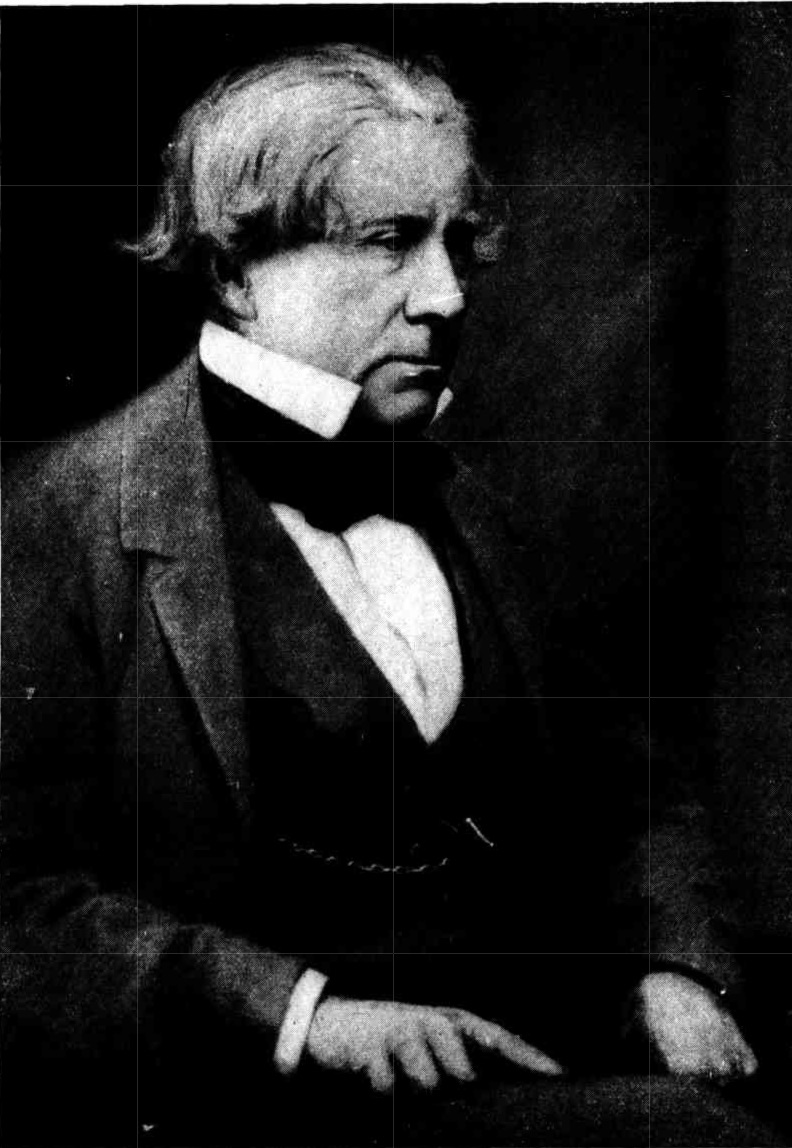
William Charles Wentworth
WENTWORTH was peculiarly Australian. Born in Norfolk Island and educated near London, he became acting provost-marshal while still a boy. Thirsting for adventure, he was one of the first party that forced a passage over the Blue Mountains in 1813, and even ranged over the Pacific seeking sandalwood. Then, after an interval of farming on the Nepean, came six years studying law at the Inner Temple and travelling on the Continent. During this period, he wrote a successful book on New South Wales, arguing that the future of Australia depended on free immigration. Thus he was largely responsible for the stream of immigration that set in during the 'thirties and that was to wash away the dominance of convictism.
He returned to Sydney in 1824, to practise in the new Supreme Court. At once he specialised on emancipist cases and took a stand against the autocratic Governors. He became, in short, the spokesman of the downtrodden and a crusader for constitutional rights. One of the first gains was in securing freedom of expression for the newspapers, a question which interested him because he had established a rival paper to the official 'Gazette' which had hitherto held the field. When Governor Darling tried to re-impose restrictions, Wentworth provoked a series of libel actions and successfully fought them. ) In the course of this struggle, I he was led to complain against | the injustice of trial by military juries, and it was owing to him that trial by jury, as we know if, was introduced to the criminal courts of Australia.
In 1831, Darling, having hindered these liberal changes, was recalled, and Wentworth, now without rival as leader of the progressives, celebrated the victory by a great fete at Vaucluse House, which he had built two years before. The whole of Sydney attended this function, which was clearly the climax of the first period of Wentworth 's public activities.
ALREADY, however, he was aiming higher. He now wanted political rights for the freemen of Australia — a system of representative government. This was more difficult, as it cut right across colonial ideas of that time, and it took him sixteen years of ceaseless struggle to obtain a really elected legislative body. In the course of this agitation he founded the Australian Patriotic Association, and at last his ideas were embodied in the Constitution Act of 1842. There was as yet no ministerial responsibility or control of accounts, but the people at least had an elected assembly. This was the turning-point in Australian history, for the day of convictism was over, and that of the William Charles Wentworth squatters and free immigrants' — the new classes who had emerged in the 'thirties — was at hand. Still Wentworth did not rest. In the vigour of his . early fifties, he fought for responsible government in the widest sense of that term. This time the campaign lasted twelve years, and Wentworth. had to fight one strong Governor and subdue another weak one, and even extend the fight to England itself, before the Act passed the Commons in 1855..
The achievement of real self-government ended Wentworth 's work. By this time he had become more conservative. He really favoured the aristocratic Whig ideas of the eighteenth century and was appalled by the uncontrolled town -democracy of the new age. A squatter and capitalist, lie believed in the leadership of the propertied classes, in the interests of the masses, and, in his later years, aroussd much opposition because he insisted that reforms could go too far.
HIS work done, he remained in England, except for *A a respite in 1861-62, and lived as a Dorsetshire squire until his death in 1872, when he was borne back for the last time to the elaborate family vault at Vaucluse. No aspect of colonial life in those forty years escaped the impress of his vigorous personality. No other Australian has so largely influenced the course of development, and we should think of Wentworth, not in terms of his later reactionary period, but in those long decades when he fought for popular rights in the face of overpowering odds. Whether we look at the legal system, the right of self-expression, or the political world, we find the influence of Wentworth; and his labours extended to the most varied fields. Thus, he originated the Lien on Wool Act which saved Australia during the great crisis of the 'forties and on many subsequent occasions, but which was opposed tooth and nail at the time because it conflicted with English law.
He founded the Sydney University and established a board of primary education. He secured rights for the squatters and brought amenities into country life. He extended the banking system of the colony and made possible the adaptation of colonial finance to the needs of the wool and gold periods. In short, he dabbled in everything, and, though often wrong, contributed something everywhere.
NO man has left a clearer impression of personal dominance on our story. Wentworth was the embodiment of the vigorous Australianism of that early formative period, and he always accentuated the 'colonial-boy' side of his character. He invariably posed as a gruff self-made autocrat — as a brutal driver, dominating any situation. He affected the bushman even in his city costume, and usually took his seat in the Council -chamber in an ill-fitting morning-jacket and soiled corduroys. Once seated, he lolled down, hands in pockets, openly contemptuous of the council and deliberately rude to his opponents.
HIS speeches were extraordinary. The force of his amazingly powerful voice could sweep his listeners off their feet and (as in the case of his great oration on self-government) reduce them to an almost gasping state of admiration. He was a whirlwind rather than an orator; but, by sheer personality and a tumultuous sublimity of expression, he would win over even the unbelievers. True, his speeches do not read well, and his oratorical methods were effective rather than pleasing. But, however much he spluttered and growled and glared, however much he stuttered and fumbled with his spectacles, the brusque force of his language and the obvious sincerity of his wider sentiments swept everything before them. Nobody accused him of delicate fineness of character; above all he was a leader at a time when restraints would have lost the cause for which he was fighting. It was a crude age and needed an egotistical fighter; and Wentworth was at his best in revealing his fighting strength, his brutal dominance, in opposition. At such moments he was a born crusader, advancing the cause of a nation. His vigorous dialectics and impassioned power of attack remained with him to the last, and, whether liberal or conservative, his voice — that sounded 'like sweet bells jangling out of tune' — could be counted upon to drive the discussion along the lines he wanted. No other politician has been such a master of men or such a dominant figure in the Assembly. For sheer mastery of character and direct leadership, a mastery becoming at times almost brutal in its directness, we should have to seek far in historical records.
FAULTS he had, of course. A man as rugged as this in his virtues had to be just as rugged in his faults. Nothing about Wentworth was on a small scale. He had his failings, but he was quite open about them, for petty concealments were quite foreign to his nature. After all, they were only the defects of his virtues. He was always a man standing against the tempest; and it matters little if the Tory of the 'sixties had a different weather-gauge from that used by the radical of the 'twenties and the statesman of the 'thirties. It is as a fighter that he stands in history. He is not only the Father of Australia, not only the author of our legal and political rights and the framer of our Constitution; he is also the expression of that constant conquest which alone explains Australian history and which transcends merely local interests and events. His dominating figure resembles one of Rodin's unfinished carvings, showing man conquering Nature, and almost bursting with an irrepressible energy. In him was concentrated the scarcely dammed vitality of some natural force; and it was fortunate for Australia that a character of such awe-inspiring power should have taken the leadership at so crucial a period of transition. The Australia that has developed to-day is the result of Wentworth 's work and in no small measure the expression of his own rugged dynamic nature.
Relics of Wentworth
.jpg?timestamp=1562914007907)
LEFT: The roof of the family mausoleum at Vaucluse House, seen through a tracery of leaves and branches.
LOWER LEFT: A Cobb and Co.'s coach of the 'fifties (in front) and (behind) another of Wentworth's period in the stables at Vaucluse House.
.jpg?timestamp=1562914162281)
BELOW: A view of the 'battle front' of Vaucluse House, with its ramparts rising above the trees and the Australian flag bravely flying on the front lawn.
.jpg?timestamp=1562914194181)
Vaucluse House The historic home of William Charles Wentworth, Vaucluse House, situated on the slopes of Vaucluse, near Watson's Bay, Sydney, is one of the finest survivals of our historic past. It was built by Wentworth in 1829, and it stands to-day in almost exactly the same state as when he was buried in the family vault near by. It has been vested in trustees and has become a place of pilgrimage to thousands, especially when the famous wisteria is in bloom. WENTWORTH, a Great Australian (1938, January 19). Sydney Mail(NSW : 1912 - 1938), p. 29. Retrieved from http://nla.gov.au/nla.news-article166228611
Frederick Caesar Hedemann
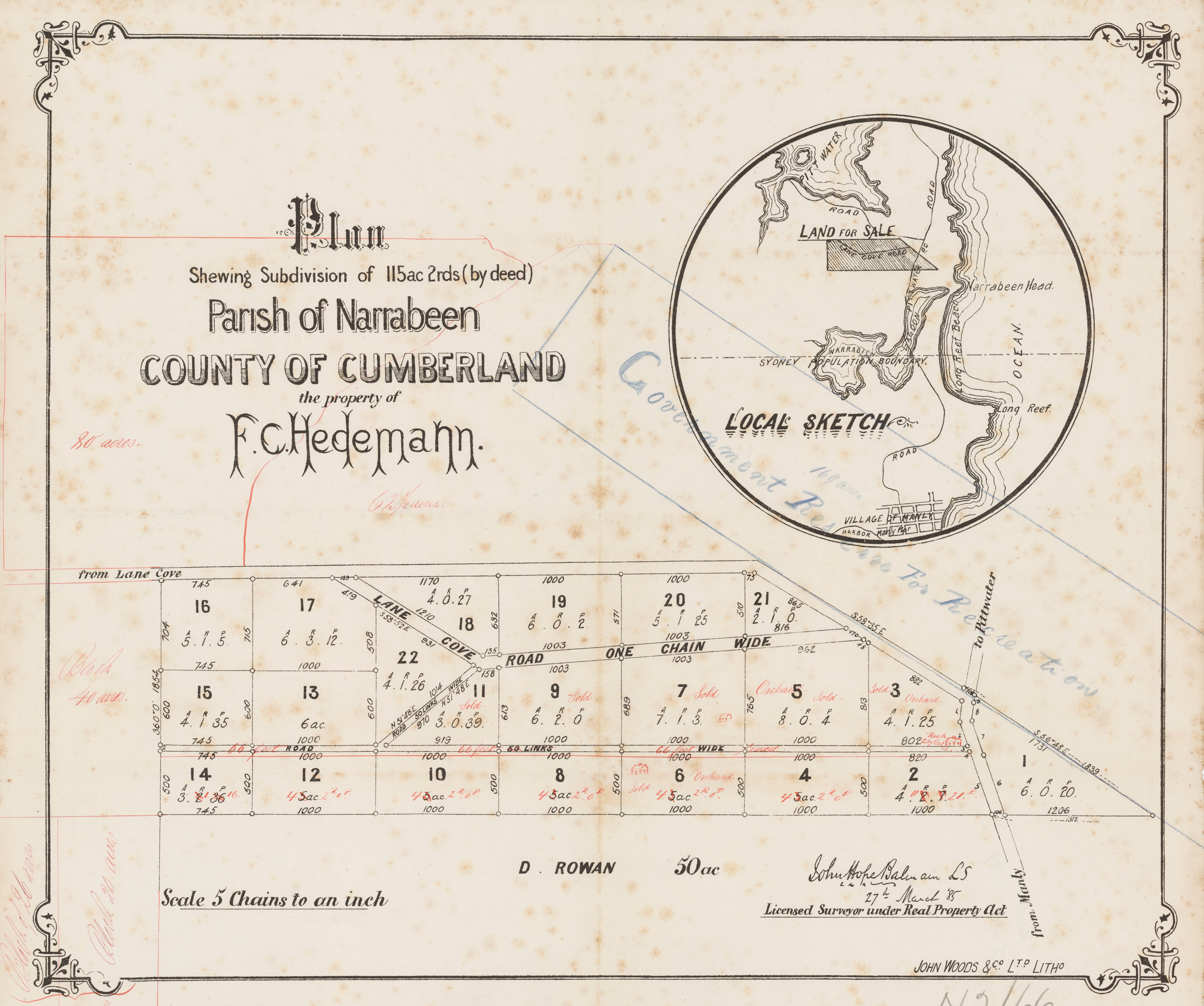
Plan shewing subdivision of 115 acres 2rds (by deed), John Hope, Balmain Surveyor, surveyed 27th of March 1885. Parish of Narrabeen - The Property of F. C. Hedemann. Item No.: c050370068
Collingwood, meaning "wood of disputed ownership" (from Middle English calenge ‘dispute’, ‘challenge’). In this instance, perhaps a reference to Thomas Collins, the owner prior to Frederick Caesar Hedemann.


Richardson & Wrench & Balmain, John Hope & John Woods & Co. (February 12th 1886). Collingwood Estate, Parish of Narrabeen, a few miles from Manly, at the corner of Pittwater Road & Lane Cove Road 30 choice blocks from 3 to 7 acres each : at the rooms Pitt St., Friday, 12th Febry. 1886, at 11.30 Retrieved from http://nla.gov.au/nla.obj-230339763 - and section from showing Herbert Street and Emma Street.
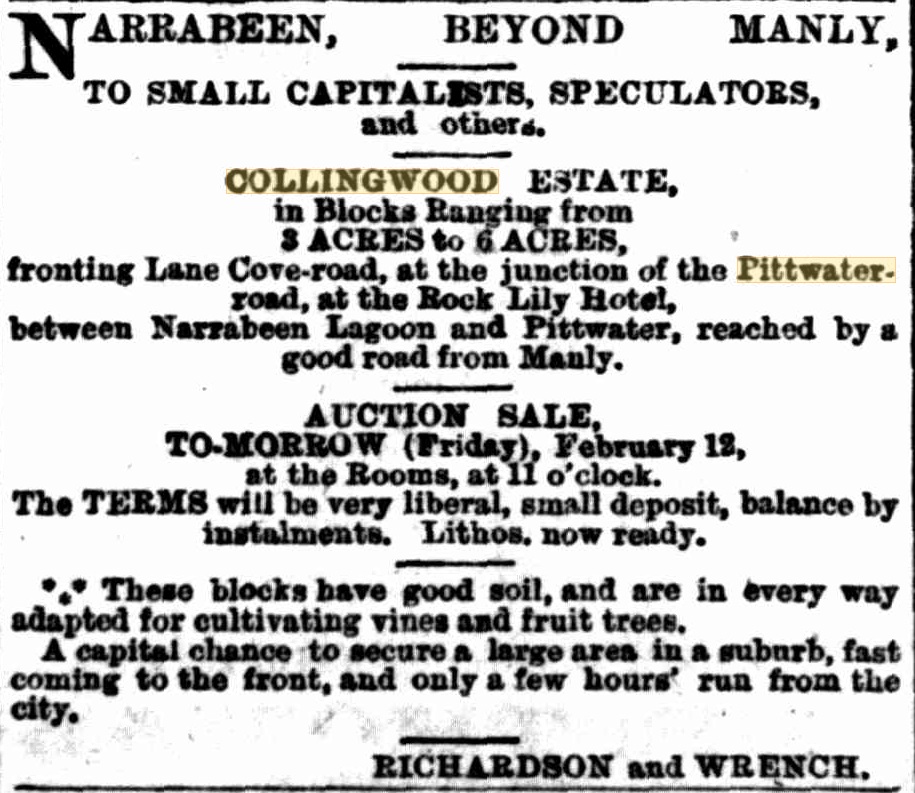
Advertising (1886, February 11). Evening News (Sydney, NSW : 1869 - 1931), p. 8. Retrieved from http://nla.gov.au/nla.news-article111184143
PROPERTY SALES.
Messrs, Hardie and Gorman report having sold by public auction and private contract, during the week, the following properties: ...Mr Phillips, block of land at Narrabeen 53a 2r in area, for the sum of £1 per acre £53 10s-Mr Inglis, Pittwater, block of land, 6a 1r 2p In area being lot 7a of villa sites in Pittwater Estate, for £60 ...PROPERTY SALES. (1886, March 20). The Sydney Morning Herald (NSW : 1842 - 1954), p. 15. Retrieved from http://nla.gov.au/nla.news-article13614719
NOTICE UNDER REAL PROPERTY ACT.
APPLICATION'S having been made to bring the lands hereunder described under the provisions of the Real Property Act, Certificates of Indefeasible Title will issue, unless Caveats be lodged in Form B of the said Act, on or before the date named opposite each case respectively.
No. 6,571. Narrabeen, 107 acres, parish Manly Cove, comprises the land granted as 100 acres to D. Moores. Applicant John Wetherill. Caveats to be lodged by May 6, 1886
NOTICE UNDER REAL PROPERTY ACT. (1886, April 2). New South Wales Government Gazette (Sydney, NSW : 1832 - 1900), p. 2418. Retrieved from http://nla.gov.au/nla.news-article227667518
Frederick Caesar Hedemann was a shipowner who imported goods from Fiji and also traded goods to and from Europe. He and his brother, Ferdinand Hugo, were merchants, with premises at 14 Bond street, in Sydney. His wife's named was Emma - which is where we get the above named street name from. The street named 'Herbert' for their third son and 'Alfred' for their second son.
.jpg?timestamp=1559536894618)
NOTICE UNDER REAL PROPERTY ACT.
APPLICATIONS having been made to bring the lands hereunder described under the provisions of the Real Property Act. Certificates of Indefeasible Title will issue, unless Caveats be lodged in Form B of the said Act, on or before the date opposite each case respectively. Diagrams delineating these lands may be inspected at the Registrar General's Office, in Elizabeth-street, Sydney.
Dated this 6th day of April. 1887, at the Registrar General's Office, Sydney.
E. G. WARD,
[2379] Registrar General.
No. 6,675, Pitt Water, 62 acres,—comprises the land granted as 60 acres to J. T. Hughes. Applicant Frederick Caesar Hedemann, Sydney. 15 June, 1887. NOTICE UNDER REAL PROPERTY ACT. (1887, April 7). New South Wales Government Gazette (Sydney, NSW : 1832 - 1900), p. 2508. Retrieved from http://nla.gov.au/nla.news-article224184871
HEDEMANN—STRAUBE.—On the 14th inst., at the German Lutheran Church, by the Rev. H. Herlitz, Frederik Casar Hedemann, of Levuka, Fiji, second son of John William Hedemann, Esq., of Hamburg, to Emma Marie Straube, youngest daughter of the late John G. Straube, Esq., of Saxony. Family Notices (1873, October 25). The Australasian (Melbourne, Vic. : 1864 - 1946), p. 25. Retrieved from http://nla.gov.au/nla.news-article137583272
Their four sons born in New South Wales:
HEDEMANN FRIEDRICH CAESAR 7276/1879 FRIEDRICH CAESAR EMMA MARIA ST GEORGE
HEDEMANN ALFRED HUGO 4637/1880 FREDERICK CEASER EMMA MARIA CONCORD
HEDEMANN HERBERT A 4976/1881 FREDERICK C EMMA M CANTERBURY
HEDEMANN ALEXANDER S 7572/1887 FREDERICK C EMMA M GLEBE
HEDEMANN.—June 12, at Toxteth-road, Glebe Point, Alexander Straube, beloved infant son of Frederick Cæsar and Emma Hedemann, aged 18 months. Family Notices (1888, June 13). The Sydney Morning Herald (NSW : 1842 - 1954), p. 1. Retrieved from http://nla.gov.au/nla.news-article28342913
This shows a German community looking after others in Sydney at that time:
SOCIAL.
Mr Henry Kendall, the well-known Australian poet, has been appointed by the Government Inspector of State Forests The appointment is a new one, and tho duties appertaining to the position will be those of a head forest ranger, or of an officer who is required to examine the condition of the natural forests of the colony, and to report upon their present state and the facilities at hand for their preservation, and for planting out forest trees in suitable places For some five or six years past Mr Kendall has been residing at Camden Haven, and during that time he has devoted himself in a singular manner to the study of this question, forming the acquaintance of timber-getters, and acquiring a thorough knowledge of forestry.
The second annual meeting of the subscribers to the Kaiser Wilhelm Spende (German Chanty) took place on Ihursday, the 12th instant, at Weber's Post Office Hotel, York-street. The president, Mr Hedemann, was in the chair. The secretary's yearly report and the treasurers Balance-sheet were received It was resolved that both documents be printed and circulated among the subscribers and friends of the society During the past year 130 cases were brought before the directors, including 83 new applications, and in nearly all cases relief was afforded. Applicants were supported with money by gift or loan, sick people were assisted with medical advice, while a great number received temporary board and lodging. The society paid for the latter for 243 days and nights during the past year The following gentlemen were elected directors for the ensuing year; Messers A Boekemann, J A Engel, H. H Groth, J. Hagen, F. C. Hedemann (president), Chas. Horn (hon secretary), Dr Krauel, O. Meyer (hon treasurer) C. H. Meurer, A Shadler, Dr. R Schuette, and E. R. Weber, as auditors --Messrs O Fein and Wiesener...SOCIAL. (1881, May 19). The Sydney Morning Herald (NSW : 1842 - 1954), p. 7. Retrieved from http://nla.gov.au/nla.news-article13474553
He still had parcels of land at Narrabeen after the above was brought under the Real Property Act:
NEXT WEDNESDAY, MARCH 0th,
AT 11.30 O'CLOCK,
AT THE ROOMS, 133 PITT-STREET.
SHARES.-Civil Service Co-operative Society.
All the OFFICIAL ASSIGNEE'S RIGHT, TITLE, and
INTEREST (If any) IN and TO LAND at
NARRABEEN. ESTATE of FREDERICK CAESAR HEDEMANN, of Westmoreland street, Forest Lodge.
... Hardie and Gorman, Auctioneers. Advertising (1907, March 4). The Sydney Morning Herald (NSW : 1842 - 1954), p. 3. Retrieved from http://nla.gov.au/nla.news-article14847949
Frederick passed away in 1919, at Mona Vale:
HEDEMANN.—August 4, 1919, at The Bamboos, Mona Vale, F. C. Hedemann, aged 76 years
HEDEMANN.—The Funeral of the late Mr. F. C. HEDEMANN, of Mona Vale, will leave our Mortuary Chapel, 810 George-street, city, THIS DAY, at 1.15 p.m., for Rookwood Cemetery. WOOD, COFFILL, and COMPANY, LTD. Family Notices (1919, August 5). The Sydney Morning Herald (NSW : 1842 - 1954), p. 5. Retrieved from http://nla.gov.au/nla.news-article15859165
Emma died in 1926, aged 76 (some records state she was 81), the death registered at Manly,. She was living in the area at the time:
HEDEMANN. - April 29 1926 at her residence The Bamboos, Pittwater road Mona Vale, Emma Marie widow of the late Frederick Ceaser Hedemann aged 81 years. Family Notices (1926, May 3). The Sydney Morning Herald (NSW : 1842 - 1954), p. 10. Retrieved from http://nla.gov.au/nla.news-article16289990
In the Supreme Court of New South Wales.
PROBATE JURISDICTION.
In the will of Emma Marie Hedemann, late of The Bamboos, Pittwater-road, Rock Lily, in the State of New South Wales, widow, deceased.
PURSUANT to the Wills, Probate and Administration Act, 1898, and the Testator's Family Maintenance and Guardianship of Infants Act, 1916: Notice is hereby given that all creditors and other persons having any debts, claims, or demands of what kind soever upon or affecting the estate of the abovenamed deceased, who died on or about the 29th day of April, 1926, and probate of whose will was granted by the Supreme Court of New South Wales, in its Probate Jurisdiction, on the 10th day of August, 1926, to the Permanent Trustee Company of New South Wales Limited, the executor named in the said will, are hereby required to send in particulars of such debts, claims and demands to the said executor, on of before the 24th day of November next, at the expiration of which time the said executor will proceed to/distribute the assets of the said deceased among the persons entitled thereto, having regard to the debts, claims and demands only of which it shall then have had notldc; and the said executor will not be liable, for the assets so distributed, to any person of whose debt, claim or demand it shall not have had notice at the time of such distribution.—Dated this 23rd day of September, 1926.
For the Permanent Trustee Company of New South Wales Limited, J. W. BARNES, Manager. Creagh and Creagh, Proctors for the Executor, Union House, 247 George-street, Sydney, and Peel Chambers, Peel-street, Tamworth. PROBATE JURISDICTION. (1926, September 24). Government Gazette of the State of New South Wales (Sydney, NSW : 1901 - 2001), p. 4048. Retrieved from http://nla.gov.au/nla.news-article222992949
Other Hedemanns' in the Mona Vale area:
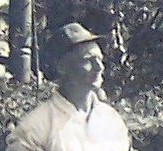 Marriage: 3426/1925 HEDEMANN EVERARD E FULLER BEATRICE PARRAMATTA
Marriage: 3426/1925 HEDEMANN EVERARD E FULLER BEATRICE PARRAMATTA
Everard was Emma and Caesar's eldest son.
HEDEMANN - August 13 1935 at her residence Waratah street Mona Vale Beatrice beloved wife of E H Hedemann. Family Notices (1935, August 14). The Sydney Morning Herald (NSW : 1842 - 1954), p. 12. Retrieved from http://nla.gov.au/nla.news-article17177433
Everard was an Accountant - he passed away in 1951, still a resident of Mona Vale:
HEDEMANN, Everard Herbert - August 23, 1951 at his residence Darley Street Mona Vale beloved father of Jill (Mrs. Westwood) aged 77 years. Family Notices (1951, August 25). The Sydney Morning Herald (NSW : 1842 - 1954), p. 44. Retrieved from http://nla.gov.au/nla.news-article18221669
Their surviving sons went to Western Australia's goldfields, taken their by their father who had launched a gold company:
The entertainment, nevertheless, embraced more things than can be dealt with in detail in this account. In the representation of the comedy "Utopia," two adults-Mr George Marshall and Mr Herbert Hedemann--helped the juveniles. The whole of the doings of the participants in the comedy were marked by genuine talent. AMUSEMENTS. (1899, September 7). Kalgoorlie Western Argus (WA : 1896 - 1916), p. 24. Retrieved from http://nla.gov.au/nla.news-article32200812
KANOWNA v. COOLGARDIE
The above association match was brought to a conclusion on the Kanowna reserve yesterday afternoon. Coolgardie, with the task of topping their opponents' score of 243 runs, began by sending' Maynard and Parsons to the wickets, aghast the trundling of Hall and Hampton. The former, although suffering from a bad leg, which necessitated the services of Alf. Hedemann as his runner, soon got going, while Coolgardie's young wicket-keeper contented himself with 'his usual Bannerman-like tactics. KANOWNA v. COQLGARDTE. (1905, February 27). Kalgoorlie Miner (WA : 1895 - 1950), p. 8. Retrieved from http://nla.gov.au/nla.news-article89129293
Alfred Hugo leaves W.A.:
LONG TENNIS CAREER
Mr. A.H. Hedemann leaving the State
An interesting connection with tennis in Western Australia over the past 38 years will be severed at the end of the month by Mr. A. H. Hedemann— one-time Australian doubles and state singles title holder— who will vacate the sub-manager ship of the Bank of Australasia to become manager of the head office of Tasmania in Launceston. In early Coolgardie days he was a well-known cricketer, footballer and lacrosse player. Latterly, a leg ailment has restricted his activities to the council table of the West Australian Lawn Tennis Association.
On leaving Sydney Grammar School Mr. Hedemann joined his father's business at Coolgardie in 1896.
'The goldfields was practically Western Australia in those days.' says Mr. Hedemann. 'Coolgardie, as the district centre of the whole of the fields, was booming. The railway had not been extended to Kalgoorlie, and it was usual to see hundreds of great teams coming in for supplies from the outlying districts. Every man spent as though he was a millionaire and sport of every description was well patronised. ' "Smiler' Hales' who afterwards wrote some fine books and became a war correspondent had a boxing booth, at the Red Bluff hotel, about a mile out of town and many wonderful fights we saw there. The Western wheel race used to be held each Boxing Day. Next to the Austral wheel race in Melbourne, the event was the biggest cash prize attraction in the world in those days. It was worth £500 and competitors came from all parts of Australia and from overseas. What with heavy betting and the prize, Floyd McFarlane, an American and his followers, won between £8,000 and. £10,000 on one race. People came from far and wide; I suppose the usual crowd was about 10,000.
Foot Running had an enormous attraction in Kalgoorlie. Rufe Naylor who is now in America with the racehorse Winooka ran all the big meetings. Once he matched Arthur Postle, one of the greatest runners Australia has ever known and Bert Day, the Briton. The race was supposed to start at 8 p.m. under electric light but the crowds pushed the fences down and it was not until two hours later that the runners left the mark:
''The Coolgardie Tennis Club had three courts and some very strong players when I first arrived. A few years later we beat a Perth team.. The Goldfields was alive with fine athletes. Coolgardie, Kalgoolie, Boulder Mines, Hannan's Staff, and Kanowna formed an association, and we played practically every form .of sport. Our Rugby was real Rugby, we played on stone studded clay and when you bit the ground you remembered the bump for weeks."
Mr. Hedemann joined the Bank of Australasia about 1898, and was transferred to Perth 10 years later. He played cricket with the old Wanderer's Club, rowed with the Bank's crews, and played tennis with the WACA pennant team until it was debarred from competition on account of possessing no courts of its own. He joined King's Park and won many events, both singles and doubles until in 1913, partnered with the late Ernest Parker, he won the doubles championship of both Australia and Western Australia. In the same year he won the metropolitan singles champion and with T. M. Coombe, the doubles. In 1919, following the Great War, he won the State singles championship and in the two following years was runner-up to Rice Gemmell. For 20 years he has lent valuable aid to the council. He is a life honorary member of the W.A.L.T-A. and his portrait hangs in the presidents gallery of the Kings Park Tennis Club.
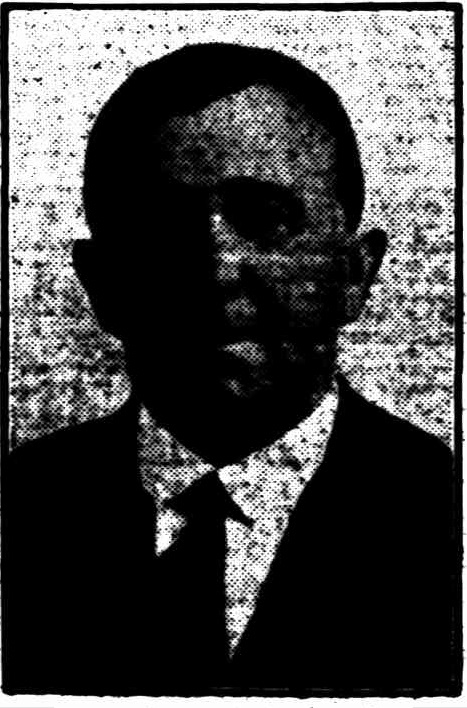
Mr. A. H. HEDEMANN.
LONG TENNIS CAREER. (1933, July 20). The West Australian (Perth, WA : 1879 - 1954), p. 11. Retrieved from http://nla.gov.au/nla.news-article33327383
In 1912 Frederick married a girl there:
A pretty wedding was solemnised at the Roman Catholic Church, Kanowna, on Tuesday, February 20, the contracting parties being Miss Lizzie Murphy, youngest daughter of Mr. and Mrs. John Murphy, and Mr. Frederick Caesar Hedemann. The Rev. Father Sheridan was the officiating clergyman. The bride, who was given away by Mr. Harry Law son, of Boulder, wore a dainty gown of cream silk marquisette, prettify trimmed with rich silk lace. The first bridesmaid, Miss Daisy Gogan, wore cream Shantung silk, trimmed with Paris guipure. Miss Myrtle Kidd wore pink Oriental satin, trimmings to match. The brother of the bride, Mr. Jack Murphy, acted as best man. The wedding breakfast was served at the | residence of the bride's parents. The happy couple left by the evening train for Comet Vale, where they intend to take up their future residence.. Ever yours, CARRIE. A LADY'S LETTER (1912, March 1). Kalgoorlie Miner (WA : 1895 - 1950), p. 2. Retrieved from http://nla.gov.au/nla.news-article91341188
Their third son, Herbert Alexander Hedemann, for whom one of these early streets was named, is known as one of Australia's great early runners. Herbert Hedemann was born on the 10th November 1881. When he showed promise as a distance runner, the professional ranks must have attracted him. His close contemporary Arthur Postle, the famous Australian professional sprinter made his impact on the running scene, some five years earlier than Hedemann, and Jack Donaldson. another famous professional sprinter, who was five years younger, also was competing internationally by 1909.
It is possible that for family reasons Herb Hedemann delayed his move in the professional rankings until he was nearly 30 years old. However when he finally did so, he became recognised as one of the greatest Australian distance runners. He recorded a feat which has still to be beaten - winning the Federation Mile and Grampians Two Miles in the one day at the 1912 and 1913 Easter Gift meetings.
In 1913 Hedemann won the Federation Handicap mile event at Stawell, second was Charles E Bergmeier. Professional sprinter Jack Donaldson described the then desperate situation in Australian professional athletics, 'With matches as scarce as hens' teeth and handicaps almost hopeless’. After the Stawell race Hedemann and Bergmeier decided to seek their fortunes on the more flourishing and therefore more attractive British professional running circuit. He then went to South Africa:
HERBERT HEDEMANNS RECORD TIME FOR THE MILE AT JOHANNESBURG
There was' a large'.crowd at the Johannesburg Stadium on the night of June 1, when the big night's sport was presented to the patrons of the club. The' 'Evening Chronicle' reports that a £50 whippet handicap was decided, and, in addition. Herb Hedemann, the holder; of the mile worlds championship met H. Wilson, the Transvaal professional 'champion;in a mile match, conceding 25sec start: : ' The pedestrian event was put on at about 9.48. Very little time was cut to waste in preliminaries. Mr; P. O'Connell fired the gun and Mr. Dave Mackay acted as judge, -whilst Messrs. W. T. and N. T. Seccombe held the official watches. Wilson moved off first and, making good use of his liberal allowance, was a good 170yds in front before Hedemann got the signal to move, a second gun being fired, so as to give private watchholders a chance to clock the champion.
The Australian, who moved in perfect style with long and sweeping strides, sped over the ground with a free and easy action, and early in the race it was apparent that he would bridge the gap, but the thought that was agitating the minds of most people was, 'would Wilson pace him fast enough to enable him to get inside 4min 30secs' a feat which had never hitherto been performed in the Transvaal. Wilson plugged along in good style, but with two laps to go a gap of only 15yds separated the two, and the champion was on the leader's heels when the bell rang. Three long strides at the first bend settled the issue, and half-way down the back stretch the Australian was 5yds in front, striding along at an easy pace. Wilson hung on, and Hedemann was content to win by about 5yds. Both the official watches recorded 4min 27 4-5sec, and when the figures were hoisted, the winner was given a round of applause. He had accomplished the seemingly impossible and on a 65 lap track. Hedemann will go a long way before he gets beaten, provided that he does not reach the sere and yellow stage before he gets another match. HERBERT HEDEMANN'S RECORD TIME FOR THE MILE AT JOHANNESBURG (1914, July 8). Referee (Sydney, NSW : 1886 - 1939), p. 7. Retrieved from http://nla.gov.au/nla.news-article120280882
He stayed in South Africa and then left late in 1925 for Britian, landing in the United States, where he had decided to emigrate, in 1926. Hedemann settled in New York and soon married a widow with children. Now 45 years old, he had decided to put down roots at last bu supporting his new family was not to be easy. There was no professional running scene in the United States at this time.
By early 1928 Herbert Hedemann was broke and he and his wife and five children were reduced to living in one room but possible salvation was at hand. In late 1927 the promoter C.C. Pyle had come up with the idea of an annual Trans-America footrace, using the newly completed Route 66 from Los Angeles to Chicago and then onward to New York. The entry fee was $25 with food and lodging provided by Pyle. The 1928 Trans-Continental race offered Herbert Hedemann a lifeline, a chance to re-join the professional running scene once more, and perhaps even a way out of poverty.
The 1928 race was said by its promoter to be the first of an annual series of races across America, like the famous French Paris-Strasbourg walk and the Tour de France cycle race. Hedemann, out of condition after at least ten years away from the professional circuit, was to use the first race as preparation and experience for the future events. Unlike his fellow Australian, Mike McNamara, Hedemann managed to complete the race, reputedly finishing 38th. The promoter of the race, C C Pyle was not able to come up with the prize money but another promoter, Tex Rickard and the Californian millionaire father of one of the finishers, ensured the money was paid.
Many of the veterans of the 1928 race decided to provide their own handlers for the 1929 race, and invested their prize money in a vehicle for a handler. Hedemann and his fellow countryman, McNamara, pooled their capital and built their own motorised caravan. As Pete Guvuzzi, one of the strongest runners in both races, often remarked, “The first race was an amateur event. The second was professional.”
Hedemann was a very different competitor in the 1929 race, placing 6th, 7th, 2nd in the first three stages. Hedemann would have taken the overall lead on the fourth day if he had not been misdirected off course and lost 40 minutes.
On Day 5 in the 37 miles stage from Wilmington to Havre de Grace Hedemann was locked in battle with the much younger Paul Simpson. For 30 miles they matched strides until eventually Simpson was forced to slow to a walk. The bearded Hedemann won in 4:44:45, and moved into the lead on cumulative time. However his early push had been premature, and other more cautious and prudent runners now began to come into their own. On the sixth day stage, Hedemann dropped to 18th, and within five days was down to 10th place on the elapsed time.
At the end of the epic race of 3,635 miles/5850 km which had lasted 79 days, the two Australians were separated by just three hours, McNamara with a time of 627:45:28 in 7th and Hedemann in 8th with 631:23:48. Many of the runners had lost up to fourteen pounds/6.5kg in weight. They should have been well rewarded for all their efforts – with McNamara receiving $2000 and Hedemann $1750. Instead they were offered worthless cheques. Pyle had run out of money.
What happened to Herbert Hedemann afterwards is largely unknown. By the 1940s he was living in East 53rd Street, New York and working for the largest Real Estate broker in Manhattan, Douglas Elliman & Co and worked from the Park Avenue office. (Elliman was a long established company, founded in 1911.) There had been a massive improvement in Hedemann’s financial situation.
With the attack on Pearl Harbour, and the threat to his Australian homeland, Hedemann was determined to do his bit, and joined the equivalent of the Home Guard at the age of 60. On his eventual retirement, he relocated to Los Angeles in California
According to the Stawell Athletic Club, he was a regular visitor to the Stawell Easter gift at least up to the mid sixties, travelling from the USA. At that time, he would have been in his eighties, so he obviously was still active into his old age, with the funds to pay for frequent trans-Pacific trips.
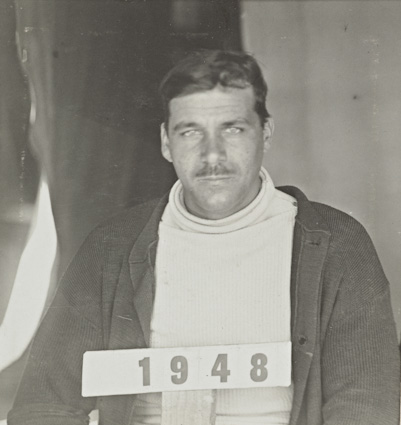
Herbert Hedemann - 1948, courtesy Australian National Archives
Herbert Hedemann died on September 22nd 1976 in Los Angeles, California, in his mid nineties. He was the longest lived of the Pyle runners, although his greatest opponent from the 1929 race, much younger Harry Abramowitz, was still around in 1985.
In 1958 the Stawell Athletic Club named their annual Mile competition, the 'Herb Hedemann Mile', and the event has been won by several distinguished professional runners since. It is a fitting memorial for one of Australia’s great distance runners, but ironically perhaps his greatest performance, racing across America, is largely forgotten. [3].
Herbert lost his tribute street in the 1950's:
SHIRE OF WARRINGAH.—Renaming of Roads.—Ordinance
30, Clause o6} .Local Government Act.—.Notice is hereby given that the undermentioned roads have been renamed in accordance with section 249 (a) of the Local Government Act:—
Past name and new name. Arthur-street, Brook vale—Miles-street.
Arthur-street, Frenchs Forest—Knibbs-street.
Boronia-street, Seaforth—Rignold-street.
Currie-road, Frenchs Forest—Kurrali-street.
Elvina-crescent, Scotland Island—Thompson-street.
Herbert-street, Mona Yale—Foley-street.
Oak-road, Ingleside—McLean-street.
Park-lane, Harbord—Lodge-lane.
Eyrie-street, Balgowlah—Sayers-street.
Short-road, North Curl Curl—Molong-street.
Brown-street and Gordon-street west of Brown-street, Manly Vale—Quinlan-parade.
Dunlop-avenue, Bee Why West—Prescott-avenue.
Section of road formerly known as Pymble-road and .unnamed road extending south from it commencing from road known as Pymble-road opposite its junction with Prince Charles road and running southward therefrom—Prince Charles road.
J. MORGAN, Shire Clerk, Council Chambers, Brookvale.
2448—£1 16s. SHIRE OF WARRINGAH.—RENAMING OF ROADS.—Ordinance (1953, August 14). Government Gazette of the State of New South Wales (Sydney, NSW : 1901 - 2001), p. 2653. Retrieved from http://nla.gov.au/nla.news-article220067748
Wow! I found this news site by accident and have just read my great-grandfather’s story in your History section. He was Friedrich Caesar Hedemann (known as Caesar). What a nice surprise.Many thanks.I have a few photos of the house at Mona Vale and of Caesar, Emma and their eldest son Everard. They’re not great quality, but they’re all I have. I cropped the photos to get images of their faces as I hadn’t seen any of them before.Caesar was an interesting man. He was born in Germany, started as a merchant in Fiji, then moved to Sydney (his brother Ferdinand didn’t come to Australia), then went to Kalgoorlie to start again after going bankrupt in the 1893 financial crash. He was an old man when he moved back to Mona Vale and lived at The Bamboos.
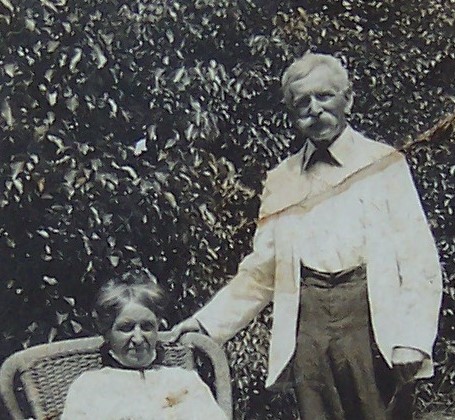
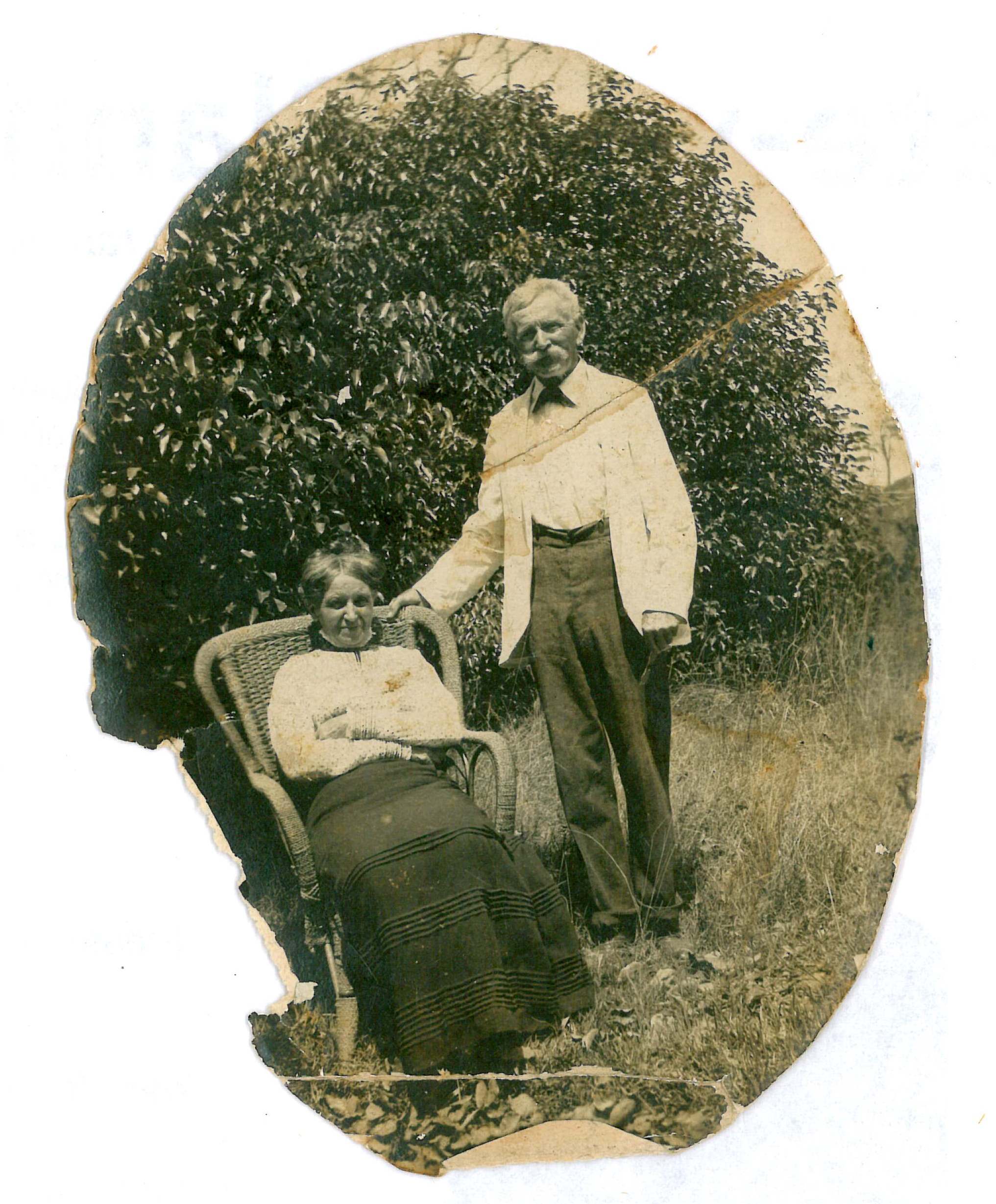
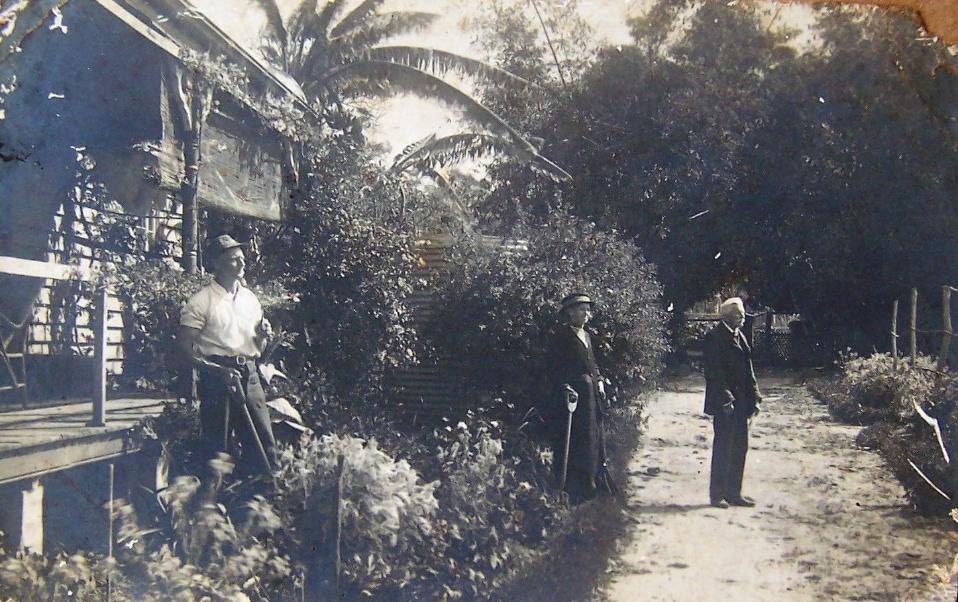
Ev (Everard), Mater and Pater at Mona Vale - 'The Bamboos', photo courtesy Catherine Quinn (nee Hedemann).
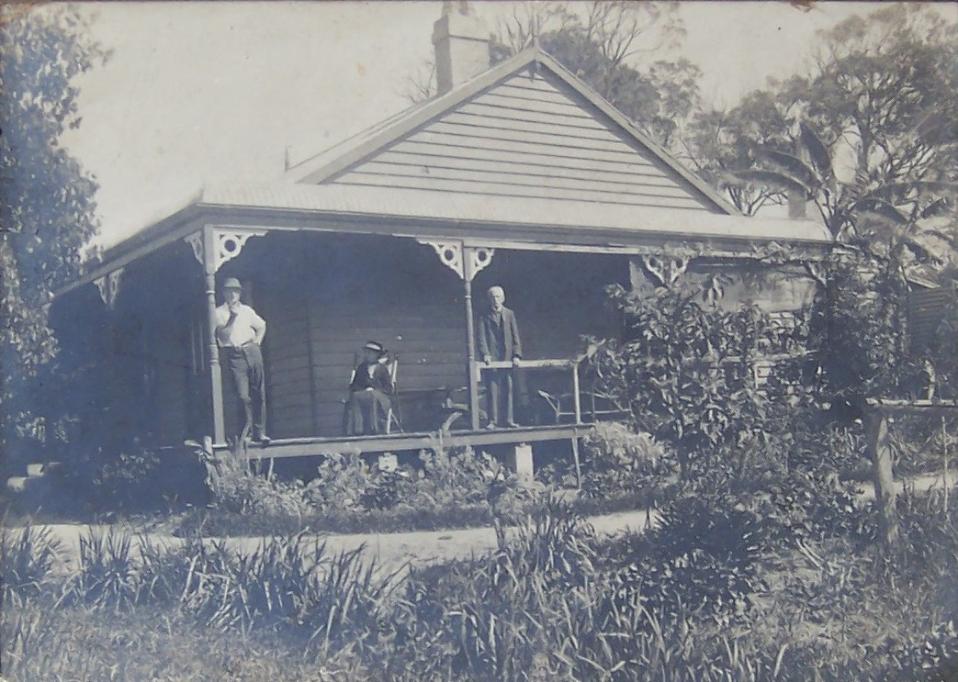
Ev (Everard), Mater and Pater at Mona Vale - 'The Bamboos', photo courtesy Catherine Quinn (nee Hedemann).
George Sydney Brock
George Sydney Brock was born in the spring of 1855 in Sydney to Robert and Mary Anne Brock (nee Kettle), their eldest son. His brother John H would be born in 1857, and die in 1858.
On the 18th September, at Balmain, the wife of Mr. Robert Brock, of a SON. Family Notices (1855, September 22). The Sydney Morning Herald (NSW : 1842 - 1954), p. 5. Retrieved from http://nla.gov.au/nla.news-article12978367
BROCK—January 26th, at Goulburn-street, of hooping-cough, John Hurbert, aged 12 weeks, second son of Robert and Mary Anne Brock. Family Notices (1858, January 28). The Sydney Morning Herald (NSW : 1842 - 1954), p. 1. Retrieved from http://nla.gov.au/nla.news-article13005585
In their Marriage Notice Robert Brock is stated to be from Manchester - his parents were William and Susanna. Mary Anne was born in Sydney to John Icke Kettle and Ann (nee May). Both John Kettle and Ann May were the offspring of transported convicts - John following his family out to join his siblings and mother, while Ann was born here.
George's wife Charlotte Ellen Davis was born in 1858, the birth registered in Glebe, the daughter of Joseph and Ellen. She and her mother were known as artists. Her sister Amy was born in 1860 at Newtown. Three brothers (one who died young) and two sisters preceded them. Her father worked as a grocer and butcher, suffering a few bankruptcies along the way. Her parents marriage:
By special license, on the 28th instant, by the Rev. Dr. Fullerton, Mr. Joseph Davis, of Newtown, to Ellen, youngest daughter of the late Mr. Edward Turner, of Parramatta-street. Family Notices (1850, October 29). The Sydney Morning Herald (NSW : 1842 - 1954), p. 2. Retrieved from http://nla.gov.au/nla.news-article12922125
She and George Sydney Brock were married 1882, the marriage registered in Canterbury. George and Charlotte had four children, two boys and two girls - NSW BDM's Records:
BIRTHS.
BROCK.-November 20, at Victoria Lodge, Newtown, the wife of George S. Brook, of a son. Family Notices (1882, November 25). Australian Town and Country Journal (Sydney, NSW : 1870 - 1907), p. 40. Retrieved from http://nla.gov.au/nla.news-article70993261
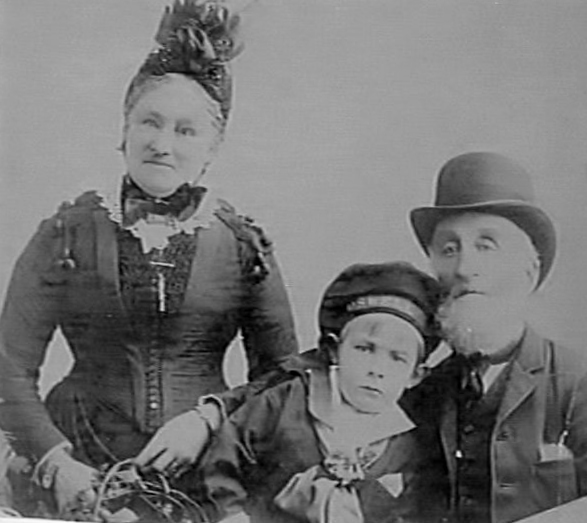
Robert and Mary Brock with grandson Oswell, circa 1887 - photo courtesy Dodds family
Births.
BROCK.-July 29th, at Brockleigh, Newtown, Mrs. George S. Brock, of twins, son and daughter. Family Notices (1891, July 31). The Sydney Morning Herald (NSW : 1842 - 1954), p. 1. Retrieved from http://nla.gov.au/nla.news-article13833099
Viva's twin brother died soon after he was born, the second time a Brock baby had been lost in successive generations:
BROCK.— December 18, at his parents' residence, Brockleigh, Newtown, Victor, aged 4 months 19 days. Family Notices (1891, December 19). The Australian Star (Sydney, NSW : 1887 - 1909), p. 1. Retrieved from http://nla.gov.au/nla.news-article227246352
Brockleigh, Landmark Italianate Boom Style Residence
1 Warren Ball Avenue, Newtown
In a dress circle position fronting Hollis Park, this magnificent two-storey family residence stands on a large 480.6sqm block with landscaped gardens, a spacious alfresco barbecue area and swimming pool. With impressive proportions and superb Italianate Boom Style features, it is one of eight grand manor homes built during the mid-1880s in the blue ribbon street originally known as L'Avenue.
Set at the corner of Warren Ball Avenue and Georgina Street, the immaculately maintained and beautifully presented house has a handsome facade with a wide wraparound verandah and iron-lace balconies.
Named Brockleigh, it originally was the home of George S. Brock who developed the street's other majestic villas as well as a splendid row of terraces on Georgina Street.
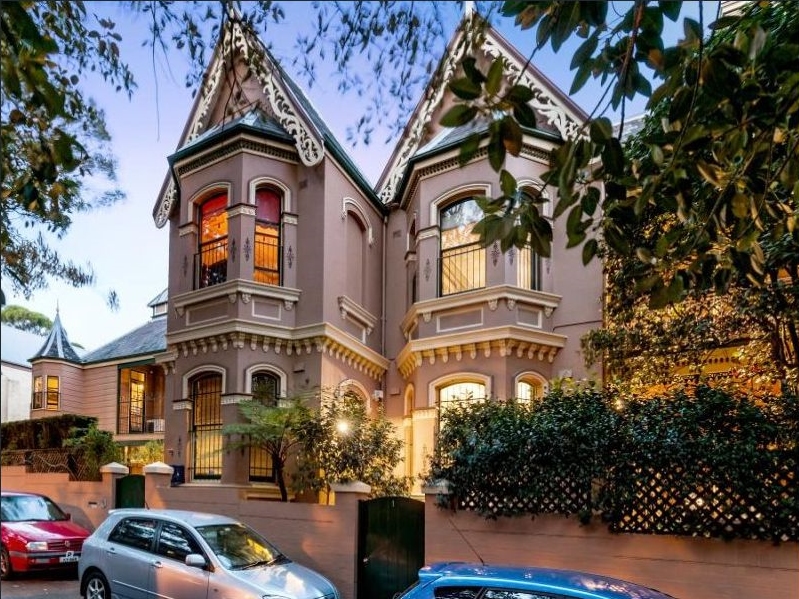
Spanning two spacious levels plus a basement cellar, the imposing slate-roofed house commands sweeping views towards Botany Bay from its upper level verandah. Quiet and private, it has generously proportioned rooms with bay windows, soaring ceilings, ornate cornices, polished timber floors and beautiful original features including marble fireplaces and select timber species joinery.
At entry level an original tessellated tiled hallway, interconnecting formal sitting and dining rooms, a modern open-plan gas and timber kitchen, spacious family living and dining areas, a breakfast conservatory, large office (with separate entry), a bathroom (with easy access to the pool area), concealed laundry and abundant storage. Glass-paned french doors, in the family living area, open to the outdoor entertainment areas and pool.Two staircases lead to the upper level which has a huge main bedroom (with a book-matched slab marble ensuite, verandah and separate sitting room or nursery), three more king-size bedrooms (with built-in wardrobes) and a large main bathroom with a bath and separate shower. Mod cons include gas heating bayonets, air-conditioning, Foxtel wiring and garden irrigation. Featuring three street frontages and a separate gated entry from Georgina Street, this remarkable property is a short walk from Royal Prince Alfred Hospital, University of Sydney, Eveleigh Farmers' Markets, city transport (buses and trains), and King Street shops and restaurants.
Last sold for $3,625,000 on 13/03/2014. Information Retrieved from www.realestate.com.au/sold/property-house-newtown-116119335
There is still a Brock's Lane in Newtown.
Oswell was an artist - many of the sculptures seen in photos of The Oaks stemmed from the sculpture machine spoken of above in the Mona Vale beach - George Brock section:
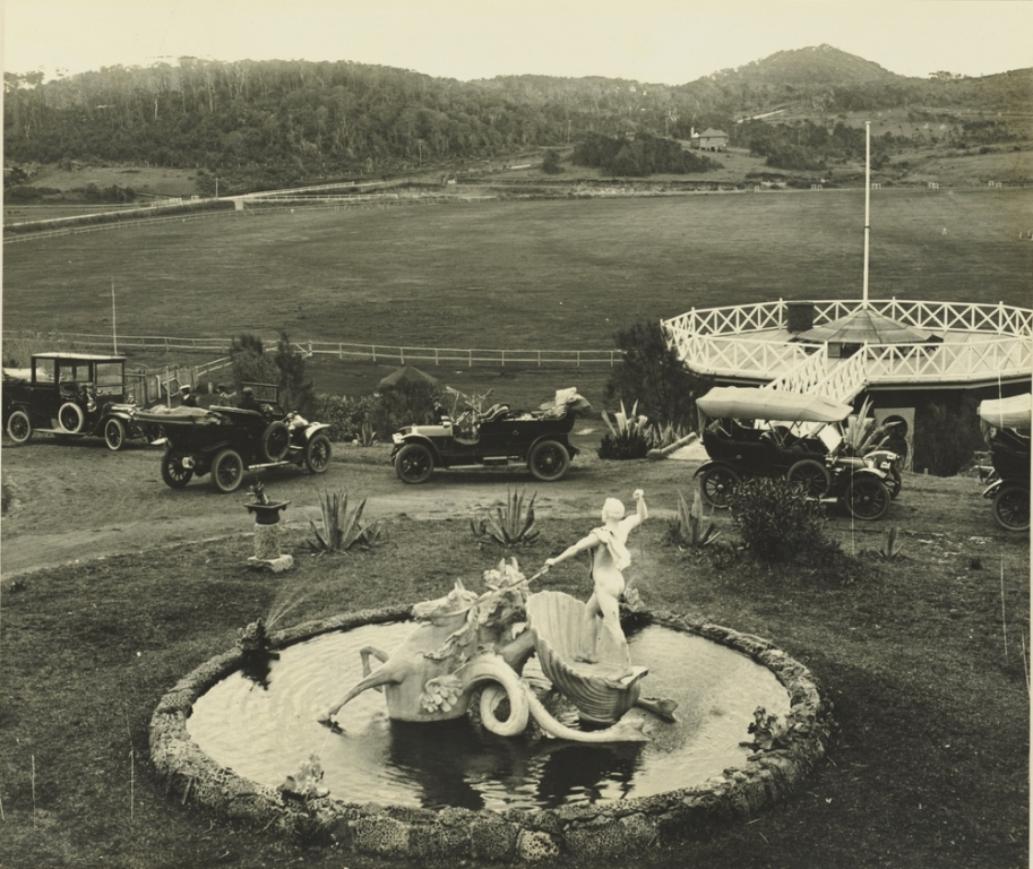
Mr. Brock has made a great impression upon the district.
He is of average height, compactly built, with strong features. His face reminds one of the old Romans as they have been pictured for us. He is clean shaven, quick in speech, and direct-in his utterance, very prompt and somewhat masterful in manner. A man, that can be plainly seen,— a man of strong individuality. He stands alone, and requires no support but his own keen brain and active body. He is a man to take the lead and keep it, a man who by his greater pushfulness makes enemies as well as friends. .. “THE OAKS,” (1904, September 3). The Mosman Mail (NSW : 1898 - 1906), p. 4. Retrieved from http://nla.gov.au/nla.news-article247008613
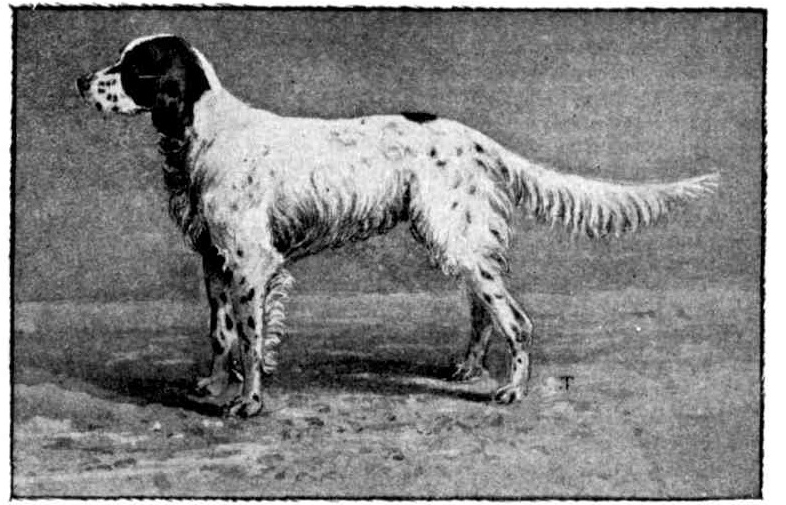

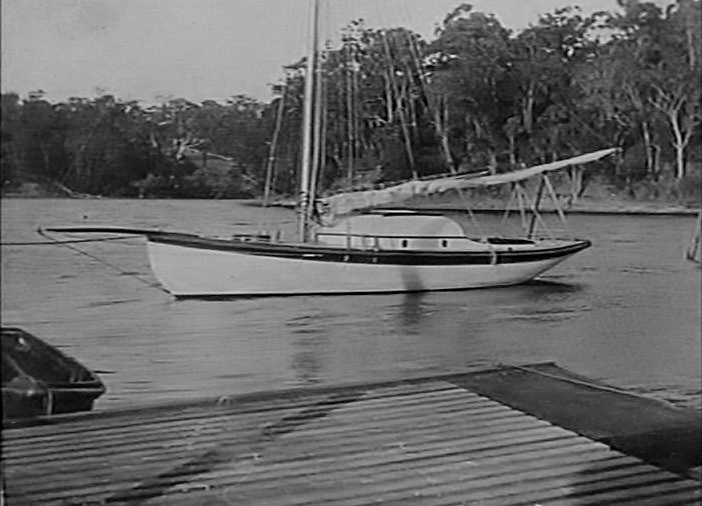
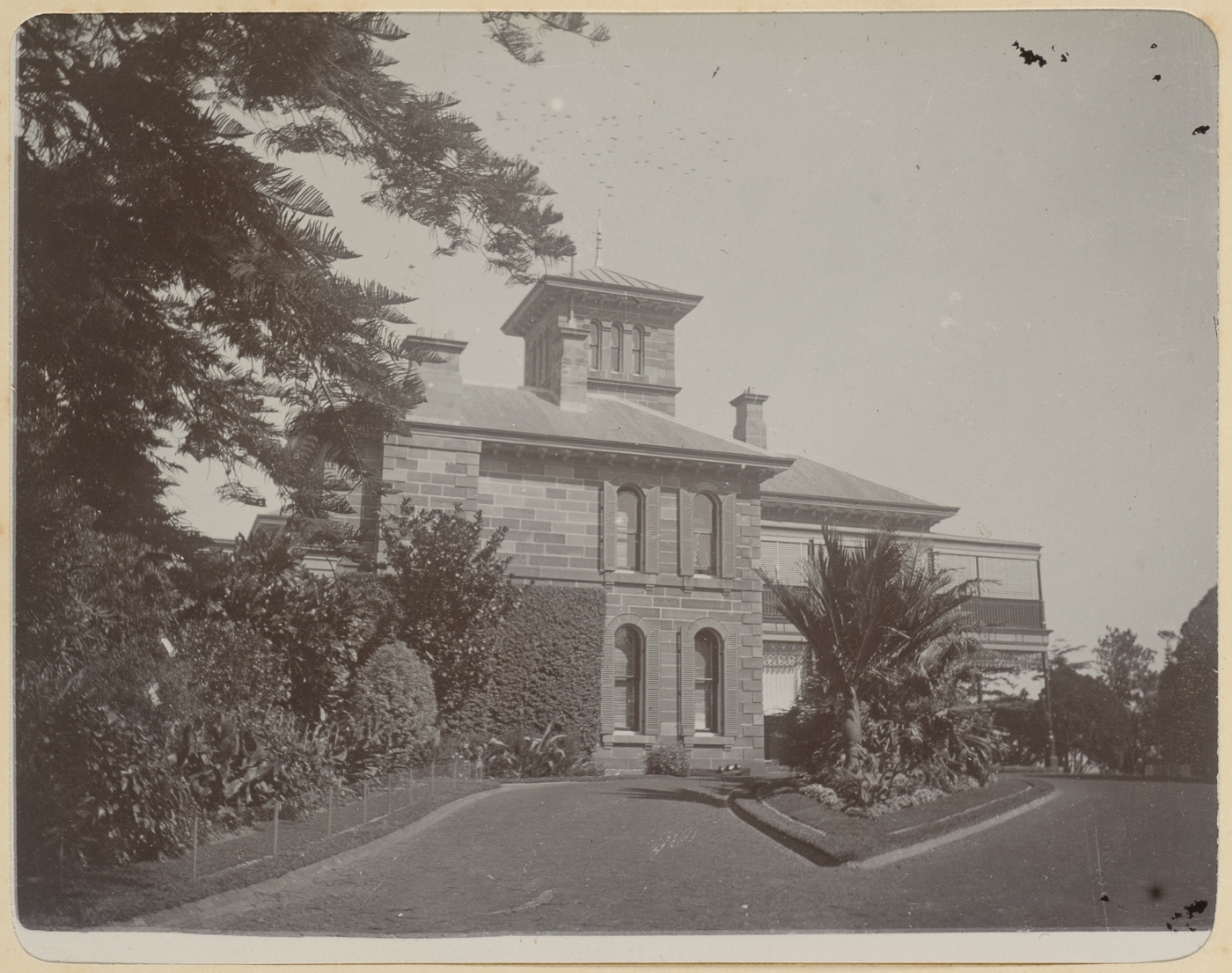
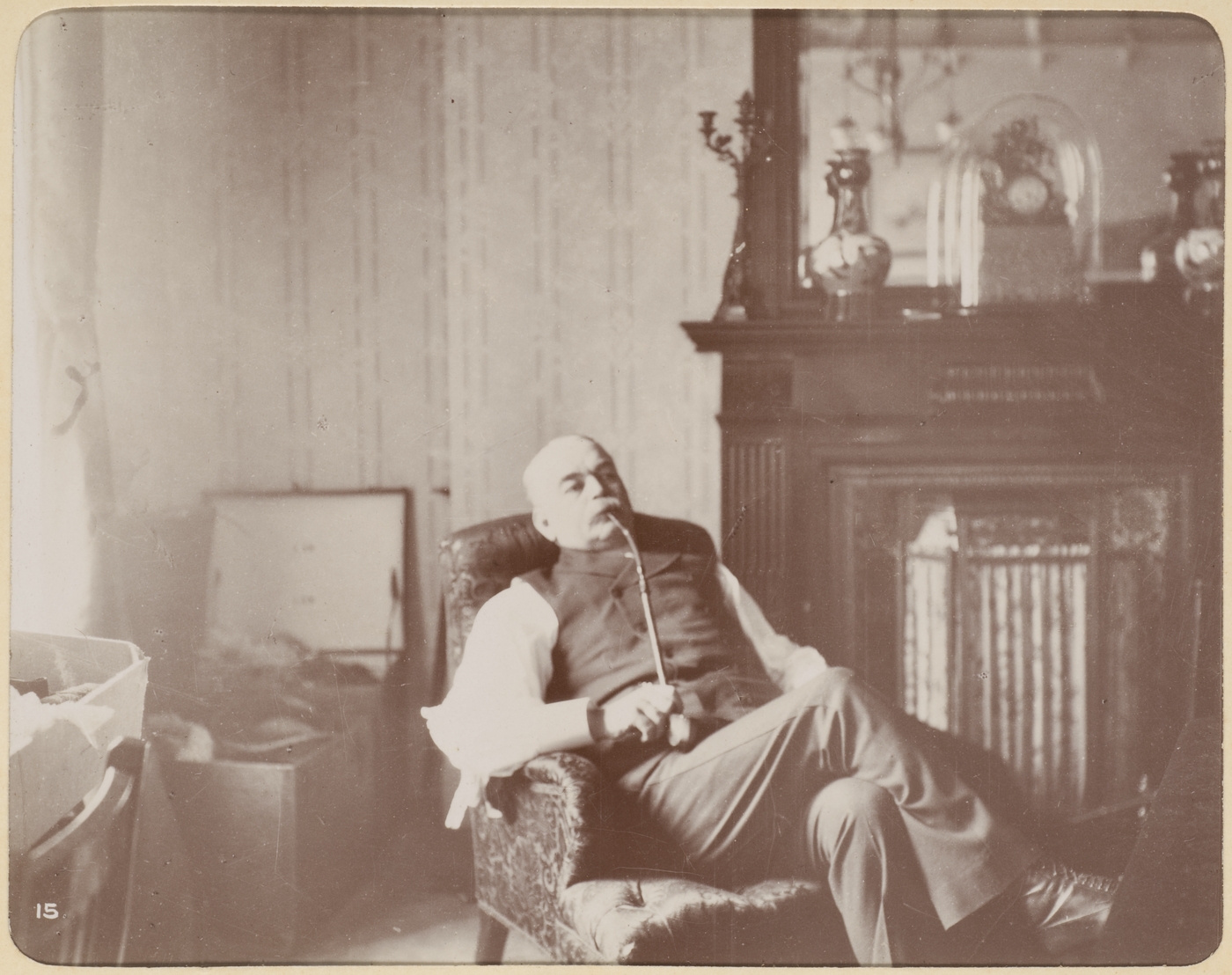
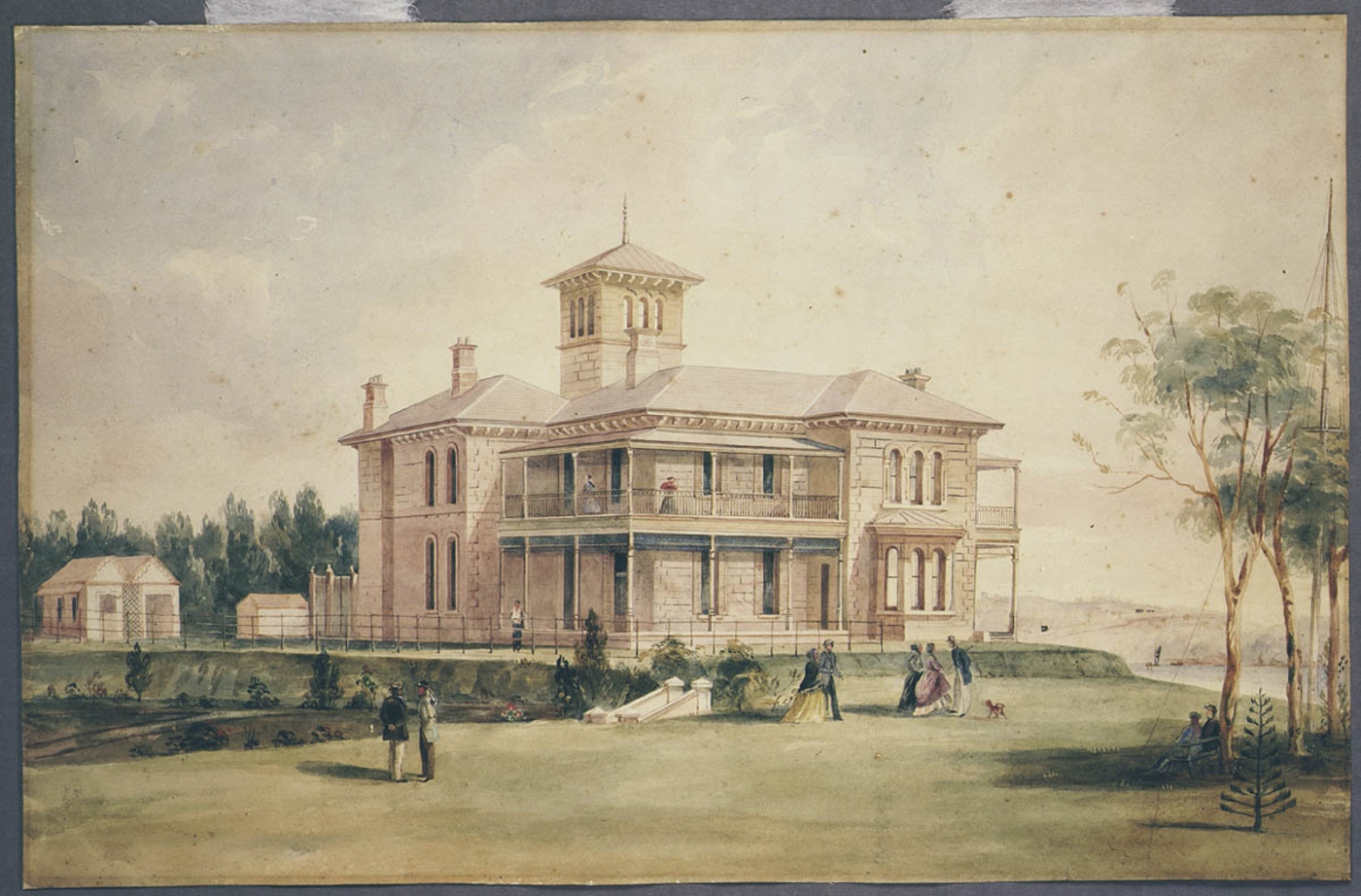
Less than a year later his mother passed away and was interred at Manly too:
Deaths. BROCK.— August 18, at Mona Vale, Pittwater, Mary Anne, relict of the late Robert Brock, aged 69 years. Family Notices (1900, August 20). The Australian Star (Sydney, NSW : 1887 - 1909), p. 1. Retrieved from http://nla.gov.au/nla.news-article230638859
BROCK. — August 18, at her residence, The Oaks, Mona Vale, Mary Anne Brock. Family Notices (1900, September 1). The Sydney Mail and New South Wales Advertiser (NSW : 1871 - 1912), p. 543. Retrieved from http://nla.gov.au/nla.news-article163693941
BROCK.—The Friends of the late Mrs. BROCK Sen., are kindly invited to attend her Funeral to move from her late residence Mona Vale Pittwater THIS AFTERNOON Monday at half past 1 and to arrive at the Manly Cemetery at 4 o'clock. A special boat will be at the Manly Wharf at 10 45 to convey Friends to Pitt Water. T.WAUGH and COMPANY, Undertakers and Embalmers,.Corso. Manly. Telephone, 42. Family Notices (1900, August 20). The Sydney Morning Herald (NSW : 1842 - 1954), p. 10. Retrieved from http://nla.gov.au/nla.news-article14331551
BROCK.—August 18, 1900, at her residence, The Oaks, Mona Vale, Mary Anne, the dearly beloved and only sister of Mrs. Georgina Thruchly, of Kettle-avenue, Newtown. Family Notices (1900, August 21). The Sydney Morning Herald (NSW : 1842 - 1954), p. 1. Retrieved from http://nla.gov.au/nla.news-article14331752
While dealing with the loss of his parents within so short a time George Brock was also working at getting that tram out to Pittwater to secure the success of his venture:
The Oaks Model Village - George Brock's Mona Vale Estate
George Brock's idea for the Oaks at Mona Vale, as shown in his naming it a 'model village' was to provide something extraordinary, along the lines of Mark Foy's Medlow Baths in the Blue Mountains, only beside the sea. The main house itself had three levels and over 38 rooms, a dining hall, 28 bedrooms, a ballroom out in the grounds, as well as polo fields, a golf course.
His passion for polo even had some scribes, in writing it up, stating this was The Oaks Polo Grounds. He acquired sections 2 and 3 of the Mona Vale estate, from the verge of where the present day golf course is all the way up to and including the Bungan-Mona Vale headland verge.
The land on which The Oaks stood is Section 2 of the Mona Vale estate, offered in the second subdivision and may have been picked up relatively cheaply:
TO SPORTING, BOATING, AND CAMPING PARTIES.
CHOICE WATER FRONTAGES.
THURSDAY, 10th DECEMBER, 1889.
CLEARANCE SALE
of the whole of the
UNSOLD PORTIONS of that BEAUTIFUL MARINE ESTATE,
MONA VALE, PITTWATER.
AT THE ROOMS, 130, PITT-STREET.
MILLS, PILE, and WILSON have been instructed by the proprietors to sell by public auction, at their Rooms. 130, Pitt-street, on THURSDAY, the 19th December, at half-past 11 o'clock,
The whole of the unsold portions of the
FARFAMED MONA VALE ESTATE,
recently subdivided into blocks of 2 to 30 acres each
THIS BEAUTIFUL ESTATE bus a large frontage to the eastern shores of Pittwater, extending to the waters of the Pacific Ocean, and is Intersected by the main road to Barrenjoey.
The SOIL is of the richest description, suitable for
ORANGERIES and ORCHARDS,
and the hills surrounding the various bays are adapted for
MARINE VILLA RESIDENCES.
The coach to Manly runs daily, and makes this property easily accessible from the city.
The terms of sale will be very liberal.
For further particulars and Lithos. apply to
MILLS, PILE and WILSON, Auctioneers, 130. Pitt-street. Advertising (1889, December 11). The Sydney Morning Herald (NSW : 1842 - 1954), p. 11. Retrieved from http://nla.gov.au/nla.news-article13752858

Second Subdivision - Mona Vale - Pittwater - Hill St, Waterview - Section 2 and Section 3, Thursday December 19th, 1889 Item No.: c046820031, from Mona Vale Subdivisions folder, courtesy State Library of NSW.
MONA VALE, PITTWATER SALE December 19, in the Rooms, 130 Pitt-street.
FREE COACH TICKETS from Manly, for Intending Buyers to inspect this Property, can be obtained at the Rooms.
MILLS, PILE, and WILSON, Auctioneers. Advertising (1889, December 13). The Australian Star (Sydney, NSW : 1887 - 1909), p. 8 (FOURTH EDITION). Retrieved from http://nla.gov.au/nla.news-article227582280
By 1897:
Department of Lands,
Sydney, 13th November, 1897.
APPLICATIONS FOR LEASES FOE SPECIAL PURPOSES.
IT is hereby notified, for general information, that the undermentioned applications have been received for Special Leases, under the provisions of the 89th and 90th sections of the Crown Lands Act of 1884, of the lands and for the purposes hereunder staled, and that it is the intention to grant leases, should no sufficient objection be found to exist, after inquiry by the Land Board and consideration by the Minister.
Any objections will receive due consideration if lodged in writing at the Office of the Chairman of the Board, within four weeks from the date of this notice, or before the Local Land Board shall have concluded its inquiry at the hearing of the respective applications for such Special Leases.
J. H. CARRUTHERS.
George Sydney Brock - Locality: Pitt Water - Area: 300x10 feet. Purpose: Jetty APPLICATIONS FOR LEASES FOR SPECIAL PURPOSES. (1897, December 1). New South Wales Government Gazette (Sydney, NSW : 1832 - 1900), p. 8735. Retrieved from http://nla.gov.au/nla.news-article221020716
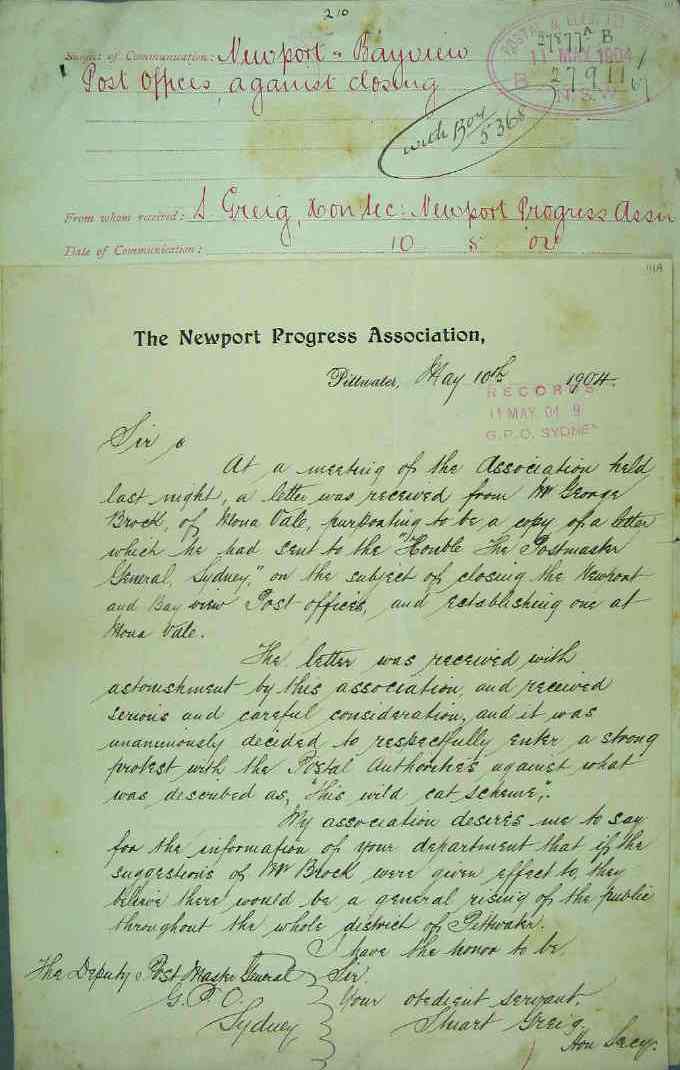
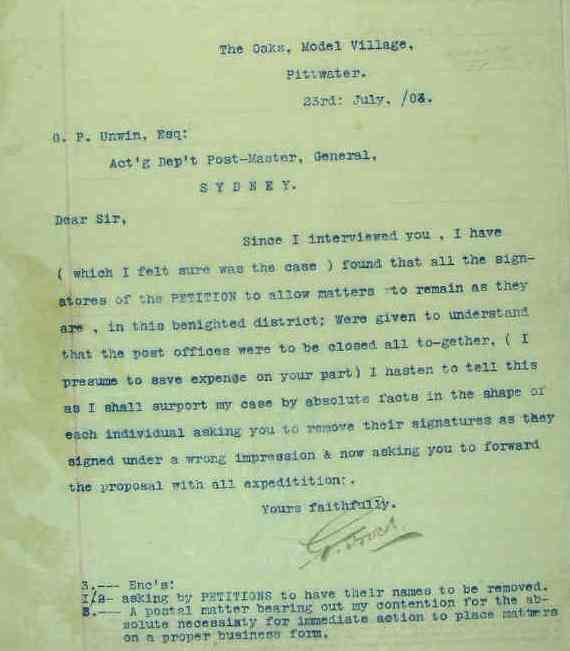
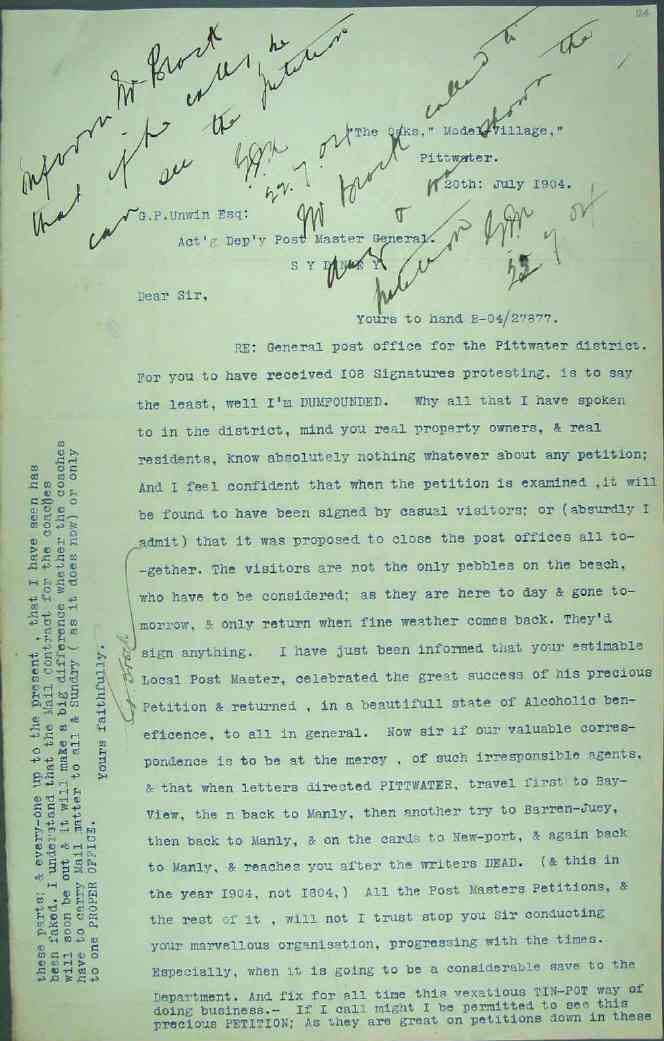
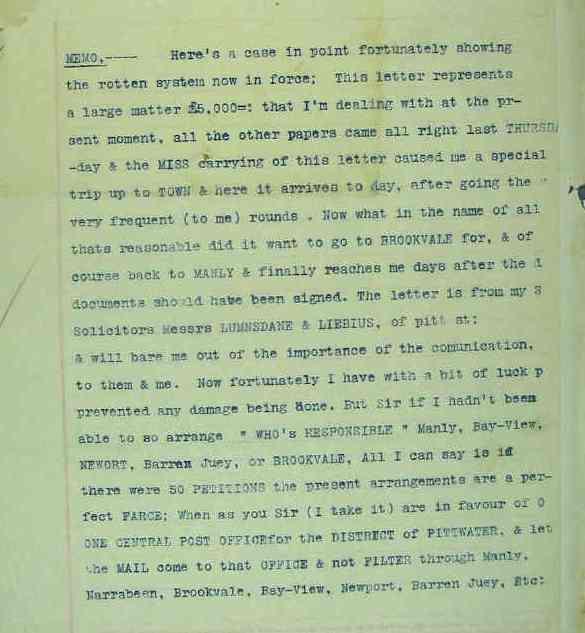
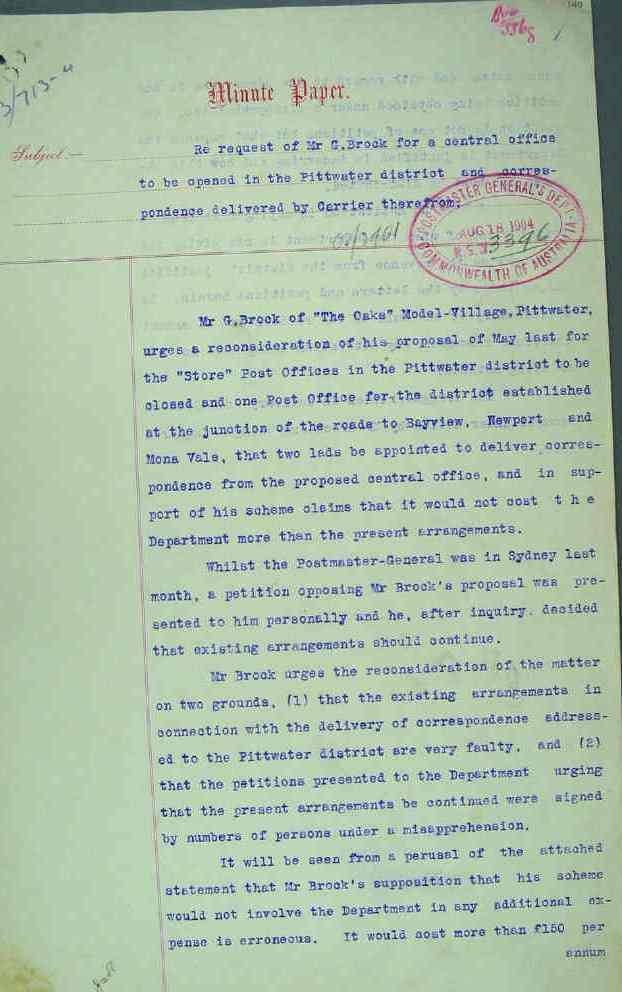
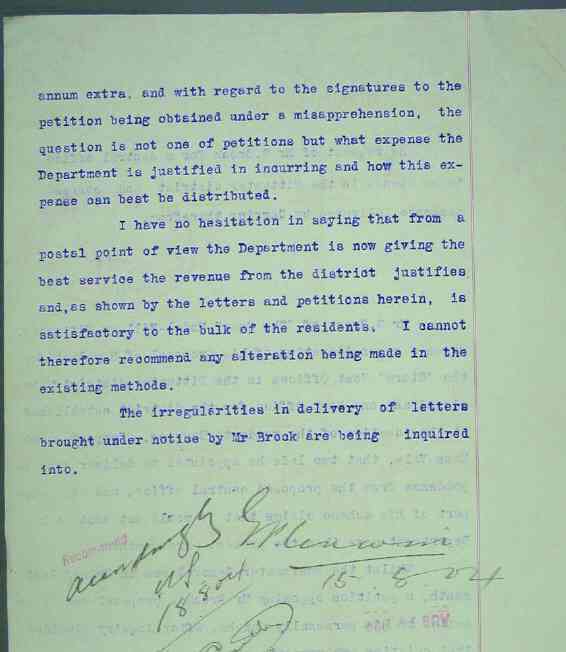
Although there was clearly a fair amount of construction work going on at Mona Vale the Brock's still spent time in town:
Miss Winifred Fraser invited a few of her friends to tea at Baumann's, on September 29. The hostess received her guests in the large room upstairs, where tea was served. Among those present were Mr. and Mrs. G. Brock, Mr. Oswell Brock, Mrs. J. Sanders, Miss Gair, Dr. and Mrs. Todd, Mrs. Pulsford, Miss Crossland, Miss Rose, Mr. Marr-Thompson, and others. SOCIAL ITEMS. (1905, October 7). Evening News (Sydney, NSW : 1869 - 1931), p. 10. Retrieved from http://nla.gov.au/nla.news-article113289463
A pleasant little gathering took place at the Hotel Australia on April 6, when a few of Mrs. A. J. Taylor's friends assembled to bid her "bon voyage," previous to her departure on a trip to England, with her mother, Mrs. J. R. Hill. The drawing-room was prettily decorated with flowers, and light refreshments were served, while a programme of music, arranged by Mrs. Kingsmill Shaw, was a pleasant feature of the afternoon. Among those who took part were the Misses Grace Fletcher, Florence White, Allen, Queenie Macdonell, and Saxe, and Mr. Philip Leslie, while amusing recitations were contributed by Miss Kate Gair and Mr. Oswell Brock. The hostesses included the Hon. Mrs. Pery, Mrs. Hughes, the Misses Winifred Fraser, Peden, Stewart, Smith, and Prince, while among the guests were Mrs. T. H. Kelly, Mr. and Mrs. F. W. Walker, Mr. and Miss Scroggie, Mr. H, de Y. Scroggie, Mrs. Cox, Mr. and the Misses O'Connor, Miss Bessie Major, Mr. Tedbar Johnson, Mr. and Mrs. Carter Pickford, Mr. and Mrs. F. Muller, Mr. Edgar Payne, Mrs. and Miss Hamilton Osborne, Captain and Mrs. Powell, Miss Hubard Smith, Mrs. and the Misses Banss, Dr. Palee. Mrs. W. Hill, Mr. and Mrs. Mason, the Misses King, Mr. Edmunds, Mr. and Mrs. R. Collins, Mrs. James Taylor, Miss L. Peden, Miss V. Moore, and others. Social News. (1906, April 11). Australian Town and Country Journal (Sydney, NSW : 1870 - 1907), p. 43. Retrieved from http://nla.gov.au/nla.news-article71529290
George Brock also brought his experience as an alderman in Newtown to the formation of Warringah Shire council. On March 7th 1906, the Warringah Shire was proclaimed by the NSW Government Gazette, along with 132 other new Shires. The new council's boundaries ran roughly from Broken Bay in the north to Manly Lagoon to the south, and by Middle Harbour Creek and Cowan Creek in the west. It covered 264 square kilometres (102 sq mi) and had a population of around 2800, with 700 dwellings. Under the Shires Act, ratepayers with properties worth at least five pounds could vote for six Councillors for a three-year term, two from each Riding.
Upon its establishment a temporary council of nominated representatives was installed by the State member for Middle Harbour Dr. Richard Arthur: George Alderton, of Frenchs Forest, George Brock, of 'The Oaks' Mona Vale, Thomas Gibbons, of Narrabeen, David Skene, of Brookvale, and Prof. Anderson, of Bayview (husband of Maybanke, who resigned on 9 June 1906 and was replaced by Herbert Sturman, of Mona Vale).
The first meeting of this temporary council took place in the Narrabeen Progress Association's Hall at 10 a.m. on June 14th 1906, with George Brock in the chair. Mr. Brock was already wondering how so many absentee landowners would 'have their say':
VOTING FOR SHIRE COUNCILS.
TO THE EDITOR OF THE HERALD.
Sir,-I have Just been notified of my appointment on the temporary council of Warringah, anticipating more kicks than halfpence during my sojourn on this temporary council. I'm much concerned at the absurd expectations at election time of the property owners turning up to vote; it's certain we'll find the gas-bag-agitator-kerosene-tin humpy much in evidence; but what about the absent owners of all this vast magnificent residential site, untouched and unimproved land, that is much in preponderance in this Warringah shire? It is clearly evident that voting by post is the fairest for all concerned. If it is good enough for the A.M.P. Society with £20,567,134 of funds to have all the control done by post voting, it should be likewise for all those interested in the welfare and progress of this fairest spot on the terrestrial globe. This blot in the Local Government (Shires) Act 1905 will be the Waterloo of its successful working. True the municipalities have personal voting at the ballot box. What do we find? Mostly representation by park-spouters and fire-brand agitators. Result, 99 out of the 100 councils up to their necks in debt, it being made so easy to fling about other people's rates collected. Post voting will obliterate the professional failure. I am, etc.,
G. BROCK.
Pittwater, May 22.
VOTING FOR SHIRE COUNCILS. (1906, May 23). The Sydney Morning Herald (NSW : 1842 - 1954), p. 4. Retrieved from http://nla.gov.au/nla.news-article14773898
The election of the first Warringah Shire Council took place on Saturday November 24th 1906, and the first meeting of the six elected councillors took place on December 3rd. The six councillors elected in November 1906 were:
LOCAL GOVERNMENT.
THE FIRST SHIRE COUNCIL ELECTIONS.
The first elections of councillors took place on Saturday, in the 134 shires created in N.S.W. under the new system of local government. Although the number may afterwards be increased to nine, each shire council is at first to consist of six numbers— two each from three ridings. Many of the returns to hand up to this morning were not complete, but as far as they have been received they are given, below: —
WARRINGAH.— A Riding: E. W. Quirk, J. Duffey. B Riding: A. Ralston. T. Fishbourne. C Riding: J. Hews, E. A. Holden.
LOCAL GOVERNMENT. (1906, November 26). Evening News (Sydney, NSW : 1869 - 1931), p. 6. Retrieved from http://nla.gov.au/nla.news-article115673717
The Post 'The Oaks' Years
After he lost The Oaks, taken and sold for a song by the mortgagees, the family lived at 'Aloha' Rushcutters Bay by November 1907 - as seen by the letter by daughter Viva from that same year. In 1911 he lost his wife:
DEATHS BROCK.—February 7, at Aloha, Waverley-street, Bondi Junction, Charlotte Ellen, beloved wife of George Sydney Brock,aged 53 years. Family Notices (1911, February 8). The Sydney Morning Herald (NSW : 1842 - 1954), p. 10. Retrieved from http://nla.gov.au/nla.news-article15226607
In January 1912 the wonderful dream home he had spent so much time, energy and money realising was burnt:
BROCK'S MANSION BURNED.
BIG BLAZE AT MONA VALE. beautiful landmark destroyed.
Damage estimated at £12,000.
No fire- fighting appliances available.
"La Corniche," a mansion at Mona "Vale, which occupied a commanding position on the road between Manly and Newport, was destroyed by fire early this morning. Flames were discovered at 10 minutes to 1. At half-past 2 only portions of the walls, and they rickety, were standing.
The building was palatial In Its dimensions and appointments, and contained in all 38 rooms, 28 of which were bedrooms. It was originally designed for The Oaks Polo Club, and was built by Mr. G. S. Brock at a cost which has been set down at £32,000. Before the building was completed, however, it was acquired by Mr. Arthur Rickard, who brought It up to date and then let It to M. and Mme. Rainaud, at one time chef to Sir Harry Rawson. Instead of being used as a polo club it became a fashionable boardinghouse, and on account of its situation and its surroundings, including surfing and golf, it became exceedingly popular. There were 30 boarders in the place at the time of the fire.
The fire started in the large dining hall, and was discovered before it had a very strong hold of the room, but not in time to be beaten out. There was a hue and cry raised throughout the building, and boarders were running to and fro to ascertain the extent of, their danger and the possibilities of saving their effects. The flames spread with great rapidity, but happily not In the direction of the staircase, and many of the people were, therefore, able to dash about and get their property outside.
Those on the second and third floors, however, did not take the risk which running up and down the stairs involved, and threw most of their belongings out of the windows. In ten minutes the flames -had begun to light up the hills on either side, and to throw long reflections out to sea. The boarders were all out of the building by ' this .time, and the menfolk were assisting the staff (numbering 20) to remove the furniture. They continued in this until the flames drove them back, and were successful in getting out a piano and other big stuff. But What was saved was a mere fraction of what was lost.
All that the people could do was to stand by and watch. There was water— the sea could be heard roaring in to shore all the time — but there was no means of pumping it into the building. No fire-fighting appliances which would avail anything were kept on the premises, there is no depot in the vicinity, and though a boarder motored to Manly post haste and reported the blaze the firemen did not go out, because they could have done nothing if they had.
There were very few incidents in connection with the fire. Everybody was got out expeditiously, and though there were several cases where ladles fainted they were never in danger. Even the pets of the house were saved, though one had a narrow escape. It was a little white pussy, and it mewed and mewed pitifully on the window sill of a room from which smoke was already issuing. One of the girls attached to the staff saw its plight and darted into the building and out again with her charge in a few seconds.
Mr. Scott Fell, who has a house in the grounds of La Corniche, provided accommodation for the boarders for the rest of the night. As bad as the consequences were they might have been worse. If the blaze, for instance, had started nearer to tho stairway than it did, it is quite possible that the escape of the boarders would have been cut off, and the only exit would have been through the windows, a course . of action which would practically have endangered limbs if not life. Then, again, the wind was blowing out to sea. Had it blown from the sea, it Is not unlikely that two cottages and the Casino, nearer the roadway, would have gone, while the motor garage, where four motor-cars were kept, would almost certainly have been gutted.
The most remarkable circumstance in connection with the fire was associated with the telephone. When the blaze was found to be so serious Mr. A. Davis tore the 'phone from the wall and carried it outside. Later in the morning an electrician fitted it up on to the fence— the only piece of the fence which escaped tho flames— and a trial showed that though the wires had been through the heat of the flames, the 'phone was still in order, and the Manly exchange could be distinctly heard. The boarders relished the good fortune, because it enabled them to send reassuring messages to their friends.
Mr. Rickard stated this morning that the building and furniture was insured in the New Zealand Insurance Co. for £6000, and that he was therefore a fairly heavy loser, seeing that his estimate of the value of the building was £10,000. The furniture was valued at £2000. Mrs. Mueller (wife of Dr. Mueller, of Macquarie-street), Messrs. Harvey, A. Davis, Earle, Hermann, Toohey, L. A. and R. V. Minnett, Lotrois, and others of the boarders, were also sufferers by the fire. Mr. Rainaud lost silver, linen, &c., to the value of £250, which was uninsured.
The origin of the fire cannot he determined, but It is believed that It was caused by a lighted match or cigar butt carelessly thrown on to the carpet in the dining-room. Mrs. Rainaud heard a noise in the dining-room, which she attributed to burglars, and on getting out of bed found the place ablaze.

Mona Vale Hydro, the scene of a disastrous fire which occurred in the early hours of this morning. BROCK'S MANSION BURNED. (1912, January 8). The Sun (Sydney, NSW : 1910 - 1954), p. 1. Retrieved from http://nla.gov.au/nla.news-article222004219

Ruins of "Brock's Mansions," at Mona Vale, destroyed by fire on Monday morning. The fate of the handsome pile of buildings is a grim finale to the financial tragedy that overtook the plucky builder, Mr. G. S . Brock, in its erection. No title (1912, January 10 - Wednesday). The Sun (Sydney, NSW : 1910 - 1954), p. 1 (FINAL EXTRA). Retrieved from http://nla.gov.au/nla.news-article222002216
George Brock went west and worked - and although he is shown selling his polo ponies when he lost The Oaks, thankfully he was in a place where he could pursue his passion:
LAND VALUATION.
PORTLAND, Monday.
The valuation of the property In the urban area of Portland was recently made by the Blaxland shire valuer, Mr. G. S. Brock. The valuation has been doubled, and in some places, quadrupled In comparison with that made three years ago. COUNTRY NEWS. LAND VALUATION. (1913, June 11). The Sydney Morning Herald (NSW : 1842 - 1954), p. 16. Retrieved from http://nla.gov.au/nla.news-article15426350
POLO CLUB FOR LITHGOW
A meeting convened by Mr. G. S. Brock for the purpose of forming a polo team at Lithgow was held at the Club House Hotel last night. It was unanimously decided to form a club to be called the Bowenfels Polo Club, the necessary gear having been sent from Sydney, of which club Mr. Brock is one of two pioneer members.
Mr. Brock was appointed hon. secretary, Mr. J. L. Brown, patron, Ald. R. Pillans, president. and Messrs. Major Bracey, .T. A. S. Jones. A. C. Wright. T. W. Cohen, and A. J Brown, vice-presidents. It was decided that the players, Messrs. Brock, Pye, Walsh, iEather, and Jones, form the committee. Mr. Brock explained that Mr. J . L. Brown had kindly offered to allow the club to utilise any site on the Cooerwull Estate.Practice, commences on Saturday on a ground close to the factory. It is expected that matches will be played with Sydney team's, the match ground being situated opposite "Methven. '. POLO CLUB FOR LITHGOW. (1913, May 9). Lithgow Mercury (NSW : 1898 - 1954), p. 4. Retrieved from http://nla.gov.au/nla.news-article218665861
POLO AT BOWENFELS.
Mr. G. S. Brock, Hon. secretary, writes: — Bowenfels, Liddleton,and Vale of Clwydd met on Saturday on the new, graded ground at) Cooerwull, and the members not having all recovered from the vaccination boom it was decided by the captain to make up a scratch team of blues and whites. The blues were: — Ray Pye, back; .1. Finlayson, No. 2; -and Hull, No. 1 on a green (pony). The i whites were; — Brock, buck; Young, No. 2; and Oakey Park representative, No. 1.
The first chukka found Whites, on the now level ground, forcing the play, and soon the first goal was scored by Brock. The blues on the next throw off, with a brilliant run by Pye (on his new creamy), fairly made a run equal to match form, and scored a very fine goal. Brock with combination tactics forced the blues to their goal line, and gave an opening for Young to score several behinds. Second chukka: Pye was penalised for over-reaching his stick and Brock scored for the whites. Pye, showing some real fine polo, kept the whites going to save the goal, and, backed up by Finlayson (of Parrumatta), fairly ran away with the bull, the ground now favoring fast riding, and from a scrum, not a foot away from goal, scored. Third chukka: Too much standing over the ball and riding off tactics on both sides made the game slow for the onlookers. Honors were about equal. Fourth chukka: Play became fast. A duel between the two backs left- an opening for the Parramatta colt, and Finlayson dribbled a goal. The ponies wearied. Result: Blues, 3 goals 2 behinds; Whites, 2 goals, 5 behinds.
Miss R. Wright carried the colors of the club, dark blue and light blue stripes and the Whistle, combined with timekeeper,' Mr. Dawson (of Thelma yacht fame) R.S.Y.S. Mr. Wilson and Mr. Walsh assisting. The club coach left the club rooms at 2 p m with Mr. and Mrs. Dawson, of Sydney, also Miss Viva Brock, also on a visit to the fancy masquerade ball the night before. Misses Wright, Miss Cohen, Miss Bracey, and later Mr. and Mrs. Tartakover joined the party. From Mr. Wilson's trial spin it looks like as if he will be a first-class player. A polo dinner was held after the match at the Hotel Lansdowne, although alfresco, Host Baumashe was equal to the occasion. The Sydney visitors gave the polo chaps quite a musical treat, and expressed surprise amongst so much coal and iron, that polo was so much alive and had come to stay for sure.' Mr. Dawson, the member, of the R.S.Y.S. has presented the club with club ensign, dark and light blue stripes, and the club hopes to soon see it flying over their shelter kiosk. POLO AT BOWENFELS. (1913, August 4). Lithgow Mercury (NSW : 1898 - 1954), p. 2. Retrieved from http://nla.gov.au/nla.news-article218661453
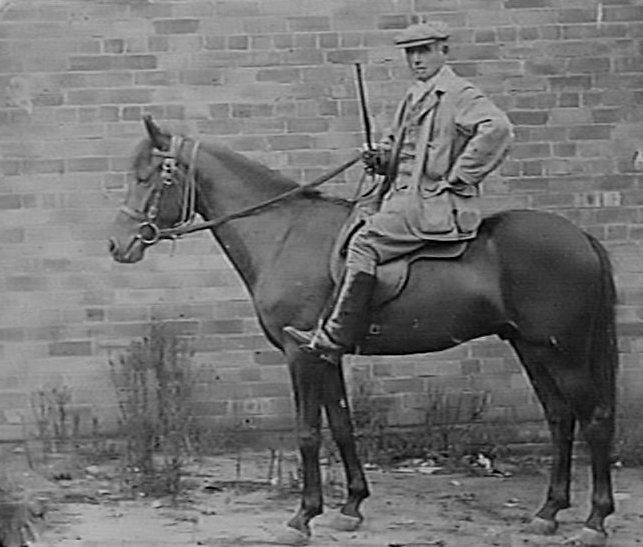
George on one of his polo ponies - photo courtesy Dodds family
BREVITIES. Mr. G. S. Brock advertises in this issue The Newbold siding subdivision, Marrangaroo. BREVITIES. (1913, August 4). Lithgow Mercury (NSW : 1898 - 1954), p. 2. Retrieved from http://nla.gov.au/nla.news-article218661489
In 1914 their daughter Dorothy marries and as can be read, George is still in Lithgow:
WESTCOTT—BROCK.—August 8, 1914, at St. Mary's Church of England, Waverley, by Rev. J. N. Manning, M.A., LL.D., Walter Clarke, second son of G. H. Westcott, of Ashfield, to Dorothy Marjory eldest daughter of G. S. Brock, of Lithgow. Family Notices (1914, September 12). The Sydney Morning Herald (NSW : 1842 - 1954), p. 12. Retrieved from http://nla.gov.au/nla.news-article15563365
LICENSES.
At the Lithgow police court on Tuesday an auctioneer's license was granted to George Sidney Brock, of Lithgow. LICENSES. (1914, December 2). Lithgow Mercury (NSW : 1898 - 1954), p. 2. Retrieved from http://nla.gov.au/nla.news-article218669427
MUNICIPAL AND SHIRE APPEAL COURT
APPORTIONMENT AND ASSESSMENT OF LOCAL COAL MINES. VALUERS BURNS AND BROCK IN THE RING.
Under the Local Government Act a coal or shale mine may be assessed either on the average annual, output or on the unimproved capital value of the land. The local mines have been assessed on the average annual output since 1889, but trouble has arisen this year — when the triennial valuation was due —between ' the Blaxland Shire Council and the Lithgow Council as to how the mines should be assessed and the apportionment of the rates so obtained. All the associated collieries in Lithgow are partly situated in the' shire area and partly within the municipality — with the exception of the Ironworks Tunnel. But though the shafts, machinery, and so on are all within the municipality, the greater part of the surface area is in the shire. The respective valuers (Messrs. K. Burns and G. S. Brock) failed to agree as to the apportionment of the rates, which led to a recommendation on the part of the Blaxland Shire valuer that the assessment should be on the surface area, which would mean that the shire would reap much more in rates than has hitherto been the ease. On the other hand the local valuer contended that the assessment should remain as heretofore. Neither was able to adjust the matter, and the P.M., sitting as a municipal and shire court, considered the question at the Lithgow courthouse on Tuesday morning. Mr. K M. Mitchell, of Sydney, instructed by Mr. T. F. Thompson, appeared for the Council, while the Mayor (Aid. R. Pillans), Mr. T. Evans (town clerk) and air. E. Barns (valuer) were also present. The Blaxland Shire was represented by its solicitor (Mr. E. P. Richards), while the engineer (Mr. B. A. Heffernan), the clerk (Mr. A J. Ash-down), and the valuer (Mr. G. S. Brock) were also in court. ... MUNICIPAL AND SHIRE APPEAL COURT (1913, November 19). Lithgow Mercury (NSW : 1898 - 1954), p. 2. Retrieved from http://nla.gov.au/nla.news-article218658457
In 1916 Oswell Carl Brock marries Lucy Victoria Garling, daughter of Arthur Crawford Garling and Anne Rushby. Interestingly, paintings he was getting copyrighted that year, show his studio as 'Aloha', the name of the premises where the family had moved to and where they were when his mother had passed away just a few years earlier. The couple had a son, John Brock:
3581. Oswell Carl Brock, Aloha Studio, Victoria Chambers, 44 Castlereagh-street, Sydney, New South Wales.—Painting:—"Belgium." Belgian girl, part of the set of six representing the Allies. 16th December, 1915.
3582. Oswell Carl Brock, Aloha Studio, Victoria Chambers, 44 Castlereagh-street, Sydney, New South Wales.—Painting:—" Italy." Italian girl, part of the set of six representing the Allies. 16th December, 1915.
3583. Oswell Carl Brock, Aloha Studio, Victoria Chambers, 44 Castlereagh-street, Sydney, New South Wales.—Painting:—" Japan." Japanese girl, part of the set of six representing the Allies. 16th December, 1915.
3584. Oswell Carl Brock, Aloha Studio, Victoria Chambers, 44 Castlereagh-street, Sydney, New South Wales.—Painting:—"Russia." Russian girl, part of the set of six representing the Allies. 16th December, 1915.
3585. Oswell Carl Brock, Aloha Studio, Victoria Chambers, 44 Castlereagh-street, Sydney, New South Wales.—Painting:—"England." English girl, part of the set of six representing the Allies. 16th December, 1915.
3586. Oswell Carl Brock, Aloha Studio, Victoria Chambers, 44 Castlereagh-street, Sydney, New South Wales.—Painting:—"France." French girl, part of the set of six representing the Allies. 16th December, 1915. PROCEEDINGS UNDER THE COPYRIGHT ACT 1912. (1916, January 20). Commonwealth of Australia Gazette (National : 1901 - 1973), p. 105. Retrieved from http://nla.gov.au/nla.news-article232467614
The theft of Brock property continues:
Paddington.—Stolen, between the hours of 3 p.m. and 6 p.m. the 3rd instant, from the residence of Oswell Brock, Springfield, O’Sullivan-road, Bellevue Hill,—A gold half-moon brooch with two rose leaves and a rose bud thereon, set with about thirty pearls, small diamonds set in bud; plain gold bar-brooch, set with a pearl; a lady’s rolled gold keyless wristlet watch, No. 472485, “14, 15, and 16 and A.J.S.” scratched inside back case. Also stolen, same time and place, the property of Ethel Walsh,—A lady’s open-face silver keyless Geneva watch, No. 338250 “14, 16, and 16” inside back case; a gold brooch, heart shape, with leaves, set in pearls; gold bar-brooch, set with a ruby; gold bell pin; and a fine gold neck-chain; total value, £9 10s. ldentifiable. Suspicion attached to two men First about 26 years of age, 5 feet 7 or 8 inches high, medium build, fair complexion, clean shaved; dressed in a grey tweed sac suit and grey soft-felt hat with black band. Second—about 30 years of age, 5 feet 8 inches high, stout build, full fat face, wearing a straw hat; both wore “R.S.A.” badges. Can be identified. Burglaries, etc. (1918, May 8). New South Wales Police Gazette and Weekly Record of Crime (Sydney : 1860 - 1930), p. 211. Retrieved from http://nla.gov.au/nla.news-article251745458
A highly fanciful Smiths Weekly record keeps the name G S Brock in the news:
BROCK OF BROCK'S BEACH
The following, from "Smith's Weekly," will be read with interest by Lithgowites: "The author of the well-known structure on the Newport Road, north of Sydney, built a decade and a half -ahead of his time.
The motor makes the place an ideal "country club" site, but Brock built before the motor, had been heard of. He has always had notions of his own on the subject of architecture. His original house was built on the lines of a ship. He put in portholes instead of windows and armchairs which played 'God Save the King' when you sat down, on them. He also put in Larry Foley majolica mantelpiece. Nobody ever knew why Larry Foley got the mantelpiece. Nobody ever know why Brock took it away from him. Brock is a great sportsman, and is the essence of hospitality. He has always had a passion for the sea, and this passion was once nearly the end of him. He put off from the beach in a dingy, and was caught in a gale. He was blown many Ieagues to the north, and was ready to go out to it, when by chance he was picked up. He was a great polo player, and is still a stylish quail shot. BROCK OF BROCK'S BEACH (1921, January 31). Lithgow Mercury (NSW : 1898 - 1954), p. 2. Retrieved from http://nla.gov.au/nla.news-article219261547
In June 1921 Viva marries:
MARRIAGES.
DODDS-BROCK.-June 23, at St Andrew's Cathedral, by Rev. Canon Charlton. Edward Hindmarsh, eldest son, of Mr. and Mrs. Leonard Dodds. Green Meadows, VIidemere, to Viva, younger daughter of Mr. George Brock and the late Mrs. Brock, of Mona Vale. Family Notices (1921, July 13). The Sydney Morning Herald (NSW : 1842 - 1954), p. 12. Retrieved from http://nla.gov.au/nla.news-article28087438
WEDDINGS.
DODDS— BROCK.
An interesting and pretty wedding was celebrated on Juno 28 at St. Andrew's Cathedral, between Viva, youngest daughter of Mr. George Brock, Narrandera, N.S.W., and Edward Hindmarsh, eldest son of Mr. and Mrs. Leonard Dodds, of Green Meadows, Widemere. Canon Charlton performed the wedding ceremony. The bride, who was given away by her father, wore a pretty dress of very pale pink taffeta, trimmed with lace. An old family veil of Limerick lace was worn with a tiny wreath of orange blossoms. Her shower bouquet was composed of white sweet peas and carnations. Miss Doris Litchfield was bridesmaid, and wore a maize satin gown, her lace hat having long gold streamers. She carried a shower bouquet of Iceland poppies. Captain Clive Fitzhardinge, M.C., was best man.
The wedding breakfast was held at the Waratah Cafe, Mr. and Mrs. Leonard Dodds being host and hostess. Their guests Included Mr. and Mrs. Alfred Lee, the Misses Lee, Mrs. W. H. Corbould, Miss Evelyn Corbould, Mr. George Brock, Mr. H. M. Somer, Mr. L. Hopkins, Mrs. Metcalfe Jackson, Mr. Arthur Dodds, Mr. Harry Dodds, Mr. and Mrs. Westcott, Mr. and Mrs. C. Brock, Mr. and Mrs. Herbert Thompson, Mr. and Mrs. Houghton Bradley, Mrs. Randle, and Dr. George Bell. The bridegroom was flight-lieutenant In the Royal Air Force, having seen service In East Africa, Palestine, and Salonika. WEDDINGS. (1921, July 2). The Daily Telegraph (Sydney, NSW : 1883 - 1930), p. 15. Retrieved from http://nla.gov.au/nla.news-article239753960
A CITY WEDDING
Very jolly speeches marked the dinner given at the Waratah Cafe after the wedding of Miss Viva Brock and Mr. Edward Dodds on Tuesday evening. Canon Charlton, who conducted the service at St. Andrew's Cathedral, presided, and three old friends— the bridegroom's father, Mr. Livingstone Hopkins and Mr. H. M. Somer — vastly amused the company with their stories against each other. The bride is the second daughter of Mr. George Brock, formerly of Mona Vale, and the bridegroom the eldest son of Mr. and Mrs. Leonard Dodds, of Green Meadows, Wentworthville. The bridal gown was of pale pink satin with an overdress of lace, the whole being covered with a very long tulle veil that fell from a small wreath of orange blossom'. Miss Doris Litchfield, as bridesmaid, wore a dress of pale lemon chanrieus and a white net hat. The bridegroom, who was in the A.F.C., and the best man, Lieut. Clive Fitzhardinge, M.C., wore their uniforms. A CITY WEDDING (1921, July 3). Sunday Times (Sydney, NSW : 1895 - 1930), p. 17. Retrieved from http://nla.gov.au/nla.news-article123245863
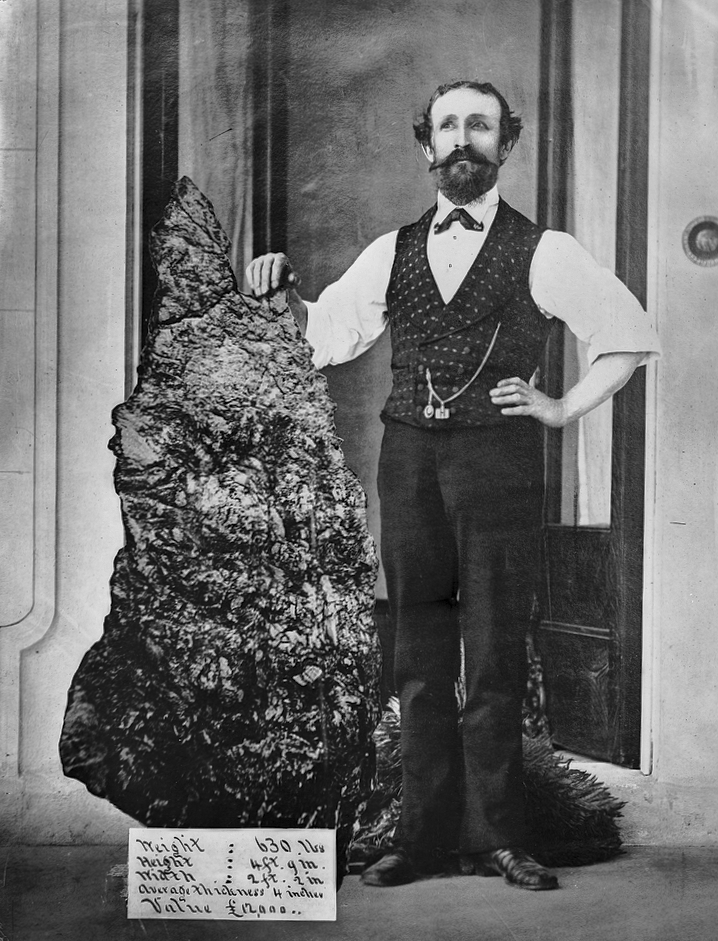
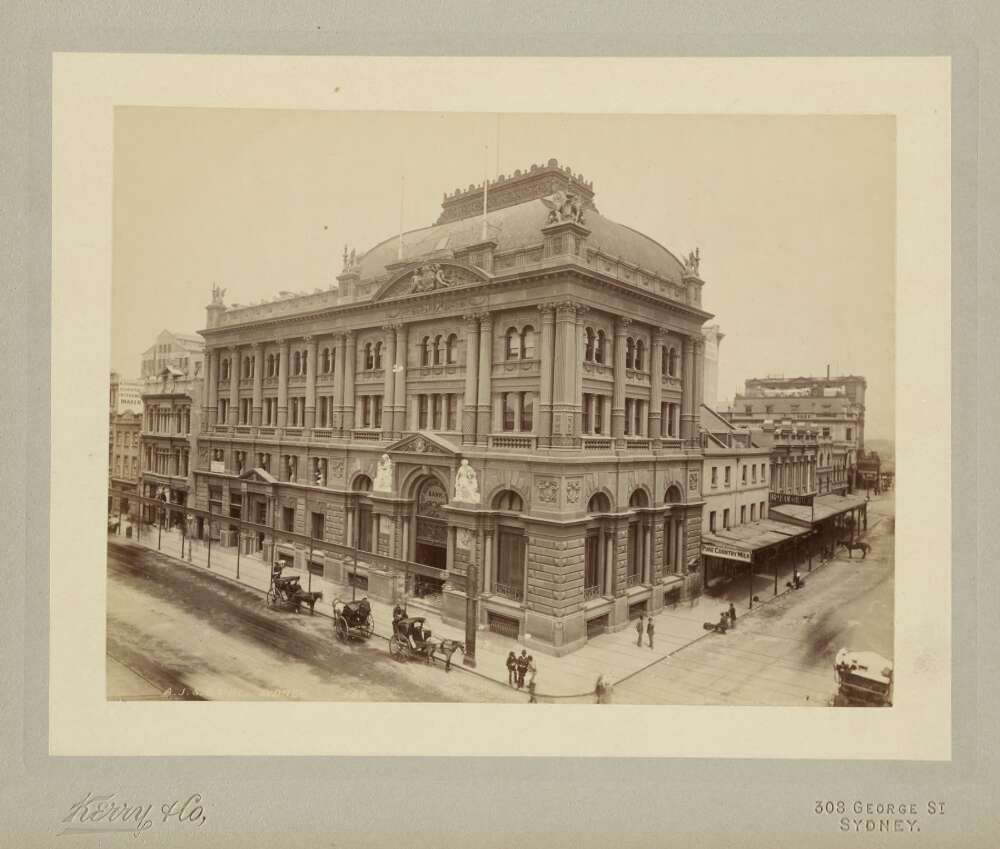
BROCK.—November 15, 1933, at Sydney, George S. Brock, late of 61 Wellbank-street, North Strathfield. Privately interred Waverley Cemetery, 16th inst. Family Notices (1933, November 17). The Sydney Morning Herald (NSW : 1842 - 1954), p. 10. Retrieved from http://nla.gov.au/nla.news-article17024923
Viva Dodds formerly Brock
Born 1891 in Newtown, Sydney. Daughter of George Sydney Brock and Charlotte Ellen (Davis) Brock.
Sister of Oswell Carl Brock, Dorothy Marjorie (Brock) Westcott and Victor Brock.
Wife of Edward Hindmarsh Dodds — married 1921 in Sydney.
Mother of Elizabeth M Dodds, Leonard Hindmarsh Dodds and Dorothy Winifred Dodds.
Viva was aged 82 years when she died in 1974 - late of Parramatta, formerly McMasters Beach Gosford.
Glenroy
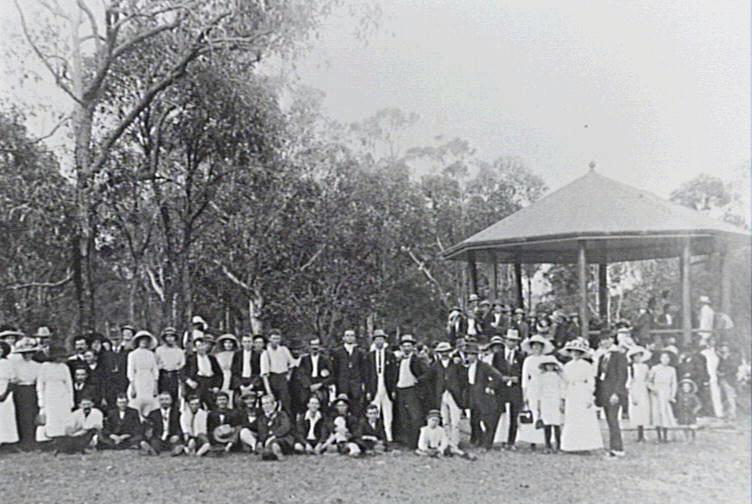
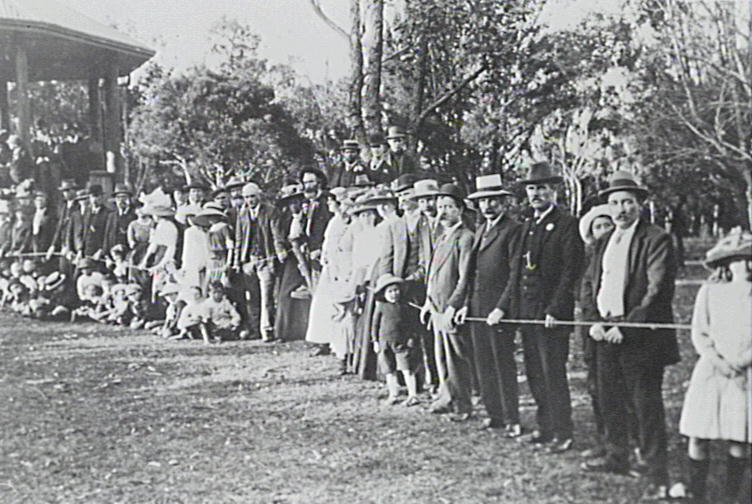
Information Provided As Mrs. Hawkins Talked With Mr. George Johnson
31.7.78 (Pittwater High School)
Mr. Johnson was born at 1891 Pittwater Rd., in 1907. His grandfather Mr. Arter, who built houses A, B and C lived with Mr. Johnson’s parents and the rest of the family, at that address. Mr. Arter continued to work as a bricklayer in the district, working on the Rock Lily and the general store, at the site of the present paper shop. (Mr. Johnson has a picture or the two storied building.)
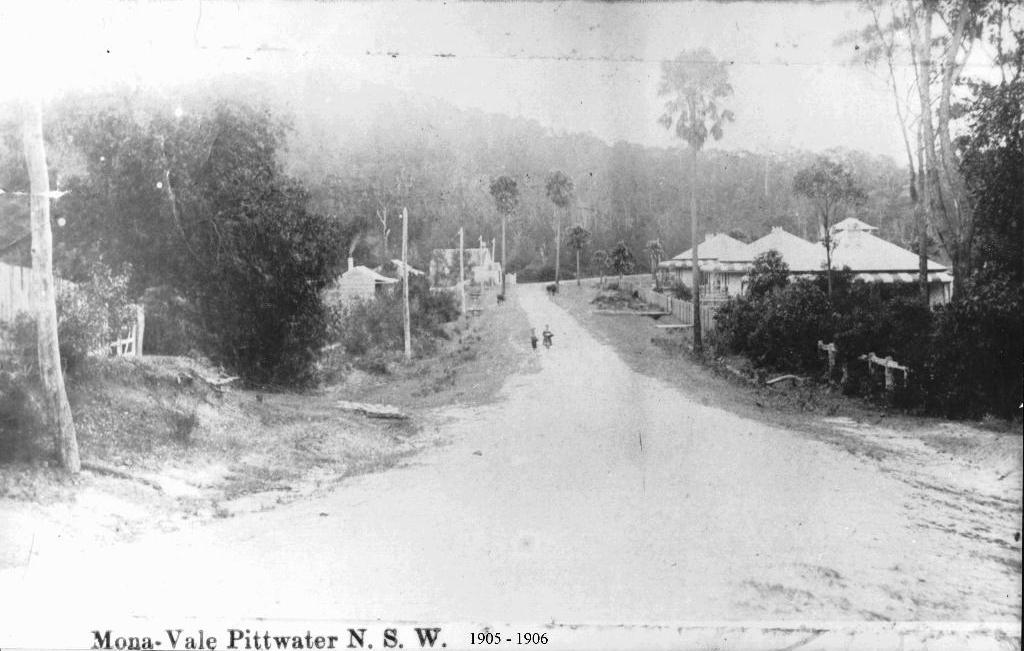
Mona Vale circa 1905 - looking towards Bayview. Mona Street runs off to the bottom right of this picture. To the left is St John's Church of England which was moved from Mona Vale headland, where it had been installed on the Boulton's Farm
Mr. Arter was a Lithgow businessman who came to live near the corner of Waterview St., Mona Vale, with his family. Mary Arter (Mr. Johnson’s mother had looked after her younger brothers and sisters from the age of 12 or 14, after their mother died. Mr. Johnson showed me his parent’s marriage certificate, showing the date of marriage 26/8/1903, and Mary’s age as 21 years. Mr. Johnson believes houses A, B, C were built prior to Mary’s marriage. Mrs. F. Lewis told Mr. & Mrs. Johnson that Mary said she was 17 when House A was built. Mr. Johnson recalls the bricks for the houses were obtained from Wilcox in Bassett St. area, and later from Mona Vale Rd.
Mr. Johnson’s paternal grandfather, who married Louisa Oliver, built the first house at Church Point. This house has been restored and re-decorated. Mr. Johnson has a photo of his grandfather, and he recalls how he and his brother would leave Mona Vale at 4.00am and run or walk behind grandfather’s horse and cart, as it carried wood for baker’s ovens or for building at Manly. After lunch of half a loaf of bread each with cheese, the boys enjoyed the cart ride back as groceries were carried back.
Mr. Johnson’s mother’s sister was married to Mr. John Oliver who, in an affidavit, described how residents flocked to the wharves when the steamers arrived and unloaded their supplies. The steamer carrying the tin used in the roof of houses A,B,C, would have been unloaded at the Bayview wharf, alongside the present William’s Marine. Mr. Johnson remembers the steamer’s whistle alerted everyone to the approach of the steamers. Mr. John Oliver worked for Mr. Geddes and mentions the ships “Hawkesbury”, “Narara” and “Erringhi”. Mr. Oliver was concerned to maintain the cemetery at Church Point- site of the Methodist Church.
John Oliver lived in the timber cottage at 1624 Pittwater Rd. after his father George. John later built where the Vet is now located.
Mr. Johnson’s father worked as a labourer in the Mona Vale area. On his property along Pittwater Rd. he grew flowers which he sold to the florist at Manly Wharf. He was the first labourer on the Maintenance Dept. of Warringah Shire Council. As the Shire extended to St. Ives, he would ‘travel to St. Ives by sulky, and camp overnight to enable him to maintain the road by filling in the holes in the dirt road, using a shovel and wheelbarrow. Mr. Johnson’s father cut the stone for the building of St. John’s Church at 1624 Pittwater Rd. There are two headstones in the churchyard, originally from the cemetery of the first St. John’s Pittwater on the Mona Vale headland off Grandview Pde. (1871-1888).
(Mr Geddes owned property on “Brick Yard Hill” ½ mile from Wharf, east towards Bayview).
Mr. Johnson has a postcard (as above), dated 1906, showing Pittwater Rd., Mona Vale with the three brick houses on the right, two houses and a wooden Church on the left of the road. Two of the brick houses were named “Esbank” and “Lithgow” (“Bowenfels” may have been the name of the third.) The two wooden houses were occupied by Wilsons and Aldridges. He cannot recall the occupant of the third wooden house. There are two tall cabbage tree palms on either side of the road, opposite house A.
There is a line or telegraph poles on the left-hand side of the road. Mr. Shaw built boats and launched them at the nearby creek. The black berry patch at the right of the picture, is the spot where the girl Godbolt was bitten by a snake, and ran home to near Loquat Valley School. Her mother treated her and she was away from school for four days. As a boy, Mr. Johnson’s Sunday Sport was killing black snakes with a stick in the swamp where the Bayview golf links are now located.
When four years old, Mr. Johnson attended the Mona Vale public School in the old house which still stands next to the lane off Park St. Mr. Morrison was the teacher. When he was Six, Mr. Morrison was the first teacher in the stone Mona Vale School. After the School burnt down, classes moved to La Corniche, with a new teacher and his wife. Mr. Ross and Miss Giddely were teachers when Mona Vale School was rebuilt. The house with the attic at 28 Park St. was built by Mr. Stringer, possibly at the same time as Brock’s was built. (later known as La Corniche).
As a boy, Mr. Johnson and his father used to do odd labouring jobs for Mr. Arter. Mr. Johnson believes Mr. Arter built the Bakery at the same time as the house. There was one baker before Andrieson. When Mr. Johnson was about 14, he worked for Mr. Andrieson, and recalls that young Jack Andrieson playfully tripped him as he ran from the Bakery to the house, with the result that he landed face down in his tray of hot buns. There was no license needed for making or selling bread in those days, but occasionally an inspector checked the weights of the bread. When 16, he worked for Mr. Maisey and he had a photo of himself with the bread cart, when the bakery was operating in Bungan St. Mr. F. Lewis recalls that Mrs. Shreinert Snr. used to serve teas in the side room at House b, before her son was married. The three houses were known as Show places in the district.
The Marshalls & Connelly were two families who lived along the present Mona St., north of Pittwater High School. Homers Dairy was located north of Bassett St.
In the early 1900’s Mr. Boulton was digging wells on a Newport property, and when he heard the lady owner wanted to sell, he said he’d found gold there. Coal shafts were dug uneventfully off Walters Rd. and also at Lane Cove Rd., Ingleside.
Mr. Johnson has an aerial photo -1906- of Bayview wharves, many of which no longer exist.
(The George Johnson’s lived opposite St John’s – George’s parents lived on the corner).
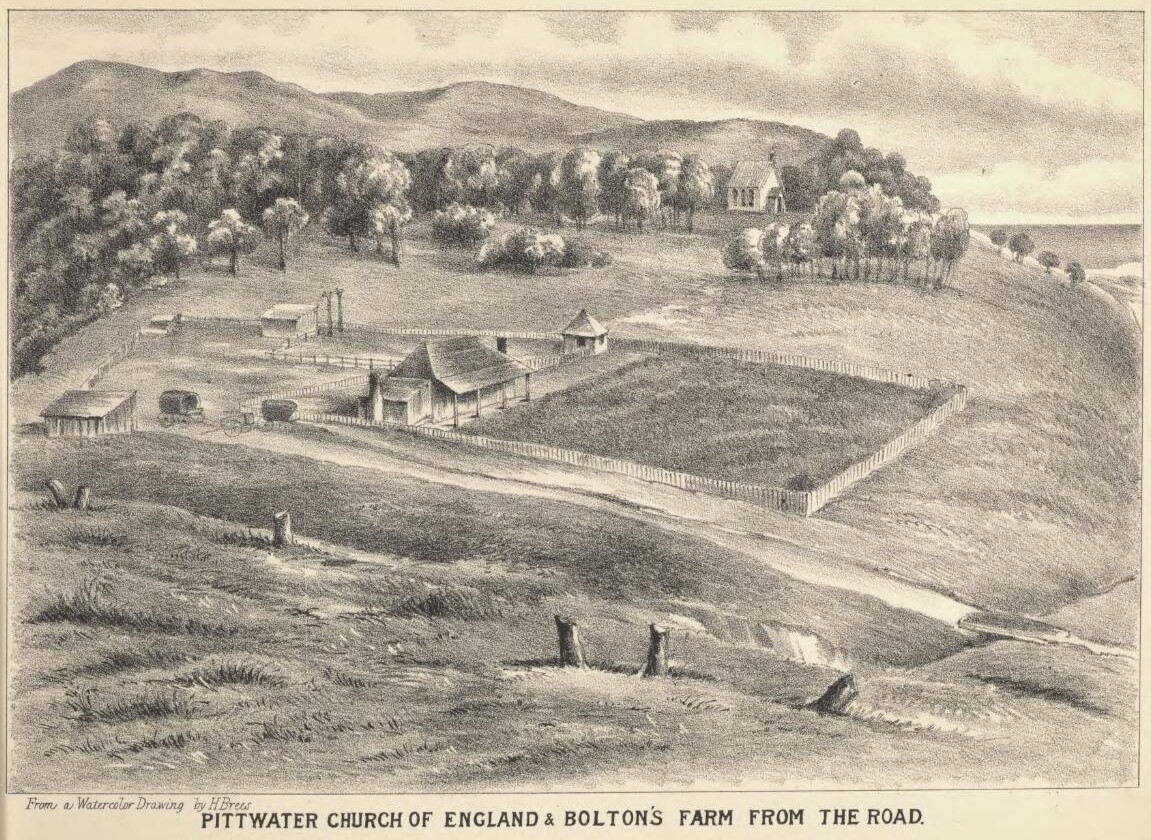
PITTWATER CHURCH OF ENGLAND. BOLTONS FARM FROM THE ROAD. From: Brees, Harold & S.T. Leigh & Co & Mills, Pile & Gilchrist. (1880). The Pittwater and Hawkesbury Lakes album Retrieved from http://nla.gov.au/nla.obj-460123425
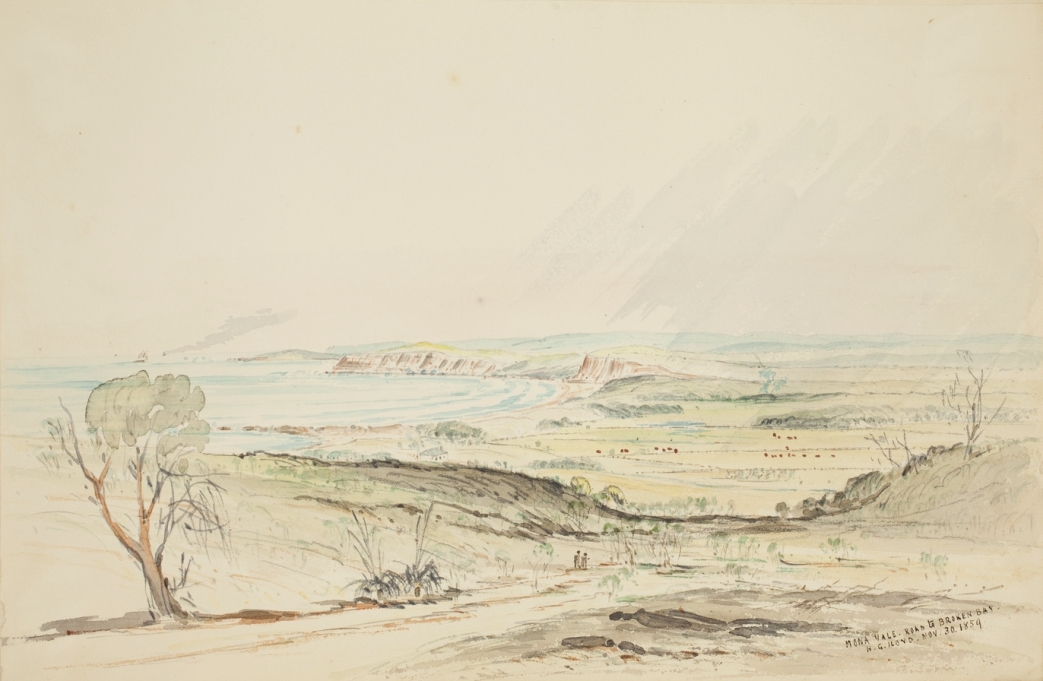
Two men lost their lives in the building of the Barrenjoey Lighthouse and lighthouse keepers cottages. One was William Stark who died in an onsite accident when the jib of a crane fell on him. The second, George Cobb, drowned in a boating accident. Records state both were buried at this original St John's The Baptist Church on the hillside overlooking Bongin Bongin Beach (now Mona Vale Beach), within the 280-hectare Bassett-Darley Pittwater Estate. Their headstones were made by their fellow workers.
Particulars of the fatal boat accident previously reported from Barrenjoey are given. It appears that Mrs. Phillips, her son John Phillips, Joseph Modini, a fisherman, and George Cobb, a foreman in the employ of Mr. Banks, lighthouse contractor here, were returning home in a small boat, when from some unexplained cause the boat filled. Modini and John Phillips succeeded in gaining the shore about aquarter of a mile off, but Mrs. Phillips and George Cobb were drowned. Mr. Black, of H. M. Customs, immediately upon receiving information, started with a party to attempt to recover the bodies. SYDNEY. (1881, April 20). Goulburn Herald (NSW : 1881 - 1908), p. 3. Retrieved from http://nla.gov.au/nla.news-article117443807
The church itself was consecrated in the Spring of 1871:
ST. JOHN BAPTIST- PITTWATER.-This school-church, or Chapel-of-ease to St. Matthew's, Manly, was opened by license on the 21st instant, being St. Matthew's Day. It is a neat wooden building, 30 x 10 feet, erected on an elevated site from which there is a very 'fine view of the ocean. The site was given by Mr. Edward Darley. The building is not yet finished, but will be shortly: A considerable number of persons from Manly and Broken Bay-the two opposite extremes of tKerflfStriot-^as' well as from the immediate neighbourhood of Pittwater, assembled on the occasion.
About 100 were present at the church. The license was read by Mr. Joseph Cook. The prayers were said by the incumbent, Rev. Ii. Smith, and a suitable sermon was preached from John L, 29.' by the Rev, W, O, Cave Browne-Cave, incumbent of St. Thomas's, Willdtighbr'' The choir of St; Matthew's, Manly, kindly conducted the singing. Tho' offertoiy amounted to £9 10s lOd. This small church, being situated quite in the wilderness, and being the first erected in that part' of tho colony, is appropriately named after the Baptist ; and it is tho earnest prayer {of those through whose exer-tions the building has been HO far brought to compleplotion, that whoever may officiate may, like-the Baptist, preach repentance ; and may also, like him, as the preacher did on that scension, point always to "the Lamb of God who taketh away the sin of the world." Those who have contributed to this good work have conferred an incalculable benefit upon a locality where, until recently-before a service was commenced there by the late incumbent, the Rev. G. Gurney-lamentable' to say. wore to be found adults who had never heard the Word of God.-Australian Churchman. The Empire. (1871, September 30). Empire (Sydney, NSW : 1850 - 1875), p. 2. Retrieved from http://nla.gov.au/nla.news-article60876685
ST. JOHN'S, PITTWATER.
Its Diamond Jubilee.
(BY P. W. GLEDHILL)
The history of Pittwater Is Interwoven with the life of the first Governor, Captain Arthur Phillip, R.N., who, within six weeks of the establishment of the settlement at Sydney Cove, visited Broken Bay, and discovered on March 3, 1788, "a beautiful stretch of water to the south, which he honoured with the name of Pittwater, after the then Prime Minister of England." This event Is commemorated by a cairn, erected by the Manly, Warringah, and Pittwater Historical Society, at Barrenjoey.
The history of the Anglican Church of St. John the Baptist, Pittwater, dates back to the year 1871, when the church was opened for divine worship on St. Matthew's Day, September 21. The ceremony was performed by the Rev. Cave Browne Cave, incumbent of St. Thomas' Church, Willoughby (now known as North Sydney), assisted by the Rev. Edward Smith, incumbent of St. Mat-thew's Parish Church, Manly, which included the district of Pittwater and Broken Bay. A considerable number of people were present, who manifested much interest in the proceedings. They came from the neigh-bourhood and different parts of Broken Bay, together with some visitors from St. Mat-thew's Church, Manly, and crowded the church to excess. The service was of a very impressive nature, during which the licence for the opening of the building was read by Mr. Joseph Cook, church warden of the parish church. The sermon was preached from St. John I, 29, by the Rev. Cave Browne Cave. The site for the erection of this neat wooden edifice was given by Mr. Edward Darley, overlooking the ocean and near the eleven-mile peg on the Newport-road. The "Sydney Morning Herald" of October 2, 1871, referred to this small church as "being situated quite in the wilderness, and being the first erected in that part of the colony." Standing, as it did, in a prominent position, the building was an object of interest to the travellers by the coach travers-ing the old main road to Newport.
The "Herald" also relates that "those who have contributed to this good work have conferred incalculable benefits upon a locality where, until recently, before a service was commenced by the late incumbent, the Rev. G. Gurney-lamentable to say, were to be found adults who had never heard the word of God."
REMOVED TO NEW SITE.
On May 24, 1873, the Bishop of Sydney' (Most Rev. Frederic Barker, D.D.) made an official visit to Pittwater, and preached in St John's Church to a crowded congregation. As the years went by a great number of the inhabitants moved away from the estate in the vicinity of the church, and It was decided In the year 1888 to remove the building to Bay View-road to a site adjoining Mr. George Mclntosh's 43-acre selection known as Winnererreny. The land was transferred to the Church authoilties on March 25, 1888, and shortly afterwards the building was removed to the new site. During the years 1892 and 1893 the church was transferred from the Parish of Manly to the district known as St. John's, Pittwater, with the Lower Hawkesbury, Bar Island, and Greendale, now Brookvale. The curate in charge of this district was the Rev. Arthur Galley, who resided at Greendale; but In 1895 It was again attached to the Parish of Manly.
During the year 1906 it was decided to erect a new stone edifice in the township of Mona Vale in place of the building that was fast falling into decay. The new building being completed, was opened on February 4, 1906, by the Rev. John H, Maclean, rector of Christ Church, North Sydney, assisted by the Rev. C. B. Elwin, acting rector of the Parish of Manly, during the absence of the Rev. A. G. Stoddart In England.
The Diocesan Synod of 1921 gave approval to the petition to make Narrabeen and Mona Vale Into a mission district, and the Arch-bishop appointed the Rev. F. G. Greville as the first minister of the new district of St. Faith's, Nanabern, with St. John's, Mona Vale, who remained in charge until September, 1925. when he was succeeded by the present rector, the Rev. N. M. Lloyd. Mr. Lloyd was the first rector, the district having been elevated to a parish in September, 1925. ST. JOHN'S, PITTWATER. (1931, September 19). The Sydney Morning Herald (NSW : 1842 - 1954), , p. 7. Retrieved from http://nla.gov.au/nla.news-article16828202
James Booth
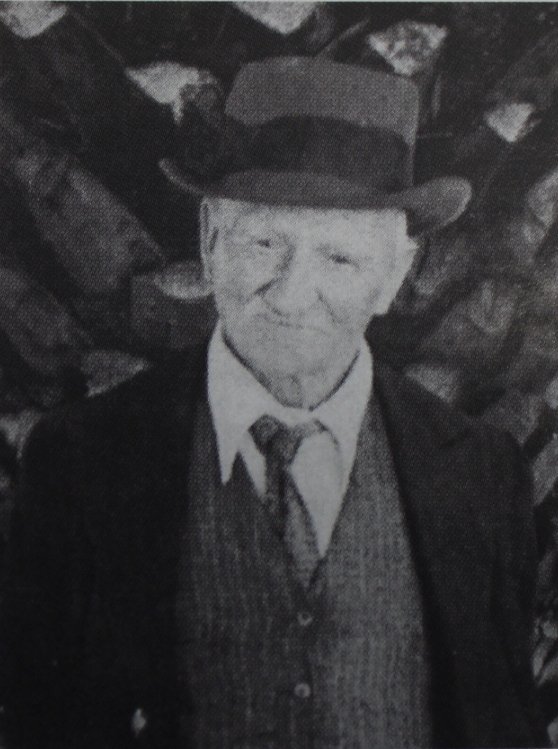 James Booth, the son of a Camden mason Aaron and his wife Eliza, was a carpenter and stonemason by trade himself. He left a lasting legacy of wonderful buildings from Manly to Palm Beach.
James Booth, the son of a Camden mason Aaron and his wife Eliza, was a carpenter and stonemason by trade himself. He left a lasting legacy of wonderful buildings from Manly to Palm Beach. 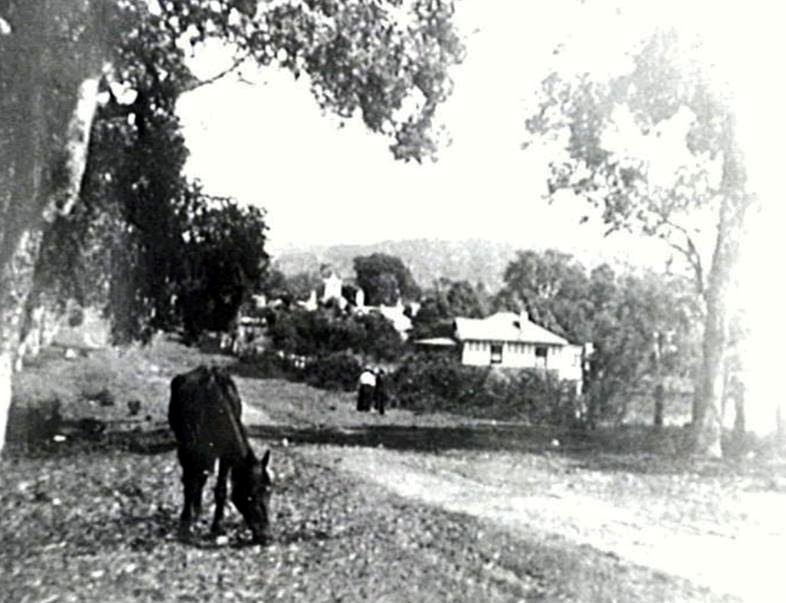
Dungarvon & Samuel Stringer
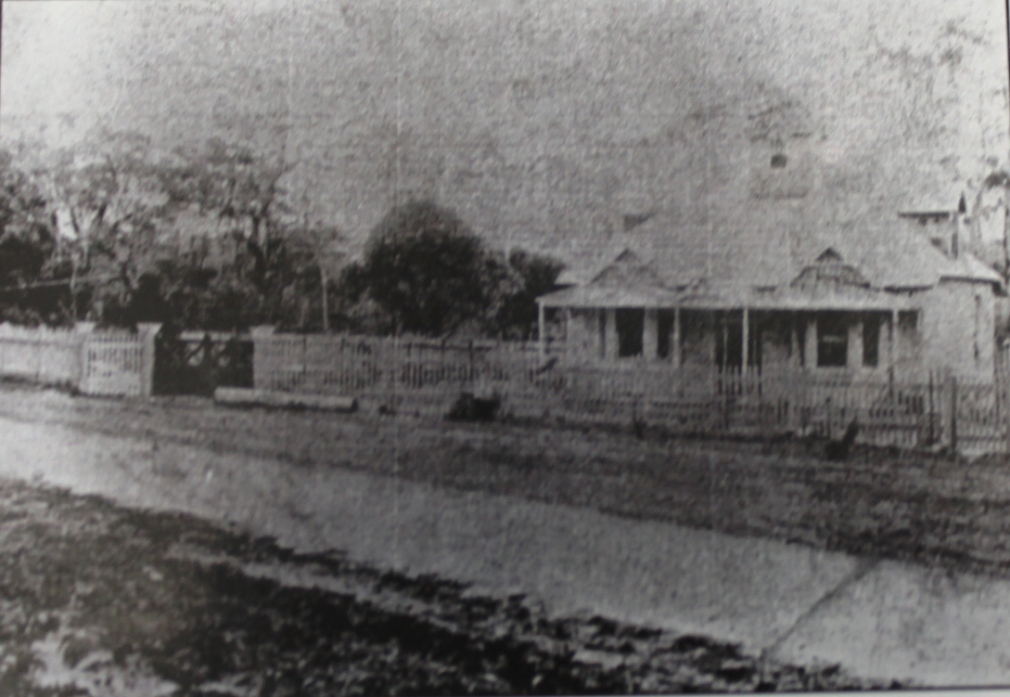
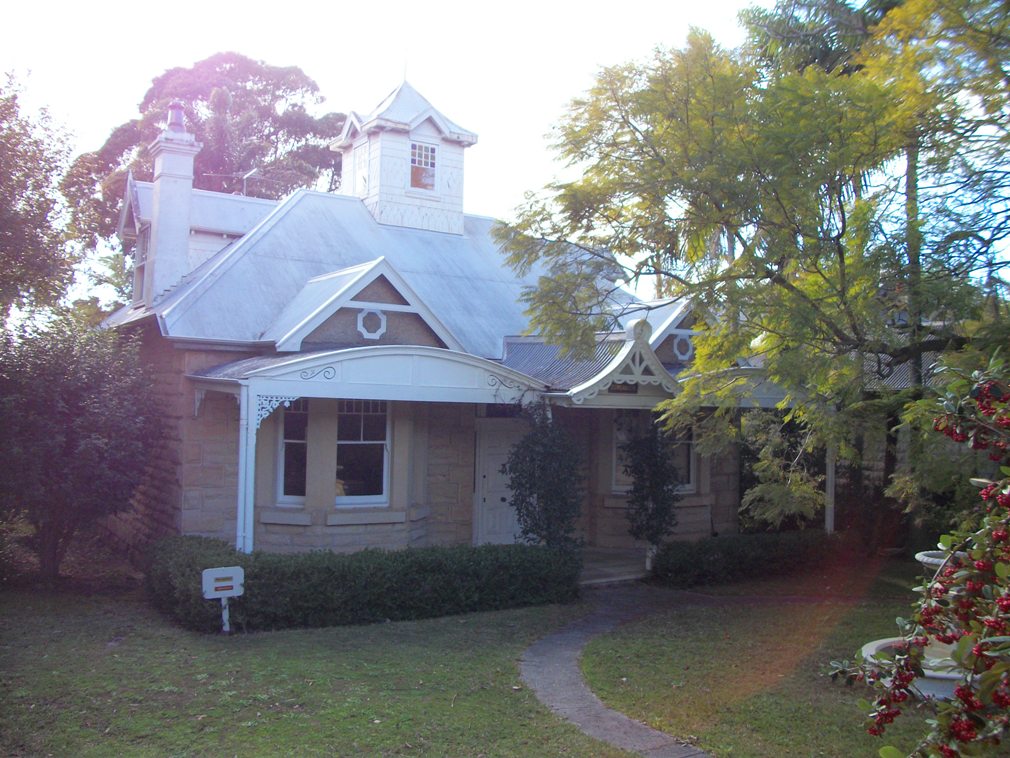
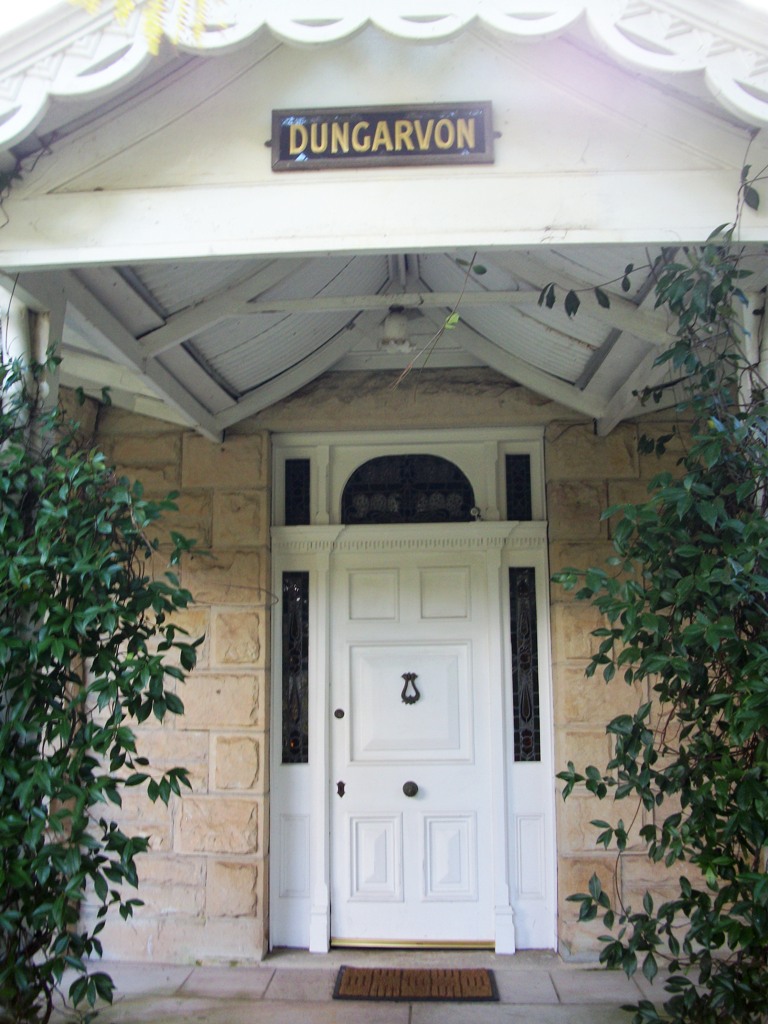
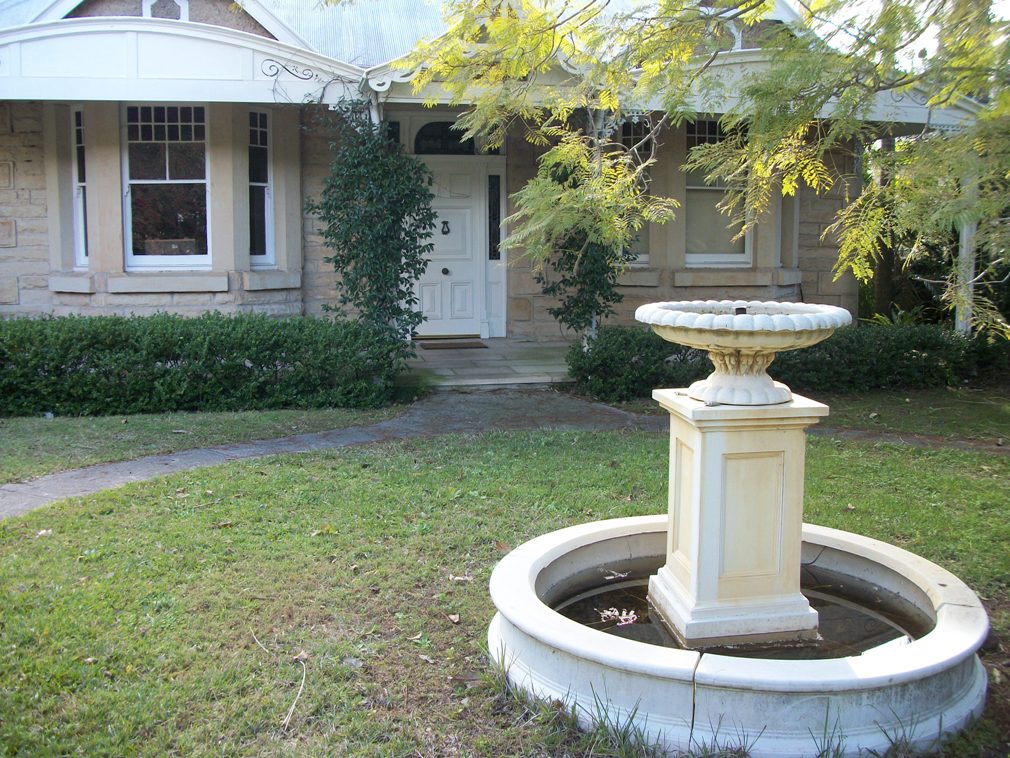
MONA VALE SCHOOL.
A deputation Introduced by Dr. Arthur, M.L.A., yesterday urged upon the Minister for Public Instruction the necessity of opening a Public school at Mona Vale. It was suggested that either a new school building should be erected or the school at Church Point should be transferred to Mona Vale. The Importance of the place was rapidly growing owing to the subdivision of estates for residential purposes.
Mr. O'Conor said It appeared to him that the trend of the population was still unsettled. In addition to that the establishment of small schools was a great expense, and he was quite opposed to any material increase in the number of small schools. He would have a report made on the subject, but he reminded the deputation that the duty of parents did not cease on merely sending their children to school. He would arrange with the district inspector to confer with the parents to see it some satisfactory arrangement could not be come to. MONA VALE SCHOOL. (1906, May 2). The Sydney Morning Herald (NSW : 1842 - 1954), , p. 10. Retrieved from http://nla.gov.au/nla.news-article14768924
By Spring 1906 (some sources state July, 1906) the school at Bayview was closed, Mr. Morrison transferred to Mona Vale teaching temporarily in a premises owned by Samuel Stringer, of Park Street, with an assistant teacher in a Miss Selman helping him. The Morrison family moved to Manly at this time and Mr. Morrison travels by horse-drawn sulky to and from Mona Vale until he is transferred to Freshwater school in 1912 when that opened in September, or Spring, 1912..
Mr Stringer's daughter had begun teaching in Mona Vale around 1904. Samuel was a carpenter contracted by George Brock to build the stables, the ballroom and the Oaks villa on the Brock Folly Estate in 1902. A few Stringer Family Notes;
Marriage: 1780/1873 STRINGER SAMUEL POTTER SARAH ANN BATHURST
DISTRICT COURT. (Before Judge Heydon.)
DISPUTE AS TO BRICKS. Moore v Stringer.
Mr. H. C. G. Moss appeared for the plaintiff, and Mr. Carter Smith for the defendant. This was an action brought by Ellen Moore, of Manly Vale, Manly, wife of James Arthur Moore, against Samuel Stringer, sen., of Mona Vale, near Manly, to recover the value of 7050 bricks, alleged to have been used by the defendant without plaintiff's authority. The defence was that the plaintiff's husband had been paid for the bricks, and had given defendant a receipt, but plaintiff contended that her husband had no authority in the matter. His Honor said It was quite clear that the bricks were the property of Mrs. Moore, and not of her husband. Verdict for plaintiff, £10, but no order made as to costs.DISTRICT COURT. (1905, February 8). The Sydney Morning Herald (NSW : 1842 - 1954), p. 5. Retrieved from http://nla.gov.au/nla.news-article14672752
STRINGER.-Killed in action in France, September 2, 1918, Corporal Frederick Stringer, 55th Battalion, after 2 years and 10 months' active service abroad, dearly loved son of Mr. and Mrs. Samuel Stringer, Mona Vale, and brother to William, Henry, Sam, Lily, Nell, and Annie, he gave his life for his country. Family Notices. (1918, September 28). The Sydney Morning Herald (NSW : 1842 - 1954), p. 12. from http://nla.gov.au/nla.news-article15804678
Wife’s death: 20985/1919 STRINGER SARAH A CHARLES ANN MANLY
Samuel George Stringer
STRINGER-The Relatives and Friends of Mrs MATILDA M STRINGER and FAMILY of 99 High street Carlton and Mr H STRINGER are Invited to attend the Funeral of her late beloved HUSBAND and their loving FATHER and BROTHER Samuel George Stringer, Junior which will leave the Private Mortuary Chapel of Mr Charles Kinsela. of 143 Oxford street Sydney THIS WEDNESDAY at 1 p m for the Baptist Cemetery Woronora, via Central Station Funeral train leaves Central at 1.46 p m and Carlton at 2 p m
CHARLES KINSELA Phone FL413S 7 B_Hurstville
STRINGER-LOYAL CARLTON N I O O F (Oddfellows) -Officers and Members of the above Lodge are requested to attend the Funeral of our late Bro .SAMUEL G STRINCER which will take place at Woronora Cemetery THIS DAY (See family notice ) F WILLIAMS N G _W SUGGATE Secretary. Family Notices. (1932, December 7). The Sydney Morning Herald (NSW : 1842 - 1954), p. 9. Retrieved from http://nla.gov.au/nla.news-article16936092
STRINGER.-In loving memory of my dear husband and our father. Samuel stringer Junr., who passed away December 5, 1932, Peacefully sleeping, free from pain, In God's own time we will meet again, Family Notices. (1936, December 5). The Sydney Morning Herald (NSW : 1842 - 1954), p. 16. Retrieved from http://nla.gov.au/nla.news-article17297998
Samuel Stringer snr.:
STRINGER.-January 3. 1933. at Hurstville. Samuel Stringer (senior), late Mona Vale, beloved father of William. Henry. Lily. Nell, and Annie
STRINGER-The Relatives and Friends of Mr and Mrs W STRINGER Mr and Mrs H STRINGER, Mr and Mrs F OLIVER Mr and Mrs T ELLIS Mr and Mrs J CLIFFORD and FAMILIES are invited to attend the Funeral of their beloved FATHER and GRANDFATHER Samuel Stringer which will leave his late residence 62 Lily street Hurstville THIS THURSDAY at 145 n m for the Methodist Cemetery Manly CHARLES KINSELA Family Notices. (1933, January 5). The Sydney Morning Herald(NSW : 1842 - 1954), p. 7. Retrieved fromhttp://nla.gov.au/nla.news-article16943261
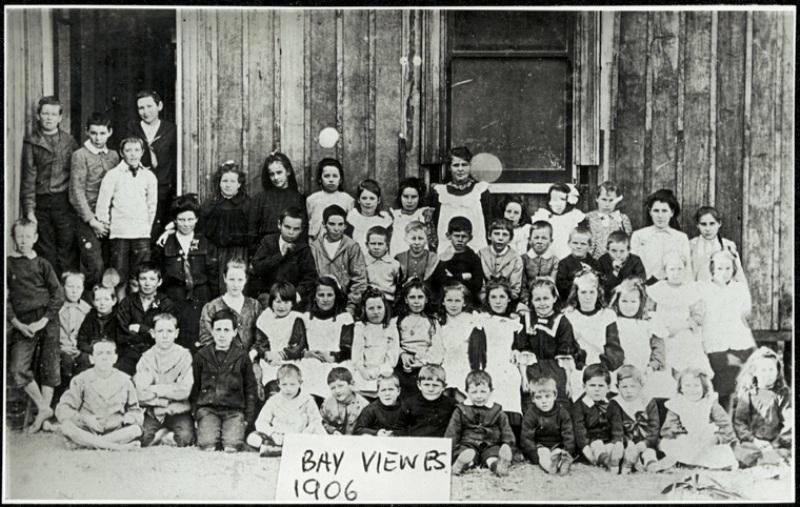
Bay View PS students 1906, Image No.: 15051_a047_000882, courtesy State Records NSW
Transfers and Appointments - Teachers: Mr. S. Morrison, from Newport to Mona Vale;SCHOOLS AND SCHOOL TEACHERS. (1906, September 5). The Sydney Mail and New South Wales Advertiser (NSW : 1871 - 1912), , p. 626. Retrieved fromhttp://nla.gov.au/nla.news-article163682045
Mr. S. Morrison, who for 22 years has keen in charge of the Bayview Public School, but who on the closing of the school was promoted to the new school recently established at Mona Vale, was presented on Wednesday with a handsome marble timepiece in appreciation of his services, and In recognition of his Interest in the pupils. The presentation was made by an old pupil, Mr. W. Austin. Mrs. Morrison was presented with a silver mounted hall set. PERSONAL. (1906, November 27). The Sydney Morning Herald (NSW : 1842 - 1954), , p. 6. Retrieved from http://nla.gov.au/nla.news-article14807260
Samuel Stringer arrived to Australia from England in 1859 with his parents Samuel Snr and Jane and his five siblings. They arrived aboard the ship Parsee. He married Sarah Anne Potter (born 1853) on the 20th of November, 1872 at Kelso, Bathurst. They had nine children.
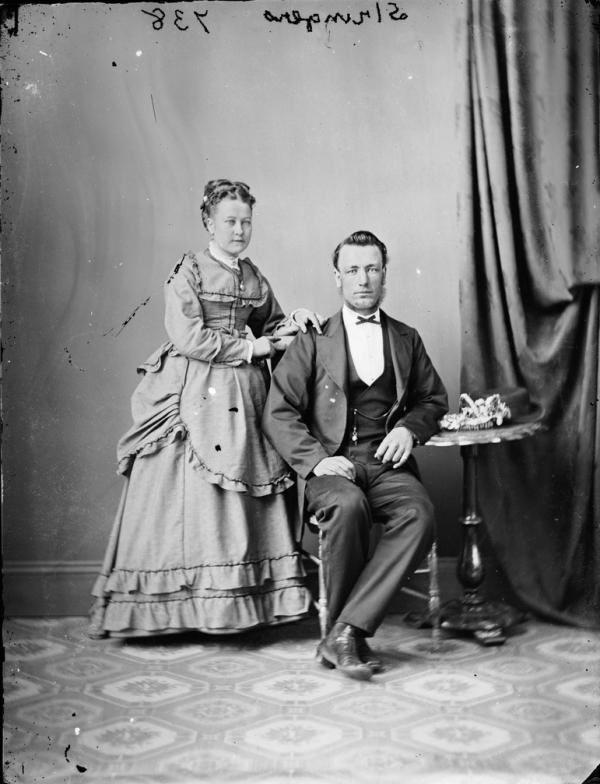
[Builder Samuel ?] Stringer and his wife [Sarah, nee Potter ?] circa 1870 -1875. Image No.: a2823823, courtesy State Library of NSW
Children of Sarah Ann Potter and Samuel Stringer are: William Charles Stringer, b. 1873, Hill End, John Henry Stringer, b. 1875, Pyrmont,Samuel G. Stringer, b. 1877, Sydney, Arthur Frederick Stringer, b. 1879, Pyrmont, Eva Annie J. Stringer, b. 1880, Pyrmont, Lilian May Stringer, b. 1882, Pyrmont, Eleanor "Nell" Mary Stringer, b. 1884, Pyrmont, Edith Annie Stringer, b. 1887, Pyrmont, Sydney, Lydia E. F. Stringer, b. 1888, Pyrmont.
"Mr. Stringer bought 6 adjoining blocks of land in Park Street Mona Vale for 125 pounds, which formed section 1 of the Mona Vale Estate. The vendor was Hon. Louis Francis Heydon and the sale was transacted on 21/07/1902. On 23/10/1903 Stringer borrowed 200 pounds from Heydon “for the purpose of building on the land”. Building is thought to have commenced in 1904. He also built the imitation sandstone cottage next to Dungarvon, No. 26 Park Street. In 1922 Stringer was over 70 years old and sold up Mona Vale and moved to Hurstville. He died in 1931." - Guy & Joan Jennings – Mona Vale Stories (2007)
This school was located in Park Street, Mona Vale:
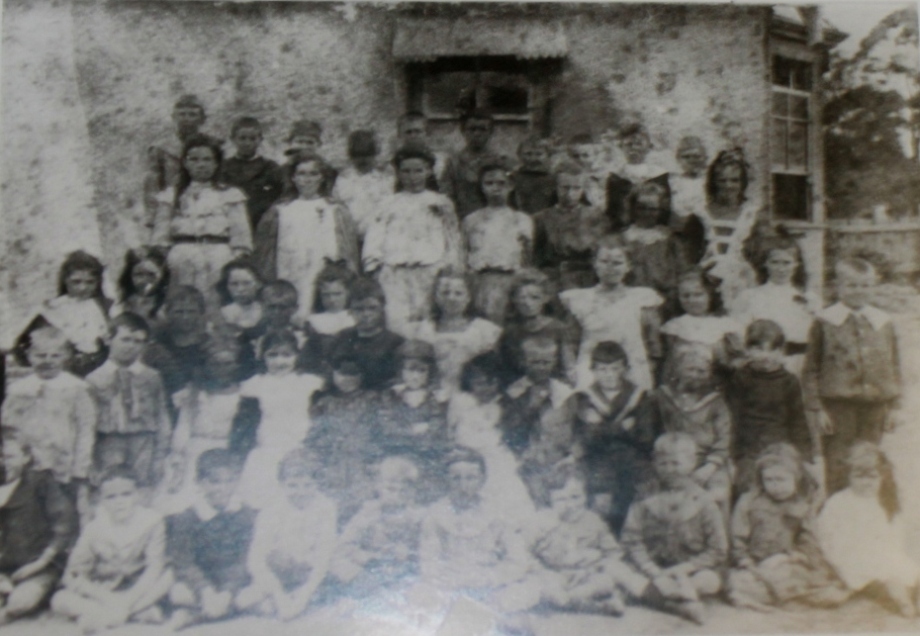
Mona Vale School in Stringers cottage, Park St, Mona Vale
“..Mona Vale had a population that demanded a Public School. Miss Stringer had opened a private school. There were too many children to convey to Bayview by coach, so the Department decided to close Bayview Public School and open one at Mona Vale. Two rooms of a new cottage belonging to Mr. Stringer were, with little difficulty converted into fairly comfortable schoolrooms.” - Samuel Morrison.
SCHOOL FLAG UNFURLED.
Mr. Hogue, Minister for Education, and Mrs. Hogue visited the Newport Public School on Saturday afternoon, and Mrs. Hogue unfurled the ling which the school has received from Newport, In the Isle of Wight, In exchange for one sent there some months ago. The flag, which is a Union Jack in large dimensions, is beautifully worked in silk, and bears the Newport arms in its centre. There was a large gathering of residents from the surrounding districts, and the children from the Newport, Narrabeen, and Mona Vale attended.
Mrs. Hogue broke the flag. As she did so the Kuringai Shire Band, which was in Attendance, struck up the National Anthem, and then three cheers were given for the flag. The children sang a number of patriotic songs, and appropriate speeches were made by Mr. Hogue and several others. SCHOOL FLAG UNFURLED. (1910, June 20). The Sydney Morning Herald (NSW : 1842 - 1954), , p. 10. Retrieved fromhttp://nla.gov.au/nla.news-article15160093
Visit: The Newport School 1888 to 2016
MONA VALE.-Empire Day celebrations commenced by the unfurling of a large Union Jack, presented by Mrs. F. Anderson. The children sang patriotic songs, and addresses were delivered by Mrs. Anderson, Messrs. Powell, Nichol, and Caton. After the distribution of prizes, refreshments were served to the children, who engaged in sports. EMPIRE DAY. (1911, May 27). The Sydney Morning Herald(NSW : 1842 - 1954), p. 9. Retrieved from http://nla.gov.au/nla.news-article15211332
On the 9th of March 1911 Mr. James Booth, the local stonemason, submitted a successful tender for the construction of a tiled two room schoolhouse. In the wonderful book compiled by Beverly Lewis for 100th Celebrations 'Mona Vale Public School - celebrating 100 years...' the rooms are described as "22' x 21'6, designed to accommodate 40 primary and 44 infants. A covered verandah, two fireplaces and grounds heavily covered in timber."
In October 1912 the school left the Stringer premises to the new schoolhouse in Narrabeen Street - a few Mona Vale schoolchildren insights from that time showing the children were kept aware of the world around them and also what was happening locally - such as the opening of the tram line to Narrabeen:
DISTRESS IN ENGLAND.
The Lord Mayor acknowledges the receipt of the following additional contributions to the fund established to relive the distress of starving women and children in Great Britain: Amount already acknowledged. £1418 3 0 "The Bulletin" .'.. 100 0 0
Children Mona Vale Public School, 13/ . 2 3 0 DISTRESS IN ENGLAND. (1912, April 8).The Sydney Morning Herald (NSW : 1842 - 1954), , p. 10. Retrieved from http://nla.gov.au/nla.news-article15323784
NARRABEEN TRAM. CHILDREN'S ESSAY PRIZES.
Children attending the Narrabeen, Mona Vale, and Newport Public School, at the Invitation of the tram opening celebration committee, wrote essays on 'The Pleasure to be Derived to the District.' The adjudicator, the editor of the 'Town and Country Journal,' has awarded the prizes as follows:— Narrabeen: Gertrude Hirsch. 1; Heather Thackery 2, Clement Snow, 3; Iris Lillington, 4. Mona Vale: Harold Hewitt, 1 : Ruby Kuhlmorgan. 3; Walter Peterson, 3; Richard Blackford, 4. Newport: Isabel Hastie. 1: Vera Russell, 1; John Williams, 3; Vera Lewis, 4. Sixteen competitors sent essays from Narrabeen, 17 from Mona Vale and 19 from Newport. The school masters, Messrs. Thompson (Narrabeen), Morrison (Mona Vale), and Harper (Newport) gave every assistance to the committee, and were complimented on the work of their pupils. NARRABEEN TRAM. (1912, July 19).Evening News (Sydney, NSW : 1869 - 1931), , p. 2. Retrieved fromhttp://nla.gov.au/nla.news-article114480334
A growing younger population required a bigger school with bigger grounds:
NOTIFICATION OF RESUMPTION OF LAND UNDER
THE PUBLIC WORKS ACT, 1912.
IT is hereby notified and declared by His Excellency the Governor, acting with the advice of the Executive Council, that be much of the land hereunder described as is Crown land has been appropriated, and so much thereof as is private property has been resumed, under the Public Works Act, 1912, for the following public purpose, namely, a Public School at MONA VALE, and is vested in the Minister of Public Instruction on behalf of His Majesty the King for the purposes of the Public Instruction Act of 1880.
Dated the thirtieth day of April, one thousand nine hundred and forty-seven.
J. NORTHCOTT, Governor. By His Excellency's Command,
R. J. HEFFRON, Minister of Public Instruction.
Description of Land referred to.
All that piece or parcel of land situate in the Shire of Warringah, parish of Narrabeen, county of Cumberland and State of New South Wales, being allotment 10 of section 7 in the village of Turimetta,—having an area of 1 rood and 37h perches or thereabouts, and said to be in the possession of Thomas Dudley Leafe (administrator of the estate of Thomas Leafe, deceased).
Also, all that piece or parcel of land situate as above, being allotment 11 of section 7 in the village of Turimetta,—having an area of 1 rood and 32 perches or thereabouts, and said to be in the possession of Hugh Rusden Oilman.
Also, all that piece or parcel of land situate as above, being allotment 12 of section 7 in the village of Turimetta, and also being the land comprised in Conditional Purchase No. 44-53 (Metropolitan Land District),—having an area of 1 rood and 32 perches or thereabouts, and said to be in the possession of Rudolph Frederick William Edward Wilkinson. NOTIFICATION OF RESUMPTION OF LAND UNDER THE PUBLIC WORKS ACT, 1912. (1947, May 16). Government Gazette of the State of New South Wales (Sydney, NSW : 1901 - 2001), p. 1148. Retrieved from http://nla.gov.au/nla.news-article224768714
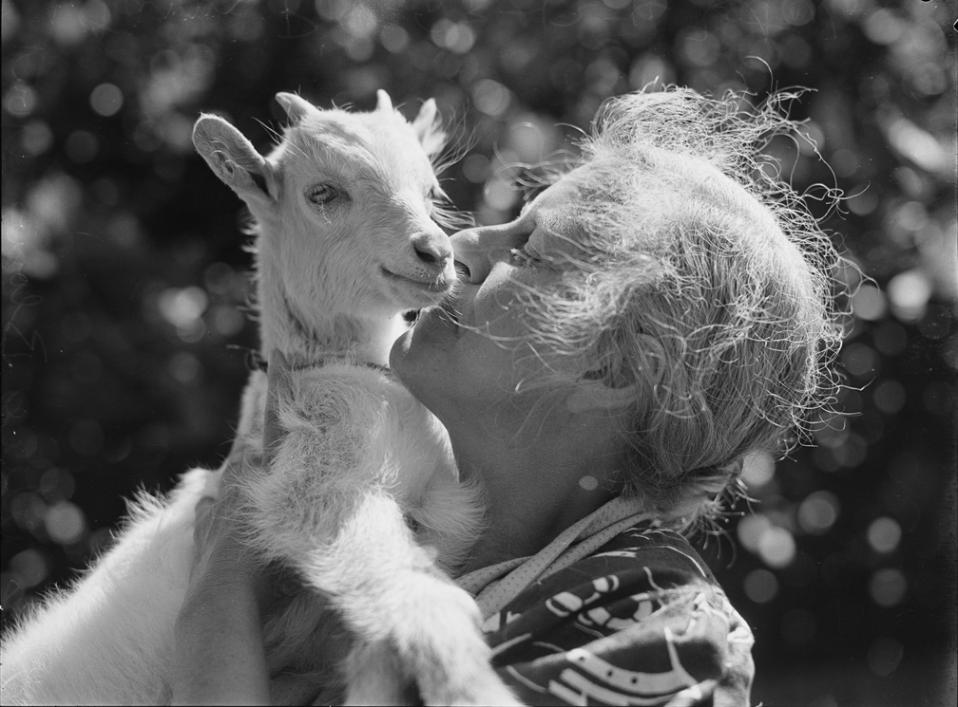
References And Extras
- TROVE - National Library of Australia
- Shelagh Champion OAM and George Champion OAM, in their Profiles of the Pioneers in Manly, Warringah and Pittwater (1996 - revised 2013)
- Dawson, Tony, Bassett-Darley Estate, Dictionary of Sydney, 2008, http://dictionaryofsydney.org/entry/bassett_darley_estate
- Roads In Pittwater: The Barrenjoey Road
- The Murder of David Foley by Shelagh Champion OAM
- Maria Louisa Therry
- Taramatta Park, Mona Vale (Turimetta - Village Park - opened 1904)
- Pittwater Reserves: The Green Ways; Mona Vale's Village Greens A Map Of The Historic Crown Lands Ethos Realised
- Leon Houreux
- Pittwater Restaurants You Could Stay At The Rock Lily Hotel – Mona Vale
- The Oaks - La Corniche, Mona Vale
- Pittwater Roads II: Where the Streets Have Your Name - Warriewood
Also Available:
- Pittwater Roads II: Where the Streets Have Your name - Scotland Island
- Pittwater Roads II: Where the Streets Have Your Name - Newport Beach
- Pittwater Roads II: Where the Streets Have Your Name - Clareville
- Pittwater Roads II: Where the Streets Have Your Name - Avalon Beach
- Pittwater Roads II: Where the Streets Have Your Name - Warriewood
- Pittwater Roads II: Where the Streets Have Your Name - Elanora Heights, Green Hills and Ingleside
- Roads In Pittwater: The Bay View Road
- Roads In Pittwater - The Barrenjoey Road
- Motor Car Tours To And In Pittwater Show Us The Way This Place Once Was
- Roads To Pittwater: The Wakehurst Parkway Along Old Oxford Falls Track
- Roads To Pittwater: The Pittwater Road
- Roads To Pittwater: The Sandspit Punt and Spit Bridge
- Roads To Pittwater: The Mona Vale Road
- My Holiday by Charles de Boos – 1861
GOVERNMENT AND GENERAL ORDERS.
COLONIAL SECRETARY'S OFFICE, 20th AUG. 1823.
THE GOVERNOR, with the View of relieving Settlers, residing in remote Districts, from the Inconvenience and Expence to which they are exposed in attending the ANNUAL GENERAL MUSTER, at the Stations hitherto assigned for taking it; and with the Hope that such Musters may be more accurately made, under the Superintendence of the Magistrates residing in or near to each District, than can be expected from the previous Arrangements which were framed for a very circumscribed Population, when compared with that which the Colony now possesses;
has deemed it expedient to devolve on the Magistrates the important Duty hitherto performed by the GOVERNOR; personally:- It is therefore ordered and directed, that the ANNUAL MUSTERS of the INHABITANTS shall henceforth be taken by the Magistrates residing in the several Districts, so far forth as Circumstanced will admit; and as no Officer of the Commissariat will in future be required to attend, the respective Magistrates are directed to take the Accounts of Land and Stock in Possession of the several Settlers,
paying particular Attention to the accurate Registry of the Brand used by every Stock Owner, a correct Delineation of which is to be inserted in the appropriate Column of the Books, with which they will be furnished previously to the approaching Muster.
As the Want of proper Accommodations, and various Circumstances, prevent the Possibility, at present, of holding a Muster in every District of the Colony, the Magistrates, in those Parts where Musters cannot beheld, are requested to attend the Muster at that Station to which their respective Districts are assigned, and to assist the Magistrates presiding at those Stations, especially as regards the Muster for the District wherein they exercise the principal Magisterial Authority.
The Stations, fixed for holding the Muster for the present Season, are
And it is notified lastly, that all Persons, whether free or bond, residing in the District of Broken Bay, Pitt-water, or North Harbour, will be mustered this Year at Sydney, instead of at Windsor.
By His Excellency's Command,
F. GOULBURN, Colonial Secretary
GOVERNMENT AND GENERAL ORDERS. (1823, August 21).The Sydney Gazette and New South Wales Advertiser (NSW : 1803 - 1842), p. 1. Retrieved from http://nla.gov.au/nla.news-article2182142
And it is notified lastly, that all Persons, whether free or bond, residing in the District of Broken Bay, Pitt-water, or North Harbour, will be mustered this Year at Sydney, instead of at Windsor.
BY HIS EXCELLENCY'S COMMAND,
F. Goulburn, Colonial Secretary. Government and General Orders. (1824, September 1). The Sydney Gazette and New South Wales Advertiser (NSW : 1803 - 1842), p. 1 Supplement: Goverment and General Orders.. Retrieved from http://nla.gov.au/nla.news-article2183170
MR LYONS
Begs to inform the Public that he is entrusted to
SELL BY AUCTION,
At the London Tavern, George-street, at 12 o'clock, on THURSDAY, the 17th instant, AN IMPROVED ESTATE OF LAND, containing by Deed of Grant from the Crown, Two Hundred Acres, lying and situate at Pitt-Water, in the County of Cumberland, by the waters of which it is bounded on the North side, Thirty-five Acres of which are cleared, and Twenty-five Acres in a state of Culture.
It is divided into two parts, one containing One Hundred and Fifty Acres, principally fenced in, on which stands erected a House, Barn, and Granary, with other useful Offices on the remaining fifty Acres, is a House at present Lensed to a good Tenant.
A quantity of valuable Timber of various descriptions is on the Estate; also, an inexhaustible number of Shells for Lime, a plentiful supply of good fresh Water in the driest seasons, and the important advantage of an extensive Stock-run.
PITT-WATER, is proverbial for its picturesque and romantic scenery, so well as for the great quantity of Fish of all descriptions; consequently with these advantages and the contiguity of this Estate to the Ocean, it would be" a most enviable spot for a Marine Villa for the residence of a respectable Family, its distance also from the North side of Sydney being so very short, that a few hours journey either over land or by water, would enable the Proprietor to transport its produce to market, an advantage few Agricultural Establishments possess.
The Quit Rent is only 4s. per annum ; consequently agreeably to a recent Government Order, the small sum of Two Pounds would redeem it for ever.
ALSO,
Immediately after the above,
A FARM of Twenty Acres of Land, held by a Deed of a Peppercorn Grant from the Crown, situate in that flourishing Agricultural district the KURRKYJONG, adjoining the celebrated Farm of Mr. D. Horton, which will be sold without reserve.
Terms made known at time of Sale.
The Title Deeds of both Estates lie for inspection at the Office of Mr. S Lyons. - Advertising. (1834, April 10). The Sydney Herald (NSW : 1831 - 1842), p. 3. Retrieved from http://nla.gov.au/nla.news-article12849072
THE STORY OF MONA VALE.
(From the Empire.)
[Some of the facts disclosed below are so strange, and the condition of things stated to have prevailed for a long period and even to be yet existing, at Pitt Water, so extraordinary, that the writer thinks it necessary to say that, his information having been derived from' investigations made personally on the spot, and confirmed in all essential particulars by official and other documentary evidence, the truth of the statements may be fully relied upon.—Ed. Empire.]
EVERY person in the habit of paying the slightest attention to the proceedings in our local criminal courts, must have noticed for several years past frequently recurring cases involving charges and counter-charges of perjury, cattle-stealing, assaults, and other crimes, between the members of certain families residing in the district of Pitt Water. The latest result of these criminal charges is that one of the litigants named Farrell, a man of considerable property, both freehold and personal, is now undergoing a sentence of seven years' hard labour. He was convicted on the 30th December, of the malicious destruction of cattle, the property of a Mr. Therry, his nearest neighbour. The counter charges brought by Farrell, be fore his conviction, against Mr. Therry and members of his family, were all dismissed by the magistrate before whom they were investigated, and the result clearly proved that they were concoctions of the most base and wicked description. While these charges and counter charges were pending, we thought it necessary to refrain from publishing many facts which had come to our knowledge respecting the persecution and ruin of the Therry family, and of previous occupants of the Mona Vale estate, by unprincipled neighbours, during a period ex tending over nearly a quarter of a century.
The story of the misfortunes of the family who are the present tenants of the farm of Mona Vale is a most distressing one, and would, if not confirmed by undoubted testimony, be utterly incredible. But bad as have been the sufferings, and great as have been the wrongs of the Therrys, they have, so far, escaped with their lives; while one at least of their predecessors at Mona Vale was foully murdered, in addition to having been persecuted and plundered of his pro perty. The state of things which has pre vailed at Pitt Water during the last twenty or twenty-five years has been such, it is to be hoped, as has never before prevailed in a Christian or any other country. To make the circumstances connected with the wrongs and sufferings of the Therry family intelligible, it is necessary to give something like a twenty-five years' history of the locality in which they live. The district called Pitt Water, as most of our readers are probably aware, is a part of the county of Cumberland, situated on the coast between Port Jackson and Broken Bay. It commences about eight miles north of Manly Beach, and extends along the shores of the Pacific for ten or twelve miles to the waters of Broken Bay. The first farms granted to private settlers, after the formation of the settlement at Sydney Cove in 1788, were in this district, and in former times a con siderable quantity of land was in cultivation there; but for many years past the farms have been almost exclusively used for grazing and dairy purposes. There are not now about eight or ten families in the whole district, although, when tillage was more extensively pursued, the population was larger. Near the middle of the Pitt Water dis trict, that is, about a dozen miles from Manly Beach, is situated the estate of Mona Vale, at present in the occupation of Mr. Therry, as tenant of the heirs or trustees of the late Captain Darley. Mr. Therry's nearest neighbours on the south, or Manly Beach side, are a family part of whose members are named Collins and the others Poyner. On the north, or Broken Bay side, his neighbours are the Farrells. It is the head of the latter family who is now undergoing a sentence of hard labour as before mentioned. Poyner, a near relative of the Collinses, and an inmate of their house, not long since finished a sentence of hard labour at Cockatoo for horse-stealing. Collins, so far as is now known, has not been convicted of crime in this colony, but he has been for several years at large on recognizances to appear when called upon to answer a charge of murder. It is material to the understanding of what follows that the reader should bear in mind the above facts; and this is the more desirable because there are other persons of the name of Collins in the district, who are in no way related to the Collinses above referred to—and are most respectable people, of irreproachable character. Mr. Therry's immediate neighbours—that is, the Collinses and the Farrells—are persons of considerable wealth. Collins was, many years since, servant to an old man, the owner of the farm on which he lived. On his master's death, the old gentleman having no relatives in the colony, Collins came into possession of the whole property.
The farm of Mona Vale, situated, as before stated, between the properties of the Farrells and the Collinses, contains about a thousand acres of the best land in the district. All but a very small portion is unenclosed, and having been frequently unoccupied, the cattle of the Farrells on one side, and of the Collinses on the other, have been accustomed for many years to graze over nearly its whole extent. The occasional occupants of Mona Vale have invariably had their property stolen or destroyed, and have left the place under the impression, whether rightly or not we cannot say, that the injuries were inflicted on them by their neighbours, in order to drive them from the spot —the depredators thereby securing for themselves the unrestrained enjoyment of a very valuable property.
So far back as 1840, a Mr. Samuel Taylor, who had just arrived in the colony, with his wife and family, from England, purchased a farm at the locality in question, adjoining the Mona Vale farm. He immediately commenced to fence and improve it, and built a substantial house at the cost of £350; but Mrs. Taylor dying in Sydney just as the house was finished, and before it was occupied, Mr. Taylor, instead of going into farming pursuits himself, determined to let the place. He shortly afterwards secured an eligible tenant, who was about to take possession, when word was brought that the house and premises had been totally destroyed by fire. In a letter received a few days since from Mr. Taylor, who now resides in the Bathurst district, that gentle man, in reference to the treatment which he experienced, says:—
" When it was known that I had let the place, those parties who had the benefit of my ground, and would of course lose the benefit of their cattle grazing there if the tenant had come, rendered the place useless to anyone, by maliciously firing the dwelling-house; and the fences having all been destroyed, the place has lain waste ever since; and Mr. Farrell has had the use and benefit of my land for a number of years."
Soon after Mr. Taylor had abandoned his property—that is in 1843 or the following year—an elderly man, named Foley, became the tenant of Mona Vale. Foley had been a warder in the old debtors' prison, in Carter's Barracks, and was afterwards a milkman in Sydney. He was a man of untiring energy and industry, of great fearlessness of character, and was not likely to allow his property to be destroyed with impunity. His appearance at Mona Vale was the signal for renewed depredations. His fences were destroyed, an attempt was made to fire his house, a fine horse valued at a hundred pounds, had its throat cut, and some of his cattle were driven away or destroyed. His opinion of some of his neighbours was very freely expressed, and he and his family consequently lived in a chronic state of warfare with those by whom they were surrounded. He had an only son, just approaching manhood, and two daughters a year or two younger. The unfortunate youth was one day discovered lying dead in the bush from a gunshot wound; but whether he was killed by accident, or whether he was murdered, has never been satisfactorily ascertained.
All Foley's endeavours to bring the guilty wretches who were constantly destroying his property to justice were, for a long time, in vain. At last, however, in 1849, his house having been plundered during his absence and that of his family, of almost everything it contained, he pro cured a search warrant, and on the premises of his neighbour Collins discovered some of the missing articles. Collins was thereupon committed for trial, but allowed bail. The time of the trial had nearly arrived, when one day (the 8th November, 1849), as the old man was returning, driving his horse and cart, he was waylaid and foully murdered, within a short distance of his farm. He was discovered a few hours afterwards quite dead, shot through the heart. The charge had entered at the back and came out at the breast. The murderer had evidently concealed himself, and awaited the approach of his victim, in a lillypilly bush by the road side. The police who examined the spot found the bushes arranged so as to form a small bower, large enough to hide a man. At the entrance, or opening, were the marks of a man having knelt on one knee, as if to take aim, and at a little distance lay the wadding of the gun from which the fatal shot was fired. The coroner's jury returned a verdict of wilful murder against Collins and Poyner. Collins absconded the morning after the murder, but was taken some time afterwards at Pambula, Twofold Bay. His relative Poyner was, however, at once apprehended, and shortly afterwards put upon his trial for the murder. There was strong circumstantial evidence to connect him with the deed, but he was acquitted. Collins when captured was tried for the robbery of the house, but as Foley, the only man who could give evidence against him, was dead, he was also acquitted. There was no tangible evidence to connect Collins with the murder. The strongest circumstance against him—his absconding immediately after the crime had been committed—was contended to be capable of explanation on the ground of his desire to escape the approaching trial for the robbery of the house. Having been acquitted of the robbery, he was liberated on the charge of murder, on entering into recognizances to appear when called upon. Poyner was some time after wards convicted of stealing a very valuable horse, the property of Miss Jenkins, the proprietor of another adjoining estate.
Having served out his sentence at Cockatoo, he re-appeared two or three years since at his relatives' place at Pitt Water. Since then things have been worse than ever; and it will give but a faint idea of the terror which at present prevails among the few respectable inhabitants in that locality, when it is stated that even the men hardly dare leave their house alone or unarmed in broad daylight. With females it is, of course, still worse; and valuable animals have frequently had to be taken into the dwelling-houses at night to prevent their destruction. After old Mr. Foley's murder, the cattle of his neighbours, Farrell and Collins, again grazed unchecked over the Mona Vale estate. The place since then has been let to several successive tenants; but the results, although not quite so tragical as in his case, have been fully as disastrous in a pecuniary point of view. It would occupy too much space to enter into a detail here of all that has taken place at Mona Vale during the last fifteen years; and we will, therefore, proceed to give a short outline of the trials and losses of Mr. Therry, the present tenant.
Mr. James Therry, a relative of the late venerable Father Therry, and also of Judge Therry, arrived in New South Wales with Mrs. Therry, a family of eight children, and an old and attached servant, by the ship Queen of Australia, about the middle of 1862. Mr. Therry had held a good government appointment at home, which he left to come to this colony, at the invitation of his relative, the late Father Therry. A few days after his arrival Mr. Therry went on an excursion to Pitt Water, and while there was charmed with the scenery, fertility, and appearance of the Mona Vale estate, which was then unoccupied. He had resolved to enter into farming pur suits, and thinking, from its proximity to the metropolis, and the advantages it seemed to possess, that Mona Vale would suit his purpose exceedingly well, he soon became its tenant. The house, which was then in a dilapidated state, was soon put into a fit con dition for the residence of a respectable family; the fences were repaired, valuable live stock was purchased, and the necessary farming implements provided. Mr. Therry intended to carry on dairy farming on a large scale, and amongst his stock were about fifty choice milch cows, selected from the best herds in the colony. The house was furnished at a cost of about £150, and Mrs. Therry and her large family were about to occupy it when Mr. Therry, having gone to Sydney to make arrangements for their removal, found, when he returned to the spot with his wife and children, the place reduced to ashes. The fiendish incendiary had gone to work during his absence, set fire to the place, and totally consumed both the dwelling-house and out-offices. Nothing was left in which the family could take shelter, and a respectable household of eleven persons, accustomed to every comfort and convenience, was reduced to the necessity of erecting a refuge from the weather, composed of sods, pieces of canvas, and such few odds and ends as had escaped destruction. In this wretched abode they lived for several months—fearing if they left the spot for an hour that their live stock, now their only dependence, would be driven off or destroyed.
The writer of this notice, a short time after the fire, happened to pass through the district. At the remains of the ruined homestead he saw standing near what had been the hearth of the burnt dwelling-house, a woman, who, from her manners and conversation, was evidently a lady. A number of children were gathered round a small hovel which had been erected on a rising ground beyond. These persons and their surroundings appeared so singular and in compatible with each other as to lead to inquiries, and the result is now before the reader.
At the inquest on the fire, evidence was given which threw strong suspicion upon Farrell as the incendiary; and the coroner expressed in very plain terms his opinion of his guilt; but the jury did not think there was sufficient evidence to justify a verdict against him.
The burning of their houses was but the beginning of the troubles of the Therry family. Notwithstanding all their watchfulness, a few days afterwards several of their cattle were found dead. They had been driven into nearly inaccessible gulleys and shot. In a short time three or four others disappeared, and after a long search their carcases were discovered—all bearing marks of gunshot wounds. The next loss was the disappearance of ten milch cows. A few days after this occurrence, as Mr. Therry could discover the carcases of but nine animals, he procured a search warrant, and found on Farrell's premises the remains of a recently slaughtered cow. One of the missing cows had been a favourite with the Therry family, from the fact of having a peculiar mark on her coat, which they said resembled the shape of Ireland on the map. They called her Tuffy ; and with that clinging recollection of old country associations which people of Irish birth retain in such intensity, the cow from the circumstance to which we have referred, was treated as a pet, and the peculiarity of the mark frequently referred to. They were accordingly able to identify a part of a hide discovered at Farrell's place as that of the cow in question. Proceedings were thereupon taken against Farrell, and he was committed for trial, but allowed bail. In the meantime the Therries, being in daily dread of assassination, had applied for and obtained the protection of an officer of police, who often remained on the premises day and night. Still their cattle were slaughtered, their fences destroyed, and other depredations committed as before. Their whole stock was by this time reduced to seventeen cows and two horses. The weather, during the greater part of the time they remained in the hovel they had at first constructed, was most unfavourable, and after some months they were enabled to erect a rough building of slabs. They were by this time all but utterly ruined. The frequent attendances which they had been obliged to give at the police-court in Sydney, and the cost to which they were put in procuring legal advice and in prosecuting their oppressors, had exhausted all the means at their command, while they were prevented by almost constantly recurring troubles and annoyances from attending to the affairs of the farm, and making the best of the few they had left of their dairy cows. In the midst of all their troubles, almost the only friend and relative they had in the country, the Rev. Father Therry, died suddenly.
Their landlord, the late Captain Darley, who had taken much interest in their affairs, had died in a similarly sudden manner a short time before. Father Therry's will had been made many years previous to the Therry family coming to the country, and contained no provision for their benefit, although it is probable, if his life had been spared a little longer, that he would have disposed of a part, at least, of his property differently. Their few well disposed neighbours were almost unanimous in advising the Therry family to leave Mona Vale, in order to save their lives. But Mr. Therry, rendered desperate by his losses and the treatment he had received, determined never to leave the place while there was a chance of obtaining justice against the oppressors. Mrs. Therry and the female portion of the family were, however, removed to Manly Beach. The father and four boys, mere children, remained on the spot. With firearms in constant readiness, the father mostly watched at night and the children by day. Their case had grown so urgent previous to this, that the government had thought it necessary to place two constables (one of them a mounted trooper) in their immediate neighbourhood. Still the work of destruction went on, and at last the whole of their remaining milch cows, seventeen in number, were swept off at once; and so secretly was this effected that their carcases even could not be discovered for a long time. The well-disposed part of the neighbours —all who had shown the Therry family the slightest sympathy or afforded them the slightest assistance—were likewise placed under the ban of the wretches who had treated them so shamefully. Some of their animals were driven off or destroyed, and they as well as the Therries lived in a constant state of terror, seldom venturing out unarmed, and being in dread of having their houses burnt over their heads. They are in this state at the present moment. To their credit, however, be it said, they did not allow a feeling of selfishness to deter them from doing their duty. Though they numbered but five or six families in all, they subscribed one hundred pounds as a reward for the discovery of the perpetrators of the atrocious crimes to which we have above re ferred. The government added fifty pounds to the reward of one hundred offered by the neighbours; and, in addition to the two policemen already on the spot, sent Mc Glone, the detective officer who had just previously captured Gardiner, with instructions to spare no exertions in detecting the guilty parties and bringing them to justice. In the meantime, pending these arrange ments, Farrell had been brought to trial for stealing and slaughtering Mr. Therry's cow. The evidence of Mrs. and Miss Therry as to the peculiar mark on the hide, "resembling Ireland on the map," was clear and distinct; but Mr. Isaacs, as counsel for the prisoner, contended that even allowing, for the sake of argument, that the piece of hide produced was that of the cow in question, it only proved that Farrell had made a mistake and killed Therry's cow instead of his own. Eleven of the jury were for a conviction, but one stood out, and they were ultimately discharged without arriving at a verdict; the prisoner being remanded, on bail, until the next sittings of the court. Mr. Therry's live stock had been reduced to two horses when Mc Glone appeared upon the scene. That officer commenced his investigations very skilfully and cautiously, and did not take any open steps until he had made himself acquainted with the characters, habits, and circumstances of the people of the district.
Farrell's first step on being allowed bail was to institute a prosecution against Mrs. and Miss Therry for perjury, in swearing that the piece of hide found on his premises was that of their cow Tuffy. The animal in question had, it appears, very peculiar horns, one of them being broken and hanging down at the side of her head. Farrell, in his evidence at the police-office, against Mrs. and Miss Therry, produced the head of a bullock which he stated to be that of the one from which the piece of hide sworn to as having belonged to Tuffy was taken. It was evident that, if Farrell's story was true, Mrs. and Miss Therry must have committed per jury, because the horns of the head produced were very different from those described as having belonged to Tuffy. It was noticed when this bullock's head was produced in court by Farrell that he handled it very tenderly. This might be accounted for perhaps from its dirty condition, its appear ance being as if it had lain in a mud-hole. Some of the hair remained on the head, but its colour could scarcely be ascertained on account of the mud with which it was en crusted. The magistrate, Mr. George Hill, in order to ascertain the real colour of the hair, and perhaps suspecting something wrong from the gingerly way in which Far roll handled the head, ordered it to be taken out and washed. When this was done it was discovered that not only was the colour of the hair different from that of the piece of hide, but that the horns were actually fastened on the head by artificial means! They were secured in their places by small French nails.
On this discovery, Mrs. and Miss Therry were of course discharged at once. But it may give some idea of the annoyance and expense to which they were put by repeated journeys to Sydney; and in defraying legal and other costs, when we state that the investigations connected with these two cases at the police-court extended over a month.
Detective Mc Glone, after a time, dis covered a means by which some, at least, of the crimes committed might be brought home to the guilty parties. There had been in the service of Farrell for several years a youth named Malcolm Turner. This young man absconded from Farrell's place shortly after the last of Therry's cattle—that is, the seventeen milch cows—had been destroyed. It was believed that this youth could, if he liked, give such information as would throw considerable light upon the affair. He was discovered at Lane Cove, and after some time agreed to point out to a Mr. Mc Mahon. the spot where the remains of the slaught ered animals were to be seen. He said he left Farrell's place because, having a knowledge of the crimes which had been committed, he considered his life in danger while he remained there. He took the person to whom he made this communication at once to the place where the seventeen carcases lay. It was an almost inaccessible gully. He also pointed out, at other places, the carcases of other cattle of Therry's which had been destroyed. His story was that he had been sent with Poy ner to drive the seventeen head to where they had been shot. That Poyner had shot all except one or two, which he, Turner, shot at Poyner's command, being under fear of the consequences if he refused. He stated that he had previously assisted Farrell in killing the ten head, of which Tuffy was one, in much the same way as he had afterwards assisted Poyner. He had at first refused, but Farrell having taunted him with cowardice and not being game, and fearing the consequences to himself if he did not comply, he had at last shot one of them—Farrell shooting the others him self. With this additional evidence of Turner's Farrell was again placed upon his trial. The case against him was now complete, and after a trial extending over several days, during which a number of very remarkable facts came to light, he was, on the 30th ultimo, convicted and sentenced to seven years' hard labour. Criminal prosecutions were also instituted against Mrs. Farrell and Poyner, but the cases against them have not yet come before a jury. Many extraordinary facts, in addition to those above related, have come to our knowledge in connection with the Mona Vale crimes and the persecutions of the Therry family, but as they involve charges in cases where no legal proceedings have been taken, and consequently do not rest upon sworn testimony, we think it advisable not to relate them at present. Persons who have never visited the district of Pitt Water will probably wonder how such a series of crimes, extending over many years, could have been committed with impunity. It will be difficult for a stranger to the neighbourhood to comprehend how cattle could be killed, or driven away, while their owners were almost constantly on the watch. To those who know the place the matter needs no explanation. The district consists of a series of bold headlands, sandhills, lagoons, and gullies. The country is for the most part covered with thick scrub, and scarcely any of the houses are more than two miles distant from each other. The largest portion of the estates are almost entirely unfenced, and consequently it is impossible to keep cattle always in sight, and often diffi cult to find them when they are almost close at hand.
The district is a very picturesque one. The road, or rather pathway, through it, winds about—sometimes on the verge of lofty cliffs, sometimes through deep gullies, where the cabbage-tree and tree fern flourish, sometimes over bleak hills and sandy dunes, descending at times to fertile grassy flats, and intercepted at places by pretty lagoons and babbling brooks. One or two of the cottages are pictures of rural taste and neatness. The whole district being nearly surrounded by the waters of Broken Bay on the one side, and those of Port Jackson on the other, and there being no practicable road by which it can be reached from Sydney, either in a vehicle or on horseback, although within little more than a dozen miles, as the crow flies, it has remained for many years almost unknown, and, to a certain extent, shut in from the inhabitants of the rest of the colony.
To this circumstance is perhaps to be ascribed the comparative impunity with which some crime has been perpetrated, and the little attention the strange facts above related have hitherto received in Sydney. It is hardly necessary to say, after the above disclosures, that there is not and never has been such a thing as a church, chapel, or school-house in the whole district. The thanks of the community are due to Detective Mc Glone for the energy and sagacity with which he has acted in bringing Farrell to justice. It is to be hoped that the proceedings which have been initiated against others will be prosecuted to a successful issue, if they are guilty; for it is melancholy to know—as we are assured is the case—that the few respectable inhabitants at Pitt Water are still living in con stant fear not only of the destruction of their property, but of their lives. Mr. Therry and his boys still stick to their hut, although all their property is destroyed—determined not to budge while one of the gang remains unconvicted. THE STORY OF MONA VALE. (1865, February 4). The Goulburn Herald and Chronicle (NSW : 1864 - 1881), p. 2. Retrieved from http://nla.gov.au/nla.news-article100826155
The Land Question.
TO THE EDITOR OF THE SYDNEY MAIL.'
Sir, — I hope, Mr. Editor, that you will not refuse space in your valuable columns for the publication of this letter because it is written by a working man, feeling less capable of writing than of thinking for myself, independent of others. Much has been said in reference to the land question during the late elections, with the view of land law reform, that I do not approve of. For instance, I do not approve of the proposal of Mr. Stuart to restrict free selection in future to squatter's leavings, with the view of giving them 'fixity of tenure' to one-half of their leaseholds on Crown lands. What necessity can there be now for giving them fixity of tenure to any portion of their holdings, when the most of them have managed, one way and another, to become the owners of as much land as they please to have for their purposes all over the colony, in populous districts as well as in any others? Yet it is because they have managed to do this that the land laws are condemned by those who would now restrict free selectors in future to the squatters' leavings.
If there are many of them left who have not managed to obtain all the land they require for their purposes, they must be located in the 'back country,' where the system of free selection should not be allowed to reach at all in my opinion, because the present population of the country can not require such lands for agricultural purposes or any other purposes, excepting pastoral purposes and land trading purposes. And while lands are not required there yet for agricultural purposes, land trading purposes should not be allowed to interfere in any way with pastoral purposes.
Of course if any lands were required in that country for mining purposes the interests of pastoralists should not be allowed to interfere with the settlement of the people on and around such lands, because it is chiefly in mining districts that any population is found settled on the lands at all. In fact, were it not for the way in which the mining classes have opened up the country free selectors would not have the little footing on the lands that they have.
A great outcry was raised against the land laws during the late elections, because they have failed to settle the people on the lands as intended by the author of them.
That the land laws have not settled people on lands in numbers proportionate to the enormous quantities of them, disposed of by successive Governments alike to land traffickers is very correct.
But to say that the land laws are the cause of this is very correct. It would be more correct to say that the people have failed to settle on the lands than to say the land laws have failed to settle the people on them. But it is not the fault of the people in failing to settle on the lands. It is the fault of successive Governments, alike in their ruinous administration of the land laws, aiming at nothing but to satisfy the continual cravings of landsharks and to raise ' surplus revenues ' without main power.
The loud talk about the strife of classes scrambling for lands is simply ridiculous. If there is any strife of classes scrambling for lands, it is a very feeble and useless one so far, on the part of the people against land-sharks, moneylenders, and the rulers of the people combined.
Perhaps this state of affairs could not have existed for the length of time that it has, were it not for the big profits of the land agency business, which converts Members of Parliament wholesale to the creed of landsharks and moneylenders, and consequently to any creed of any Ministry that paid the best.
When the Land Act was first passed and the people commenced to settle on the lands, it soon became known that the lands were of great value instead of their being of no value at all, as they were previously represented to be.
The pastoralists then became eager to secure their interests against the coming 'invasion of free selectors,' often called at that time ' thieving cockatoos.' This justifiable desire of the pastoralists meeting with encouragement from the Lands Department, soon led to the desires of adventurers and fortune-seekers to enter into pastoral pursuits too for the express purpose of securing large landed estates for speculative purposes in a future time. It has been a matter of indifference to the rulers of the people ever since what were the intentions of the land laws, or what the simple reading of them meant, while 'surplus revenues' were to be gained by supplying the wants of those adventurers and fortune- seekers assisted in their designs by the banks.
With such a policy as this for land settlement how could it be possible for the land . laws to settle population on the lands ? Especially while Sir John Robertson himself took the most active part in upholding this policy, leaving no room for his first intentions of settling people on the lands instead of sheep to be carried into effect. Has he not made himself well understood both far and near to the effect that his work is the cause of the great increase of sheep — no doubt of it — and the great increase of the revenue as the consequence.
The land laws were condemned at the late elections too as the cause of much bribery, false swearing, and corruption. But it surely cannot be said that the land laws have given bona fide free selectors any necessity to have recourse to those vices to obtain what lands they require for their purposes. They have only to comply with the intentions of the land laws to do so. Then who else could those laws have given necessity to to have recourse to those vices to obtain lands but landsharks and their many ' tools ' ?
If such people as those have obtained lands through those means, it only goes to prove a very disgraceful administration of the land laws, not the defectiveness of the land laws, though they are defective in many ways. Therefore, I sea no reason why Mr. Stuart and his supporters condemn the land laws as the caused of those vices, unless it be with the view of making new laws for the special purposes of landsharks, and to put an end to the feeble efforts of the agricultural classes to settle on the lands any further than they have. The land laws are often condemned because the system of auction sales has worked much mischief to the country. This system has certainly been carried to great extremes, but a Ministry not strong enough and independent enough in power to check those extremes by resisting the powers and influences of landsharks and money-lenders to do so could not be worthy of being placed in power.
Could not an independent Ministry nave prevented such extremes, which are to be seen between Junee and Hay, w here the whole of the country nearly between those places, about 120 miles in extent, was disposed of to two or three individuals in a very short time ?
If this instance of those extremes remained to be seen by the public until the ceremony of opening the railway took place at Hay, how many more of them remain unseen by the public until other ceremonies of opening railways takes place to expose them ?
But perhaps the powerful and irresistible advocacy of Sir John Robertson in defence of the system from time to time has led greatly to the inabilities of the different Governments to deal with it with the view of checking the extremes of auction sales. Certainly an attempt was once made by what was known as the ' Farnell Administration' in raising the upset price of Crown lands from £1 per acre to £1 5s. per acre ; but it seemed to me that this attempt only served as a warning to following Governments, as the reign of the Farnell Government very soon came to an end for the want of support.
I had a favourable opportunity on one occasion to hoax Sir John Robertson explaining his views of the system of auction sales. He contended to the elect that the people should so more be restricted in the purchase of as much land as they pleased at auction sales of Crown lands, than they should be in the purchase of as many ships, shops, and tomahawks as they pleased at auction sales. This might be all right enough if the interests of the seller (the country) were taken into consideration as well as the interests of the buyer. Or if the interests of the seller of Crown lands at auction sales were taken into consideration, the same as the interests of the seller of his own property are at auction sales. But how are the interests of the seller of Crown lands at auction sales taken into consideration the same as the interests of the seller of his own property are at auction sales, when Crown lands are sold at them without any bidders in attendance, but one at each sale, while private property is not sold at all at them without a sufficient number of bidders at each sale to create some competition with the view of obtaining full value in exchange?
Then, again, supposing it possible for the country to obtain full value in money for lands at auction sales while powerful bodies of landsharks are leagued together so that each of them may obtain lands at each auction Bale at the upset price without competition, why should it sell lands at all the same as private individuals sell private property, not caring a pin's point what becomes of the property after selling it and receiving the cash ?
In estimating the money value of Crown lands, so that the country would receive the greater value of an industrial and producing population being settled on the lands after selling them, I maintain that people who select lands for agricultural purposes give the country more substantial value for them by properly cultivating them than those who give the upset price for them tor bona fide pastoral purposes, while both give the country more value for lands than land- sharks do, supposing that they gave £10 per acre for them even.
In my humble endeavours to explain my views of the system of auction sales, I feel that my explanations have become somewhat lengthy, but I hope, Mr, Editor, that you will excuse this as I felt it necessary to show what I believe are the true causes of the monstrous evil which have arisen out of the system of auction sales, so that the true nature and the true character of them might be better understood before looking for a proper remedy for them. If I have not failed in this, then the proper remedy for them is at once shown in a very few words. That remedy is to put an end to the system of auction sales altogether, which will considerably help to put an end to the powers and influences of unscrupulous landsharks and money-lenders over the administrative duties of the rulers of the people.
Of course the sudden stoppage of auction sales would cause a serious deficiency in the revenue, considering the necessity for upholding the borrowing powers of the country which have gained the most of the strength that is in them from people entering into pastoral pursuits for the double purpose of securing large landed estates for speculative purposes. But this deficiency could be readily provided for by the enforcement of land taxes ; which are very necessary, not so much for revenue purposes, as they are for the purpose of compensating the country a little for the serious injuries done to it by shutting out an industrial and producing population, and by putting an end to the least probability of a class of people entering into agricultural pursuits with means sufficient to turn those pursuits to profitable account for many years to come, or may be for many generations to come. — I am, &c., Gundagai, January 18. MICHAEL CROWLEY.
[The writer of the above will be much gratified to learn that his wishes have been anticipated by the Stuart Government. Pending future legislation, sales of Crown lands by auction are interdicted and the large areas advertised for sale under the rule of the late Government have been withdrawn. — Ed. S. M.] The Land Question. (1883, January 27). The Sydney Mail and New South Wales Advertiser (NSW : 1871 - 1912), p. 163. Retrieved from http://nla.gov.au/nla.news-article162081419
SHIP'S BOATS SIGHTED
TWO NEAR MONA VALE
The Navigation Department was notified this morning that two ship's boats were adrift off Adams's Beach, near Mona Vale, and about five miles out to sea. A message was sent to the pilot master through the signal station, and the Captain Cook proceeded north to investigate. SHIP'S BOATS SIGHTED (1919, April 2).The Sun (Sydney, NSW : 1910 - 1954), p. 6 (FINAL RACING). Retrieved from http://nla.gov.au/nla.news-article221455530
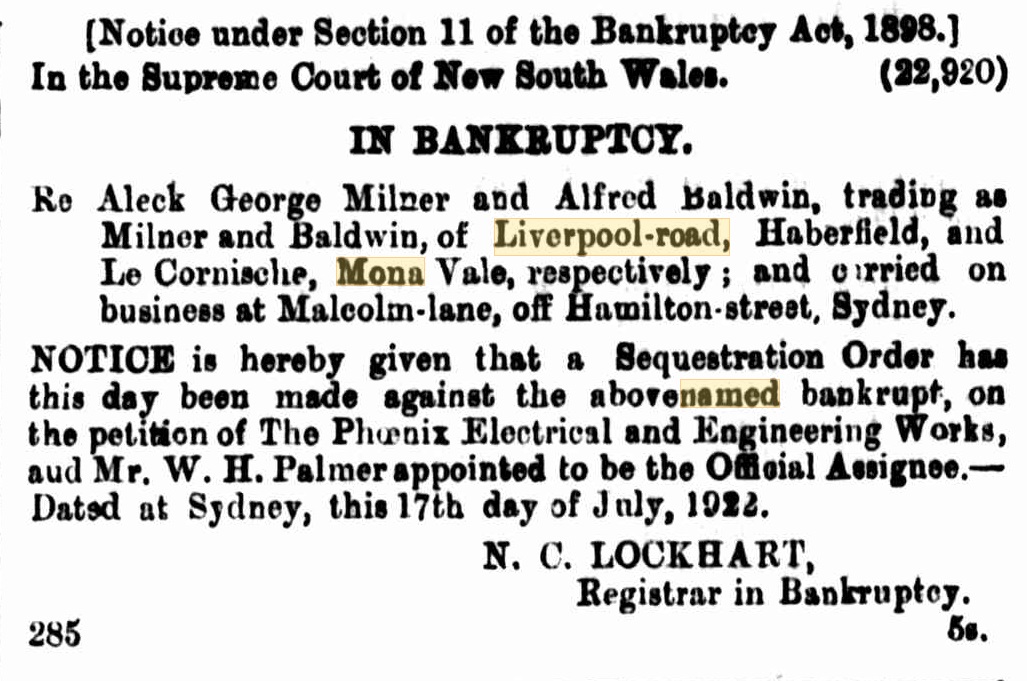
In the Supreme Court of New South Wales.
PROBATE JURISDICTION.
In the will of Alexander Kinghorne, late of Mona Vale, near Manly, in the State of New South Wales, grazier, deceased.
PURSUANT to the "Wills, Probate and Administration Act, 1898," and to the "Testator's Family Maintenance and Guardianship of Infants Act, 1916": Notice is hereby given that all creditors and other persons having any debt or claim upon or affecting the estate of the abovenamed deceased, who died on or about the 29th day of October, 1917, and probate of whose will was granted by the Supreme Court of New South Wales, in its Probate Jurisdiction, on the 8th day of May, 1918, to Helen Loudon Kinghorne, of Mona Vale, the sole executrix named in the said will, are hereby required to send in particulars of their claim to the said Helen Loudon Kinghorne, or to the undersigned Pile and Westgarth, the proctors for the said executrix, on or before the 7th day of September next, at the expiration of which time the said executrix will proceed to distribute the assets of the said deceased among the .persons entitled thereto, having regard to the debts and claims only of which they shall then have had notice; and the said executrix will not be liable, for the assets so distributed, to any person of whose debt or claim she shall not have had notice at the time of such distribution.—Dated this 26th day of July, 1920.
PILE AND WESTGARTH,
Proctors for the said Executrix,
Adelaide-street, Sydney.
419 7s. 6d. PROBATE JURISDICTION. (1920, July 30). Government Gazette of the State of New South Wales (Sydney, NSW : 1901 - 2001), p. 4582. Retrieved from http://nla.gov.au/nla.news-article224609273
In the Supreme Court of New South Wales
PROBATE JURISDICTION.
In the will of Agnes Bowen, late of Mona Vale, near Sydney, in the State of New South Wales, widow, deceased.
PURSUANT to the provisions of the Wills, Probate and Administration Act, 1898, of* the Testator's Family Maintenance and Guardianship of Infants Act, 1916, and of the Trustee Act, 1925: Notice is hereby given that all creditors and other persons having any debt, claim, or demand upon or affecting the estate or otherwise interested in the property and assets of the abovenamed deceased, who died at Manly, near Sydney, on the, 4th day of September, 1925, and probate of whose will was granted- by the Supreme Court of New South Wales, in its Probate Jurisdiction, on the 15th July, 1926, to Elizabeth Macdonald Jenkins and Maria Ellen Forbes Smithin the said will (called Elizabeth Jenkins and Maria Smith), the executrices in the said will named, are hereby required to forward particulars in writing of their debts, claims and demands upon the said "estate or in respect of the said property and assets or any part thereof to the said executrices or to the undersigned, on or before the 6th November, 1926, at the expiration of which time the said executrices intend to administer the estate of the said deceased, and to convey and distribute the property and assets of the said deceased to and among the parties entitled thereto, having regard to the debts, claims and demands only of wlrcli they shall then have had notice; and-the said executrices will not, in respect of the property and assets or any part thereof so conveyed or distributed, be liable to any person of whose debt, claim or demand they shall not have had notice at the time of such conveyance or distribution.—Dated this 2nd day of September, 1926.
J. STUART THOM & CO.,
Proctors, 57-59 York-street, Sydney. 885 £1 12s. PROBATE JURISDICTION. (1926, September 3). Government Gazette of the State of New South Wales (Sydney, NSW : 1901 - 2001), p. 3781. Retrieved from http://nla.gov.au/nla.news-article222992322
MONA VALE-PITTWATER Old established General Store and Freehold, JUNCTION STORE, Pittwater and Newport roads Modern brick building, large shop, 5 rooms, stabling, etc TORRENS. Raine and Horne auctioneers. Advertising (1919, March 6). The Sydney Morning Herald (NSW : 1842 - 1954), p. 10. Retrieved from http://nla.gov.au/nla.news-article15828225
FROM MONA VALE
Imagine the delight of the members of the Alumni Club of ex-G.P.S. athletic stars when they found their little "mother," Mrs. E. C. Bill, at the Club's annual ball last night at Farmer's Blaxland Galleries.
MRS. BILL has the store at Mona Vale, and looks after the district life-savers, all of whom are Alumni boys, as if they belonged to her. The ball committee extended to Mr. and Mrs. Bill a cordial Invitation to be present, and the pair travelled all the way from Mona Vale to share in the gaiety. Among the 600 dancers it was easy to detect the committee responsible for this outstandingly successful dance, for the girls wore sprigs of white hyacinths, and the men white camellias.
OFFICIAL GUESTS At the official table, which was decked with green and white balloons — the club colors — and green and white flowers, Mrs. Eric Moore (president), who wore black lace, entertained Mrs. F. Cooper (vice-president), who wore brown lace and chiffon; Mr. Geoff. Moore (treasurer). Mr. W. L. Stevenson (representing Life Saving Association), Mrs. Stevenson, who was gowned in blush pink satin; Mr. M. J. Bourke (Life Saving Association); Miss E. McNamee, in black velvet made with a smart cape; Mrs. M. Taylor, and Mr. Bookallil, Miss Betty Bankcn (honorary secretary) was in simple black chiffon on which her committee badge looked most effective; Miss Peggy Finch wore one of the most striking frocks. It was of cherry red satin, made with puffed sleeves and a little tucked bustle, a perfect finish being the rather large corsage posy of white hyacinths; Miss Molhe Bell's frock, of black chiffon, had a wide scalloped cape. One of the prettiest frocks was worn by Miss Doreen Moore, which was of petal-pink chiffon tucked from waist to knee, from which it fell In fine pleats. Miss Joan Davis was In a long-sleeved frock o( black velvet banded In cerise around the waist; Miss Yvonne Wright's frock, of palest pink taffeta, had a skirt of floral taffeta formed of frills, and the flame red silk was also Introduced Into the yoke. A well-cut frock of syrup brown velvet was the choice of Miss Violet Mercer. With her frock of emerald green angel skin. Miss Marjorie Barton wore a cape of silver tissue; Miss Shirley Smith was in a cape frock of leaf-green velvet, the cape of which was bordered with rich skunk fur. Miss Sheila Christmas wore plain black velvet, made with long, tight-fitting sleeves. Also at the dance were Misses Ruth Moore, n lovebird green chiffon frilled from the knees: Dorothy Finch, in pink satin, with epaulettes of sliver sequins; Sheila Curtis, who chose black marlette with a little coat of white velvet trimmed with silver buttons; Sybil Burncastle, who wore honey-colored satin, which suited her fairness; Mlml Leverrler (assistant secretary), who chose lipstick red chiffon made long and tight-fitting; Norma Lieblnger, who chose ciel blue organdi, the coat being edged with finely pleated organdi; Denise Humphreys, Betty Poate, Jean Lillyman, Olive Simpson, Gladys Griffen, Biddy Tait. Phyl Reynolds, Bonnie Horley and Pat Slatter. FROM MONA VALE (1932, August 30). The Daily Telegraph (Sydney, NSW : 1931 - 1954), p. 10. Retrieved from http://nla.gov.au/nla.news-article246303131
CALDER, Marion.—July 23, 1949, at her daughter's residence, 4 Beaumaris Street, Enfield, relict of the late William Calder, and dear mother of Jane (deceased), Marion, Janet (deceased), Annie (deceased), George (deceased), and Mary, aged 93 years.
CALDER, Marion.—July 23, 1949, at her daughter's residence, 4 Beaumaris Street, Enfield, dearly loved grandmother of William, Doris, Maisie, and Joan Burgess, and great-grandmother of Annette and John, aged 93 years.
CALDER, Marion.—July 23, 1949, at her daughter's residence, 4 Beaumaris Street, Enfield, dearly loved grandmother of James, Elsie, Marjorie, and Harry Wood, and great-grandmother of Robert, aged 93 years.
CALDER, Marion.—July 23, 1949, at her daughter's residence, 4 Beaumaris Street, Enfield, dearly loved aunt of George, Margaret, Andrew, John, and Robert Calder, aged 93 years. Family Notices (1949, July 25). The Sydney Morning Herald (NSW : 1842 - 1954), p. 10. Retrieved from http://nla.gov.au/nla.news-article18123357
